
Key Substance Use and
Mental Health Indicators
in the United States:
Results from the 2020 National
Survey on Drug Use and Health

Key Substance Use and Mental Health Indicators in the United States:
Results from the 2020 National Survey on Drug Use and Health
Acknowledgments
is report was prepared for the Substance Abuse and Mental Health Services Administration (SAMHSA),
U.S. Department of Health and Human Services (HHS), under Contract No. HHSS283201700002C with
RTI
International. Douglas Richesson and Jennifer M. Hoenig were the SAMHSA authors. Rong Cai served as the
government project officer and as the contracting officer representative.
Public Domain Notice
All material appearing in this report is in the public domain and may be reproduced or copied without permission
from SAMHSA. Citation of the source is appreciated. However, this publication may not be reproduced or
distributed for a fee without the specific, written authorization of the Office of Communications, SAMHSA, HHS.
Electronic Access and Printed Copies
is publication may be downloaded or ordered at https://store.samhsa.gov/. Or call SAMHSA at
1-877-SAMHSA-7 (1-877-726-4727) (English and Español).
Recommended Citation
Substance Abuse and Mental Health Services Administration. (2021). Key substance use and mental health indicators
in the United States: Results from the 2020 National Survey on Drug Use and Health (HHS Publication No.
PEP21-07-01-003, NSDUH Series H-56). Rockville, MD: Center for Behavioral Health Statistics and Quality,
Substance Abuse and Mental Health Services Administration. Retrieved from https://www.samhsa.gov/data/
Originating Office
Center for Behavioral Health Statistics and Quality, Substance Abuse and Mental Health Services Administration,
5600 Fishers Lane, Room 15-E09D, Rockville, MD 20857. For questions about this report, please e-mail
Nondiscrimination Notice/Aviso de no discriminación
SAMHSA complies with applicable federal civil rights laws and does not discriminate on the basis of race, color,
national origin, age, disability, or sex. SAMHSA cumple con las leyes federales de derechos civiles aplicables y no
discrimina por motivos de raza, color, nacionalidad, edad, discapacidad o sexo.
U.S. Department of Health and Human Services
Substance Abuse and Mental Health Services Administration
Center for Behavioral Health Statistics and Quality
Populations Survey Branch
Publication Number PEP21-07-01-003
October 2021
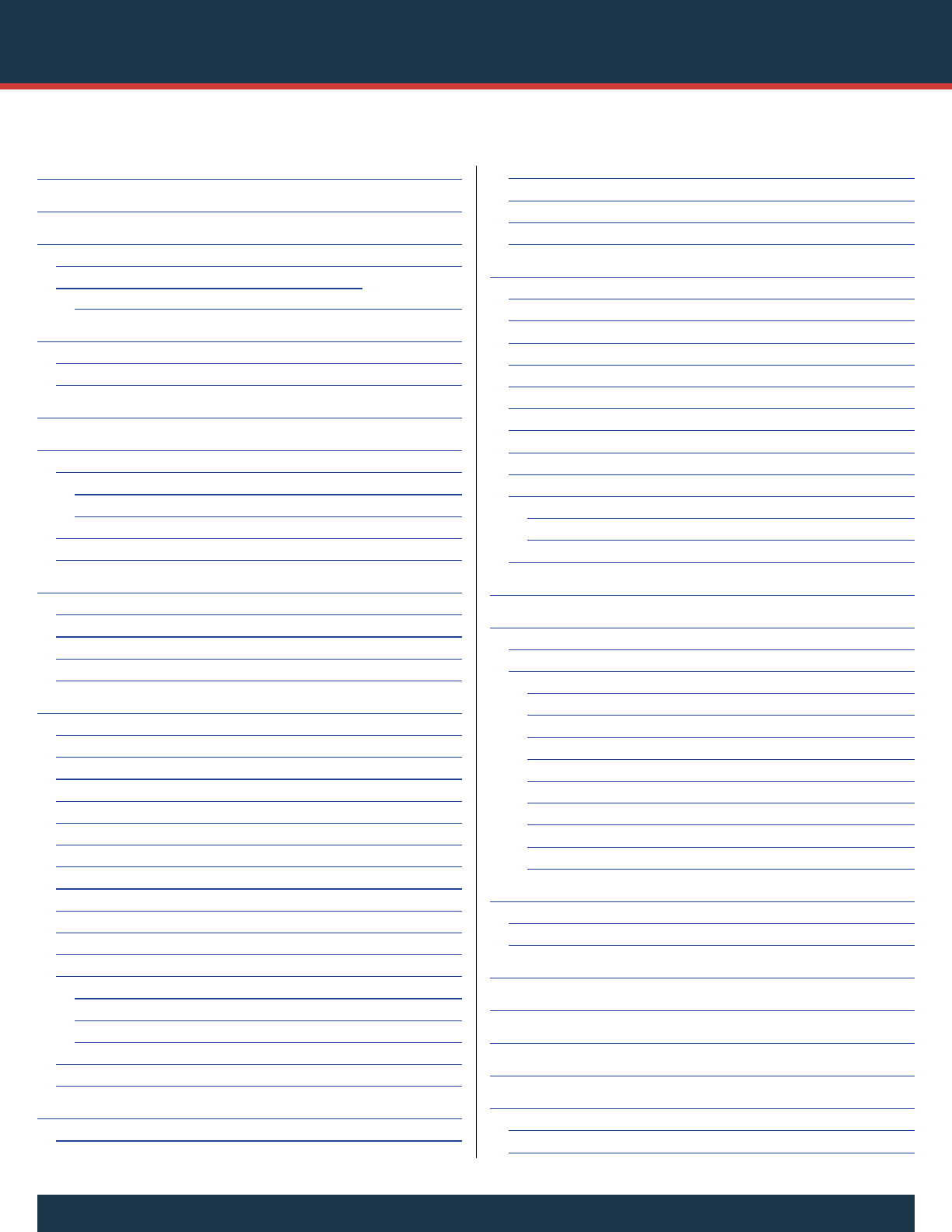
Key Substance Use and Mental Health Indicators in the United States:
Results from the 2020 National Survey on Drug Use and Health October 2021 | iii
Summary ������������������������������������������������������������������������������������1
Introduction ��������������������������������������������������������������������������������7
Survey Background ��������������������������������������������������������������������7
Data Collection in the First Quarter of 2020 �������������������������������������7
Changes to Data Collection Methods Because of the
COVID-19 Pandemic
�����������������������������������������������������������������7
Data Presentation and Interpretation ������������������������������������������8
Presentation of National Estimates for 2020 ������������������������������������8
Interpretation of Estimates for 2020������������������������������������������������8
General Substance Use in the Past Month ����������������������������������9
Tobacco Use or Nicotine Vaping in the Past Month �������������������10
Tobacco Product Use �������������������������������������������������������������������11
Cigarette Use �������������������������������������������������������������������������11
Daily Cigarette Use �����������������������������������������������������������������11
Nicotine Vaping ���������������������������������������������������������������������������11
Underage Tobacco Use or Nicotine Vaping �������������������������������������11
Alcohol Use in the Past Month ��������������������������������������������������12
Any Alcohol Use ��������������������������������������������������������������������������13
Binge Alcohol Use ������������������������������������������������������������������������13
Heavy Alcohol Use �����������������������������������������������������������������������13
Underage Alcohol Use ������������������������������������������������������������������13
Illicit Drug Use in the Past Year �������������������������������������������������14
Any Illicit Drug Use ����������������������������������������������������������������������14
Marijuana Use �����������������������������������������������������������������������������14
Cocaine Use ��������������������������������������������������������������������������������15
Heroin Use ����������������������������������������������������������������������������������15
Methamphetamine Use ����������������������������������������������������������������15
Hallucinogen Use �������������������������������������������������������������������������16
Inhalant Use ��������������������������������������������������������������������������������16
Misuse of Psychotherapeutic Drugs ����������������������������������������������16
Stimulant Misuse �������������������������������������������������������������������������17
Tranquilizer or Sedative Misuse ����������������������������������������������������17
Benzodiazepine Misuse ����������������������������������������������������������������18
Pain Reliever Misuse �������������������������������������������������������������������18
Misuse of Subtypes of Pain Relievers ���������������������������������������18
Main Reasons for the Last Misuse of Pain Relievers ������������������19
Source of the Last Pain Reliever That Was Misused �������������������19
Opioid Misuse �����������������������������������������������������������������������������20
Central Nervous System Stimulant Misuse ������������������������������������20
Other Substance Use in the Past Year ��������������������������������������� 21
GHB Use �������������������������������������������������������������������������������������21
Nonprescription Cough and Cold Medicine Misuse �������������������������21
Kratom Use ���������������������������������������������������������������������������������22
Synthetic Marijuana Use ��������������������������������������������������������������22
Synthetic Stimulant Use ���������������������������������������������������������������22
Initiation of Substance Use �������������������������������������������������������23
Initiation of Cigarette Use �������������������������������������������������������������23
Initiation of Alcohol Use ����������������������������������������������������������������23
Initiation of Marijuana Use ������������������������������������������������������������23
Initiation of Cocaine Use ���������������������������������������������������������������24
Initiation of Heroin Use �����������������������������������������������������������������24
Initiation of Methamphetamine Use �����������������������������������������������24
Initiation of Hallucinogen Use��������������������������������������������������������24
Initiation of Inhalant Use ���������������������������������������������������������������25
Initiation of Prescription Stimulant Misuse �������������������������������������25
Initiation of Prescription Tranquilizer or Sedative Misuse �����������������25
Initiation of Prescription Tranquilizer Misuse ������������������������������25
Initiation of Prescription Sedative Misuse ����������������������������������25
Initiation of Prescription Pain Reliever Misuse ��������������������������������25
Perceived Risk from Substance Use �����������������������������������������26
Substance Use Disorders in the Past Year ��������������������������������27
Alcohol Use Disorder �������������������������������������������������������������������28
Illicit Drug Use Disorder����������������������������������������������������������������28
Marijuana Use Disorder �����������������������������������������������������������29
Cocaine Use Disorder ��������������������������������������������������������������29
Heroin Use Disorder ����������������������������������������������������������������29
Methamphetamine Use Disorder ����������������������������������������������30
Prescription Stimulant Use Disorder �����������������������������������������30
Prescription Tranquilizer Use Disorder or Sedative Use Disorder ���30
Prescription Pain Reliever Use Disorder ������������������������������������30
Opioid Use Disorder ����������������������������������������������������������������30
Central Nervous System Stimulant Use Disorder �����������������������30
Major Depressive Episode in the Past Year ������������������������������� 31
MDE and MDE with Severe Impairment among Adolescents �����������31
MDE and MDE with Severe Impairment among Adults ��������������������31
Any Mental Illness among Adults in the Past Year ��������������������32
Serious Mental Illness among Adults in the Past Year ��������������32
Co‑Occurring MDE and SUD among Adolescents ����������������������33
Substance Use among Adolescents with MDE �������������������������� 33
Co‑Occurring Mental Health Issues and SUD among Adults �����34
Co-Occurring AMI and SUD ����������������������������������������������������������34
Co-Occurring SMI and SUD ����������������������������������������������������������34
Table of Contents
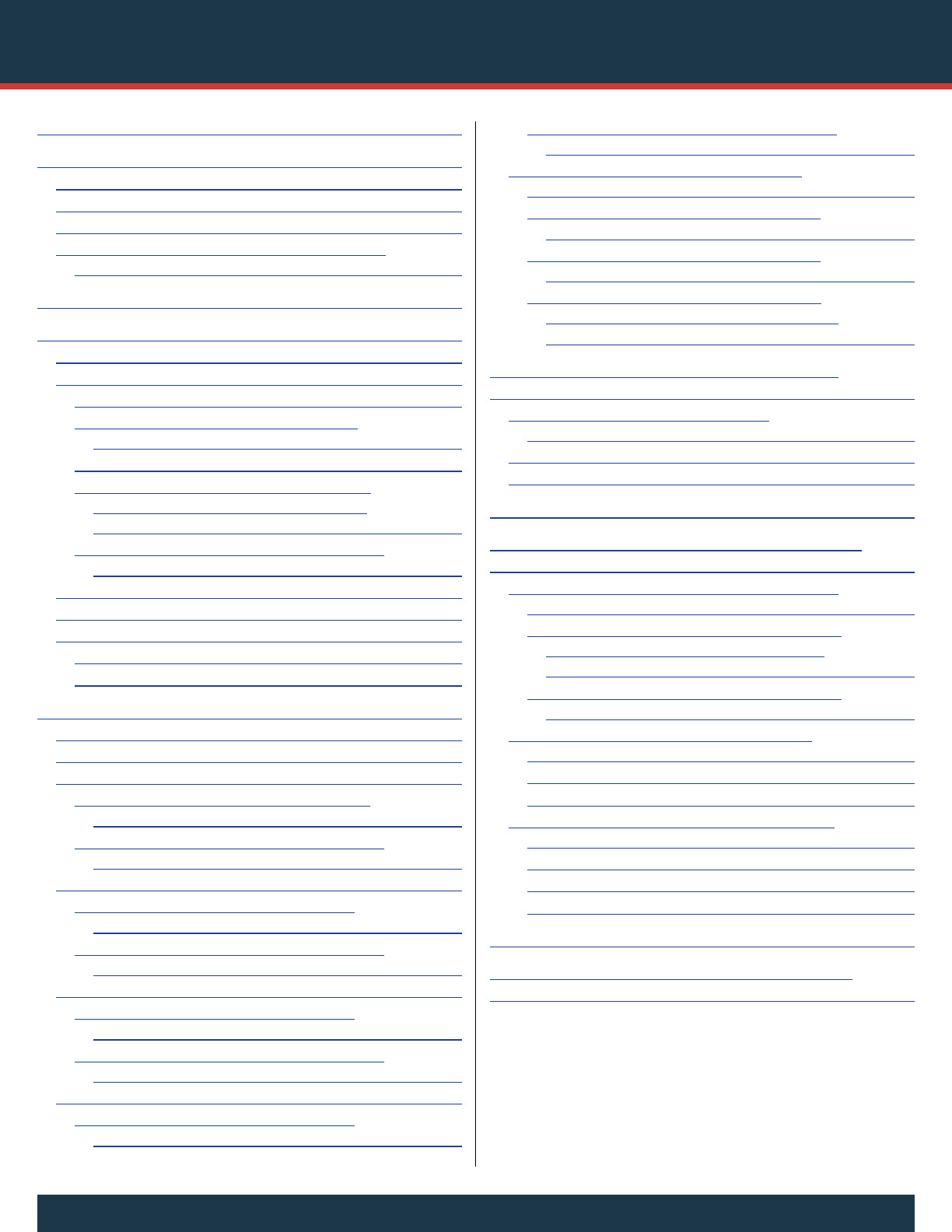
Key Substance Use and Mental Health Indicators in the United States:
Results from the 2020 National Survey on Drug Use and Healthiv | October 2021
Substance Use among Adults, byMental Illness Status �����������34
Suicidal Thoughts and Behaviors among Adults �����������������������35
Serious Thoughts of Suicide among Adults ������������������������������������35
Suicide Plans among Adults ���������������������������������������������������������35
Suicide Attempts among Adults ����������������������������������������������������35
Suicidal Thoughts and Behaviors among Adults Because
of COVID-19
���������������������������������������������������������������������������35
Suicidal Thoughts and Behaviors among Adolescents �������������� 36
Substance Use Treatment in the Past Year �������������������������������37
Need for Substance Use Treatment �����������������������������������������������37
Receipt of Substance Use Treatment ���������������������������������������������38
Receipt of Any Substance Use Treatment ����������������������������������38
Receipt of Any Substance Use Treatment among
People with a Past Year SUD
�����������������������������������������������38
Receipt of Substance Use Treatment at a Specialty Facility ��������39
Receipt of Substance Use Treatment at a Specialty
Facility among People Who Needed Substance
Use Treatment
�������������������������������������������������������������������39
Receipt of Virtual (Telehealth) Services for Substance
Use Treatment
�������������������������������������������������������������������39
Perceived Need for Substance Use Treatment ��������������������������������39
Reasons for Not Receiving Substance Use Treatment ���������������������40
Medication-Assisted Treatment for Alcohol Use or Opioid Misuse ����40
Medication-Assisted Treatment for Alcohol Use �������������������������40
Medication-Assisted Treatment for Opioid Misuse ���������������������41
Mental Health Service Use in the Past Year ������������������������������41
Treatment for Depression among Adolescents �������������������������������41
Treatment for Depression among Adults ����������������������������������������42
Mental Health Service Use among Adolescents ������������������������������42
Receipt of Mental Health Services in Specialty and
Nonspecialty Settings among Adolescents
���������������������������43
Receipt of Virtual (Telehealth) Mental Health Services
among Adolescents
������������������������������������������������������������43
Mental Health Service Use among Adults ��������������������������������������43
Receipt of Inpatient or Outpatient Mental Health
Services or Prescription Medication among Adults
����������������43
Receipt of Virtual (Telehealth) Mental Health Services
among Adults
��������������������������������������������������������������������44
Mental Health Service Use among Adults with AMI �������������������������44
Receipt of Inpatient or Outpatient Mental Health
Services or Prescription Medication among Adults with AMI
��44
Receipt of Virtual (Telehealth) Mental Health Services
among Adults with AMI
�������������������������������������������������������44
Mental Health Service Use among Adults with SMI �������������������������45
Receipt of Inpatient or Outpatient Mental Health
Services or Prescription Medication among Adults with SMI
���45
Receipt of Virtual (Telehealth) Mental Health Services
among Adults with SMI �������������������������������������������������������45
Perceived Unmet Need for Mental Health Services
among Adults with Mental Illness
���������������������������������������������46
Perceived Unmet Need for Mental Health Services
among Adults with AMI
�������������������������������������������������������46
Perceived Unmet Need for Mental Health Services
among Adults with SMI
�������������������������������������������������������46
Reasons for Not Receiving Mental Health Services
among Adults with Mental Illness and a Perceived
Unmet Need
����������������������������������������������������������������������47
Receipt of Services for Co‑Occurring Substance Use
Disorder and Mental Health Issues �������������������������������������������47
Receipt of Services among Adolescents with
Co-Occurring SUD and an MDE �����������������������������������������������47
Receipt of Services among Adults with Co-Occurring SUD and AMI ���47
Receipt of Services among Adults with Co-Occurring SUD and SMI ���48
Perceived Recovery ������������������������������������������������������������������49
Substance Use, Mental Health Issues, and the COVID‑19
Pandemic ����������������������������������������������������������������������������������49
Perceived Negative Effects on Mental Health Because of
the COVID-19 Pandemic ���������������������������������������������������������50
Perceived Negative Effects on Mental Health Because
of the COVID-19 Pandemic among Adolescents
Aged 12 to 17
�������������������������������������������������������������������50
Perceived Negative Effects on Mental Health Because
of the COVID-19 Pandemic among Adults Aged 18 or Older
��51
Perceived Effects on Substance Use Because of the
COVID-19 Pandemic
���������������������������������������������������������������51
Perceived Effects on Alcohol Use ���������������������������������������������52
Perceived Effects on the Use of Drugs Other than Alcohol ����������52
Perceived Effects on Access to Services Because of the
COVID-19 Pandemic
���������������������������������������������������������������53
Access to Substance Use Treatment �����������������������������������������53
Access to Mental Health Services ��������������������������������������������54
Access to Medical Services �����������������������������������������������������54
Endnotes ����������������������������������������������������������������������������������56
AppendixA: Special Tables of Estimates for Substance
Use and Mental Health Indicators in the United States ����������� A‑1

Key Substance Use and Mental Health Indicators in the United States:
Results from the 2020 National Survey on Drug Use and Health October 2021 | 1
Summary
e National Survey on Drug Use and Health (NSDUH)
underwent some major methodological changes for 2020,
including a shift to web-based interviewing in Quarter 4 (i.e.,
October to December). In addition, 2020 marked the first
year in which substance use disorders (SUDs) were evaluated
using criteria defined in the Diagnostic and Statistical Manual
of Mental Disorders, 5th edition (DSM-5), as opposed to
criteria specified in the Diagnostic and Statistical Manual of
Mental Disorders, 4th edition (DSM-IV). Additional changes
were made to the questionnaire itself. erefore, care must be
taken when attempting to disentangle the effects on estimates
due to real changes in the population (e.g., the coronavirus
disease 2019 [COVID-19] pandemic and other events) from
the effects of these methodological changes.
Substance Use
• Among people aged 12 or older in 2020, 58.7 percent (or
162.5 million people) used tobacco, alcohol, or an illicit
drug in the past month (also defined as “current use”),
including 50.0 percent (or 138.5 million people) who
drank alcohol, 18.7 percent (or 51.7 million people) who
used a tobacco product, and 13.5 percent (or 37.3 million
people) who used an illicit drug.
Tobacco Product Use or Nicotine Vaping
• Among people aged 12 or older in 2020, 20.7 percent (or
57.3 million people) used tobacco products or used an
e-cigarette or other vaping device to vape nicotine in the
past month.
• Among people in 2020 who used tobacco products or
vaped nicotine in the past month (i.e., nicotine product
users), the use of specific nicotine products varied by age
group. Nearly two thirds of adolescents aged 12 to 17 who
used nicotine products in the past month (63.1 percent)
vaped nicotine but did not use tobacco products. Among
adults aged 26 or older who used nicotine products in
the past month, however, 88.9 percent used only tobacco
products.
• Among people aged 12 or older in 2020 who used any
tobacco product in the past month (regardless of whether
they vaped nicotine), 65.3 percent smoked cigarettes but
did not use other tobacco products, 14.8 percent smoked
cigarettes and used some other type of tobacco product,
and 19.9 percent used only noncigarette tobacco products
(i.e., other tobacco products but not cigarettes).
• In 2020, 10.4 million people aged 12 or older (or
3.8 percent) used an e-cigarette or other vaping device to
vape nicotine in the past month. e percentage of people
who vaped nicotine was highest among young adults aged
18 to 25 (11.7 percent or 3.9 million people), followed
by adolescents aged 12 to 17 (5.1 percent or 1.3 million
people), then by adults aged 26 or older (2.4 percent or
5.2 million people).
• Among people aged 12 to 20 in 2020, 11.8 percent (or
4.4 million people) used tobacco products or used an
e-cigarette or other vaping device to vape nicotine in the
past month. Among people in this age group, 7.7 percent
(or 2.9 million people) vaped nicotine, 6.7 percent
(or 2.5 million people) used tobacco products, and
4.1 percent (or 1.5 million people) smoked cigarettes in
the past month.
Alcohol Use
• Among people aged 12 or older in 2020, 22.2 percent
(or 61.6 million people) were binge alcohol users in the
past month. e percentage was highest among young
adults aged 18 to 25 (31.4 percent or 10.5 million
people), followed by adults aged 26 or older (22.9 percent
or 50.0 million people), then by adolescents aged 12 to 17
(4.1 percent or 1.0 million people).
• Among the 138.5 million current alcohol users aged 12 or
older in 2020, 61.6 million people (or 44.4 percent) were
past month binge drinkers. Among past month binge
drinkers, 17.7 million people (28.8 percent of current
binge drinkers and 12.8 percent of current alcohol users)
were past month heavy drinkers.
• Among people aged 12 to 20 in 2020, 16.1 percent
(or 6.0 million people) were past month alcohol users.
Estimates of binge alcohol use and heavy alcohol
use in the past month among underage people were
9.2 percent (or 3.4 million people) and 1.8 percent (or
669,000 people), respectively.

Key Substance Use and Mental Health Indicators in the United States:
Results from the 2020 National Survey on Drug Use and Health2 | October 2021
Illicit Drug Use
• Among people aged 12 or older in 2020, 21.4 percent (or
59.3 million people) used illicit drugs in the past year.
• In 2020, marijuana was the most commonly used illicit
drug, with 17.9 percent of people aged 12 or older
(or 49.6 million people) using it in the past year. e
percentage was highest among young adults aged 18 to
25 (34.5 percent or 11.6 million people), followed by
adults aged 26 or older (16.3 percent or 35.5 million
people), then by adolescents aged 12 to 17 (10.1 percent
or 2.5 million people).
• Among people aged 12 or older in 2020, 3.7 percent
(or 10.3 million people) misused central nervous
system (CNS) stimulants in the past year. Among the
10.3 million people who misused CNS stimulants in the
past year, about one third used only cocaine (32.4 percent
of CNS stimulant misusers or 3.3 million people),
about one third misused only prescription stimulants
(32.3 percent of CNS stimulant misusers or 3.3 million
people), and about 1 in 7 used only methamphetamine
(14.4 percent of CNS stimulant misusers or 1.5 million
people). An estimated 353,000 people used or misused
all three CNS stimulants in the past year (3.4 percent of
CNS stimulant misusers).
• Among people aged 12 or older in 2020, 3.4 percent
(or 9.5 million people) misused opioids (heroin or
prescription pain relievers) in the past year. Among the
9.5 million people who misused opioids in the past year,
9.3 million people misused prescription pain relievers
compared with 902,000 people who used heroin.
• Among people aged 12 or older in 2020, 3.3 percent (or
9.3 million people) misused prescription pain relievers in
the past year. e percentage was highest among young
adults aged 18 to 25 (4.1 percent or 1.4 million people),
followed by adults aged 26 or older (3.4 percent or
7.5 million people), then by adolescents aged 12 to 17
(1.6 percent or 396,000 people).
• In 2020, 2.6 percent of people aged 12 or older (or
7.1 million people) used hallucinogens in the past year.
e percentage among young adults aged 18 to 25
(7.3 percent or 2.4 million people) was higher than the
percentages among adolescents aged 12 to 17 (1.5 percent
or 370,000 people) or adults aged 26 or older (2.0 percent
or 4.3 million people).
Initiation of Substance Use
• Among people aged 12 or older in 2020, 1.3 million
people initiated cigarette smoking in the past year (i.e.,
never smoked cigarettes before the past 12 months). e
vast majority of people (approximately 90 percent of past
year initiates) tried cigarettes for the first time by age 25.
Corresponding numbers of initiates of cigarette smoking
by age group were 385,000 adolescents aged 12 to 17,
752,000 young adults aged 18 to 25, and 127,000 adults
aged 26 or older.
• Among people aged 12 or older in 2020, 4.1 million
people initiated alcohol use in the past year, not counting
sips from another person’s drink. Consistent with the
pattern for initiation of cigarette smoking, relatively few
people started to use alcohol after age 25. Corresponding
numbers for initiation of alcohol use by age group were
1.8 million adolescents aged 12 to 17, 2.1 million young
adults aged 18 to 25, and 176,000 adults aged 26 or
older.
• Among people aged 12 or older in 2020, 2.8 million
people initiated marijuana use in the past year, including
1.0 million adolescents aged 12 to 17, 1.1 million young
adults aged 18 to 25, and 664,000 adults aged 26 or
older. Consistent with the pattern for cigarette smoking
and alcohol use, most people started using marijuana
before age 26.
• Among people aged 12 or older in 2020, 1.2 million
people initiated prescription pain reliever misuse in
the past year. Unlike initiates of cigarette, alcohol, and
marijuana use, nearly two thirds of past year initiates
tried prescription pain relievers for the first time after age
25 (i.e., 774,000 adults aged 26 or older who initiated
prescription pain reliever misuse).
Perceived Risk from Substance Use
• Among people aged 12 or older in 2020, 70.7 percent of
people perceived great risk of harm from smoking one or
more packs of cigarettes a day, and 68.7 percent perceived
great risk from having four or five alcoholic drinks nearly
every day. Percentages of people who perceived great risk
from cocaine or heroin use once or twice a week were
84.7 and 93.2 percent, respectively. In contrast, about one
fourth of people (27.4 percent) perceived great risk from
smoking marijuana once or twice a week.

Key Substance Use and Mental Health Indicators in the United States:
Results from the 2020 National Survey on Drug Use and Health October 2021 | 3
• Adults aged 26 or older were more likely than adolescents
aged 12 to 17 or young adults aged 18 to 25 to perceive
great risk of harm from smoking one or more packs of
cigarettes per day or to perceive great risk of harm from
daily binge drinking.
• Young adults aged 18 to 25 in 2020 were less likely than
adolescents aged 12 to 17 or adults aged 26 or older
to perceive great risk of harm from smoking marijuana
weekly.
Substance Use Disorders in the Past Year
• As stated previously, the 2020 survey marked the first year
in which SUDs were assessed using the criteria defined
in DSM-5 instead of criteria specified in DSM-IV. is
change from DSM-IV to DSM-5 criteria for assessing
SUDs led to breaks in the comparability of 2020 SUD
estimates with estimates from prior years.
• In 2020, 40.3 million people aged 12 or older (or
14.5 percent) had an SUD in the past year, including
28.3 million who had alcohol use disorder, 18.4 million
who had an illicit drug use disorder, and 6.5 million
people who had both alcohol use disorder and an illicit
drug use disorder.
• In 2020, the percentage of people aged 12 or older with
an alcohol use disorder was highest among young adults
aged 18 to 25 (15.6 percent or 5.2 million people),
followed by adults aged 26 or older (10.3 percent or
22.4 million people), then by adolescents aged 12 to 17
(2.8 percent or 712,000 people). Young adults also were
more likely than adolescents or adults aged 26 or older to
have had at least one illicit drug use disorder in the past
year.
Major Depressive Episode
• Among adolescents aged 12 to 17 in 2020, 17.0 percent
(or 4.1 million people) had a past year major depressive
episode (MDE), and 12.0 percent (or 2.9 million people)
had a past year MDE with severe impairment.
• Among adults aged 18 or older in 2020, 8.4 percent
(or 21.0 million people) had a past year MDE, and
6.0 percent (or 14.8 million people) had a past year MDE
with severe impairment. Percentages for past year MDE
and MDE with severe impairment were highest among
young adults aged 18 to 25, followed by adults aged 26 to
49, then by adults aged 50 or older. Among young adults,
17.0 percent (or 5.6 million people) had a past year
MDE, and 12.1 percent (or 4.0 million people) had a
past year MDE with severe impairment.
Mental Illness among Adults
• Among adults aged 18 or older in 2020, 21.0 percent (or
52.9 million people) had any mental illness (AMI) and
5.6 percent (or 14.2 million people) had serious mental
illness (SMI) in the past year.
• Percentages of adults in 2020 with AMI or SMI in the
past year were highest among young adults aged 18 to
25, followed by adults aged 26 to 49, then by adults
aged 50 or older. Among young adults, 30.6 percent
(or 10.2 million people) had AMI, and 9.7 percent (or
3.3 million people) had SMI in the past year.
Co‑Occurring Mental Health Issues and Substance Use
Disorder
• Among adolescents aged 12 to 17 in 2020, 20.9 percent
(or 5.1 million people) had either an SUD or an MDE in
the past year, 14.4 percent (or 3.5 million people) had an
MDE but not an SUD, 3.7 percent (or 900,000 people)
had an SUD but not an MDE, and 2.7 percent (or
644,000 people) had both an MDE and an SUD in the
past year.
• Among adults aged 18 or older in 2020, 29.3 percent (or
73.8 million people) had either AMI or an SUD in the
past year, 14.2 percent (or 35.9 million people) had AMI
but not an SUD, 8.3 percent (or 20.9 million people) had
an SUD but not AMI, and 6.7 percent (or 17.0 million
people) had both AMI and an SUD.
• Among adults aged 18 or older in 2020, 18.4 percent (or
46.5 million people) had either SMI or an SUD in the
past year, 3.4 percent (or 8.5 million people) had SMI but
not an SUD, 12.8 percent (or 32.3 million people) had
an SUD but not SMI, and 2.2 percent (or 5.7 million
people) had both SMI and an SUD.

Key Substance Use and Mental Health Indicators in the United States:
Results from the 2020 National Survey on Drug Use and Health4 | October 2021
Substance Use among People with Mental Health
Issues
• Among adolescents aged 12 to 17 in 2020, those with a
past year MDE were more likely than adolescents without
a past year MDE to be past year illicit drug users (28.6 vs.
10.7 percent) or past year marijuana users (22.0 vs.
7.9 percent). Adolescents with a past year MDE also were
more likely than those without a past year MDE to be
past month binge alcohol users (6.2 vs. 3.8 percent). In
addition, adolescents with a past year MDE were more
likely than those without a past year MDE to use tobacco
products or vape nicotine in the past month (12.9 vs.
5.1 percent).
• Among adults aged 18 or older in 2020, those with SMI
or AMI in the past year were more likely than those
with no mental illness in the past year to be past year
users of illicit drugs (47.8 percent for adults with SMI
and 39.8 percent for adults with AMI vs. 17.0 percent
for adults with no mental illness), past year users of
marijuana (39.2 and 32.8 percent vs. 14.6 percent), or
past year misusers of opioids (i.e., heroin users or misusers
of prescription pain relievers) (11.6 and 8.1 percent vs.
2.3 percent).
• Adults aged 18 or older in 2020 with SMI or AMI in the
past year were more likely than adults with no mental
illness in the past year to be past month binge alcohol
users (30.9 and 28.5 percent vs. 22.8 percent) and to
use tobacco products or vape nicotine in the past month
(37.4 and 30.9 percent vs. 19.6 percent).
Suicidal Thoughts and Behavior
• Among adults aged 18 or older in 2020, 4.9 percent (or
12.2 million people) had serious thoughts of suicide,
1.3 percent (or 3.2 million people) made a suicide plan,
and 0.5 percent (or 1.2 million people) attempted suicide
in the past year.
• Among young adults aged 18 to 25 in 2020, 11.3 percent
(or 3.8 million people) had serious thoughts of suicide,
4.0 percent (or 1.3 million people) made a suicide plan,
and 1.9 percent (or 627,000 people) attempted suicide in
the past year.
• Among adolescents aged 12 to 17 in 2020, 12.0 percent
(or 3.0 million people) had serious thoughts of suicide,
5.3 percent (or 1.3 million people) made a suicide plan,
and 2.5 percent (or 629,000 people) attempted suicide in
the past year.
Substance Use Treatment
• People were classified as needing substance use treatment
if they had an SUD in the past year or if they received
substance use treatment at a specialty facility in the
past year. Among people aged 12 or older in 2020,
14.9 percent (or 41.1 million people) needed substance
use treatment in the past year.
• Among people aged 12 or older in 2020, 1.4 percent (or
4.0 million people) received any substance use treatment
in the past year, and 1.0 percent (or 2.7 million people)
received substance use treatment at a specialty facility in
the past year.
• Among the 38.4 million people aged 12 or older
in 2020 with an SUD in the past year who did not
receive treatment at a specialty facility, 97.5 percent
(or 37.5 million people) did not feel that they needed
treatment, 1.9 percent (or 737,000 people) felt that
they needed treatment but did not make an effort to
get treatment, and 0.5 percent (or 211,000 people) felt
that they needed treatment and made an effort to get
treatment.
Treatment for Depression
• Among the 4.1 million adolescents aged 12 to 17 in 2020
who had a past year MDE, 41.6 percent (or 1.7 million
people) received treatment for depression in the past year.
• Among the 21.0 million adults aged 18 or older in 2020
who had a past year MDE, 66.0 percent (or 13.8 million
people) received treatment for depression in the past year.
Mental Health Services
• In 2020, 17.3 percent of adolescents aged 12 to 17 (or
4.2 million people) received mental health services in a
specialty setting, including 16.6 percent (or 4.1 million
people) who received mental health treatment in an
outpatient setting and 2.1 percent (or 510,000 people)
who received mental health treatment in an inpatient
setting.
• In 2020, 16.9 percent of adults aged 18 or older (or
41.4 million people) received inpatient or outpatient
mental health services or took prescription medication
in the past year for a mental health issue, including
0.9 percent (or 2.2 million people) who received inpatient
services, 8.8 percent (or 21.5 million people) who received
outpatient services, and 13.8 percent (or 33.8 million
people) who took prescription medication.

Key Substance Use and Mental Health Indicators in the United States:
Results from the 2020 National Survey on Drug Use and Health October 2021 | 5
• Among the 52.9 million adults aged 18 or older in 2020
with AMI in the past year, 46.2 percent (or 24.3 million
people) received inpatient or outpatient mental health
services or took prescription medication in the past
year for a mental health issue. However, among the
14.2 million adults aged 18 or older in 2020 with SMI in
the past year, 35.5 percent (or 5.0 million people) did not
receive any of these services in the past year.
Perceived Unmet Need for Mental Health Services
among Adults with Mental Illness
• Among the 52.9 million adults aged 18 or older in 2020
with AMI in the past year, 30.5 percent (or 16.1 million
people) perceived an unmet need for mental health
services in the past year.
• Among the 14.2 million adults aged 18 or older in 2020
with SMI in the past year, 49.7 percent (or 7.0 million
people) perceived an unmet need for mental health
services in the past year.
Receipt of Services for Co‑Occurring Substance Use
Disorder and Mental Health Issues
• Among the 644,000 adolescents aged 12 to 17 in
2020 with a co-occurring SUD and an MDE in the
past year, 69.0 percent (or 438,000 people) received
either substance use treatment at a specialty facility or
mental health services in the past year, 66.8 percent (or
424,000 people) received only mental health services, and
0.9 percent (or 6,000 people) received both substance use
treatment at a specialty facility and mental health services.
• Among the 17.0 million adults aged 18 or older in 2020
with a co-occurring SUD and AMI in the past year,
50.5 percent (or 8.5 million people) received either
substance use treatment at a specialty facility or mental
health services in the past year, including 42.3 percent
(or 7.2 million people) who received only mental health
services, 2.5 percent (or 423,000 people) who received
only substance use treatment at a specialty facility, and
5.7 percent (or 960,000 people) who received both
substance use treatment at a specialty facility and mental
health services.
• Among the 5.7 million adults aged 18 or older in 2020
who had a co-occurring SUD and SMI in the past year,
66.4 percent (or 3.7 million people) received either
substance use treatment at a specialty facility or mental
health services in the past year, including 55.4 percent
(or 3.1 million people) who received only mental health
services, 1.6 percent (or 89,000 people) who received
only substance use treatment at a specialty facility, and
9.3 percent (or 529,000 people) who received both
substance use treatment at a specialty facility and mental
health services.
Substance Use, Mental Health Issues, and the
COVID‑19 Pandemic
• In Quarter 4 of 2020, most adolescents aged 12 to 17
perceived at least some negative effect of the COVID-19
pandemic on their mental health, including about 1 in
5 (18.3 percent or 4.5 million people) who perceived
that the COVID-19 pandemic negatively affected their
mental health “quite a bit or a lot.” Adolescents who
had a past year MDE or a past year MDE with severe
impairment were more likely than those without a
past year MDE to perceive that the COVID-19 pandemic
negatively affected their mental health “quite a bit or a
lot.”
• Similar to adolescents, most adults aged 18 or older in
Quarter 4 of 2020 perceived at least some negative effect
of the COVID-19 pandemic on their mental health,
including about 1 in 5 (18.3 percent or 45.2 million
people) who perceived that the COVID-19 pandemic
negatively affected their mental health “quite a bit or a
lot.” Adults with AMI or SMI in the past year were more
likely than those who did not have mental illness in the
past year to perceive that the COVID-19 pandemic
negatively affected their mental health “quite a bit or a
lot.”

Key Substance Use and Mental Health Indicators in the United States:
Results from the 2020 National Survey on Drug Use and Health6 | October 2021
• Among people aged 12 or older in Quarter 4 of 2020
who drank alcohol in the past year, most perceived
that they drank “about the same” amount as they did
before the COVID-19 pandemic began (59.4 percent or
100.0 million people), but 15.4 percent (or 25.9 million
people) perceived that they drank “a little more or much
more.” e percentage of young adult alcohol users aged
18 to 25 who perceived that they drank “a little more
or much more” than they did before the COVID-19
pandemic began (18.2 percent or 3.7 million people)
was higher than the corresponding percentage among
adults aged 26 or older who used alcohol in the past year
(15.0 percent or 21.8 million people).
• Among people aged 12 or older in Quarter 4 of 2020 who
used drugs other than alcohol in the past year, more than
half (57.5 percent or 60.6 million people) perceived that
they used these drugs “about the same” as they did before
the COVID-19 pandemic began, but 10.3 percent (or
10.9 million people) perceived that they used these drugs
“a little more or much more.” e percentage of past year
users of drugs other than alcohol who perceived that they
used these drugs “a little more or much more” than they
did before the COVID-19 pandemic was higher among
adolescents aged 12 to 17 (15.2 percent or 665,000
people) and young adults aged 18 to 25 (18.7 percent or
2.5 million people) than among adults aged 26 or older
(8.8 percent or 7.7 million people).
• Among people aged 12 or older in Quarter 4 of 2020,
nearly 1 in 3 (31.3 percent or 84.6 million people)
had medical appointments moved from in person
to telehealth, and more than 1 in 4 (29.4 percent or
79.4 million people) experienced delays or cancellations
in medical appointments or preventive services. About
1 in 11 people (8.9 percent or 23.9 million people)
experienced delays in getting prescriptions, and 1 in 20
(5.6 percent or 15.1 million people) were unable to access
needed medical care resulting in a perceived moderate or
severe impact on health.
• Among adults aged 18 or older in Quarter 4 of 2020
who received mental health services in the past year,
more than half (58.3 percent or 26.6 million people)
had appointments moved from in person to telehealth,
more than 1 in 3 (38.7 percent or 17.7 million people)
experienced delays or cancellations in appointments,
about 1 in 6 (16.0 percent or 7.3 million people)
experienced delays in getting prescriptions, and about
1 in 10 (10.7 percent or 4.9 million people) were unable
to access needed care resulting in a perceived moderate to
severe impact on health.
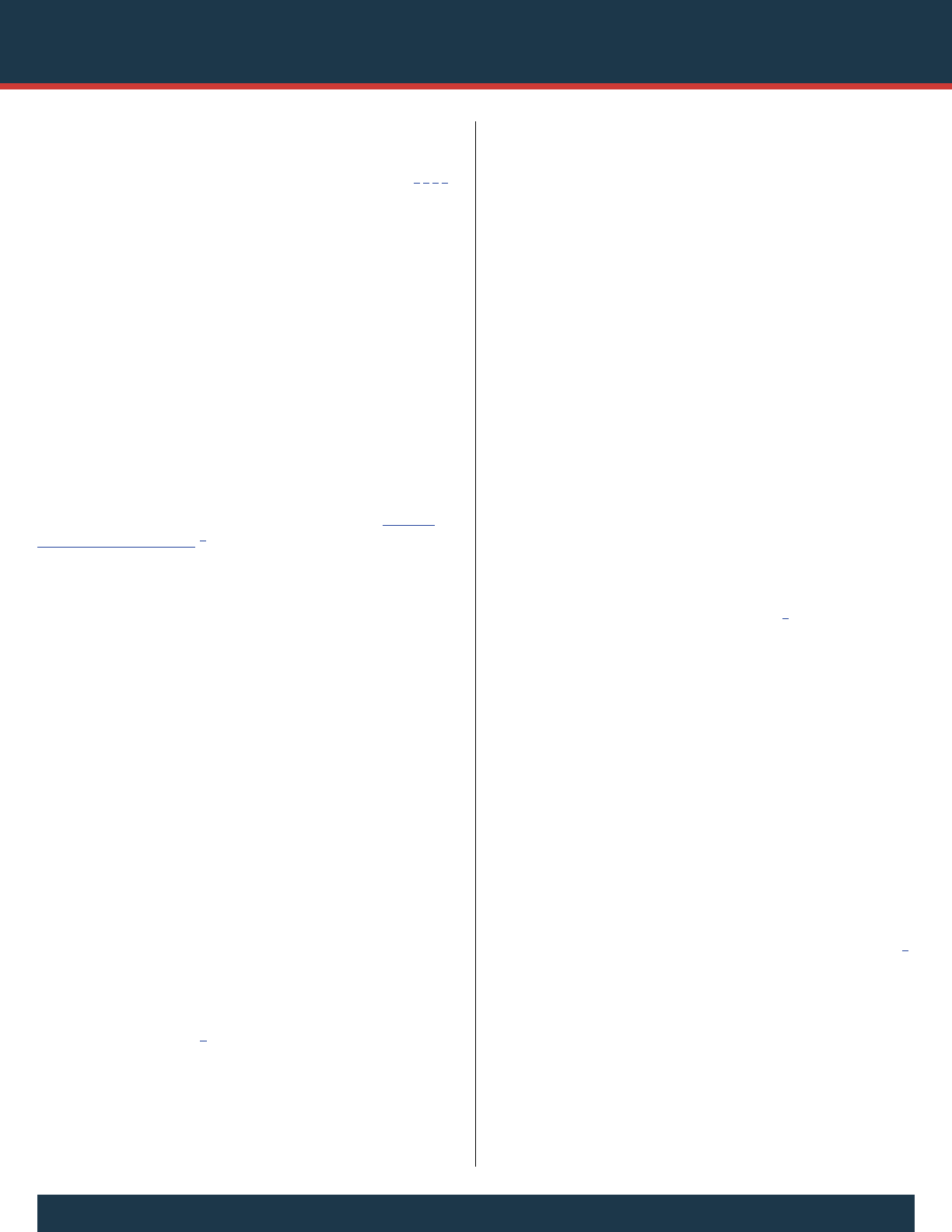
Key Substance Use and Mental Health Indicators in the United States:
Results from the 2020 National Survey on Drug Use and Health October 2021 | 7
Introduction
Substance use and mental health issues have significant
impacts on people, families, communities, and societies.
1,2,3,4
e National Survey on Drug Use and Health (NSDUH),
conducted annually by the Substance Abuse and Mental Health
Services Administration (SAMHSA), provides nationally
representative data on use of tobacco, alcohol, and illicit
drugs; substance use disorders (SUDs); receipt of substance
use treatment; mental health issues; and use of mental health
services among the civilian, noninsti
tu tionalized population
aged 12 or older in the United States. NSDUH estimates allow
researchers, clinicians, policymakers, and the general public to
better understand and improve the nation’s behavioral health.
Based on 2020 and earlier NSDUH data, this report
contains findings on key substance use and mental health
indicators in the United States. e 2020 NSDUH detailed
tables showing comprehensive substance use and mental
health-related estimates are available separately at https://
www.samhsa.gov/data/.
5
Survey Background
NSDUH is an annual survey sponsored by SAMHSA
within the U.S. Department of Health and Human Services
(HHS). NSDUH covers residents of households and
people in noninstitutional group settings (e.g., shelters,
boarding houses, college dormitories, migratory workers’
camps, halfway houses). e survey excludes people with
no fixed address (e.g., people who are homeless and not in
shelters), military personnel on active duty, and residents
of institutional group settings, such as jails, nursing homes,
mental health institutions, and long-term care hospitals.
Data Collection in the First Quarter of 2020
NSDUH employs a stratified multistage area probability
sample designed to be representative of both the nation as
a whole and for each of the 50 states and the District of
Columbia. e 2020 NSDUH target sample of 67,500
people was allocated across three age groups, with 25 percent
allocated to adolescents aged 12 to 17, 25 percent allocated
to young adults aged 18 to 25, and 50 percent allocated to
adults aged 26 or older.
6
From January to March 2020 (i.e., the first quarter of
2020), NSDUH was a face-to-face household interview
survey conducted in two phases: the screening phase and
the interview phase. Interviewers conducted a screening of a
sampled household with an adult resident (aged 18 or older)
in order to determine whether zero, one, or two household
residents aged 12 or older should be selected for the interview.
NSDUH collected in-person data using audio computer-
assisted self-interviewing (ACASI), in which respondents read
or listened to the questions on headphones and entered their
answers directly into a NSDUH laptop computer. ACASI was
designed for accurate reporting of information by providing
respondents with a highly private and confidential mode for
responding to questions about illicit drug use, mental health
issues, and other sensitive behaviors. For certain sections of
the survey, in-person NSDUH interviews also used computer-
assisted personal interviewing (CAPI), in which interviewers
read less sensitive questions to respondents and entered the
respondents’ answers into a NSDUH laptop computer.
From January to March 2020, screening was completed at
35,304 addresses, and 15,628 completed interviews were
obtained, including 3,936 interviews from adolescents aged
12 to 17 and 11,692 interviews from adults aged 18 or older.
Weighted response rates for household screening and for
interviewing were 67.8 and 63.2 percent, respectively, for an
overall response rate of 42.9 percent for people aged 12 or
older. e weighted interview response rates were 70.5 percent
for adolescents and 62.5 percent for adults.
7
In-person data
collection was suspended on March 16, 2020, because of the
coronavirus disease 2019 (COVID-19) pandemic.
Changes to Data Collection Methods Because of the
COVID‑19 Pandemic
To protect the safety of field staff and survey participants
during the COVID-19 pandemic, SAMHSA decided to
suspend in-person NSDUH data collection on March
16, 2020. With administrative approval, a small-scale
data collection effort was conducted from July 16 to 22,
2020, to assess the feasibility of safely resuming in-person
data collection. e small-scale data collection effort was
conducted in selected counties of two states where data
collection was deemed safe based on state- and county-level
COVID-19 metrics collected by Johns Hopkins University.
8
For the remainder of 2020, however, it became clear that
conventional in-person data collection would be severely
limited due to the COVID-19 pandemic.
To reduce the impact on NSDUH data collection due to
the COVID-19 pandemic, SAMHSA approved the addition
of web-based data collection on September 11, 2020. In
Quarter 4 of 2020 (i.e., October to December), web-based
screening and interviewing became the primary forms of
NSDUH data collection. Conventional in-person data

Key Substance Use and Mental Health Indicators in the United States:
Results from the 2020 National Survey on Drug Use and Health8 | October 2021
collection was carried out wherever it was considered safe to
do so based on county- and state-level COVID-19 metrics.
6
In July 2020 for a small number of interviews, and
principally in October to December 2020, screening was
completed for 55,633 addresses, and 20,656 completed
interviews were obtained, including 2,401 interviews from
adolescents aged 12 to 17 and 18,255 interviews from adults
aged 18 or older. Weighted response rates for household
screening and for interviewing were 11.1 and 59.5 percent,
respectively, for an overall response rate of 6.6 percent for
people aged 12 or older. e weighted interview response
rates were 25.6 percent for adolescents and 62.9 percent for
adults.
7
Approximately 93 percent of these interviews were
completed via the web because of limitations on where it was
considered safe to conduct interviews in person.
Altogether for 2020, then, screening was completed for 90,937
addresses, and the final sample consisted of 36,284 completed
interviews. ere were 6,337 interviews from adolescents
aged 12 to 17 and 29,947 interviews from adults aged 18 or
older. Weighted response rates for household screening and
for interviewing were 25.7 and 60.4 percent, respectively, for
an overall response rate of 15.5 percent for people aged 12 or
older. e weighted interview response rates were 36.8 percent
for adolescents and 62.8 percent for adults.
7,9
Further information about the 2020 NSDUH design and
methods can be found on the web at https://www.samhsa.
gov/data/.
10
Data Presentation and Interpretation
is report focuses on substance use and mental health
indicators in the United States based on NSDUH data
from 2020 and earlier years.
11
Estimates of substance use
and related treatment are presented for people aged 12 or
older, including adolescents and adults.
12
However, estimates
of mental health issues and mental health service use are
presented separately for adolescents aged 12 to 17 and adults
aged 18 or older because the two groups completed different
sets of questions regarding mental health and mental health
service utilization. All estimates (e.g., percentages and
numbers) presented in the report are derived from survey
data that are subject to sampling errors and have met the
criteria for statistical precision.
13
Presentation of National Estimates for 2020
Appendix A contains special tables of estimates, including
estimates not found in the 2020 NSDUH detailed tables.
Because some estimates in Appendix A may not be found
in the detailed tables, Appendix A’s tables include standard
errors for the associated estimates.
14
e COVID-19 pandemic has made 2020 a unique year
within the history of NSDUH. Estimates for most measures
have been calculated using data from Quarters 1 and 4 of
2020. As mentioned previously, except for a very brief data
collection effort that tested increased safety measures in
July, no data were collected in Quarters 2 and 3 (i.e., April
to September). e difference in data collection methods
between Quarter 1 and Quarter 4 affected the procedures for
weighting the 2020 data to produce national estimates.
6
With the introduction of web-based interviewing, data
processing took into account the potential effects of
survey mode
15
on responses.
10
In addition, questions were
developed to assess the specific effects of the COVID-19
pandemic on respondents. Because these questions were
asked of respondents only in Quarter 4, only data from
Quarter 4 are available for these estimates. Sections of the
report indicate when estimates use data from Quarter 4 only.
Otherwise, the default for the report is to present estimates
using data from Quarters 1 and 4.
16
Interpretation of Estimates for 2020
NSDUH underwent some major methodological changes
for 2020. As noted previously, the COVID-19 pandemic
necessitated the introduction of web-based interviewing.
In addition, 2020 marked the first year in which SUDs
were evaluated using criteria defined in the Diagnostic
and Statistical Manual of Mental Disorders, 5th edition
(DSM-5),
17
as opposed to criteria specified in the
Diagnostic and Statistical Manual of Mental Disorders, 4th
edition (DSM-IV).
18
ere were additional changes to
the questionnaire itself (e.g., new questions about vaping
and the use of synthetic marijuana or synthetic stimulants,
additional questions to measure SUDs based on the DSM-5
criteria, new questions in Quarter 4 to assess the impact of
COVID-19 on people’s lives). Finally, there was a significant
gap in data collection that might have missed seasonality
effects on some estimates. erefore, care must be taken
when attempting to disentangle the effects on estimates
due to real changes in the population (e.g., the COVID-19
pandemic, other events) from these methodological changes.
Researchers have raised concerns that the COVID-19
pandemic could have negative effects on substance use and
mental health outcomes.
19,20,21
However, the methodological
changes for the 2020 NSDUH also can affect the 2020
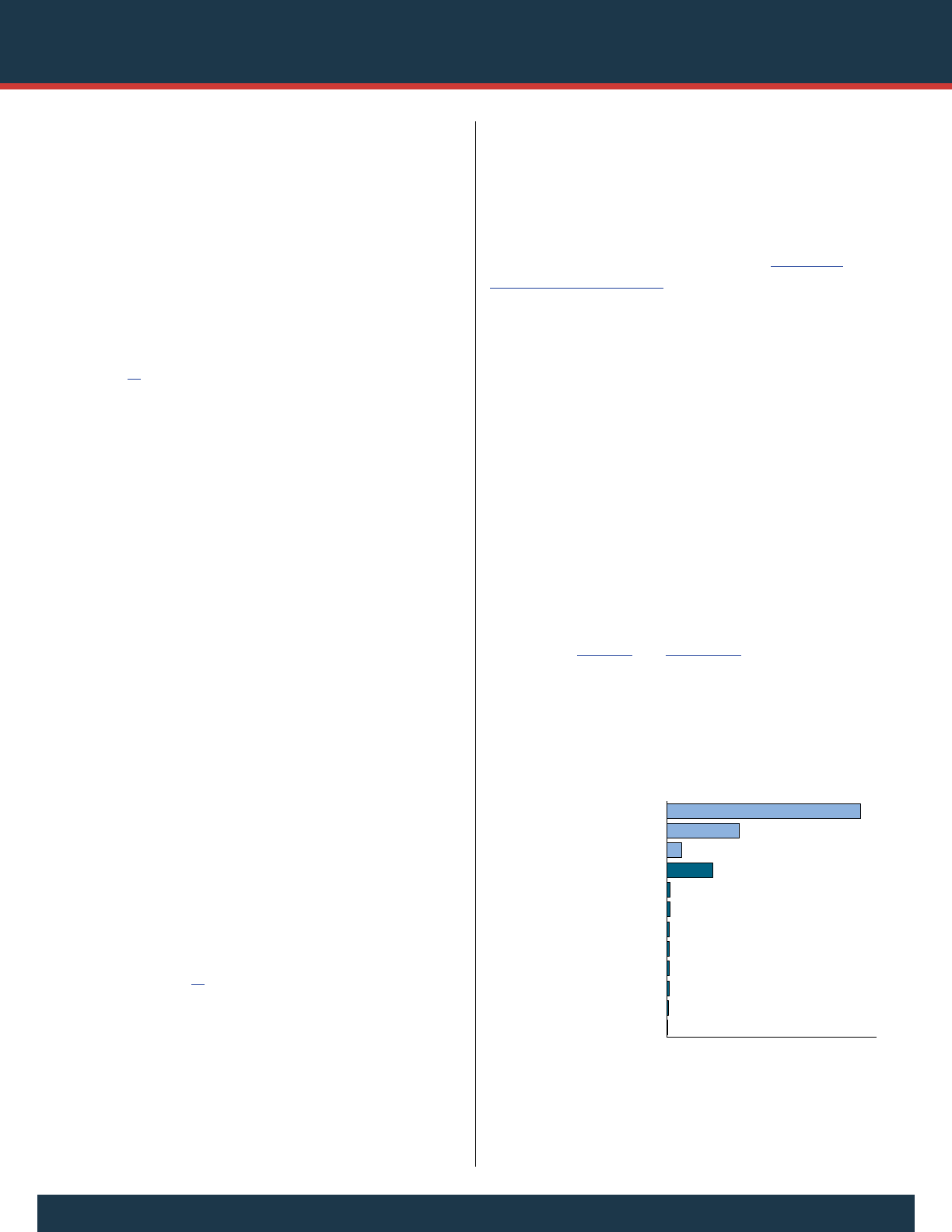
Key Substance Use and Mental Health Indicators in the United States:
Results from the 2020 National Survey on Drug Use and Health October 2021 | 9
estimates. erefore, direct comparison of NSDUH
estimates in 2020 with those from prior years can be
misleading. An additional caveat is that events in the United
States related to the COVID-19 pandemic were not the only
ones in 2020 that could have affected people’s substance
use and mental health. To that end, NSDUH estimates
principally describe conditions in the population but may not
explain the reasons behind the estimates.
Statistical tests for comparisons are presented in this
report where appropriate. Of note, statistical testing was
performed for comparisons of estimates across age groups
within 2020.
22
In these instances, statistically significant
differences resulting from this testing are described using
terms such as “higher” or “lower.” Statements use terms
such as “similar” or “the same” when a difference was not
statistically significant. However, the methodological changes
in 2020 because of the COVID-19 pandemic have created
major challenges for survey researchers and other data users
in interpreting estimates from the 2020 NSDUH. Particular
caution must be taken for multiyear trend analysis and the
comparison of the results from 2020 with those from any
prior survey years. Efforts were made to present the results
by defining measures for 2020 consistently with measures
in previous years wherever possible. Meanwhile, efforts were
also made to point out the uniqueness of 2020 and the need
for caution when making comparisons.
General Substance Use in the Past Month
is section provides an overview of estimates according
to whether respondents aged 12 or older reported using
nicotine products (using tobacco products or nicotine
vaping), alcohol, or illicit drugs in the 30 days before the
NSDUH interview (i.e., in the past month, also referred to
as “current use”). Due to the very small amount of data that
are available from April to September 2020, caution must
be taken when interpreting estimates of substance use in the
past month. Additional information on the use of tobacco
products, alcohol, and illicit drugs is provided in other
sections of this report.
14
Past month tobacco use includes any use of the four tobacco
products in NSDUH: cigarettes, smokeless tobacco (such
as snuff, dip, chewing tobacco, or snus), cigars, and pipe
tobacco. Past month nicotine vaping refers to the use of
an e-cigarette or other vaping device to vape nicotine or
tobacco. Past month alcohol use refers to having more
than a sip or two of any type of alcoholic drink (e.g., a
can or a bottle of beer, a glass of wine or a wine cooler,
a shot of liquor, or a mixed drink with liquor in it). Past
month illicit drug use includes any use of marijuana,
cocaine (including crack), heroin, hallucinogens, inhalants,
or methamphetamine, as well as misuse of prescription
stimulants, tranquilizers or sedatives (e.g., benzodiazepines),
or pain relievers. (See the section on the Misuse of
Psychotherapeutic Drugs for the definition of “misuse.”)
Tables in Appendix A also include estimates of past
month use for the following other substances: gamma
hydroxybutyrate (GHB), the misuse of nonprescription
cold and cough medicine, kratom, synthetic marijuana (fake
weed, K2, or Spice), and synthetic stimulants (“bath salts”
or flakka). Estimates for the use or misuse of these other
substances are discussed later in the report for the past year
(rather than the past month) because of low prevalence
estimates in the past month for many of these substances.
Among people aged 12 or older in 2020, 58.7 percent (or
162.5 million people) used tobacco, alcohol, or an illicit drug
in the past month, 50.0 percent (or 138.5 million people)
drank alcohol in the past month, 18.7 percent (or 51.7 million
people) used a tobacco product in the past month, and
13.5 percent (or 37.3 million people) used an illicit drug in the
past month (Figure 1 and Table A.1B). Estimates for tobacco,
alcohol, or illicit drugs are not mutually exclusive because
respondents could have used more than one type of substance
(e.g., tobacco products and alcohol) in the past month.
Figure 1. Past Month General Substance Use and Nicotine Vaping:
Among People Aged 12 or Older; 2020
138.5M
51.7M
10.4M
32.8M
2.5M
2.2M
1.8M
1.8M
1.7M
1.5M
904,000
513,000
0 50 100 150
Alcohol
Tobacco Products
Nicotine Vaping
Marijuana
Rx Pain Reliever Misuse
Rx Tranquilizer or Sedative Misuse
Cocaine
Hallucinogens
Methamphetamine
Rx Stimulant Misuse
Inhalants
Heroin
Number of Past Month Users
Rx = prescription.
Note: General Substance Use includes any illicit drug, alcohol, and tobacco product use. Tobacco
products are defined as cigarettes, smokeless tobacco, cigars, and pipe tobacco.
Note: The estimated numbers of current users of different substances are not mutually exclusive
because people could have used more than one type of substance in the pastmonth.
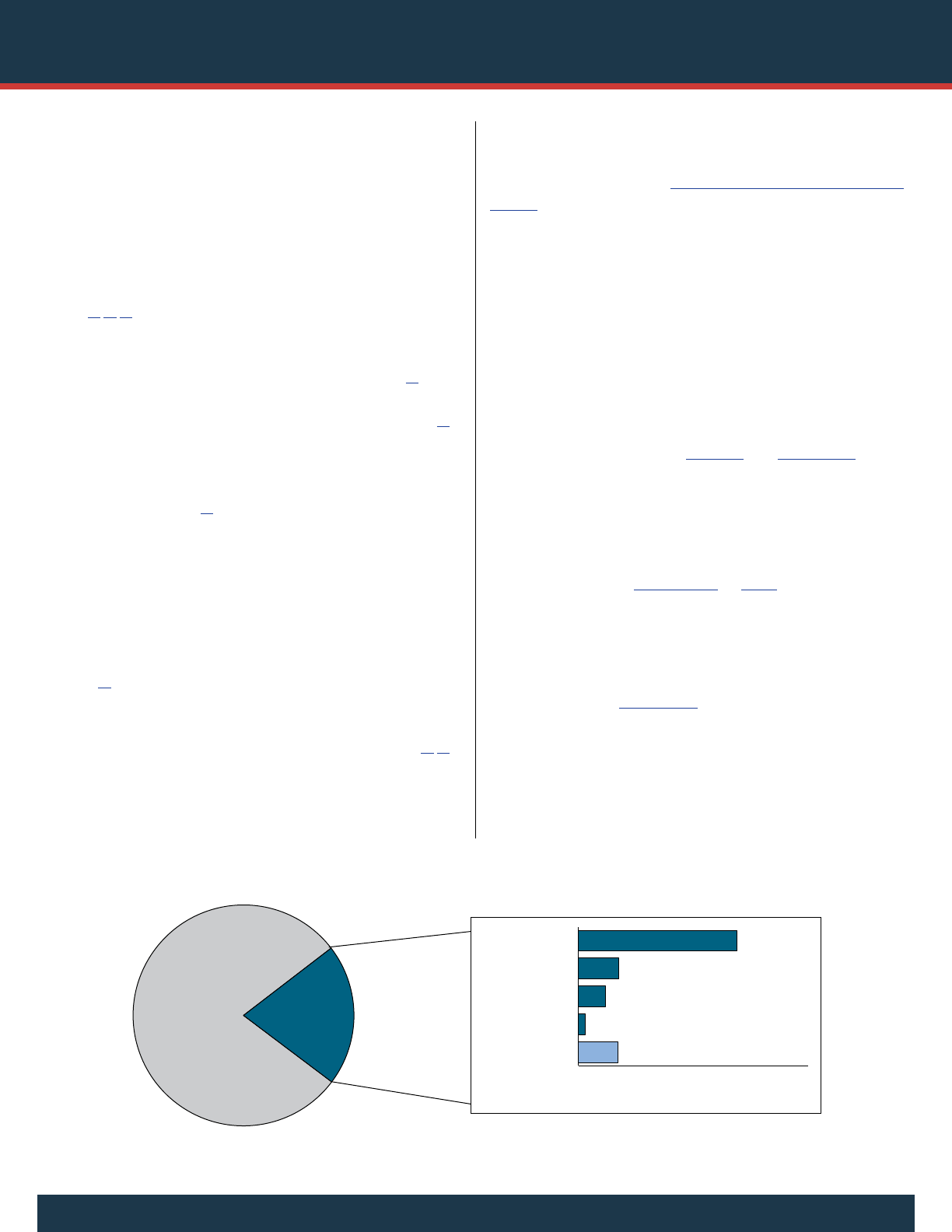
Key Substance Use and Mental Health Indicators in the United States:
Results from the 2020 National Survey on Drug Use and Health10 | October 2021
Tobacco Use or Nicotine Vaping in the
Past Month
Before 2020, NSDUH assessed tobacco use but did not
include questions on nicotine vaping. However, recent
increases in nicotine vaping have resulted in changes in
adolescent tobacco use. Findings from the 2019 National
Youth Tobacco Survey (NYTS) and the 2019 Monitoring
the Future (MTF) study indicated increases in nicotine
vaping.
23,24,25
NYTS data indicate that e-cigarettes have
been the most commonly used nicotine product among
youths since 2014, including in 2020, and that e-cigarette
use has reached epidemic proportions among youths.
25
In
addition, vaping of nicotine products among adolescents
has been identified as a risk factor for future cigarette use,
24
which may affect long-term cigarette use trends. However,
the 2020 MTF study found similar estimates between 2019
and 2020 in nicotine vaping in the past month among 8th,
10th, and 12th graders.
26
e 2020 NYTS also indicated
a reversal of previous trends, with e-cigarette use among
adolescents declining from 2019 to 2020 and returning to
levels similar to those in 2018. Nevertheless, e-cigarette use
remained the most common form of nicotine product use
among adolescents in the 2020 NYTS. Despite the decline
in e-cigarette use between 2019 and 2020, NYTS researchers
stressed the need for continued effort to sustain this apparent
progress.
27
An issue with the MTF and NYTS data for 2020
is that sample sizes were smaller in 2020. School closures in
the spring in response to the COVID-19 pandemic led to
the early conclusion of data collection for both surveys.
26,27
e 2020 NSDUH included questions to assess the use
of nicotine vaping in both adolescents and adults. As
noted previously, however, caution must be taken when
interpreting estimates in this section due to the very small
amount of data that are available from April to September.
As noted in the section on General Substance Use in the Past
Month
, past month tobacco use in NSDUH includes any use
of four tobacco products: cigarettes, smokeless tobacco (such as
snuff, dip, chewing tobacco, or snus), cigars, and pipe tobacco.
Past month nicotine vaping refers to the use of an e-cigarette
or other vaping device to vape nicotine or tobacco. Aggregate
estimates for the past month use of tobacco or nicotine vaping
(also referred to as current use of nicotine products) are
presented for people who used any of these tobacco products
or vaped nicotine in the past month (or both).
Among people aged 12 or older in 2020, 20.7 percent
(or 57.3 million people) used tobacco products or vaped
nicotine in the past month (Figure 2 and Table A.1B). e
percentage of people who used tobacco products or vaped
nicotine in the past month was highest among young adults
aged 18 to 25 (25.1 percent or 8.4 million people), followed
by adults aged 26 or older (21.6 percent or 47.2 million
people), then by adolescents aged 12 to 17 (6.5 percent or
1.6 million people) (Tables A.2B to A.4B).
Among current nicotine product users, the use of specific
nicotine products varied by age group. Nearly two thirds of
adolescents aged 12 to 17 who used nicotine products in the
past month (63.1 percent) vaped nicotine but did not use
tobacco products (Table A.5B). An additional 15.7 percent
of adolescents who used nicotine products in the past month
vaped nicotine and used tobacco products. About half of
young adults aged 18 to 25 who used nicotine products in
the past month (53.4 percent) used tobacco products but
did not vape nicotine, 23.6 percent vaped nicotine but did
not use tobacco products, and 22.9 percent vaped nicotine
Figure 2. Past Month Tobacco Use and Nicotine Vaping: Among People Aged 12 or Older; 2020
41.4M
10.6M
7.0M
1.8M
10.4M
0 20 40 60
Cigarettes
Cigars
Smokeless Tobacco
Pipe Tobacco
Nicotine Vaping
Number of Past Month Users
Past Month
Tobacco Use or
Nicotine Vaping
57.3 Million People
(20.7%)
No Past Month
Tobacco Use or
Nicotine Vaping
219.6 Million People
(79.3%)
Note: The estimated numbers of current users of different tobacco products or nicotine vaping are not mutually exclusive because people could have used more than one
type of tobacco product or used tobacco products and vaped nicotine in the pastmonth.

Key Substance Use and Mental Health Indicators in the United States:
Results from the 2020 National Survey on Drug Use and Health October 2021 | 11
and used tobacco products. Among adults aged 26 or older
who used nicotine products in the past month, however,
88.9 percent used only tobacco products.
Tobacco Product Use
In 2020, of the 51.7 million current (i.e., past month)
tobacco users (Figure 1), the majority were current cigarette
smokers (41.4 million; Figure 2). is pattern has been the
case historically.
28
Additionally, 10.6 million people were
current cigar smokers, 7.0 million people were current
smokeless tobacco users, and 1.8 million people were current
pipe tobacco smokers.
Among people aged 12 or older in 2020 who used any
tobacco product in the past month (regardless of whether
they vaped nicotine), 65.3 percent smoked cigarettes but
did not use other tobacco products, 14.8 percent smoked
cigarettes and used some other type of tobacco product, and
19.9 percent used only noncigarette tobacco products (i.e.,
other tobacco products but not cigarettes) (Table A.6B).
Among adults who used tobacco products in the past month,
adults aged 26 or older were more likely than young adults
aged 18 to 25 to have used only cigarettes in the past month
(68.0 vs. 49.3 percent). However, the majority of young
adults who were past month tobacco users smoked cigarettes,
either as the only tobacco product they used or in addition
to other tobacco products. Estimates among adolescents aged
12 to 17 who used tobacco products in the past month could
not be calculated with sufficient precision for the use of only
cigarettes or the use of only noncigarette tobacco products.
e remainder of this section on tobacco use focuses on
cigarette smoking because most current tobacco users aged
12 or older were cigarette smokers. Information on the
use of cigars, pipe tobacco, and smokeless tobacco in the
past month among people aged 12 or older and by age group
can be found in Tables A.1B to A.4B in Appendix A.
Cigarette Use
Among people aged 12 or older in 2020, 15.0 percent (or
41.4 million people) smoked cigarettes in the past month
(Figure 3). e percentage of people who smoked cigarettes
in the past month was highest among adults aged 26 or older
(16.7 percent or 36.4 million people), followed by young
adults aged 18 to 25 (13.9 percent or 4.7 million people), then
by adolescents aged 12 to 17 (1.4 percent or 350,000 people).
Daily Cigarette Use
Among the 41.4 million current cigarette smokers aged
12 or older in 2020 (see the section on Cigarette Use),
24.9 million people (or 60.1 percent) were daily cigarette
smokers (Figure 4), and 9.4 million people (or 37.8 percent)
smoked 16 or more cigarettes per day (i.e., approximately
one pack or more per day). Among current cigarette
smokers, adults aged 26 or older were more likely than
young adults aged 18 to 25 to be daily smokers (64.1 vs.
33.1 percent) (Tables A.3B and A.4B).
Nicotine Vaping
In 2020, 10.4 million people aged 12 or older (or 3.8 percent)
used an e-cigarette or other vaping device to vape nicotine in
the past month (Figures 2 and 5). e percentage of people
who vaped nicotine was highest among young adults aged 18 to
25 (11.7 percent or 3.9 million people), followed by adolescents
aged 12 to 17 (5.1 percent or 1.3 million people), then by
adults aged 26 or older (2.4 percent or 5.2 million people).
Underage Tobacco Use or Nicotine Vaping
Legislation in December 2019 amending the Federal Food,
Drug, and Cosmetic Act raised the federal minimum age
for sale of tobacco products (including e-cigarettes) from
Figure 3. Past Month Cigarette Use: Among People Aged 12 or
Older; 2002-2020
Percent Using in Past Month
0
10
20
30
40
50
20191817161514131211100908070605040302
12 or OlderAge Category: 12 to 17
Years
18 to 25 26 or Older
Note: There is no connecting line between 2019 and 2020 to indicate caution should be used when
comparing estimates between 2020 and prior years because of methodological changes for 2020.
Due to these changes, significance testing between 2020 and prior years was not performed.
Figure 3 Table. Past Month Cigarette Use: Among People Aged 12 or Older;
2002-2020
Age 02 03 04 05 06 07 08 09 10 11 12 13 14 15 16 17 18 19 20
≥12
26.0 25.4 24.9 24.9 25.0 24.3 24.0 23.3 23.0 22.1 22.1 21.3 20.8 19.4 19.1 17.9 17.2 16.7
15.0
12-17
13.0 12.2 11.9 10.8 10.4 9.9 9.2 9.0 8.4 7.8 6.6 5.6 4.9 4.2 3.4 3.2 2.7 2.3
1.4
18-25
40.8 40.2 39.5 39.0 38.5 36.2 35.7 35.8 34.3 33.5 31.8 30.6 28.4 26.7 23.5 22.3 19.1 17.5
13.9
≥26
25.2 24.7 24.1 24.3 24.7 24.1 23.8 23.0 22.8 21.9 22.4 21.6 21.5 20.0 20.2 18.9 18.5 18.2
16.7
Note: The estimate in 2020 is italicized to indicate caution should be used when comparing estimates
between 2020 and prior years because of methodological changes for 2020. Due to these changes,
significance testing between 2020 and prior years was not performed.

Key Substance Use and Mental Health Indicators in the United States:
Results from the 2020 National Survey on Drug Use and Health12 | October 2021
18 to 21 years.
29
All 50 states and the District of Columbia now
prohibit the sale of tobacco products to people younger than 21.
Among people aged 12 to 20, 11.8 percent (or 4.4 million
people) used tobacco products or used an e-cigarette or other
vaping device to vape nicotine (Table A.7B). Among people
in this age group, 7.7 percent (or 2.9 million people) vaped
nicotine, 6.7 percent (or 2.5 million people) used tobacco
products, and 4.1 percent (or 1.5 million people) smoked
cigarettes in the past month.
Alcohol Use in the Past Month
As noted in the section on General Substance Use in the Past
Month, the 2020 NSDUH asked respondents aged 12 or older
about their alcohol use in the 30 days before the interview. In
addition to asking about any alcohol use, NSDUH collected
information on past month binge alcohol use and heavy
alcohol use. Binge drinking for males was defined as drinking
five or more drinks
30
on the same occasion on at least 1 day
in the past 30 days, which has remained unchanged from
the threshold prior to 2015. Since 2015, binge alcohol use
for females has been defined as drinking four or more drinks
on the same occasion on at least 1 day in the past 30 days.
31
is definition of binge alcohol use is consistent with federal
definitions.
32
Heavy alcohol use was defined as binge drinking
on 5 or more days in the past 30 days based on the thresholds
described previously for males and females. Also, as noted
previously, caution must be taken when interpreting estimates
of alcohol use in the past month due to the very small amount
of data that are available from April to September.
Among the 138.5 million current alcohol users aged 12 or
older in 2020, 61.6 million people (or 44.4 percent) were
past month binge drinkers (Figure 6). Among past month
Figure 4. Daily Cigarette Use: Among Past Month Cigarette Smokers Aged 12 or Older;
Smoking of One or More Packs of Cigarettes per Day: Among Current Daily Smokers; 2020
15.4 Million
Smokers of
Less Than a
Pack per Day
(62.2%)
9.4 Million
Smokers of
One or More
Packs per Day
(37.8%)
16.5 Million
Less Than
Daily Smokers
(39.9%)
24.9 Million
Daily Smokers
(60.1%)
Note: Current daily smokers with unknown data about the number of cigarettes smoked per day were excluded from the pie chart on the right.
Figure 5. Past Month Nicotine Vaping: Among People Aged 12 or
Older; 2020
3.8
5.1
11.7
2.4
0
2
4
6
8
10
12
14
12 or Older 12 to 17 18 to 25 26 or Older
Percent Using in Past Month
Figure 6. Current, Binge, and Heavy Alcohol Use: Among People
Aged 12 or Older; 2020
138.5 Million
Alcohol Users
61.6 Million
Binge Alcohol Users
(44.4% of Alcohol Users)
17.7 Million
Heavy Alcohol Users
(28.8% of Binge Alcohol
Users and 12.8% of
Alcohol Users)
Note: Binge Alcohol Use is defined as drinking five or more drinks (for males) or four or more drinks
(for females) on the same occasion on at least 1 day in the past 30 days. Heavy Alcohol Use is
defined as binge drinking on the same occasion on 5 or more days in the past 30 days; all heavy
alcohol users are also binge alcohol users.
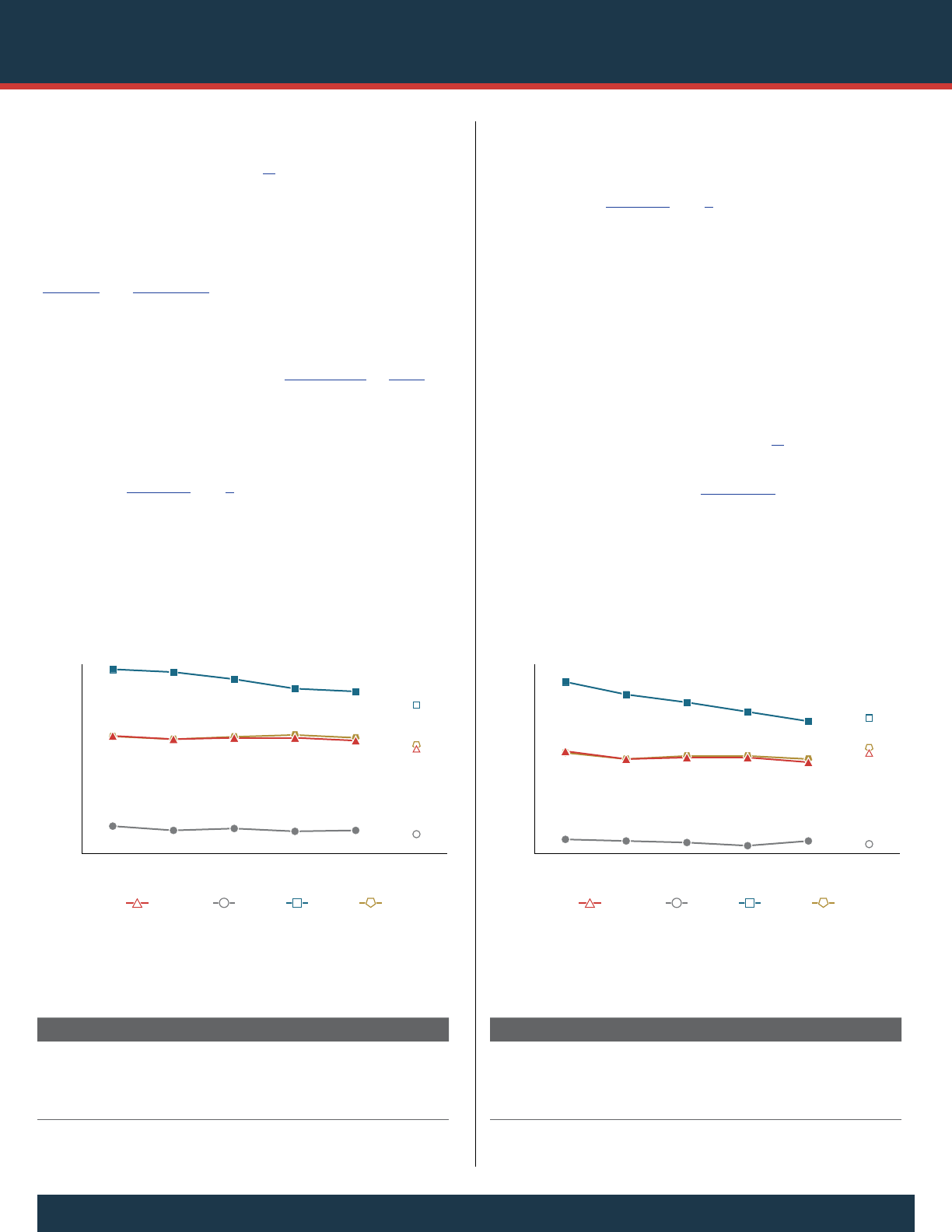
Key Substance Use and Mental Health Indicators in the United States:
Results from the 2020 National Survey on Drug Use and Health October 2021 | 13
binge drinkers, 17.7 million people (28.8 percent of current
binge drinkers and 12.8 percent of current alcohol users)
were past month heavy drinkers.
33
Any Alcohol Use
Among people aged 12 or older in 2020, 50.0 percent (or
138.5 million people) drank alcohol in the past month
(Figure 6 and Table A.1B). e percentage was highest
among adults aged 26 or older (54.6 percent or 119.2 million
people), followed by young adults aged 18 to 25 (51.5 percent
or 17.3 million people), then by adolescents aged 12 to 17
(8.2 percent or 2.1 million people) (Tables A.2B to A.4B).
Binge Alcohol Use
Among people aged 12 or older in 2020, 22.2 percent
(or 61.6 million people) were binge alcohol users in the
past month (Figures 6 and 7). e percentage was highest
among young adults aged 18 to 25 (31.4 percent or
10.5 million people), followed by adults aged 26 or older
(22.9 percent or 50.0 million people), then by adolescents
aged 12 to 17 (4.1 percent or 1.0 million people).
Heavy Alcohol Use
Among people aged 12 or older in 2020, 6.4 percent
(or 17.7 million people) were heavy alcohol users in
the past month (Figures 6 and 8). e percentage was
highest among young adults aged 18 to 25 (8.6 percent or
2.9 million people), followed by adults aged 26 or older
(6.7 percent or 14.7 million people), then by adolescents
aged 12 to 17 (0.6 percent or 140,000 people).
Underage Alcohol Use
As of 2020, all 50 states and the District of Columbia prohibited
the possession of alcoholic beverages by people younger than
21 (although some states may have had exceptions). Most states
also prohibited underage consumption (i.e., consumption of
alcoholic beverages prior to the age of 21).
34
Among people
aged 12 to 20 in 2020, 16.1 percent (or 6.0 million people)
were past month alcohol users (Table A.7B). Estimates of binge
alcohol use and heavy alcohol use in the past month among
underage people were 9.2 percent (or 3.4 million people) and
1.8 percent (or 669,000 people), respectively.
Figure 7. Past Month Binge Alcohol Use: Among People Aged 12
or Older; 2015-2020
Percent Using in Past Month
0
5
10
15
20
25
30
35
40
202020192018201720162015
12 or OlderAge Category: 12 to 17
Years
18 to 25 26 or Older
Note: There is no connecting line between 2019 and 2020 to indicate caution should be used when
comparing estimates between 2020 and prior years because of methodological changes for 2020.
Due to these changes, significance testing between 2020 and prior years was not performed.
Figure 7 Table. Past Month Binge Alcohol Use: Among People Aged 12 or
Older; 2015-2020
Age 2015 2016 2017 2018 2019 2020
12 or Older
24.9 24.2 24.5 24.5 23.9 22.2
12 to 17
5.8 4.9 5.3 4.7 4.9 4.1
18 to 25
39.0 38.4 36.9 34.9 34.3 31.4
26 or Older
24.8 24.2 24.7 25.1 24.5 22.9
Note: The estimate in 2020 is italicized to indicate caution should be used when comparing estimates between
2020 and prior years because of methodological changes for 2020. Due to these changes, significance testing
between 2020 and prior years was not performed.
Figure 8. Past Month Heavy Alcohol Use: Among People Aged 12
or Older; 2015-2020
Percent Using in Past Month
0
2
4
6
8
10
12
202020192018201720162015
12 or OlderAge Category: 12 to 17
Years
18 to 25 26 or Older
Note: There is no connecting line between 2019 and 2020 to indicate caution should be used when
comparing estimates between 2020 and prior years because of methodological changes for 2020.
Due to these changes, significance testing between 2020 and prior years was not performed.
Figure 8 Table. Past Month Heavy Alcohol Use: Among People Aged 12 or
Older; 2015-2020
Age 2015 2016 2017 2018 2019 2020
12 or Older
6.5 6.0 6.1 6.1 5.8 6.4
12 to 17
0.9 0.8 0.7 0.5 0.8 0.6
18 to 25
10.9 10.1 9.6 9.0 8.4 8.6
26 or Older
6.4 6.0 6.2 6.2 6.0 6.7
Note: The estimate in 2020 is italicized to indicate caution should be used when comparing estimates between
2020 and prior years because of methodological changes for 2020. Due to these changes, significance testing
between 2020 and prior years was not performed.
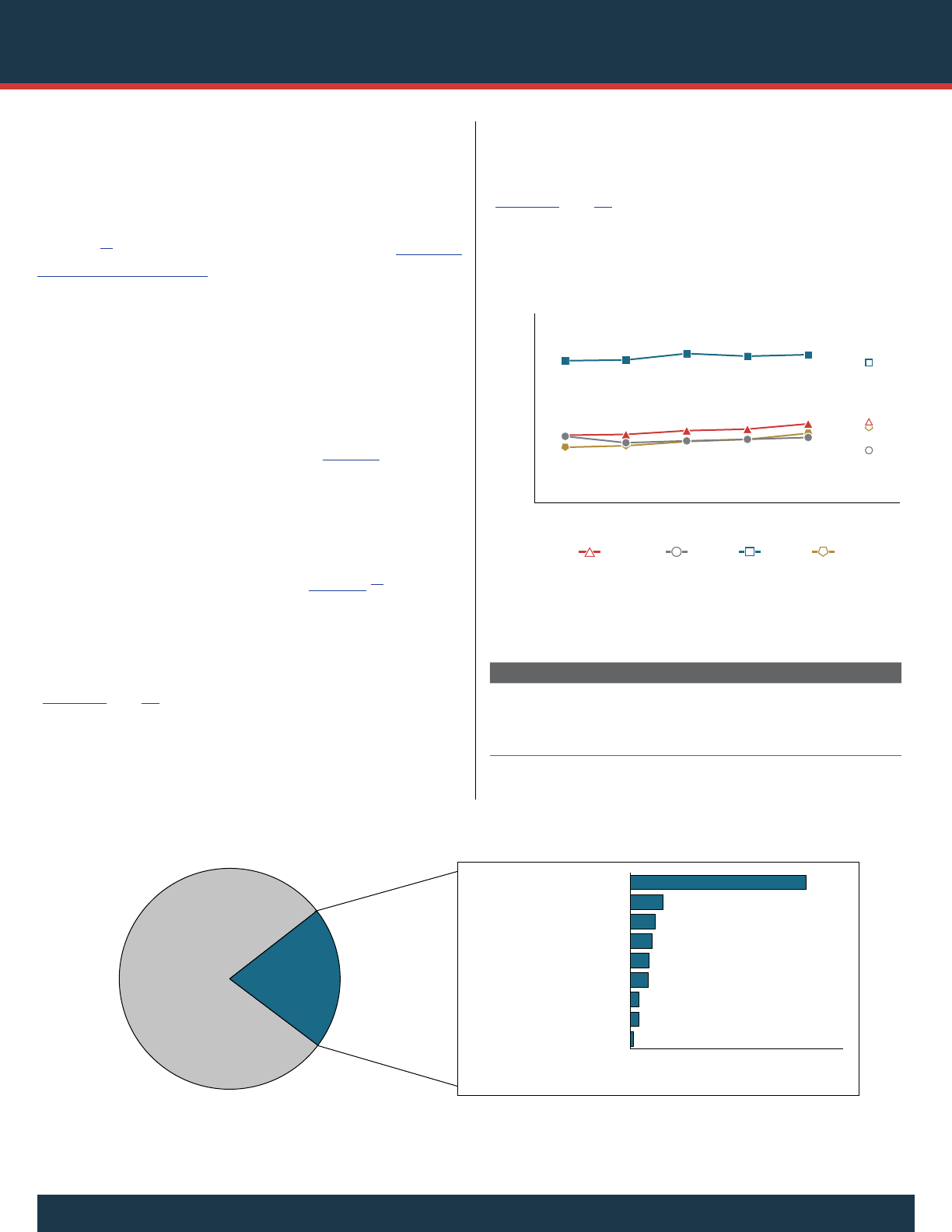
Key Substance Use and Mental Health Indicators in the United States:
Results from the 2020 National Survey on Drug Use and Health14 | October 2021
Illicit Drug Use in the Past Year
e 2020 NSDUH obtained illicit drug use information
for the use of marijuana, cocaine (including crack), heroin,
hallucinogens, inhalants, and methamphetamine, as well
as for the misuse of prescription stimulants, tranquilizers,
sedatives,
35
and pain relievers (see the section on the Misuse of
Psychotherapeutic Drugs for the definition of “misuse”). is
report presents estimates of past year (rather than past month)
illicit drug use because of low prevalence estimates for some
illicit drugs (e.g., heroin). Moreover, the 2020 NSDUH
collected only past year (rather than past month) data on
the misuse of benzodiazepines and specific subtypes of
prescription pain relievers (e.g., fentanyl products).
Among people aged 12 or older in 2020, 59.3 million
people used illicit drugs in the past year (Figure 9). e most
commonly used illicit drug in the past year was marijuana,
which was used by 49.6 million people. e second most
common type of illicit drug use in the past year was the
misuse of prescription pain relievers, which were misused by
9.3 million people. Smaller numbers of people were past year
users of other illicit drugs, as shown in Figure 9.
36
Any Illicit Drug Use
Among people aged 12 or older in 2020, 21.4 percent
(or 59.3 million people) used illicit drugs in the past year
(Figures 9 and 10). e percentage was highest among
young adults aged 18 to 25 (37.0 percent or 12.4 million
people), followed by adults aged 26 or older (19.9 percent
or 43.4 million people), then by adolescents aged 12 to 17
(13.8 percent or 3.4 million people).
Marijuana Use
In 2020, 17.9 percent of people aged 12 or older (or
49.6 million people) used marijuana in the past year
(Figures 9 and 11). e percentage was highest among
young adults aged 18 to 25 (34.5 percent or 11.6 million
Figure 9. Past Year Illicit Drug Use: Among People Aged 12 or Older; 2020
49.6M
9.3M
7.1M
6.2M
5.2M
5.1M
2.5M
2.4M
902,000
0 10 20 30 40 50 60
Marijuana
Rx Pain Reliever Misuse
Hallucinogens
Rx Tranquilizer or Sedative Misuse
Cocaine
Rx Stimulant Misuse
Methamphetamine
Inhalants
Heroin
Number of Past Year Users
Past Year
Illicit Drug Use
59.3 Million People
(21.4%)
No Past Year
Illicit Drug Use
217.6 Million People
(78.6%)
Rx = prescription.
Note: The estimated numbers of pastyear users of different illicit drugs are not mutually exclusive because people could have used more than one type of illicit drug in the pastyear.
Figure 10. Past Year Illicit Drug Use: Among People Aged 12 or
Older; 2015-2020
Percent Using in Past Year
0
10
20
30
40
50
202020192018201720162015
12 or OlderAge Category: 12 to 17
Years
18 to 25 26 or Older
Note: There is no connecting line between 2019 and 2020 to indicate caution should be used when
comparing estimates between 2020 and prior years because of methodological changes for 2020.
Due to these changes, significance testing between 2020 and prior years was not performed.
Figure 10 Table. Past Year Illicit Drug Use: Among People Aged 12 or Older;
2015-2020
Age 2015 2016 2017 2018 2019 2020
12 or Older 17.8 18.0 19.0 19.4 20.8 21.4
12 to 17 17.5 15.8 16.3 16.7 17.2 13.8
18 to 25 37.5 37.7 39.4 38.7 39.1 37.0
26 or Older 14.6 15.0 16.1 16.7 18.3 19.9
Note: The estimate in 2020 is italicized to indicate caution should be used when comparing estimates between
2020 and prior years because of methodological changes for 2020. Due to these changes, significance testing
between 2020 and prior years was not performed.
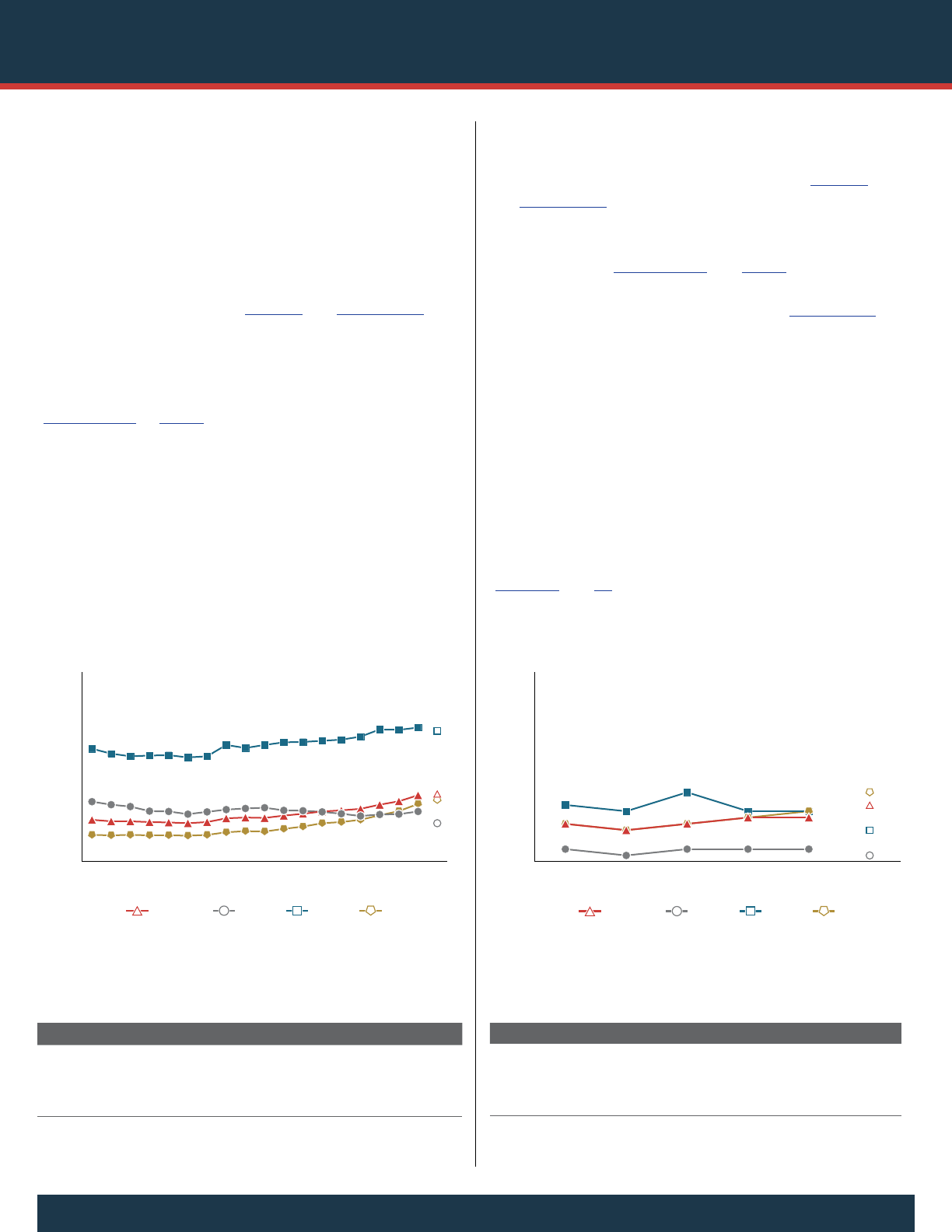
Key Substance Use and Mental Health Indicators in the United States:
Results from the 2020 National Survey on Drug Use and Health October 2021 | 15
people), followed by adults aged 26 or older (16.3 percent
or 35.5 million people), then by adolescents aged 12 to 17
(10.1 percent or 2.5 million people).
Cocaine Use
Cocaine use includes the use of crack cocaine. Estimates of
crack use are presented separately as well. Among people
aged 12 or older in 2020, 1.9 percent (or 5.2 million people)
used cocaine in the past year (Figure 9 and Table A.12B).
e percentage was highest among young adults aged 18 to
25 (4.3 percent or 1.4 million people), followed by adults
aged 26 or older (1.7 percent or 3.6 million people), then
by adolescents aged 12 to 17 (0.3 percent or 84,000 people)
(Tables A.13B to A.15B).
In 2020, an estimated 0.2 percent of people aged 12 or
older (or 657,000 people) used crack in the past year. e
percentage was lowest among adolescents aged 12 to 17
(less than 0.1 percent or 2,000 people). is percentage
increased with age (0.1 percent of young adults aged 18 to 25
or 49,000 people; 0.3 percent of adults aged 26 or older or
606,000 people).
Heroin Use
Among people aged 12 or older in 2020, 0.3 percent (or
902,000 people) used heroin in the past year (Figure 9
and Table A.12B). Estimates of past year heroin use were
0.2 percent (or 62,000 people) among young adults aged
18 to 25 and 0.4 percent (or 840,000 people) among adults
aged 26 or older (Tables A.14B and A.15B). Estimates of
past year heroin use among adolescents aged 12 to 17 could
not be calculated with sufficient precision (Table A.13B).
Methamphetamine Use
Although methamphetamine is legally available by
prescription (Desoxyn
®
), most methamphetamine used in
the United States is produced and distributed illicitly rather
than through the pharmaceutical industry. erefore, the
2015 to 2020 NSDUHs have included separate sections
for methamphetamine use and the use and misuse of
prescription stimulants.
Among people aged 12 or older in 2020, 0.9 percent (or
2.5 million people) used methamphetamine in the past year
(Figures 9 and 12). Adolescents aged 12 to 17 had the lowest
Figure 11. Past Year Marijuana Use: Among People Aged 12 or
Older; 2002-2020
Percent Using in Past Year
0
10
20
30
40
50
20191817161514131211100908070605040302
12 or OlderAge Category: 12 to 17
Years
18 to 25 26 or Older
Note: There is no connecting line between 2019 and 2020 to indicate caution should be used when
comparing estimates between 2020 and prior years because of methodological changes for 2020.
Due to these changes, significance testing between 2020 and prior years was not performed.
Figure 11 Table. Past Year Marijuana Use: Among People Aged 12 or Older;
2002-2020
Age 02 03 04 05 06 07 08 09 10 11 12 13 14 15 16 17 18 19 20
≥12
11.0 10.6 10.6 10.4 10.3 10.1 10.4 11.4 11.6 11.5 12.1 12.6 13.2 13.5 13.9 15.0 15.9 17.5
17.9
12-17
15.8 15.0 14.5 13.3 13.2 12.5 13.1 13.7 14.0 14.2 13.5 13.4 13.1 12.6 12.0 12.4 12.5 13.2
10.1
18-25
29.8 28.5 27.8 28.0 28.1 27.5 27.8 30.8 30.0 30.8 31.5 31.6 31.9 32.2 33.0 34.9 34.8 35.4
34.5
≥26
7.0 6.9 7.0 6.9 6.9 6.8 7.0 7.7 8.0 7.9 8.6 9.2 10.1 10.4 11.0 12.2 13.3 15.2
16.3
Note: The estimate in 2020 is italicized to indicate caution should be used when comparing estimates between
2020 and prior years because of methodological changes for 2020. Due to these changes, significance testing
between 2020 and prior years was not performed.
Figure 12. Past Year Methamphetamine Use: Among People Aged
12 or Older; 2015-2020
Percent Using in Past Year
0.0
0.5
1.0
1.5
2.0
2.5
3.0
202020192018201720162015
12 or OlderAge Category: 12 to 17
Years
18 to 25 26 or Older
Note: There is no connecting line between 2019 and 2020 to indicate caution should be used when
comparing estimates between 2020 and prior years because of methodological changes for 2020.
Due to these changes, significance testing between 2020 and prior years was not performed.
Figure 12 Table. Past Year Methamphetamine Use: Among People Aged 12 or
Older; 2015-2020
Age 2015 2016 2017 2018 2019 2020
12 or Older 0.6 0.5 0.6 0.7 0.7 0.9
12 to 17 0.2 0.1 0.2 0.2 0.2 0.1
18 to 25 0.9 0.8 1.1 0.8 0.8 0.5
26 or Older 0.6 0.5 0.6 0.7 0.8 1.1
Note: The estimate in 2020 is italicized to indicate caution should be used when comparing estimates between
2020 and prior years because of methodological changes for 2020. Due to these changes, significance testing
between 2020 and prior years was not performed.
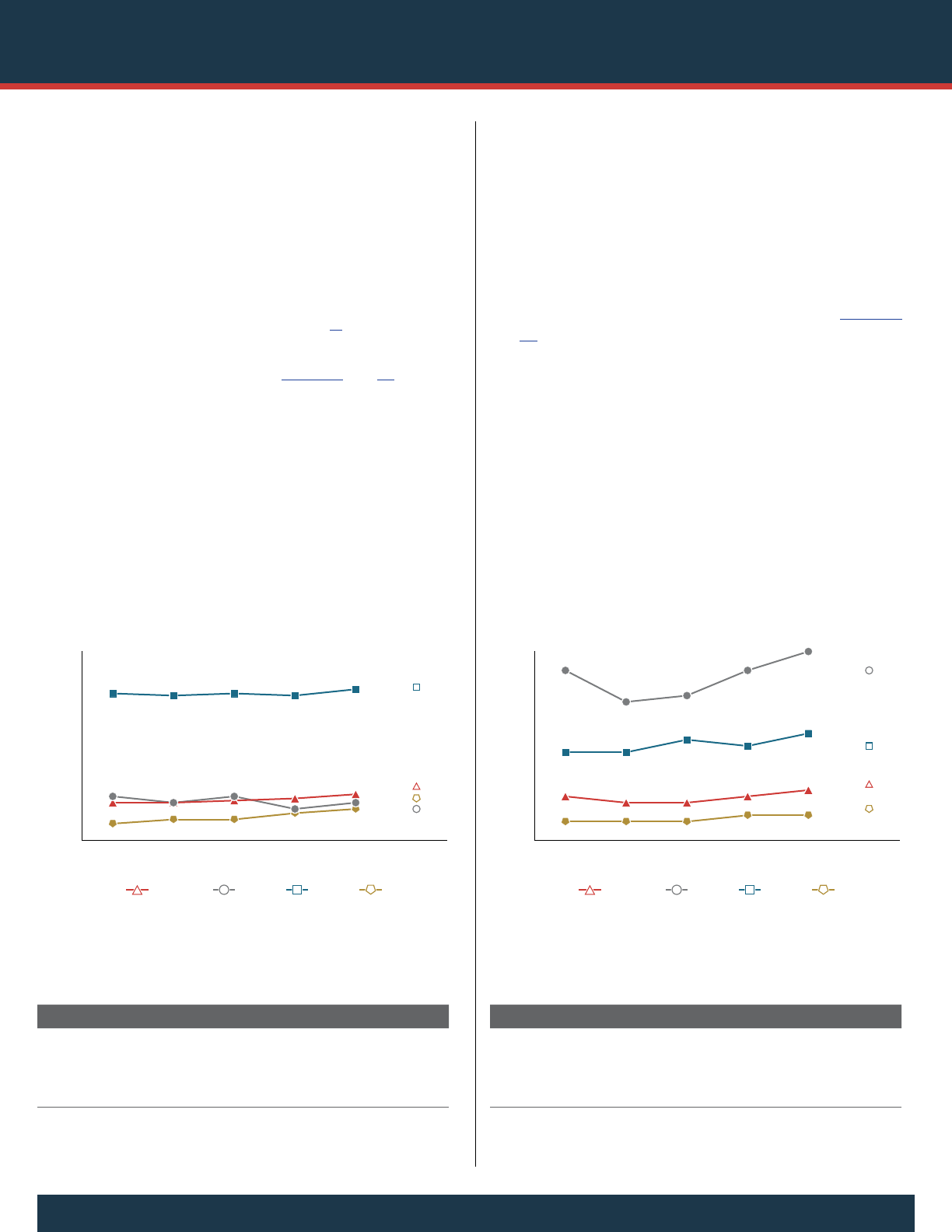
Key Substance Use and Mental Health Indicators in the United States:
Results from the 2020 National Survey on Drug Use and Health16 | October 2021
estimate of past year methamphetamine use (0.1 percent or
21,000 people). Percentages increased with age (0.5 percent
of young adults aged 18 to 25 or 171,000 people;
1.1 percent of adults aged 26 or older or 2.4 million people).
Hallucinogen Use
Several drugs are grouped under the category of hallucinogens,
including LSD, PCP, peyote, mescaline, psilocybin
mushrooms, “Ecstasy” (MDMA or “Molly”), ketamine,
DMT/AMT/“Foxy,” and Salvia divinorum.
37
In 2020,
2.6 percent of people aged 12 or older (or 7.1 million people)
used hallucinogens in the past year (Figures 9 and 13). e
percentage among young adults aged 18 to 25 (7.3 percent or
2.4 million people) was higher than the percentages among
adolescents aged 12 to 17 (1.5 percent or 370,000 people) or
adults aged 26 or older (2.0 percent or 4.3 million people).
Inhalant Use
Inhalants include volatile solvents (e.g., paint thinners and
removers, dry cleaning fluids, degreasers, gasoline, glues, shoe
polish, correction fluids, felt-tip markers), aerosols (e.g., spray
paints, deodorant and hair sprays, fabric protector sprays,
computer keyboard cleaner), gases (e.g., ether, halothane,
nitrous oxide, butane, propane), and nitrites (e.g., amyl
nitrite, “poppers,” locker room deodorizers, “rush”). NSDUH
respondents were asked to report the use of inhalants to get
high but not to include accidental inhalation of a substance.
Among people aged 12 or older in 2020, 0.9 percent (or
2.4 million people) used inhalants in the past year (Figures 9
and 14). Unlike other illicit drug use estimates, the percentage
was highest among adolescents aged 12 to 17 (2.7 percent or
683,000 people). Percentages decreased with age (1.5 percent
of young adults aged 18 to 25 or 507,000 people; 0.5 percent
of adults aged 26 or older or 1.2 million people).
Misuse of Psychotherapeutic Drugs
e 2020 NSDUH assessed the use and misuse of
psychotherapeutic drugs currently or recently available by
prescription in the United States, including prescription
stimulants, tranquilizers or sedatives (e.g., benzodiazepines),
Figure 13. Past Year Hallucinogen Use: Among People Aged 12 or
Older; 2015-2020
Percent Using in Past Year
0
1
2
3
4
5
6
7
8
9
202020192018201720162015
12 or OlderAge Category: 12 to 17
Years
18 to 25 26 or Older
Note: There is no connecting line between 2019 and 2020 to indicate caution should be used when
comparing estimates between 2020 and prior years because of methodological changes for 2020.
Due to these changes, significance testing between 2020 and prior years was not performed.
Figure 13 Table. Past Year Hallucinogen Use: Among People Aged 12 or
Older; 2015-2020
Age 2015 2016 2017 2018 2019 2020
12 or Older
1.8 1.8 1.9 2.0 2.2 2.6
12 to 17
2.1 1.8 2.1 1.5 1.8 1.5
18 to 25
7.0 6.9 7.0 6.9 7.2 7.3
26 or Older
0.8 1.0 1.0 1.3 1.5 2.0
Note: The estimate in 2020 is italicized to indicate caution should be used when comparing estimates between
2020 and prior years because of methodological changes for 2020. Due to these changes, significance testing
between 2020 and prior years was not performed.
Figure 14. Past Year Inhalant Use: Among People Aged 12 or
Older; 2015-2020
Percent Using in Past Year
0.0
0.5
1.0
1.5
2.0
2.5
3.0
202020192018201720162015
12 or OlderAge Category: 12 to 17
Years
18 to 25 26 or Older
Note: There is no connecting line between 2019 and 2020 to indicate caution should be used when
comparing estimates between 2020 and prior years because of methodological changes for 2020.
Due to these changes, significance testing between 2020 and prior years was not performed.
Figure 14 Table. Past Year Inhalant Use: Among People Aged 12 or Older;
2015-2020
Age 2015 2016 2017 2018 2019 2020
12 or Older
0.7 0.6 0.6 0.7 0.8 0.9
12 to 17
2.7 2.2 2.3 2.7 3.0 2.7
18 to 25
1.4 1.4 1.6 1.5 1.7 1.5
26 or Older
0.3 0.3 0.3 0.4 0.4 0.5
Note: The estimate in 2020 is italicized to indicate caution should be used when comparing estimates between
2020 and prior years because of methodological changes for 2020. Due to these changes, significance testing
between 2020 and prior years was not performed.
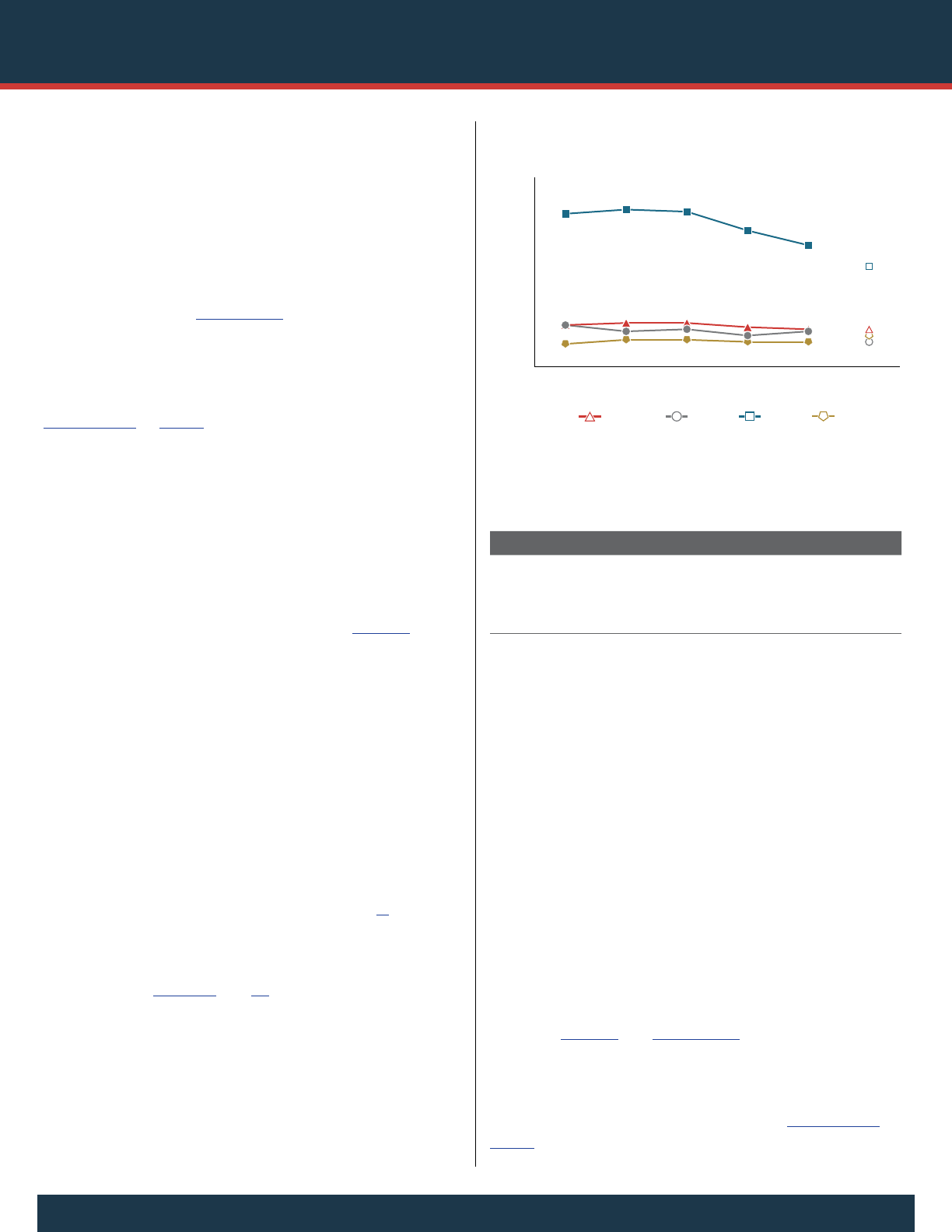
Key Substance Use and Mental Health Indicators in the United States:
Results from the 2020 National Survey on Drug Use and Health October 2021 | 17
and pain relievers. In NSDUH, misuse of prescription drugs
was defined as use in any way not directed by a doctor,
including use without a prescription of one’s own; use in
greater amounts, more often, or longer than told to take
a drug; or use in any other way not directed by a doctor.
Misuse of over-the-counter (OTC) drugs was not included.
Among people aged 12 or older in 2020, 5.8 percent (or
16.1 million people) misused prescription psychotherapeutic
drugs in the past year (Table A.12B). e percentage was
highest among young adults aged 18 to 25 (9.5 percent
or 3.2 million people), followed by adults aged 26 or
older (5.6 percent or 12.2 million people), then by
adolescents aged 12 to 17 (2.8 percent or 688,000 people)
(Tables A.13B to A.15B).
Of the prescription drugs presented in this report,
prescription pain relievers were the most commonly misused
by people aged 12 or older. e 16.1 million people in
2020 who misused prescription psychotherapeutic drugs
in the past year included 9.3 million people who misused
prescription pain relievers, 6.2 million people who misused
prescription tranquilizers or sedatives (including 4.8 million
past year misusers of benzodiazepines), and 5.1 million
people who misused prescription stimulants (Figure 9).
Stimulant Misuse
e 2020 NSDUH assessed the misuse of prescription
stimulants in the following categories: amphetamine
products, methylphenidate products, anorectic (weight-loss)
stimulants, Provigil
®
, or any other prescription stimulant.
e amphetamine and methylphenidate products included in
the NSDUH questionnaire are primarily prescribed for the
treatment of attention-deficit/hyperactivity disorder (ADHD).
Since 2015, methamphetamine has not been included as
a prescription stimulant, unless respondents specified the
prescription form of methamphetamine (Desoxyn
®
) as some
other stimulant they had misused in the past year.
38
Among people aged 12 or older in 2020, 1.8 percent
(or 5.1 million people) misused prescription stimulants
in the past year (Figures 9 and 15). e percentage was
higher among young adults aged 18 to 25 (4.8 percent or
1.6 million people) than among adolescents aged 12 to 17
(1.2 percent or 288,000 people) or adults aged 26 or older
(1.5 percent or 3.2 million people).
Tranquilizer or Sedative Misuse
Estimates of the misuse of prescription tranquilizers or
sedatives are presented together because prescription drugs in
both categories have a common effect on specific activity in
the brain. Prescription tranquilizers include benzodiazepine
tranquilizers (e.g., as alprazolam, lorazepam, clonazepam,
or diazepam products), muscle relaxants, or any other
prescription tranquilizer. Prescription sedatives include
zolpidem products, eszopiclone products, zaleplon products,
benzodiazepine sedatives (e.g., as flurazepam and temazepam
products or triazolam products), barbiturates, or any other
prescription sedative.
Among people aged 12 or older in 2020, 2.2 percent (or
6.2 million people) misused tranquilizers or sedatives in the
past year (Figure 9 and Table A.12B). e percentage was
highest among young adults aged 18 to 25 (3.7 percent or
1.2 million people), followed by adults aged 26 or older
(2.2 percent or 4.7 million people), then by adolescents aged
12 to 17 (0.9 percent or 226,000 people) (Tables A.13B to
A.15B).
Figure 15. Past Year Prescription Stimulant Misuse: Among
People Aged 12 or Older; 2015-2020
Percent Misusing in Past Year
0
1
2
3
4
5
6
7
8
9
202020192018201720162015
12 or OlderAge Category: 12 to 17
Years
18 to 25 26 or Older
Note: There is no connecting line between 2019 and 2020 to indicate caution should be used when
comparing estimates between 2020 and prior years because of methodological changes for 2020.
Due to these changes, significance testing between 2020 and prior years was not performed.
Figure 15 Table. Past Year Prescription Stimulant Misuse: Among People
Aged 12 or Older; 2015-2020
Age 2015 2016 2017 2018 2019 2020
12 or Older
2.0 2.1 2.1 1.9 1.8 1.8
12 to 17
2.0 1.7 1.8 1.5 1.7 1.2
18 to 25
7.3 7.5 7.4 6.5 5.8 4.8
26 or Older
1.1 1.3 1.3 1.2 1.2 1.5
Note: The estimate in 2020 is italicized to indicate caution should be used when comparing estimates between
2020 and prior years because of methodological changes for 2020. Due to these changes, significance testing
between 2020 and prior years was not performed.
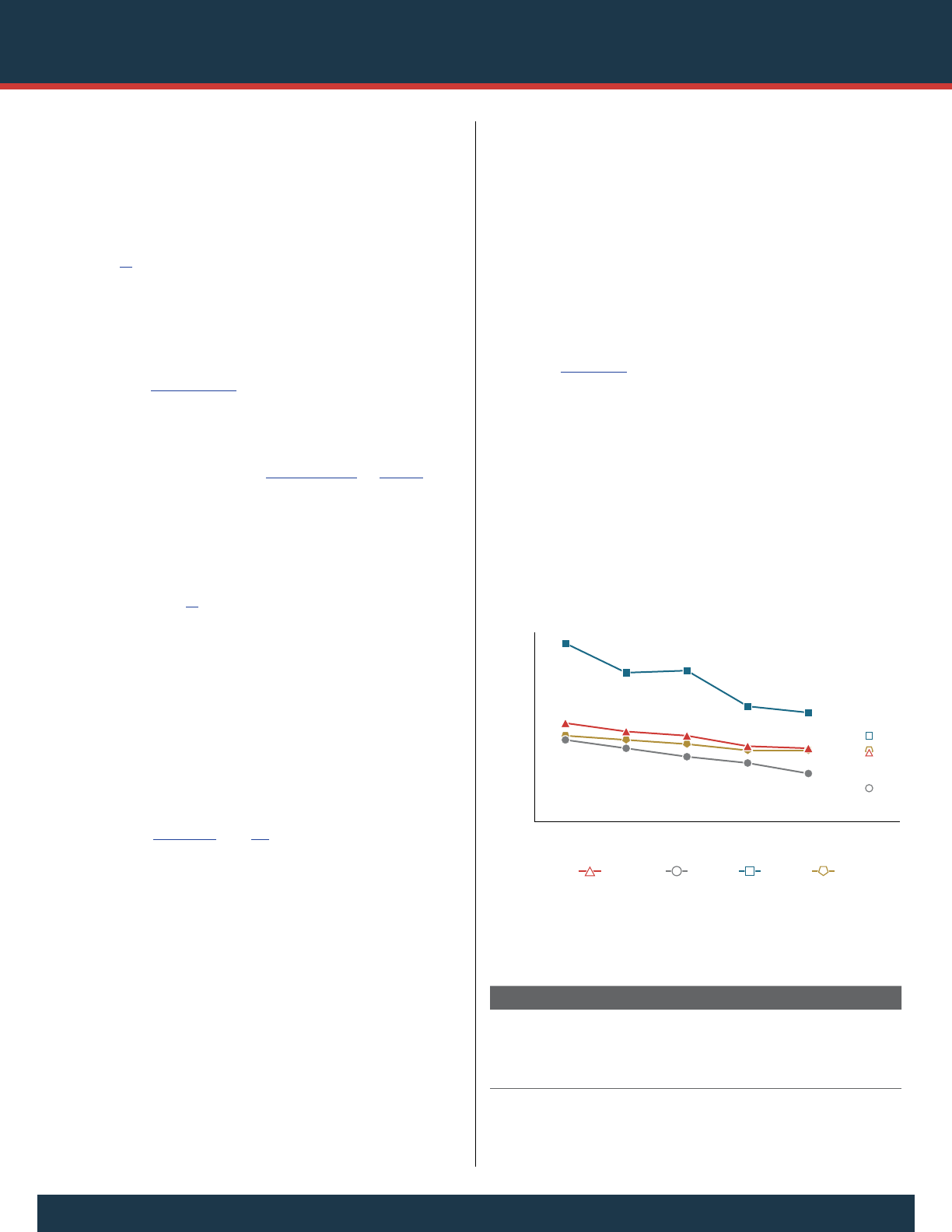
Key Substance Use and Mental Health Indicators in the United States:
Results from the 2020 National Survey on Drug Use and Health18 | October 2021
Benzodiazepine Misuse
Prescription benzodiazepines are a subcategory of drugs
that may be prescribed either as tranquilizers for the
relief of anxiety or as sedatives for the relief of insomnia.
Benzodiazepines prescribed as tranquilizers are typically
metabolized more slowly than benzodiazepines prescribed
as sedatives.
39
Nevertheless, benzodiazepines are chemically
similar, regardless of whether they are prescribed as
tranquilizers or sedatives.
Among people aged 12 or older in 2020, 1.7 percent (or
4.8 million people) misused prescription benzodiazepines
in the past year (Table A.12B). e percentage was highest
among young adults aged 18 to 25 (3.3 percent or 1.1 million
people), followed by adults aged 26 or older (1.6 percent
or 3.5 million people), then by adolescents aged 12 to 17
(0.6 percent or 157,000 people) (Tables A.13B to A.15B).
Pain Reliever Misuse
e 2020 NSDUH assessed the misuse of prescription pain
relievers in the following categories: products containing
hydrocodone, oxycodone, tramadol, codeine, morphine,
prescription fentanyl,
40
buprenorphine, oxymorphone,
and hydromorphone, as well as Demerol
®
, methadone, or
any other prescription pain reliever. is section provides
estimates of the misuse of any prescription pain reliever
and specific subtypes of prescription pain relievers, the
main reason for the most recent misuse of prescription pain
relievers, and where people obtained the prescription pain
relievers that they most recently misused in the past year.
Among people aged 12 or older in 2020, 3.3 percent (or
9.3 million people) misused prescription pain relievers
in the past year (Figures 9 and 16). e percentage was
highest among young adults aged 18 to 25 (4.1 percent or
1.4 million people), followed by adults aged 26 or older
(3.4 percent or 7.5 million people), then by adolescents aged
12 to 17 (1.6 percent or 396,000 people).
Misuse of Subtypes of Pain Relievers
e 2020 NSDUH asked respondents to identify specific
prescription pain relievers they used in the past year, then
asked whether they misused those pain relievers in the
past year. e specific pain relievers people misused in the
past year were categorized into subtypes, such as hydrocodone
products. For example, respondents who reported misusing
the pain relievers Vicodin
®
or hydrocodone were classified as
misusers of hydrocodone products.
is section presents two ways of examining the misuse of
subtypes of pain relievers. First, it presents estimates of the
misuse of subtypes among the total population aged 12 or
older. en it presents estimates of the misuse of subtypes
of pain relievers among people who used that subtype in the
past year.
Among people aged 12 or older in 2020, 1.7 percent (or
4.7 million people) misused hydrocodone products in the
past year (Figure 17). Hydrocodone products were the most
commonly misused subtype of prescription pain relievers
for 2020, including Vicodin
®
, Lortab
®
, Norco
®
, Zohydro
®
ER, and generic hydrocodone. In addition, 1.1 percent (or
3.2 million people) misused oxycodone products in the
past year, including OxyContin
®
, Percocet
®
, Percodan
®
,
Roxicodone
®
, and generic oxycodone. Also, 0.2 percent
of people aged 12 or older (or 690,000 people) misused
buprenorphine products in the past year.
Figure 16. Past Year Prescription Pain Reliever Misuse: Among
People Aged 12 or Older; 2015-2020
Percent Misusing in Past Year
0
1
2
3
4
5
6
7
8
9
202020192018201720162015
12 or OlderAge Category: 12 to 17
Years
18 to 25 26 or Older
Note: There is no connecting line between 2019 and 2020 to indicate caution should be used when
comparing estimates between 2020 and prior years because of methodological changes for 2020.
Due to these changes, significance testing between 2020 and prior years was not performed.
Figure 16 Table. Past Year Prescription Pain Reliever Misuse: Among People
Aged 12 or Older; 2015-2020
Age 2015 2016 2017 2018 2019 2020
12 or Older
4.7 4.3 4.1 3.6 3.5 3.3
12 to 17
3.9 3.5 3.1 2.8 2.3 1.6
18 to 25
8.5 7.1 7.2 5.5 5.2 4.1
26 or Older
4.1 3.9 3.7 3.4 3.4 3.4
Note: The estimate in 2020 is italicized to indicate caution should be used when comparing estimates between
2020 and prior years because of methodological changes for 2020. Due to these changes, significance testing
between 2020 and prior years was not performed.
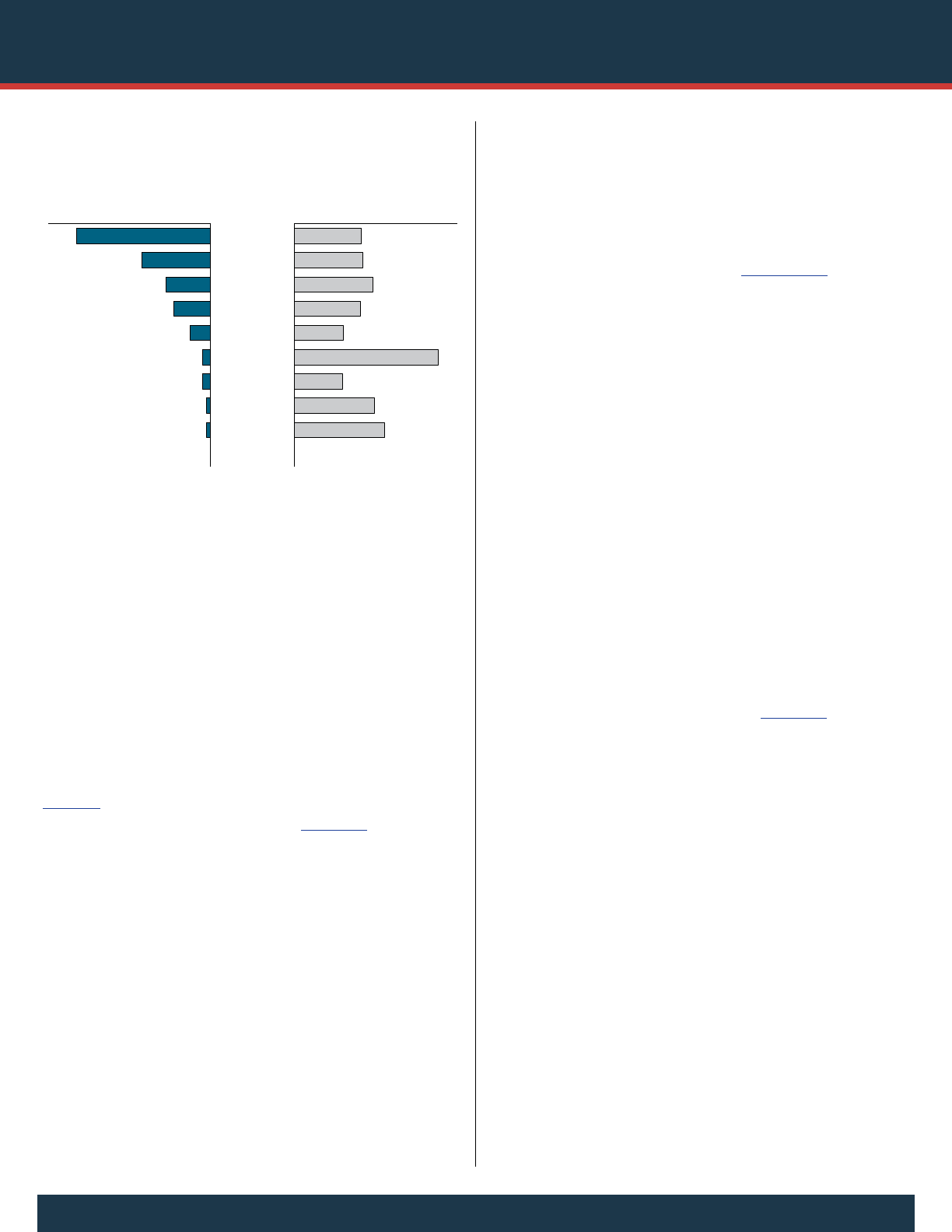
Key Substance Use and Mental Health Indicators in the United States:
Results from the 2020 National Survey on Drug Use and Health October 2021 | 19
An estimated 0.1 percent of people aged 12 or older (or
356,000 people) misused prescription fentanyl products.
Because NSDUH respondents were asked only about
the misuse of prescription forms of fentanyl, estimates of
fentanyl misuse for 2020 may underrepresent people who
used illicitly manufactured fentanyl (IMF) from clandestine
laboratories (i.e., as opposed to the misuse of diverted
prescription fentanyl produced by the pharmaceutical
industry) and may not include those who used IMF mixed
with heroin or sold as heroin (but contained only IMF).
Although prescription pain reliever misuse was the
second most common form of illicit drug use for 2020
(
Figure 9), most past year users of prescription pain relievers
did not misuse them in the past year (Figure 17). For
example, among past year users of hydrocodone products,
12.6 percent misused them in the past year. Among past year
users of buprenorphine products, 26.5 percent misused
them. Stated another way, almost three fourths of past year
users of buprenorphine products did not misuse them in that
period.
Main Reasons for the Last Misuse of Pain Relievers
Respondents in the 2020 NSDUH who reported
prescription pain reliever misuse in the past year were asked
to report the reasons for misusing the last prescription pain
reliever they misused. Respondents who reported more than
one reason for misusing the last prescription pain reliever
were asked to report their main reason for misusing it.
Among people aged 12 or older in 2020 who misused
prescription pain relievers in the past year, the most common
main reason for their last misuse of a pain reliever was to
relieve physical pain (64.6 percent) (Table A.16B). Based on
the NSDUH definition, use without a prescription of one’s
own or overuse of prescribed medication (e.g., use at a higher
dosage or more often than prescribed) are both classified as
misuse even if the use was for the purpose of pain relief.
Other common main reasons for misuse were to feel good
or get high (11.3 percent) and to relax or relieve tension
(8.1 percent). Less common main reasons among past year
misusers of pain relievers included to help with feelings or
emotions (5.6 percent), to help with sleep (4.5 percent),
because they were “hooked” or needed to have the drug
(2.3 percent), to experiment or see what the drug was like
(1.4 percent), and to increase or decrease the effects of other
drugs (0.9 percent).
Source of the Last Pain Reliever That Was Misused
Among people aged 12 or older in 2020 who misused
prescription pain relievers in the past year, the most common
source for the last pain reliever they misused was from a
friend or relative in some way (i.e., being given them, buying
them, or taking them without asking) (
Figure 18). A little
less than half (47.2 percent) of people who misused pain
relievers in the past year obtained the pain relievers the last
time from a friend or relative in some way. Specifically,
34.4 percent of people who misused pain relievers in the
past year obtained pain relievers the last time by getting them
from a friend or relative for free, 9.2 percent bought their
last pain reliever from a friend or relative, and 3.7 percent
took their last pain reliever from a friend or relative without
asking. About two fifths of people who misused pain relievers
in the past year (43.6 percent) obtained pain relievers the
last time through prescription(s) or stole pain relievers from
a health care provider, typically getting the pain relievers
through a prescription from one doctor (42.0 percent).
About 1 in 16 people who misused pain relievers in the
past year (6.2 percent) bought the last pain reliever they
misused from a drug dealer or other stranger.
Figure 17. Past Year Prescription Pain Reliever Misuse: Among
People Aged 12 or Older; by Selected Pain Reliever Subtype, 2020
3.3
1.7
1.1
0.9
0.5
0.2
0.2
0.1
0.1
0.0
0.01.02.03.04.0
Any Misuse
Hydrocodone
Oxycodone
Codeine
Tramadol
Buprenorphine
Morphine
Fentanyl
Hydromorphone
Demerol
Percent among Total Population
12.3
12.6
14.5
12.2
9.0
26.5
8.9
14.8
16.6
*
0 10 20 30
Any Misuse
Hydrocodone
Oxycodone
Codeine
Tramadol
Buprenorphine
Morphine
Fentanyl
Hydromorphone
Demerol
Percent among Past Year Any Users
Any Pain
Reliever Misuse
Hydrocodone
Oxycodone
Codeine
Tramadol
Buprenorphine
Morphine
Fentanyl
Hydromorphone
Demerol
* Low precision; no estimate reported.
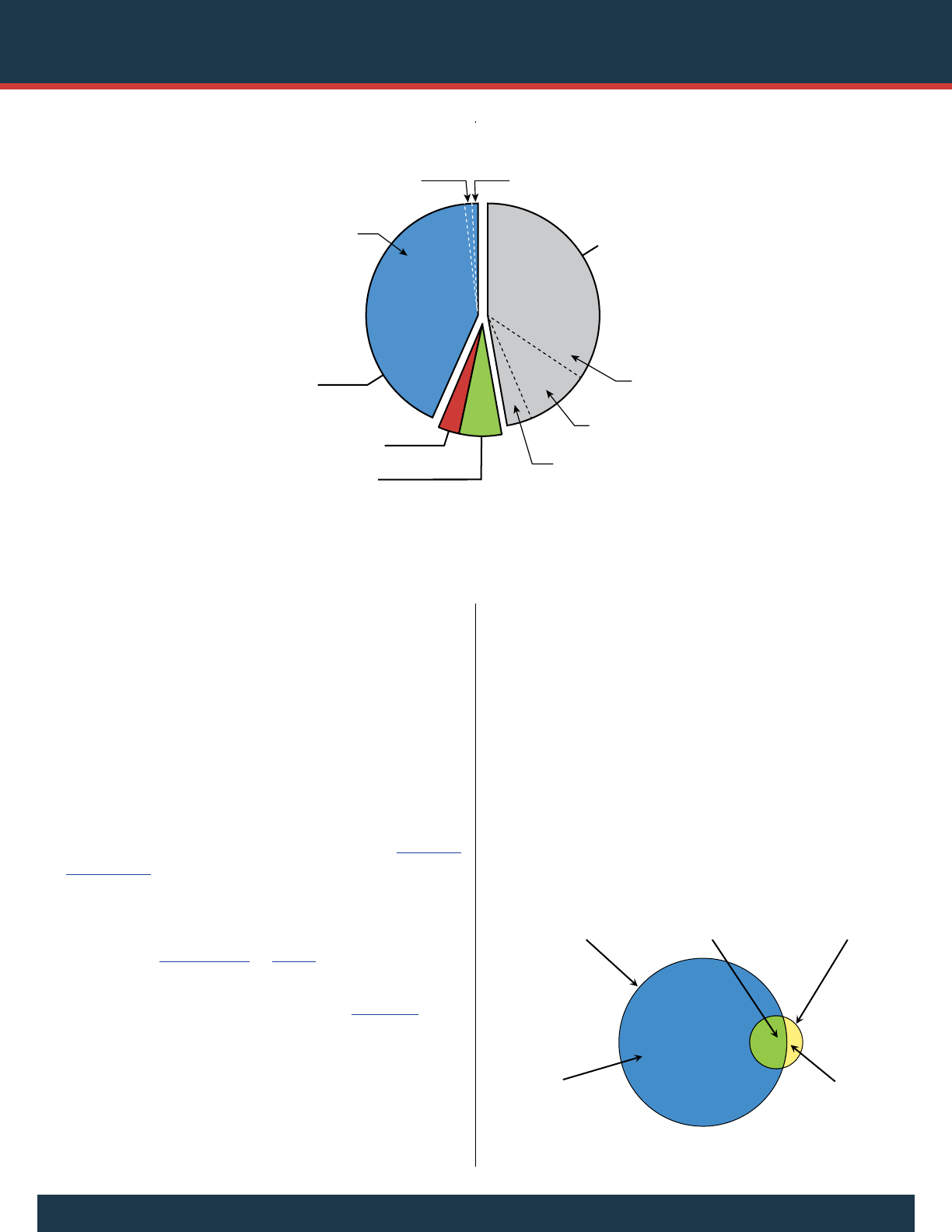
Key Substance Use and Mental Health Indicators in the United States:
Results from the 2020 National Survey on Drug Use and Health20 | October 2021
Opioid Misuse
Opioids are a group of chemically similar drugs that include
heroin and prescription opioids, such as hydrocodone (e.g.,
Vicodin
®
), oxycodone (e.g., OxyContin
®
), and morphine. In
this report, opioid misuse includes the misuse of prescription
pain relievers or the use of heroin. Prescription pain relievers
could include some nonopioids because respondents could
occasionally specify the misuse of other prescription pain
relievers that are not opioids.
Among people aged 12 or older in 2020, 3.4 percent (or
9.5 million people) misused opioids in the past year (Figure 19
and Table A.12B). e percentage was highest among young
adults aged 18 to 25 (4.1 percent or 1.4 million people),
followed by adults aged 26 or older (3.5 percent or 7.7 million
people), then by adolescents aged 12 to 17 (1.6 percent or
396,000 people) (Tables A.13B to A.15B).
e vast majority of people who misused opioids in the
past year misused prescription pain relievers (Figure 19).
Specifically, 9.3 million people aged 12 or older misused
prescription pain relievers in the past year compared with
902,000 people who used heroin. In 2020, the majority
of the 9.3 million misusers of prescription pain relievers
misused only prescription pain relievers in the past year
(8.6 million people), but they had not used heroin. An
estimated 667,000 people misused prescription pain
relievers and used heroin in the past year, and 235,000
people had used heroin in the past year but had not misused
prescription pain relievers.
Central Nervous System Stimulant Misuse
Central nervous system (CNS) stimulants are a group
of drugs that include cocaine, methamphetamine, and
prescription stimulants. ese drugs act in similar ways to
stimulate the brain. ey produce stimulant effects, such
Figure 18. Source Where Pain Relievers Were Obtained for Most Recent Misuse: Among People Aged
12 or Older Who Misused Pain Relievers in the Past Year; 2020
9.3 Million People Aged 12 or Older Who Misused Pain Relievers in the Past Year
Given by, Bought from, or Took from
a Friend or Relative
47.2%
Bought from Drug Dealer or Other Stranger
6.2%
Some Other Way
3.1%
Got through Prescription(s) or
Stole from a Health Care Provider
43.6%
Prescription from One Doctor (42.0%)
Prescriptions from More Than One Doctor (1.0%) Stole from Doctor's Office, Clinic, Hospital, or Pharmacy (0.6%)
From Friend or Relative for Free (34.4%)
Took from Friend or Relative without Asking (3.7%)
Bought from Friend or Relative (9.2%)
Note: Respondents with unknown data for the Source for Most Recent Misuse or who reported Some Other Way but did not specify a valid way were excluded.
Note: The percentages do not add to 100percent due to rounding.
Figure 19. Past Year Opioid Misuse: Among People Aged 12 or
Older; 2020
8.6 Million People with Pain
Reliever Misuse Only
(90.5% of Opioid Misusers)
9.3 Million People
with Pain Reliever Misuse
(97.5% of Opioid Misusers)
667,000 People with
Pain Reliever Misuse and
Heroin Use
(7.0% of Opioid Misusers)
902,000 People
with Heroin Use
(9.5% of Opioid Misusers)
235,000 People with
Heroin Use Only
(2.5% of Opioid Misusers)
9.5 Million People Aged 12 or Older with Past Year Opioid Misuse
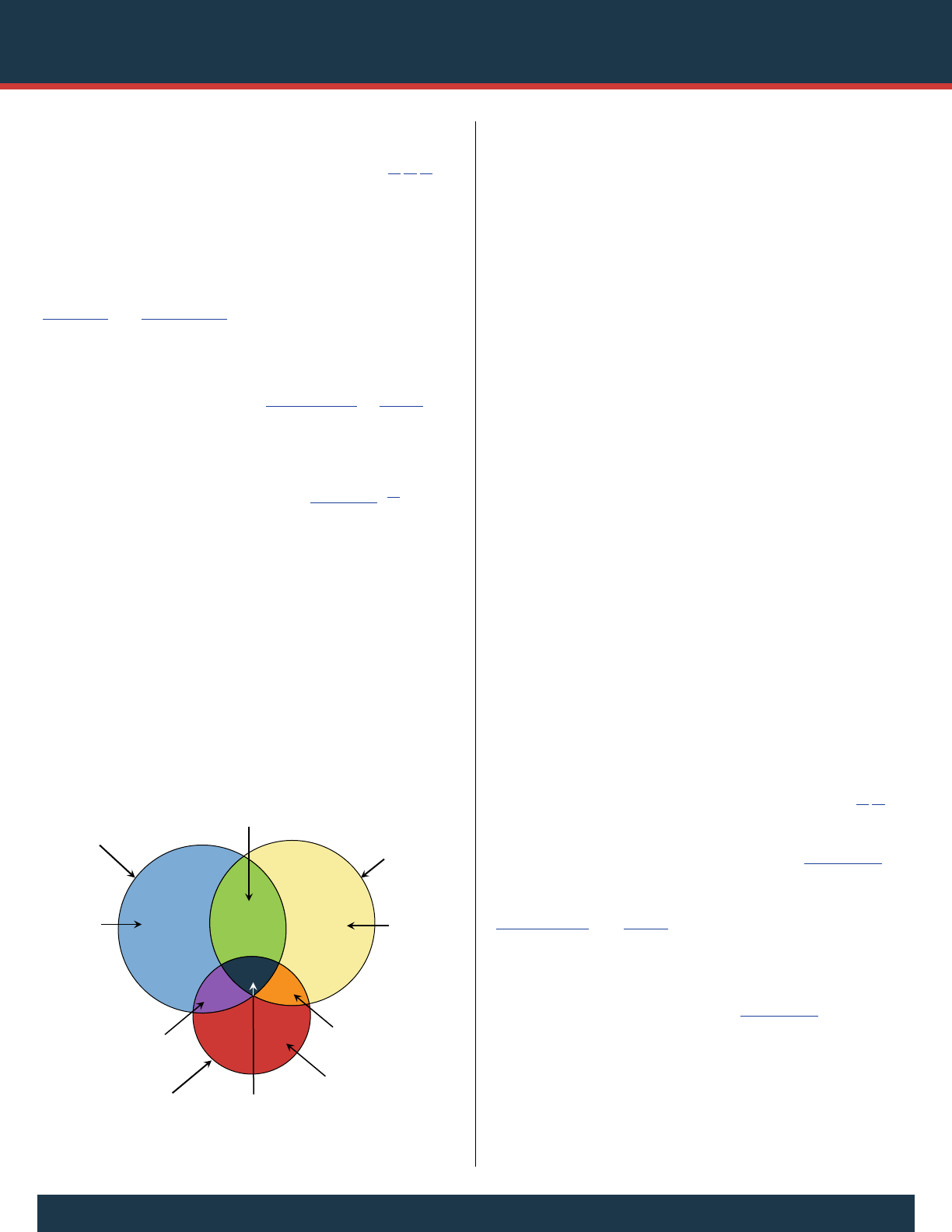
Key Substance Use and Mental Health Indicators in the United States:
Results from the 2020 National Survey on Drug Use and Health October 2021 | 21
as increased alertness, wakefulness, or energy. ey also can
produce physical side effects of rapid or irregular heartbeat
or increased blood pressure and body temperature.
41,42,43
In this report, CNS stimulant misuse includes the use of
cocaine or methamphetamine or the misuse of prescription
stimulants.
Among people aged 12 or older in 2020, 3.7 percent (or
10.3 million people) misused CNS stimulants in the past year
(Figure 20 and Table A.12B). e percentage was highest
among young adults aged 18 to 25 (7.7 percent or 2.6 million
people), followed by adults aged 26 or older (3.4 percent
or 7.4 million people), then by adolescents aged 12 to 17
(1.4 percent or 346,000 people) (Tables A.13B to A.15B).
Of the 10.3 million people in 2020 who misused CNS
stimulants in the past year, 353,000 used or misused all
three CNS stimulants in the past year (3.4 percent of
people who misused CNS stimulants) (Figure 20).
13
About
one third of people who misused CNS stimulants in the
past year used only cocaine (32.4 percent of CNS stimulant
misusers or 3.3 million people), about one third misused
only prescription stimulants (32.3 percent of CNS stimulant
misusers or 3.3 million people), and about 1 in 7 used
only methamphetamine (14.4 percent of CNS stimulant
misusers or 1.5 million people). In addition to the 353,000
people who used or misused all three CNS stimulants in
the past year, 1.1 million people used cocaine and misused
prescription stimulants but did not use methamphetamine
(10.5 percent of CNS stimulant misusers), 391,000
used cocaine and methamphetamine but did not misuse
prescription stimulants (3.8 percent of CNS stimulant
misusers), and 326,000 used methamphetamine and misused
prescription stimulants but did not use cocaine (3.2 percent
of CNS stimulant misusers).
Other Substance Use in the Past Year
e 2020 NSDUH obtained information for the use and
misuse of additional substances that can produce mind-
altering effects. Not including these substances in estimates
from prior years has allowed the creation of consistent illicit
drug use measures over time. ese substances include
GHB, the misuse of nonprescription cold and cough
medicine, kratom, synthetic marijuana (fake weed, K2, or
Spice), and synthetic stimulants (“bath salts” or flakka).
e 2020 NSDUH marks the first time that information
was collected on the use of synthetic cannabinoids (referred
to in the NSDUH questionnaire as “synthetic marijuana”)
and synthetic cathinones (referred to in the questionnaire as
“synthetic stimulants”).
GHB Use
Gamma hydroxybutyrate (GHB, also called “G,” “Georgia
Home Boy,” “Grievous Bodily Harm,” or “Liquid G,”)
is a CNS depressant. GHB can produce hallucinations,
euphoria, drowsiness, decreased anxiety, and excited and
aggressive behavior. It also is addictive. GHB that is not
produced as a pharmaceutical product with approval from
the U.S. Food and Drug Administration is classified as a
Schedule I controlled substance in the United States.
44,45
Among people aged 12 or older in 2020, 0.1 percent (or
183,000 people) used GHB in the past year (Table A.8B).
In addition, 0.1 percent each of young adults aged 18 to
25 and adults aged 26 or older used GHB in the past year
(Tables A.10B and A.11B). Corresponding estimated
numbers of people who used GHB in the past year were
24,000 young adults and 158,000 adults aged 26 or older.
Estimates for adolescents aged 12 to 17 could not be
calculated with sufficient precision (
Table A.9B).
Nonprescription Cough and Cold Medicine Misuse
e cough suppressant dextromethorphan (DXM) is
found in many cough and cold medicines. ese medicines
are available without a prescription (i.e., OTC) in the
United States and are generally considered safe when used
Figure 20. Past Year Central Nervous System (CNS) Stimulant
Misuse: Among People Aged 12 or Older; 2020
5.2 Million People
Used Cocaine
Cocaine
Use Only
Prescription
Stimulant
Misuse Only
5.1 Million People
Misused Prescription
Stimulants
3.3
Million
1.5
Million
3.3
Million
10.3 Million People Aged 12 or Older with Past Year CNS Stimulant Misuse
Methamphetamine
Use Only
2.5 Million People Used
Methamphetamine
391K
353K
326K
1.1
Million
Cocaine and
Methamphetamine Use,
but Not Prescription
Stimulant Misuse
Methamphetamine
Use and Prescription
Stimulant Misuse, but
Not Cocaine Use
Cocaine and Prescription Stimulant
Misuse, but Not Methamphetamine Use
Cocaine and
Methamphetamine Use and
Prescription Stimulant Misuse
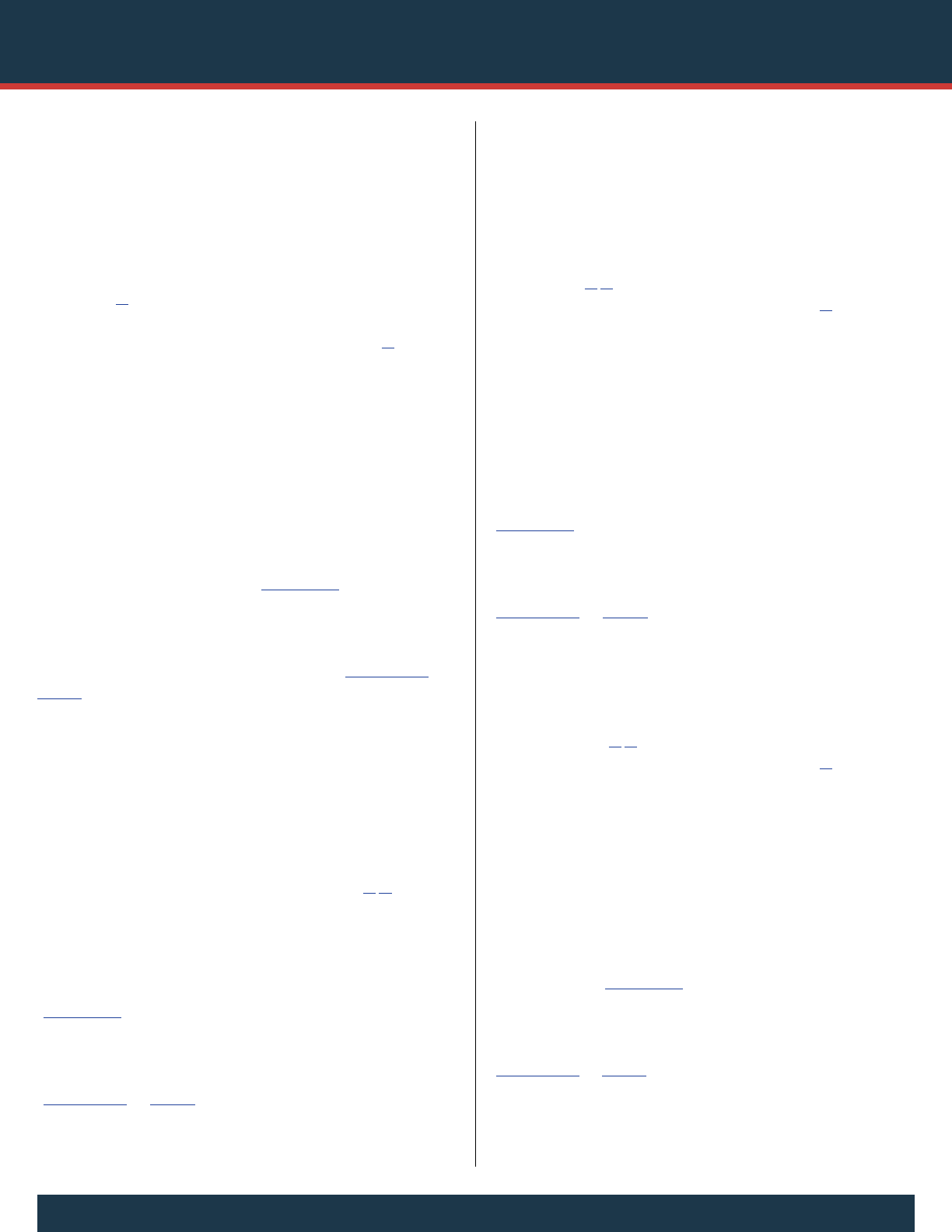
Key Substance Use and Mental Health Indicators in the United States:
Results from the 2020 National Survey on Drug Use and Health22 | October 2021
appropriately. When taken in large amounts, however,
DXM can produce hallucinations or dissociative, “out-
of-body” experiences. ese effects are similar to those
caused by the hallucinogens PCP and ketamine. Other
drugs found in OTC cough and cold medicines also
can have psychoactive effects. For example, the OTC
antihistamine diphenhydramine (found in the brand-name
drug Benadryl
®
) can produce sedative side effects, such as
drowsiness.
46
e OTC decongestant phenylephrine (found
in the brand-name drug Sudafed PE
®
) can produce stimulant
side effects, such as nervousness and sleeplessness.
47
e 2020 NSDUH questionnaire asked respondents aged
12 or older about their use of nonprescription cough or cold
medicines in the past 12 months for the purpose of getting
high (i.e., “misuse”). Respondents who reported that they
used nonprescription (i.e., OTC) cough or cold medicines
to get high in the past 12 months could specify the names of
up to five OTC medicines that they had misused.
Among people aged 12 or older in 2020, 0.9 percent (or
2.4 million people) misused nonprescription cough and
cold medicines in the past year (Table A.8B). Similar
percentages of people in each age group misused cough and
cold medicines in the past year (0.9 percent of adolescents
aged 12 to 17, 1.2 percent of young adults aged 18 to 25,
and 0.8 percent of adults aged 26 or older) (Tables A.9B to
A.11B). Corresponding estimated numbers of people who
misused cough and cold medicines in the past year were
223,000 adolescents, 389,000 young adults, and 1.8 million
adults aged 26 or older.
Kratom Use
Kratom is an herbal extract from the leaves of the Mitragyna
speciosa tree that is native to Southeast Asia. e leaves
contain chemicals with mind-altering effects. Kratom can
come in forms such as powders, pills, or leaves.
48,49
e
2020 NSDUH asked respondents aged 12 or older about
their use of kratom in the 12 months before the interview.
Among people aged 12 or older in 2020, 0.8 percent
(or 2.1 million people) used kratom in the past year
(Table A.8B). e percentage was lower among adolescents
aged 12 to 17 (0.2 percent or 48,000 people) than among
young adults aged 18 to 25 (0.9 percent or 286,000 people)
or adults aged 26 or older (0.8 percent or 1.8 million people)
(Tables A.9B to A.11B).
Synthetic Marijuana Use
Synthetic cannabinoids are human-made chemicals that
are similar to chemicals found in the marijuana plant. For
this reason, these drugs are sometimes called “synthetic
marijuana” or “fake weed.” ey can be contained in plant
material that is later smoked. ey are also sold as liquids
to be vaporized (i.e., vaped) and inhaled in e-cigarettes and
other devices.
44,50
Several synthetic cannabinoids have been
categorized as Schedule I controlled substances.
45
For simplicity, the 2020 NSDUH questionnaire asked
respondents about their use of “synthetic marijuana” and
included the slang terms “fake weed,” “K2,” and “Spice.”
e 2020 NSDUH asked respondents aged 12 or older
about their use of synthetic marijuana or fake weed in the
12 months before the interview.
Among people aged 12 or older in 2020, 0.4 percent (or
1.1 million people) used synthetic marijuana in the past year
(Table A.8B). e percentage was lower among adults aged
26 or older (0.3 percent or 546,000 people) than among
adolescents aged 12 to 17 (0.8 percent or 207,000 people) or
young adults aged 18 to 25 (0.9 percent or 313,000 people)
(Tables A.9B to A.11B).
Synthetic Stimulant Use
Synthetic cathinones are human-made CNS stimulants that
are chemically related to cathinone, a substance found in
the khat plant. ese substances can be marketed as “bath
salts” or “flakka.”
44,51
Several synthetic cathinones have been
categorized as Schedule I controlled substances.
45
For simplicity, the 2020 NSDUH questionnaire asked
respondents about their use of “synthetic stimulants” and
included the slang terms “bath salts” and “flakka.” e 2020
NSDUH asked respondents aged 12 or older about their use
of synthetic stimulants, also called “bath salts” or flakka, in
the 12 months before the interview.
Among people aged 12 or older in 2020, less than
0.1 percent (or 118,000 people) used synthetic stimulants
in the past year (Table A.8B). Similar percentages of people
in each age group used synthetic stimulants (less than
0.1 percent each of adolescents aged 12 to 17 and adults
aged 26 or older; 0.1 percent of young adults aged 18 to 25)
(Tables A.9B to A.11B). In each age group, 75,000 or fewer
people used synthetic stimulants.
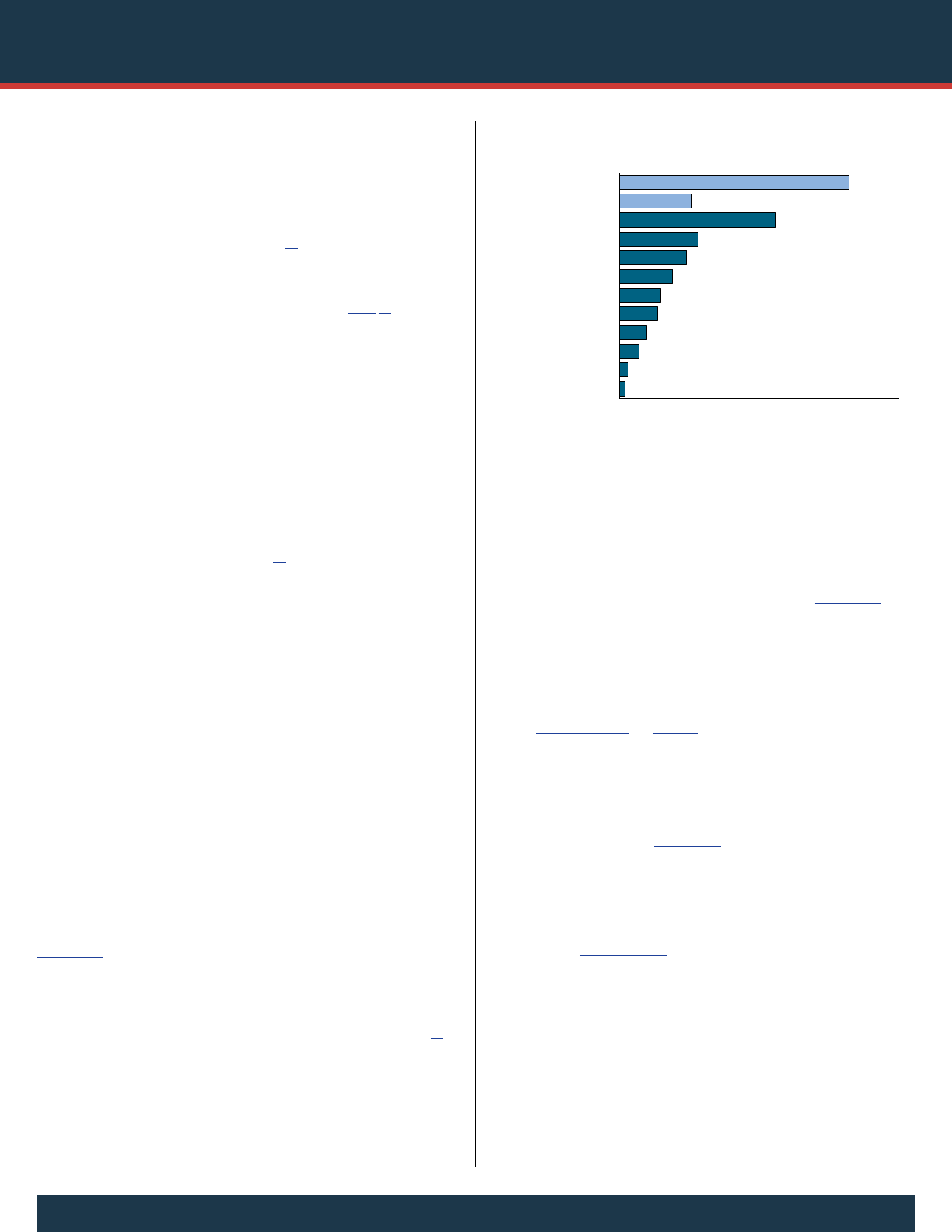
Key Substance Use and Mental Health Indicators in the United States:
Results from the 2020 National Survey on Drug Use and Health October 2021 | 23
Initiation of Substance Use
e 2020 NSDUH included questions to measure the
initiation of substance use, that is, use of particular substances
for the first time during a person’s lifetime.
52
is report
presents the estimated number of recent substance use initiates
or prescription drug misuse initiates.
53
Recent initiates were
substance users or prescription drug misusers who reported
first using or misusing, respectively, a particular substance in
the 12 months before the NSDUH interview.
14,54,55
In particular, this report presents estimates for past year
initiation of heroin use, prescription pain reliever misuse,
prescription tranquilizer misuse, and prescription sedative
misuse, separately. e report does not present estimates for
past year initiation of any opioid (heroin or prescription pain
reliever) misuse, any illicit drug use (including prescription
drug misuse), and any prescription tranquilizer or sedative
misuse because respondents who underreported lifetime
(but not past year) misuse of prescription drugs might
not truly be past year initiates of the use or misuse of any
drug in these aggregate categories.
56
Estimates for the past
year initiation of benzodiazepine misuse are not presented
because some benzodiazepines in NSDUH were included as
tranquilizers, and others were included as sedatives.
57
Because only limited data were collected from April to
September 2020, this report does not present estimates for
2020 for the average numbers of initiates per day. In prior
years, these averages were calculated by dividing the total
number of past year initiates by 365 days and assumed
generally continuous data collection across the entire
12 months. Estimates from the 2020 NSDUH for the
average number of initiates per day also could be misleading
because 2020 included periods when people in certain states
and localities were under increased restrictions to contain
the spread of COVID-19. ese periods of restrictions could
have changed the opportunities to initiate substance use
among members of certain subgroups.
Figure 21 provides an overview of the numbers of people
aged 12 or older in 2020 who were past year initiates for the
substances discussed in this section. In the past 12 months,
4.1 million people initiated alcohol use and 1.3 million
people tried a cigarette for the first time in their lifetime.
58
ere also were 2.8 million new marijuana users, 1.4 million
new hallucinogen users, 1.2 million new misusers of
prescription pain relievers, 950,000 new misusers of
prescription tranquilizers, and 734,000 new misusers of
prescription stimulants.
Initiation of Cigarette Use
Among people aged 12 or older in 2020, 1.3 million people
initiated cigarette smoking in the past year (i.e., never
smoked cigarettes before the past 12 months) (Figure 21).
Relatively few people (approximately 10 percent of past year
initiates) tried cigarettes for the first time after age 25.
Corresponding numbers of initiates of cigarette smoking by
age group were 385,000 adolescents aged 12 to 17, 752,000
young adults aged 18 to 25, and 127,000 adults aged 26 or
older (
Tables A.19A to A.21A).
Initiation of Alcohol Use
Among people aged 12 or older in 2020, 4.1 million people
initiated alcohol use in the past year, not counting sips from
another person’s drink (Figure 22). Among young adults
aged 18 to 25 in 2020, 2.1 million people initiated alcohol
use in the past year. Corresponding numbers for initiation
of alcohol use for adolescents aged 12 to 17 and adults aged
26 or older were 1.8 million people and 176,000 people,
respectively (Table A.21A). Consistent with the pattern of
cigarette smoking initiation, relatively few people in 2020
started to use alcohol after age 25.
Initiation of Marijuana Use
Among people aged 12 or older in 2020, 2.8 million people
initiated marijuana use in the past year (Figure 23). Among
adolescents aged 12 to 17, 1.0 million people initiated
marijuana use in the past year. Corresponding numbers
for young adults aged 18 to 25 and adults aged 26 or older
Figure 21. Past Year Initiates of Substances: Among People Aged
12 or Older; 2020
4.1M
1.3M
2.8M
1.4M
1.2M
950,000
734,000
678,000
489,000
343,000
153,000
103,000
0 1 2 3 4 5
Alcohol
Cigarettes
Marijuana
Hallucinogens
Rx Pain Reliever Misuse
Rx Tranquilizer Misuse
Rx Stimulant Misuse
Inhalants
Cocaine
Rx Sedative Misuse
Methamphetamine
Heroin
Past Year Initiates
Rx = prescription.
Note: Estimates for prescription pain relievers, prescription tranquilizers, prescription stimulants, and
prescription sedatives are for the initiation of misuse.
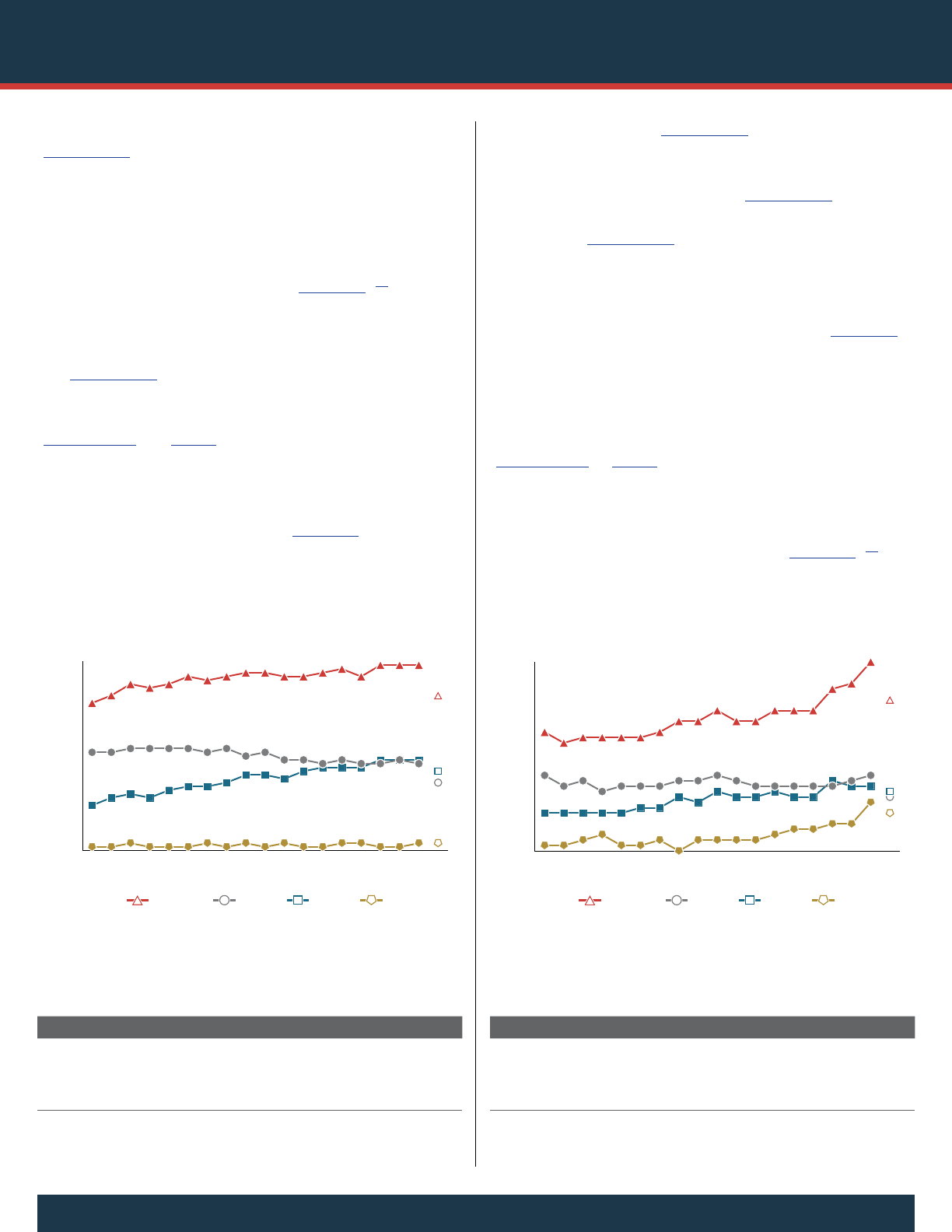
Key Substance Use and Mental Health Indicators in the United States:
Results from the 2020 National Survey on Drug Use and Health24 | October 2021
were 1.1 million people and 664,000 people, respectively
(Table A.21A). Unlike people who initiated cigarette or
alcohol use, almost 25 percent of people in 2020 who
initiated marijuana use in the past year were aged 26 or older.
Initiation of Cocaine Use
Among people aged 12 or older in 2020, 489,000 people
initiated cocaine use in the past year (Figure 21).
59
Approximately 70 percent of past year initiates tried cocaine
for the first time between ages 18 and 25. Among young
adults aged 18 to 25, 341,000 people initiated cocaine
use (
Table A.20A). Corresponding numbers of initiates
for adolescents aged 12 to 17 and adults aged 26 or older
were 82,000 people and 66,000 people, respectively
(
Tables A.19A and A.21A).
Initiation of Heroin Use
Among people aged 12 or older in 2020, 103,000 people
initiated heroin use in the past year (Figure 21). Among
adolescents aged 12 to 17, the number of people who
initiated heroin use in the past year was not reported due to
low statistical precision (Table A.19A). Nearly 90 percent of
past year initiates in 2020 tried heroin for the first time after
age 25. Among young adults aged 18 to 25, 12,000 people
initiated heroin use in the past year (Table A.20A). Among
adults aged 26 or older, 91,000 people initiated heroin use in
the past year (Table A.21A).
Initiation of Methamphetamine Use
Among people aged 12 or older in 2020, 153,000 people
initiated methamphetamine use in the past year (Figure 21).
Relative to people in other age groups, few adolescents aged
12 to 17 initiated methamphetamine use in the past year.
Numbers of initiates of methamphetamine use by age
group were 6,000 adolescents aged 12 to 17, 51,000 young
adults aged 18 to 25, and 97,000 adults aged 26 or older
(
Tables A.19A to A.21A).
Initiation of Hallucinogen Use
Among people aged 12 or older in 2020, 1.4 million people
initiated hallucinogen use in the past year (Figure 21).
59
Corresponding numbers of initiates of hallucinogen use by
Figure 23. Past Year Marijuana Initiates: Among People Aged 12
or Older; 2002-2020
Past Year Initiates (in Millions)
0.0
0.5
1.0
1.5
2.0
2.5
3.0
3.5
20191817161514131211100908070605040302
12 or OlderAge Category: 12 to 17
Years
18 to 25 26 or Older
Note: There is no connecting line between 2019 and 2020 to indicate caution should be used when
comparing estimates between 2020 and prior years because of methodological changes for 2020.
Due to these changes, significance testing between 2020 and prior years was not performed.
Figure 23 Table. Past Year Marijuana Initiates: Among People Aged 12 or
Older (in Millions); 2002-2020
Age 02 03 04 05 06 07 08 09 10 11 12 13 14 15 16 17 18 19 20
≥12
2.2 2.0 2.1 2.1 2.1 2.1 2.2 2.4 2.4 2.6 2.4 2.4 2.6 2.6 2.6 3.0 3.1 3.5
2.8
12-17
1.4 1.2 1.3 1.1 1.2 1.2 1.2 1.3 1.3 1.4 1.3 1.2 1.2 1.2 1.2 1.2 1.3 1.4
1.0
18-25
0.7 0.7 0.7 0.7 0.7 0.8 0.8 1.0 0.9 1.1 1.0 1.0 1.1 1.0 1.0 1.3 1.2 1.2
1.1
≥26
0.1 0.1 0.2 0.3 0.1 0.1 0.2 0.0 0.2 0.2 0.2 0.2 0.3 0.4 0.4 0.5 0.5 0.9
0.7
Note: The estimate in 2020 is italicized to indicate caution should be used when comparing estimates between
2020 and prior years because of methodological changes for 2020. Due to these changes, significance testing
between 2020 and prior years was not performed.
Note: Estimates of less than 0.05million round to 0.0million when shown to the nearest tenth of a million.
Figure 22. Past Year Alcohol Initiates: Among People Aged 12 or
Older; 2002-2020
Past Year Initiates (in Millions)
0
1
2
3
4
5
20191817161514131211100908070605040302
12 or OlderAge Category: 12 to 17
Years
18 to 25 26 or Older
Note: There is no connecting line between 2019 and 2020 to indicate caution should be used when
comparing estimates between 2020 and prior years because of methodological changes for 2020.
Due to these changes, significance testing between 2020 and prior years was not performed.
Figure 22 Table. Past Year Alcohol Initiates: Among People Aged 12 or Older
(in Millions); 2002-2020
Age 02 03 04 05 06 07 08 09 10 11 12 13 14 15 16 17 18 19 20
≥12
3.9 4.1 4.4 4.3 4.4 4.6 4.5 4.6 4.7 4.7 4.6 4.6 4.7 4.8 4.6 4.9 4.9 4.9
4.1
12-17
2.6 2.6 2.7 2.7 2.7 2.7 2.6 2.7 2.5 2.6 2.4 2.4 2.3 2.4 2.3 2.3 2.4 2.3
1.8
18-25
1.2 1.4 1.5 1.4 1.6 1.7 1.7 1.8 2.0 2.0 1.9 2.1 2.2 2.2 2.2 2.4 2.4 2.4
2.1
≥26
0.1 0.1 0.2 0.1 0.1 0.1 0.2 0.1 0.2 0.1 0.2 0.1 0.1 0.2 0.2 0.1 0.1 0.2
0.2
Note: The estimate in 2020 is italicized to indicate caution should be used when comparing estimates between
2020 and prior years because of methodological changes for 2020. Due to these changes, significance testing
between 2020 and prior years was not performed.
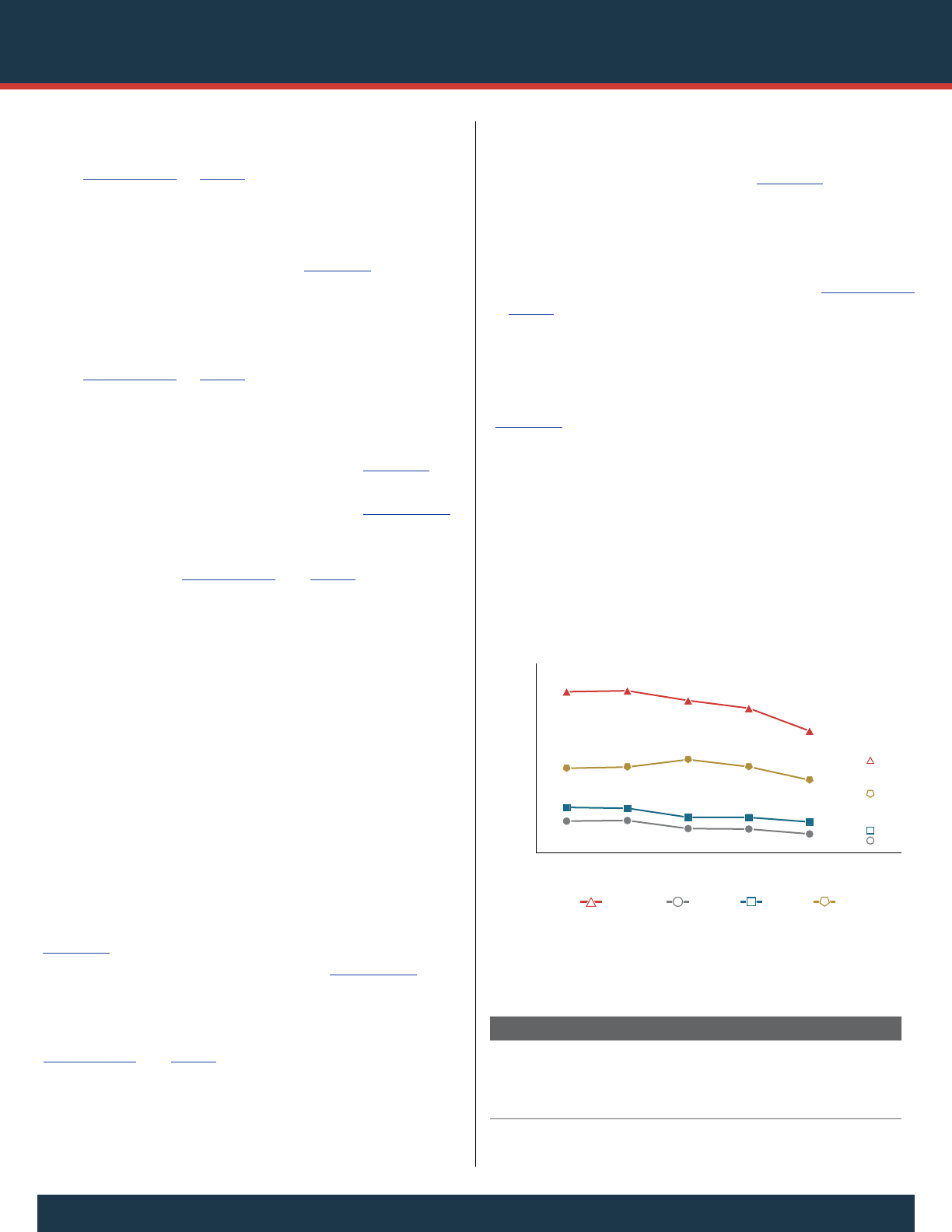
Key Substance Use and Mental Health Indicators in the United States:
Results from the 2020 National Survey on Drug Use and Health October 2021 | 25
age group were 251,000 adolescents aged 12 to 17, 785,000
young adults aged 18 to 25, and 376,000 adults aged 26 or
older (
Tables A.19A to A.21A).
Initiation of Inhalant Use
Among people aged 12 or older in 2020, 678,000 people
initiated inhalant use in the past year (Figure 21). About half
of past year initiates tried inhalants for the first time between
age 12 and 17. Numbers of initiates of inhalant use by age
group were 360,000 adolescents aged 12 to 17, 201,000
young adults aged 18 to 25, and 117,000 adults aged 26 or
older (
Tables A.19A to A.21A).
Initiation of Prescription Stimulant Misuse
Among people aged 12 or older in 2020, 734,000 initiated
prescription stimulant misuse in the past year (Figure 21).
Among adults aged 26 or older, 324,000 people initiated
prescription stimulant misuse in the past year (Table A.21A).
Corresponding numbers for young adults aged 18 to 25 and
adolescents aged 12 to 17 were 294,000 people and 116,000
people, respectively (
Tables A.19A and A.20A).
Initiation of Prescription Tranquilizer or Sedative
Misuse
Although this report includes combined estimates for the
past year misuse of prescription tranquilizers or sedatives,
estimates for the initiation of misuse of these substances are
presented separately in this section. As noted previously, it
cannot be determined unambiguously whether respondents
were past year initiates for the aggregate category of any
tranquilizer or sedative misuse because of the potential for
respondents to underreport the misuse of prescription drugs
that occurred more than 12 months ago.
Initiation of Prescription Tranquilizer Misuse
Among people aged 12 or older in 2020, 950,000 people
initiated prescription tranquilizer misuse in the past year
(Figure 21). Among adults aged 26 or older, 557,000 people
initiated prescription tranquilizer misuse (Table A.21A).
Among young adults aged 18 to 25 and adolescents
aged 12 to 17, 290,000 and 103,000 people initiated
prescription tranquilizer misuse in the past year, respectively
(Tables A.19A and A.20A).
Initiation of Prescription Sedative Misuse
Among people aged 12 or older in 2020, 343,000 people
initiated prescription sedative misuse (Figure 21). Nearly
three fourths of past year initiates tried prescription sedatives
for the first time after age 25. Corresponding numbers of
initiates of prescription sedative misuse by age group were
18,000 adolescents aged 12 to 17, 77,000 young adults aged
18 to 25, and 249,000 adults aged 26 or older (
Tables A.19A
to A.21A).
Initiation of Prescription Pain Reliever Misuse
Among people aged 12 or older in 2020, 1.2 million people
initiated prescription pain reliever misuse in the past year
(Figure 24). Nearly two thirds of past year initiates tried
prescription pain relievers for the first time after age 25.
Among adults aged 26 or older, 774,000 people initiated
prescription pain reliever misuse. Among young adults
aged 18 to 25 and adolescents aged 12 to 17, the numbers
of people who initiated prescription pain reliever misuse
in the past year were 290,000 people and 158,000 people,
respectively.
Figure 24. Past Year Prescription Pain Reliever Misuse Initiates:
Among People Aged 12 or Older; 2015-2020
Past Year Initiates (in Thousands)
0
500
1,000
1,500
2,000
2,500
202020192018201720162015
12 or OlderAge Category: 12 to 17
Years
18 to 25 26 or Older
Note: There is no connecting line between 2019 and 2020 to indicate caution should be used when
comparing estimates between 2020 and prior years because of methodological changes for 2020.
Due to these changes, significance testing between 2020 and prior years was not performed.
Figure 24 Table. Past Year Prescription Pain Reliever Misuse Initiates:
Among People Aged 12 or Older; 2015-2020
Age 2015 2016 2017 2018 2019 2020
12 or Older
2,126 2,139 2,010 1,908 1,607 1,223
12 to 17
415 423 316 310 245 158
18 to 25
596 585 465 464 404 290
26 or Older
1,114 1,130 1,229 1,134 958 774
Note: The estimate in 2020 is italicized to indicate caution should be used when comparing estimates between
2020 and prior years because of methodological changes for 2020. Due to these changes, significance testing
between 2020 and prior years was not performed.
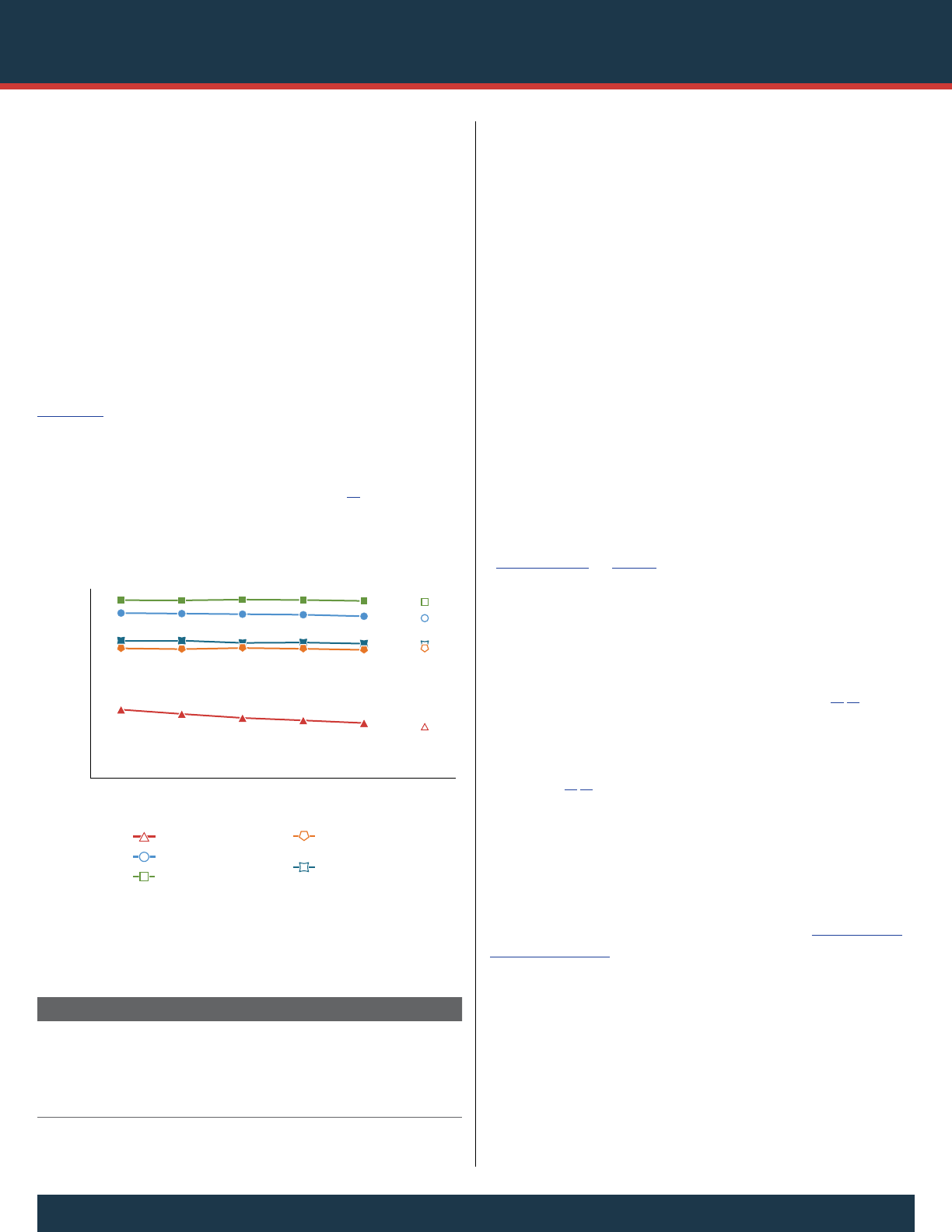
Key Substance Use and Mental Health Indicators in the United States:
Results from the 2020 National Survey on Drug Use and Health26 | October 2021
Perceived Risk from Substance Use
One factor that can influence whether people will use
tobacco, alcohol, or illicit drugs is the extent to which
they believe that using these substances might cause harm.
In 2020, NSDUH respondents were asked how much they
thought people risk harming themselves physically and
in other ways when they use various substances in certain
amounts or frequencies. Response choices for these items
were “great risk,” “moderate risk,” “slight risk,” or “no risk.”
Depending on the substance, respondents were asked about
their perceived risk of harm from using a substance daily or
using a substance once or twice a week (i.e., weekly use).
Figure 25 presents the percentages of people aged 12 or older
in 2015 to 2020 who perceived great risk of harm from the
use of various substances. Risk perceptions across substances
are not compared because of variations in the quantity
and frequency of use across these substances.
60
e 2020
NSDUH detailed tables include additional measures of risk
perceptions from substance use.
Among people aged 12 or older in 2020, 70.7 percent of
people perceived great risk of harm from smoking one or
more packs of cigarettes a day, and 68.7 percent perceived
great risk from having four or five alcoholic drinks nearly
every day. (For brevity, this level of alcohol consumption
on a single day is subsequently referred to as “daily binge
drinking.”) Percentages of people who perceived great risk
from cocaine or heroin use once or twice a week were 84.7
and 93.2 percent, respectively. In contrast, about one fourth
of people (27.4 percent) perceived great risk from smoking
marijuana once or twice a week.
In 2020, perceptions of great risk of harm from substance
use varied by substance and age. For example, adults aged
26 or older were more likely than adolescents aged 12 to
17 or young adults aged 18 to 25 to perceive great risk of
harm from smoking one or more packs of cigarettes per day
or to perceive great risk of harm from daily binge drinking
(
Tables A.23B to A.25B).
Young adults aged 18 to 25 in 2020 were less likely than
adolescents aged 12 to 17 or adults aged 26 or older to
perceive great risk of harm from smoking marijuana weekly.
Research has identified associations among adults between
decreases in perceptions of great risk of harm from smoking
marijuana weekly and increases in marijuana use.
61,62
Nevertheless, people can experience adverse effects from
marijuana use, such as marijuana use disorder or injury
resulting from operating a motor vehicle while impaired by
marijuana.
63,64
erefore, it is necessary to educate young
adults about adverse effects of marijuana use.
Finally, adolescents aged 12 to 17 in 2020 were less likely
than young adults aged 18 to 25 or adults aged 26 or older
to perceive great risk from using heroin or cocaine weekly.
Additional data on finer age group categories that can be
found in the 2020 detailed tables (available at https://www.
samhsa.gov/data/) indicate that the lower likelihood of
adolescents than adults to perceive great risk of harm from
cocaine and heroin use may be attributable to a general lack
of knowledge about these substances among adolescents
because younger adolescents aged 12 or 13 tended to have
lower perceptions of the risk of harm compared with older
adolescents or adults. us, age-specific communications are
imperative from a public health perspective to help people
fully understand important harms associated with the use of
specific substances.
Figure 25. Perceived Great Risk from Substance Use: Among
People Aged 12 or Older; 2015-2020
Smoking Marijuana Weekly
Using Cocaine Weekly
Using Heroin Weekly
Having 4 or 5 Drinks of
Alcohol Daily
Smoking One or More
Packs of Cigarettes per Day
Percent Perceived Great Risk
Years
Substance Use:
0
20
40
60
80
100
202020192018201720162015
Note: There is no connecting line between 2019 and 2020 to indicate caution should be used when
comparing estimates between 2020 and prior years because of methodological changes for 2020.
Due to these changes, significance testing between 2020 and prior years was not performed.
Figure 25 Table. Perceived Great Risk from Substance Use: Among People
Aged 12 or Older; 2015-2020
Substance Use 2015 2016 2017 2018 2019 2020
Smoking Marijuana Once or Twice a Week
36.3 34.0 31.9 30.6 29.2 27.4
Using Cocaine Once or Twice a Week
87.4 87.1 86.8 86.5 85.7 84.7
Using Heroin Once or Twice a Week
94.2 94.1 94.5 94.3 93.8 93.2
Having 4 or 5 Drinks of Alcohol Nearly Every Day
68.7 68.3 68.9 68.5 67.9 68.7
Smoking One or More Packs of Cigarettes per Day
72.8 72.8 71.6 71.8 71.2 70.7
Note: The estimate in 2020 is italicized to indicate caution should be used when comparing estimates between
2020 and prior years because of methodological changes for 2020. Due to these changes, significance testing
between 2020 and prior years was not performed.
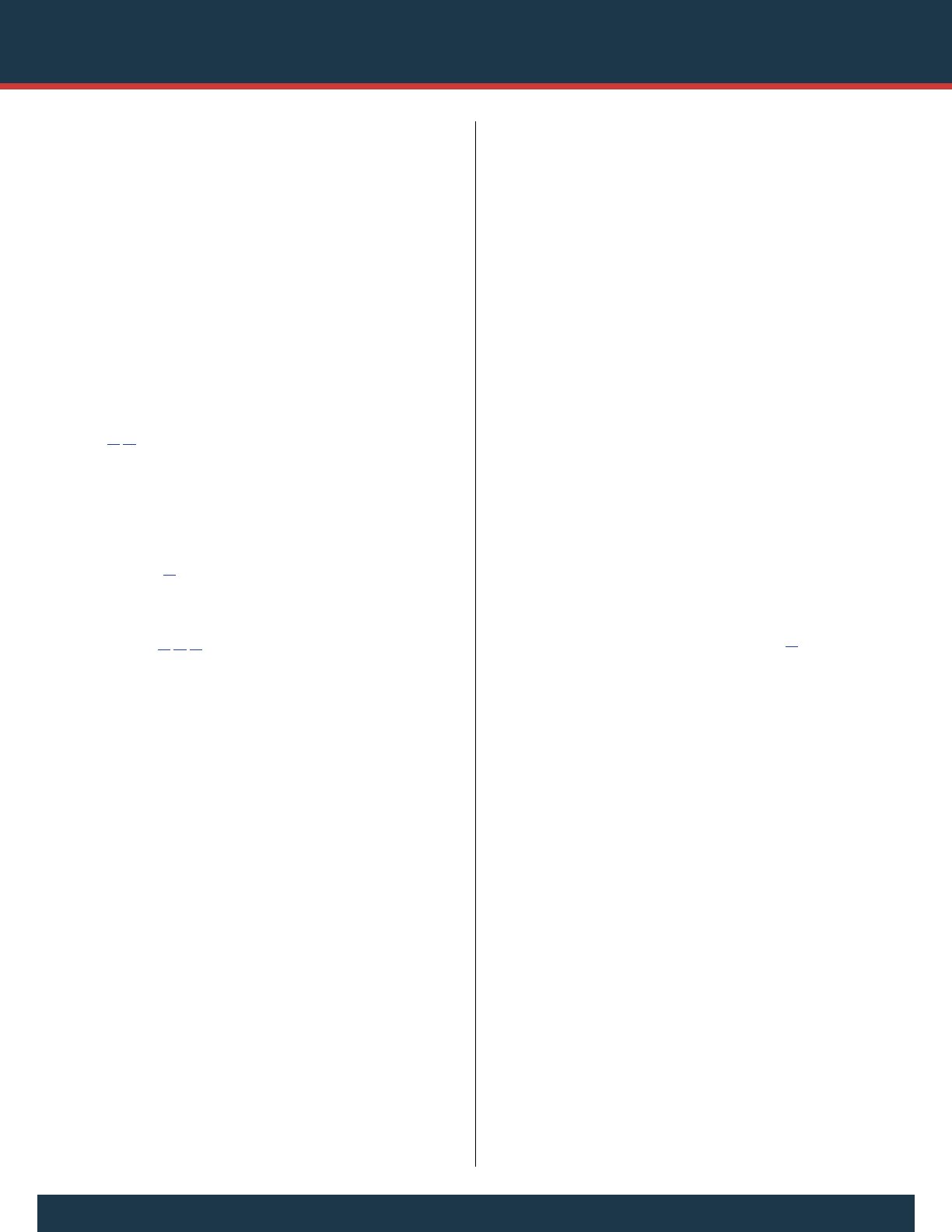
Key Substance Use and Mental Health Indicators in the United States:
Results from the 2020 National Survey on Drug Use and Health October 2021 | 27
Substance Use Disorders in the Past Year
Substance use disorders (SUDs) are characterized by
impairment caused by the recurrent use of alcohol or other
drugs (or both), including health problems, disability, and
failure to meet major responsibilities at work, school, or
home. e 2020 NSDUH included a series of questions
to estimate the percentage of the population aged 12 or
older who had at least one SUD in the past 12 months
(subsequently referred to as “an SUD” or “a past year SUD,”
except when “SUDs” refer to more than one substance,
such as SUDs for the misuse of specific prescription drugs).
e SUD questions assess the presence of an SUD in the
past 12 months based on criteria specified in the Diagnostic
and Statistical Manual of Mental Disorders, 5th edition
(DSM-5).
17,65
Respondents were asked SUD questions
for any alcohol or illicit drugs they used in the 12 months
prior to the survey. Illicit drugs include marijuana, cocaine
(including crack), heroin, hallucinogens, inhalants, and
methamphetamine, as well as the misuse of prescription
stimulants, tranquilizers or sedatives (e.g., benzodiazepines),
and pain relievers.
14
e 2020 NSDUH marked the first year in which SUDs
were assessed using the DSM-5 criteria as opposed to the
DSM-IV criteria.
18,66,67
In DSM-IV, the criteria are grouped
into the diagnoses of dependence and abuse. Respondents
were categorized as having an SUD if they met either of the
following: (1) the presence of three or more of the diagnostic
criteria of dependence for a given substance or substance
class (e.g., prescription tranquilizers), or (2) they met one
or more criteria of abuse for that substance or substance
class. Although DSM-5 assesses many of the same criteria as
DSM-IV, it does not include the diagnoses of dependence
and abuse. A DSM-5 SUD diagnosis requires the presence
of two or more of the following criteria (as measured in the
2020 NSDUH) in a 12-month period:
1. e substance is often taken in larger amounts or over
a longer period than intended.
2. ere is a persistent desire or unsuccessful efforts to
cut down or control substance use.
3. A great deal of time is spent in activities necessary to
obtain the substance, use the substance, or recover
from its effects.
4. ere is a craving, or a strong desire or urge, to use the
substance.
5. ere is recurrent substance use resulting in a failure
to fulfill major role obligations at work, school, or
home.
6. ere is continued substance use despite having
persistent or recurrent social or interpersonal problems
caused by or exacerbated by the effects of the
substance.
7. Important social, occupational, or recreational
activities are given up or reduced because of substance
use.
8. ere is recurrent substance use in situations in which
it is physically hazardous.
9. Substance use is continued despite knowledge
of having a persistent or recurrent physical or
psychological problem that is likely to have been
caused or exacerbated by the substance.
10. ere is a need for markedly increased amounts of the
substance to achieve intoxication or the desired effect,
or markedly diminished effect with continued use of
the same amount of the substance (i.e., tolerance).
11. ere are a required number of withdrawal symptoms
that occur when substance use is cut back or stopped
following a period of prolonged use.
68
(Hallucinogen
use disorder and inhalant use disorder do not have a
withdrawal syndrome associated with discontinued
use. erefore, withdrawal is not a criterion of either
of these two disorders.)
Questions were added to the 2020 NSDUH questionnaire
to assess craving, marijuana withdrawal, and tranquilizer
withdrawal. Craving and marijuana withdrawal were not
assessed in prior surveys because they are not part of the
DSM-IV SUD criteria. Although tranquilizer withdrawal
is part of the DSM-IV criteria, this symptom had not
been assessed in prior NSDUHs because some substances
previously included in the questionnaire that were classified
as tranquilizers do not have a withdrawal component.
is change from DSM-IV to DSM-5 criteria for assessing
SUDs led to breaks in the comparability of 2020 SUD
estimates with estimates from prior years. Consequently,
this section presents SUD estimates for 2020 only. Readers
are cautioned that apparent differences between 2020 SUD
estimates based on DSM-5 criteria and published SUD
estimates from prior years based on DSM-IV criteria could
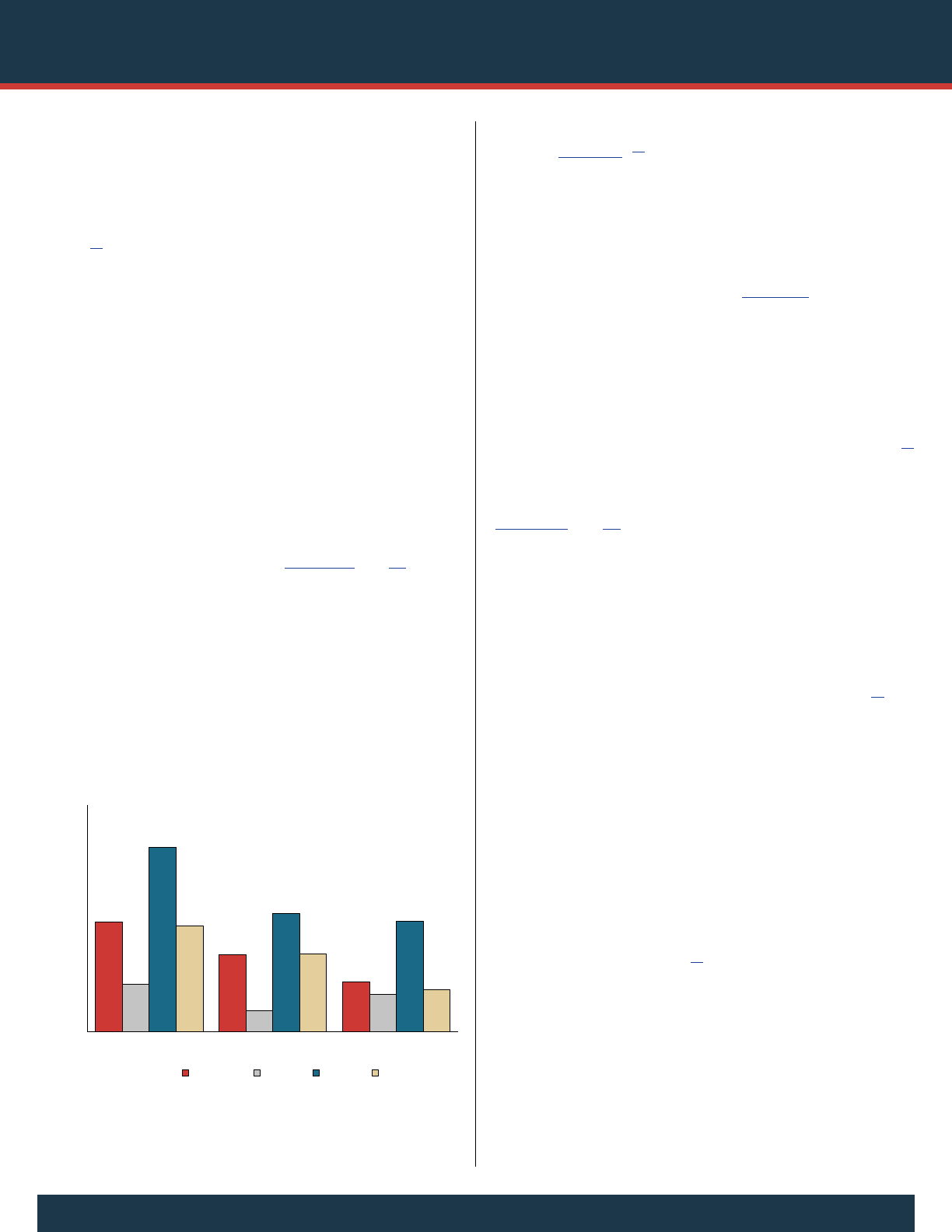
Key Substance Use and Mental Health Indicators in the United States:
Results from the 2020 National Survey on Drug Use and Health28 | October 2021
reflect changes in definitions and measurement rather than
real changes in SUD in the population.
For example, Goldstein and colleagues demonstrated the
lack of concordance between estimates of SUD derived using
the DSM-IV criteria and those derived using the DSM-5
criteria.
69
Using data from the National Epidemiologic
Survey on Alcohol and Related Conditions-III (NESARC-
III) that were scored using both the DSM-IV and DSM-5
criteria, the authors found that the past year prevalence
estimates for DSM-5 alcohol use disorder, sedative/
tranquilizer use disorder, opioid use disorder, and heroin
use disorder were higher than the corresponding DSM-IV
prevalence estimates for those disorders. Conversely, the
past year prevalence estimates for cannabis use disorder,
cocaine use disorder, and stimulant use disorder were lower
than the respective DSM-IV estimates for those disorders.
In 2020, 40.3 million people aged 12 or older (or 14.5 percent
of this population) had an SUD in the past year, including
28.3 million who had alcohol use disorder and 18.4 million
who had an illicit drug use disorder (Figures 26 and 27).
Among the 28.3 million people with past year alcohol use
disorder, 21.9 million had alcohol use disorder but not an
illicit drug use disorder. Among the 18.4 million people with
a past year illicit drug use disorder, 11.9 million had an illicit
drug use disorder but not alcohol use disorder. Among people
with a past year SUD, 16.0 percent (or 6.5 million people) had
both alcohol use disorder and an illicit drug use disorder in the
past year (Figure 28).
33
e percentage of people in 2020 with a past year SUD
differed by age group. e percentage was highest among
young adults aged 18 to 25 (24.4 percent or 8.2 million
people), followed by adults aged 26 or older (14.0 percent
or 30.5 million people), then by adolescents aged 12 to 17
(6.3 percent or 1.6 million people) (Figure 26).
Alcohol Use Disorder
Respondents who used alcohol on 6 or more days in the
past 12 months were classified as having alcohol use disorder
if they met two or more of the DSM-5 criteria for alcohol
use disorder. Relevant criteria for alcohol use disorder can be
found in a glossary of key definitions for the 2020 NSDUH.
10
Among people aged 12 or older in 2020, 10.2 percent
(28.3 million people) had a past year alcohol use disorder
(Figures 26 and 27). e percentage of people who had
past year alcohol use disorder was highest among young
adults aged 18 to 25 (15.6 percent or 5.2 million people),
followed by adults aged 26 or older (10.3 percent or
22.4 million people), then by adolescents aged 12 to 17
(2.8 percent or 712,000 people). Age group differences in
the percentage of people with alcohol use disorder in the
past year were consistent with the age group differences in
the 2020 detailed tables for alcohol use in the past year
70
and
differences described previously for binge and heavy alcohol
use in the past month.
Illicit Drug Use Disorder
is section presents overall estimates for illicit drug use
disorder, then provides SUD estimates for selected specific
illicit drugs. Illicit drug use disorder was defined as meeting
DSM-5 SUD criteria for one or more of the following illicit
drugs: marijuana, cocaine, heroin, hallucinogens, inhalants,
methamphetamine, or prescription psychotherapeutic
drugs that were misused (i.e., stimulants, tranquilizers or
sedatives, and pain relievers).
71
Respondents were classified
as having an opioid use disorder if they met DSM-5 criteria
for heroin use disorder or prescription pain reliever use
disorder (or both). Respondents were classified as having
a central nervous system (CNS) stimulant use disorder
if they met DSM-5 criteria for cocaine use disorder,
Figure 26. Substance Use Disorder, Alcohol Use Disorder, and
Illicit Drug Use Disorder in the Past Year: Among People Aged 12
or Older; 2020
14.5
10.2
6.6
6.3
2.8
4.9
24.4
15.6
14.6
14.0
10.3
5.6
0
5
10
15
20
25
30
Substance Use Disorder Alcohol Use Disorder Illicit Drug Use Disorder
Percent with Disorder in Past Year
12 or Older 12 to 17 18 to 25 26 or Older
Age Category:
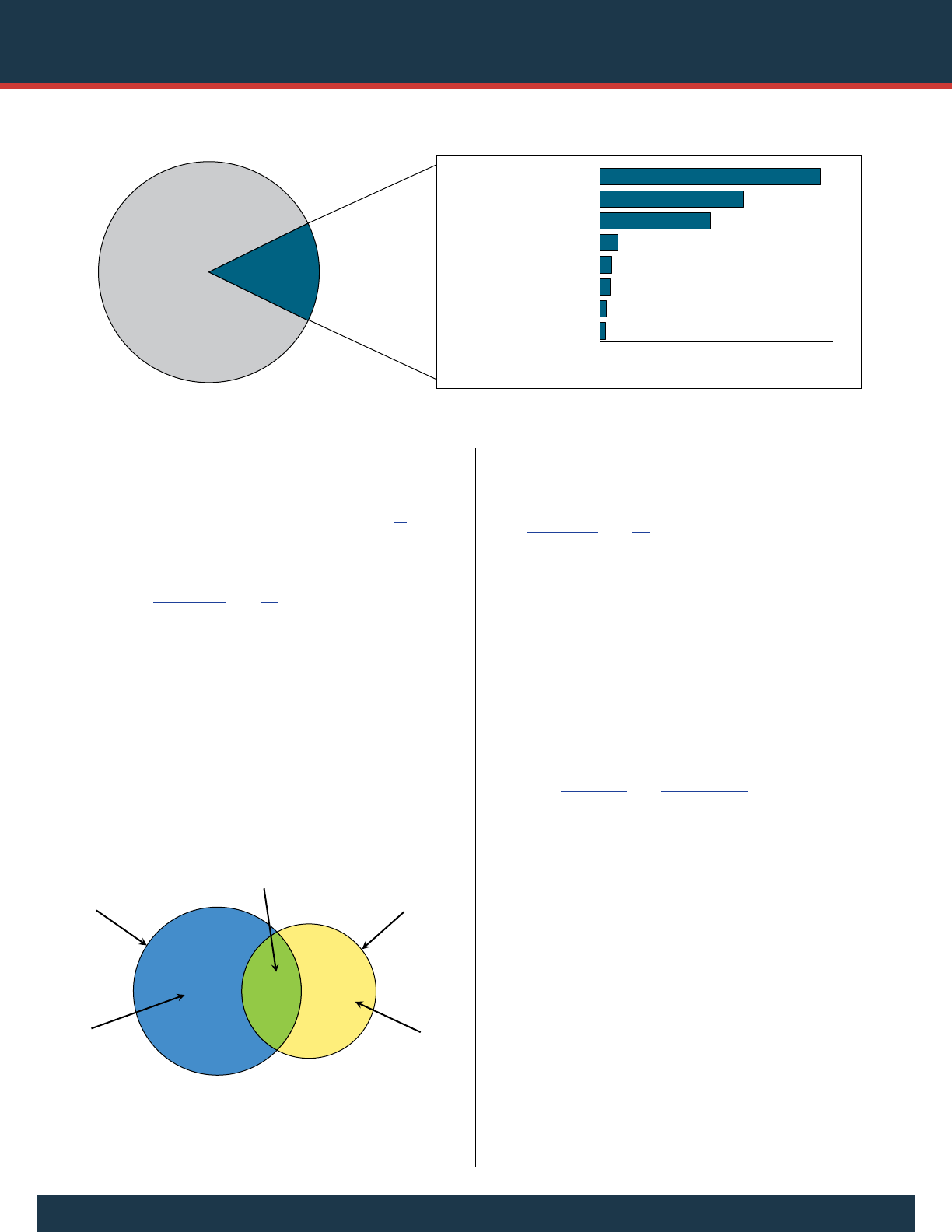
Key Substance Use and Mental Health Indicators in the United States:
Results from the 2020 National Survey on Drug Use and Health October 2021 | 29
methamphetamine use disorder, or prescription stimulant
use disorder (or more than one of these disorders). Relevant
definitions for SUDs for specific illicit drugs can be found in
a glossary of key definitions for the 2020 NSDUH.
10
Among people aged 12 or older in 2020, 6.6 percent (or
18.4 million people) had at least one illicit drug use disorder
in the past year (Figures 26 and
27
). e percentage of
young adults aged 18 to 25 (14.6 percent or 4.9 million
people) was higher than the percentages of adolescents aged
12 to 17 (4.9 percent or 1.2 million people) or adults aged
26 or older (5.6 percent or 12.3 million people). e higher
percentage of young adults with at least one illicit drug use
disorder was consistent with the higher percentage among
this age group for illicit drug use in the past year.
Marijuana Use Disorder
Among people aged 12 or older in 2020, 5.1 percent (or
14.2 million people) had a marijuana use disorder in the past
year (Figures 27 and 29). e percentage of young adults aged
18 to 25 (13.5 percent or 4.5 million people) was higher than
the percentages of adolescents aged 12 to 17 (4.1 percent or
1.0 million people) or adults aged 26 or older (4.0 percent or
8.7 million people). e higher percentage of young adults
with a marijuana use disorder was consistent with the higher
percentage among this age group for marijuana use in the
past year.
Cocaine Use Disorder
Among people aged 12 or older in 2020, 0.5 percent
(or 1.3 million people) had a cocaine use disorder in the
past year (Figure 27 and Table A.26B). e percentage of
adolescents aged 12 to 17 (0.1 percent or 28,000 people)
was lower than the percentages of young adults aged 18 to
25 (0.7 percent or 234,000 people) or adults aged 26 or
older (0.5 percent or 1.0 million people).
Heroin Use Disorder
Among people aged 12 or older in 2020, 0.2 percent (or
691,000 people) had a heroin use disorder in the past year
(Figure 27 and Table A.26B). Estimates for adolescents
aged 12 to 17 who had a heroin use disorder in the
past year could not be calculated with sufficient precision.
Among young adults aged 18 to 25 in 2020, 0.1 percent
(or 40,000 people) had a heroin use disorder in the
past year. Among adults aged 26 or older in 2020,
0.3 percent (or 652,000 people) had a heroin use disorder in
the past year.
Figure 27. People Aged 12 or Older with a Past Year Substance Use Disorder (SUD); 2020
28.3M
18.4M
14.2M
2.3M
1.5M
1.3M
758,000
691,000
0 10 20 30
Alcohol Use Disorder
Illicit Drug Use Disorder
Marijuana Use Disorder
Pain Reliever Use Disorder
Methamphetamine Use Disorder
Cocaine Use Disorder
Stimulant Use Disorder
Heroin Use Disorder
Number of People with Specific Past Year SUD
Past Year SUD
40.3 Million People
(14.5%)
No Past Year SUD
236.6 Million People
(85.5%)
Note: The estimated numbers of people with substance use disorders are not mutually exclusive because people could have use disorders for more than one substance.
Figure 28. Alcohol Use Disorder (AUD) and Illicit Drug Use
Disorder (IDUD) in the Past Year: Among People Aged 12 or Older
with a Past Year Substance Use Disorder (SUD); 2020
People with
AUD Only
(54.3% of People
with SUD)
28.3 Million People
with AUD
(70.3% of People
with SUD)
People with AUD and IDUD
(16.0% of People with SUD)
18.4 Million People
with IDUD
(45.7% of People
with SUD)
People with
IDUD Only
(29.7% of People
with SUD)
40.3 Million People Aged 12 or Older with Past Year SUD
21.9
Million
6.5
Million
11.9
Million
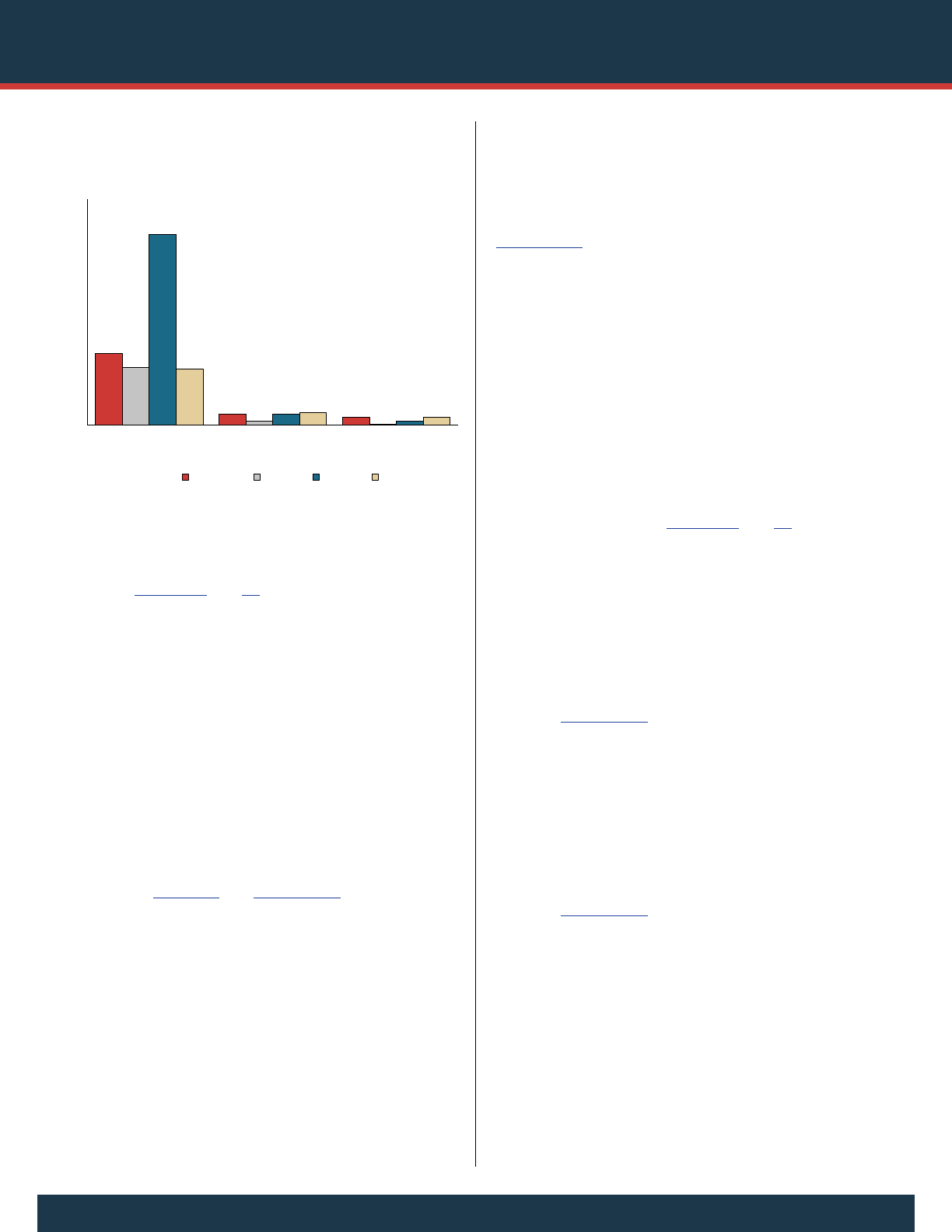
Key Substance Use and Mental Health Indicators in the United States:
Results from the 2020 National Survey on Drug Use and Health30 | October 2021
Methamphetamine Use Disorder
Among people aged 12 or older in 2020, 0.6 percent (or
1.5 million people) had a methamphetamine use disorder in
the past year (Figures 27 and 29). e percentage of people
who had a methamphetamine use disorder in the past year
was highest among adults aged 26 or older (0.6 percent or
1.4 million people), followed by young adults aged 18 to 25
(0.3 percent or 95,000 people), then by adolescents aged 12
to 17 (0.1 percent or 21,000 people). Age group differences
in the percentage of people with a methamphetamine use
disorder in the past year were consistent with the age group
differences described previously for methamphetamine use in
the past year.
Prescription Stimulant Use Disorder
Among people aged 12 or older in 2020, 0.3 percent (or
758,000 people) had a prescription stimulant use disorder
in the past year (Figure 27 and Table A.26B). Among
adolescents aged 12 to 17 in 2020, 0.2 percent (or 43,000
people) had a prescription stimulant use disorder in the
past year. Among young adults aged 18 to 25 in 2020,
0.4 percent (or 141,000 people) had a prescription stimulant
use disorder in the past year. Among adults aged 26 or older
in 2020, 0.3 percent (or 574,000 people) had a prescription
stimulant use disorder in the past year.
Prescription Tranquilizer Use Disorder
or Sedative Use Disorder
Among people aged 12 or older in 2020, 0.4 percent
(or 1.2 million people) had a prescription tranquilizer
use disorder or sedative use disorder in the past year
(Table A.26B). e percentage of young adults aged 18 to
25 (0.7 percent or 235,000 people) was higher than the
percentages of adolescents aged 12 to 17 (0.3 percent or
73,000 people) or adults aged 26 or older (0.4 percent or
845,000 people). e higher percentage of young adults
with a prescription tranquilizer use disorder or sedative use
disorder was consistent with the higher percentage among
this age group for prescription tranquilizer or sedative misuse
in the past year.
Prescription Pain Reliever Use Disorder
Among people aged 12 or older in 2020, 0.8 percent (or
2.3 million people) had a prescription pain reliever use
disorder in the past year (Figures 27 and 29). e percentage
of adolescents aged 12 to 17 (0.3 percent or 80,000 people)
was lower than the percentages of young adults aged 18 to
25 (0.8 percent or 269,000 people) or adults aged 26 or
older (0.9 percent or 2.0 million people).
Opioid Use Disorder
Among people aged 12 or older in 2020, 1.0 percent (or
2.7 million people) had an opioid use disorder in the
past year (Table A.26B). e percentage of adolescents aged
12 to 17 (0.3 percent or 80,000 people) was lower than the
percentages of young adults aged 18 to 25 (0.9 percent or
286,000 people) or adults aged 26 or older (1.1 percent or
2.3 million people).
Central Nervous System Stimulant Use Disorder
Among people aged 12 or older in 2020, 1.1 percent (or
3.2 million people) had a CNS stimulant use disorder in the
past year (Table A.26B). e percentage of adolescents aged
12 to 17 (0.4 percent or 88,000 people) was lower than the
percentages of young adults aged 18 to 25 (1.3 percent or
423,000 people) or adults aged 26 or older (1.2 percent or
2.7 million people).
Figure 29. Marijuana Use Disorder, Pain Reliever Use Disorder,
and Methamphetamine Use Disorder in the Past Year: Among
People Aged 12 or Older; 2020
5.1
0.8
0.6
4.1
0.3
0.1
13.5
0.8
0.3
4.0
0.9
0.6
0
2
4
6
8
10
12
14
16
Marijuana Use Disorder Pain Reliever
Use Disorder
Methamphetamine
Use Disorder
Percent with Disorder in the Past Year
12 or Older 12 to 17 18 to 25 26 or Older
Age Category:
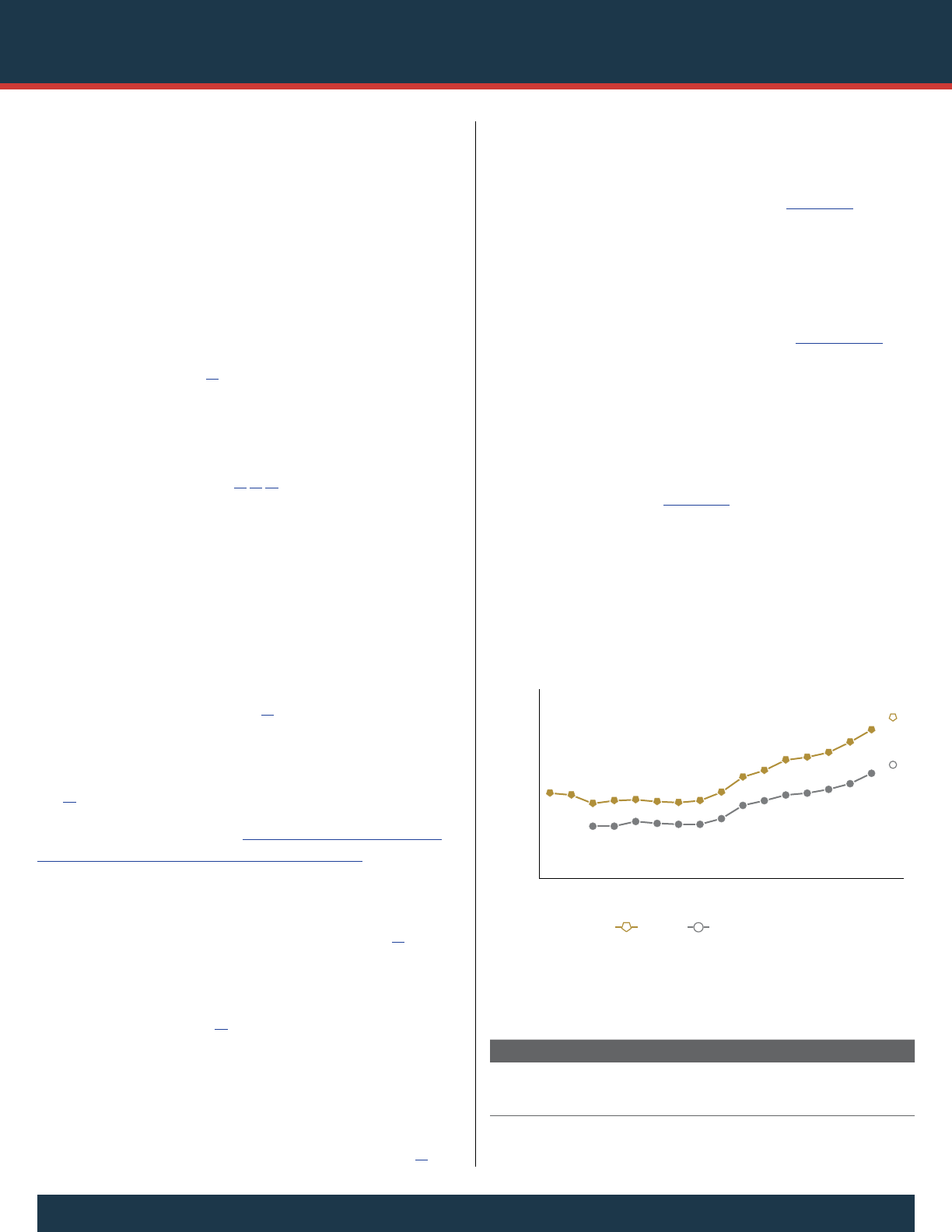
Key Substance Use and Mental Health Indicators in the United States:
Results from the 2020 National Survey on Drug Use and Health October 2021 | 31
Major Depressive Episode in the Past Year
In the 2020 NSDUH, respondents were classified as
having had a major depressive episode (MDE) in the
past 12 months if (1) they had at least one period of 2 weeks
or longer in the past year when for most of the day nearly
every day, they felt depressed, or lost interest or pleasure in
daily activities; and (2) they also had problems with sleeping,
eating, energy, concentration, self-worth, or having recurrent
thoughts of death or recurrent suicidal ideation. e MDE
questions are based on diagnostic criteria from the DSM-5,
which require the presence of five or more symptoms during
the same 2-week period.
17
e wording for some depression
questions asked of adolescent respondents aged 12 to 17
differed from the wording for similar questions asked of
adult respondents aged 18 or older. erefore, the MDE
estimates for adults and youths are not directly comparable
and are presented separately.
14,72,73
e 2020 NSDUH also collected data on whether an MDE
in the past year caused respondents to experience severe
impairment in four major life activities or role domains.
ese domains were defined separately for youths aged 12
to 17 and adults aged 18 or older to reflect the different
roles associated with the two age groups. Adolescents were
classified as having an MDE with severe impairment if their
depression caused severe problems with their ability to do
chores at home, do well at work or school, get along with
their family, or have a social life.
74
Adults were classified as
having an MDE with severe impairment if their depression
caused severe problems with their ability to manage at home
or work, have relationships with others, or have a social
life.
75
As noted in the section titled Changes to Data Collection
Methods Because of the COVID-19 Pandemic, Quarter
4 of 2020 (i.e., October to December) marked the first
time that NSDUH used web-based interviewing. However,
the number of adult web respondents in Quarter 4 who
provided usable information on their substance use
76
but
did not complete the mental health or later questions (i.e.,
“break-offs”) raised concerns about the 2020 mental health
estimates for adults. Specifically, mental health estimates
for adults could be biased
77
if the characteristics of adult
respondents who broke off the interview without completing
the mental health questions differed from the characteristics
of respondents who completed these questions. To reduce
the potential for bias, a set of break-off analysis weights was
developed for estimates of adults’ mental health data for
2020, including the estimates for MDE among adults.
78
MDE and MDE with Severe Impairment among
Adolescents
Among adolescents aged 12 to 17 in 2020, 17.0 percent (or
4.1 million people) had a past year MDE (Figure 30). An
estimated 12.0 percent of adolescents (or 2.9 million people)
in 2020 had a past year MDE with severe impairment.
MDE and MDE with Severe Impairment among Adults
Among adults aged 18 or older in 2020, 8.4 percent (or
21.0 million people) had a past year MDE (Table A.28B).
e percentage was highest among young adults aged 18 to
25 (17.0 percent or 5.6 million people), followed by adults
aged 26 to 49 (9.1 percent or 9.2 million people), then by
adults aged 50 or older (5.4 percent or 6.2 million people).
An estimated 6.0 percent of adults aged 18 or older
(or 14.8 million people) in 2020 had a past year MDE
with severe impairment (Figure 31). e percentage was
highest among young adults aged 18 to 25 (12.1 percent
or 4.0 million people), followed by adults aged 26 to 49
(6.5 percent or 6.5 million people), then by adults aged 50
or older (3.8 percent or 4.4 million people).
Figure 30. Major Depressive Episode (MDE) and MDE with Severe
Impairment in the Past Year: Among Youths Aged 12 to 17;
2004-2020
Percent with MDE or MDE with
Severe Impairment in Past Year
0
5
10
15
20
2019181716151413121110090807060504
MDE Status:
Years
MDE
MDE with Severe Impairment
Note: There is no connecting line between 2019 and 2020 to indicate caution should be used when
comparing estimates between 2020 and prior years because of methodological changes for 2020.
Due to these changes, significance testing between 2020 and prior years was not performed.
Figure 30 Table. Major Depressive Episode (MDE) and MDE with Severe
Impairment in the Past Year: Among Youths Aged 12 to 17; 2004-2020
MDE Status 04 05 06 07 08 09 10 11 12 13 14 15 16 17 18 19 20
MDE
9.0 8.8 7.9 8.2 8.3 8.1 8.0 8.2 9.1 10.7 11.4 12.5 12.8 13.3 14.4 15.7 17.0
MDE with Severe
Impairment
N/A N/A 5.5 5.5 6.0 5.8 5.7 5.7 6.3 7.7 8.2 8.8 9.0 9.4 10.0 11.1 12.0
N/A = not available.
Note: The estimate in 2020 is italicized to indicate caution should be used when comparing estimates between
2020 and prior years because of methodological changes for 2020. Due to these changes, significance testing
between 2020 and prior years was not performed.
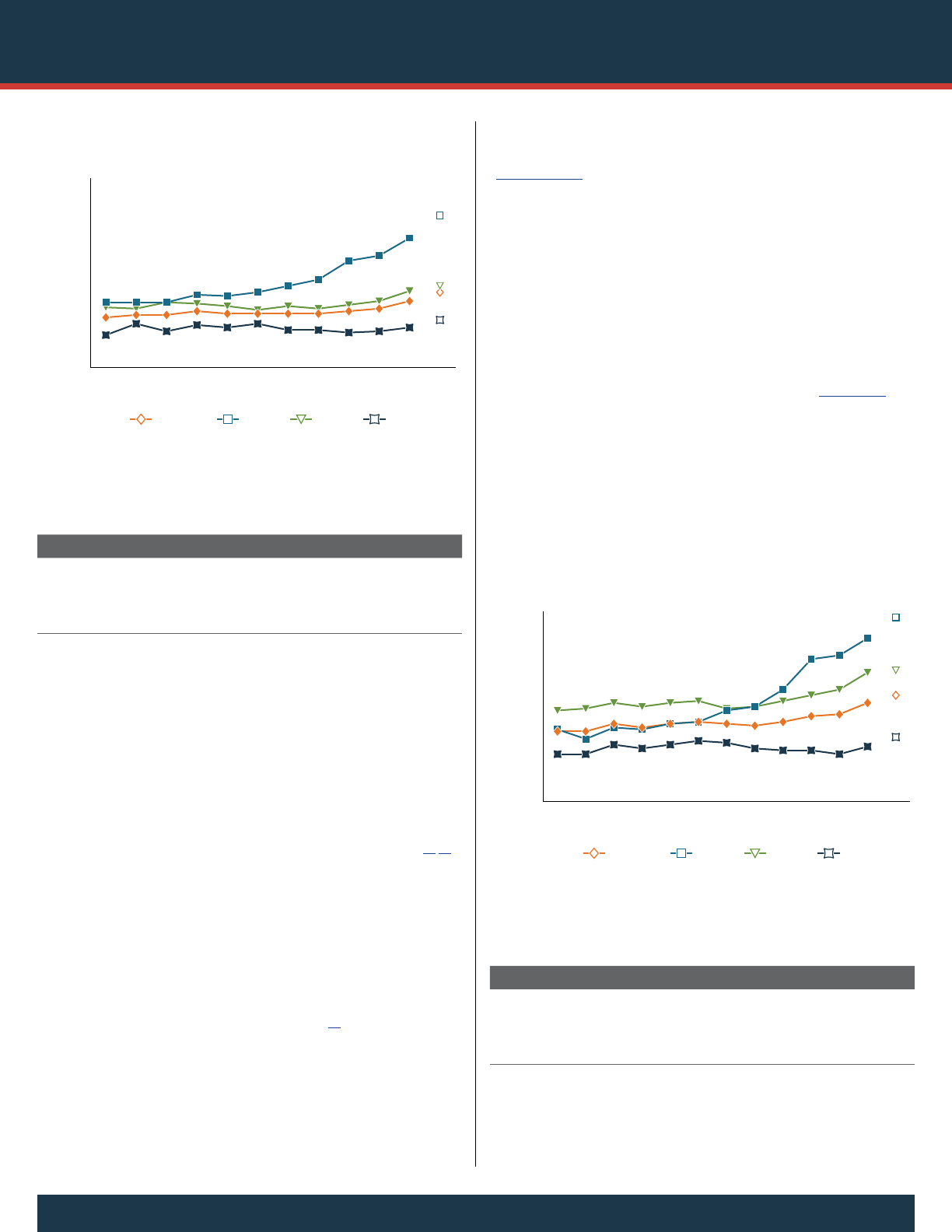
Key Substance Use and Mental Health Indicators in the United States:
Results from the 2020 National Survey on Drug Use and Health32 | October 2021
Any Mental Illness among Adults in the Past Year
e 2020 NSDUH provided estimates of any mental illness
(AMI) and serious mental illness (SMI) for adults aged 18 or
older. Adults aged 18 or older were classified as having AMI
if they had any mental, behavioral, or emotional disorder
in the past year of sufficient duration to meet DSM-IV
criteria (excluding developmental disorders and SUDs).
18,79
Adults who were classified as having AMI were classified as
having SMI if they had any mental, behavioral, or emotional
disorder that substantially interfered with or limited one or
more major life activities. Statistical prediction models that
were developed using clinical interview data from a subset
of NSDUH adult respondents in 2008 to 2012 were used
to classify whether respondents in the 2008 to 2020 adult
samples had AMI or SMI in the past year.
80
As noted previously, a set of break-off analysis weights was
developed for adults’ mental health data for 2020. Estimates
of AMI and SMI for 2020 used these break-off analysis
weights.
Among adults aged 18 or older in 2020, 21.0 percent
(or 52.9 million people) had AMI in the past year
(Table A.29B). e percentage was highest among young
adults aged 18 to 25 (30.6 percent or 10.2 million
people), followed by adults aged 26 to 49 (25.3 percent
or 25.7 million people), then by adults aged 50 or older
(14.5 percent or 16.9 million people).
Serious Mental Illness among Adults in the
Past Year
Among adults aged 18 or older in 2020, 5.6 percent (or
14.2 million people) had SMI in the past year (Figure 32).
Consistent with the age group pattern for AMI, the
percentage of adults with SMI was highest among young
adults aged 18 to 25 (9.7 percent or 3.3 million people),
followed by adults aged 26 to 49 (6.9 percent or 7.0 million
people), then by adults aged 50 or older (3.4 percent or
4.0 million people).
Figure 32. Serious Mental Illness in the Past Year: Among Adults
Aged 18 or Older; 2008-2020
Percent with Serious Mental Illness
in Past Year
0
2
4
6
8
10
20191817161514131211100908
18 or Older 18 to 25 26 to 49 50 or Older
Age Category:
Years
Note: There is no connecting line between 2019 and 2020 to indicate caution should be used when
comparing estimates between 2020 and prior years because of methodological changes for 2020.
Due to these changes, significance testing between 2020 and prior years was not performed.
Figure 32 Table. Serious Mental Illness in the Past Year: Among Adults Aged
18 or Older; 2008-2020
Age 08 09 10 11 12 13 14 15 16 17 18 19 20
18 or Older
3.7 3.7 4.1 3.9 4.1 4.2 4.1 4.0 4.2 4.5 4.6 5.2 5.6
18 to 25
3.8 3.3 3.9 3.8 4.1 4.2 4.8 5.0 5.9 7.5 7.7 8.6 9.7
26 to 49
4.8 4.9 5.2 5.0 5.2 5.3 4.9 5.0 5.3 5.6 5.9 6.8 6.9
50 or Older
2.5 2.5 3.0 2.8 3.0 3.2 3.1 2.8 2.7 2.7 2.5 2.9 3.4
Note: The estimate in 2020 is italicized to indicate caution should be used when comparing estimates between
2020 and prior years because of methodological changes for 2020. Due to these changes, significance testing
between 2020 and prior years was not performed.
Figure 31. Major Depressive Episode with Severe Impairment in
the Past Year: Among Adults Aged 18 or Older; 2009-2020
Percent with Major Depressive Episode
with Severe Impairment in Past Year
0
5
10
15
202020192018201720162015201420132012201120102009
18 or Older 18 to 25 26 to 49 50 or Older
Age Category:
Years
Note: There is no connecting line between 2019 and 2020 to indicate caution should be used when
comparing estimates between 2020 and prior years because of methodological changes for 2020.
Due to these changes, significance testing between 2020 and prior years was not performed.
Figure 31 Table. Major Depressive Episode with Severe Impairment in the
Past Year: Among Adults Aged 18 or Older; 2009-2020
Age 2009 2010 2011 2012 2013 2014 2015 2016 2017 2018 2019 2020
18 or Older
4.0 4.2 4.2 4.5 4.3 4.3 4.3 4.3 4.5 4.7 5.3 6.0
18 to 25
5.2 5.2 5.2 5.8 5.7 6.0 6.5 7.0 8.5 8.9 10.3 12.1
26 to 49
4.8 4.7 5.2 5.1 4.9 4.6 4.9 4.7 5.0 5.3 6.1 6.5
50 or Older
2.6 3.5 2.9 3.4 3.2 3.5 3.0 3.0 2.8 2.9 3.2 3.8
Note: The estimate in 2020 is italicized to indicate caution should be used when comparing estimates between
2020 and prior years because of methodological changes for 2020. Due to these changes, significance testing
between 2020 and prior years was not performed.
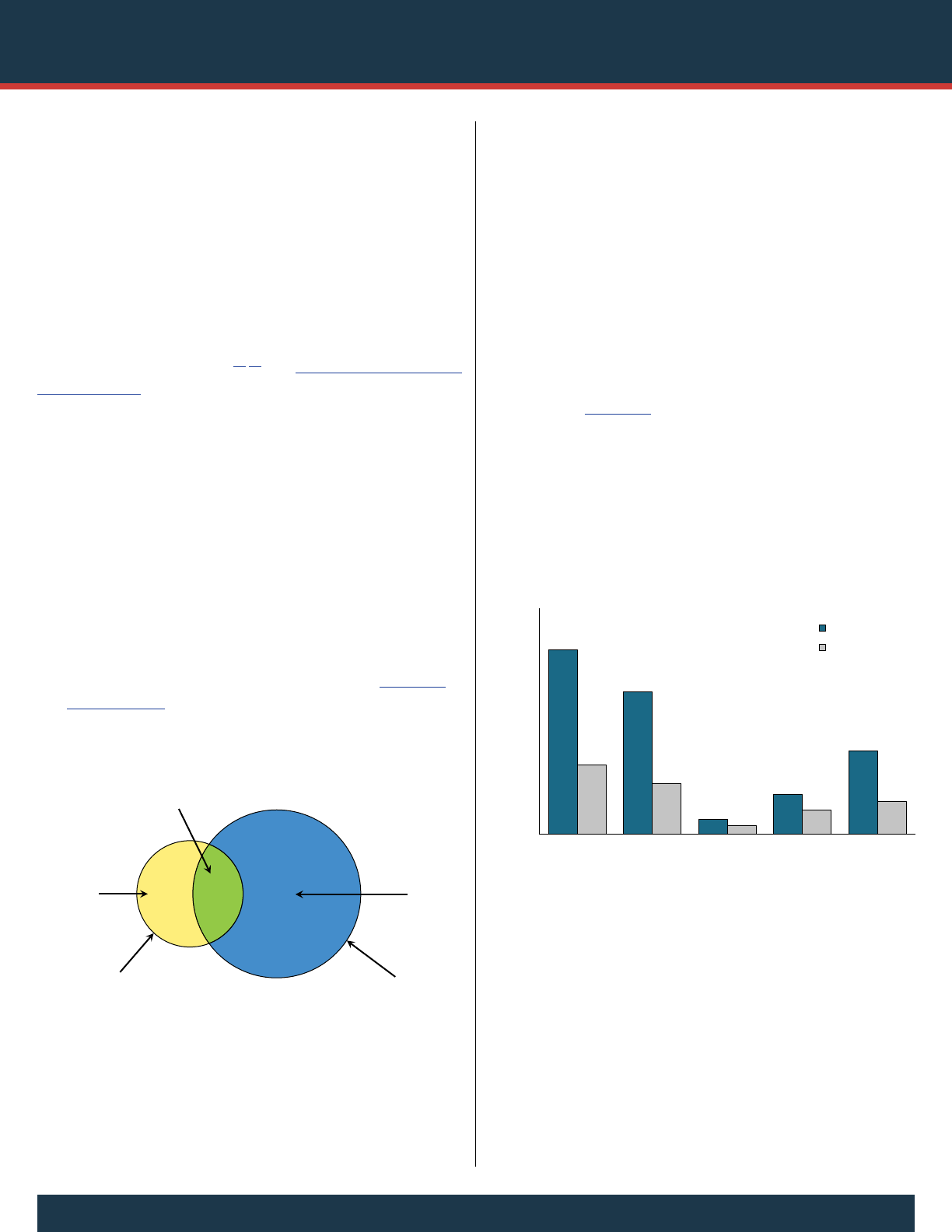
Key Substance Use and Mental Health Indicators in the United States:
Results from the 2020 National Survey on Drug Use and Health October 2021 | 33
Co‑Occurring MDE and SUD among Adolescents
Adolescents aged 12 to 17 who had both a past year MDE
and a past year SUD (i.e., illicit drug use disorder, alcohol use
disorder, or both) were classified as having co-occurring MDE
and SUD. e order of the onset of an SUD relative to the
onset of an MDE among adolescents cannot be established
based on the NSDUH data (e.g., whether the onset of an
SUD preceded the onset of an MDE, or vice versa).
As noted previously, the 2020 NSDUH marked the first year
in which SUDs were evaluated based on DSM-5 criteria as
opposed to DSM-IV criteria.
17,18
e Substance Use Disorders
in the Past Year section in this report briefly describes the
DSM-5 criteria and highlights key differences between the
DSM-5 and DSM-IV criteria. e breaks in the comparability
of 2020 SUD estimates with estimates from prior years also
affected the comparability of 2020 estimates with previous
years’ estimates for co-occurring MDE and SUD among
adolescents. Consequently, estimates of co-occurring MDE
and SUD among adolescents are presented for 2020 only.
Among adolescents aged 12 to 17 in 2020, 20.9 percent (or
5.1 million people) had either an SUD or an MDE in the
past year, 14.4 percent (or 3.5 million people) had an MDE
but not an SUD, 3.7 percent (or 900,000 people) had an
SUD but not an MDE, and 2.7 percent (or 644,000 people)
had both an MDE and an SUD in the past year (Figure 33
and Table A.30AB).
In addition, among adolescents aged 12 to 17 in 2020,
1.8 percent (or 447,000 people) had both an MDE with
severe impairment and an SUD in the past year.
Substance Use among Adolescents with MDE
Adolescents aged 12 to 17 who had a past year MDE
were more likely to use some substances in the past year
or past month compared with their counterparts who did
not have an MDE in the past year. In 2020, adolescents
with a past year MDE were more likely than adolescents
without a past year MDE to be past year illicit drug users
(28.6 vs. 10.7 percent) or past year marijuana users (22.0 vs.
7.9 percent) (Figure 34). Adolescents with a past year MDE
also were more likely than those without a past year MDE
to be past month binge alcohol users (6.2 vs. 3.8 percent).
Adolescents with a past year MDE also were more likely than
those without a past year MDE to use tobacco products or
vape nicotine in the past month (12.9 vs. 5.1 percent).
Figure 33. Past Year Substance Use Disorder (SUD) and Major
Depressive Episode (MDE): Among Youths Aged 12 to 17; 2020
1.6 Million Youths
Had SUD
Youths Had
SUD but
Not MDE
Youths Had SUD and MDE
Youths Had
MDE but
Not SUD
4.1 Million Youths
Had MDE
900,000 644,000
3.5
Million
5.1 Million Youths Had Either SUD or MDE
Note: Youth respondents with unknown MDE data were excluded.
Figure 34. Substance Use: Among Youths Aged 12 to 17; by Past
Year Major Depressive Episode (MDE) Status, 2020
28.6
+
22.0
+
2.3
6.2
+
12.9
+
10.7
7.9
1.4
3.8
5.1
0
5
10
15
20
25
30
35
Illicit Drugs,
Past Year
Marijuana,
Past Year
Opioids,
Past Year
Binge Alcohol,
Past Month
Tobacco
Products or
Nicotine Vaping,
Past Month
Percent Using
Had MDE
Did Not Have MDE
+
Difference between this estimate and the estimate for youths without MDE is statistically significant
at the .05 level.
Note: Youth respondents with unknown MDE data were excluded.
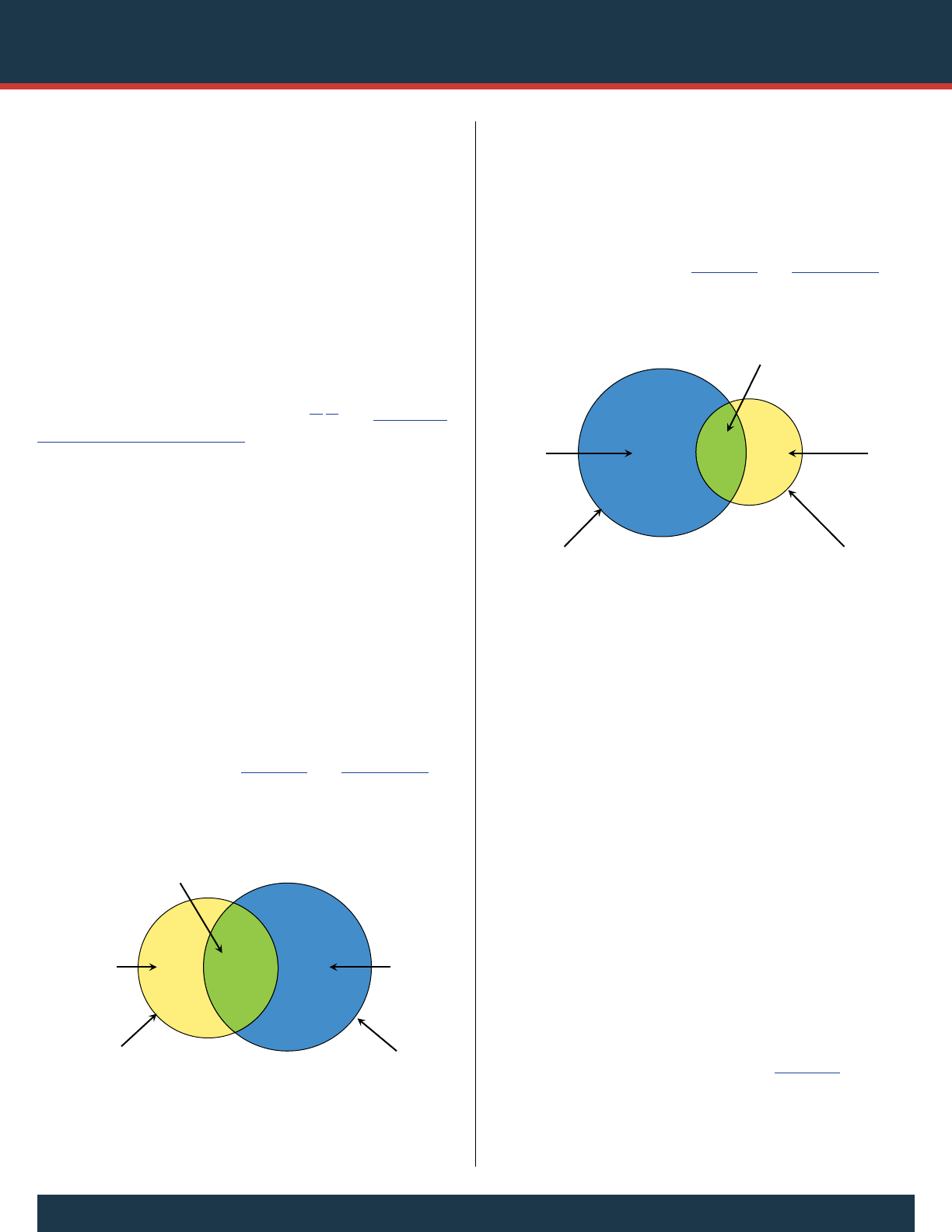
Key Substance Use and Mental Health Indicators in the United States:
Results from the 2020 National Survey on Drug Use and Health34 | October 2021
Co‑Occurring Mental Health Issues and SUD
among Adults
Among adults aged 18 or older, having AMI and an SUD
in the past year is referred to as having co-occurring AMI
and SUD. Adults having SMI and an SUD in the past year
are referred to as having co-occurring SMI and SUD.
However, the order of the onset of SUDs relative to the
onset of mental disorders cannot be established based on the
NSDUH data for adults (e.g., whether the onset of SUDs
preceded the onset of mental disorders, or vice versa).
As noted previously, the 2020 NSDUH marked the first
year in which SUDs were evaluated based on DSM-5
criteria as opposed to DSM-IV criteria.
17,18
e Substance
Use Disorders in the Past Year section in this report briefly
describes the DSM-5 criteria and highlights key differences
between the DSM-5 and DSM-IV criteria. e breaks in the
comparability of 2020 SUD estimates with estimates from
prior years also affected the comparability of 2020 estimates
of co-occurring mental health issues and SUD among adults.
Consequently, estimates of co-occurring mental health issues
and SUD among adults are presented for 2020 only.
Co‑Occurring AMI and SUD
Among adults aged 18 or older in 2020, 29.3 percent (or
73.8 million people) had either AMI or an SUD in the
past year, 14.2 percent (or 35.9 million people) had AMI but
not an SUD, 8.3 percent (or 20.9 million people) had an
SUD but not AMI, and 6.7 percent (or 17.0 million people)
had both AMI and an SUD (Figure 35 and Table A.32B).
Co‑Occurring SMI and SUD
Among adults aged 18 or older in 2020, 18.4 percent (or
46.5 million people) had either SMI or an SUD in the
past year, 3.4 percent (or 8.5 million people) had SMI but
not an SUD, 12.8 percent (or 32.3 million people) had an
SUD but not SMI, and 2.2 percent (or 5.7 million people)
had both SMI and an SUD (Figure 36 and Table A.32B).
Substance Use among Adults, byMental
Illness Status
is section discusses how the prevalence of substance use
among adults aged 18 or older differed based on past year
mental illness status. Among adults aged 18 or older in 2020,
those with SMI or AMI in the past year were more likely than
those without mental illness in the past year to be past year
users of illicit drugs (47.8 percent for SMI and 39.8 percent
for AMI vs. 17.0 percent for adults with no mental illness),
past year users of marijuana (39.2 and 32.8 percent vs.
14.6 percent), or past year misusers of opioids (i.e., heroin
users or misusers of prescription pain relievers) (11.6 and
8.1 percent vs. 2.3 percent). In addition, adults with SMI or
AMI were more likely than adults with no mental illness in
the past year to be past month binge alcohol users (30.9 and
28.5 percent vs. 22.8 percent). Adults with SMI or AMI were
more likely to use tobacco products or vape nicotine in the
past month than adults with no mental illness in the past year
(37.4 and 30.9 percent vs. 19.6 percent) (Figure 37).
Figure 35. Past Year Substance Use Disorder (SUD) and Any
Mental Illness (AMI): Among Adults Aged 18 or Older; 2020
37.9 Million
Adults Had SUD
Adults Had SUD
but Not AMI
Adults Had SUD
and AMI
Adults Had AMI
but Not SUD
52.9 Million Adults
Had AMI
20.9
Million
17.0
Million
35.9
Million
73.8 Million Adults Had Either SUD or AMI
Figure 36. Past Year Substance Use Disorder (SUD) and Serious
Mental Illness (SMI): Among Adults Aged 18 or Older; 2020
37.9 Million
Adults Had SUD
Adults Had
SUD but
Not SMI
Adults Had SUD and SMI
Adults Had
SMI but
Not SUD
14.2 Million
Adults Had SMI
32.3
Million
5.7
Million
8.5
Million
46.5 Million Adults Had Either SUD or SMI
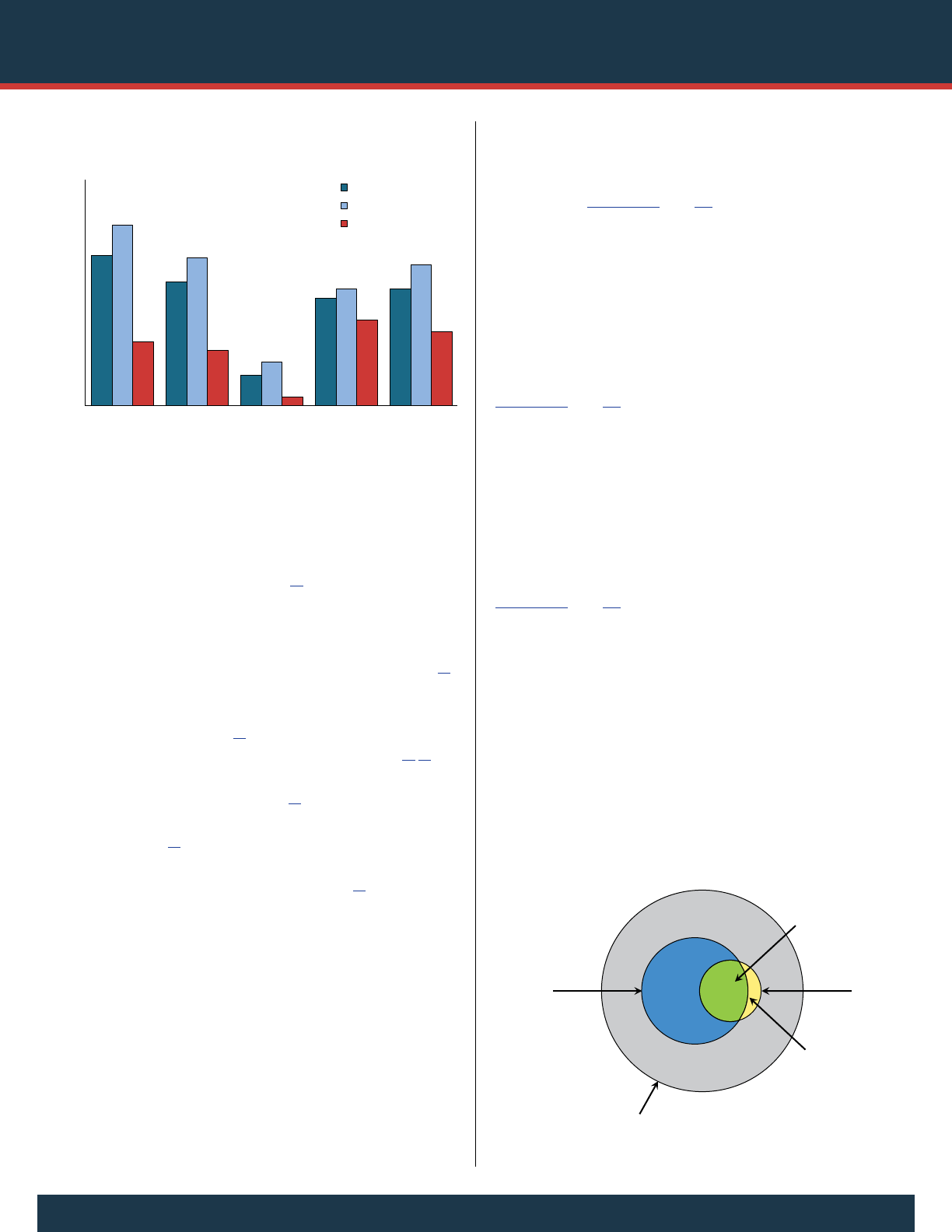
Key Substance Use and Mental Health Indicators in the United States:
Results from the 2020 National Survey on Drug Use and Health October 2021 | 35
Suicidal Thoughts and Behaviors among Adults
Suicide is a leading cause of death and an important public
health problem in the United States.
81
It is a tragedy
for all involved—the people and their families, friends,
neighbors, colleagues, and communities. Provisional data
from the National Vital Statistics System indicate that in
2020, 44,834 people in the United States died by suicide.
82
Moreover, suicide rates increased in most states between
1999 and 2016, including increases by more than 30 percent
in 25 states over this period.
83
Furthermore, suicide rates
continued to increase nationally from 2016 to 2018.
84,85
More than 90 percent of deaths by suicide in 2018 and 2019
were among adults aged 20 or older.
86
However, people who
die by suicide represent a fraction of those who consider
or attempt suicide.
87
Out of every 31 adults in 2008 to
2011 in the United States who attempted suicide in the
past 12 months, there was 1 death by suicide.
88
Since 2008, NSDUH respondents aged 18 or older have
been asked if at any time during the past 12 months they
had thought seriously about trying to kill themselves (serious
thoughts of suicide). Adults who had serious thoughts of
suicide in the past 12 months were asked whether they
made a plan to kill themselves (suicide plan) or tried to kill
themselves (suicide attempt) in that period. is information
helps guide suicide prevention programs and clinical
intervention efforts.
Serious Thoughts of Suicide among Adults
Among adults aged 18 or older in 2020, 4.9 percent (or
12.2 million people) had serious thoughts of suicide in
the past year (Figures 38 and 39). e percentage was
highest among young adults aged 18 to 25 (11.3 percent
or 3.8 million people), followed by adults aged 26 to 49
(5.3 percent or 5.3 million people), then by adults aged 50
or older (2.7 percent or 3.1 million people).
Suicide Plans among Adults
Among adults aged 18 or older in 2020, 1.3 percent (or
3.2 million people) made a suicide plan in the past year
(Figures 38 and 39). e percentage was highest among
young adults aged 18 to 25 (4.0 percent or 1.3 million
people), followed by adults aged 26 to 49 (1.3 percent
or 1.4 million people), then by adults aged 50 or older
(0.4 percent or 519,000 people).
Suicide Attempts among Adults
Among adults aged 18 or older in 2020, 0.5 percent (or
1.2 million people) attempted suicide in the past 12 months
(Figures 38 and 39). e percentage was highest among
young adults aged 18 to 25 (1.9 percent or 627,000 people),
followed by adults aged 26 to 49 (0.4 percent or 452,000
people), then by adults aged 50 or older (0.1 percent or
124,000 people).
Suicidal Thoughts and Behaviors among Adults
Because of COVID‑19
During the COVID-19 pandemic, people with mental
illness may experience worsening mental health problems
Figure 37. Substance Use: Among Adults Aged 18 or Older; by
Mental Illness Status, 2020
39.8
+
32.8
+
8.1
+
28.5
+
30.9
+
47.8
+
39.2
+
11.6
+
30.9
+
37.4
+
17.0
14.6
2.3
22.8
19.6
0
10
20
30
40
50
60
Illicit Drugs,
Past Year
Marijuana,
Past Year
Opioids,
Past Year
Binge Alcohol,
Past Month
Tobacco
Products or
Nicotine Vaping,
Past Month
Percent Using
Any Mental Illness
Serious Mental Illness
No Mental Illness
+
Difference between this estimate and the estimate for adults without mental illness is statistically
significant at the .05 level.
Figure 38. Adults Aged 18 or Older with Serious Thoughts of
Suicide, Suicide Plans, or Suicide Attempts in the Past Year; 2020
3.2 Million
Made
Suicide Plans
12.2 Million Adults Had Serious Thoughts of Suicide
1.2 Million
Attempted
Suicide
920,000
Made Plans
and Attempted
Suicide
283,000
Made No Plans
and Attempted
Suicide
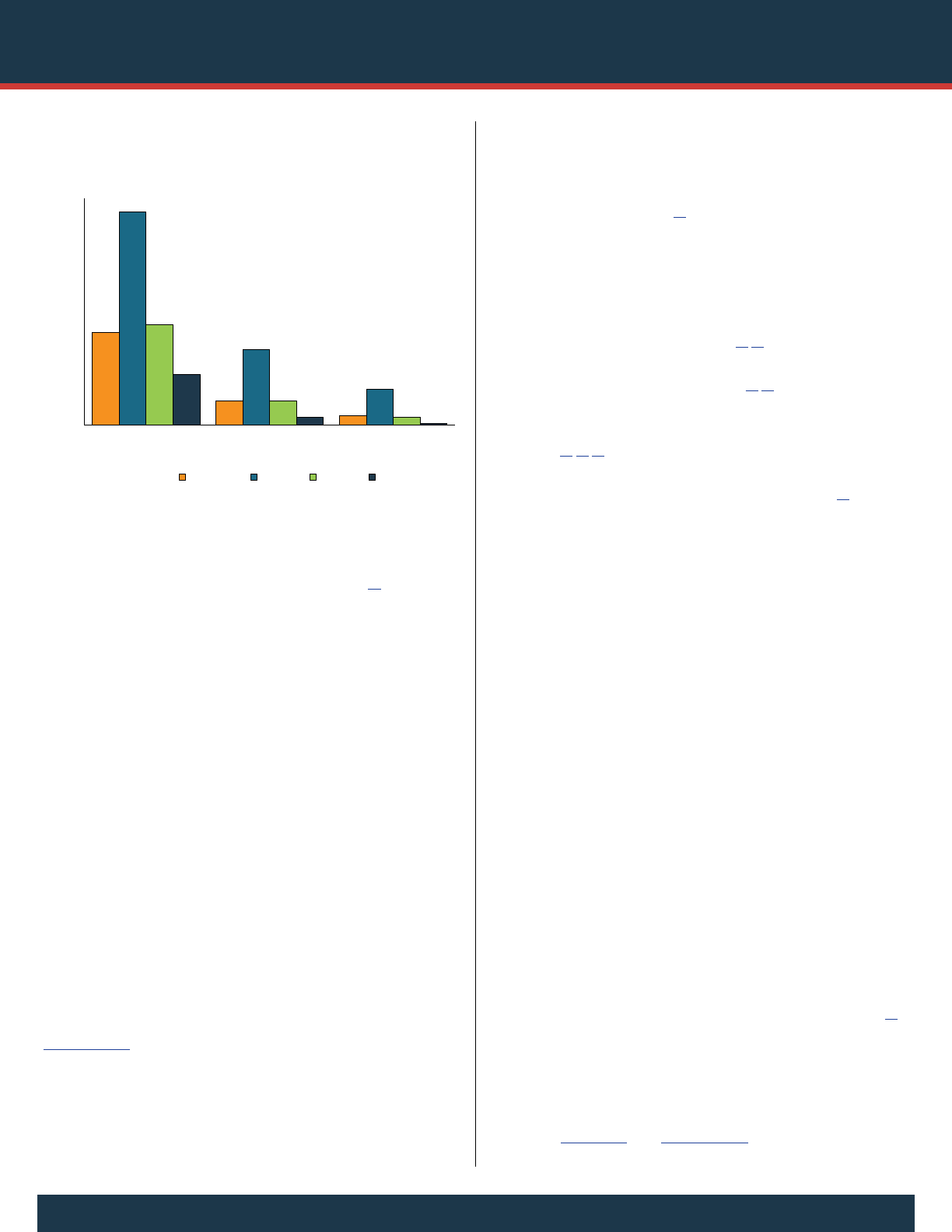
Key Substance Use and Mental Health Indicators in the United States:
Results from the 2020 National Survey on Drug Use and Health36 | October 2021
and associated symptoms, such as thoughts of suicide. Other
people may develop new mental health problems, such as
depression, anxiety, or posttraumatic stress disorder, all of
which are associated with increased suicide risk.
89
To better understand the potential impact of the COVID-19
pandemic on suicidal thoughts and behaviors among adults
in the United States, new questions were added to the
NSDUH questionnaire for Quarter 4 of 2020. erefore,
estimates are limited to data that were collected from adult
respondents from October to December 2020. If adult
respondents reported that they thought seriously about
trying to kill themselves in the past 12 months, they were
asked if they had these suicidal thoughts because of the
COVID-19 pandemic. Adult respondents who reported
plans to kill themselves or who tried to kill themselves were
also asked if they made these plans or tried to kill themselves
because of the COVID-19 pandemic.
Among adults aged 18 or older in 2020 who had serious
thoughts of suicide in the past year, 21.1 percent (or
2.5 million people) had serious thoughts of suicide because
of the COVID-19 pandemic. Among adults who made a
suicide plan in the past year, 8.5 percent (or 266,000 people)
made a suicide plan because of the COVID-19 pandemic
(Table A.35B).
Among adults in 2020 who had serious thoughts of suicide
in the past year, similar percentages of young adults aged
18 to 25 and adults aged 26 to 49 had serious thoughts of
suicide because of the COVID-19 pandemic (22.6 percent
or 802,000 young adults aged 18 to 25 and 19.1 percent or
1.0 million adults aged 26 to 49). Corresponding estimates
of adults aged 50 or older with serious thoughts of suicide
because of the COVID-19 pandemic are not presented due
to low statistical precision.
13
Suicidal Thoughts and Behaviors among
Adolescents
Trends in suicide attempts and deaths by suicide have
been increasing among adolescents.
90,91
ese trends in
suicidal behaviors among adolescents are major public
health concerns in the United States.
92,93
Vulnerable
adolescent populations exposed to adverse childhood
experiences (ACEs) are at greater risk of suicide and related
behaviors.
94,95,96
In the midst of the COVID-19 pandemic,
preliminary data suggest a rise in suicide-related emergency
department visits, particularly among adolescents.
97
To better understand suicidal thoughts and behaviors
among adolescents, new questions were added to the
NSDUH questionnaire for Quarter 4 of 2020. erefore,
estimates are limited to data that were collected from
adolescent respondents from October to December 2020.
In Quarter 4, adolescent respondents were asked if they
seriously thought about trying to kill themselves, if they
made plans to kill themselves, and if they had tried to kill
themselves in the past 12 months. Unlike the questions for
adults, the questions for adolescent respondents included
the response options “I’m not sure” and “I don’t want to
answer.”
e new follow-up questions were such that if adolescent
respondents reported that they thought seriously about trying
to kill themselves in the past 12 months, they were asked if
they had these suicidal thoughts because of the COVID-19
pandemic. Adolescent respondents who reported plans to kill
themselves or who tried to kill themselves were also asked
if they had these plans or tried to kill themselves because of
the COVID-19 pandemic. Due to low statistical precision,
however, estimates are not presented for suicidal thoughts and
behaviors because of the COVID-19 pandemic among all
adolescents who reported suicidal thoughts and behaviors.
13
Among adolescents aged 12 to 17 in 2020, 12.0 percent
(or 3.0 million people) had serious thoughts of suicide,
5.3 percent (or 1.3 million people) made a suicide plan, and
2.5 percent (or 629,000 people) attempted suicide in the
past year (Figure 40 and Table A.36B).
Figure 39. Had Serious Thoughts of Suicide, Made a Suicide Plan,
or Attempted Suicide in the Past Year: Among Adults Aged 18 or
Older; 2020
4.9
1.3
0.5
11.3
4.0
1.9
5.3
1.3
0.4
2.7
0.4
0.1
0
2
4
6
8
10
12
Had Serious Thoughts
of Suicide
Made a Suicide Plan Attempted Suicide
Percent with Thought or Behavior in the Past Year
18 or Older 18 to 25 26 to 49 50 or Older
Age Category:

Key Substance Use and Mental Health Indicators in the United States:
Results from the 2020 National Survey on Drug Use and Health October 2021 | 37
Substance Use Treatment in the Past Year
Substance use treatment is intended to help people address
problems associated with their use of alcohol or illicit drugs
(i.e., not counting tobacco use), including medical problems
associated with the use of alcohol or illicit drugs.
98
e
2020 NSDUH provided two principal measures related to
substance use treatment in the past year: (a) the need for
substance use treatment and (b) the receipt of substance
use treatment. e survey also collected information on the
types of settings where people received treatment and issues
associated with people needing substance use treatment but
not receiving it.
14
As noted in the Substance Use Disorders in the Past Year
section, the change from DSM-IV
18
to DSM-5
17
criteria
for estimating SUD led to breaks in the comparability
of 2020 SUD estimates with estimates from prior years;
therefore, data prior to 2020 are not shown. Also, because
some estimates for substance use treatment (e.g., need for
substance use treatment) are based on whether people had
an SUD in the past year, this report presents substance use
treatment estimates for 2020 only.
Before the COVID-19 pandemic, substance use treatment
was typically delivered in person. e COVID-19 pandemic
required changes in substance use treatment to include
expansion of virtual treatments. To support this need,
regulations for opioid treatment were relaxed for take-home
medications and requirements for in-person treatment.
99,100
Although reimbursement for some virtual behavioral
health services was allowed before 2020, reimbursement for
additional virtual services (including substance use treatment)
was expanded during the COVID-19 pandemic, including
reimbursement for services delivered over the phone (i.e.,
using only audio).
101
Virtual substance use treatment has
been shown to be effective
102,103
and has been proposed as an
alternative to in-person services for some time, particularly
in instances where access to such services is limited.
104
In
light of these changes to substance use treatment delivery and
reimbursement, questions were added to the 2020 NSDUH
questionnaire for Quarter 4 (i.e., October to December) to
assess the use of virtual substance use treatment services. e
Receipt of Virtual (Telehealth) Services for Substance Use
Treatment section presents estimates from Quarter 4 on the
receipt of virtual services for substance use treatment.
Need for Substance Use Treatment
SAMHSA classifies people as having a need for substance
use treatment if they had an SUD in the past year or if they
received substance use treatment at a specialty facility
105
in
the past year (regardless of whether they had an SUD).
106,107
Among people aged 12 or older in 2020, 14.9 percent (or
41.1 million people) needed substance use treatment in the
past year (Figure 41 and Table A.38AB). Consistent with
SUD data, the percentage of people needing substance use
treatment was highest among young adults aged 18 to 25
(24.6 percent or 8.2 million people), followed by adults aged
26 or older (14.3 percent or 31.3 million people), then by
adolescents aged 12 to 17 (6.4 percent or 1.6 million people).
Figure 40. Youths Aged 12 to 17 with Serious Thoughts of Suicide, Suicide Plans, or Suicide
Attempts in the Past Year; 2020
3.0 Million Youths Had Serious
Thoughts of Suicide
Had Serious Thoughts
of Suicide Only
Made Suicide Plans Only (30K)
1.3 Million Youths
Made Suicide Plans
1.6
Million
3.0 Million Youths Aged 12 to 17 Had Serious Thoughts of Suicide, Made Suicide Plans, or Attempted Suicide in the Past Year
Attempted Suicide Only (8K)
629,000 Youths
Attempted Suicide
85K
502K
733K
Had Serious Thoughts of Suicide and
Attempted Suicide, but Did Not Make
Suicide Plans
Made Suicide Plans and Attempted Suicide, but
Did Not Have Serious Thoughts of Suicide (35K)
Had Serious Thoughts of Suicide
and Made Suicide Plans, but Did
Not Attempt Suicide
Had Serious Thoughts of Suicide, Made
Suicide Plans, and Attempted Suicide
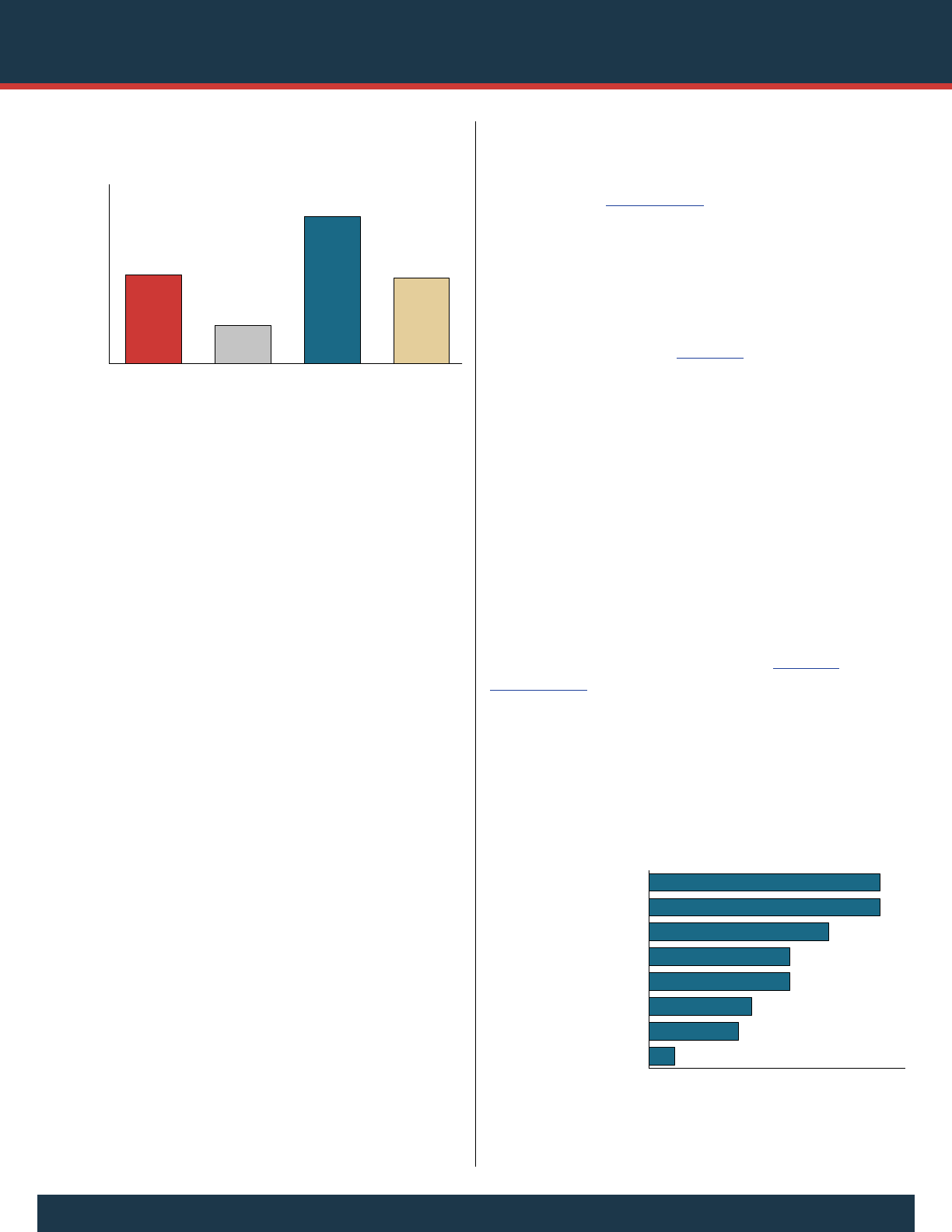
Key Substance Use and Mental Health Indicators in the United States:
Results from the 2020 National Survey on Drug Use and Health38 | October 2021
Receipt of Substance Use Treatment
NSDUH respondents who used alcohol or illicit drugs
in their lifetime were asked whether they ever received
substance use treatment, and those who received substance
use treatment in their lifetime were asked whether they
received treatment in the 12 months prior to the survey
interview (i.e., in the past year). Receipt of any substance
use treatment includes substance use treatment received in
the past year at any location, such as a hospital (inpatient),
rehabilitation facility (outpatient or inpatient), mental
health center, emergency room, private doctor’s office, prison
or jail, or self-help group (e.g., Alcoholics Anonymous or
Narcotics Anonymous). Also, respondents in Quarter 4 of
2020 who reported receiving substance use treatment in the
past year were asked if they received professional counseling,
medication, or treatment in the past 12 months for their
alcohol or drug use over the phone, by e-mail, or through
video calling (i.e., virtual or telehealth services).
e 2020 NSDUH also collected information on the receipt
of substance use treatment at a specialty facility. Substance
use treatment at a specialty facility is included in the
estimates of any substance use treatment because a subset of
the treatment locations was categorized as specialty facilities.
Receipt of substance use treatment at a specialty facility was
defined as substance use treatment received by a respondent
at a hospital (only as an inpatient), a drug or alcohol
rehabilitation facility (as an inpatient or outpatient), or a
mental health center. Substance use treatment at a specialty
facility did not include virtual services that Quarter 4
respondents reported receiving. Substance use treatment at a
specialty facility also excluded self-help groups (regardless of
when data were collected).
Receipt of Any Substance Use Treatment
Among people aged 12 or older in 2020, 1.4 percent (or
4.0 million people) received any substance use treatment
in the past year (Table A.38AB). An estimated 1.8 million
people aged 12 or older received substance use treatment
in the past year at a self-help group, 1.8 million received
treatment at a rehabilitation facility as an outpatient,
1.4 million received treatment at a mental health center as an
outpatient, 1.1 million received treatment at a rehabilitation
facility as an inpatient, and 1.1 million received treatment
at a private doctor’s office (Figure 42). Smaller numbers of
people received treatment at a hospital as an inpatient, in an
emergency room, or in a prison or jail.
In 2020, 1.6 percent of adults aged 26 or older (or
3.4 million people) and 1.3 percent of young adults aged
18 to 25 (or 445,000 people) received any substance use
treatment in the past year. ese percentages were higher
than the corresponding percentage among adolescents aged
12 to 17 (0.7 percent or 169,000 people).
Receipt of Any Substance Use Treatment
among People with a Past Year SUD
Among people aged 12 or older in 2020 with a past year
SUD, 6.5 percent (or 2.6 million people) received any
substance use treatment in the past year (Figure 43 and
Table A.38AB). Percentages were similar among age groups:
7.6 percent of adolescents aged 12 to 17, 4.4 percent of
young adults aged 18 to 25, and 7.0 percent of adults aged
26 or older with a past year SUD. Corresponding numbers of
people with a past year SUD who received any substance use
Figure 42. Locations Where Substance Use Treatment in the Past
Year Was Received: Among People Aged 12 or Older; 2020
1.8M
1.8M
1.4M
1.1M
1.1M
801,000
732,000
181,000
0.0 0.5 1.0 1.5 2.0
Self-Help Group
Outpatient Rehabilitation
Outpatient Mental Health Center
Inpatient Rehabilitation
Private Doctor's Office
Hospital Inpatient
Emergency Room
Prison or Jail
Number of People
Note: Locations where people received substance use treatment are not mutually exclusive because
respondents could report that they received treatment in more than one location in the pastyear.
Figure 41. Need for Substance Use Treatment in the Past Year:
Among People Aged 12 or Older; 2020
14.9
6.4
24.6
14.3
0
5
10
15
20
25
30
12 or Older 12 to 17 18 to 25 26 or Older
Percent Needing Substance Use
Treatment in Past Year
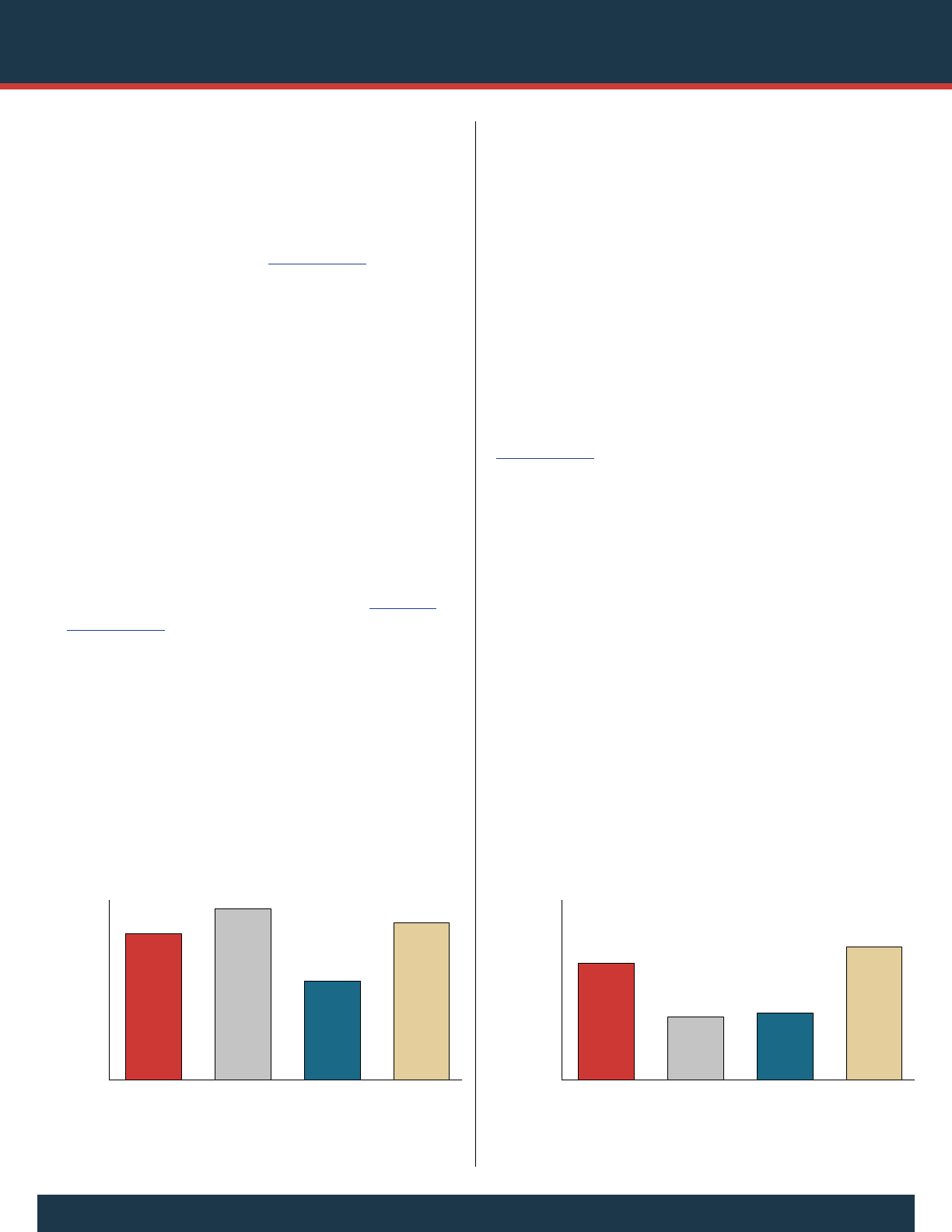
Key Substance Use and Mental Health Indicators in the United States:
Results from the 2020 National Survey on Drug Use and Health October 2021 | 39
treatment in the past year were 120,000 adolescents, 363,000
young adults, and 2.1 million adults aged 26 or older.
Receipt of Substance Use Treatment at a Specialty Facility
Among people aged 12 or older in 2020, 1.0 percent (or
2.7 million people) received substance use treatment at a
specialty facility in the past year (Table A.38AB). Among
adolescents aged 12 to 17, 0.2 percent (or 55,000 people)
received substance use treatment at a specialty facility in the
past year. is percentage among adolescents was somewhat
lower than corresponding percentages for young adults aged
18 to 25 (0.9 percent or 301,000 people) and for adults aged
26 or older (1.1 percent or 2.3 million people). As noted
previously, however, adolescents were less likely than young
adults or adults aged 26 or older to need substance use
treatment in the past year.
Receipt of Substance Use Treatment at a Specialty Facility
among People Who Needed Substance Use Treatment
Among the 41.1 million people aged 12 or older in 2020
who needed substance use treatment in the past year,
6.5 percent (or 2.7 million people) received substance use
treatment at a specialty facility in the past year (Figure 44
and Table A.38AB). Adults aged 26 or older who needed
substance use treatment in the past year were more likely
than their counterparts aged 12 to 17 or aged 18 to 25 to
have received substance use treatment at a specialty facility
in the past year. Among the 31.3 million adults aged 26
or older in 2020 who needed substance use treatment in
the past year, 7.4 percent (or 2.3 million people) received
substance use treatment at a specialty facility in the past year.
In comparison, among the 1.6 million adolescents aged 12
to 17 in 2020 who needed substance use treatment in the
past year, 3.5 percent (or 55,000 people) received substance
use treatment at a specialty facility in the past year. Among
the 8.2 million young adults aged 18 to 25 in 2020 who
needed substance use treatment in the past year, 3.7 percent
(or 301,000 people) received substance use treatment at a
specialty facility in the past year.
Receipt of Virtual (Telehealth) Services
for Substance Use Treatment
Among people aged 12 or older in Quarter 4 of 2020
who received substance use treatment in the past year,
58.0 percent (or 2.2 million people) received virtual
(i.e., telehealth) services for substance use treatment
(Table A.39AB). In addition, 58.4 percent of adults aged 26
or older in Quarter 4 who received substance use treatment
in the past year (or 1.9 million people) received virtual
substance use services. Estimates for adolescents aged 12
to 17 and for young adults aged 18 to 25 who received
substance use treatment in the past year could not be
calculated with sufficient precision.
Perceived Need for Substance Use Treatment
NSDUH respondents were classified as having a perceived
need for substance use treatment (i.e., treatment for
problems related to their use of alcohol or illicit drugs)
if they indicated that they felt they needed substance
use treatment in the past year. Respondents may have a
perceived need for substance use treatment, regardless of
whether they had an SUD in the past year. In this report,
Figure 43. Received Any Substance Use Treatment in the Past
Year: Among People Aged 12 or Older Who Had a Substance Use
Disorder in the Past Year; 2020
6.5
7.6
4.4
7.0
0
2
4
6
8
12 or Older 12 to 17 18 to 25 26 or Older
Percent Receiving Any Substance
Use Treatment in Past Year
Figure 44. Received Substance Use Treatment at a Specialty
Facility in the Past Year: Among People Aged 12 or Older Who
Needed Substance Use Treatment in the Past Year; 2020
6.5
3.5
3.7
7.4
0
2
4
6
8
10
12 or Older 12 to 17 18 to 25 26 or Older
Percent Receiving Substance Use Treatment
at a Specialty Facility in Past Year
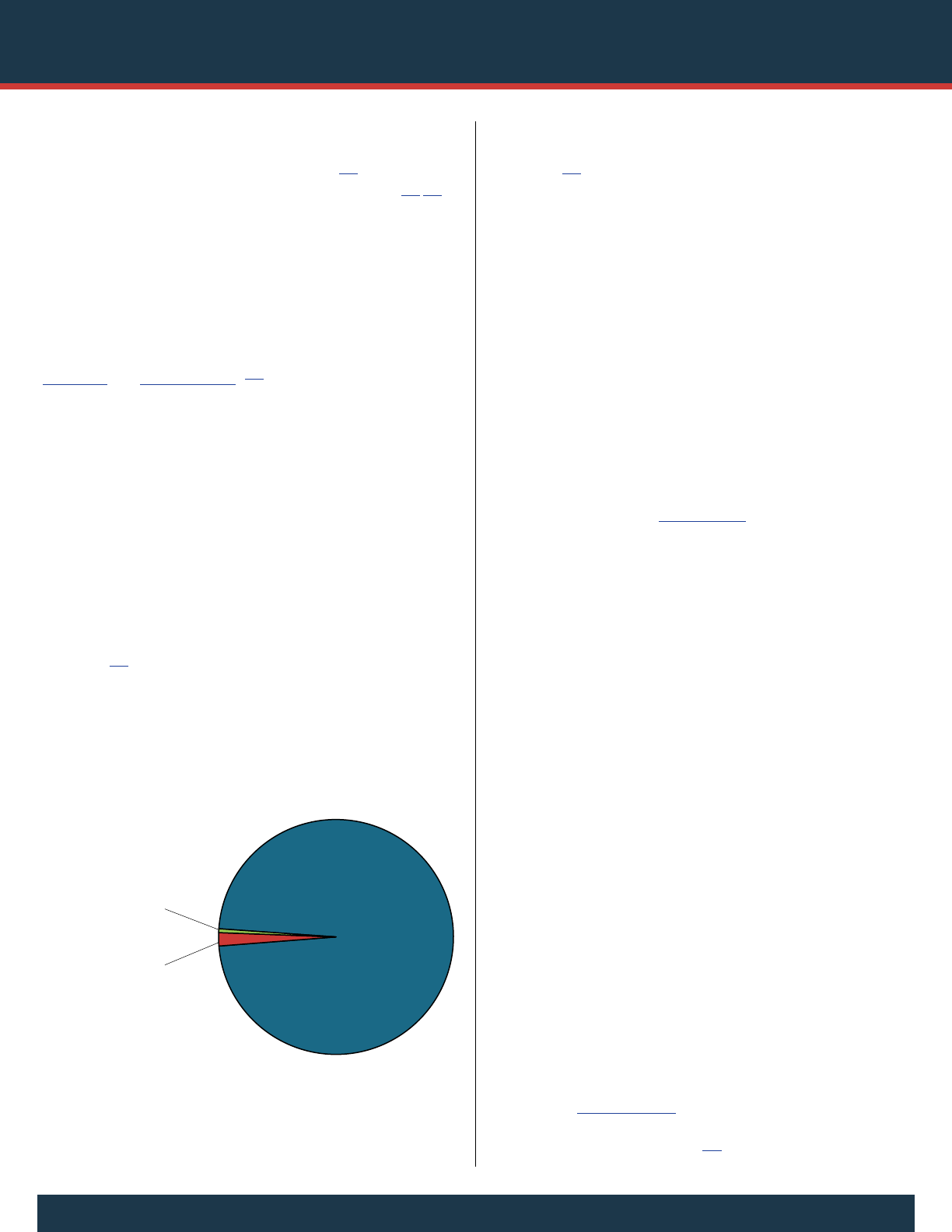
Key Substance Use and Mental Health Indicators in the United States:
Results from the 2020 National Survey on Drug Use and Health40 | October 2021
estimates for the perceived need for substance use treatment
are discussed only among people aged 12 or older who were
classified as having an SUD in the past year
108
but did not
receive substance use treatment at a specialty facility.
106,107
Among the 38.4 million people aged 12 or older in 2020 with
an SUD in the past year who did not receive substance use
treatment at a specialty facility, 97.5 percent (or 37.5 million
people) did not feel they needed treatment, 1.9 percent (or
737,000 people) felt they needed treatment but did not make
an effort to get treatment, and 0.5 percent (or 211,000 people)
felt they needed treatment and made an effort to get treatment
(Figure 45 and Table A.40AB).
109
Similar patterns were
observed by age group. For example, among people in different
age groups in 2020 with a past year SUD who did not receive
substance use treatment at a specialty facility, 98.4 percent of
adolescents aged 12 to 17 (or 1.5 million people), 98.1 percent
of young adults aged 18 to 25 (or 7.8 million people), and
97.3 percent of adults aged 26 or older (or 28.2 million
people) did not feel they needed treatment.
Reasons for Not Receiving Substance Use Treatment
NSDUH respondents who did not receive substance use
treatment in the past 12 months but felt they needed
treatment were asked to report the reasons for not receiving
treatment.
110
As noted in the previous section, among people
aged 12 or older in 2020 who were classified as having
an SUD and did not receive substance use treatment at a
specialty facility, only 2.5 percent perceived that they needed
treatment.
109
For people who perceived a need for treatment,
information on common reasons for not receiving substance
use treatment is important for identifying and addressing
barriers to treatment receipt.
Among people aged 12 or older in 2020 with a past year
SUD who did not receive treatment at a specialty facility and
perceived a need for treatment, the following were common
reasons for not receiving substance use treatment:
• having no health care coverage and not being able to
afford the cost of treatment (19.1 percent),
• not finding a program that offered the type of treatment
they wanted (14.4 percent), and
• being concerned that getting treatment might cause their
neighbors or community to have a negative opinion of
them (11.9 percent) (Table A.44B).
Medication‑Assisted Treatment for Alcohol Use or
Opioid Misuse
Beginning with the 2019 NSDUH, questions were included
in the interview to assess the receipt of medication-assisted
treatment (MAT) for problems with alcohol use or opioid
misuse. NSDUH respondents aged 12 or older who reported
receiving any treatment in the past year for problems
related to their use of alcohol were asked to report whether
a doctor or other health professional prescribed them
medication in the past year to help reduce or stop their use
of alcohol. Questions on MAT for opioid misuse were asked
if respondents aged 12 or older reported ever using heroin
or ever misusing prescription pain relievers and reported
receiving any treatment in the past year for illicit drug use
problems. ese respondents were asked whether a doctor or
other health professional prescribed them medication in the
past year to help reduce or stop their use of heroin, misuse
of prescription pain relievers, or both. Respondents also were
informed that MAT for opioid misuse was different from
medications given to stop a drug overdose.
Medication-Assisted Treatment for Alcohol Use
Among the 28.3 million people aged 12 or older in 2020
with a past year alcohol use disorder, 1.0 percent (or
292,000 people) received MAT in the past year for their
alcohol use (Table A.45AB). Among the 2.1 million people
aged 12 or older in 2020 who received alcohol use treatment
at any location in the past year
111
(regardless of whether
Figure 45. Perceived Need for Substance Use Treatment: Among
People Aged 12 or Older with a Past Year Substance Use Disorder
(SUD) Who Did Not Receive Substance Use Treatment at a
Specialty Facility in the Past Year; 2020
38.4 Million People with an SUD Who Did Not Receive Substance Use
Treatment at a Specialty Facility
37.5 Million
Did Not Feel They
Needed Treatment
(97.5%)
211,000 Felt They Needed
Treatment and Made an Effort
to Get Treatment
(0.5%)
737,000 Felt They Needed
Treatment and Did Not Make
an Effort to Get Treatment
(1.9%)
Note: People who had an SUD were classified as needing substance use treatment.
Note: The percentages do not add to 100percent due to rounding.
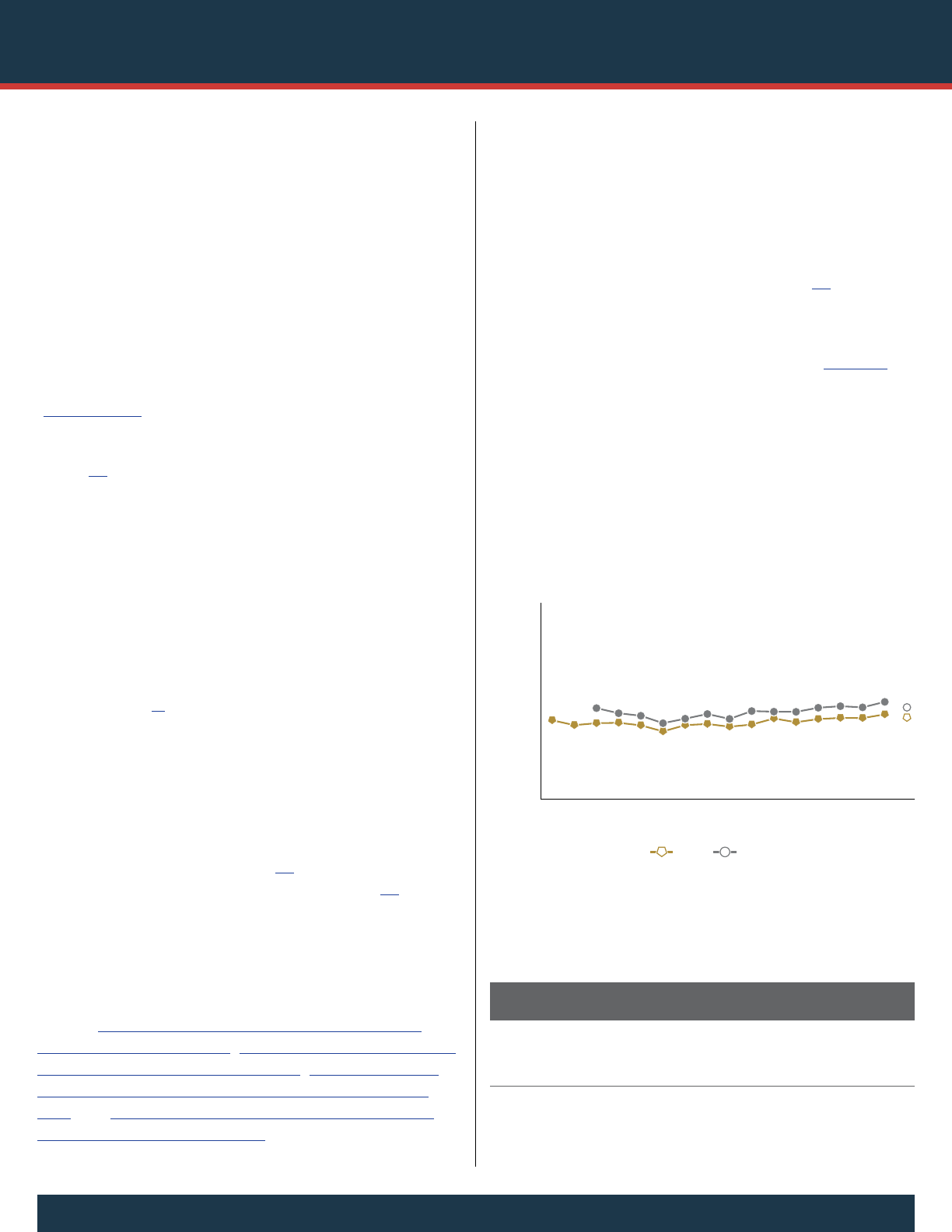
Key Substance Use and Mental Health Indicators in the United States:
Results from the 2020 National Survey on Drug Use and Health October 2021 | 41
they had a past year alcohol use disorder), 17.2 percent (or
362,000 people) received MAT in the past year for alcohol
use. Estimates in 2020 for people who received MAT in
the past year for alcohol use among those with a past year
alcohol use disorder and who received alcohol use treatment
at any location in the past year could not be calculated with
sufficient precision.
Medication-Assisted Treatment for Opioid Misuse
Among the 2.6 million people aged 12 or older in 2020 who
received illicit drug use treatment (i.e., not necessarily for
opioid misuse) in the past year, 30.5 percent (or 798,000
people) received MAT in the past year for opioid misuse
(Table A.46AB). Among the 2.5 million people aged 12 or
older with a past year opioid use disorder, 11.2 percent (or
278,000 people) received MAT in the past year for opioid
misuse.
111
Mental Health Service Use in the Past Year
e 2020 NSDUH included questions to estimate the use
of mental health services in the United States among the
adolescent and adult populations. In addition to estimating
the use of mental health services among the overall
adolescent and adult populations, these questions allowed
for the estimation of the use of mental health services among
adolescents and adults with mental health issues (i.e., MDE,
AMI, and SMI).
14
Similar to its effect on substance use treatment, the
COVID-19 pandemic has affected the availability of
services and the modes of mental health service delivery.
Even before then, virtual (i.e., telehealth) mental health care
has been proposed as an alternative to in-person mental
health services as a means to increase access, particularly
in areas where services are limited.
112
Mental health care
delivered virtually has been shown to be effective.
113
In light
of these changes to the delivery of mental health services,
questions were added to the 2020 NSDUH questionnaire
for Quarter 4 (i.e., October to December) to assess the use
of virtual mental health services. e following subsections
present estimates of the receipt of virtual mental health
services: Receipt of Virtual (Telehealth) Mental Health
Services among Adolescents, Receipt of Virtual (Telehealth)
Mental Health Services among Adults, Receipt of Virtual
(Telehealth) Mental Health Services among Adults with
AMI, and Receipt of Virtual (Telehealth) Mental Health
Services among Adults with SMI.
Treatment for Depression among Adolescents
Adolescents aged 12 to 17 who had met the criteria for
having a past year MDE were asked whether they had
received treatment for their depression in the past year.
Adolescents were classified as having received treatment
for their depression in the past year if they reported seeing
or talking to a health professional or taking prescription
medication for their depression in that period.
114
Among the 4.1 million adolescents aged 12 to 17 in 2020 who
had a past year MDE, 41.6 percent (or 1.7 million people)
received treatment for depression in the past year (Figure 46).
Among the 2.9 million adolescents in 2020 who had a past year
MDE with severe impairment, 46.9 percent (or 1.4 million
people) received treatment for depression in the past year.
Stated another way, however, most adolescents in 2020 who
had a past year MDE or an MDE with severe impairment did
not receive treatment for depression in the past year.
Figure 46. Received Treatment in the Past Year for Depression:
Among Youths Aged 12 to 17 with a Past Year Major Depressive
Episode (MDE) or MDE with Severe Impairment; 2004-2020
Percent Who Received Treatment
for Depression in Past Year
Years
MDE Status:
MDE
MDE with Severe Impairment
0
20
40
60
80
100
2019181716151413121110090807060504
Note: There is no connecting line between 2019 and 2020 to indicate caution should be used when
comparing estimates between 2020 and prior years because of methodological changes for 2020.
Due to these changes, significance testing between 2020 and prior years was not performed.
Figure 46 Table. Received Treatment in the Past Year for Depression: Among
Youths Aged 12 to 17 with a Past Year Major Depressive Episode (MDE) or
MDE with Severe Impairment; 2004-2020
MDE
Status
04 05 06 07 08 09 10 11 12 13 14 15 16 17 18 19 20
MDE
40.3 37.8 38.8 39.0 37.7 34.6 37.8 38.4 37.0 38.1 41.2 39.3 40.9 41.5 41.4 43.3 41.6
MDE with
Severe
Impairment
N/A N/A 46.5 43.9 42.6 38.8 41.1 43.5 41.0 45.0 44.7 44.6 46.7 47.5 46.9 49.7 46.9
N/A = not available.
Note: The estimate in 2020 is italicized to indicate caution should be used when comparing estimates between
2020 and prior years because of methodological changes for 2020. Due to these changes, significance testing
between 2020 and prior years was not performed.
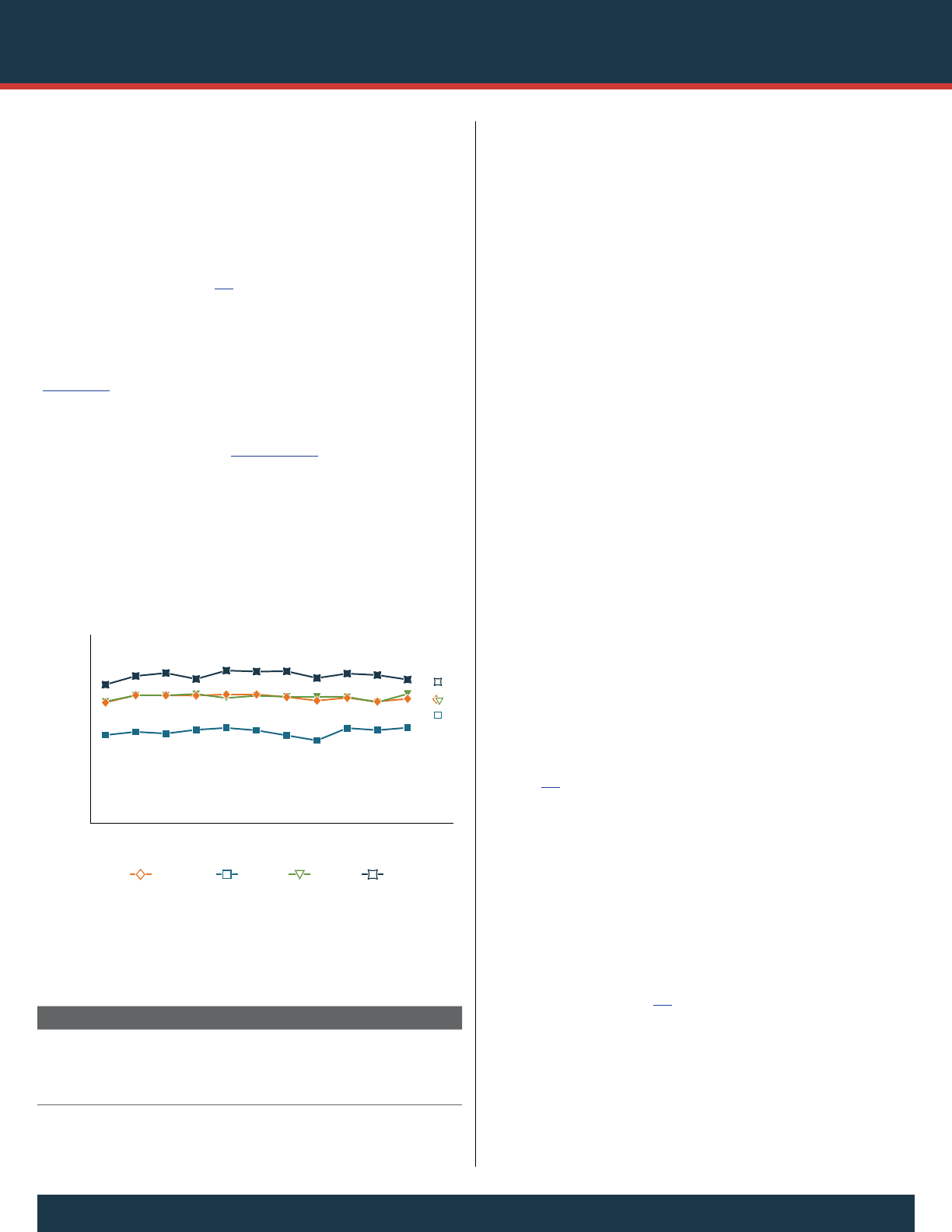
Key Substance Use and Mental Health Indicators in the United States:
Results from the 2020 National Survey on Drug Use and Health42 | October 2021
Treatment for Depression among Adults
Adults aged 18 or older who had met the criteria for having
a past year MDE were asked whether they had received
treatment for their depression in the past year. Adults were
classified as having received treatment for their depression
in the past year if they reported seeing or talking to a health
professional or taking prescription medication for their
depression in that period.
114
Among the 21.0 million adults aged 18 or older in 2020
who had a past year MDE, 66.0 percent (or 13.8 million
people) received treatment for depression in the past year
(Figure 47). Among the 14.8 million adults aged 18 or older
in 2020 who had a past year MDE with severe impairment,
71.0 percent (or 10.5 million people) received treatment for
depression in the past year (Table A.48B).
e percentage of adults in 2020 with a past year MDE
or a past year MDE with severe impairment who received
treatment for depression in the past year increased with
age. Specifically, the percentage of adults with a past year
MDE who received treatment for depression in the past year
was highest among adults aged 50 or older (75.3 percent
or 4.7 million people out of 6.2 million people with an
MDE), followed by adults aged 26 to 49 (64.8 percent
or 5.9 million people out of 9.2 million people with an
MDE), then by young adults aged 18 to 25 (57.6 percent or
3.2 million people out of 5.6 million people with an MDE).
Similarly, the percentage of adults in 2020 with a past year
MDE with severe impairment who received treatment for
depression in the past year was highest among adults aged
50 or older (80.9 percent or 3.5 million people out of
4.4 million people with an MDE with severe impairment),
followed by adults aged 26 to 49 (68.7 percent or
4.5 million people out of 6.5 million people with an MDE
with severe impairment), then by young adults (63.8 percent
or 2.5 million people out of 4.0 million people with an
MDE with severe impairment).
Mental Health Service Use among Adolescents
In addition to asking adolescents aged 12 to 17 about
treatment for depression, the 2020 NSDUH included
questions for adolescents that asked about the receipt of
any service for emotional or behavioral problems (i.e., not
just depression) not caused by substance use. e youth
mental health service utilization section of the interview
asked respondents aged 12 to 17 whether they received
any treatment or counseling within the 12 months prior
to the interview for problems with emotions or behavior
in the following settings: (a) specialty mental health
settings,
115
(b) education settings (talked with a school social
worker, psychologist, or counselor about an emotional or
behavioral problem; participated in a program for students
with emotional or behavioral problems while in a regular
school; or attended a school for students with emotional
or behavioral problems), (c) general medical settings (care
from a pediatrician or family physician for emotional or
behavioral problems), (d) juvenile justice settings (services for
an emotional or behavioral problem in a detention center,
prison, or jail), or (e) child welfare settings (foster care or
therapeutic foster care).
116
Also, adolescents in Quarter 4 of 2020 (i.e., October to
December) were asked new questions on the receipt of
any professional counseling, medication, or treatment in
the past 12 months for their mental health, emotions, or
behavior over the phone, by e-mail, or through video calling
(i.e., virtual or telehealth services). Virtual mental health
Figure 47. Received Treatment in the Past Year for Depression:
Among Adults Aged 18 or Older with a Past Year Major
Depressive Episode; 2009-2020
Percent Who Received Treatment
for Depression in Past Year
0
20
40
60
80
100
201918171615141312111009
18 or Older 18 to 25 26 to 49 50 or Older
Age Category:
Years
Note: There is no connecting line between 2019 and 2020 to indicate caution should be used when
comparing estimates between 2020 and prior years because of methodological changes for 2020.
Due to these changes, significance testing between 2020 and prior years was not performed.
Figure 47 Table. Received Treatment in the Past Year for Depression: Among
Adults Aged 18 or Older with a Past Year Major Depressive Episode; 2009-
2020
Age 2009 2010 2011 2012 2013 2014 2015 2016 2017 2018 2019 2020
18 or Older
64.3 68.2 68.1 68.0 68.6 68.6 67.2 65.3 66.8 64.8 66.3 66.0
18 to 25
47.0 48.7 47.8 49.8 50.8 49.5 46.8 44.1 50.7 49.6 50.9 57.6
26 to 49
64.8 68.1 68.1 68.8 66.7 67.9 67.4 67.4 67.3 64.4 68.9 64.8
50 or Older
73.8 78.4 80.0 76.8 81.3 80.8 80.9 77.3 79.7 78.9 76.5 75.3
Note: The estimate in 2020 is italicized to indicate caution should be used when comparing estimates between
2020 and prior years because of methodological changes for 2020. Due to these changes, significance testing
between 2020 and prior years was not performed.
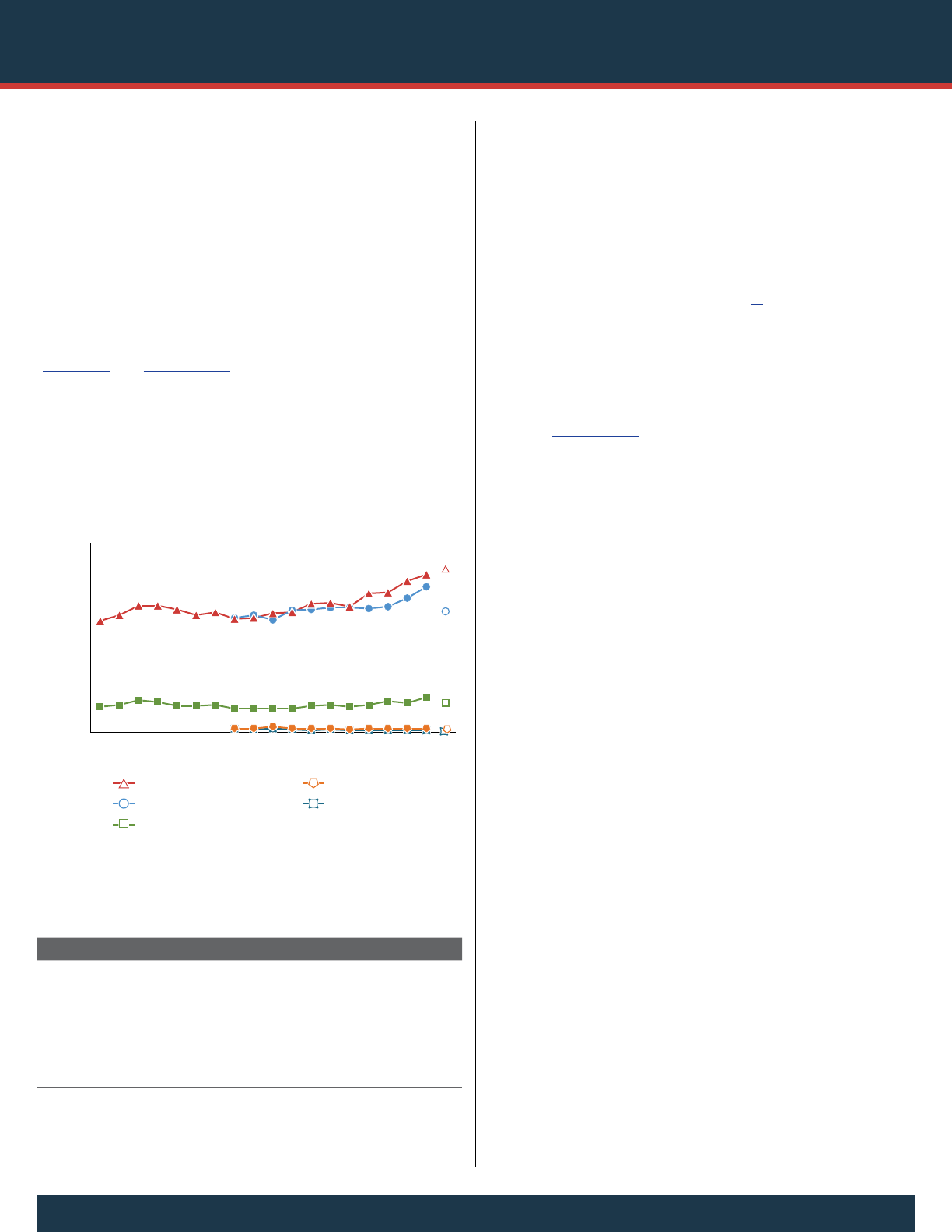
Key Substance Use and Mental Health Indicators in the United States:
Results from the 2020 National Survey on Drug Use and Health October 2021 | 43
services were categorized separately from the mental health
settings described in the preceding paragraph.
Receipt of Mental Health Services in Specialty and
Nonspecialty Settings among Adolescents
In 2020, 17.3 percent of adolescents aged 12 to 17 (or
4.2 million people) received mental health services in a
specialty setting, including 16.6 percent (or 4.1 million
people) who received mental health treatment in an
outpatient setting and 2.1 percent (or 510,000 people) who
received mental health treatment in an inpatient setting
(Figure 48 and Table A.49B). An estimated 15.0 percent of
adolescents (or 3.7 million people) received mental health
services in a nonspecialty setting, including 12.8 percent (or
3.1 million people) who received mental health services in
an educational setting (such as from a school social worker,
school psychologist, or school counselor, or as part of a
special school or program), 3.1 percent (or 762,000 people)
who received mental health services in a general medicine
setting, 0.3 percent (or 66,000 people) who received mental
health services in a child welfare setting, and 0.1 percent
(or 22,000 people) who received mental health services
in a juvenile justice setting.
5
Additionally, 6.9 percent of
adolescents received mental health services in a combination
of specialty and nonspecialty settings.
33
Receipt of Virtual (Telehealth) Mental Health
Services among Adolescents
In Quarter 4 of 2020, 10.1 percent of adolescents aged 12 to
17 received mental health services as virtual (i.e., telehealth)
services (Table A.50B). is percentage corresponds to
2.5 million adolescents.
Mental Health Service Use among Adults
Adult respondents aged 18 or older were asked whether
they received treatment or counseling for any problem
with emotions, “nerves,” or mental health in the past year
in any inpatient or outpatient setting or if they used
prescription medication in the past year for a mental or
emotional condition. All adult respondents (i.e., not just
those with mental illness) were asked these questions about
their use of mental health services. Respondents were asked
not to include treatment for their use of alcohol or illicit
drugs. Unlike the previously discussed questions about
treatment for depression, general questions about the
receipt of treatment or counseling for mental health issues
among adults did not ask about treatment for a particular
mental disorder. Consequently, references in this section to
treatment or counseling for any problem with emotions,
nerves, or mental health are described broadly as “mental
health services” or “mental health care.”
Also, adults in Quarter 4 of 2020 (i.e., October to
December) were asked if they received any professional
counseling, medication, or treatment for their mental health,
emotions, or behavior over the phone, by e-mail, or through
video calling in the past 12 months (i.e., virtual or telehealth
services). Virtual mental health services were categorized
separately from services in inpatient or outpatient settings or
the receipt of prescription medication.
Receipt of Inpatient or Outpatient Mental Health
Services or Prescription Medication among Adults
In 2020, 16.9 percent of adults aged 18 or older (or
41.4 million people) received inpatient or outpatient mental
Figure 48. Sources of Mental Health Services in the Past Year:
Among Youths Aged 12 to 17; 2002-2020
Percent Receiving Mental Health
Services in Past Year
0
5
10
15
20
20191817161514131211100908070605040302
Source:
Years
Specialty Mental Health Setting
Education Setting
General Medical Setting
Child Welfare Setting
Juvenile Justice Setting
Note: There is no connecting line between 2019 and 2020 to indicate caution should be used when
comparing estimates between 2020 and prior years because of methodological changes for 2020.
Due to these changes, significance testing between 2020 and prior years was not performed.
Figure 48 Table. Sources of Mental Health Services in the Past Year: Among
Youths Aged 12 to 17; 2002-2020
Source 02 03 04 05 06 07 08 09 10 11 12 13 14 15 16 17 18 19 20
Specialty Mental
Health Setting
11.8
12.4
13.4 13.4 13.0 12.4 12.7 12.0 12.1 12.6 12.7 13.6 13.7 13.3 14.7 14.8 16.0 16.7 17.3
Education Setting
N/A
N/A
N/A N/A N/A N/A N/A 12.1 12.4 11.9 12.9 13.0 13.2 13.2 13.1 13.3 14.2 15.4 12.8
General Medical
Setting
2.7
2.9
3.4 3.2 2.8 2.8 2.9 2.5 2.5 2.5 2.5 2.8 2.9 2.7 2.9 3.3 3.1 3.7 3.1
Child Welfare
Setting
N/A
N/A
N/A N/A N/A N/A N/A 0.4 0.4 0.6 0.4 0.4 0.4 0.3 0.4 0.4 0.4 0.4 0.3
Juvenile Justice
Setting
N/A
N/A
N/A N/A N/A N/A N/A 0.4 0.3 0.4 0.3 0.2 0.3 0.2 0.2 0.2 0.2 0.2 0.1
N/A = not available.
Note: The estimate in 2020 is italicized to indicate caution should be used when comparing estimates between
2020 and prior years because of methodological changes for 2020. Due to these changes, significance testing
between 2020 and prior years was not performed.
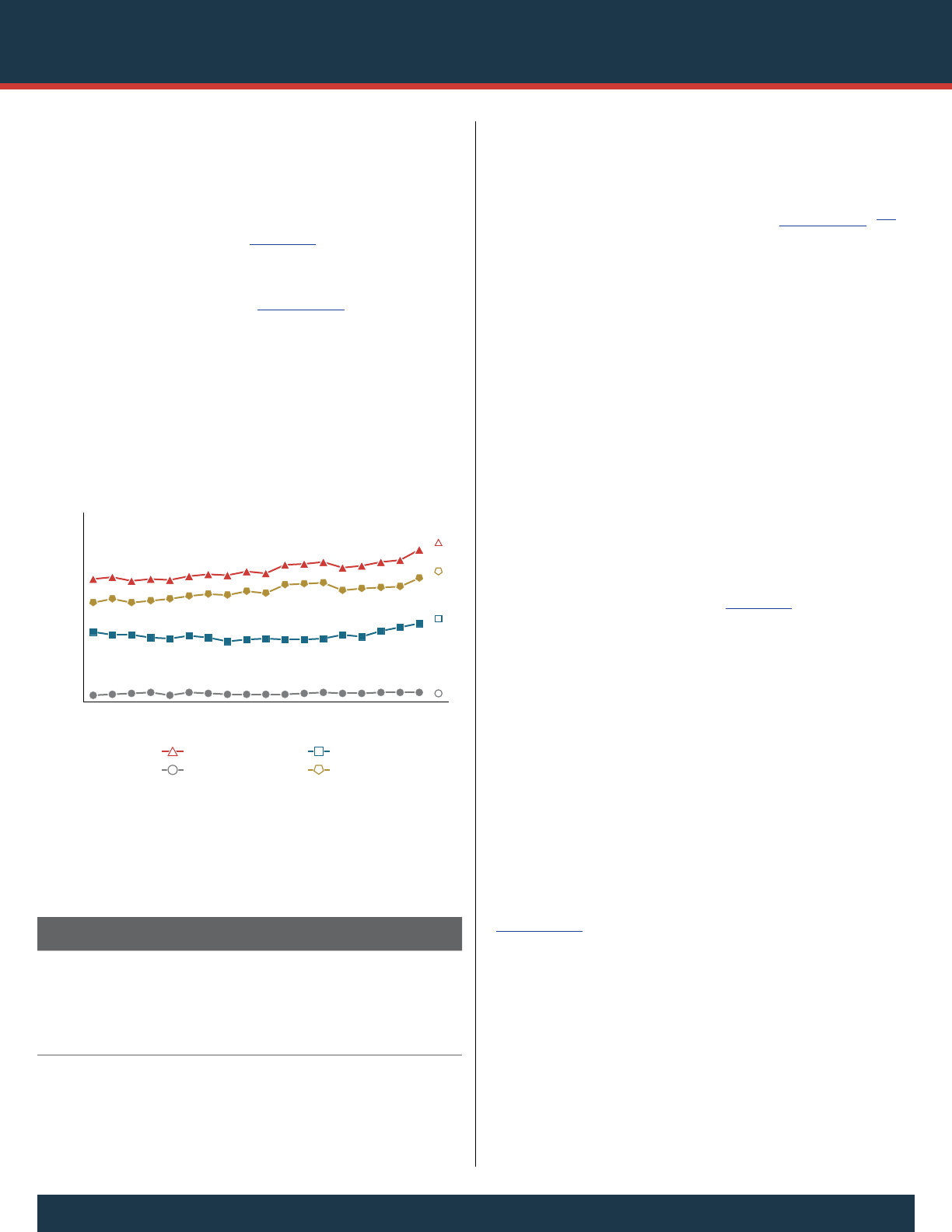
Key Substance Use and Mental Health Indicators in the United States:
Results from the 2020 National Survey on Drug Use and Health44 | October 2021
health services or took prescription medication in the
past year for a mental health issue, including 0.9 percent
(or 2.2 million people) who received inpatient services,
8.8 percent (or 21.5 million people) who received outpatient
services, and 13.8 percent (or 33.8 million people) who
took prescription medication (Figure 49). Adults aged 50
or older were less likely than young adults aged 18 to 25 or
adults aged 26 to 49 to have received any of these mental
health services in the past year (Table A.51B). Specifically,
15.0 percent of adults aged 50 or older (or 17.1 million
people) received any of these mental health services
compared with 19.5 percent of young adults (or 6.3 million
people) and 18.3 percent of adults aged 26 to 49 (or
18.0 million people).
Receipt of Virtual (Telehealth) Mental
Health Services among Adults
In 2020, 11.0 percent of adults aged 18 or older (or
26.3 million people) received virtual (i.e., telehealth) services
in the past year for a mental health issue (Table A.52B).
111
Adults aged 50 or older were less likely than young adults
aged 18 to 25 or adults aged 26 to 49 to have received
virtual mental health services in the past year. Specifically,
7.8 percent of adults aged 50 or older (or 8.8 million people)
received virtual mental health services in the past year
compared with 14.9 percent of young adults (or 4.8 million
people) and 13.4 percent of adults aged 26 to 49 (or
12.8 million people).
Mental Health Service Use among Adults with AMI
Receipt of Inpatient or Outpatient Mental Health Services
or Prescription Medication among Adults with AMI
Among the 52.9 million adults aged 18 or older in 2020
with AMI in the past year, 46.2 percent (or 24.3 million
people) received inpatient or outpatient mental health
services or took prescription medication to treat a mental
health condition in the past year (Figure 50). Young adults
aged 18 to 25 with AMI were less likely than adults aged
26 to 49 or adults aged 50 or older with AMI to receive any
of these services in the past year. An estimated 42.1 percent
of young adults with AMI in the past year (or 4.3 million
people) received any of these mental health services in the
past year compared with 46.6 percent of adults aged 26 to
49 with AMI (or 11.9 million people) and 48.0 percent of
adults aged 50 or older with AMI (or 8.1 million people).
Receipt of Virtual (Telehealth) Mental Health
Services among Adults with AMI
In 2020, 33.7 percent of adults aged 18 or older with AMI
in the past year (or 18.5 million people) received virtual
(i.e., telehealth) mental health services in the past year
(Table A.54B). In each age group, similar percentages of
adults with AMI received virtual mental health services in
the past year (35.9 percent of young adults aged 18 to 25,
34.9 percent of adults aged 26 to 49, and 30.9 percent of
adults aged 50 or older).
Figure 49. Type of Mental Health Services Received in the Past
Year: Among Adults Aged 18 or Older; 2002-2020
Percent Receiving Mental Health
Services in Past Year
Mental Health Services
Inpatient
Outpatient
Prescription Medication
Service Type:
0
5
10
15
20
20191817161514131211100908070605040302
Years
Note: Mental Health Services include any combination of inpatient or outpatient services or receipt of
prescription medication.
Note: There is no connecting line between 2019 and 2020 to indicate caution should be used when
comparing estimates between 2020 and prior years because of methodological changes for 2020.
Due to these changes, significance testing between 2020 and prior years was not performed.
Figure 49 Table. Type of Mental Health Services Received in the Past Year:
Among Adults Aged 18 or Older; 2002-2020
Service
Type
02 03 04 05 06 07 08 09 10 11 12 13 14 15 16 17 18 19 20
Mental
Health
Services
13.0 13.2 12.8 13.0 12.9 13.3 13.5 13.4 13.8 13.6 14.5 14.6 14.8 14.2 14.4 14.8 15.0 16.1 16.9
Inpatient
0.7 0.8 0.9 1.0 0.7 1.0 0.9 0.8 0.8 0.8 0.8 0.9 1.0 0.9 0.9 1.0 1.0 1.0 0.9
Outpatient
7.4 7.1 7.1 6.8 6.7 7.0 6.8 6.4 6.6 6.7 6.6 6.6 6.7 7.1 6.9 7.5 7.9 8.3 8.8
Prescription
Medication
10.5 10.9 10.5 10.7 10.9 11.2 11.4 11.3 11.7 11.5 12.4 12.5 12.6 11.8 12.0 12.1 12.2 13.1 13.8
Note: Mental Health Services include any combination of inpatient or outpatient services or receipt of prescription
medication.
Note: The estimate in 2020 is italicized to indicate caution should be used when comparing estimates between
2020 and prior years because of methodological changes for 2020. Due to these changes, significance testing
between 2020 and prior years was not performed.
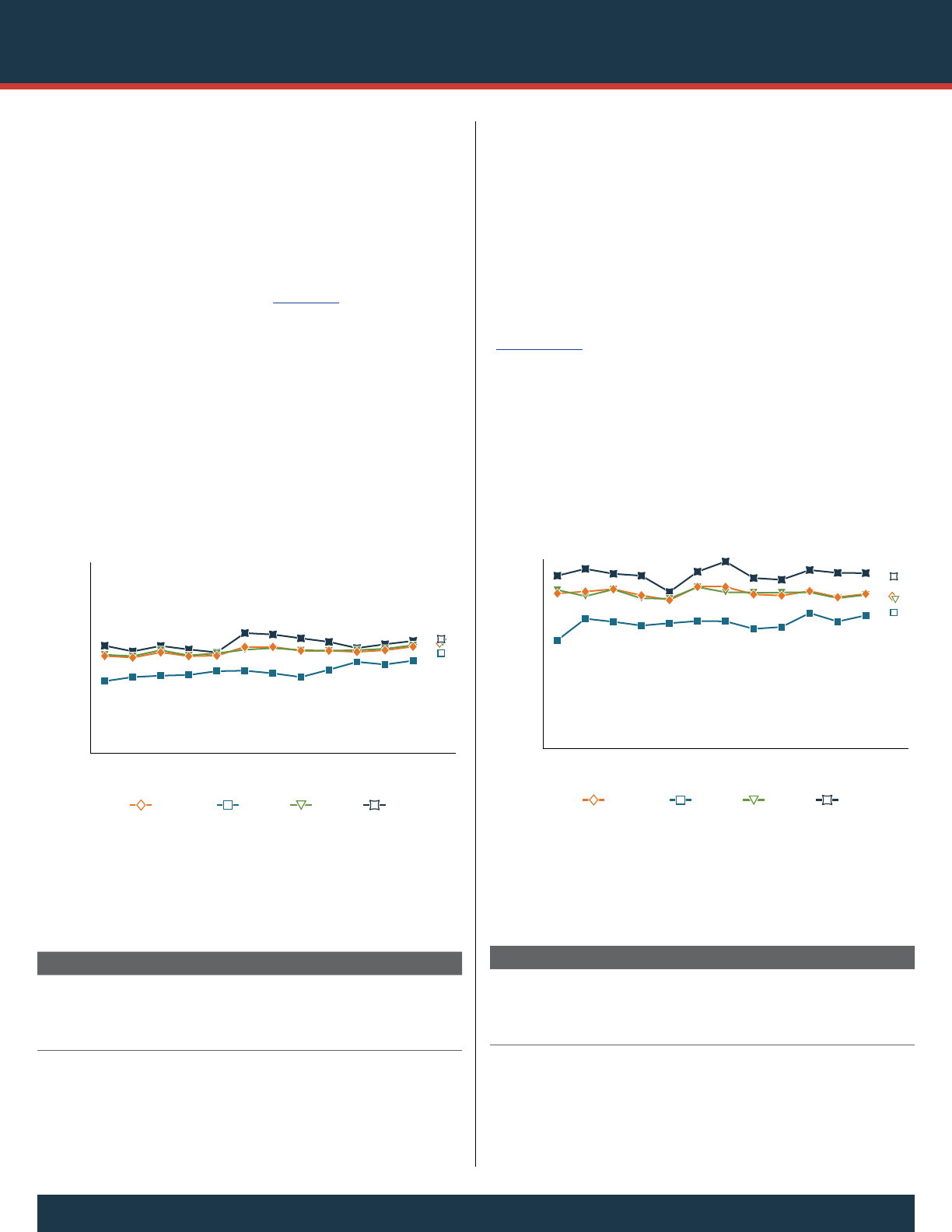
Key Substance Use and Mental Health Indicators in the United States:
Results from the 2020 National Survey on Drug Use and Health October 2021 | 45
Mental Health Service Use among Adults with SMI
Receipt of Inpatient or Outpatient Mental Health Services
or Prescription Medication among Adults with SMI
Among the 14.2 million adults aged 18 or older in 2020
with SMI in the past year, 64.5 percent (or 9.1 million
people) received inpatient or outpatient mental health
services or took prescription medication to treat a mental
health condition in the past year (Figure 51). As with adults
with AMI, young adults aged 18 to 25 with SMI in the
past year were less likely than adults aged 26 to 49 or adults
aged 50 or older with SMI to receive any of these services in
the past year. Specifically, 57.6 percent of young adults with
SMI (or 1.9 million people) received any of these mental
health services in the past year compared with 63.0 percent
of adults aged 26 to 49 with SMI (or 4.4 million people)
and 72.9 percent of adults aged 50 or older with SMI (or
2.9 million people). Adults aged 50 or older with SMI also
were more likely than those aged 26 to 49 with SMI to have
received any of these mental health services in the past year.
Receipt of Virtual (Telehealth) Mental Health
Services among Adults with SMI
In 2020, 49.8 percent of adults aged 18 or older with SMI
in the past year (or 7.2 million people) received virtual
(i.e., telehealth) mental health services in the past year
(Table A.56B). Similar percentages of young adults aged 18
to 25 (49.3 percent) and adults aged 26 to 49 (50.3 percent)
with SMI received virtual mental health services in the
past year. Estimates for adults aged 50 or older with an
SMI in the past year could not be calculated with sufficient
precision.
Figure 50. Mental Health Services Received in the Past Year:
Among Adults Aged 18 or Older with Any Mental Illness in the
Past Year; 2008-2020
Percent Receiving Mental Health
Services in Past Year
0
20
40
60
80
20191817161514131211100908
18 or Older 18 to 25 26 to 49 50 or Older
Age Category:
Years
Note: Mental Health Services include any combination of inpatient or outpatient services or receipt of
prescription medication.
Note: There is no connecting line between 2019 and 2020 to indicate caution should be used when
comparing estimates between 2020 and prior years because of methodological changes for 2020.
Due to these changes, significance testing between 2020 and prior years was not performed.
Figure 50 Table. Mental Health Services Received in the Past Year: Among
Adults Aged 18 or Older with Any Mental Illness in the Past Year; 2008-2020
Age 2008 2009 2010 2011 2012 2013 2014 2015 2016 2017 2018 2019 2020
18 or Older
40.9 40.2 42.4 40.8 41.0 44.7 44.7 43.1 43.1 42.6 43.3 44.8 46.2
18 to 25
30.3 32.0 32.6 32.9 34.5 34.7 33.6 32.0 35.1 38.4 37.3 38.9 42.1
26 to 49
41.4 40.8 43.3 41.1 42.0 43.5 44.2 43.3 43.1 43.3 43.9 45.4 46.6
50 or Older
45.2 42.8 45.1 43.6 42.4 50.5 49.9 48.3 46.8 44.2 45.8 47.2 48.0
Note: Mental Health Services include any combination of inpatient or outpatient services or receipt of prescription
medication.
Note: The estimate in 2020 is italicized to indicate caution should be used when comparing estimates between
2020 and prior years because of methodological changes for 2020. Due to these changes, significance testing
between 2020 and prior years was not performed.
Figure 51. Mental Health Services Received in the Past Year:
Among Adults Aged 18 or Older with Serious Mental Illness in the
Past Year; 2008-2020
Percent Receiving Mental Health
Services in Past Year
0
20
40
60
80
20191817161514131211100908
18 or Older 18 to 25 26 to 49 50 or Older
Age Category:
Years
Note: Mental Health Services include any combination of inpatient or outpatient services or receipt of
prescription medication.
Note: There is no connecting line between 2019 and 2020 to indicate caution should be used when
comparing estimates between 2020 and prior years because of methodological changes for 2020.
Due to these changes, significance testing between 2020 and prior years was not performed.
Figure 51 Table. Mental Health Services Received in the Past Year: Among
Adults Aged 18 or Older with Serious Mental Illness in the Past Year; 2008-2020
Age 2008 2009 2010 2011 2012 2013 2014 2015 2016 2017 2018 2019 2020
18 or Older
65.7 66.5 67.5 64.9 62.9 68.5 68.5 65.3 64.8 66.7 64.1 65.5 64.5
18 to 25
45.9 55.0 53.7 52.1 53.1 54.0 53.9 50.7 51.5 57.4 53.8 56.4 57.6
26 to 49
67.2 64.5 67.4 63.6 63.5 68.4 66.2 66.1 66.1 66.2 63.7 65.1 63.0
50 or Older
73.2 76.1 74.0 73.2 66.3 74.9 79.2 72.2 71.5 75.6 74.4 74.3 72.9
Note: Mental Health Services include any combination of inpatient or outpatient services or receipt of prescription
medication.
Note: The estimate in 2020 is italicized to indicate caution should be used when comparing estimates between
2020 and prior years because of methodological changes for 2020. Due to these changes, significance testing
between 2020 and prior years was not performed.
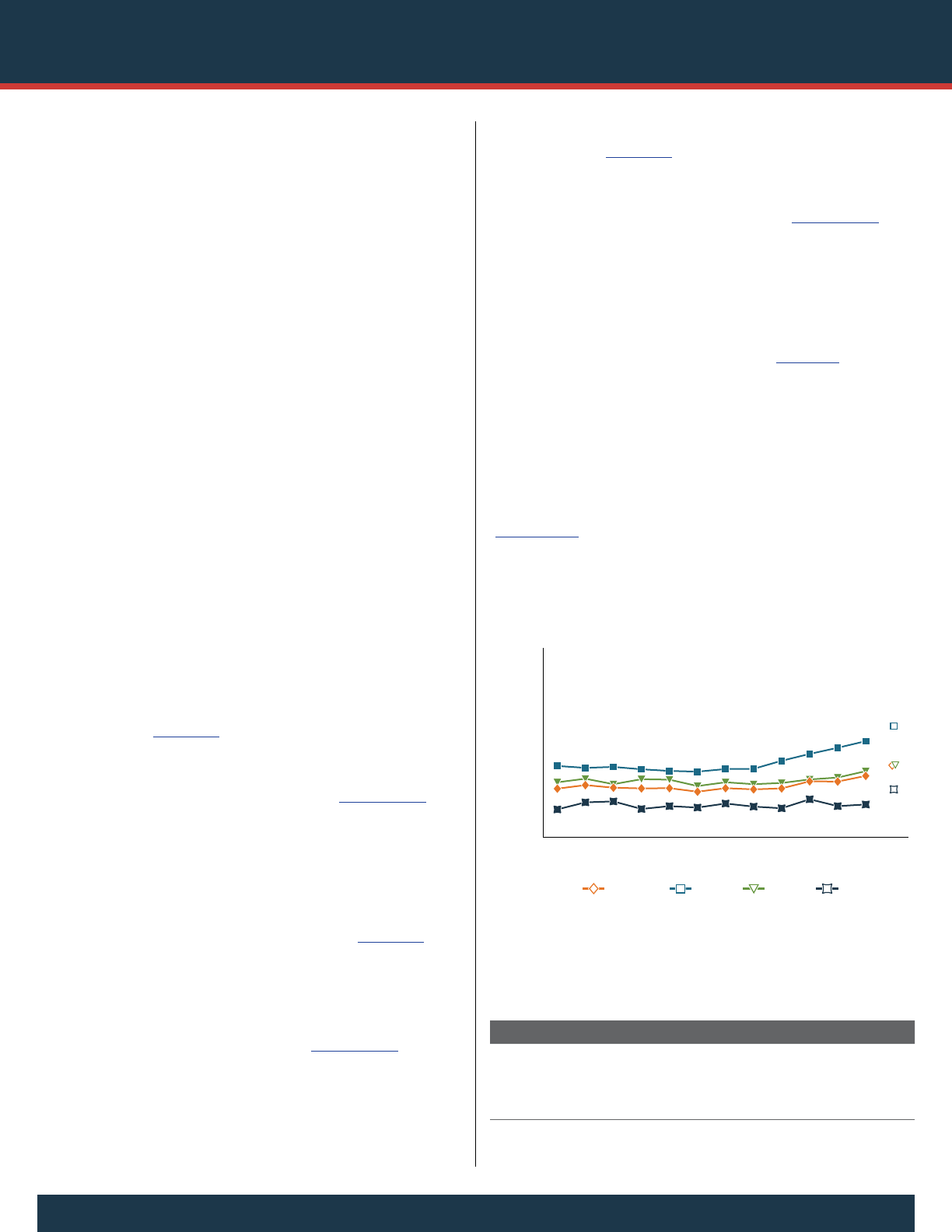
Key Substance Use and Mental Health Indicators in the United States:
Results from the 2020 National Survey on Drug Use and Health46 | October 2021
Perceived Unmet Need for Mental Health Services
among Adults with Mental Illness
is section discusses estimates of the perceived unmet need
for mental health services among adults aged 18 or older
with AMI or SMI in the past year. e section also discusses
the reasons adults with AMI or SMI did not receive these
services in the past year if they had a perceived unmet need.
Perceived unmet need for mental health services among
adults is estimated from a question that asked all adults
aged 18 or older whether there was any time in the
past 12 months when they thought they needed treatment
or counseling for mental health issues but did not receive
services. However, this section presents estimates of the
perceived unmet need for mental health services among
adults with AMI or SMI, regardless of whether they received
mental health services in the past 12 months. erefore,
this measure for the perceived unmet need for mental
health services includes adults with AMI or SMI who may
have received some type of mental health service in the
past 12 months but felt an unmet need for services before or
after they received services.
Perceived Unmet Need for Mental Health
Services among Adults with AMI
Among the 52.9 million adults aged 18 or older in 2020
with AMI in the past year, 30.5 percent (or 16.1 million
people) perceived an unmet need for mental health services
in the past year (Figure 52). Among these 16.1 million adults
with AMI and a perceived unmet need for mental health
services, 48.0 percent (or 7.7 million people) did not receive
any mental health services in the past year (Table A.58B).
e percentage of adults in 2020 with AMI in the past year
who had a perceived unmet need for mental health services
was highest among young adults aged 18 to 25 (47.1 percent
or 4.8 million people), followed by adults aged 26 to 49
(30.5 percent or 7.8 million people), then by adults aged 50
or older (20.3 percent or 3.4 million people) (Figure 52).
us, nearly half of young adults with AMI had a perceived
unmet need for mental health services. Percentages of adults
in 2020 with AMI and a perceived unmet need for mental
health services who did not receive any mental health
services were similar across age groups (
Table A.58B).
Perceived Unmet Need for Mental Health
Services among Adults with SMI
Among the 14.2 million adults aged 18 or older in 2020
with SMI in the past year, 49.7 percent (or 7.0 million
people) perceived an unmet need for mental health services
in the past year (Figure 53). Among these 7.0 million adults
with SMI and a perceived unmet need for mental health
services, 37.6 percent (or 2.6 million people) did not receive
any mental health services in the past year (Table A.58B).
e percentage of adults in 2020 with SMI in the past year
who had a perceived unmet need for mental health services
was highest among young adults aged 18 to 25 (63.4 percent
or 2.1 million people), followed by adults aged 26 to 49
(48.0 percent or 3.3 million people), then by adults aged 50 or
older (41.4 percent or 1.6 million people) (Figure 53). us,
nearly two thirds of young adults with SMI had a perceived
unmet need for mental health services. Furthermore, nearly half
of adults aged 26 to 49 with SMI and about 2 in 5 adults aged
50 or older with SMI had a perceived unmet need for mental
health services. Similar percentages of young adults and adults
aged 26 to 49 with SMI had a perceived unmet need for mental
health services and did not receive any mental health services
(
Table A.58B). Estimates for adults aged 50 or older with SMI
Figure 52. Perceived Unmet Need for Mental Health Services in
the Past Year: Among Adults Aged 18 or Older with Any Mental
Illness in the Past Year; 2008-2020
Percent with Perceived Unmet Need for
Mental Health Services in Past Year
0
20
40
60
80
20191817161514131211100908
18 or Older 18 to 25 26 to 49 50 or Older
Age Category:
Years
Note: There is no connecting line between 2019 and 2020 to indicate caution should be used when
comparing estimates between 2020 and prior years because of methodological changes for 2020.
Due to these changes, significance testing between 2020 and prior years was not performed.
Figure 52 Table. Perceived Unmet Need for Mental Health Services in the
Past Year: Among Adults Aged 18 or Older with Any Mental Illness in the
Past Year; 2008-2020
Age 2008 2009 2010 2011 2012 2013 2014 2015 2016 2017 2018 2019 2020
18 or Older
20.6 22.1 21.0 20.7 20.8 19.3 20.8 20.3 20.7 23.7 23.6 26.0 30.5
18 to 25
30.2 29.4 29.8 28.8 28.1 27.8 28.9 29.0 32.4 35.3 37.9 40.7 47.1
26 to 49
23.3 24.8 22.5 24.6 24.4 21.7 23.3 22.5 23.0 24.5 25.3 28.0 30.5
50 or Older
11.8 14.8 15.2 12.0 13.2 12.6 14.3 13.0 12.3 16.1 13.2 13.9 20.3
Note: The estimate in 2020 is italicized to indicate caution should be used when comparing estimates between
2020 and prior years because of methodological changes for 2020. Due to these changes, significance testing
between 2020 and prior years was not performed.
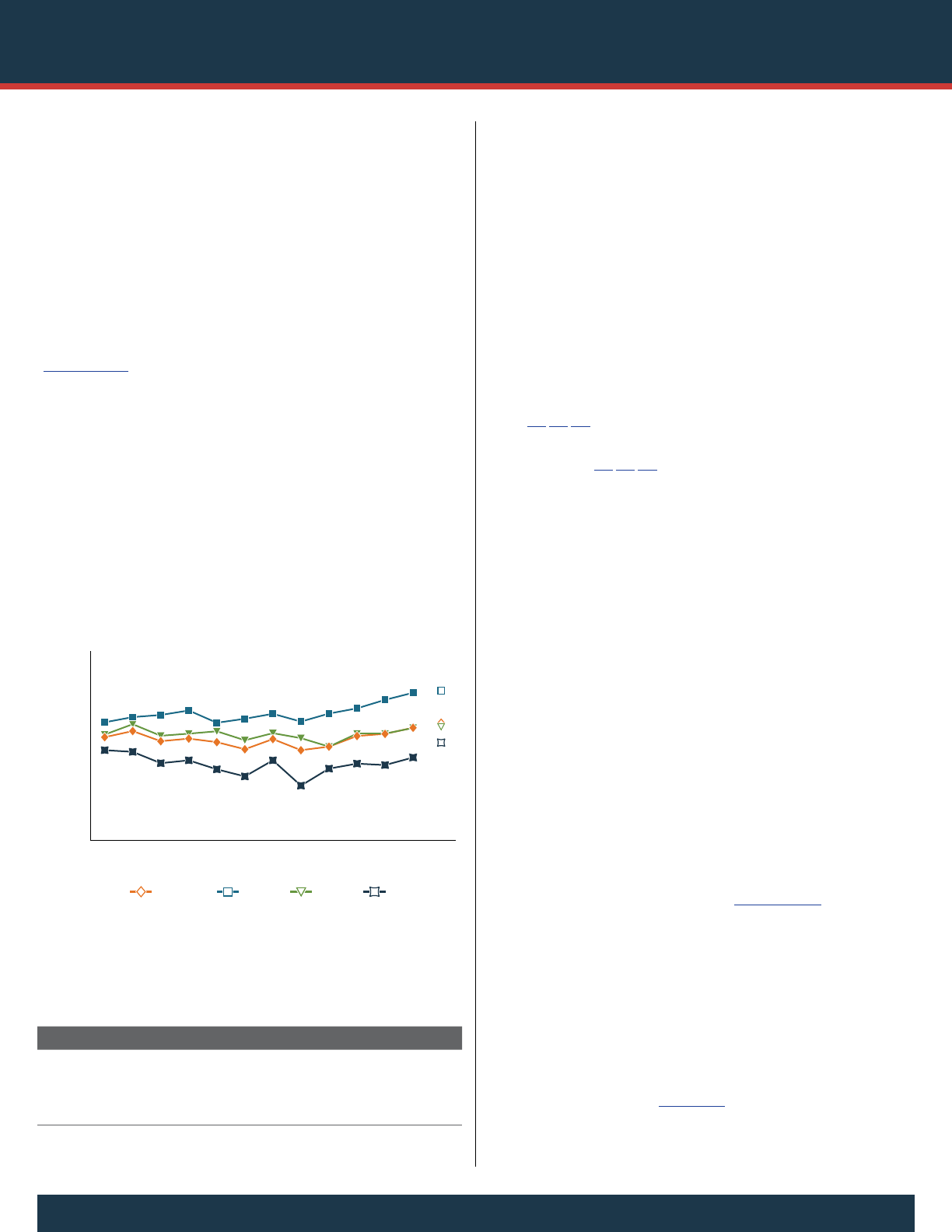
Key Substance Use and Mental Health Indicators in the United States:
Results from the 2020 National Survey on Drug Use and Health October 2021 | 47
and a perceived unmet need who did not receive any mental
health services could not be calculated with sufficient precision.
Reasons for Not Receiving Mental Health Services among
Adults with Mental Illness and a Perceived Unmet Need
Among adults aged 18 or older in 2020 who had mental
illness in the past year and a perceived unmet need for mental
health services but did not receive services in the past year,
the most common reason for not receiving services was they
could not afford the cost of care (44.9 percent for these
adults with AMI and 49.5 percent for these adults with SMI)
(Table A.59B). Other common reasons for not receiving
services included not knowing where to go for services
(32.7 percent for these adults with AMI and 33.5 percent
for these adults with SMI) and believing they could handle
the problem without treatment (29.7 percent for these adults
with AMI and 25.0 percent for these adults with SMI).
In addition, 25.9 percent of these adults with SMI were
concerned about being committed to a psychiatric hospital or
having to take medication.
Receipt of Services for Co‑Occurring Substance
Use Disorder and Mental Health Issues
e relationship between SUDs and mental disorders is
known to be bidirectional. e presence of a mental disorder
may contribute to the development or exacerbation of an
SUD. Likewise, the presence of an SUD may contribute to
the development or exacerbation of a mental disorder. e
combined presence of SUDs and mental disorders (hereafter
referred to as co-occurring disorders) results in more
profound functional impairment; worse treatment outcomes;
higher morbidity and mortality; increased treatment costs;
and higher risk for homelessness, incarceration, and suicide
than if people had only one of these disorders but not
both.
117,118,119
Current treatment guidelines recommend
that people with co-occurring disorders receive treatment for
both disorders.
120,121,122
is section presents estimates of the receipt of services
among adolescents and adults with co-occurring SUD and
mental health issues. Estimates for the receipt of virtual
(i.e., telehealth) services among adolescents and adults with
co-occurring SUD and mental health issues are presented
separately from estimates for the receipt of other services
because data on the receipt of virtual services were only
added during Quarter 4 (i.e., October to December 2020).
Receipt of Services among Adolescents with
Co‑Occurring SUD and an MDE
Among the 644,000 adolescents aged 12 to 17 in 2020
with a co-occurring SUD and an MDE in the past year,
69.0 percent (or 438,000 people) received either substance
use treatment at a specialty facility or mental health services
in the past year, 66.8 percent (or 424,000 people) received
only mental health services, and 0.9 percent (or 6,000
people) received both substance use treatment at a specialty
facility and mental health services (Table A.60B).
Receipt of Services among Adults with Co‑Occurring
SUD and AMI
Among the 17.0 million adults aged 18 or older in 2020
with a co-occurring SUD and AMI in the past year,
50.5 percent (or 8.5 million people) received either substance
use treatment at a specialty facility or mental health services
in the past year, and 49.5 percent (or 8.4 million people)
received neither service (Figure 54). Stated another way,
nearly half of adults with a co-occurring SUD and AMI did
not receive substance use treatment at a specialty facility
Figure 53. Perceived Unmet Need for Mental Health Services
in the Past Year: Among Adults Aged 18 or Older with Serious
Mental Illness in the Past Year; 2008-2020
Percent with Perceived Unmet Need for
Mental Health Services in Past Year
0
20
40
60
80
20191817161514131211100908
18 or Older 18 to 25 26 to 49 50 or Older
Age Category:
Years
Note: There is no connecting line between 2019 and 2020 to indicate caution should be used when
comparing estimates between 2020 and prior years because of methodological changes for 2020.
Due to these changes, significance testing between 2020 and prior years was not performed.
Figure 53 Table. Perceived Unmet Need for Mental Health Services in the
Past Year: Among Adults Aged 18 or Older with Serious Mental Illness in the
Past Year; 2008-2020
Age 2008 2009 2010 2011 2012 2013 2014 2015 2016 2017 2018 2019 2020
18 or Older
43.7 46.3 42.0 43.1 41.6 38.6 42.9 38.2 39.7 44.2 45.1 47.7 49.7
18 to 25
50.0 52.2 53.1 55.0 49.8 51.5 53.6 50.3 53.7 55.9 59.5 62.5 63.4
26 to 49
44.8 49.2 44.3 45.2 46.2 42.4 45.4 43.3 39.7 45.2 45.2 47.6 48.0
50 or Older
38.2 37.5 32.7 33.9 30.1 27.1 33.9 23.2 30.4 32.5 31.9 35.1 41.4
Note: The estimate in 2020 is italicized to indicate caution should be used when comparing estimates between
2020 and prior years because of methodological changes for 2020. Due to these changes, significance testing
between 2020 and prior years was not performed.
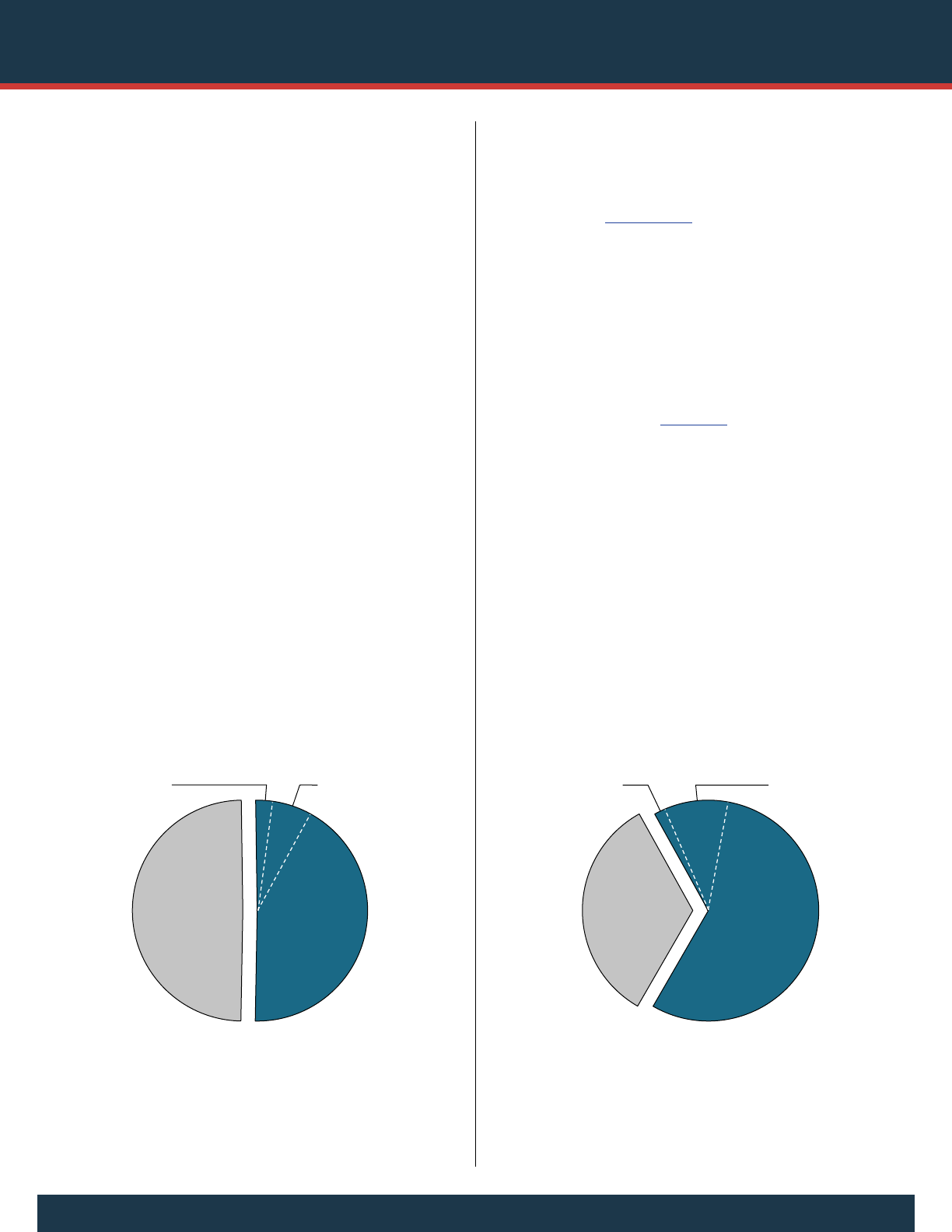
Key Substance Use and Mental Health Indicators in the United States:
Results from the 2020 National Survey on Drug Use and Health48 | October 2021
or mental health services for either condition. In addition,
42.3 percent of adults with a co-occurring SUD and AMI
(or 7.2 million people) received only mental health services,
2.5 percent (or 423,000 people) received only substance use
treatment at a specialty facility, and 5.7 percent (or 960,000
people) received both substance use treatment at a specialty
facility and mental health services.
Among adults aged 18 or older in 2020 with a co-occurring
SUD and AMI in the past year, adults aged 50 or older were
more likely than young adults aged 18 to 25 or adults aged
26 to 49 to have received either substance use treatment at
a specialty facility or mental health services in the past year.
Specifically, 63.0 percent of adults aged 50 or older with a
co-occurring SUD and AMI (or 2.3 million people) received
either service compared with 44.9 percent of young adults
(or 1.8 million people) and 48.1 percent of adults aged
26 to 49 (or 4.4 million people) with a co-occurring SUD
and AMI.
In addition, young adults aged 18 to 25 in 2020 with a
co-occurring SUD and AMI in the past year were less likely
than corresponding adults in older age groups to have
received both substance use treatment at a specialty facility
and mental health services in the past year. An estimated
2.6 percent of young adults (or 104,000 people) with a
co-occurring SUD and AMI in the past year received both
services in the past year compared with 6.0 percent of adults
aged 26 to 49 (or 560,000 people) and 8.2 percent of adults
aged 50 or older (or 296,000 people) with a co-occurring
SUD and AMI (Table A.62B).
Receipt of Services among Adults with Co‑Occurring
SUD and SMI
Among the 5.7 million adults aged 18 or older in 2020 with
a co-occurring SUD and SMI in the past year, 66.4 percent
(or 3.7 million people) received either substance use
treatment at a specialty facility or mental health services
in the past year, and 33.6 percent (or 1.9 million people)
received neither service (Figure 55). Stated another way,
about one third of adults with a co-occurring SUD and
SMI (representing nearly 2 million people) did not receive
substance use treatment at a specialty facility or mental
health services for either condition. In addition, 55.4 percent
of adults with a co-occurring SUD and SMI (or 3.1 million
people) received only mental health services, 1.6 percent
(or 89,000 people) received only substance use treatment
at a specialty facility, and 9.3 percent (or 529,000 people)
received both substance use treatment at a specialty facility
and mental health services.
Figure 55. Receipt of Substance Use Treatment at a Specialty
Facility and Mental Health Services in the Past Year: Among
Adults Aged 18 or Older with Past Year Substance Use Disorder
and Serious Mental Illness; 2020
SU Tx or
MH Services
3.7 Million Adults
(66.4%)
No Treatment
1.9 Million Adults
(33.6%)
Both SU Tx and MH Services
529,000 Adults (9.3%)
MH Services,
but no SU Tx
3.1 Million Adults
(55.4%)
SU Tx, but no MH Services
89,000 Adults (1.6%)
5.7 Million Adults with a Substance Use Disorder and Serious Mental Illness
Note: Mental Health Services include any combination of inpatient or outpatient services or receipt of
prescription medication.
MH = mental health; SU Tx = substance use treatment.
Note: The percentages do not add to 100percent due to rounding.
Figure 54. Receipt of Substance Use Treatment at a Specialty
Facility and Mental Health Services in the Past Year: Among
Adults Aged 18 or Older with Past Year Substance Use Disorder
and Any Mental Illness; 2020
SU Tx or
MH Services
8.5 Million Adults
(50.5%)
No Treatment
8.4 Million Adults
(49.5%)
Both SU Tx and MH Services
1.0 Million Adults (5.7%)
MH Services,
but no SU Tx
7.2 Million Adults
(42.3%)
SU Tx, but no MH Services
423,000 Adults (2.5%)
17.0 Million Adults with a Substance Use Disorder and Any Mental Illness
Note: Mental Health Services include any combination of inpatient or outpatient services or receipt of
prescription medication.
MH = mental health; SU Tx = substance use treatment.
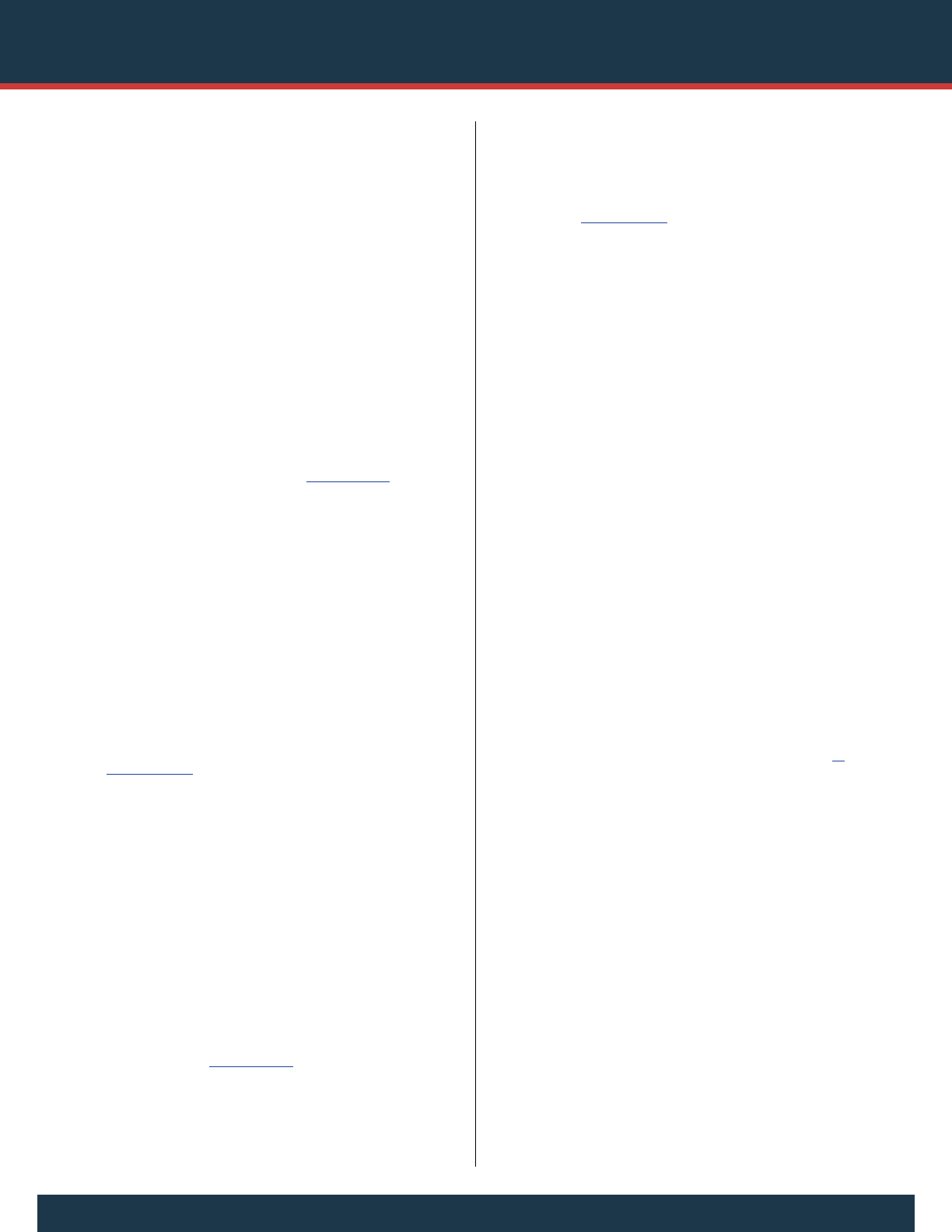
Key Substance Use and Mental Health Indicators in the United States:
Results from the 2020 National Survey on Drug Use and Health October 2021 | 49
Perceived Recovery
Since 2018, respondents aged 18 or older have been asked
whether they thought they ever had a problem with their use
of alcohol or other drugs or whether they ever had a problem
with their mental health. Respondents who reported that they
ever had a problem with their alcohol or other drug use were
asked whether they considered themselves (at the time they
were interviewed) to be in recovery or to have recovered from
their alcohol or other drug use problem. Similarly, respondents
aged 18 or older who reported that they had a problem with
their mental health were asked whether they considered
themselves (at the time they were interviewed) to be in
recovery or to have recovered from their mental health issue.
Among adults aged 18 or older in 2020, 11.6 percent (or
29.2 million people) perceived that they ever had a problem
with their use of alcohol or other drugs (Table A.64B). As
noted in prior sections of this report, young adults aged 18
to 25 in 2020 tended to be more likely than adults aged 26
or older to be binge alcohol users in the past month, to have
used illicit drugs in the past year, or to have had an SUD in
the past year. However, only 7.5 percent of young adults (or
2.5 million people) perceived that they ever had a problem with
their use of alcohol or other drugs compared with 12.3 percent
of adults aged 26 or older (or 26.7 million people).
Among the 29.2 million adults in 2020 who perceived that
they ever had a substance use problem, 72.5 percent (or
21.0 million people) considered themselves to be in recovery
or to have recovered from their alcohol or other drug use
problem (Table A.65B). Adults aged 26 or older who
perceived that they ever had a substance use problem were
more likely than corresponding young adults aged 18 to 25
to consider themselves to be in recovery or to have recovered
from their substance use problem. About three fourths of
adults aged 26 or older who perceived that they ever had
a substance use problem considered themselves to be in
recovery or to have recovered (73.4 percent or 19.5 million
people) compared with about two thirds of young adults
who perceived that they ever had a substance use problem
(63.4 percent or 1.6 million people).
In 2020, 22.0 percent of adults aged 18 or older (or
55.0 million people) perceived that they ever had a problem
with their mental health (Table A.64B). Young adults aged
18 to 25 were more likely than adults aged 26 or older to
perceive that they ever had a problem with their mental health
(34.7 percent of young adults or 11.5 million people vs.
20.0 percent of adults aged 26 or older or 43.5 million people).
Among the 55.0 million adults in 2020 who perceived
that they ever had a problem with their mental health,
65.9 percent (or 35.8 million people) considered themselves
to be in recovery or to have recovered from their mental
health issue (Table A.65B). Young adults aged 18 to 25
who perceived that they ever had a problem with their
mental health were somewhat less likely than corresponding
adults aged 26 or older to consider themselves to be in
recovery or to have recovered from their mental health
issue (61.8 percent of young adults or 7.1 million people
vs. 66.9 percent of adults aged 26 or older or 28.8 million
people).
Substance Use, Mental Health Issues, and the
COVID‑19 Pandemic
e COVID-19 pandemic and the requisite measures taken
to combat it created challenges in the everyday lives of
Americans. To describe effects of the COVID-19 pandemic
on people’s substance use, mental health, and other parts
of their lives, SAMHSA added questions to the 2020
NSDUH for Quarter 4 (i.e., October to December). ese
questions asked respondents to describe how the COVID-19
pandemic affected their mental health; substance use;
financial security; housing; and access to substance use
treatment, mental health services, and medical care. is
section provides an overview of estimates of the effect of the
COVID-19 pandemic on substance use and mental health
issues according to how NSDUH respondents aged 12 or
older answered these questions during Quarter 4.
14
Data from most of these questions reflect respondents’
subjective perceptions of how their lives changed during the
COVID-19 pandemic. e questions concerning mental
health and substance use asked respondents to rate the effects
of the COVID-19 pandemic on their mental or emotional
health using a scale of responses (“not at all,” “a little,”
“some,” “quite a bit,” or “a lot”). Similarly, respondents were
asked how much the COVID-19 pandemic affected their
substance use, with responses for using a substance “much
less,” “a little less,” “about the same,” “a little more,” or “a lot
more” than they did before the COVID-19 pandemic began.
However, there are no objective indicators to define the
categories on these subjective measures. For example,
one respondent could define the same negative effects
on mental health as having “some” negative effect, and
another respondent could define these effects as negatively
affecting their mental health “quite a bit.” Similarly, one
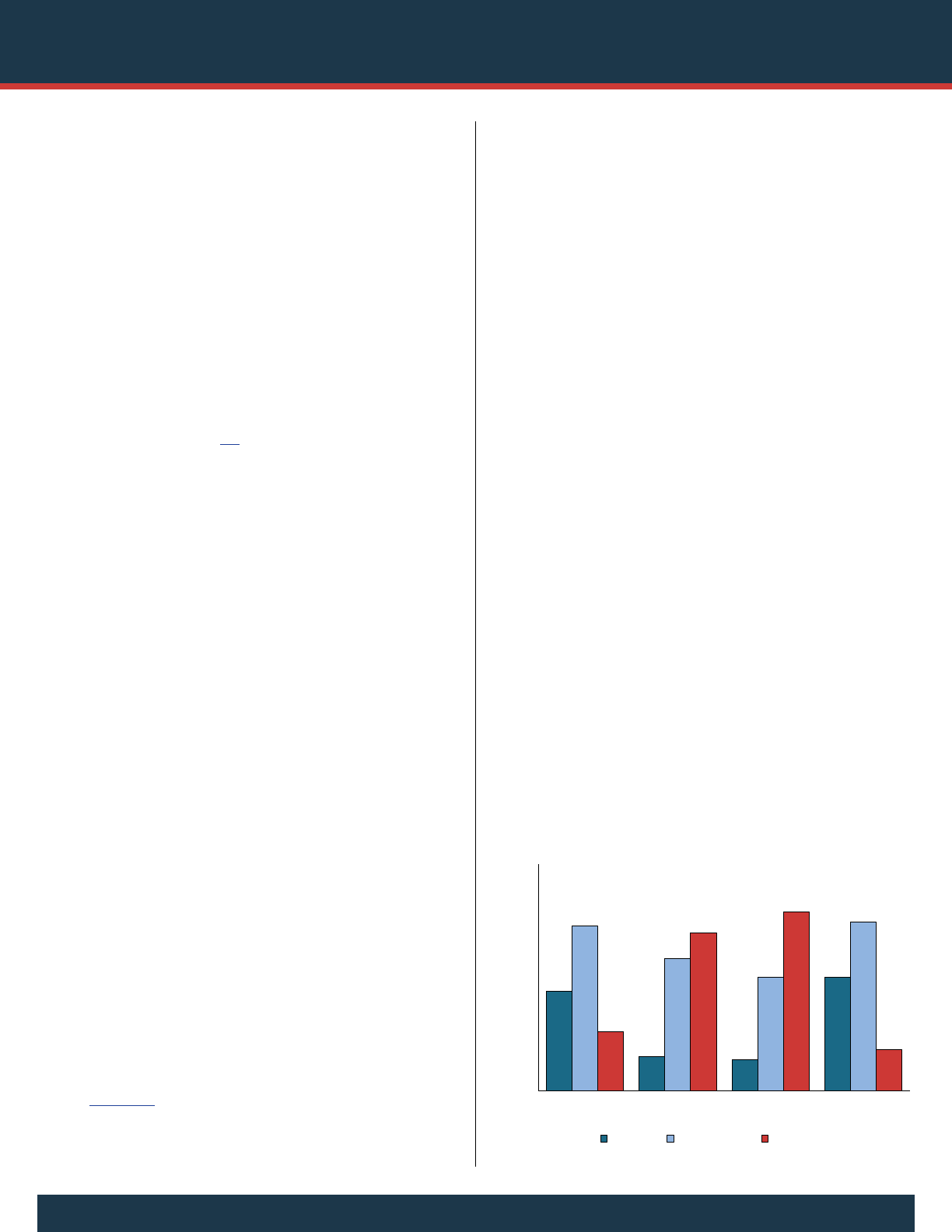
Key Substance Use and Mental Health Indicators in the United States:
Results from the 2020 National Survey on Drug Use and Health50 | October 2021
respondent could define the same change in substance use
as “much less,” and another respondent could define the
change as “a little less.” Also, these are sensitive questions,
and some respondents may have given responses they felt
were more socially desirable. Some respondents may have
been reluctant to report increased mental health issues, and
some respondents whose substance use increased during the
COVID-19 pandemic might have been reluctant to report
that they were using substances more than they did before
the COVID-19 pandemic began.
An additional consideration is that data from the Centers
for Disease Control and Prevention showed three peaks in
the number of new COVID-19 cases in the United States
in 2020: (1) in March and April, (2) in July, and (3) in late
November and December.
123
erefore, these NSDUH
data from Quarter 4 could depend on the period(s) of the
COVID-19 pandemic respondents recalled when answering
the questions.
Perceived Negative Effects on Mental Health Because
of the COVID‑19 Pandemic
As mentioned previously, respondents were asked to rate the
COVID-19 pandemic’s negative effect on their mental health
on a scale ranging from “not at all” to “a lot.” To facilitate
analysis, responses were collapsed into three categories:
“not at all,” “a little or some,” and “quite a bit or a lot.” As
also noted previously, the resulting data reflect respondents’
subjective perceptions and are not objective indicators
of mental health issues. In addition, asking respondents
how much (if at all) the COVID-19 pandemic negatively
affected their mental health presupposes that the COVID-19
pandemic had a negative effect. Respondents were not
offered a choice to indicate improvement in mental health
(for whatever reason) since the COVID-19 pandemic began.
Perceived Negative Effects on Mental Health Because of the
COVID-19 Pandemic among Adolescents Aged 12 to 17
In Quarter 4 of 2020, most adolescents aged 12 to 17
perceived a negative effect of the COVID-19 pandemic on
their mental health. About 1 in 5 adolescents (18.3 percent or
4.5 million people) perceived that the COVID-19 pandemic
negatively affected their mental health “quite a bit or a lot,”
and an additional 50.8 percent (or 12.5 million people)
perceived “a little or some” negative effect on their mental
health (Figure 56). About 1 in 3 adolescents (30.8 percent
or 7.6 million people) perceived no negative effect on their
mental health because of the COVID-19 pandemic.
Adolescents aged 12 to 17 who had a past year MDE or a
past year MDE with severe impairment were more likely
than those without a past year MDE to perceive that the
COVID-19 pandemic negatively affected their mental
health “quite a bit or a lot.” Among adolescents with a
past year MDE, nearly half (48.7 percent or 1.9 million
people) perceived that the COVID-19 pandemic negatively
affected their mental health “quite a bit or a lot,” as did more
than half of adolescents who had a past year MDE with
severe impairment (55.3 percent or 1.5 million people).
In comparison, 12.7 percent of adolescents without a
past year MDE (or 2.6 million people) perceived this level
of a negative effect on their mental health because of the
COVID-19 pandemic. For adolescents who had a past year
MDE or a past year MDE with severe impairment, however,
it is not known from these data whether they had an MDE
before the COVID-19 pandemic or a new MDE that began
during the COVID-19 pandemic.
In addition, about half of adolescents who did not have
a past year MDE (52.2 percent or 10.6 million people),
40.8 percent (or 1.5 million people) of adolescents with a
past year MDE, and 35.1 percent (or 944,000 people) of
adolescents with a past year MDE with severe impairment
perceived that the COVID-19 pandemic negatively affected
their mental health “a little or some.” It is unclear whether
these negative effects were temporary or longer lasting.
Even if adolescents did not have a past year MDE, some of
them could have needed mental health services during the
COVID-19 pandemic.
Figure 56. Perceived COVID-19 Pandemic Negative Effect on
Emotional or Mental Health: Among Youths Aged 12 to 17; by Past
Year Major Depressive Episode (MDE) Status, Quarter 4, 2020
30.8
10.5
9.6
35.1
50.8
40.8
35.1
52.2
18.3
48.7
55.3
12.7
0
10
20
30
40
50
60
70
Total Had MDE Had MDE with
Severe Impairment
Did Not Have MDE
Percent Perceiving Effect
Not at all A little or some Quite a bit or a lot
Note: The percentages do not add to 100percent due to rounding.
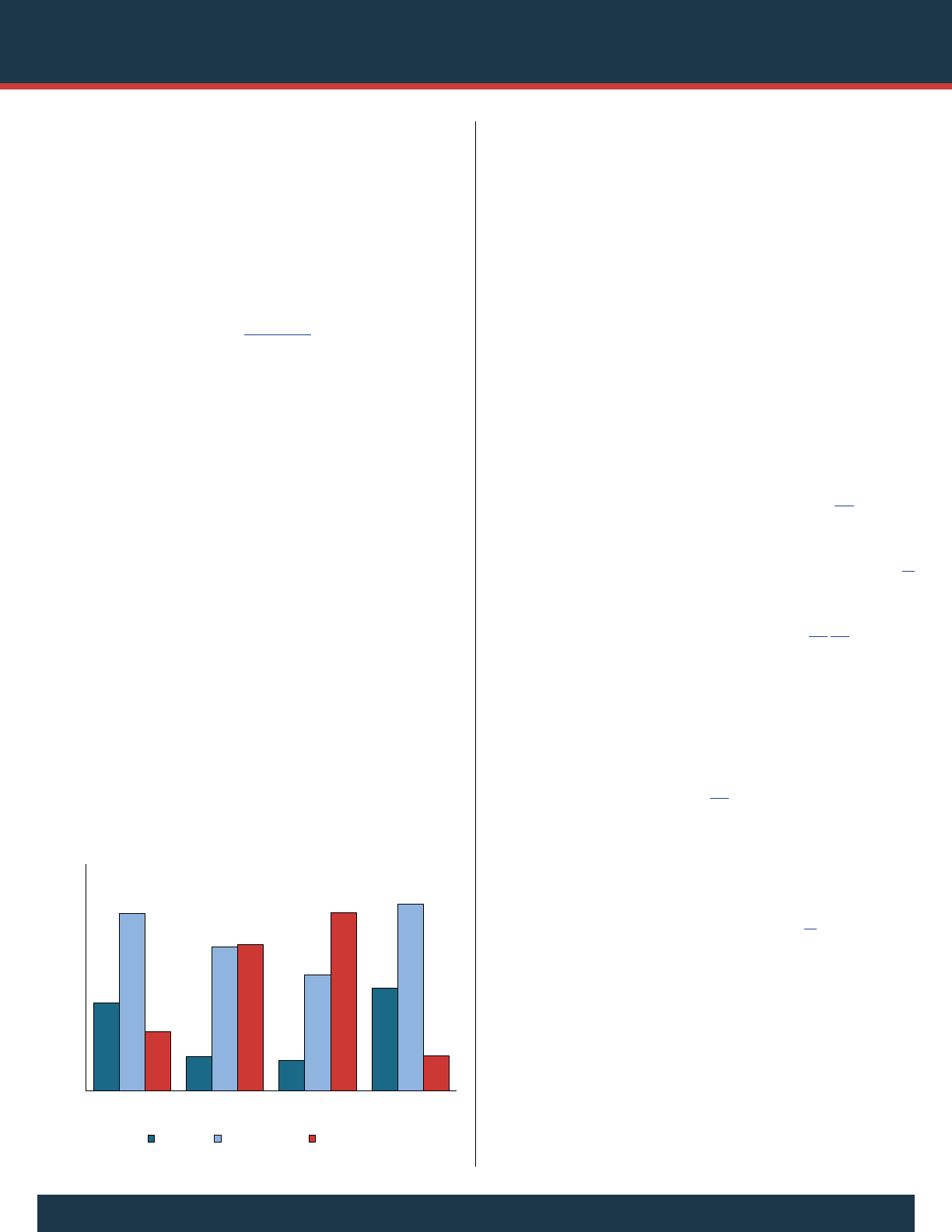
Key Substance Use and Mental Health Indicators in the United States:
Results from the 2020 National Survey on Drug Use and Health October 2021 | 51
Perceived Negative Effects on Mental Health Because of
the COVID-19 Pandemic among Adults Aged 18 or Older
Similar to adolescents, most adults aged 18 or older
in Quarter 4 of 2020 perceived a negative effect of the
COVID-19 pandemic on their mental health. About 1 in 5
adults (18.3 percent or 45.2 million people) perceived that
the COVID-19 pandemic negatively affected their mental
health “quite a bit or a lot,” and another 54.7 percent (or
135.2 million people) perceived “a little or some” negative
effect on their mental health (Figure 57). However, slightly
more than 1 in 4 adults (27.0 percent or 66.8 million
people) perceived no negative effect on their mental health
because of the COVID-19 pandemic. Because these data
were collected in Quarter 4, these estimates might not reflect
temporary negative effects on mental health that occurred
early in the COVID-19 pandemic.
In Quarter 4 of 2020, adults aged 18 or older with AMI
or SMI in the past year were more likely than those who
did not have mental illness in the past year to perceive that
the COVID-19 pandemic negatively affected their mental
health “quite a bit or a lot.” Among adults with AMI in the
past year, 45.2 percent (or 24.3 million people) perceived
the COVID-19 pandemic to have negatively affected their
mental health “quite a bit or a lot,” as did more than half of
adults with SMI in the past year (54.9 percent or 7.9 million
people). In comparison, about 1 in 10 adults with no
mental illness in the past year (10.8 percent or 20.9 million
people) perceived the COVID-19 pandemic to have
negatively affected their mental health “quite a bit or a lot.”
However, it is not known from these data whether adults
had pre-existing AMI or SMI that they perceived to have
worsened or whether they had AMI or SMI for the first time
during the COVID-19 pandemic. Nevertheless, these data
indicate the need for adults with AMI and SMI to receive
mental health services during the COVID-19 pandemic.
Perceived Effects on Substance Use Because of the
COVID‑19 Pandemic
Stressors and feelings of social isolation during the
COVID-19 pandemic could have negatively affected
Americans’ substance use. In many states, establishments
that sold alcohol for off-premises consumption (e.g., liquor
stores, grocery stores) remained open as “essential businesses”
during periods when stay-at-home orders were in effect.
During the COVID-19 pandemic, some states also changed
laws to allow “to-go” drinks from bars and restaurants and
loosened restrictions on home delivery of alcohol.
124
Czeisler
and colleagues reported estimates from June 2020 showing
certain groups of adults started to use substances or increased
their substance use to cope with the COVID-19 pandemic.
21
Other studies conducted in May and June 2020 also showed
at least short-term increases in alcohol consumption,
especially among some population subgroups.
125,126
However, individuals also could have decreased their
substance use in the short or long term in response to the
COVID-19 pandemic. For example, data from Europe
indicated some temporary decreases in substance use during
the COVID-19 pandemic due to disruptions in illicit drug
markets, but these reductions began to disappear as social
distancing measures were eased.
127
Adolescents and college-
aged young adults living at home may have had fewer
opportunities to use substances regardless of their desire or
intent to use them. It does not appear that respondents in
the study by Czeisler and colleagues were asked whether
they reduced their substance use or stopped using specific
substances during the COVID-19 pandemic.
21
erefore,
a more complete picture of how people’s substance use
changed during the COVID-19 pandemic also would
include information on people who reduced their substance
use.
As mentioned previously, new questions in Quarter 4 of
the 2020 NSDUH asked respondents to rate how the
COVID-19 pandemic affected their use of alcohol and other
drugs. Respondents who used alcohol or other drugs in the
past 12 months could report substance use ranging from
“much less” to “a lot more” than use before the COVID-19
Figure 57. Perceived COVID-19 Pandemic Negative Effect on
Emotional or Mental Health: Among Adults Aged 18 or Older; by
Past Year Mental Illness Status, Quarter 4, 2020
27.0
10.4
9.3
31.7
54.7
44.5
35.8
57.6
18.3
45.2
54.9
10.8
0
10
20
30
40
50
60
70
Total Any Mental Illness Serious Mental
Illness
No Mental Illness
Percent Perceiving Effect
Not at all A little or some Quite a bit or a lot
Note: The percentages do not add to 100percent due to rounding.
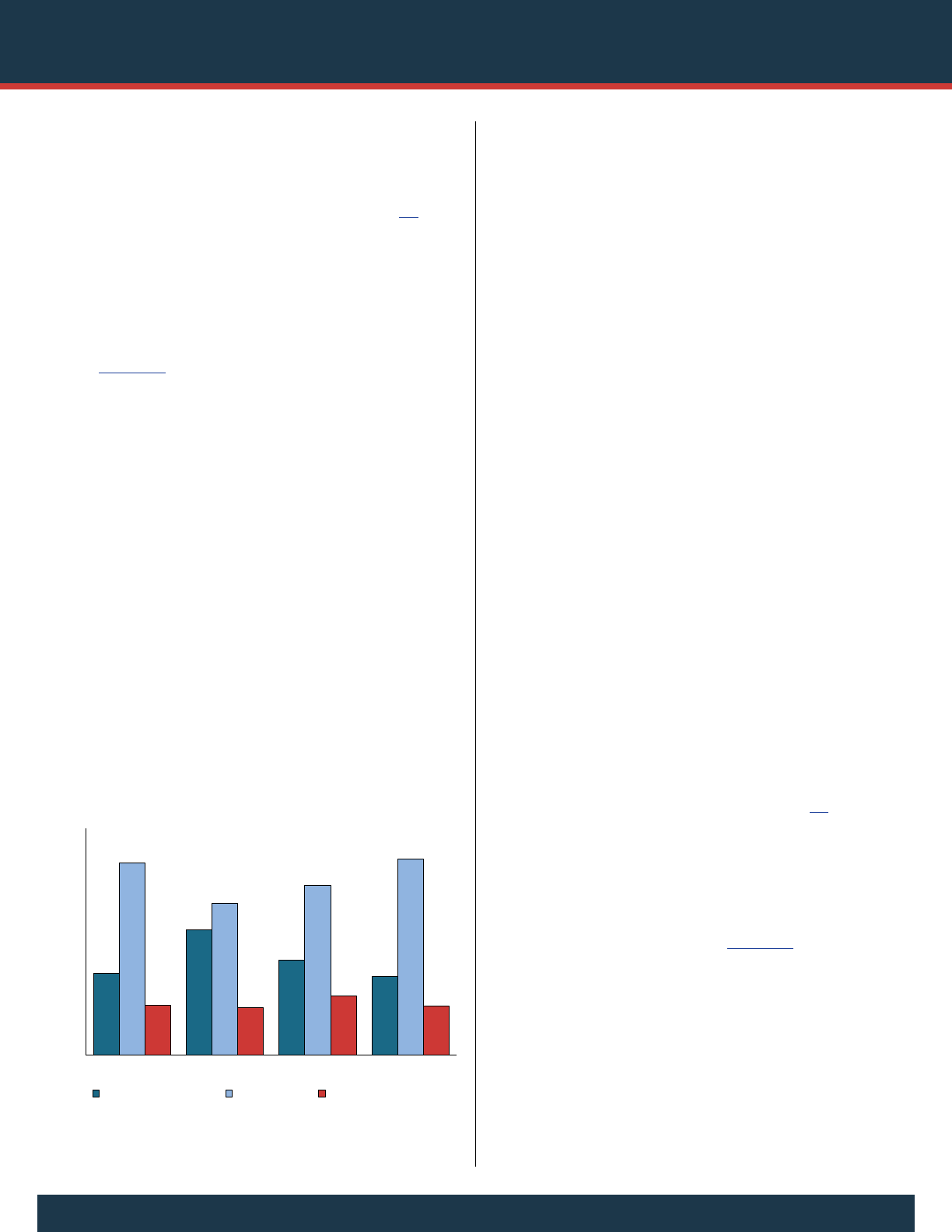
Key Substance Use and Mental Health Indicators in the United States:
Results from the 2020 National Survey on Drug Use and Health52 | October 2021
pandemic. Respondents answered separate questions
about effects of the COVID-19 pandemic on their alcohol
and other drug use. To facilitate analysis, responses were
collapsed into three categories: “a little less or much less,”
“about the same,” and “a little more or much more.”
128
Perceived Effects on Alcohol Use
Among people aged 12 or older in Quarter 4 of 2020 who
drank alcohol in the past year, most perceived that they
drank “about the same” amount as they did before the
COVID-19 pandemic began (59.4 percent or 100.0 million
people) (Figure 58). In addition, 25.2 percent of past year
alcohol users (or 42.5 million people) perceived that they
drank “a little less or much less” alcohol than they did
before the COVID-19 pandemic began, and 15.4 percent
(or 25.9 million people) perceived that they drank “a little
more or much more” than they did before. Because these
data were collected in Quarter 4, these estimates might not
reflect temporary increases in alcohol consumption early in
the COVID-19 pandemic that were followed by a return to
a pattern of alcohol use that was about the same as it was
before the COVID-19 pandemic began.
About 1 in 5 young adults aged 18 to 25 in Quarter 4 of
2020 who drank alcohol in the past year (18.2 percent
or 3.7 million people) perceived that they drank “a little
more or much more” than they did before the COVID-19
pandemic began. e percentage of young adult alcohol
users who perceived that they drank “a little more or much
more” than they did before the COVID-19 pandemic was
higher than the corresponding percentage among past year
alcohol users aged 26 or older (15.0 percent or 21.8 million
people). In addition, 14.5 percent of adolescents aged 12 to
17 who drank alcohol in the past year (or 491,000 people)
perceived that they drank “a little more or much more” than
they did before the COVID-19 pandemic began. People who
were drinking more than they did before the COVID-19
pandemic began might not return to their earlier patterns
of alcohol consumption, or their level of alcohol use could
decrease over time.
In Quarter 4 of 2020, 38.7 percent of adolescents aged 12 to
17 (or 1.3 million people) and 29.3 percent of young adults
aged 18 to 25 (or 5.9 million people) who drank alcohol in
the past year perceived that they were drinking “a little less
or much less” than they did before the COVID-19 pandemic
began. ese percentages were higher than the corresponding
percentage among adults aged 26 or older who used alcohol
in the past year (24.3 percent or 35.3 million people). It is
unknown whether people who were drinking less than they
did before the COVID-19 pandemic began will return to
their earlier patterns of alcohol consumption. For example,
college-age young adults who were living with their parents
during the COVID-19 pandemic could resume their earlier
patterns of alcohol consumption once they return to their
campus environment, and adolescents may increase their
drinking as opportunities increase for unsupervised social
activities.
Perceived Effects on the Use of Drugs Other than Alcohol
Among people aged 12 or older in Quarter 4 of 2020 who
used drugs other than alcohol in the past year,
128
about 1
in 3 (32.2 percent or 33.9 million people) perceived that
they used these drugs “a little less or much less” than they
did before the COVID-19 pandemic began, and more than
half (57.5 percent or 60.6 million people) perceived that
they used these drugs “about the same” as they did before
the COVID-19 pandemic began (Figure 59). An estimated
10.3 percent of past year users of drugs other than alcohol
(or 10.9 million people) perceived that they used these
drugs “a little more or much more” during the COVID-19
pandemic than they did before. It is not known, however,
whether people who reduced or increased their use of these
drugs will return to their earlier levels of use over time.
Figure 58. Perceived COVID-19 Pandemic Effect on Alcohol Use:
Among Past Year Alcohol Users Aged 12 or Older; Quarter 4, 2020
25.2
38.7
29.3
24.3
59.4
46.8
52.4
60.6
15.4
14.5
18.2
15.0
0
10
20
30
40
50
60
70
12 or Older 12 to 17 18 to 25 26 or Older
Percent Perceiving Effect
A little less or much less About the same A little more or much more
Note: The percentages do not add to 100percent due to rounding.
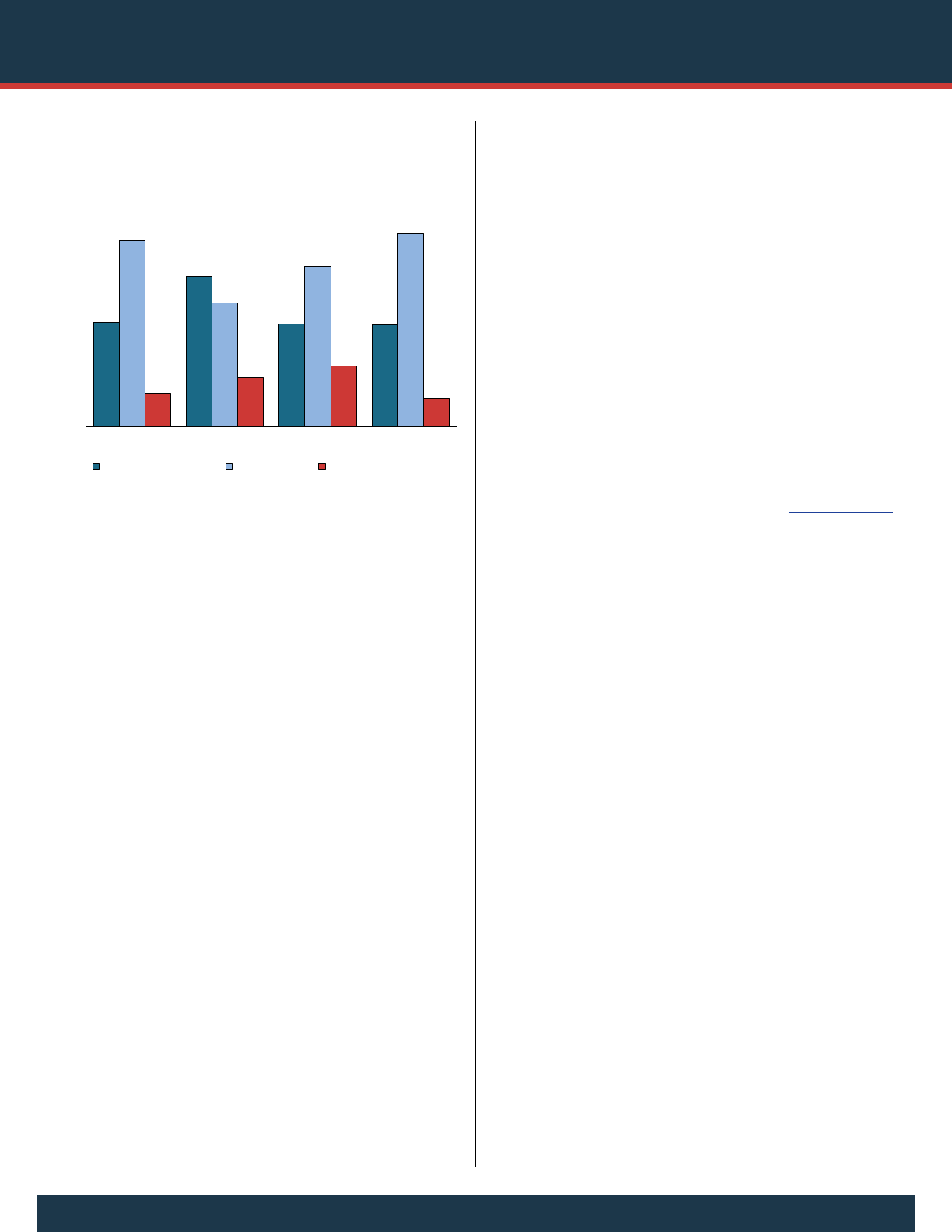
Key Substance Use and Mental Health Indicators in the United States:
Results from the 2020 National Survey on Drug Use and Health October 2021 | 53
In Quarter 4 of 2020, nearly half of adolescents aged 12
to 17 who used drugs other than alcohol in the past year
(46.4 percent or 2.0 million people) perceived that they used
these drugs “a little less or much less” than they did before
the COVID-19 pandemic began. is percentage among
adolescents was higher than the corresponding percentages
among young adults aged 18 to 25 (31.8 percent or
4.2 million people) and those aged 26 or older (31.5 percent
or 27.7 million people) who used these drugs. As previously
noted in relation to perceived reductions in alcohol use, these
adolescents could increase their use of other drugs as they have
more opportunities to engage in social activities with peers.
Adolescents and young adults in Quarter 4 of 2020
who used drugs other than alcohol in the past year were
more likely than their counterparts aged 26 or older to
perceive that they used these drugs “a little more or much
more” than they did before the COVID-19 pandemic.
Specifically, 15.2 percent of adolescents (or 665,000 people)
and 18.7 percent of young adults (or 2.5 million people)
perceived that they used these drugs “a little more or much
more” than they did before the COVID-19 pandemic began.
In comparison, 8.8 percent of adults aged 26 or older who
used drugs other than alcohol in the past year (or 7.7 million
people) perceived that they used these drugs “a little more or
much more” than they did before the COVID-19 pandemic
began. It is unknown, however, whether these will be
short- or long-term increases in other drug use that persist
beyond the COVID-19 pandemic. Further, because the data
were collected in Quarter 4 of 2020, there may have been
additional short-term increases in other drug use earlier in
2020 that are not reflected in these data.
Perceived Effects on Access to Services Because of
the COVID‑19 Pandemic
e COVID-19 pandemic could have affected access to
substance use treatment, mental health services, and medical
care in different ways. In response to the COVID-19
pandemic, for example, healthcare providers (including
behavioral healthcare providers) turned to virtual (i.e.,
telehealth) services (i.e., delivery of healthcare services over
the phone or Internet) as a means of delivering services
while also limiting in-person contact that could spread
COVID-19.
129
As discussed in the section Substance Use
Treatment in the Past Year, reimbursement for virtual
services was expanded during the COVID-19 pandemic,
including reimbursement for services delivered over the
phone (i.e., using only audio).
To assess the various effects of the COVID-19 pandemic on
access to behavioral health and medical services, NSDUH
respondents in Quarter 4 were asked if they experienced
the following because of the COVID-19 pandemic:
(1) appointments moved from in-person to telehealth
format, (2) delays or cancellations in appointments, (3)
delays in getting prescriptions, and (4) inability to access
needed care resulting in moderate to severe impact on
health. Respondents were asked separately about each of
these situations in relation to their access to substance
use treatment, mental health treatment, and medical care
because of the COVID-19 pandemic.
Access to Substance Use Treatment
As noted previously, people were asked whether they
experienced the following in their access to substance
use treatment because of the COVID-19 pandemic: (1)
appointments moved from in-person to telehealth format,
(2) delays or cancellations in appointments, (3) delays in
getting prescriptions, and (4) inability to access needed care
resulting in moderate to severe impact on health. For people
in Quarter 4 of 2020 who received substance use treatment
in the past year, several estimates of perceived changes in
Figure 59. Perceived COVID-19 Pandemic Effect on Drug Use:
Among Past Year Users of Drugs Other than Alcohol Aged 12 or
Older; Quarter 4, 2020
32.2
46.4
31.8
31.5
57.5
38.4
49.5
59.7
10.3
15.2
18.7
8.8
0
10
20
30
40
50
60
70
12 or Older 12 to 17 18 to 25 26 or Older
Percent Perceiving Effect
A little less or much less About the same A little more or much more
Note: Use of drugs other than alcohol included the use of marijuana, cocaine (including crack), heroin,
hallucinogens, inhalants, or methamphetamine in the pastyear or any use (i.e., not necessarily
misuse) of prescription pain relievers, tranquilizers, stimulants, or sedatives in the pastyear. Drugs
other than alcohol did not include tobacco products or nicotine vaping.
Note: The percentages do not add to 100percent due to rounding.
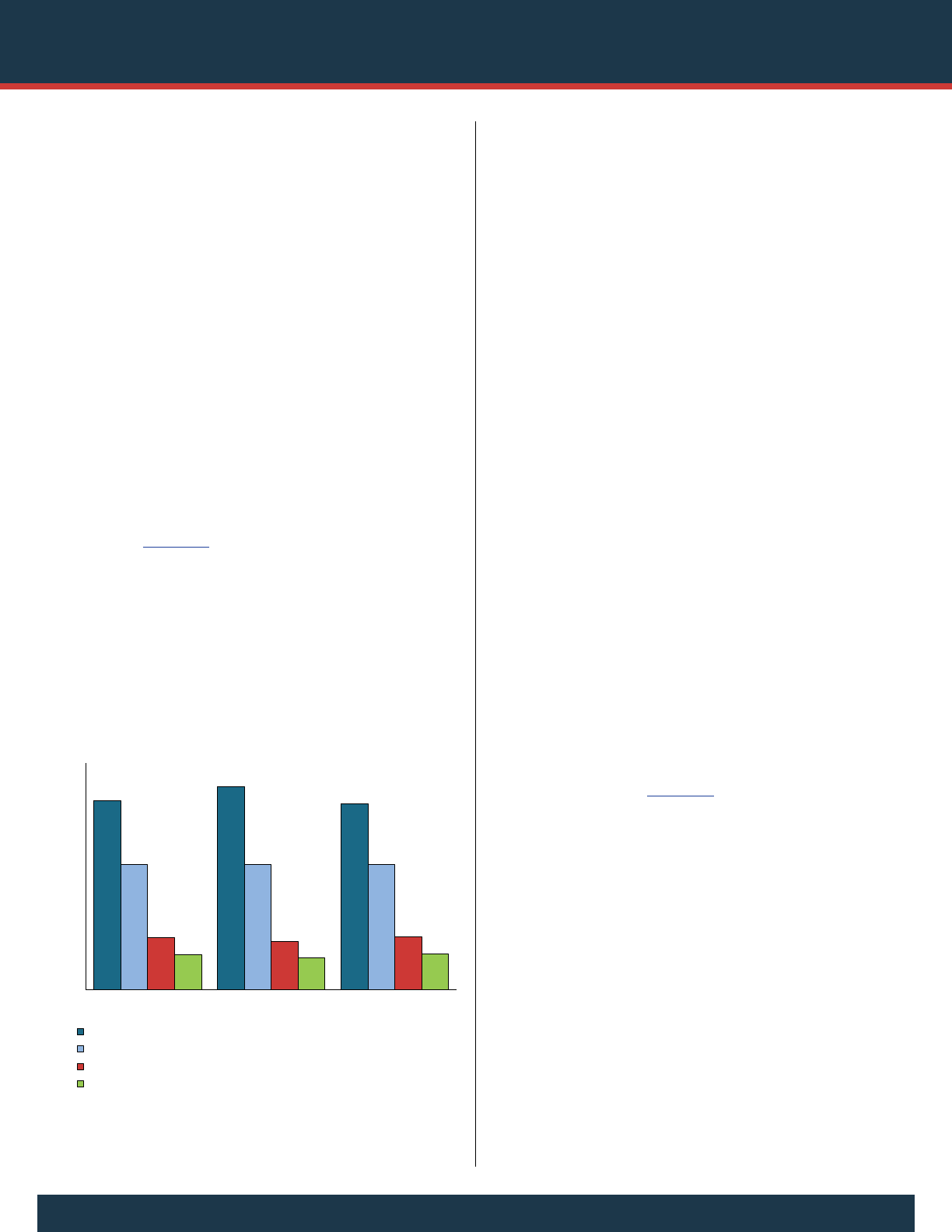
Key Substance Use and Mental Health Indicators in the United States:
Results from the 2020 National Survey on Drug Use and Health54 | October 2021
access to substance use treatment because of the COVID-19
pandemic could not be calculated with sufficient precision.
In addition, 97.5 percent of people aged 12 or older in 2020
with a past year SUD who did not receive substance use
treatment at a specialty facility in the past year did not think
that they needed substance use treatment. e COVID-19
pandemic’s effect on access to substance use treatment would
not be relevant to people who did not feel that they needed
those services. For these reasons, this section of the report
does not present findings from Quarter 4 of 2020 on specific
effects of the COVID-19 pandemic on people’s access to
substance use treatment.
Access to Mental Health Services
Among adults aged 18 or older in Quarter 4 of 2020 who
received mental health services in the past year, more than
half (58.3 percent or 26.6 million people) had appointments
moved from in person to telehealth, and 1 in 3 (38.7 percent
or 17.7 million people) experienced delays or cancellations in
appointments (Figure 60). e finding that more than half of
adults aged 18 or older who received mental health services
in the past year had appointments moved from in person to
telehealth likely reflects the use of virtual (i.e., telehealth)
services to continue delivering mental health services and the
expansion of reimbursement for virtual services.
In addition, about 1 in 6 adults aged 18 or older in 2020
who received mental health services in the past year
(16.0 percent or 7.3 million people) experienced delays
in getting prescriptions, and 1 in 10 (10.7 percent or
4.9 million people) were unable to access needed care
resulting in a perceived moderate to severe impact on health.
at 4.9 million adults perceived their health to have been
negatively affected because they were unable to access needed
mental health services is an important indicator of adverse
impacts of changes in access to these services during the
COVID-19 pandemic.
ese patterns were consistent among adult age groups.
Among adults aged 18 or older in Quarter 4 of 2020 who
received mental health services in the past year, for example,
62.7 percent of young adults aged 18 to 25 (or 4.6 million
people) and 57.4 percent of adults aged 26 or older (or
22.0 million people) had appointments moved from in
person to telehealth. An estimated 9.7 percent of young
adults (or 715,000 people) and 10.9 percent of adults aged
26 or older (or 4.2 million people) who received mental
health services in the past year were unable to access needed
care resulting in a perceived moderate to severe impact on
health.
Access to Medical Services
Among people aged 12 or older in Quarter 4 of 2020,
nearly 1 in 3 (31.3 percent or 84.6 million people) had
medical appointments moved from in person to telehealth,
and more than 1 in 4 (29.4 percent or 79.4 million people)
experienced delays or cancellations in medical appointments
or preventive services (Figure 61). About 1 in 11 people
(8.9 percent or 23.9 million people) experienced delays
in getting prescriptions, and 1 in 20 (5.6 percent or
15.1 million people) were unable to access needed medical
care resulting in a perceived moderate to severe impact on
health. at 15.1 million people whose health was negatively
affected because they were unable to access needed medical
care is particularly concerning. Issues discussed previously
regarding access to mental health services also would apply
if people’s in-person medical appointments were moved to
telehealth or if people experienced delays or cancellations
in their medical appointments during the COVID-19
pandemic.
Figure 60. Perceived COVID-19 Pandemic Effect on Mental Health
Services: Among Adults Aged 18 or Older Who Received Services;
Quarter 4, 2020
58.3
62.7
57.4
38.7
38.6
38.7
16.0
14.8
16.2
10.7
9.7
10.9
0
10
20
30
40
50
60
70
18 or Older 18 to 25 26 or Older
Percent Perceiving Effect
Appointments moved from in-person to telehealth
Delays or cancellations in appointments
Delays in getting prescriptions
Unable to access needed care resulting in moderate to severe impact on health
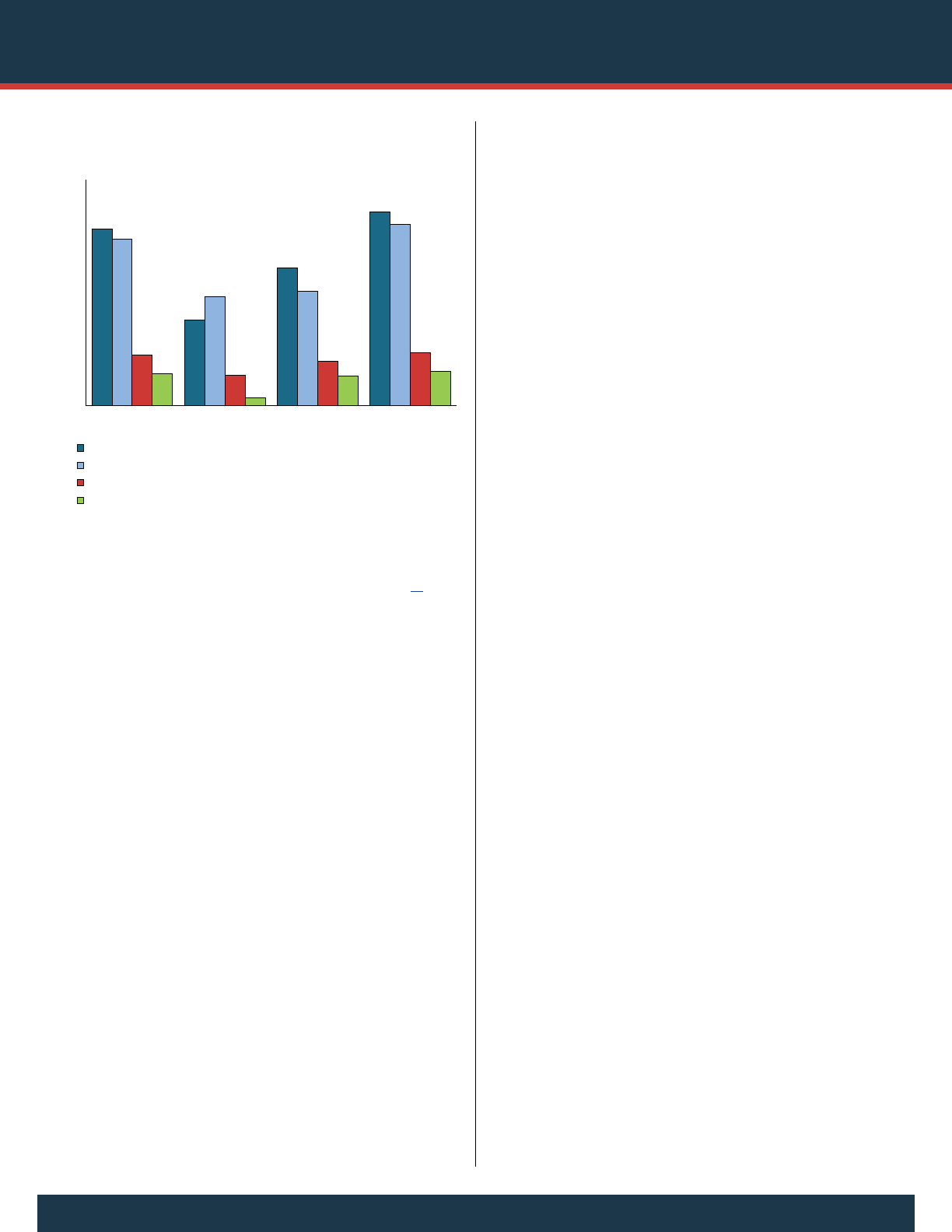
Key Substance Use and Mental Health Indicators in the United States:
Results from the 2020 National Survey on Drug Use and Health October 2021 | 55
Figure 61. Perceived COVID-19 Pandemic Effect on Access to
Medical Care: Among People Aged 12 or Older; Quarter 4, 2020
31.3
15.1
24.4
34.2
29.4
19.3
20.2
32.0
8.9
5.4
7.8
9.4
5.6
1.4
5.3
6.1
0
10
20
30
40
12 or Older 12 to 17 18 to 25 26 or Older
Percent Perceiving Effect
Appointments moved from in-person to telehealth
Delays or cancellations in appointments
Delays in getting prescriptions
Unable to access needed care resulting in moderate to severe impact on health
Adults aged 26 or older in 2020 (regardless of quarter) were
more likely than adolescents and young adults to have had
two or more outpatient medical visits in the past year.
33
erefore, perceptions of whether the COVID-19 pandemic
affected people’s access to medical care would be especially
relevant to adults aged 26 or older. Among adults aged 26
or older in Quarter 4 of 2020, 34.2 percent (or 72.9 million
people) had medical appointments moved from in person
to telehealth, 32.0 percent (or 68.2 million people)
experienced delays or cancellations in medical appointments
or preventive services, 9.4 percent (or 20.1 million people)
experienced delays in getting prescriptions, and 6.1 percent
(or 13.0 million people) were unable to access needed
medical care resulting in a perceived moderate to severe
impact on health.
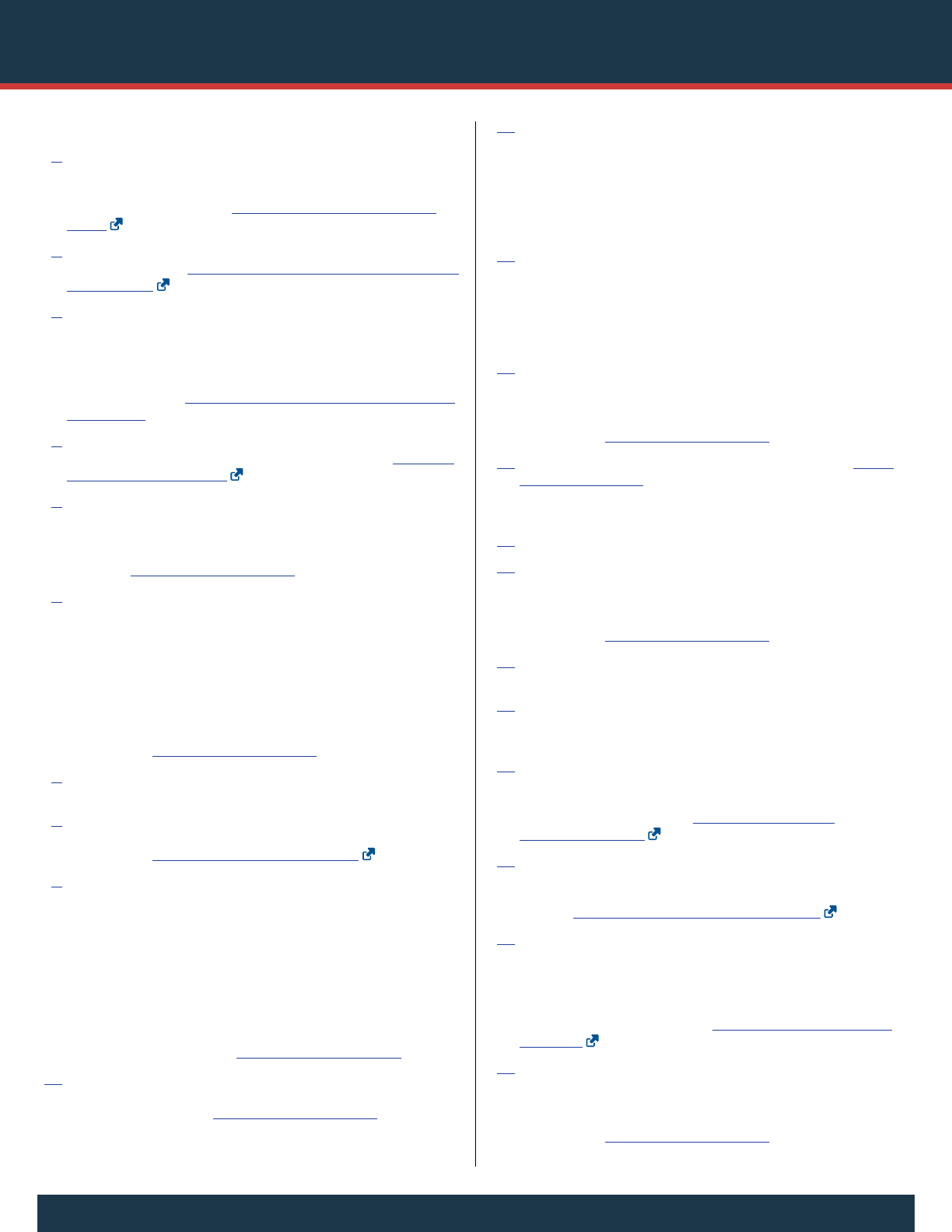
Key Substance Use and Mental Health Indicators in the United States:
Results from the 2020 National Survey on Drug Use and Health56 | October 2021
Endnotes
1. Hasin, D. S., & Grant, B. F. (2015). e National Epidemiologic
Survey on Alcohol and Related Conditions (NESARC) Waves 1 and
2: Review and summary of findings. Social Psychiatry and Psychiatric
Epidemiology, 50, 1609-1640. https://doi.org/10.1007/s00127-015-
1088-0
2. World Health Organization. (2013). Mental health action plan 2013 –
2020. Retrieved from https://www.who.int/mental_health/publications/
action_plan/en/
3. Reeves, W. C., Strine, T. W., Pratt, L. A., ompson, W., Ahluwalia, I.,
Dhingra, S. S., McKnight-Eily, L. R., Harrison, L., D’Angelo, D. V.,
Williams, L., Morrow, B., Gould, D., & Safran, M. A. (2011). Mental
illness surveillance among adults in the United States. Morbidity and
Mortality Weekly Report CDC Surveillance Summaries, 60(Suppl. 3),
1-29. Retrieved from https://www.cdc.gov/mmwr/preview/mmwrhtml/
su6003a1.htm
4. Murray, C. J. L., & Lopez, A. D. (2013). Measuring the global burden
of disease. New England Journal of Medicine, 369, 448-457. https://doi.
org/10.1056/nejmra1201534
5. is report occasionally presents estimated numbers of people with a
specific characteristic (e.g., estimated numbers of substance users). Some
of these estimated numbers are not included in figures or tables in the
report but may be found in the detailed tables for the 2020 NSDUH
available at https://www.samhsa.gov/data/.
6. Details about the sample design, weighting, and interviewing results
for the 2020 NSDUH are provided in Sections 2.1, 2.3.4, and
3.3.1 of CBHSQ (2021), including changes to the sample design
and weighting procedures because of the COVID-19 pandemic. In
particular, Tables 2.1 and 2.2 in CBHSQ (2021) provide sample design
information on the targeted numbers of completed interviews by state
and by age group, respectively. See the following reference: Center
for Behavioral Health Statistics and Quality. (2021). 2020 National
Survey on Drug Use and Health: Methodological summary and definitions.
Retrieved from https://www.samhsa.gov/data/
7. Overall response rates are not calculated for adolescents or adults
because the screening response rate is not specific to age groups.
8. Center for Systems Science and Engineering, Johns Hopkins University.
(2021). Coronavirus resource center: Global map: COVID-19 dashboard.
Retrieved from https://coronavirus.jhu.edu/map.html
9. Although the 2020 NSDUH sample size was smaller than the target
sample size of 67,500 completed interviews, relatively few estimates in
this report did not meet the criteria for publication due to low statistical
precision. Numbers of final respondents in different age groups also
were sufficiently large to detect statistically significant differences for
several estimates presented in this report. For discussion of the criteria
for suppressing (i.e., not publishing) unreliable estimates and for testing
for statistical significance, see Sections 3.2.2 and 3.2.3 in the following
reference: Center for Behavioral Health Statistics and Quality. (2021).
2020 National Survey on Drug Use and Health: Methodological summary
and definitions. Retrieved from https://www.samhsa.gov/data/
10. Center for Behavioral Health Statistics and Quality. (2021). 2020
National Survey on Drug Use and Health: Methodological summary and
definitions. Retrieved from https://www.samhsa.gov/data/
11. For methodological reasons, the 2020 NSDUH estimates in this report
are not comparable with NSDUH data collected prior to 2002. For
more details, see Appendix C in the following report for the 2004
NSDUH: Office of Applied Studies. (2005). Results from the 2004
National Survey on Drug Use and Health: National findings (HHS
Publication No. SMA 05-4062, NSDUH Series H-28). Rockville, MD:
Substance Abuse and Mental Health Services Administration.
12. Estimates presented in this report have been weighted to reflect
characteristics of the civilian, noninstitutionalized population aged 12
or older in the United States. e calculation of NSDUH weights for
analysis includes a step that yields weights consistent with population
totals obtained from the U.S. Census Bureau based on the most recently
available decennial census.
13. For a discussion of the criteria for suppressing (i.e., not publishing)
unreliable estimates, see Section 3.2.2 in the following reference: Center
for Behavioral Health Statistics and Quality. (2021). 2020 National
Survey on Drug Use and Health: Methodological summary and definitions.
Retrieved from https://www.samhsa.gov/data/
14. Please refer to the 2020 NSDUH detailed tables (available at https://
www.samhsa.gov/data/) for population estimates cited in this report that
do not appear in the report figures, their accompanying data tables, or
the appendix tables.
15. Survey modes included data collection in person or through the web.
16. Chapters 3 and 6 of CBHSQ (2021) discuss data quality issues for
NSDUH in greater detail. See the following reference: Center for
Behavioral Health Statistics and Quality. (2021). 2020 National Survey
on Drug Use and Health: Methodological summary and definitions.
Retrieved from https://www.samhsa.gov/data/
17. American Psychiatric Association. (2013). Diagnostic and statistical
manual of mental disorders (DSM-5) (5th ed.). Arlington, VA: Author.
18. American Psychiatric Association. (1994). Diagnostic and statistical
manual of mental disorders (DSM-IV) (4th ed.). Washington, DC:
Author.
19. Hossain, M. M., Tasnim, S., Sultana, A., Faizah, F., Mazumder,
H., Zou, L., McKyer, E. L. J., Ahmed, H. U., & Ma, P. (2020).
Epidemiology of mental health problems in COVID-19: A
review. F1000 Research, 9, 636. https://doi.org/10.12688/
f1000research.24457.1
20. Torales, J., O’Higgins, M., Castaldelli-Maia, J. M., & Ventriglio, A.
(2020). e outbreak of COVID-19 coronavirus and its impact on
global mental health. International Journal of Social Psychiatry, 66(4),
317-320. https://doi.org/10.1177/0020764020915212
21. Czeisler, M. É., Lane, R. I., Petrosky, E., Wiley, J. F., Christensen, A.,
Njai, R., Weaver, M. D., Robbins, R., Facer-Childs, E. R., Barger, L. K.,
Czeisler, C. A., Howard, M. E., & Rajaratnam, S. M. W. (2020). Mental
health, substance use, and suicidal ideation during the COVID-19
pandemic — United States, June 24-30, 2020. Morbidity and Mortality
Weekly Report, 69(32), 1049-1057. https://doi.org/10.15585/mmwr.
mm6932a1
22. For information on the statistical testing procedures for the 2020
NSDUH, see Section 3.2.3 in the following reference: Center for
Behavioral Health Statistics and Quality. (2021). 2020 National Survey
on Drug Use and Health: Methodological summary and definitions.
Retrieved from https://www.samhsa.gov/data/
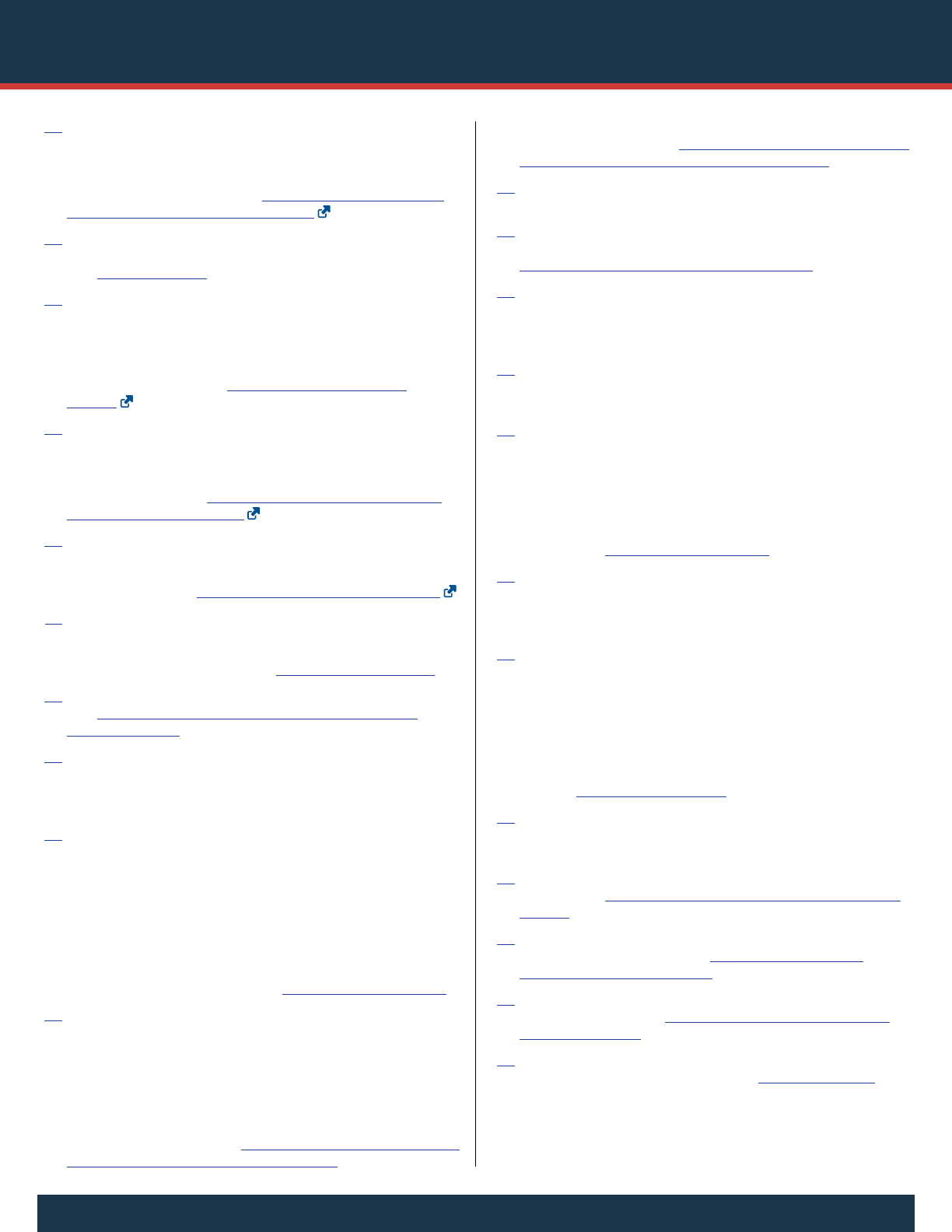
Key Substance Use and Mental Health Indicators in the United States:
Results from the 2020 National Survey on Drug Use and Health October 2021 | 57
23. Johnston, L. D., Miech, R. A., O’Malley, P. M., Bachman, J. G.,
Schulenberg, J. E., & Patrick, M. E. (2020). Monitoring the Future
national survey results on drug use 1975–2019: 2019 overview, key findings
on adolescent drug use. Ann Arbor, MI: University of Michigan, Institute
for Social Research. Retrieved from http://www.monitoringthefuture.
org/pubs/monographs/mtf-overview2019.pdf
24. U.S. Food and Drug Administration. (2020). 2019 National Youth
Tobacco Survey shows youth e-cigarette use at alarming levels. Retrieved
from https://www.fda.gov
25. Wang, T. W., Gentzke, A. S., Creamer, M. R., Cullen, K. A., Holder-
Hayes, E., Sawdey, M. D., Anic, G. M., Portnoy, D. B., Hu, S., Homa,
D. M., Jamal, A., & Neff, L. J. (2019). Tobacco product use and
associated factors among middle and high school students — United
States, 2019. Morbidity and Mortality Weekly Report Surveillance
Summaries, 68(SS-12), 1-22. https://doi.org/10.15585/mmwr.
ss6812a1
26. Miech, R. A., Johnston, L. D., O’Malley, P. M., Bachman, J. G.,
Schulenberg, J. E., & Patrick, M. E. (2021). Monitoring the Future
national survey results on drug use, 1975–2020: Volume I, Secondary school
students. Ann Arbor, MI: University of Michigan, Institute for Social
Research. Retrieved from http://www.monitoringthefuture.org/pubs/
monographs/mtf-vol1_2020.pdf
27. Gentzke, A. S., Wang, T. W., Jamal, A., Park-Lee, E., Ren, C., Cullen,
K. A., & Neff, L. (2020). Tobacco product use among middle and high
school students — United States, 2020. Morbidity and Mortality Weekly
Report, 69, 1882-1888. https://doi.org/10.15585/mmwr.mm6950a1
28. See the following reference: Center for Behavioral Health Statistics and
Quality. (2014). Results from the 2013 National Survey on Drug Use and
Health: Summary of national findings (HHS Publication No. SMA 14-4863,
NSDUH Series H-48). Retrieved from https://www.samhsa.gov/data/
29. U.S. Food and Drug Administration. (2021). Tobacco 21. Retrieved
from https://www.fda.gov/tobacco-products/retail-sales-tobacco-
products/tobacco-21
30. In the 2020 NSDUH, a “drink” was defined as a can or bottle of beer,
a glass of wine or a wine cooler, a shot of liquor, or a mixed drink with
liquor in it. Times when respondents had only a sip or two from a drink
were not considered to be alcohol consumption.
31. e threshold for determining binge alcohol use for females was lowered
from five or more drinks on an occasion for the 2014 and earlier
NSDUHs to four or more drinks on an occasion for the 2015 NSDUH
to ensure consistency with federal definitions and other federal data
collection programs. e threshold for males in 2015 remained at five or
more drinks on an occasion. New baselines began in 2015 for estimates
of binge and heavy alcohol use for females and for binge and heavy
alcohol use for the overall population (both genders). Estimates from
2002 to 2020 for binge and heavy alcohol use among males are available
in the 2020 NSDUH detailed tables at https://www.samhsa.gov/data/.
32. e National Institute on Alcohol Abuse and Alcoholism (NIAAA)
defines binge drinking as a pattern of drinking that brings blood alcohol
concentration (BAC) levels to 0.08 grams per deciliter (g/dL). is
typically occurs after four drinks for women and five drinks for men in
about 2 hours. See the following two references:
National Institute on Alcohol Abuse and Alcoholism. (2004, Winter).
NIAAA council approves definition of binge drinking. NIAAA
Newsletter, 3, 3. Retrieved from https://pubs.niaaa.nih.gov/publications/
Newsletter/winter2004/Newsletter_Number3.pdf
National Institute on Alcohol Abuse and Alcoholism. (2019). Drinking
levels defined. Retrieved from https://www.niaaa.nih.gov/alcohol-health/
overview-alcohol-consumption/moderate-binge-drinking
33. ese estimates were calculated from special analyses but are not
included in the appendix tables or in the 2020 detailed tables.
34. Alcohol Policy Information System, National Institute on Alcohol Abuse
and Alcoholism. (n.d.). Highlight on underage drinking. Retrieved from
https://alcoholpolicy.niaaa.nih.gov/underage-drinking
35. e 2020 NSDUH questionnaire included separate sections for
tranquilizer misuse and sedative misuse. Data from these sections
were combined to produce aggregate estimates for the misuse of any
tranquilizer or sedative.
36. e estimated numbers of current users of different illicit drugs are not
mutually exclusive because people could have used more than one type
of illicit drug in the past month.
37. LSD = lysergic acid diethylamide; PCP = phencyclidine; MDMA =
methylenedioxy-methamphetamine; DMT = dimethyltryptamine;
AMT = alpha-methyltryptamine; Foxy = N, N-diisopropyl-5-
methoxytryptamine (5-MeO-DIPT). Definitions for these hallucinogens
also are included in Appendix A of the following reference: Center
for Behavioral Health Statistics and Quality. (2021). 2020 National
Survey on Drug Use and Health: Methodological summary and definitions.
Retrieved from https://www.samhsa.gov/data/
38. Desoxyn
®
was not mentioned in 2020 as some other stimulant and
has been mentioned only rarely in some years since 2015. Because
Desoxyn
®
is chemically similar to other prescription amphetamines (e.g.,
Adderall
®
), it was grouped with the other amphetamines.
39. For example, the product label for Xanax
®
, which is prescribed as
a tranquilizer, indicates the drug has an average half-life of 11.2
hours (i.e., the length of time for half of the dosage of the drug to be
metabolized), with a range of 6.3 to 26.9 hours in healthy adults. In
comparison, the product label for Halcion
®
, a benzodiazepine prescribed
as a sedative, has a short half-life in the range of 1.5 to 5.5 hours.
Product label information for these drugs is available on the U.S. Food
and Drug Administration’s Center for Drug Evaluation and Research
website at https://www.fda.gov/drugs/.
40. Examples of forms of fentanyl presented to NSDUH respondents are
available by prescription. NSDUH respondents were not asked about
the use of fentanyl illicitly manufactured in clandestine laboratories.
41. National Institute on Drug Abuse. (2021, April). DrugFacts: Cocaine.
Retrieved from https://www.drugabuse.gov/publications/finder/t/160/
drugfacts
42. National Institute on Drug Abuse. (2019, May). DrugFacts:
Methamphetamine. Retrieved from https://www.drugabuse.gov/
publications/finder/t/160/drugfacts
43. National Institute on Drug Abuse. (2018, June). DrugFacts: Prescription
stimulants. Retrieved from https://www.drugabuse.gov/publications/
finder/t/160/drugfacts
44. Drug Enforcement Administration. (2020). Drugs of abuse, a DEA
resource guide: 2020 edition. Retrieved from https://www.dea.gov/
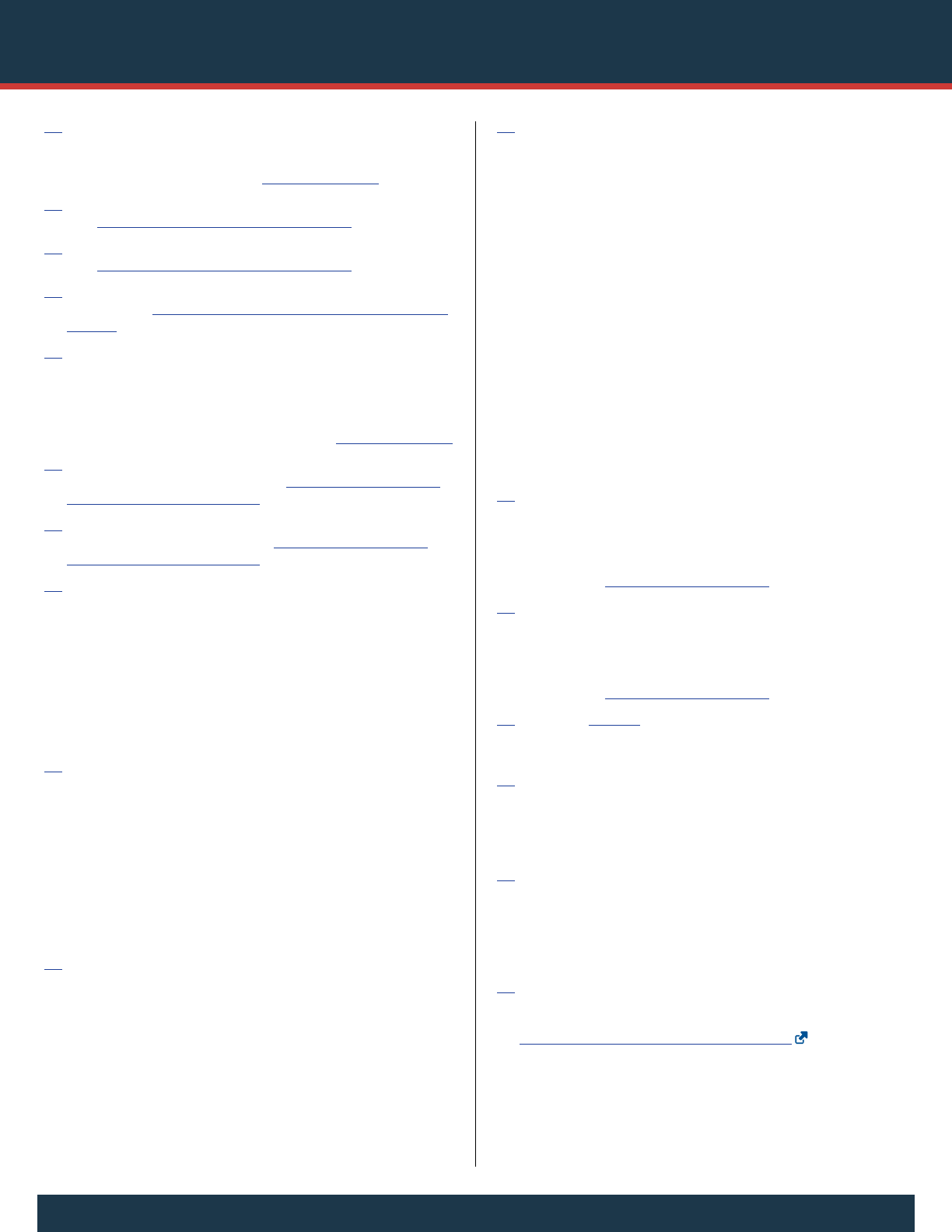
Key Substance Use and Mental Health Indicators in the United States:
Results from the 2020 National Survey on Drug Use and Health58 | October 2021
45. Schedule I controlled substances have no currently accepted medical use
and have a high potential for abuse. See the following reference: Drug
Enforcement Administration. (2020). Drugs of abuse, a DEA resource
guide: 2020 edition. Retrieved from https://www.dea.gov/
46. U.S. National Library of Medicine. (2021). Diphenhydramine. Retrieved
from https://medlineplus.gov/druginformation.html
47. U.S. National Library of Medicine. (2021). Phenylephrine. Retrieved
from https://medlineplus.gov/druginformation.html
48. National Institute on Drug Abuse. (2019, April). DrugFacts: Kratom.
Retrieved from https://www.drugabuse.gov/publications/finder/t/160/
drugfacts
49. Although kratom is not scheduled nationally as a controlled substance,
the Drug Enforcement Administration includes kratom as a drug of
concern because it poses risks to people who use it. However, some
states may prohibit the possession and use of kratom. See the following
reference: Drug Enforcement Administration. (2020). Drugs of abuse, a
DEA resource guide: 2020 edition. Retrieved from https://www.dea.gov/
50. National Institute on Drug Abuse. (2020, June). DrugFacts: Synthetic
cannabinoids (K2/Spice). Retrieved from https://www.drugabuse.gov/
publications/finder/t/160/drugfacts
51. National Institute on Drug Abuse. (2020, July). DrugFacts: Synthetic
cathinones (bath salts). Retrieved from https://www.drugabuse.gov/
publications/finder/t/160/drugfacts
52. To measure initiation for most substances, NSDUH respondents who
reported they ever used a particular substance were asked to report
their age when they first used it. To measure initiation of prescription
drug misuse (i.e., misuse of pain relievers, tranquilizers, stimulants, and
sedatives), NSDUH respondents who reported they misused a particular
prescription drug in the past 12 months were asked to report their
age when they first misused it. Respondents who reported first use (or
misuse in the case of prescription drugs) of a substance within a year
of their current age also were asked to report the year and month when
they first used (or misused) it.
53. Estimates relating to the periods prior to the 12-month reference
period have not been considered here because of concerns about their
validity resulting from recall bias. See the following reference: Gfroerer,
J., Hughes, A., Chromy, J., Heller, D., & Packer, L. (2004, July).
Estimating trends in substance use based on reports of prior use in a
cross-sectional survey. In S. B. Cohen & J. M. Lepkowski (Eds.), Eighth
Conference on Health Survey Research Methods: Conference proceedings
[Peachtree City, GA] (HHS Publication No. PHS 04-1013, pp. 29-34).
Hyattsville, MD: U.S. Department of Health and Human Services,
Public Health Service, Centers for Disease Control and Prevention,
National Center for Health Statistics.
54. For substances other than prescription psychotherapeutic drugs,
respondents who had ever used the substance (e.g., marijuana) were
asked to report when they first used the substance, and respondents who
reported first use within a year of their current age were asked to report
the year and month when they first used it. us, past year initiates of
the use of substances other than prescription psychotherapeutic drugs
reported their first use within 12 months of the interview date.
55. Assessing whether respondents in the 2020 NSDUH had initiated
misuse of a prescription psychotherapeutic drug in the past 12 months
differed from assessing whether respondents had initiated the use of
other substances in that period because the psychotherapeutic drug
categories (e.g., prescription pain relievers) include many different types
of prescription drugs in a given category (e.g., pain relievers containing
hydrocodone, such as Vicodin
®
, Lortab
®
, Norco
®
, Zohydro
®
ER, or
generic hydrocodone). Respondents in 2020 were asked questions about
initiation of misuse only for the specific prescription drugs they misused
in the past 12 months, including their age when they first misused a
drug and (if the first misuse occurred within a year of the current age)
the year and month of first misuse for that drug. Respondents who
reported they initiated misuse in the past 12 months for all of the
specific prescription drugs in a given category they misused in that
period were asked a follow-up question to establish whether they had
ever misused prescription drugs in that category more than 12 months
before being interviewed. Respondents who answered this follow-up
question as “no” were classified as being past year initiates of the misuse
of any prescription drug in the overall category. is answer meant
respondents had never misused any prescription drug in that category
more than 12 months prior to the interview date.
56. Section 3.4.2 in the following reference discusses the potential since
2015 for NSDUH respondents to underreport lifetime (but not past
year) misuse of prescription psychotherapeutic drugs: Center for
Behavioral Health Statistics and Quality. (2021). 2020 National Survey
on Drug Use and Health: Methodological summary and definitions.
Retrieved from https://www.samhsa.gov/data/
57. More information about the methods for measuring and estimating the
initiation of substance use and prescription drug misuse in NSDUH
can be found in Section 3.4.2 of the following reference: Center for
Behavioral Health Statistics and Quality. (2021). 2020 National Survey
on Drug Use and Health: Methodological summary and definitions.
Retrieved from https://www.samhsa.gov/data/
58. Numbers in Figure 21 refer to people who used a specific substance for
the first time in the past year, regardless of whether the initiation of use
of other substances occurred prior to the past year.
59. Past year initiates of crack cocaine use are counted as past year initiates
of cocaine use only if they initiated any use of cocaine in the past year.
Likewise, past year initiates of LSD, PCP, or Ecstasy use are counted as
past year initiates of hallucinogen use only if respondents had previously
not used other hallucinogens.
60. Survey questions for the perceived risk from using different substances
vary in terms of the frequency (e.g., use once or twice a week, use
nearly every day or daily) and quantity of use (e.g., having five or more
drinks of alcohol, any use of marijuana, cocaine, or heroin), making
comparisons difficult for perceptions of risk from using different
substances.
61. Compton, W. M., Han, B., Jones, C. M., Blanco, C., & Hughes, A.
(2016). Marijuana use and use disorders in adults in the USA, 2002-14:
Analysis of annual cross-sectional surveys. Lancet Psychiatry, 3, 954-964.
https://doi.org/10.1016/S2215-0366(16)30208-5
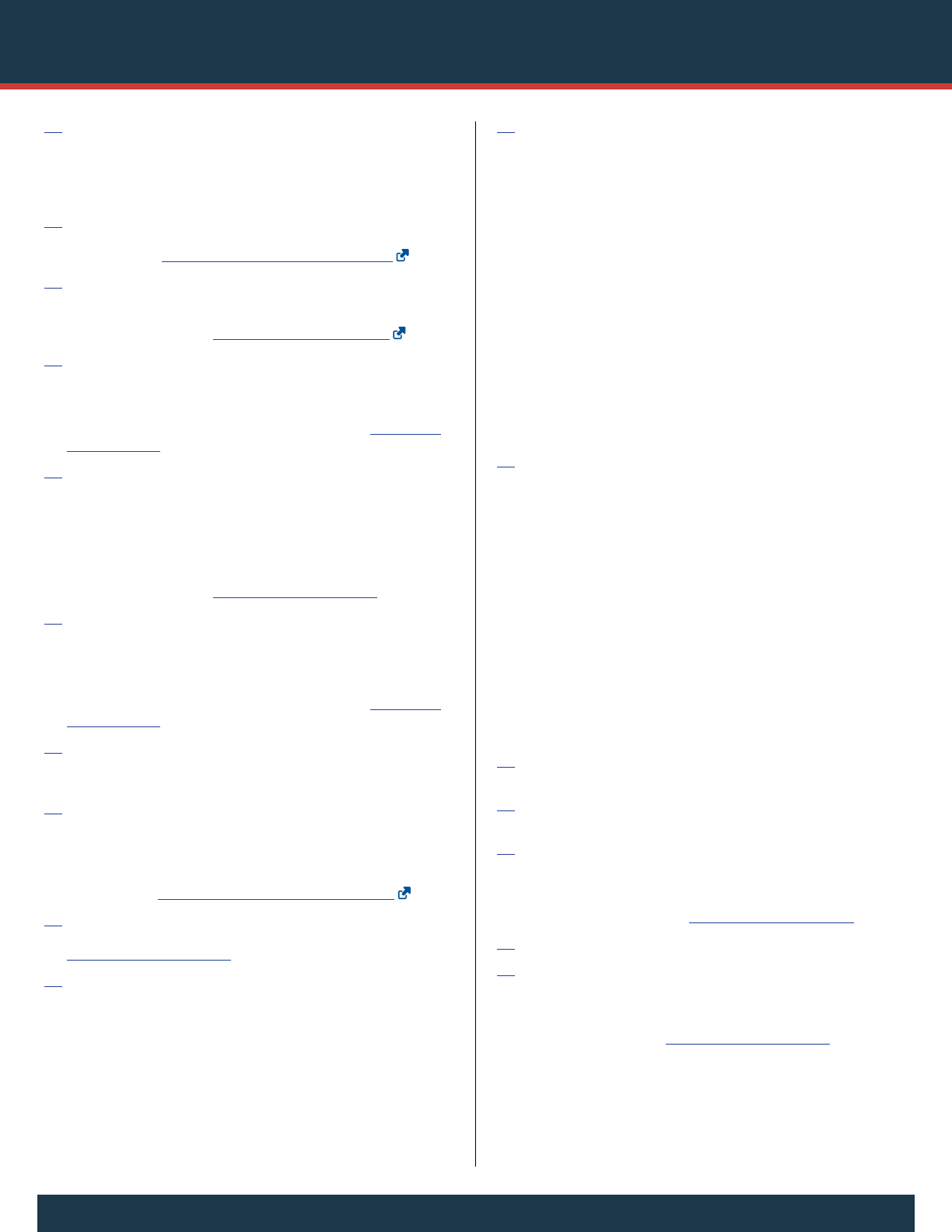
Key Substance Use and Mental Health Indicators in the United States:
Results from the 2020 National Survey on Drug Use and Health October 2021 | 59
62. Because of the cross-sectional nature of NSDUH data (i.e., reports of
perceived risk and substance use made at a single point in time instead
of from the same individuals over multiple points in time), causal
connections cannot be made between perceptions of risk and substance
use.
63. Volkow, N. D., Baler, R. D., Compton, W. M., & Weiss, S. R. B. (2014).
Adverse health effects of marijuana use. New England Journal of Medicine,
370, 2219-2227. https://doi.org/10.1056/NEJMra1402309
64. National Academies of Sciences, Engineering, and Medicine. (2017).
e health effects of cannabis and cannabinoids: e current state of
evidence and recommendations for research. Washington, DC: e
National Academies Press. https://doi.org/10.17226/24625
65. For more information about the DSM-5 criteria for SUDs, see Section
3.4.3 and the definitions for abuse and dependence in Appendix A
of the following reference: Center for Behavioral Health Statistics
and Quality. (2021). 2020 National Survey on Drug Use and Health:
Methodological summary and definitions. Retrieved from https://www.
samhsa.gov/data/
66. e DSM-IV criteria for SUDs include separate criteria for dependence
or abuse. People who met the criteria for abuse for a given substance
(e.g., alcohol) did not meet the criteria for dependence for that
substance. For more information, see Section 3.4.3 and the definitions
for abuse and dependence in Appendix A of the following reference:
Center for Behavioral Health Statistics and Quality. (2020). 2019
National Survey on Drug Use and Health: Methodological summary and
definitions. Retrieved from https://www.samhsa.gov/data/
67. A Clinical Validation Study (CVS) was conducted in early 2020 to assess
NSDUH SUD questions that were revised to be consistent with the
DSM-5 criteria. For more information on the CVS, see Section 3.4.3.4
in the following reference: Center for Behavioral Health Statistics
and Quality. (2021). 2020 National Survey on Drug Use and Health:
Methodological summary and definitions. Retrieved from https://www.
samhsa.gov/data/
68. For alcohol, for example, withdrawal symptoms include (but are not
limited to) trouble sleeping, hands trembling, hallucinations (seeing,
feeling, or hearing things that were not really there), or feeling anxious.
69. Goldstein, R. B., Chou, S. P., Smith, S. M., Jung, J., Zhang, H., Saha,
T. D., Pickering, R. P., Ruan, W. J., Huang, B., & Grant, B. F. (2015).
Nosologic comparisons of DSM-IV and DSM-5 alcohol and drug use
disorders: Results from the National Epidemiologic Survey on Alcohol
and Related Conditions-III. Journal of Studies on Alcohol and Drugs,
76(3), 378-388. https://doi.org/10.15288/jsad.2015.76.378
70. Center for Behavioral Health Statistics and Quality. (2021). 2020
National Survey on Drug Use and Health: Detailed tables. Retrieved from
https://www.samhsa.gov/data/
71. Respondents who reported any use of prescription drugs in a given
prescription psychotherapeutic category in the past 12 months (e.g.,
prescription pain relievers) but did not report misuse of any drugs in
that category in the past 12 months were not asked the SUD questions
for that category.
72. Adolescents were first asked whether they ever had a period in their
lifetime lasting several days or longer when any of the following was true
for most of the day: (a) feeling sad, empty, or depressed; (b) feeling very
discouraged or hopeless about how things were going in their lives; or
(c) losing interest and becoming bored with most things they usually
enjoy. Adolescents who reported any of these problems were asked
further questions about their experience with the nine symptoms of
MDE in their lifetime. Adolescents were classified as having an MDE
in their lifetime if they experienced at least five of the nine symptoms in
the same 2-week period in their lifetime; at least one of the symptoms
needed to be having a depressed mood or loss of interest or pleasure in
activities that had been enjoyable. Adolescents who reported gaining
weight without trying were asked if their weight gain occurred because
they were growing; this question was not asked of adult respondents.
Adolescent respondents who had a lifetime MDE were asked if they
had a period of 2 weeks or longer in the past 12 months when they felt
depressed or lost interest or pleasure in previously enjoyable activities,
and they reported having some of their other MDE symptoms. ese
adolescents were classified as having a past year MDE.
73. Adults were first asked whether they ever had a period in their lifetime
lasting several days or longer when any of the following was true
for most of the day: (a) feeling sad, empty, or depressed; (b) feeling
discouraged about how things were going in their lives; or (c) losing
interest in most things they usually enjoy. Adults who reported any of
these problems were asked further questions about their experience with
the nine symptoms of MDE in their lifetime. Adults were classified
as having an MDE in their lifetime if they experienced at least five
of the nine symptoms in the same 2-week period in their lifetime; at
least one of the symptoms needed to be having a depressed mood or
loss of interest or pleasure in activities that had been enjoyable. Adult
respondents who had a lifetime MDE were asked if they had a period of
2 weeks or longer in the past 12 months when they felt depressed or lost
interest or pleasure in previously enjoyable activities, and they reported
having some of their other MDE symptoms. ese adults were classified
as having a past year MDE. Data on MDE in the past year for adults
have been available in NSDUH since 2005.
74. Questions measuring adolescents’ impairment in carrying out life
activities because of MDE were added to the survey in 2006.
75. Data on MDE with severe impairment for adults have been available
since 2009.
76. Details about the criteria for defining a NSDUH interview as usable
are provided in Section 2.3.1 of CBHSQ (2021). See the following
reference: Center for Behavioral Health Statistics and Quality. (2021).
2020 National Survey on Drug Use and Health: Methodological summary
and definitions. Retrieved from https://www.samhsa.gov/data/
77. Bias refers to error in estimates that does not occur at random.
78. Details about the break-off analysis weights are provided in Sections
2.3.4, 3.4.7, and 6.2.2 of CBHSQ (2021). See the following reference:
Center for Behavioral Health Statistics and Quality. (2021). 2020
National Survey on Drug Use and Health: Methodological summary and
definitions. Retrieved from https://www.samhsa.gov/data/
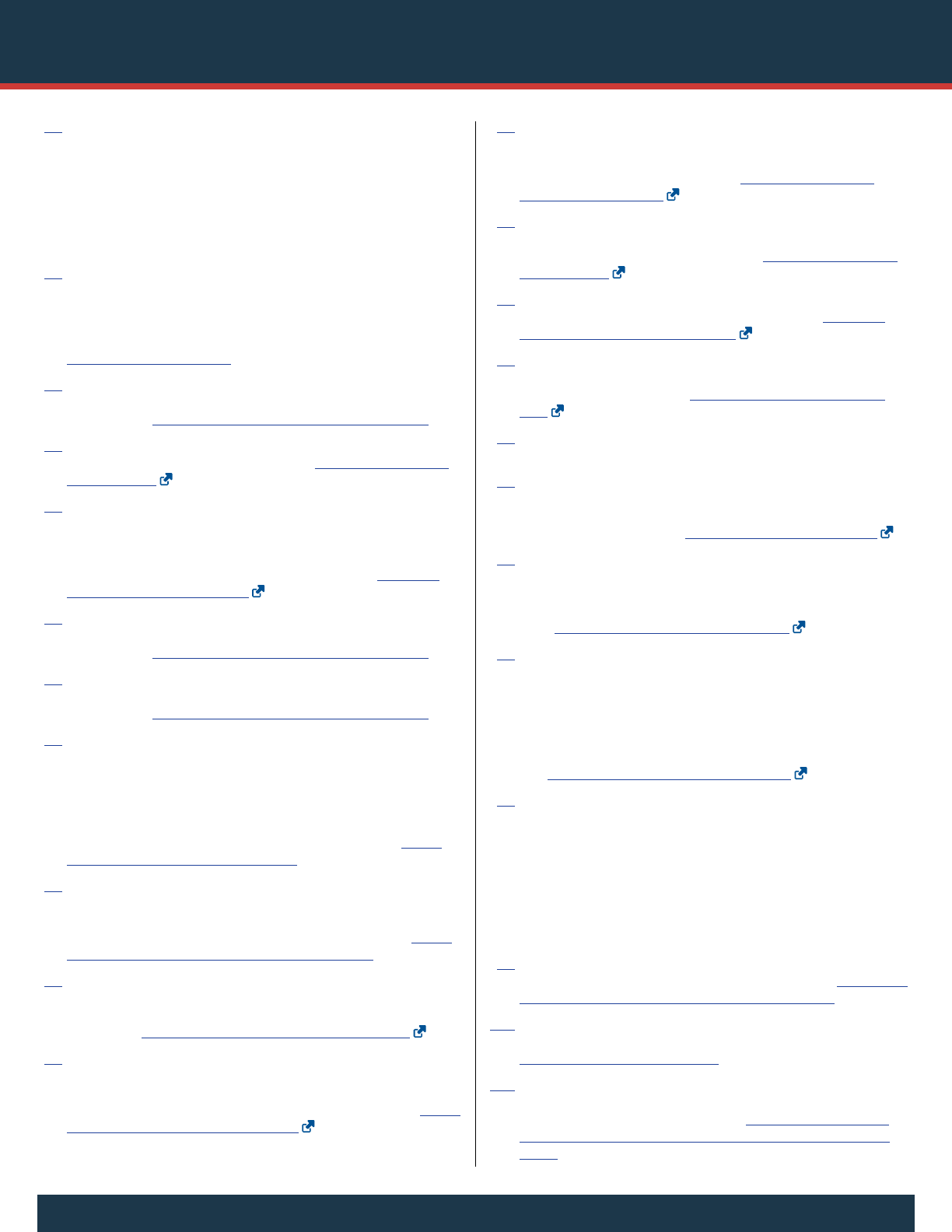
Key Substance Use and Mental Health Indicators in the United States:
Results from the 2020 National Survey on Drug Use and Health60 | October 2021
79. Follow-up clinical interviews for classifying whether adults had a
mental, behavioral, or emotional disorder in the past year used the
Structured Clinical Interview for the DSM-IV-TR Axis I Disorders,
Research Version, Non-patient Edition (SCID-I/NP). See the following
reference: First, M. B., Spitzer, R. L., Gibbon, M., & Williams, J. B. W.
(2002). Structured Clinical Interview for DSM-IV-TR Axis I Disorders,
Research Version, Non-patient Edition (SCID-I/NP). New York, NY: New
York State Psychiatric Institute, Biometrics Research.
80. Information on the definitions and estimation methods for the mental
illness estimates is provided in Section 3.4.7 and Appendix A of
CBHSQ (2021). See the following reference: Center for Behavioral
Health Statistics and Quality. (2021). 2020 National Survey on Drug
Use and Health: Methodological summary and definitions. Retrieved from
https://www.samhsa.gov/data/
81. Hedegaard, H., Curtin, S. C., & Warner, M. (2021, February). Suicide
mortality in the United States, 1999–2019 (NCHS Data Brief No. 398).
Retrieved from https://www.cdc.gov/nchs/products/databriefs.htm
82. Ahmad, F. B., & Anderson, R. N. (2021). e leading causes of death
in the US for 2020. JAMA, 325, 1829-1830. https://doi.org/10.1001/
jama.2021.5469
83. Stone, D. M., Simon, T. R., Fowler, K. A., Kegler, S. R., Yuan, K.,
Holland, K. M., Ivey-Stephenson, A. Z., & Crosby, A. E. (2018, June
8). Vital Signs: Trends in state suicide rates — United States, 1999-
2016 and circumstances contributing to suicide — 27 states, 2015.
Morbidity and Mortality Weekly Report, 67(22), 617-624. https://doi.
org/10.15585/mmwr.mm6722a1
84. Murphy, S. L., Xu, J., Kochanek, K. D., & Arias, E. (2018, November).
Mortality in the United States, 2017 (NCHS Data Brief No. 328).
Retrieved from https://www.cdc.gov/nchs/products/databriefs.htm
85. Xu, J., Murphy, S. L., Kochanek, K. D., & Arias, E. (2020, January).
Mortality in the United States, 2018 (NCHS Data Brief No. 355).
Retrieved from https://www.cdc.gov/nchs/products/databriefs.htm
86. Data are from the Centers for Disease Control and Prevention
WONDER (Wide-ranging ONline Data for Epidemiologic Research)
Multiple Cause of Death database, 2018-2019, as compiled from
data provided by the 57 vital statistics jurisdictions through the Vital
Statistics Cooperative Program. See the following reference: Centers for
Disease Control and Prevention, National Center for Health Statistics.
(2020). Underlying cause of death 2018-2019. Retrieved from https://
wonder.cdc.gov/ucd-icd10-expanded.html
87. Crosby, A. E., Han, B., Ortega, L. A. G., Parks, S. E., & Gfroerer, J.
(2011, October 21). Suicidal thoughts and behaviors among adults aged
≥18 years—United States, 2008-2009. Morbidity and Mortality Weekly
Report Surveillance Summaries, 60(SS13), 1-22. Retrieved from https://
www.cdc.gov/mmwr/preview/mmwrhtml/ss6013a1.htm
88. Han, B., Kott, P. S., Hughes, A., McKeon, R., Blanco, C., & Compton,
W. M. (2016). Estimating the rates of deaths by suicide among adults
who attempt suicide in the United States. Journal of Psychiatric Research,
77, 125-133. https://doi.org/10.1016/j.jpsychires.2016.03.002
89. Gunnell, D., Appleby, L., Arensman, E., Hawton, K., John, A., Kapur,
N., Khan, M., O’Connor, R. C., Pirkis, J., & COVID-19 Suicide
Prevention Research Collaboration. (2020). Suicide risk and prevention
during the COVID-19 pandemic. Lancet Psychiatry, 7, 468-471. https://
doi.org/10.1016/S2215-0366(20)30171-1
90. Wang, J., Sumner, S. A., Simon, T. R., Crosby, A. E., Annor, F.
B., Gaylor, E., Xu, L., & Holland, K. M. (2020). Trends in the
incidence and lethality of suicidal acts in the United States, 2006
to 2015. JAMA Psychiatry, 77, 684-693. https://doi.org/10.1001/
jamapsychiatry.2020.0596
91. Miron, O., Yu, K.-H., Wilf-Miron, R., & Kohane, I. S. (2019).
Suicide rates among adolescents and young adults in the United
States, 2000-2017. JAMA, 321, 2362-2364. https://doi.org/10.1001/
jama.2019.5054
92. Mojtabai, R., & Olfson, M. (2020). National trends in mental health
care for US adolescents. JAMA Psychiatry, 77, 703-714. https://doi.
org/10.1001/jamapsychiatry.2020.0279
93. Mojtabai, R., Olfson, M., & Han, B. (2016). National trends in the
prevalence and treatment of depression in adolescents and young adults.
Pediatrics, 138(6), e20161878. https://doi.org/10.1542/peds.2016-
1878
94. Examples of ACEs include abuse, neglect, and negative family
interactions. ACEs can occur anytime from birth to age 17.
95. ompson, M. P., Kingree, J. B., & Lamis, D. (2019). Associations
of adverse childhood experiences and suicidal behaviors in adulthood
in a US nationally representative sample. Child: Care, Health and
Development, 45(1), 121-128. https://doi.org/10.1111/cch.12617
96. Dube, S. R., Anda, R. F., Felitti, V. J., Chapman, D. P., Williamson, D.
F., & Giles, W. H. (2001). Childhood abuse, household dysfunction,
and the risk of attempted suicide throughout the life span: Findings
from the Adverse Childhood Experiences Study. JAMA, 286(24), 3089-
3096. https://doi.org/10.1001/jama.286.24.3089
97. Yard, E., Radhakrishnan, L., Ballesteros, M. F., Sheppard, M., Gates,
A., Stein, Z., Hartnett, K., Kite-Powell, A., Rodgers, L., Adjemian,
J., Ehlman, D. C., Holland, K., Idaikkadar, N., Ivey-Stephenson, A.,
Martinez, P., Law, R., & Stone, D. M. (2021). Emergency department
visits for suspected suicide attempts among persons aged 12–25 years
before and during the COVID-19 pandemic — United States, January
2019–May 2021. Morbidity and Mortality Weekly Report, 70(24), 888-
894. https://doi.org/10.15585/mmwr.mm7024e1
98. Respondents were eligible to be asked the substance use treatment
questions if they reported lifetime use of alcohol, marijuana,
cocaine (including crack), heroin, hallucinogens, inhalants,
or methamphetamine, or the lifetime misuse of prescription
psychotherapeutic drugs (i.e., pain relievers, tranquilizers, stimulants, or
sedatives). Respondents who were lifetime users of tobacco products or
other substances (e.g., kratom) but who did not report lifetime use or
misuse of the substances mentioned in the previous sentence were not
asked the substance use treatment questions.
99. Substance Abuse and Mental Health Services Administration. (2020).
Opioid treatment program (OTP) guidance. Retrieved from https://www.
samhsa.gov/sites/default/files/otp-guidance-20200316.pdf
100. Drug Enforcement Administration. (2020). Use of telephone evaluations
to initiate buprenorphine prescribing. Retrieved on June 8, 2021, from
https://www.deadiversion.usdoj.gov/
101. U.S. Department of Health and Human Services. (2021). Best practice
guide: Telehealth for behavioral health care: Billing for telebehavioral
health. Retrieved on June 18, 2021, from https://telehealth.hhs.gov/
providers/telehealth-for-behavioral-health/billing-for-telebehavioral-
health/
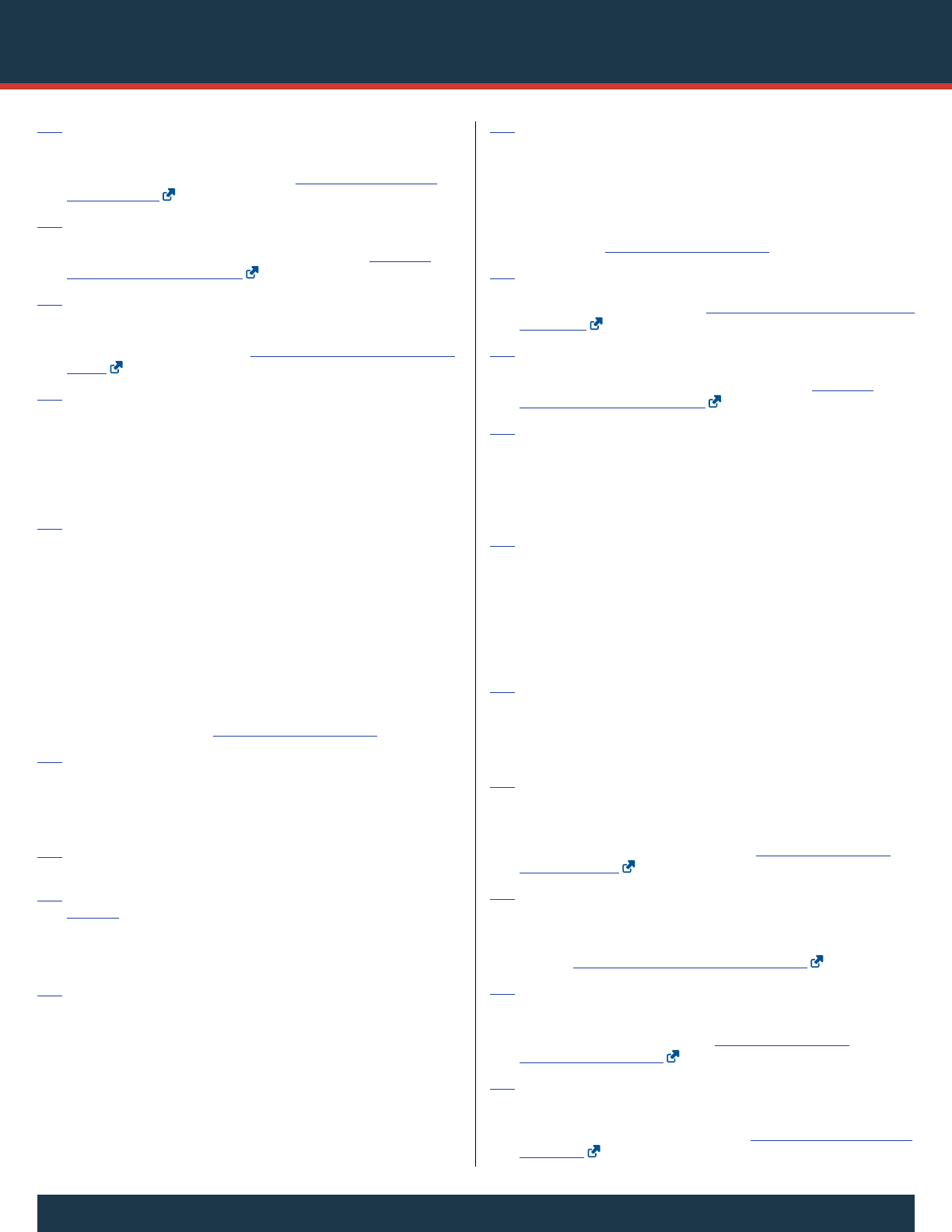
Key Substance Use and Mental Health Indicators in the United States:
Results from the 2020 National Survey on Drug Use and Health October 2021 | 61
102. Lin, L., Casteel, D., Shigekawa, E., Weyrich, M. S., Roby, D. H.,
& McMenamin, S. B. (2019). Telemedicine-delivered treatment
interventions for substance use disorders: A systematic review. Journal
of Substance Abuse Treatment, 101, 38-49. https://doi.org/10.1016/j.
jsat.2019.03.007
103. Fiacco, L., Pearson, B. L., & Jordan, R. (2021). Telemedicine works
for treating substance use disorder: e STAR clinic experience during
COVID-19. Journal of Substance Abuse Treatment, 125. https://doi.
org/10.1016/j.jsat.2021.108312
104. Benavides-Vaello, S., Strode, A., & Sheeran, B. C. (2013). Using
technology in the delivery of mental health and substance abuse
treatment in rural communities: A review. Journal of Behavioral Health
Services & Research, 40, 111-120. https://doi.org/10.1007/s11414-012-
9299-6
105. Substance use treatment at a specialty facility refers to substance
use treatment at a hospital (only as an inpatient), a drug or alcohol
rehabilitation facility (as an inpatient or outpatient), or a mental
health center. is NSDUH definition historically has not considered
emergency rooms, private doctors’ offices, prisons or jails, and self-
help groups to be specialty facilities for the receipt of substance use
treatment.
106. e NSDUH definition of the need for treatment does not explicitly
indicate the need for treatment at a specialty facility. People with an
SUD in the past year can be considered to need some form of assistance
for their problems with substance use. For more information about
the DSM-5 criteria for having an SUD, see Section 3.4.3 and the
definition for SUD in Appendix A of CBHSQ (2021). See the following
references:
American Psychiatric Association. (2013). Diagnostic and statistical
manual of mental disorders (DSM-5) (5th ed.). Arlington, VA: Author.
Center for Behavioral Health Statistics and Quality. (2021). 2020
National Survey on Drug Use and Health: Methodological summary and
definitions. Retrieved from https://www.samhsa.gov/data/
107. ere were 40.3 million people aged 12 or older in 2020 with an SUD
in the past year. Approximately 98 percent of the people in 2020 who
needed treatment for a substance use problem were classified as such
because they had an SUD in the past year, regardless of whether they
received substance use treatment at a specialty facility.
108. As per the definition of the need for substance use treatment, people
with an SUD were classified as needing substance use treatment.
109. Due to rounding, estimated numbers and percentages of people in
Figure 45 who made an effort or did not make an effort to get substance
use treatment do not sum to the total number of people who needed
substance use treatment, did not receive specialty treatment in the
past year, and perceived a need for treatment.
110. Respondents in Quarter 4 of 2020 who did not report receiving
substance use treatment in the past year were not asked if they received
telehealth services as substance use treatment. erefore, reasons for not
receiving treatment from Quarter 4 can include reasons for not receiving
telehealth services.
111. Reported estimates in this section may differ slightly from corresponding
estimates in the 2020 detailed tables because the estimates in this section
used a special break-off analysis weight for adult respondents who did
not complete the interview. For more information about this break-off
analysis weight, see Section 2.3.4 in the following reference: Center
for Behavioral Health Statistics and Quality. (2021). 2020 National
Survey on Drug Use and Health: Methodological summary and definitions.
Retrieved from https://www.samhsa.gov/data/
112. Waugh, M., Voyles, D., & omas, M. R. (2015). Telepsychiatry:
Benefits and costs in a changing health-care environment. International
Review of Psychiatry, 27, 558-568. https://doi.org/10.3109/09540261.20
15.1091291
113. Reay, R. E., Looi, J. C. L., & Keightley, P. (2020). Telehealth mental
health services during COVID-19: Summary of evidence and
clinical practice. Australasian Psychiatry, 28, 514-516. https://doi.
org/10.1177/1039856220943032
114. Health professionals include general practitioners or family doctors;
other medical doctors (e.g., cardiologist, gynecologist, urologist);
psychologists; psychiatrists or psychotherapists; social workers;
counselors; other mental health professionals (e.g., mental health nurse
or other therapist where type is not specified); and nurses, occupational
therapists, or other health professionals.
115. e specialty mental health setting includes services in outpatient or
inpatient settings. Outpatient services include those from (a) a private
therapist, psychologist, psychiatrist, social worker, or counselor; (b) a
mental health clinic or center; (c) a partial day hospital or day treatment
program; or (d) an in-home therapist, counselor, or family preservation
worker. Inpatient or residential specialty mental health services in which
adolescents stayed overnight or longer include services in a hospital or a
residential treatment center.
116. Due to questionnaire changes in 2009, estimates for the receipt of youth
mental health services in educational settings are not comparable with
estimates prior to 2009. Additionally, estimates for the receipt of youth
mental health services in juvenile justice settings were not available prior
to 2009.
117. Compton, W. M., omas, Y. F., Stinson, F. S., & Grant, B. F.
(2007). Prevalence, correlates, disability, and comorbidity of DSM-
IV drug abuse and dependence in the United States: Results from the
National Epidemiologic Survey on Alcohol and Related Conditions.
Archives of General Psychiatry, 64, 566-576. https://doi.org/10.1001/
archpsyc.64.5.566
118. Mojtabai, R., Chen, L.-Y., Kaufmann, C. N., & Crum, R. M. (2014).
Comparing barriers to mental health treatment and substance use
disorder treatment among individuals with comorbid major depression
and substance use disorders. Journal of Substance Abuse Treatment, 46,
268-273. https://doi.org/10.1016/j.jsat.2013.07.012
119. Hartz, S. M., Pato, C. N., Medeiros, H., Cavazos-Rehg, P.,
Sobell, J. L., Knowles, J. A., Bierut, L. J., & Pato, M. T. (2014).
Comorbidity of severe psychotic disorders with measures of substance
use. JAMA Psychiatry, 71, 248-254. https://doi.org/10.1001/
jamapsychiatry.2013.3726
120. Watkins, K. E., Hunter, S. B., Burnam, M. A., Pincus, H. A., &
Nicholson, G. (2005). Review of treatment recommendations for
persons with a co-occurring affective or anxiety and substance use
disorder. Psychiatric Services, 56, 913-926. https://doi.org/10.1176/appi.
ps.56.8.913

Key Substance Use and Mental Health Indicators in the United States:
Results from the 2020 National Survey on Drug Use and Health62 | October 2021
121. Pettinati, H. M., O’Brien, C. P., & Dundon, W. D. (2013). Current
status of co-occurring mood and substance use disorders: A new
therapeutic target. American Journal of Psychiatry, 170, 23-30. https://
doi.org/10.1176/appi.ajp.2012.12010112
122. Han, B., Compton, W. M., Blanco, C., & Colpe, L. J. (2017).
Prevalence, treatment, and unmet treatment needs of US adults with
mental health and substance use disorders. Health Affairs (Millwood),
36, 1739-1747. https://doi.org/10.1377/hlthaff.2017.0584
123. Centers for Disease Control and Prevention. (n.d.). COVID Data
Tracker: Trends in number of COVID-19 cases and deaths in the US
reported to CDC, by state/territory. Retrieved on June 18, 2021, from
https://covid.cdc.gov/covid-data-tracker/#trends_dailytrendscases
124. National Institute on Alcohol Abuse and Alcoholism. (2021, June 15).
State alcohol-related laws during the COVID-19 emergency for on-premises
and off-premises establishments as of June 15, 2021. Alcohol Policy
Information System (APIS). Retrieved from https://alcoholpolicy.niaaa.
nih.gov/resource/covid-19/98
125. Barbosa, C., Cowell, A. J., & Dowd, W. N. (2020). Alcohol
consumption in response to the COVID-19 pandemic in the United
States. Journal of Addiction Medicine. https://doi.org/10.1097/
ADM.0000000000000767
126. Pollard, M. S., Tucker, J. S., & Green, Jr., H. D. (2020). Changes in
adult alcohol use and consequences during the COVID-19 pandemic
in the US. JAMA Network Open, 3(9). https://doi.org/10.1001/
jamanetworkopen.2020.22942
127. European Monitoring Centre for Drugs and Drug Addiction. (2021).
European Drug Report 2021: Trends and developments. Luxembourg:
Publications Office of the European Union.
128. Use of drugs other than alcohol included the use of marijuana,
cocaine (including crack), heroin, hallucinogens, inhalants, or
methamphetamine in the past year or any use (i.e., not necessarily
misuse) of prescription pain relievers, tranquilizers, stimulants, or
sedatives in the past year. Drugs other than alcohol did not include
tobacco products or nicotine vaping.
129. U.S. Department of Health and Human Services. (2021, May). What is
telehealth? Retrieved on July 27, 2021, from https://telehealth.hhs.gov/
patients/understanding-telehealth/

Key Substance Use and Mental Health Indicators in the United States:
Results from the 2020 National Survey on Drug Use and Health October 2021 | A-1
AppendixA: Special Tables of Estimates for Substance Use and Mental Health Indicators
in the United States
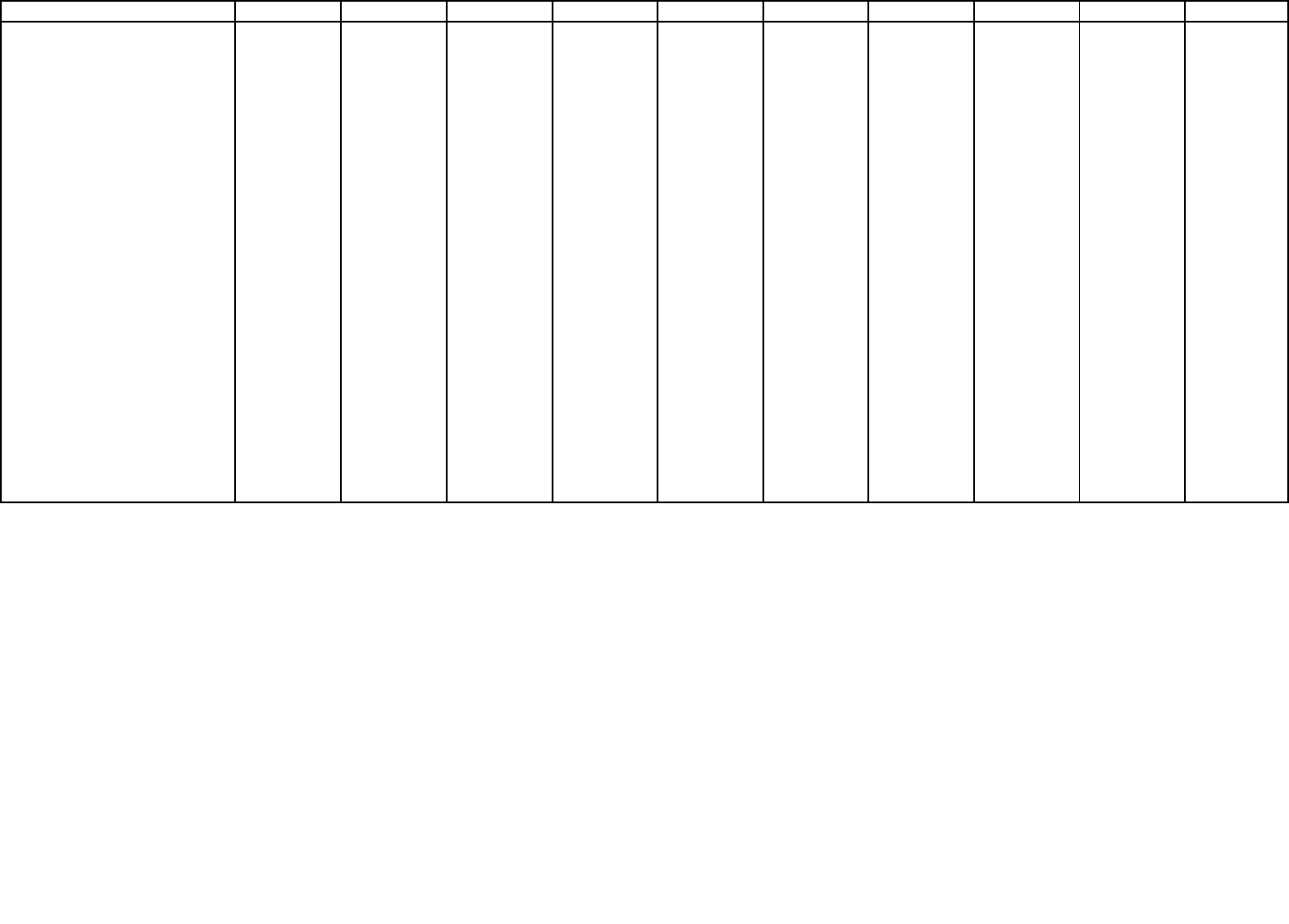
A-2
Table A.1B Types of Illicit Drug, Tobacco Product, Alcohol, and Other Substance Use in the Past Month: Among People Aged 12 or Older; 2002-2020
Substance 2002 2003 2004 2005 2006 2007 2008 2009 2010 2011
GENERAL SUBSTANCE USE
Illicit Drugs, Tobacco Products, or Alcohol nc nc nc nc nc nc nc nc nc nc
Illicit Drugs or Alcohol nc nc nc nc nc nc nc nc nc nc
Tobacco Products or Alcohol 61.0 (0.40) 60.1 (0.38) 59.6 (0.40) 61.1 (0.39) 60.7 (0.39) 60.5 (0.37) 60.6 (0.38) 60.6 (0.36) 60.9 (0.39) 60.3 (0.38)
ILLICIT DRUGS nc nc nc nc nc nc nc nc nc nc
TOBACCO PRODUCTS OR NICOTINE
VAPING -- -- -- -- -- -- -- -- -- --
Tobacco Products 30.4 (0.35) 29.8 (0.34) 29.2 (0.33) 29.4 (0.35) 29.6 (0.35) 28.7 (0.34) 28.4 (0.35) 27.7 (0.33) 27.5 (0.34) 26.5 (0.33)
Cigarettes 26.0 (0.34) 25.4 (0.33) 24.9 (0.32) 24.9 (0.32) 25.0 (0.33) 24.3 (0.33) 24.0 (0.32) 23.3 (0.32) 23.0 (0.31) 22.1 (0.32)
Daily Cigarette Smoking
1
63.4 (0.66) 62.9 (0.67) 62.3 (0.63) 63.0 (0.62) 62.3 (0.59) 61.3 (0.65) 61.5 (0.70) 61.0 (0.68) 59.5 (0.71) 60.7 (0.71)
Smoked 1+ Packs of
Cigarettes per Day
2
53.1 (0.91) 53.5 (0.82) 54.0 (0.87) 51.4 (0.86) 50.6 (0.85) 50.9 (0.88) 49.2 (0.94) 45.9 (0.98) 45.1 (0.94) 43.8 (0.90)
Smokeless Tobacco nc nc nc nc nc nc nc nc nc nc
Cigars 5.4 (0.15) 5.4 (0.14) 5.7 (0.13) 5.6 (0.15) 5.6 (0.14) 5.4 (0.14) 5.3 (0.15) 5.3 (0.14) 5.2 (0.14) 5.0 (0.14)
Pipe Tobacco 0.8 (0.07) 0.7 (0.06) 0.8 (0.06) 0.9 (0.06) 0.9 (0.07) 0.8 (0.07) 0.8 (0.06) 0.8 (0.06) 0.8 (0.06) 0.8 (0.06)
Nicotine Vaping -- -- -- -- -- -- -- -- -- --
ALCOHOL 51.0 (0.42) 50.1 (0.39) 50.3 (0.40) 51.8 (0.40) 51.0 (0.39) 51.2 (0.41) 51.6 (0.39) 51.9 (0.38) 51.8 (0.39) 51.8 (0.39)
Binge Alcohol Use nc nc nc nc nc nc nc nc nc nc
Heavy Alcohol Use nc nc nc nc nc nc nc nc nc nc
OTHER SUBSTANCE USE
GHB -- -- -- -- 0.0 (0.01) 0.0 (0.00) 0.0 (0.01) 0.0 (0.00) 0.0 (0.01) 0.0 (0.01)
Nonprescription Cough or Cold Medicine -- -- -- -- 0.2 (0.02) 0.2 (0.02) 0.2 (0.02) 0.2 (0.02) 0.2 (0.03) 0.2 (0.02)
Kratom -- -- -- -- -- -- -- -- -- --
Synthetic Marijuana (Fake Weed, K2,
Spice) -- -- -- -- -- -- -- -- -- --
Synthetic Stimulants (“Bath Salts,” Flakka) -- -- -- -- -- -- -- -- -- --
NOTE: Footnotes and source information are shown at the end of the second half of this table.
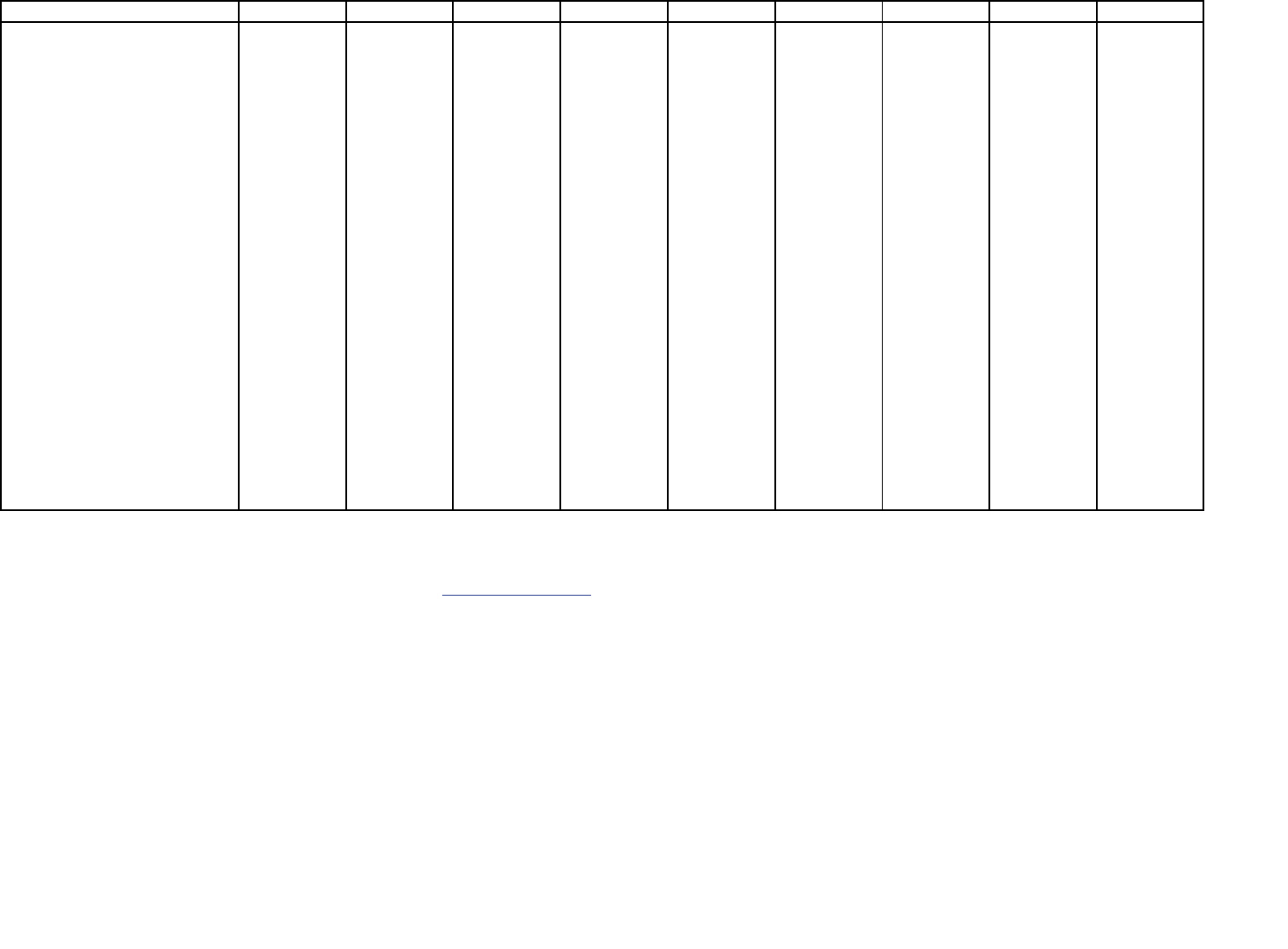
A-3
Table A.1B Types of Illicit Drug, Tobacco Product, Alcohol, and Other Substance Use in the Past Month: Among People Aged 12 or Older; 2002-2020 (continued)
Substance 2012 2013 2014 2015 2016 2017 2018 2019 2020
GENERAL SUBSTANCE USE
Illicit Drugs, Tobacco Products, or Alcohol nc nc nc 60.9 (0.30) 60.2 (0.30) 60.7 (0.32) 60.2 (0.35) 60.1 (0.32) 58.7 (0.51)
Illicit Drugs or Alcohol nc nc nc 54.1 (0.31) 53.4 (0.32) 54.3 (0.33) 53.9 (0.36) 54.2 (0.34) 53.6 (0.52)
Tobacco Products or Alcohol 61.0 (0.37) 60.6 (0.39) 61.0 (0.31) 59.8 (0.30) 58.9 (0.30) 59.4 (0.32) 58.8 (0.35) 58.3 (0.33) 56.9 (0.51)
ILLICIT DRUGS nc nc nc 10.1 (0.17) 10.6 (0.18) 11.2 (0.19) 11.7 (0.21) 13.0 (0.20) 13.5 (0.32)
TOBACCO PRODUCTS OR NICOTINE
VAPING -- -- -- -- -- -- -- -- 20.7 (0.41)
Tobacco Products 26.7 (0.34) 25.5 (0.32) 25.2 (0.28) 23.9 (0.26) 23.5 (0.27) 22.4 (0.26) 21.5 (0.27) 21.1 (0.25) 18.7 (0.40)
Cigarettes 22.1 (0.32) 21.3 (0.30) 20.8 (0.26) 19.4 (0.25) 19.1 (0.25) 17.9 (0.25) 17.2 (0.25) 16.7 (0.23) 15.0 (0.38)
Daily Cigarette Smoking
1
60.7 (0.71) 59.6 (0.73) 58.8 (0.59) 58.1 (0.64) 57.9 (0.66) 57.1 (0.69) 58.2 (0.71) 58.4 (0.71) 60.1 (1.25)
Smoked 1+ Packs of
Cigarettes per Day
2
42.0 (0.94) 41.3 (1.00) 40.3 (0.83) 41.1 (0.87) 41.1 (0.89) 41.2 (0.92) 39.6 (0.94) 40.5 (0.95) 37.8 (1.78)
Smokeless Tobacco nc nc nc 3.4 (0.11) 3.3 (0.10) 3.2 (0.09) 2.9 (0.09) 3.1 (0.10) 2.5 (0.14)
Cigars 5.2 (0.15) 4.7 (0.14) 4.5 (0.11) 4.7 (0.12) 4.6 (0.11) 4.6 (0.11) 4.5 (0.12) 4.3 (0.11) 3.8 (0.19)
Pipe Tobacco 1.0 (0.07) 0.9 (0.06) 0.8 (0.05) 0.8 (0.05) 0.8 (0.05) 0.9 (0.05) 0.8 (0.04) 0.7 (0.04) 0.7 (0.08)
Nicotine Vaping -- -- -- -- -- -- -- -- 3.8 (0.15)
ALCOHOL 52.1 (0.39) 52.2 (0.41) 52.7 (0.33) 51.7 (0.32) 50.7 (0.31) 51.7 (0.33) 51.1 (0.37) 50.8 (0.34) 50.0 (0.52)
Binge Alcohol Use nc nc nc 24.9 (0.27) 24.2 (0.26) 24.5 (0.27) 24.5 (0.26) 23.9 (0.26) 22.2 (0.41)
Heavy Alcohol Use nc nc nc 6.5 (0.14) 6.0 (0.14) 6.1 (0.13) 6.1 (0.14) 5.8 (0.14) 6.4 (0.23)
OTHER SUBSTANCE USE
GHB 0.0 (0.01) 0.0 (0.01) 0.0 (0.01) 0.0 (0.01) 0.0 (0.00) * (*) 0.0 (0.00) 0.0 (0.01) 0.0 (0.01)
Nonprescription Cough or Cold Medicine 0.2 (0.03) 0.2 (0.03) 0.1 (0.02) 0.2 (0.02) 0.2 (0.02) 0.2 (0.03) 0.2 (0.03) 0.3 (0.04) 0.3 (0.05)
Kratom -- -- -- -- -- -- -- 0.3 (0.03) 0.4 (0.06)
Synthetic Marijuana (Fake Weed, K2,
Spice) -- -- -- -- -- -- -- -- 0.2 (0.03)
Synthetic Stimulants (“Bath Salts,” Flakka) -- -- -- -- -- -- -- -- 0.0 (0.01)
* = low precision; -- = not available; nc = not comparable due to methodological changes.
NOTE: Estimates shown are percentages with standard errors included in parentheses.
NOTE: Estimates in the 2020 column are italicized to indicate caution should be used when comparing estimates between 2020 and prior years because of methodological changes for 2020. Due to these changes, significance testing between 2020 and prior years was
not performed. See the 2020 National Survey on Drug Use and Health: Methodological Summary and Definitions for details.
NOTE: Additional estimates may be found in the detailed tables for the 2020 NSDUH at https://www.samhsa.gov/data/
. Measures and terms are defined in Appendix A of the 2020 detailed tables.
NOTE: Estimates of 0.0 percent round to less than 0.1 percent when shown to the nearest tenth of a percent.
1
Percentages for daily cigarette smoking are among past month cigarette smokers.
2
Percentages for smoking one or more packs of cigarettes per day are among daily cigarette smokers in the past month. Respondents with missing data for the number of cigarettes smoked per day were excluded from the analysis.
Source:
SAMHSA, Center for Behavioral Health Statistics and Quality, National Survey on Drug Use and Health, 2002-2019 and Quarters 1 and 4, 2020.
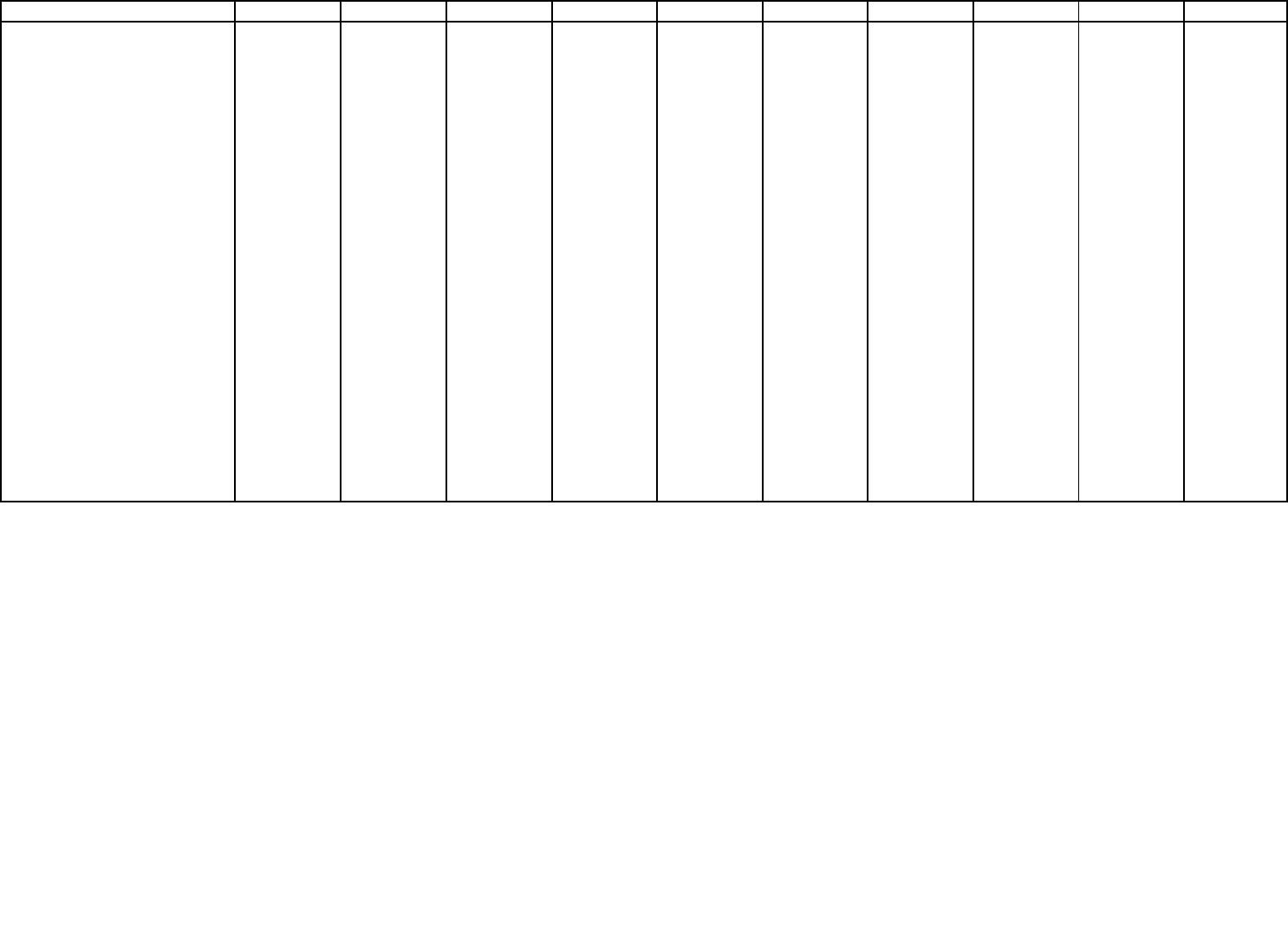
A-4
Table A.2B Types of Illicit Drug, Tobacco Product, Alcohol, and Other Substance Use in the Past Month: Among Adolescents Aged 12 to 17; 2002-2020
Substance 2002 2003 2004 2005 2006 2007 2008 2009 2010 2011
GENERAL SUBSTANCE USE
Illicit Drugs, Tobacco Products, or Alcohol nc nc nc nc nc nc nc nc nc nc
Illicit Drugs or Alcohol nc nc nc nc nc nc nc nc nc nc
Tobacco Products or Alcohol 24.0 (0.38) 23.6 (0.38) 23.4 (0.35) 22.0 (0.37) 21.8 (0.37) 21.1 (0.38) 19.7 (0.35) 19.7 (0.36) 18.2 (0.36) 17.5 (0.36)
ILLICIT DRUGS nc nc nc nc nc nc nc nc nc nc
TOBACCO PRODUCTS OR NICOTINE
VAPING -- -- -- -- -- -- -- -- -- --
Tobacco Products 15.2 (0.33) 14.4 (0.32) 14.4 (0.32) 13.1 (0.31) 12.9 (0.29) 12.4 (0.30) 11.5 (0.28) 11.8 (0.29) 10.7 (0.28) 10.0 (0.27)
Cigarettes 13.0 (0.30) 12.2 (0.29) 11.9 (0.30) 10.8 (0.28) 10.4 (0.26) 9.9 (0.27) 9.2 (0.25) 9.0 (0.26) 8.4 (0.26) 7.8 (0.24)
Daily Cigarette Smoking
1
31.8 (1.03) 29.7 (1.06) 27.6 (1.13) 25.8 (1.12) 26.5 (1.19) 26.4 (1.16) 22.3 (1.11) 23.0 (1.17) 22.5 (1.29) 22.7 (1.28)
Smoked 1+ Packs of
Cigarettes per Day
2
21.8 (1.61) 22.0 (1.68) 19.4 (1.80) 20.1 (1.87) 17.9 (1.94) 18.7 (2.14) 18.4 (2.08) 17.9 (2.12) 16.7 (2.24) 14.8 (1.97)
Smokeless Tobacco nc nc nc nc nc nc nc nc nc nc
Cigars 4.5 (0.19) 4.5 (0.17) 4.8 (0.18) 4.2 (0.18) 4.1 (0.16) 4.3 (0.18) 3.8 (0.16) 4.0 (0.16) 3.2 (0.15) 3.4 (0.16)
Pipe Tobacco 0.6 (0.06) 0.6 (0.07) 0.7 (0.08) 0.6 (0.07) 0.7 (0.07) 0.7 (0.08) 0.7 (0.07) 0.9 (0.09) 0.6 (0.07) 0.7 (0.07)
Nicotine Vaping -- -- -- -- -- -- -- -- -- --
ALCOHOL 17.6 (0.32) 17.7 (0.33) 17.6 (0.32) 16.5 (0.32) 16.7 (0.32) 16.0 (0.34) 14.7 (0.32) 14.8 (0.32) 13.6 (0.33) 13.3 (0.31)
Binge Alcohol Use nc nc nc nc nc nc nc nc nc nc
Heavy Alcohol Use nc nc nc nc nc nc nc nc nc nc
OTHER SUBSTANCE USE
GHB -- -- -- -- 0.0 (0.01) 0.0 (0.01) 0.0 (0.00) 0.0 (0.01) * (*) 0.0 (0.00)
Nonprescription Cough or Cold Medicine -- -- -- -- 0.5 (0.05) 0.5 (0.06) 0.4 (0.05) 0.4 (0.05) 0.4 (0.05) 0.3 (0.05)
Kratom -- -- -- -- -- -- -- -- -- --
Synthetic Marijuana (Fake Weed, K2,
Spice) -- -- -- -- -- -- -- -- -- --
Synthetic Stimulants (“Bath Salts,” Flakka) -- -- -- -- -- -- -- -- -- --
NOTE: Footnotes and source information are shown at the end of the second half of this table.
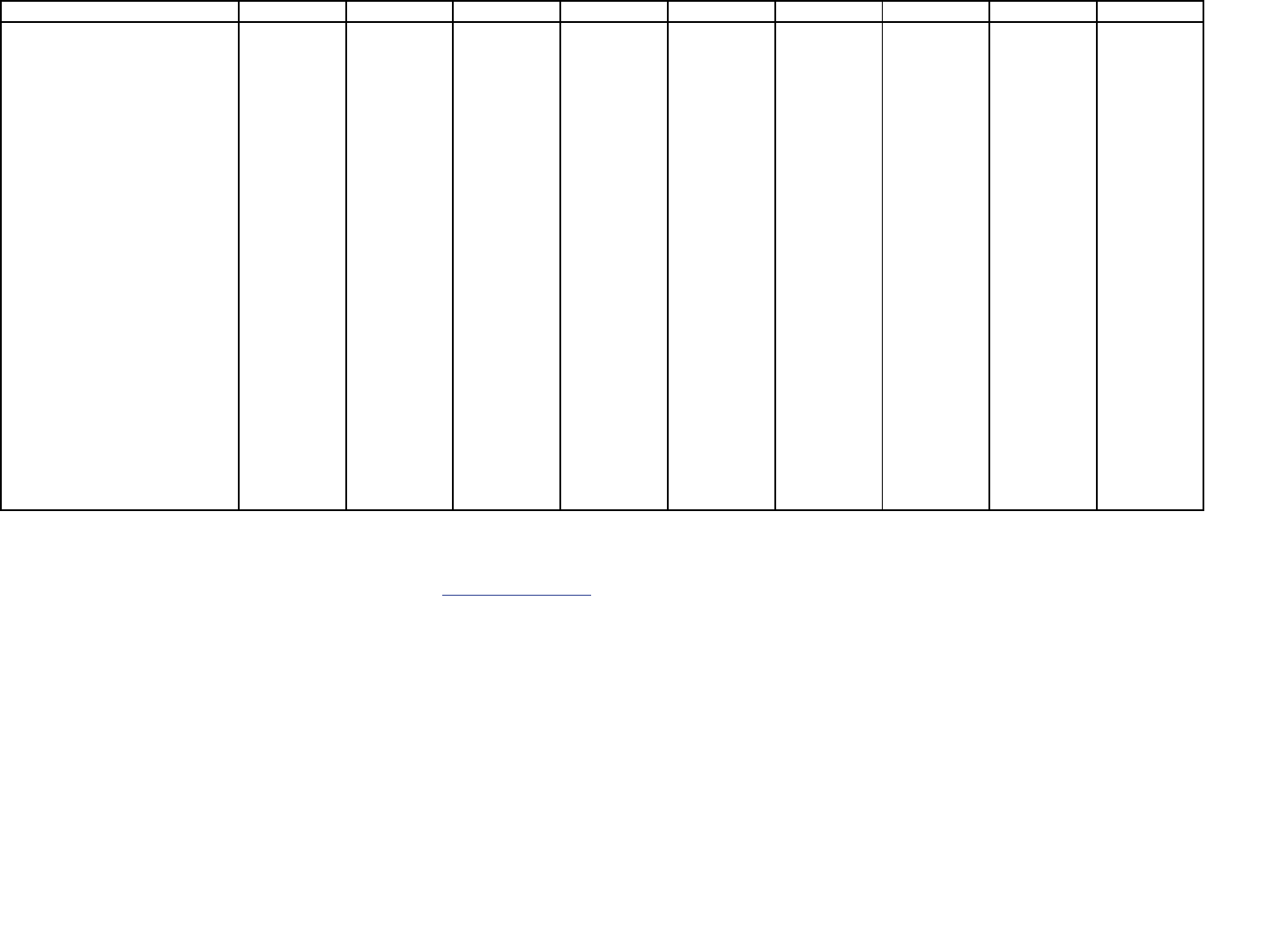
A-5
Table A.2B Types of Illicit Drug, Tobacco Product, Alcohol, and Other Substance Use in the Past Month: Among Adolescents Aged 12 to 17; 2002-2020 (continued)
Substance 2012 2013 2014 2015 2016 2017 2018 2019 2020
GENERAL SUBSTANCE USE
Illicit Drugs, Tobacco Products, or Alcohol nc nc nc 15.6 (0.37) 14.7 (0.36) 15.1 (0.37) 14.2 (0.34) 15.0 (0.34) 12.2 (0.68)
Illicit Drugs or Alcohol nc nc nc 14.2 (0.35) 13.2 (0.35) 13.8 (0.35) 13.2 (0.33) 14.1 (0.33) 11.5 (0.64)
Tobacco Products or Alcohol 16.5 (0.34) 15.1 (0.33) 14.6 (0.35) 12.4 (0.33) 11.8 (0.33) 12.0 (0.34) 11.0 (0.32) 11.2 (0.32) 9.4 (0.62)
ILLICIT DRUGS nc nc nc 8.8 (0.27) 7.9 (0.26) 7.9 (0.26) 8.0 (0.27) 8.7 (0.28) 6.7 (0.45)
TOBACCO PRODUCTS OR NICOTINE
VAPING -- -- -- -- -- -- -- -- 6.5 (0.49)
Tobacco Products 8.6 (0.25) 7.8 (0.24) 7.0 (0.25) 6.0 (0.23) 5.3 (0.21) 4.9 (0.21) 4.2 (0.19) 3.8 (0.19) 2.4 (0.29)
Cigarettes 6.6 (0.22) 5.6 (0.20) 4.9 (0.21) 4.2 (0.20) 3.4 (0.18) 3.2 (0.17) 2.7 (0.16) 2.3 (0.15) 1.4 (0.22)
Daily Cigarette Smoking
1
22.0 (1.33) 19.4 (1.35) 24.1 (1.89) 20.0 (1.84) 15.0 (1.64) 12.2 (1.64) 14.7 (2.04) 13.2 (2.04) * (*)
Smoked 1+ Packs of
Cigarettes per Day
2
10.8 (1.88) 11.9 (2.47) 11.9 (2.52) 7.8 (2.51) * (*) * (*) * (*) * (*) * (*)
Smokeless Tobacco nc nc nc 1.5 (0.10) 1.4 (0.11) 1.3 (0.10) 1.1 (0.10) 1.0 (0.10) 0.6 (0.11)
Cigars 2.6 (0.13) 2.3 (0.13) 2.1 (0.13) 2.1 (0.14) 1.8 (0.12) 1.9 (0.13) 1.7 (0.13) 1.4 (0.12) 0.8 (0.15)
Pipe Tobacco 0.7 (0.07) 0.6 (0.07) 0.7 (0.08) 0.3 (0.06) 0.5 (0.06) 0.4 (0.07) 0.3 (0.06) 0.3 (0.06) 0.3 (0.12)
Nicotine Vaping -- -- -- -- -- -- -- -- 5.1 (0.43)
ALCOHOL 12.9 (0.31) 11.6 (0.29) 11.5 (0.33) 9.6 (0.29) 9.2 (0.30) 9.9 (0.30) 9.0 (0.29) 9.4 (0.30) 8.2 (0.57)
Binge Alcohol Use nc nc nc 5.8 (0.23) 4.9 (0.22) 5.3 (0.22) 4.7 (0.22) 4.9 (0.22) 4.1 (0.42)
Heavy Alcohol Use nc nc nc 0.9 (0.10) 0.8 (0.09) 0.7 (0.08) 0.5 (0.07) 0.8 (0.10) 0.6 (0.15)
OTHER SUBSTANCE USE
GHB 0.0 (0.02) * (*) 0.0 (0.01) * (*) * (*) * (*) * (*) 0.0 (0.02) * (*)
Nonprescription Cough or Cold Medicine 0.4 (0.06) 0.3 (0.05) 0.2 (0.04) 0.3 (0.06) 0.3 (0.06) 0.3 (0.05) 0.3 (0.05) 0.2 (0.04) 0.1 (0.04)
Kratom -- -- -- -- -- -- -- 0.1 (0.03) 0.1 (0.08)
Synthetic Marijuana (Fake Weed, K2,
Spice) -- -- -- -- -- -- -- -- 0.5 (0.14)
Synthetic Stimulants (“Bath Salts,” Flakka) -- -- -- -- -- -- -- -- 0.0 (0.03)
* = low precision; -- = not available; nc = not comparable due to methodological changes.
NOTE: Estimates shown are percentages with standard errors included in parentheses.
NOTE: Estimates in the 2020 column are italicized to indicate caution should be used when comparing estimates between 2020 and prior years because of methodological changes for 2020. Due to these changes, significance testing between 2020 and prior years was
not performed. See the 2020 National Survey on Drug Use and Health: Methodological Summary and Definitions for details.
NOTE: Additional estimates may be found in the detailed tables for the 2020 NSDUH at https://www.samhsa.gov/data/
. Measures and terms are defined in Appendix A of the 2020 detailed tables.
NOTE: Estimates of 0.0 percent round to less than 0.1 percent when shown to the nearest tenth of a percent.
1
Percentages for daily cigarette smoking are among past month cigarette smokers.
2
Percentages for smoking one or more packs of cigarettes per day are among daily cigarette smokers in the past month. Respondents with missing data for the number of cigarettes smoked per day were excluded from the analysis.
Source:
SAMHSA, Center for Behavioral Health Statistics and Quality, National Survey on Drug Use and Health, 2002-2019 and Quarters 1 and 4, 2020.
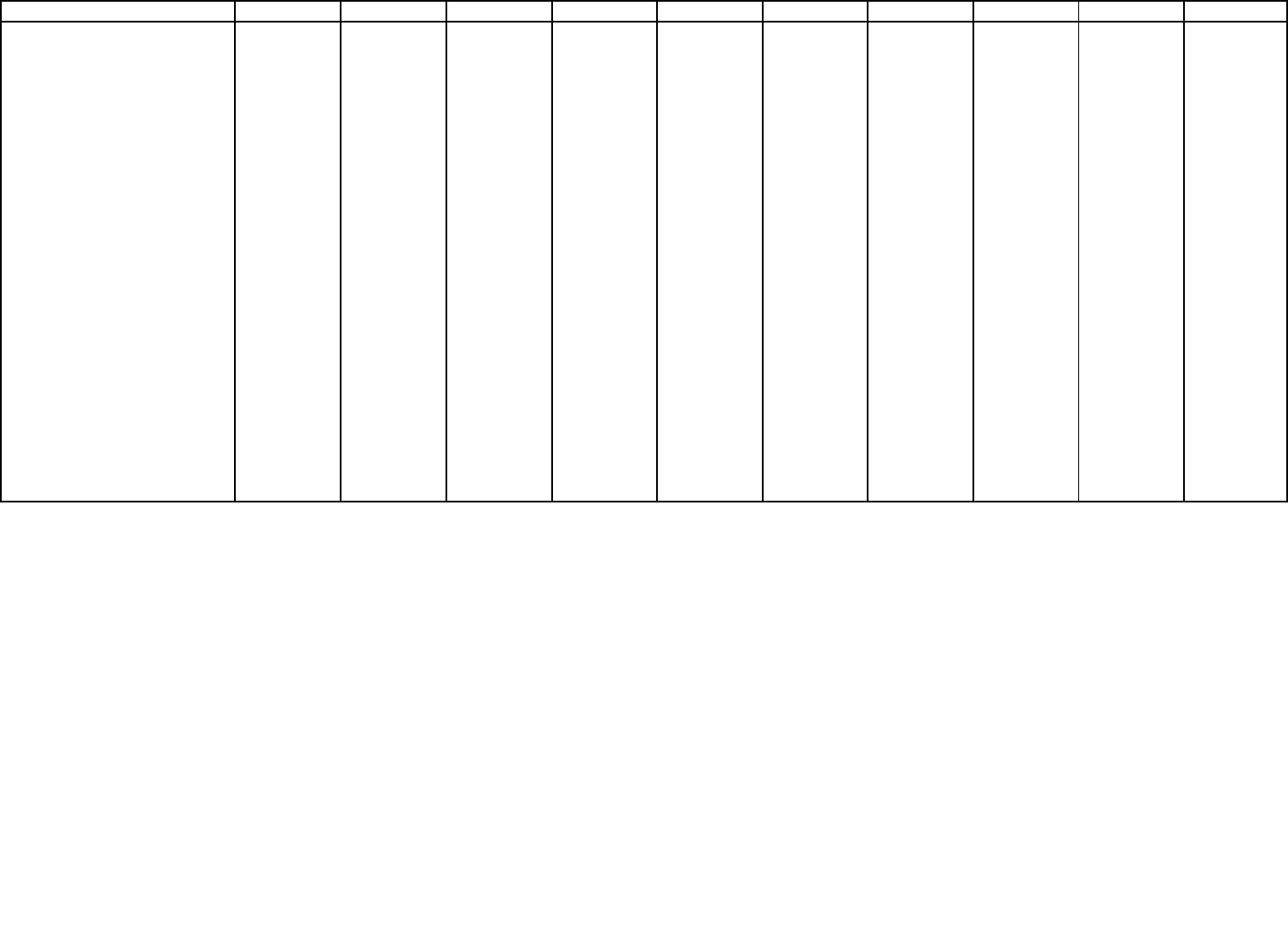
A-6
Table A.3B Types of Illicit Drug, Tobacco Product, Alcohol, and Other Substance Use in the Past Month: Among Young Adults Aged 18 to 25; 2002-2020
Substance 2002 2003 2004 2005 2006 2007 2008 2009 2010 2011
GENERAL SUBSTANCE USE
Illicit Drugs, Tobacco Products, or Alcohol nc nc nc nc nc nc nc nc nc nc
Illicit Drugs or Alcohol nc nc nc nc nc nc nc nc nc nc
Tobacco Products or Alcohol 70.3 (0.48) 70.7 (0.46) 70.2 (0.48) 70.1 (0.49) 71.0 (0.47) 69.9 (0.47) 69.7 (0.47) 70.4 (0.49) 70.2 (0.46) 69.6 (0.48)
ILLICIT DRUGS nc nc nc nc nc nc nc nc nc nc
TOBACCO PRODUCTS OR NICOTINE
VAPING -- -- -- -- -- -- -- -- -- --
Tobacco Products 45.3 (0.48) 44.8 (0.48) 44.6 (0.50) 44.3 (0.48) 44.0 (0.49) 41.9 (0.50) 41.4 (0.47) 41.6 (0.50) 40.9 (0.49) 39.5 (0.49)
Cigarettes 40.8 (0.48) 40.2 (0.47) 39.5 (0.49) 39.0 (0.47) 38.5 (0.48) 36.2 (0.49) 35.7 (0.45) 35.8 (0.48) 34.3 (0.47) 33.5 (0.47)
Daily Cigarette Smoking
1
51.8 (0.72) 52.7 (0.69) 51.6 (0.72) 50.1 (0.73) 48.8 (0.77) 49.2 (0.76) 47.8 (0.81) 45.3 (0.80) 45.8 (0.80) 45.3 (0.86)
Smoked 1+ Packs of
Cigarettes per Day
2
39.1 (0.93) 37.1 (0.88) 34.9 (0.86) 36.9 (0.93) 34.4 (0.93) 32.9 (0.92) 31.6 (0.91) 29.5 (0.92) 27.3 (0.94) 26.1 (0.97)
Smokeless Tobacco nc nc nc nc nc nc nc nc nc nc
Cigars 11.0 (0.27) 11.4 (0.26) 12.7 (0.30) 12.0 (0.28) 12.1 (0.29) 11.9 (0.28) 11.4 (0.29) 11.5 (0.29) 11.3 (0.30) 10.9 (0.29)
Pipe Tobacco 1.1 (0.08) 0.9 (0.08) 1.2 (0.09) 1.5 (0.11) 1.3 (0.10) 1.2 (0.10) 1.4 (0.10) 1.8 (0.12) 1.8 (0.12) 1.9 (0.14)
Nicotine Vaping -- -- -- -- -- -- -- -- -- --
ALCOHOL 60.5 (0.53) 61.4 (0.50) 60.5 (0.51) 60.9 (0.51) 62.0 (0.51) 61.3 (0.52) 61.1 (0.49) 61.8 (0.52) 61.4 (0.50) 60.7 (0.54)
Binge Alcohol Use nc nc nc nc nc nc nc nc nc nc
Heavy Alcohol Use nc nc nc nc nc nc nc nc nc nc
OTHER SUBSTANCE USE
GHB -- -- -- -- 0.0 (0.01) 0.1 (0.03) 0.0 (0.01) 0.0 (0.01) 0.0 (0.01) 0.0 (0.01)
Nonprescription Cough or Cold Medicine -- -- -- -- 0.3 (0.05) 0.4 (0.06) 0.3 (0.05) 0.4 (0.05) 0.4 (0.06) 0.3 (0.04)
Kratom -- -- -- -- -- -- -- -- -- --
Synthetic Marijuana (Fake Weed, K2,
Spice) -- -- -- -- -- -- -- -- -- --
Synthetic Stimulants (“Bath Salts,” Flakka) -- -- -- -- -- -- -- -- -- --
NOTE: Footnotes and source information are shown at the end of the second half of this table.
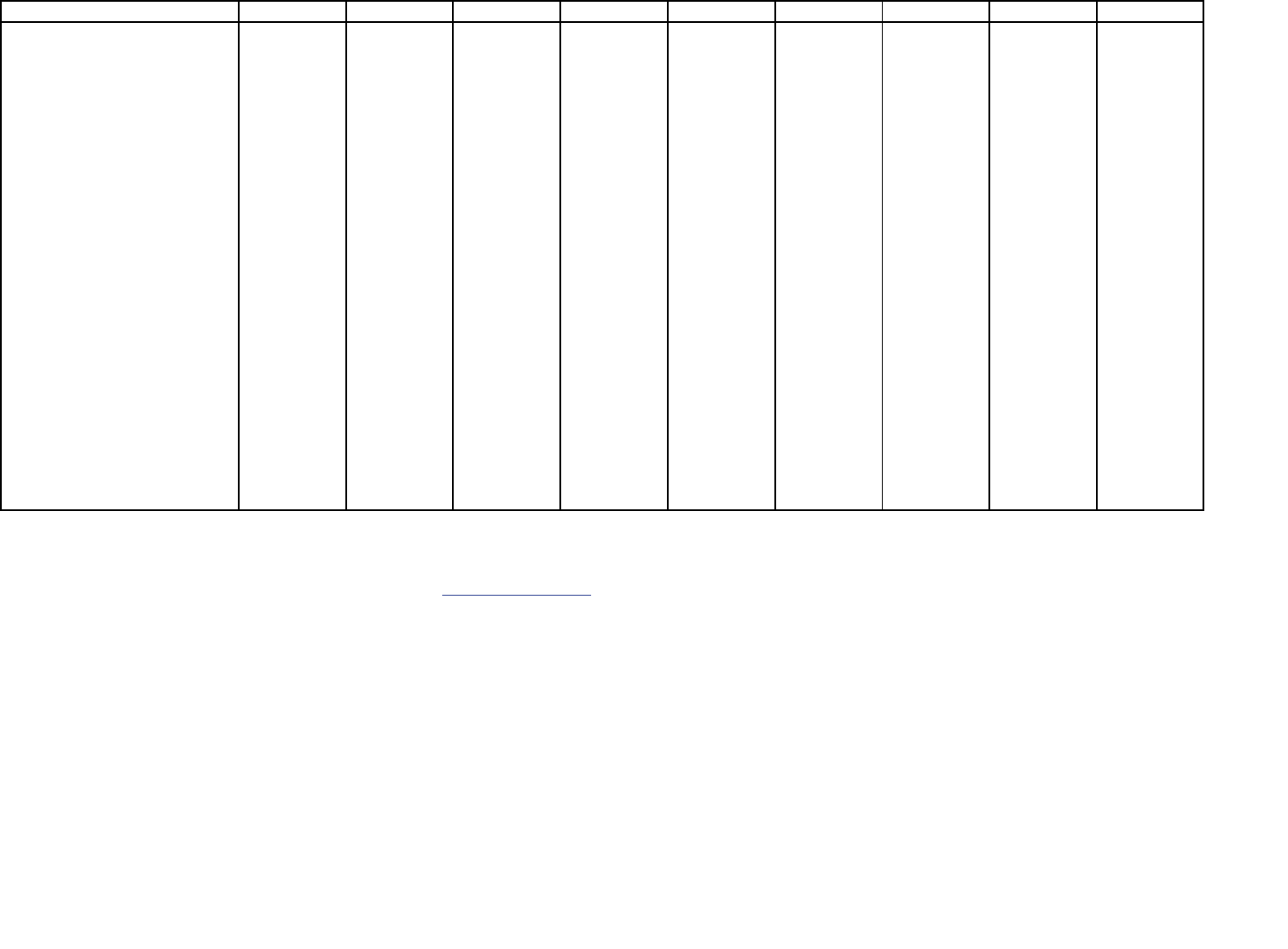
A-7
Table A.3B Types of Illicit Drug, Tobacco Product, Alcohol, and Other Substance Use in the Past Month: Among Young Adults Aged 18 to 25; 2002-2020 (continued)
Substance 2012 2013 2014 2015 2016 2017 2018 2019 2020
GENERAL SUBSTANCE USE
Illicit Drugs, Tobacco Products, or Alcohol nc nc nc 67.9 (0.49) 66.8 (0.51) 65.8 (0.56) 64.4 (0.52) 64.0 (0.54) 59.7 (1.03)
Illicit Drugs or Alcohol nc nc nc 61.9 (0.52) 61.5 (0.53) 60.9 (0.59) 59.9 (0.55) 59.8 (0.56) 56.9 (1.05)
Tobacco Products or Alcohol 69.0 (0.46) 67.9 (0.49) 67.6 (0.53) 66.3 (0.49) 64.6 (0.52) 63.7 (0.56) 61.8 (0.53) 60.8 (0.56) 56.6 (1.02)
ILLICIT DRUGS nc nc nc 22.3 (0.42) 23.2 (0.43) 24.2 (0.47) 23.9 (0.48) 24.9 (0.45) 23.9 (0.84)
TOBACCO PRODUCTS OR NICOTINE
VAPING -- -- -- -- -- -- -- -- 25.1 (0.83)
Tobacco Products 38.1 (0.47) 37.0 (0.49) 35.0 (0.54) 33.0 (0.48) 30.0 (0.48) 29.1 (0.48) 25.8 (0.43) 24.3 (0.45) 19.2 (0.74)
Cigarettes 31.8 (0.47) 30.6 (0.46) 28.4 (0.53) 26.7 (0.46) 23.5 (0.47) 22.3 (0.44) 19.1 (0.39) 17.5 (0.40) 13.9 (0.64)
Daily Cigarette Smoking
1
45.1 (0.88) 43.1 (0.83) 43.0 (0.91) 42.0 (1.02) 39.9 (1.03) 38.4 (1.02) 37.4 (1.11) 35.4 (1.13) 33.1 (2.24)
Smoked 1+ Packs of
Cigarettes per Day
2
25.1 (0.90) 22.3 (0.90) 22.5 (1.16) 22.5 (1.11) 26.2 (1.42) 25.0 (1.45) 23.4 (1.49) 25.0 (1.60) 20.8 (3.03)
Smokeless Tobacco nc nc nc 5.4 (0.22) 5.2 (0.22) 4.8 (0.21) 4.4 (0.19) 4.9 (0.22) 3.9 (0.38)
Cigars 10.7 (0.27) 10.0 (0.29) 9.7 (0.30) 8.9 (0.27) 8.8 (0.27) 9.1 (0.29) 8.6 (0.27) 7.7 (0.26) 5.9 (0.46)
Pipe Tobacco 1.8 (0.11) 2.2 (0.14) 1.9 (0.13) 1.8 (0.13) 1.7 (0.12) 1.6 (0.14) 1.8 (0.14) 1.2 (0.11) 1.2 (0.18)
Nicotine Vaping -- -- -- -- -- -- -- -- 11.7 (0.57)
ALCOHOL 60.2 (0.49) 59.6 (0.53) 59.6 (0.56) 58.3 (0.53) 57.1 (0.55) 56.3 (0.60) 55.1 (0.57) 54.3 (0.58) 51.5 (1.04)
Binge Alcohol Use nc nc nc 39.0 (0.51) 38.4 (0.54) 36.9 (0.57) 34.9 (0.51) 34.3 (0.54) 31.4 (0.95)
Heavy Alcohol Use nc nc nc 10.9 (0.33) 10.1 (0.32) 9.6 (0.34) 9.0 (0.34) 8.4 (0.29) 8.6 (0.54)
OTHER SUBSTANCE USE
GHB 0.0 (0.02) 0.0 (0.01) * (*) 0.0 (0.01) 0.0 (0.02) * (*) * (*) 0.0 (0.02) * (*)
Nonprescription Cough or Cold Medicine 0.3 (0.07) 0.3 (0.05) 0.3 (0.06) 0.4 (0.06) 0.3 (0.06) 0.2 (0.04) 0.4 (0.07) 0.4 (0.07) 0.3 (0.10)
Kratom -- -- -- -- -- -- -- 0.5 (0.07) 0.2 (0.07)
Synthetic Marijuana (Fake Weed, K2,
Spice) -- -- -- -- -- -- -- -- 0.5 (0.17)
Synthetic Stimulants (“Bath Salts,” Flakka) -- -- -- -- -- -- -- -- 0.0 (0.02)
* = low precision; -- = not available; nc = not comparable due to methodological changes.
NOTE: Estimates shown are percentages with standard errors included in parentheses.
NOTE: Estimates in the 2020 column are italicized to indicate caution should be used when comparing estimates between 2020 and prior years because of methodological changes for 2020. Due to these changes, significance testing between 2020 and prior years was
not performed. See the 2020 National Survey on Drug Use and Health: Methodological Summary and Definitions for details.
NOTE: Additional estimates may be found in the detailed tables for the 2020 NSDUH at https://www.samhsa.gov/data/
. Measures and terms are defined in Appendix A of the 2020 detailed tables.
NOTE: Estimates of 0.0 percent round to less than 0.1 percent when shown to the nearest tenth of a percent.
1
Percentages for daily cigarette smoking are among past month cigarette smokers.
2
Percentages for smoking one or more packs of cigarettes per day are among daily cigarette smokers in the past month. Respondents with missing data for the number of cigarettes smoked per day were excluded from the analysis.
Source:
SAMHSA, Center for Behavioral Health Statistics and Quality, National Survey on Drug Use and Health, 2002-2019 and Quarters 1 and 4, 2020.
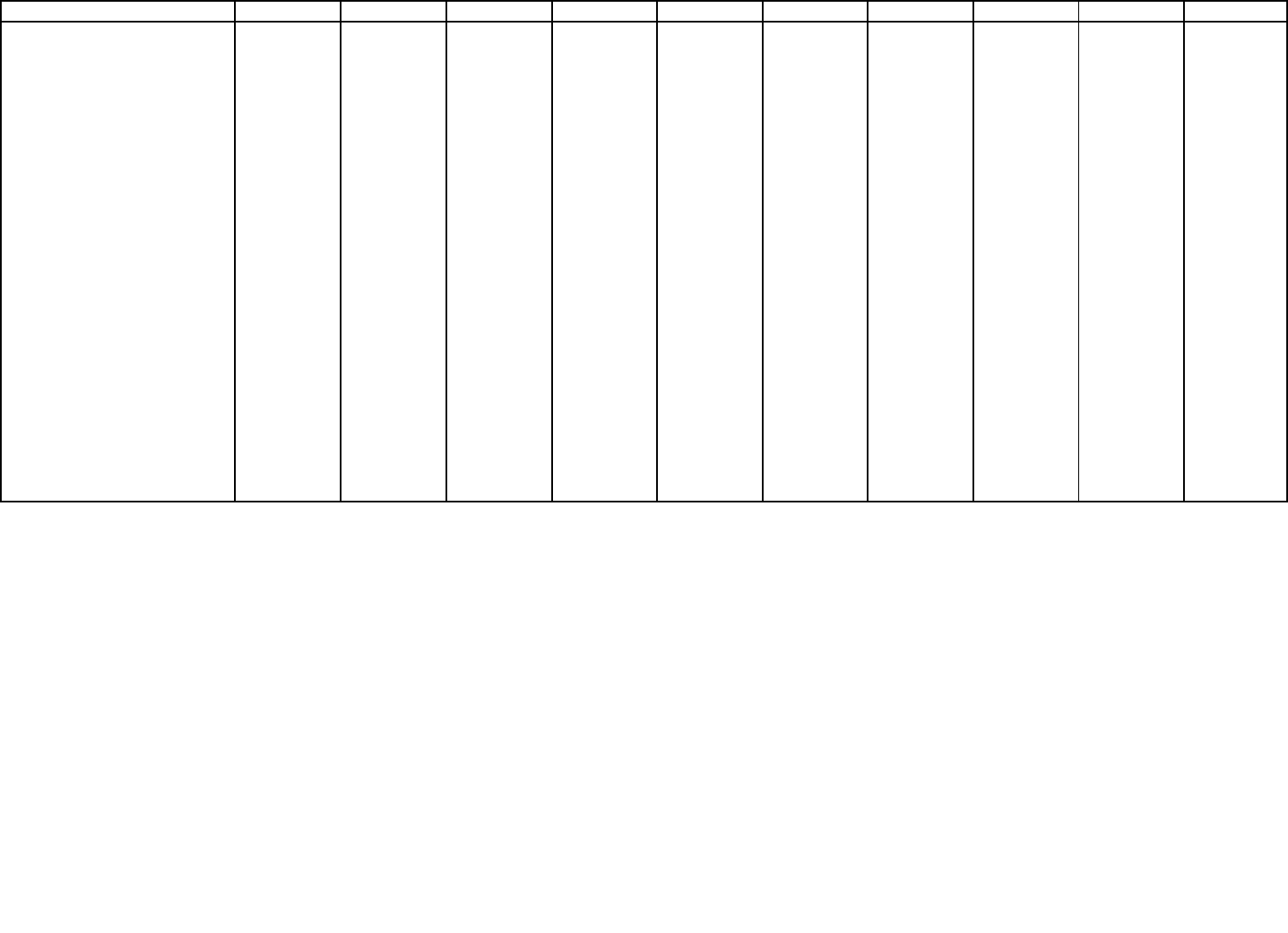
A-8
Table A.4B Types of Illicit Drug, Tobacco Product, Alcohol, and Other Substance Use in the Past Month: Among Adults Aged 26 or Older; 2002-2020
Substance 2002 2003 2004 2005 2006 2007 2008 2009 2010 2011
GENERAL SUBSTANCE USE
Illicit Drugs, Tobacco Products, or Alcohol nc nc nc nc nc nc nc nc nc nc
Illicit Drugs or Alcohol nc nc nc nc nc nc nc nc nc nc
Tobacco Products or Alcohol 64.5 (0.51) 63.2 (0.47) 62.7 (0.51) 64.9 (0.49) 64.2 (0.48) 64.1 (0.47) 64.3 (0.48) 64.1 (0.45) 64.6 (0.48) 64.1 (0.48)
ILLICIT DRUGS nc nc nc nc nc nc nc nc nc nc
TOBACCO PRODUCTS OR NICOTINE
VAPING -- -- -- -- -- -- -- -- -- --
Tobacco Products 29.9 (0.44) 29.3 (0.41) 28.5 (0.41) 29.0 (0.43) 29.4 (0.43) 28.6 (0.42) 28.4 (0.44) 27.3 (0.40) 27.2 (0.42) 26.3 (0.41)
Cigarettes 25.2 (0.42) 24.7 (0.41) 24.1 (0.39) 24.3 (0.39) 24.7 (0.40) 24.1 (0.40) 23.8 (0.41) 23.0 (0.39) 22.8 (0.38) 21.9 (0.39)
Daily Cigarette Smoking
1
68.8 (0.87) 68.0 (0.86) 67.8 (0.80) 68.9 (0.79) 67.9 (0.74) 66.3 (0.83) 67.0 (0.86) 67.2 (0.84) 64.8 (0.86) 66.5 (0.88)
Smoked 1+ Packs of
Cigarettes per Day
2
57.1 (1.12) 58.0 (0.99) 59.2 (1.05) 55.1 (1.02) 54.5 (1.00) 55.1 (1.06) 53.0 (1.10) 49.4 (1.16) 48.8 (1.09) 47.4 (1.05)
Smokeless Tobacco nc nc nc nc nc nc nc nc nc nc
Cigars 4.6 (0.18) 4.5 (0.18) 4.6 (0.17) 4.7 (0.18) 4.6 (0.18) 4.4 (0.16) 4.4 (0.18) 4.4 (0.18) 4.4 (0.17) 4.2 (0.18)
Pipe Tobacco 0.8 (0.09) 0.6 (0.07) 0.7 (0.08) 0.8 (0.08) 0.9 (0.09) 0.8 (0.09) 0.6 (0.07) 0.7 (0.07) 0.7 (0.07) 0.7 (0.07)
Nicotine Vaping -- -- -- -- -- -- -- -- -- --
ALCOHOL 53.9 (0.53) 52.5 (0.49) 53.0 (0.51) 55.1 (0.51) 53.7 (0.49) 54.1 (0.52) 54.7 (0.50) 54.9 (0.48) 54.9 (0.48) 55.1 (0.49)
Binge Alcohol Use nc nc nc nc nc nc nc nc nc nc
Heavy Alcohol Use nc nc nc nc nc nc nc nc nc nc
OTHER SUBSTANCE USE
GHB -- -- -- -- 0.0 (0.01) * (*) 0.0 (0.01) * (*) 0.0 (0.01) 0.0 (0.01)
Nonprescription Cough or Cold Medicine -- -- -- -- 0.1 (0.02) 0.1 (0.02) 0.1 (0.03) 0.1 (0.03) 0.1 (0.03) 0.1 (0.03)
Kratom -- -- -- -- -- -- -- -- -- --
Synthetic Marijuana (Fake Weed, K2,
Spice) -- -- -- -- -- -- -- -- -- --
Synthetic Stimulants (“Bath Salts,” Flakka) -- -- -- -- -- -- -- -- -- --
NOTE: Footnotes and source information are shown at the end of the second half of this table.

A-9
Table A.4B Types of Illicit Drug, Tobacco Product, Alcohol, and Other Substance Use in the Past Month: Among Adults Aged 26 or Older; 2002-2020 (continued)
Substance 2012 2013 2014 2015 2016 2017 2018 2019 2020
GENERAL SUBSTANCE USE
Illicit Drugs, Tobacco Products, or Alcohol nc nc nc 65.2 (0.36) 64.5 (0.36) 65.3 (0.38) 64.9 (0.40) 64.6 (0.39) 63.8 (0.60)
Illicit Drugs or Alcohol nc nc nc 57.6 (0.37) 56.8 (0.39) 58.0 (0.39) 57.6 (0.43) 57.9 (0.40) 57.9 (0.61)
Tobacco Products or Alcohol 65.1 (0.45) 65.0 (0.47) 65.5 (0.36) 64.4 (0.36) 63.5 (0.36) 64.3 (0.38) 63.9 (0.40) 63.3 (0.39) 62.4 (0.60)
ILLICIT DRUGS nc nc nc 8.2 (0.19) 8.9 (0.21) 9.5 (0.22) 10.1 (0.24) 11.6 (0.23) 12.6 (0.37)
TOBACCO PRODUCTS OR NICOTINE
VAPING -- -- -- -- -- -- -- -- 21.6 (0.50)
Tobacco Products 27.0 (0.42) 25.7 (0.40) 25.8 (0.33) 24.5 (0.32) 24.6 (0.33) 23.4 (0.31) 22.8 (0.33) 22.6 (0.30) 20.4 (0.50)
Cigarettes 22.4 (0.40) 21.6 (0.38) 21.5 (0.32) 20.0 (0.31) 20.2 (0.31) 18.9 (0.30) 18.5 (0.30) 18.2 (0.28) 16.7 (0.47)
Daily Cigarette Smoking
1
66.0 (0.85) 64.9 (0.88) 63.3 (0.72) 62.7 (0.76) 62.2 (0.75) 61.5 (0.79) 62.3 (0.79) 62.5 (0.79) 64.1 (1.36)
Smoked 1+ Packs of
Cigarettes per Day
2
45.2 (1.09) 44.7 (1.15) 43.3 (0.93) 44.1 (0.98) 43.1 (1.00) 43.2 (1.02) 41.4 (1.03) 42.0 (1.01) 38.9 (1.86)
Smokeless Tobacco nc nc nc 3.2 (0.13) 3.1 (0.12) 3.1 (0.11) 2.9 (0.11) 3.1 (0.11) 2.5 (0.17)
Cigars 4.5 (0.19) 4.1 (0.17) 3.9 (0.12) 4.3 (0.14) 4.2 (0.13) 4.2 (0.13) 4.1 (0.14) 4.0 (0.14) 3.9 (0.23)
Pipe Tobacco 0.9 (0.09) 0.7 (0.07) 0.7 (0.06) 0.8 (0.06) 0.7 (0.06) 0.8 (0.06) 0.7 (0.05) 0.7 (0.05) 0.6 (0.09)
Nicotine Vaping -- -- -- -- -- -- -- -- 2.4 (0.15)
ALCOHOL 55.6 (0.48) 55.9 (0.50) 56.5 (0.39) 55.6 (0.38) 54.6 (0.38) 55.8 (0.40) 55.3 (0.43) 55.0 (0.41) 54.6 (0.62)
Binge Alcohol Use nc nc nc 24.8 (0.32) 24.2 (0.32) 24.7 (0.32) 25.1 (0.31) 24.5 (0.31) 22.9 (0.49)
Heavy Alcohol Use nc nc nc 6.4 (0.17) 6.0 (0.17) 6.2 (0.16) 6.2 (0.17) 6.0 (0.17) 6.7 (0.28)
OTHER SUBSTANCE USE
GHB 0.0 (0.01) 0.0 (0.01) 0.0 (0.01) 0.0 (0.01) * (*) 0.0 (0.00) 0.0 (0.01) 0.0 (0.01) 0.0 (0.02)
Nonprescription Cough or Cold Medicine 0.1 (0.03) 0.1 (0.04) 0.1 (0.02) 0.1 (0.02) 0.2 (0.03) 0.2 (0.04) 0.2 (0.03) 0.3 (0.04) 0.3 (0.06)
Kratom -- -- -- -- -- -- -- 0.3 (0.04) 0.4 (0.07)
Synthetic Marijuana (Fake Weed, K2,
Spice) -- -- -- -- -- -- -- -- 0.1 (0.02)
Synthetic Stimulants (“Bath Salts,” Flakka) -- -- -- -- -- -- -- -- 0.0 (0.01)
* = low precision; -- = not available; nc = not comparable due to methodological changes.
NOTE: Estimates shown are percentages with standard errors included in parentheses.
NOTE: Estimates in the 2020 column are italicized to indicate caution should be used when comparing estimates between 2020 and prior years because of methodological changes for 2020. Due to these changes, significance testing between 2020 and prior years was
not performed. See the 2020 National Survey on Drug Use and Health: Methodological Summary and Definitions for details.
NOTE: Additional estimates may be found in the detailed tables for the 2020 NSDUH at https://www.samhsa.gov/data/
. Measures and terms are defined in Appendix A of the 2020 detailed tables.
NOTE: Estimates of 0.0 percent round to less than 0.1 percent when shown to the nearest tenth of a percent.
1
Percentages for daily cigarette smoking are among past month cigarette smokers.
2
Percentages for smoking one or more packs of cigarettes per day are among daily cigarette smokers in the past month. Respondents with missing data for the number of cigarettes smoked per day were excluded from the analysis.
Source:
SAMHSA, Center for Behavioral Health Statistics and Quality, National Survey on Drug Use and Health, 2002-2019 and Quarters 1 and 4, 2020.

A-10
Table A.5B Type of Nicotine Product Use: Among Past Month Nicotine Product Users Aged 12 or Older; by Age Group, 2020
Nicotine Product Use
1
Total 12 to 17 18 to 25 26 or Older
Only Nicotine Vaping
2
9.7 (0.47) 63.1 (3.54) 23.6 (1.42) 5.4 (0.46)
Nicotine Vaping and Tobacco Products
2,3
8.5 (0.48) 15.7 (2.24) 22.9 (1.41) 5.7 (0.49)
Nicotine Vaping and Only Cigarettes
2
4.7 (0.35) 7.7 (1.84) 10.6 (1.08) 3.5 (0.36)
Nicotine Vaping, Cigarettes, and Noncigarette Tobacco Products
2,4
2.1 (0.25) 3.5 (0.95) 6.4 (0.83) 1.3 (0.27)
Nicotine Vaping and Only Noncigarette Tobacco Products
2,4
1.7 (0.22) 4.4 (1.24) 5.9 (0.83) 0.9 (0.21)
Only Tobacco Products
3
81.8 (0.70) 21.2 (2.95) 53.4 (1.72) 88.9 (0.67)
NOTE: Estimates shown are percentages with standard errors included in parentheses. Percentages for only nicotine vaping, nicotine vaping and tobacco products, and only tobacco products in an age group category
may not add to 100 percent due to rounding.
NOTE:
Additional estimates may be found in the detailed tables for the 2020 NSDUH at https://www.samhsa.gov/data/. Measures and terms are defined in Appendix A of the 2020 detailed tables.
1
Nicotine product use refers to the use of tobacco or nicotine vaping.
2
Nicotine vaping refers to the use of an e-cigarette or other vaping device to vape nicotine or tobacco.
3
Tobacco products include cigarettes, smokeless tobacco (such as snuff, dip, chewing tobacco, or snus), cigars, or pipe tobacco. Use of any tobacco product does not include nicotine vaping because people could have
used a vaping device to vape nicotine-containing products other than tobacco.
4
Noncigarette tobacco products include smokeless tobacco (such as snuff, dip, chewing tobacco, or snus), cigars, or pipe tobacco.
Source:
SAMHSA, Center for Behavioral Health Statistics and Quality, National Survey on Drug Use and Health, Quarters 1 and 4, 2020.
Table A.6B Type of Tobacco Product Use: Among Past Month Tobacco Users Aged 12 or Older; by Age Group, 2020
Tobacco Product Use
1
Total 12 to 17 18 to 25 26 or Older
Only Cigarettes 65.3 (1.10) * (*) 49.3 (2.03) 68.0 (1.24)
Cigarettes and Noncigarette Tobacco Products
2
14.8 (0.81) 22.7 (4.94) 23.2 (1.68) 13.4 (0.90)
Only Noncigarette Tobacco Products
2
19.9 (0.88) * (*) 27.6 (1.96) 18.5 (0.98)
* = low precision.
NOTE:
Estimates shown are percentages with standard errors included in parentheses. Percentages in an age group category may not add to 100 percent due to rounding.
NOTE:
Additional estimates may be found in the detailed tables for the 2020 NSDUH at https://www.samhsa.gov/data/. Measures and terms are defined in Appendix A of the 2020 detailed tables.
1
Tobacco products include cigarettes, smokeless tobacco (such as snuff, dip, chewing tobacco, or snus), cigars, or pipe tobacco. Use of any tobacco product does not include nicotine vaping because people could have
used a vaping device to vape nicotine-containing products other than tobacco.
2
Noncigarette tobacco products include smokeless tobacco (such as snuff, dip, chewing tobacco, or snus), cigars, or pipe tobacco.
Source:
SAMHSA, Center for Behavioral Health Statistics and Quality, National Survey on Drug Use and Health, Quarters 1 and 4, 2020.
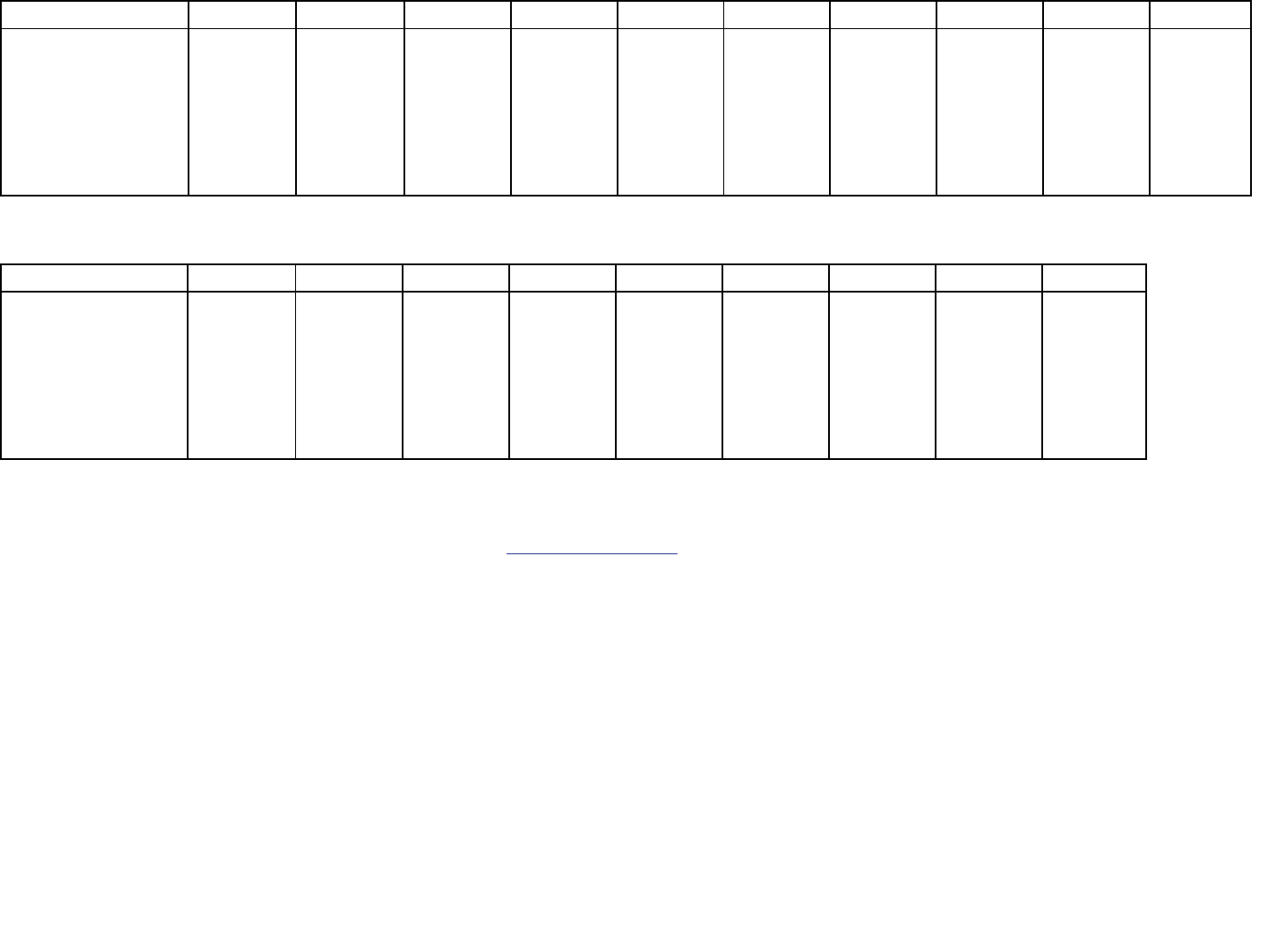
A-11
Table A.7B Nicotine Product
1
and Alcohol Use in the Past Month: Among People Aged 12 to 20; 2002-2020
Substance 2002 2003 2004 2005 2006 2007 2008 2009 2010 2011
TOBACCO PRODUCTS OR
NICOTINE VAPING -- -- -- -- -- -- -- -- -- --
Tobacco Products
2
24.7 (0.35) 23.9 (0.36) 23.8 (0.36) 22.8 (0.34) 22.5 (0.35) 21.6 (0.34) 21.3 (0.32) 21.6 (0.36) 21.0 (0.35) 19.6 (0.35)
Cigarettes 21.6 (0.33) 20.8 (0.34) 20.3 (0.34) 19.2 (0.32) 18.9 (0.33) 17.7 (0.32) 17.6 (0.30) 17.6 (0.33) 16.9 (0.33) 16.1 (0.33)
Nicotine Vaping
3
-- -- -- -- -- -- -- -- -- --
ALCOHOL 28.8 (0.39) 29.0 (0.41) 28.7 (0.39) 28.2 (0.41) 28.4 (0.42) 28.0 (0.46) 26.5 (0.40) 27.2 (0.43) 26.2 (0.41) 25.1 (0.47)
Binge Alcohol Use nc nc nc nc nc nc nc nc nc nc
Heavy Alcohol Use
nc nc nc nc nc nc nc nc nc nc
NOTE: Footnotes and source information are shown at the end of the second half of this table.
Table A.7B Nicotine Product
1
and Alcohol Use in the Past Month: Among People Aged 12 to 20; 2002-2020 (continued)
Substance 2012 2013 2014 2015 2016 2017 2018 2019 2020
TOBACCO PRODUCTS OR
NICOTINE VAPING -- -- -- -- -- -- -- -- 11.8 (0.61)
Tobacco Products
2
17.8 (0.35) 16.9 (0.33) 15.3 (0.34) 13.7 (0.33) 12.3 (0.31) 11.4 (0.30) 10.1 (0.27) 9.1 (0.27) 6.7 (0.47)
Cigarettes 14.1 (0.32) 13.0 (0.31) 11.5 (0.30) 10.2 (0.30) 8.6 (0.28) 8.0 (0.25) 6.8 (0.22) 6.0 (0.22) 4.1 (0.33)
Nicotine Vaping
3
-- -- -- -- -- -- -- -- 7.7 (0.46)
ALCOHOL 24.3 (0.48) 22.7 (0.40) 22.8 (0.46) 20.3 (0.42) 19.3 (0.45) 19.7 (0.47) 18.8 (0.42) 18.5 (0.45) 16.1 (0.72)
Binge Alcohol Use nc nc nc 13.4 (0.36) 12.1 (0.35) 11.9 (0.37) 11.4 (0.33) 11.1 (0.36) 9.2 (0.59)
Heavy Alcohol Use
nc nc nc 3.3 (0.20) 2.8 (0.17) 2.5 (0.18) 2.3 (0.16) 2.2 (0.14) 1.8 (0.25)
-- = not available; nc = not comparable due to methodological changes.
NOTE:
Estimates shown are percentages with standard errors included in parentheses.
NOTE:
Estimates in the 2020 column are italicized to indicate caution should be used when comparing estimates between 2020 and prior years because of methodological changes for 2020. Due to these changes, significance
testing between 2020 and prior years was not performed. See the 2020 National Survey on Drug Use and Health: Methodological Summary and Definitions for details.
NOTE:
Additional estimates may be found in the detailed tables for the 2020 NSDUH at https://www.samhsa.gov/data/. Measures and terms are defined in Appendix A of the 2020 detailed tables.
1
Nicotine product use refers to the use of tobacco or nicotine vaping.
2
Tobacco products include cigarettes, smokeless tobacco (such as snuff, dip, chewing tobacco, or snus), cigars, or pipe tobacco.
3
Nicotine vaping refers to the use of an e-cigarette or other vaping device to vape nicotine or tobacco.
Source: SAMHSA, Center for Behavioral Health Statistics and Quality, National Survey on Drug Use and Health, 2002-2019 and Quarters 1 and 4, 2020.
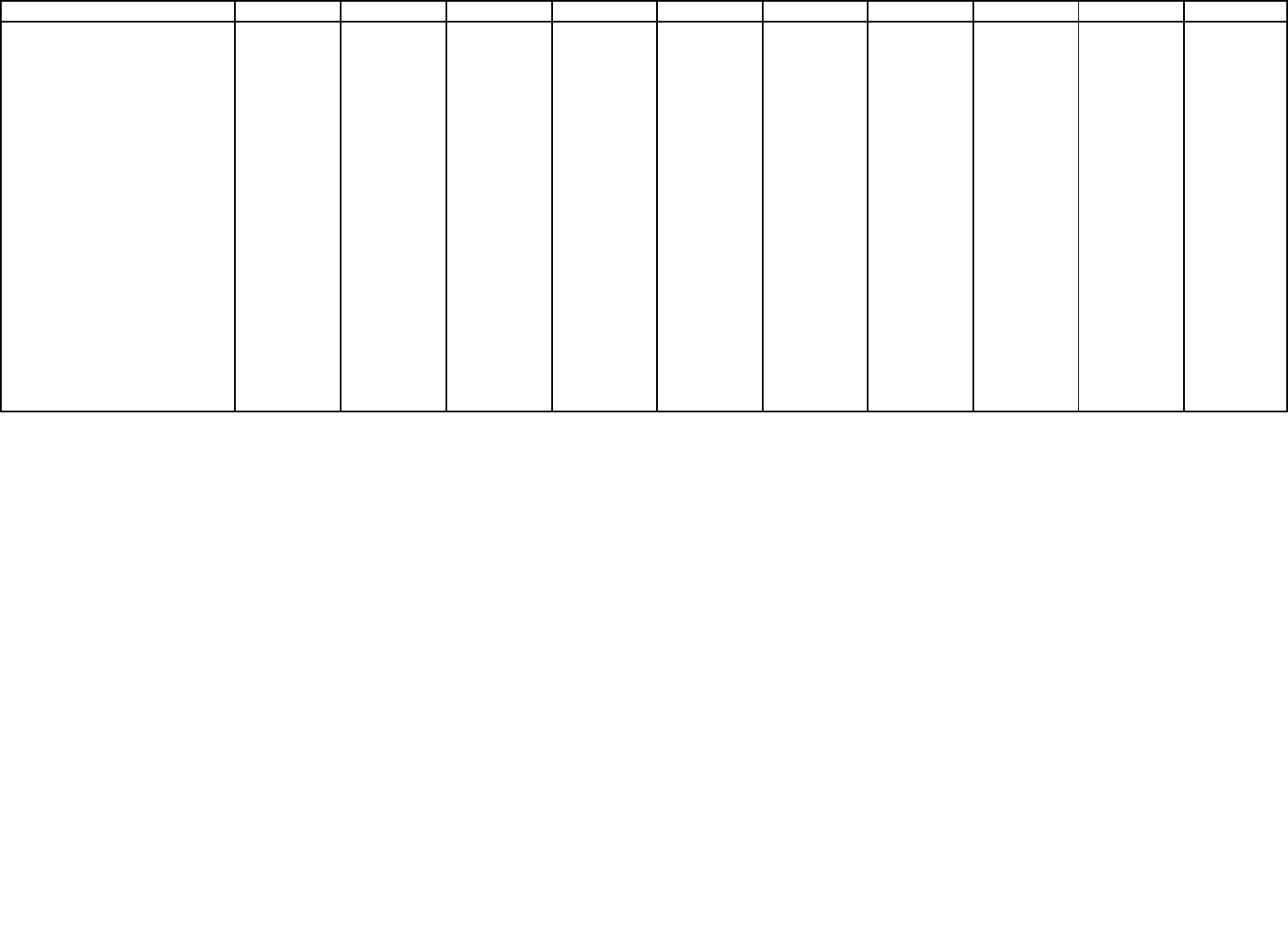
A-12
Table A.8B Types of Illicit Drug, Tobacco Product, Alcohol, and Other Substance Use in the Past Year: Among People Aged 12 or Older; 2002-2020
Substance 2002 2003 2004 2005 2006 2007 2008 2009 2010 2011
GENERAL SUBSTANCE USE
Illicit Drugs, Tobacco Products, or Alcohol nc nc nc nc nc nc nc nc nc nc
Illicit Drugs or Alcohol nc nc nc nc nc nc nc nc nc nc
Tobacco Products or Alcohol 72.5 (0.36) 71.5 (0.36) 71.1 (0.36) 72.8 (0.35) 72.2 (0.35) 71.8 (0.34) 72.0 (0.37) 72.3 (0.34) 72.3 (0.36) 71.8 (0.35)
ILLICIT DRUGS nc nc nc nc nc nc nc nc nc nc
TOBACCO PRODUCTS OR NICOTINE
VAPING -- -- -- -- -- -- -- -- -- --
Tobacco Products
1
36.0 (0.38) 35.1 (0.35) 34.5 (0.34) 34.9 (0.36) 35.0 (0.36) 34.3 (0.35) 33.8 (0.37) 33.2 (0.34) 32.9 (0.36) 31.8 (0.35)
Cigarettes 30.3 (0.36) 29.4 (0.34) 29.1 (0.33) 29.1 (0.34) 29.1 (0.34) 28.5 (0.34) 28.1 (0.34) 27.5 (0.33) 27.0 (0.33) 26.1 (0.33)
Smokeless Tobacco nc nc nc nc nc nc nc nc nc nc
Cigars 11.0 (0.21) 10.7 (0.19) 10.8 (0.19) 11.1 (0.20) 10.9 (0.19) 10.8 (0.20) 10.5 (0.20) 10.6 (0.20) 10.3 (0.20) 9.7 (0.20)
Pipe Tobacco
1
-- -- -- -- -- -- -- -- -- --
Nicotine Vaping -- -- -- -- -- -- -- -- -- --
ALCOHOL 66.1 (0.39) 65.0 (0.37) 65.1 (0.37) 66.5 (0.38) 66.0 (0.37) 65.8 (0.39) 66.0 (0.38) 66.8 (0.36) 66.4 (0.38) 66.2 (0.38)
OTHER SUBSTANCE USE
GHB -- -- -- -- 0.1 (0.01) 0.0 (0.01) 0.0 (0.01) 0.0 (0.01) 0.1 (0.02) 0.0 (0.01)
Nonprescription Cough or Cold Medicine -- -- -- -- 0.6 (0.04) 0.5 (0.03) 0.6 (0.04) 0.6 (0.04) 0.7 (0.06) 0.6 (0.04)
Kratom -- -- -- -- -- -- -- -- -- --
Synthetic Marijuana (Fake Weed, K2,
Spice) -- -- -- -- -- -- -- -- -- --
Synthetic Stimulants (“Bath Salts,” Flakka) -- -- -- -- -- -- -- -- -- --
NOTE: Footnotes and source information are shown at the end of the second half of this table.

A-13
Table A.8B Types of Illicit Drug, Tobacco Product, Alcohol, and Other Substance Use in the Past Year: Among People Aged 12 or Older; 2002-2020 (continued)
Substance 2012 2013 2014 2015 2016 2017 2018 2019 2020
GENERAL SUBSTANCE USE
Illicit Drugs, Tobacco Products, or Alcohol nc nc nc 72.5 (0.28) 71.5 (0.29) 72.3 (0.31) 72.1 (0.31) 71.8 (0.30) 70.3 (0.50)
Illicit Drugs or Alcohol nc nc nc 68.1 (0.29) 67.2 (0.31) 68.2 (0.33) 67.9 (0.34) 68.0 (0.32) 67.1 (0.51)
Tobacco Products or Alcohol 72.2 (0.34) 71.8 (0.36) 72.1 (0.30) 71.2 (0.28) 70.2 (0.29) 70.9 (0.31) 70.7 (0.31) 70.2 (0.30) 68.6 (0.51)
ILLICIT DRUGS nc nc nc 17.8 (0.23) 18.0 (0.23) 19.0 (0.24) 19.4 (0.26) 20.8 (0.27) 21.4 (0.39)
TOBACCO PRODUCTS OR NICOTINE
VAPING -- -- -- -- -- -- -- -- 25.6 (0.43)
Tobacco Products
1
31.9 (0.36) 30.8 (0.33) 30.6 (0.29) 29.2 (0.28) 28.5 (0.28) 27.5 (0.28) 26.7 (0.29) 26.2 (0.26) 23.3 (0.43)
Cigarettes 26.1 (0.34) 25.3 (0.32) 24.8 (0.28) 23.1 (0.27) 22.7 (0.27) 21.5 (0.27) 21.0 (0.27) 20.2 (0.24) 18.4 (0.39)
Smokeless Tobacco nc nc nc 4.7 (0.12) 4.4 (0.11) 4.3 (0.10) 4.0 (0.10) 4.2 (0.11) 3.3 (0.16)
Cigars 9.9 (0.20) 9.5 (0.19) 9.0 (0.15) 9.1 (0.16) 8.5 (0.14) 8.6 (0.15) 8.4 (0.16) 8.1 (0.15) 7.1 (0.23)
Pipe Tobacco
1
-- -- -- -- -- -- -- -- --
Nicotine Vaping -- -- -- -- -- -- -- -- 6.5 (0.20)
ALCOHOL 66.7 (0.37) 66.3 (0.38) 66.6 (0.31) 65.7 (0.30) 64.8 (0.30) 65.7 (0.34) 65.5 (0.35) 65.1 (0.32) 64.2 (0.52)
OTHER SUBSTANCE USE
GHB 0.1 (0.02) 0.0 (0.01) 0.1 (0.01) 0.1 (0.02) 0.0 (0.01) 0.0 (0.01) 0.0 (0.01) 0.1 (0.01) 0.1 (0.02)
Nonprescription Cough or Cold Medicine 0.5 (0.04) 0.6 (0.05) 0.5 (0.03) 0.6 (0.04) 0.6 (0.04) 0.6 (0.05) 0.6 (0.05) 0.7 (0.05) 0.9 (0.09)
Kratom -- -- -- -- -- -- -- 0.7 (0.04) 0.8 (0.08)
Synthetic Marijuana (Fake Weed, K2,
Spice) -- -- -- -- -- -- -- -- 0.4 (0.05)
Synthetic Stimulants (“Bath Salts,” Flakka) -- -- -- -- -- -- -- -- 0.0 (0.02)
-- = not available; nc = not comparable due to methodological changes.
NOTE: Estimates shown are percentages with standard errors included in parentheses.
NOTE: Estimates in the 2020 column are italicized to indicate caution should be used when comparing estimates between 2020 and prior years because of methodological changes for 2020. Due to these changes, significance testing between 2020 and prior years was
not performed. See the 2020 National Survey on Drug Use and Health: Methodological Summary and Definitions for details.
NOTE: Additional estimates may be found in the detailed tables for the 2020 NSDUH at https://www.samhsa.gov/data/
. Measures and terms are defined in Appendix A of the 2020 detailed tables.
NOTE: Estimates of 0.0 percent round to less than 0.1 percent when shown to the nearest tenth of a percent.
1
Information about past year use of pipe tobacco was not collected. Tobacco product use in the past year excludes past year pipe tobacco use, but includes past month pipe tobacco use.
Source: SAMHSA, Center for Behavioral Health Statistics and Quality, National Survey on Drug Use and Health, 2002-2019 and Quarters 1 and 4, 2020.
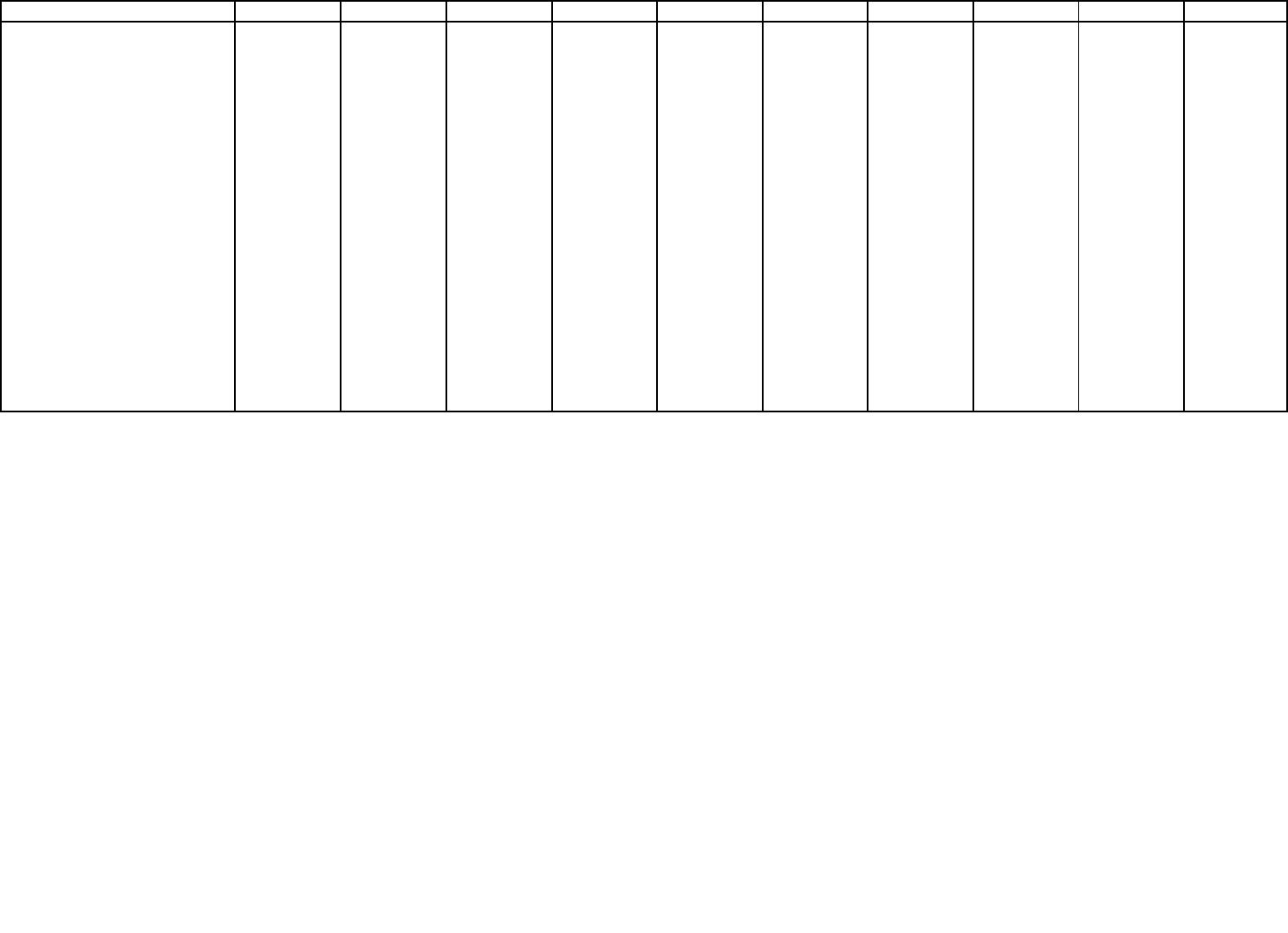
A-14
Table A.9B Types of Illicit Drug, Tobacco Product, Alcohol, and Other Substance Use in the Past Year: Among Adolescents Aged 12 to 17; 2002-2020
Substance 2002 2003 2004 2005 2006 2007 2008 2009 2010 2011
GENERAL SUBSTANCE USE
Illicit Drugs, Tobacco Products, or Alcohol nc nc nc nc nc nc nc nc nc nc
Illicit Drugs or Alcohol nc nc nc nc nc nc nc nc nc nc
Tobacco Products or Alcohol 39.9 (0.45) 39.2 (0.44) 38.6 (0.42) 37.9 (0.44) 37.4 (0.43) 36.2 (0.45) 35.1 (0.41) 35.0 (0.44) 33.1 (0.44) 31.8 (0.44)
ILLICIT DRUGS nc nc nc nc nc nc nc nc nc nc
TOBACCO PRODUCTS OR NICOTINE
VAPING -- -- -- -- -- -- -- -- -- --
Tobacco Products
1
23.6 (0.37) 22.5 (0.37) 22.1 (0.38) 21.2 (0.39) 20.9 (0.36) 19.8 (0.38) 19.1 (0.34) 19.5 (0.38) 18.1 (0.37) 16.8 (0.34)
Cigarettes 20.3 (0.35) 19.0 (0.36) 18.4 (0.35) 17.3 (0.36) 17.0 (0.35) 15.7 (0.34) 15.1 (0.32) 15.1 (0.34) 14.2 (0.34) 13.2 (0.31)
Smokeless Tobacco nc nc nc nc nc nc nc nc nc nc
Cigars 10.1 (0.26) 10.0 (0.26) 10.2 (0.27) 9.8 (0.27) 9.4 (0.25) 9.4 (0.26) 8.5 (0.24) 9.0 (0.25) 7.7 (0.22) 7.8 (0.24)
Pipe Tobacco
1
-- -- -- -- -- -- -- -- -- --
Nicotine Vaping -- -- -- -- -- -- -- -- -- --
ALCOHOL 34.6 (0.42) 34.3 (0.42) 33.9 (0.41) 33.3 (0.41) 33.0 (0.42) 31.9 (0.42) 31.0 (0.41) 30.5 (0.42) 28.7 (0.43) 27.8 (0.43)
OTHER SUBSTANCE USE
GHB -- -- -- -- 0.1 (0.02) 0.0 (0.01) 0.0 (0.01) 0.1 (0.02) 0.0 (0.01) 0.0 (0.02)
Nonprescription Cough or Cold Medicine -- -- -- -- 1.9 (0.12) 1.7 (0.12) 1.6 (0.10) 1.5 (0.10) 1.5 (0.11) 1.3 (0.10)
Kratom -- -- -- -- -- -- -- -- -- --
Synthetic Marijuana (Fake Weed, K2,
Spice) -- -- -- -- -- -- -- -- -- --
Synthetic Stimulants (“Bath Salts,” Flakka) -- -- -- -- -- -- -- -- -- --
NOTE: Footnotes and source information are shown at the end of the second half of this table.

A-15
Table A.9B Types of Illicit Drug, Tobacco Product, Alcohol, and Other Substance Use in the Past Year: Among Adolescents Aged 12 to 17; 2002-2020 (continued)
Substance 2012 2013 2014 2015 2016 2017 2018 2019 2020
GENERAL SUBSTANCE USE
Illicit Drugs, Tobacco Products, or Alcohol nc nc nc 29.9 (0.45) 28.7 (0.44) 29.0 (0.47) 28.2 (0.44) 28.6 (0.43) 23.6 (0.88)
Illicit Drugs or Alcohol nc nc nc 28.3 (0.44) 26.8 (0.43) 27.6 (0.46) 26.9 (0.44) 27.4 (0.43) 22.9 (0.85)
Tobacco Products or Alcohol 29.7 (0.44) 28.2 (0.43) 27.2 (0.44) 25.5 (0.44) 24.5 (0.44) 24.4 (0.45) 23.2 (0.43) 23.4 (0.42) 19.8 (0.86)
ILLICIT DRUGS nc nc nc 17.5 (0.37) 15.8 (0.35) 16.3 (0.37) 16.7 (0.37) 17.2 (0.36) 13.8 (0.67)
TOBACCO PRODUCTS OR NICOTINE
VAPING -- -- -- -- -- -- -- -- 12.0 (0.67)
Tobacco Products
1
15.2 (0.32) 13.9 (0.32) 12.7 (0.34) 11.6 (0.31) 10.5 (0.31) 9.7 (0.29) 8.3 (0.27) 8.3 (0.27) 5.6 (0.43)
Cigarettes 11.8 (0.29) 10.3 (0.27) 8.9 (0.29) 8.1 (0.27) 7.2 (0.26) 6.3 (0.24) 5.5 (0.23) 5.4 (0.22) 3.9 (0.35)
Smokeless Tobacco nc nc nc 3.5 (0.17) 3.0 (0.16) 3.0 (0.16) 2.5 (0.16) 2.5 (0.15) 1.4 (0.17)
Cigars 6.8 (0.22) 5.7 (0.20) 5.7 (0.23) 5.1 (0.21) 4.4 (0.19) 4.6 (0.20) 3.7 (0.18) 3.6 (0.19) 2.4 (0.27)
Pipe Tobacco
1
-- -- -- -- -- -- -- -- --
Nicotine Vaping -- -- -- -- -- -- -- -- 9.5 (0.60)
ALCOHOL 26.3 (0.42) 24.6 (0.40) 24.0 (0.42) 22.7 (0.42) 21.6 (0.42) 21.9 (0.43) 20.8 (0.42) 21.2 (0.42) 18.5 (0.83)
OTHER SUBSTANCE USE
GHB 0.1 (0.03) 0.0 (0.01) 0.0 (0.02) 0.0 (0.01) 0.0 (0.02) 0.0 (0.01) 0.0 (0.03) 0.0 (0.02) * (*)
Nonprescription Cough or Cold Medicine 1.3 (0.11) 1.1 (0.08) 1.1 (0.10) 1.0 (0.10) 1.0 (0.09) 1.0 (0.09) 1.0 (0.09) 0.9 (0.10) 0.9 (0.17)
Kratom -- -- -- -- -- -- -- 0.2 (0.05) 0.2 (0.09)
Synthetic Marijuana (Fake Weed, K2,
Spice) -- -- -- -- -- -- -- -- 0.8 (0.16)
Synthetic Stimulants (“Bath Salts,” Flakka) -- -- -- -- -- -- -- -- 0.0 (0.03)
* = low precision; -- = not available; nc = not comparable due to methodological changes.
NOTE: Estimates shown are percentages with standard errors included in parentheses.
NOTE: Estimates in the 2020 column are italicized to indicate caution should be used when comparing estimates between 2020 and prior years because of methodological changes for 2020. Due to these changes, significance testing between 2020 and prior years was
not performed. See the 2020 National Survey on Drug Use and Health: Methodological Summary and Definitions for details.
NOTE: Additional estimates may be found in the detailed tables for the 2020 NSDUH at https://www.samhsa.gov/data/
. Measures and terms are defined in Appendix A of the 2020 detailed tables.
NOTE: Estimates of 0.0 percent round to less than 0.1 percent when shown to the nearest tenth of a percent.
1
Information about past year use of pipe tobacco was not collected. Tobacco product use in the past year excludes past year pipe tobacco use, but includes past month pipe tobacco use.
Source: SAMHSA, Center for Behavioral Health Statistics and Quality, National Survey on Drug Use and Health, 2002-2019 and Quarters 1 and 4, 2020.
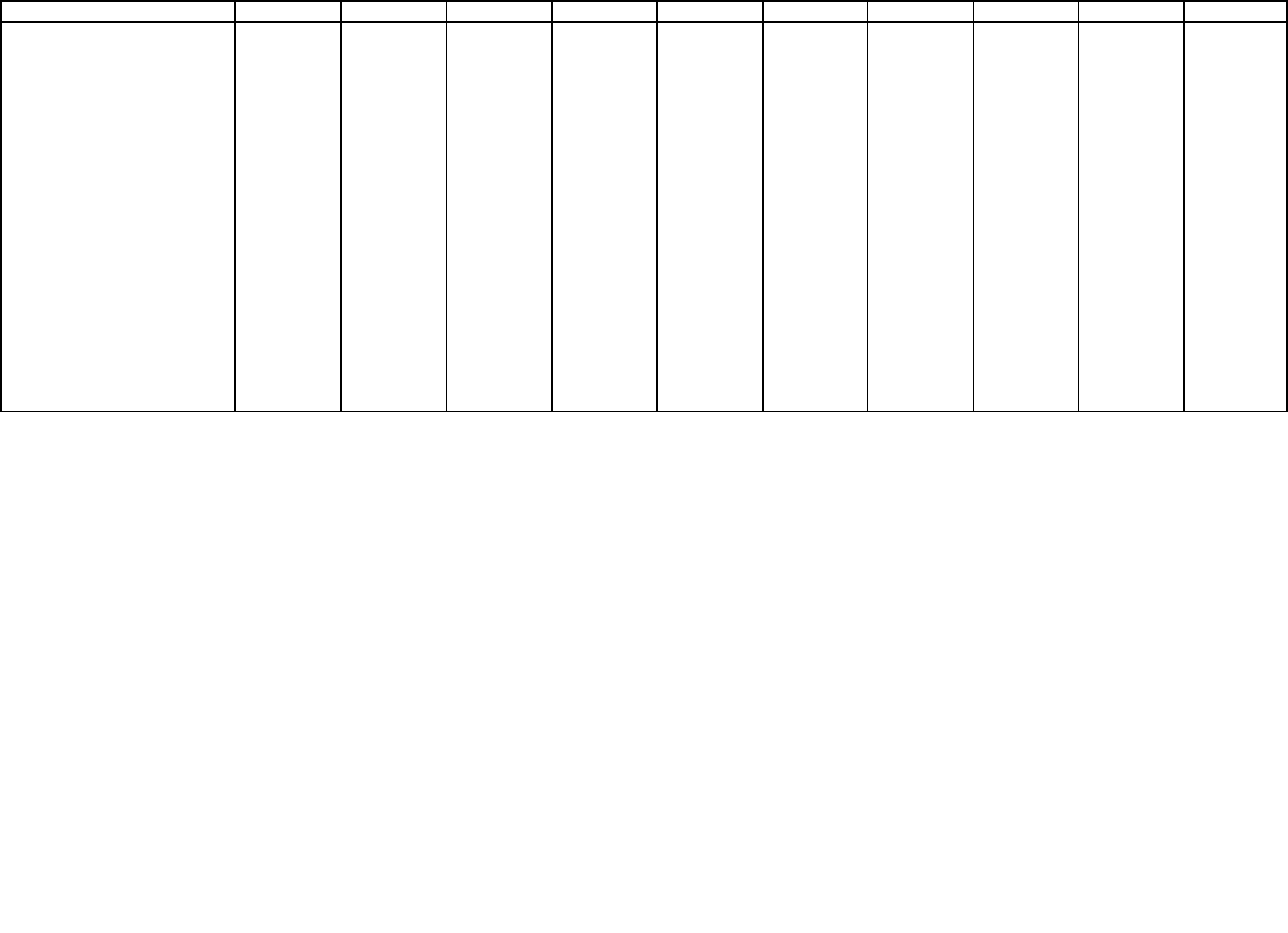
A-16
Table A.10B Types of Illicit Drug, Tobacco Product, Alcohol, and Other Substance Use in the Past Year: Among Young Adults Aged 18 to 25; 2002-2020
Substance 2002 2003 2004 2005 2006 2007 2008 2009 2010 2011
GENERAL SUBSTANCE USE
Illicit Drugs, Tobacco Products, or Alcohol nc nc nc nc nc nc nc nc nc nc
Illicit Drugs or Alcohol nc nc nc nc nc nc nc nc nc nc
Tobacco Products or Alcohol 82.4 (0.38) 82.7 (0.36) 82.8 (0.41) 82.6 (0.40) 83.2 (0.38) 82.4 (0.41) 82.8 (0.40) 82.9 (0.39) 83.1 (0.37) 82.0 (0.39)
ILLICIT DRUGS nc nc nc nc nc nc nc nc nc nc
TOBACCO PRODUCTS OR NICOTINE
VAPING -- -- -- -- -- -- -- -- -- --
Tobacco Products
1
54.9 (0.50) 53.8 (0.48) 54.3 (0.50) 54.3 (0.48) 54.0 (0.49) 52.4 (0.49) 52.4 (0.50) 52.4 (0.50) 51.3 (0.50) 50.0 (0.50)
Cigarettes 49.0 (0.50) 47.6 (0.46) 47.5 (0.52) 47.2 (0.48) 47.0 (0.48) 45.2 (0.49) 45.1 (0.48) 45.3 (0.51) 43.2 (0.50) 42.3 (0.50)
Smokeless Tobacco nc nc nc nc nc nc nc nc nc nc
Cigars 22.7 (0.36) 22.7 (0.36) 24.0 (0.38) 24.2 (0.38) 24.2 (0.40) 23.7 (0.38) 23.1 (0.38) 23.5 (0.41) 22.7 (0.39) 22.1 (0.41)
Pipe Tobacco
1
-- -- -- -- -- -- -- -- -- --
Nicotine Vaping -- -- -- -- -- -- -- -- -- --
ALCOHOL 77.9 (0.41) 78.1 (0.41) 78.0 (0.44) 77.9 (0.43) 78.8 (0.43) 77.9 (0.45) 78.0 (0.44) 78.7 (0.42) 78.6 (0.41) 77.0 (0.46)
OTHER SUBSTANCE USE
GHB -- -- -- -- 0.1 (0.03) 0.1 (0.03) 0.1 (0.02) 0.1 (0.03) 0.1 (0.03) 0.1 (0.02)
Nonprescription Cough or Cold Medicine -- -- -- -- 1.6 (0.12) 1.5 (0.11) 1.4 (0.10) 1.4 (0.11) 1.4 (0.11) 1.5 (0.12)
Kratom -- -- -- -- -- -- -- -- -- --
Synthetic Marijuana (Fake Weed, K2,
Spice) -- -- -- -- -- -- -- -- -- --
Synthetic Stimulants (“Bath Salts,” Flakka) -- -- -- -- -- -- -- -- -- --
NOTE: Footnotes and source information are shown at the end of the second half of this table.

A-17
Table A.10B Types of Illicit Drug, Tobacco Product, Alcohol, and Other Substance Use in the Past Year: Among Young Adults Aged 18 to 25; 2002-2020 (continued)
Substance 2012 2013 2014 2015 2016 2017 2018 2019 2020
GENERAL SUBSTANCE USE
Illicit Drugs, Tobacco Products, or Alcohol nc nc nc 81.5 (0.40) 79.9 (0.42) 79.9 (0.46) 78.5 (0.43) 77.9 (0.47) 74.0 (0.90)
Illicit Drugs or Alcohol nc nc nc 78.2 (0.43) 77.0 (0.44) 77.0 (0.50) 76.1 (0.45) 75.2 (0.49) 72.3 (0.92)
Tobacco Products or Alcohol 81.8 (0.39) 81.3 (0.42) 80.8 (0.44) 80.0 (0.41) 78.6 (0.43) 78.2 (0.48) 76.7 (0.45) 75.9 (0.49) 72.2 (0.92)
ILLICIT DRUGS nc nc nc 37.5 (0.49) 37.7 (0.53) 39.4 (0.54) 38.7 (0.54) 39.1 (0.54) 37.0 (0.97)
TOBACCO PRODUCTS OR NICOTINE
VAPING -- -- -- -- -- -- -- -- 35.1 (0.92)
Tobacco Products
1
48.8 (0.47) 47.7 (0.51) 46.0 (0.55) 43.8 (0.52) 40.5 (0.52) 39.8 (0.51) 36.7 (0.47) 35.2 (0.51) 28.8 (0.83)
Cigarettes 41.0 (0.48) 39.5 (0.49) 37.7 (0.56) 35.0 (0.52) 31.7 (0.51) 31.0 (0.48) 27.9 (0.44) 25.8 (0.45) 21.6 (0.78)
Smokeless Tobacco nc nc nc 9.0 (0.29) 8.0 (0.27) 7.7 (0.27) 7.1 (0.26) 7.7 (0.27) 6.0 (0.45)
Cigars 21.7 (0.39) 20.7 (0.41) 20.0 (0.43) 19.5 (0.40) 18.0 (0.40) 17.9 (0.38) 17.1 (0.39) 16.3 (0.42) 12.3 (0.56)
Pipe Tobacco
1
-- -- -- -- -- -- -- -- --
Nicotine Vaping -- -- -- -- -- -- -- -- 18.1 (0.73)
ALCOHOL 77.4 (0.42) 76.8 (0.45) 76.5 (0.47) 75.5 (0.44) 74.4 (0.47) 74.0 (0.52) 73.1 (0.47) 72.0 (0.51) 69.5 (0.95)
OTHER SUBSTANCE USE
GHB 0.1 (0.03) 0.1 (0.02) 0.1 (0.03) 0.1 (0.02) 0.1 (0.04) 0.1 (0.03) 0.0 (0.01) 0.1 (0.04) 0.1 (0.05)
Nonprescription Cough or Cold Medicine 1.4 (0.12) 1.4 (0.11) 1.1 (0.10) 1.2 (0.10) 1.0 (0.10) 1.0 (0.09) 1.1 (0.10) 1.0 (0.11) 1.2 (0.21)
Kratom -- -- -- -- -- -- -- 1.3 (0.11) 0.9 (0.15)
Synthetic Marijuana (Fake Weed, K2,
Spice) -- -- -- -- -- -- -- -- 0.9 (0.19)
Synthetic Stimulants (“Bath Salts,” Flakka) -- -- -- -- -- -- -- -- 0.1 (0.05)
-- = not available; nc = not comparable due to methodological changes.
NOTE: Estimates shown are percentages with standard errors included in parentheses.
NOTE: Estimates in the 2020 column are italicized to indicate caution should be used when comparing estimates between 2020 and prior years because of methodological changes for 2020. Due to these changes, significance testing between 2020 and prior years was
not performed. See the 2020 National Survey on Drug Use and Health: Methodological Summary and Definitions for details.
NOTE: Additional estimates may be found in the detailed tables for the 2020 NSDUH at https://www.samhsa.gov/data/
. Measures and terms are defined in Appendix A of the 2020 detailed tables.
NOTE: Estimates of 0.0 percent round to less than 0.1 percent when shown to the nearest tenth of a percent.
1
Information about past year use of pipe tobacco was not collected. Tobacco product use in the past year excludes past year pipe tobacco use, but includes past month pipe tobacco use.
Source: SAMHSA, Center for Behavioral Health Statistics and Quality, National Survey on Drug Use and Health, 2002-2019 and Quarters 1 and 4, 2020.
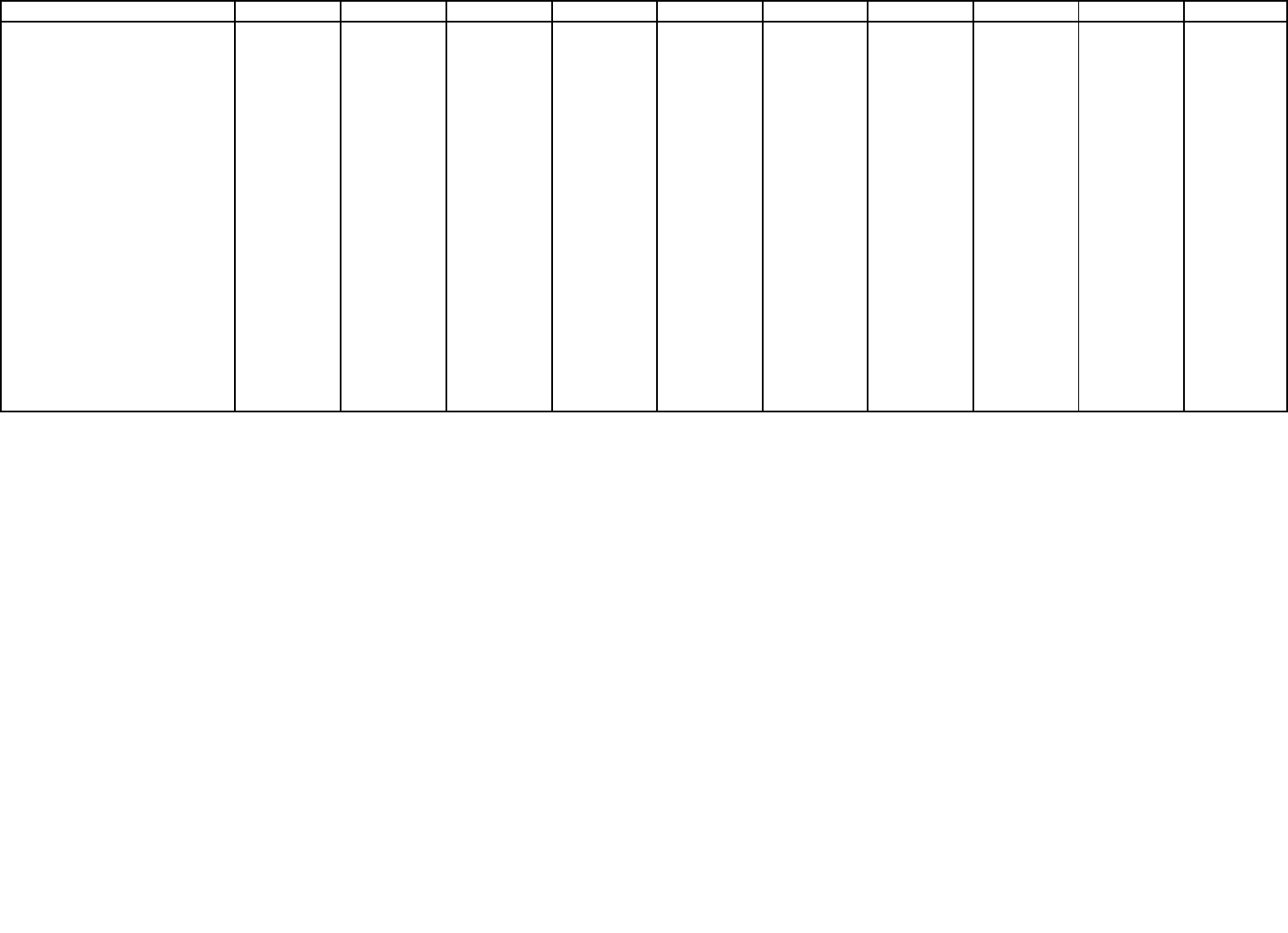
A-18
Table A.11B Types of Illicit Drug, Tobacco Product, Alcohol, and Other Substance Use in the Past Year: Among Adults Aged 26 or Older; 2002-2020
Substance 2002 2003 2004 2005 2006 2007 2008 2009 2010 2011
GENERAL SUBSTANCE USE
Illicit Drugs, Tobacco Products, or Alcohol nc nc nc nc nc nc nc nc nc nc
Illicit Drugs or Alcohol nc nc nc nc nc nc nc nc nc nc
Tobacco Products or Alcohol 75.3 (0.46) 74.0 (0.45) 73.6 (0.47) 75.9 (0.45) 75.0 (0.43) 74.7 (0.43) 75.0 (0.46) 75.2 (0.43) 75.3 (0.45) 75.0 (0.45)
ILLICIT DRUGS nc nc nc nc nc nc nc nc nc nc
TOBACCO PRODUCTS OR NICOTINE
VAPING -- -- -- -- -- -- -- -- -- --
Tobacco Products
1
34.5 (0.47) 33.5 (0.43) 32.8 (0.42) 33.4 (0.45) 33.6 (0.44) 33.1 (0.44) 32.6 (0.46) 31.6 (0.42) 31.5 (0.45) 30.5 (0.43)
Cigarettes 28.5 (0.44) 27.6 (0.42) 27.3 (0.40) 27.6 (0.41) 27.7 (0.42) 27.4 (0.42) 26.8 (0.43) 26.0 (0.40) 25.8 (0.41) 24.9 (0.41)
Smokeless Tobacco nc nc nc nc nc nc nc nc nc nc
Cigars 9.1 (0.26) 8.7 (0.24) 8.6 (0.23) 8.9 (0.24) 8.8 (0.23) 8.7 (0.24) 8.6 (0.24) 8.5 (0.24) 8.4 (0.25) 7.8 (0.23)
Pipe Tobacco
1
-- -- -- -- -- -- -- -- -- --
Nicotine Vaping -- -- -- -- -- -- -- -- -- --
ALCOHOL 68.4 (0.50) 67.0 (0.48) 67.2 (0.47) 69.0 (0.48) 68.3 (0.46) 68.2 (0.49) 68.5 (0.49) 69.3 (0.45) 69.0 (0.47) 69.1 (0.48)
OTHER SUBSTANCE USE
GHB -- -- -- -- 0.0 (0.01) 0.0 (0.01) 0.0 (0.02) 0.0 (0.01) 0.1 (0.02) 0.0 (0.02)
Nonprescription Cough or Cold Medicine -- -- -- -- 0.3 (0.05) 0.2 (0.04) 0.3 (0.05) 0.3 (0.05) 0.5 (0.08) 0.4 (0.05)
Kratom -- -- -- -- -- -- -- -- -- --
Synthetic Marijuana (Fake Weed, K2,
Spice) -- -- -- -- -- -- -- -- -- --
Synthetic Stimulants (“Bath Salts,” Flakka) -- -- -- -- -- -- -- -- -- --
NOTE: Footnotes and source information are shown at the end of the second half of this table.

A-19
Table A.11B Types of Illicit Drug, Tobacco Product, Alcohol, and Other Substance Use in the Past Year: Among Adults Aged 26 or Older; 2002-2020 (continued)
Substance 2012 2013 2014 2015 2016 2017 2018 2019 2020
GENERAL SUBSTANCE USE
Illicit Drugs, Tobacco Products, or Alcohol nc nc nc 76.1 (0.33) 75.2 (0.35) 76.1 (0.36) 76.2 (0.37) 75.8 (0.36) 75.1 (0.57)
Illicit Drugs or Alcohol nc nc nc 71.2 (0.35) 70.3 (0.37) 71.5 (0.39) 71.4 (0.41) 71.5 (0.38) 71.4 (0.60)
Tobacco Products or Alcohol 75.9 (0.42) 75.5 (0.44) 76.1 (0.35) 75.1 (0.34) 74.2 (0.35) 75.1 (0.37) 75.3 (0.37) 74.7 (0.36) 73.6 (0.58)
ILLICIT DRUGS nc nc nc 14.6 (0.26) 15.0 (0.26) 16.1 (0.27) 16.7 (0.30) 18.3 (0.31) 19.9 (0.45)
TOBACCO PRODUCTS OR NICOTINE
VAPING -- -- -- -- -- -- -- -- 25.6 (0.52)
Tobacco Products
1
31.0 (0.44) 30.0 (0.42) 30.1 (0.35) 28.9 (0.34) 28.6 (0.34) 27.6 (0.33) 27.3 (0.35) 26.8 (0.32) 24.4 (0.52)
Cigarettes 25.3 (0.42) 24.6 (0.39) 24.6 (0.34) 22.9 (0.33) 23.1 (0.32) 21.7 (0.32) 21.7 (0.32) 21.0 (0.30) 19.6 (0.48)
Smokeless Tobacco nc nc nc 4.1 (0.14) 4.0 (0.13) 3.9 (0.12) 3.7 (0.12) 3.8 (0.13) 3.1 (0.19)
Cigars 8.2 (0.24) 8.0 (0.23) 7.5 (0.17) 7.8 (0.19) 7.4 (0.17) 7.6 (0.17) 7.5 (0.18) 7.3 (0.18) 6.8 (0.27)
Pipe Tobacco
1
-- -- -- -- -- -- -- -- --
Nicotine Vaping -- -- -- -- -- -- -- -- 4.3 (0.21)
ALCOHOL 69.9 (0.46) 69.6 (0.47) 70.1 (0.37) 69.2 (0.36) 68.4 (0.37) 69.5 (0.40) 69.5 (0.42) 69.1 (0.38) 68.6 (0.61)
OTHER SUBSTANCE USE
GHB 0.0 (0.02) 0.0 (0.02) 0.1 (0.01) 0.1 (0.02) 0.0 (0.01) 0.0 (0.01) 0.0 (0.01) 0.1 (0.01) 0.1 (0.02)
Nonprescription Cough or Cold Medicine 0.3 (0.04) 0.4 (0.06) 0.3 (0.04) 0.5 (0.05) 0.5 (0.05) 0.6 (0.06) 0.5 (0.05) 0.7 (0.06) 0.8 (0.10)
Kratom -- -- -- -- -- -- -- 0.7 (0.05) 0.8 (0.09)
Synthetic Marijuana (Fake Weed, K2,
Spice) -- -- -- -- -- -- -- -- 0.3 (0.05)
Synthetic Stimulants (“Bath Salts,” Flakka) -- -- -- -- -- -- -- -- 0.0 (0.02)
-- = not available; nc = not comparable due to methodological changes.
NOTE: Estimates shown are percentages with standard errors included in parentheses.
NOTE: Estimates in the 2020 column are italicized to indicate caution should be used when comparing estimates between 2020 and prior years because of methodological changes for 2020. Due to these changes, significance testing between 2020 and prior years was
not performed. See the 2020 National Survey on Drug Use and Health: Methodological Summary and Definitions for details.
NOTE: Additional estimates may be found in the detailed tables for the 2020 NSDUH at https://www.samhsa.gov/data/
. Measures and terms are defined in Appendix A of the 2020 detailed tables.
NOTE: Estimates of 0.0 percent round to less than 0.1 percent when shown to the nearest tenth of a percent.
1
Information about past year use of pipe tobacco was not collected. Tobacco product use in the past year excludes past year pipe tobacco use, but includes past month pipe tobacco use.
Source: SAMHSA, Center for Behavioral Health Statistics and Quality, National Survey on Drug Use and Health, 2002-2019 and Quarters 1 and 4, 2020.
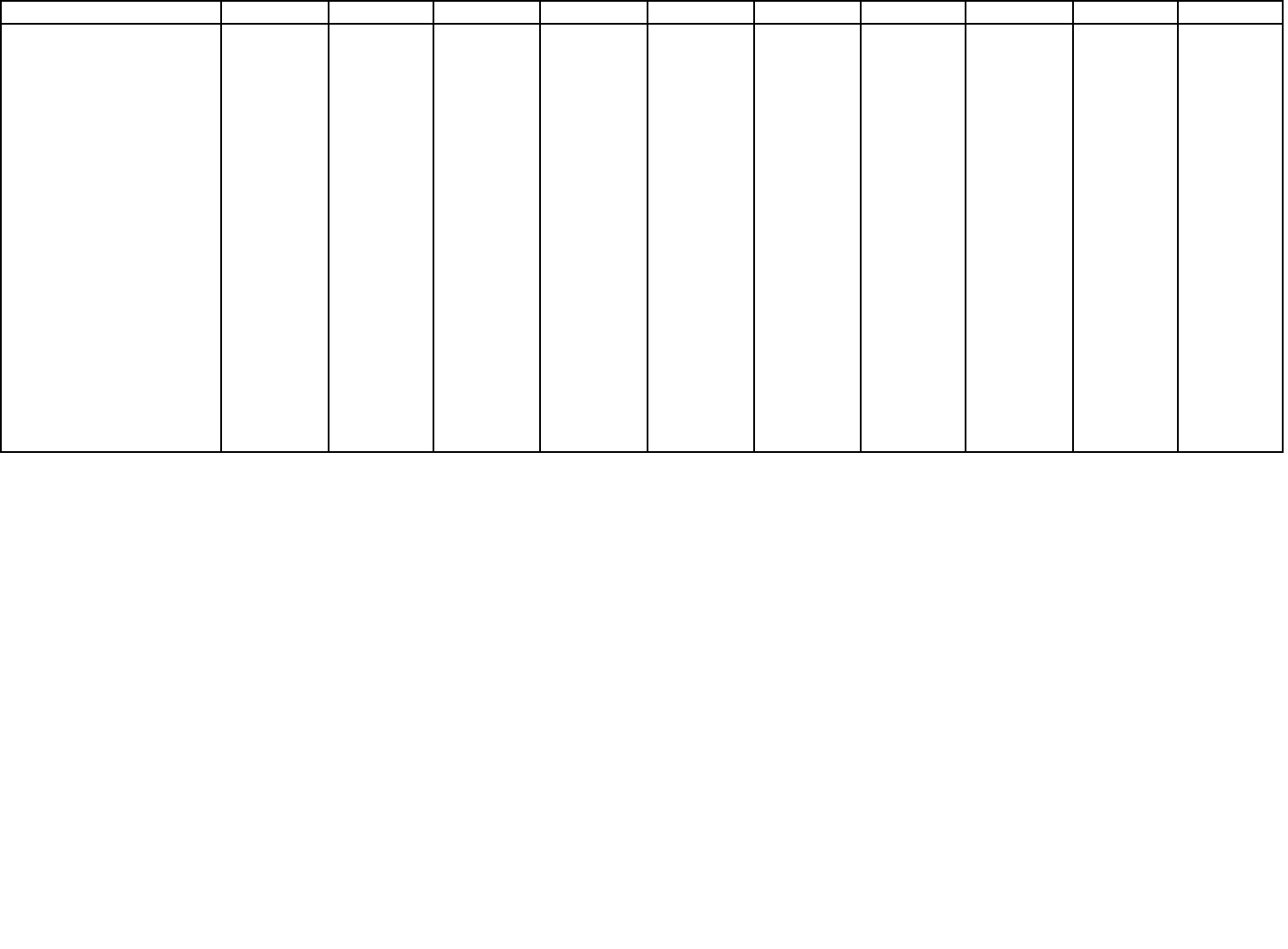
A-20
Table A.12B Types of Illicit Drug Use in the Past Year: Among People Aged 12 or Older; 2002-2020
Drug 2002 2003 2004 2005 2006 2007 2008 2009 2010 2011
ILLICIT DRUGS nc nc nc nc nc nc nc nc nc nc
Marijuana 11.0 (0.20) 10.6 (0.19) 10.6 (0.19) 10.4 (0.19) 10.3 (0.19) 10.1 (0.20) 10.4 (0.19) 11.4 (0.21) 11.6 (0.22) 11.5 (0.20)
Cocaine
2.5 (0.09) 2.5 (0.10) 2.4 (0.09) 2.3 (0.08) 2.5 (0.09) 2.3 (0.10) 2.1 (0.08) 1.9 (0.08) 1.8 (0.08) 1.5 (0.07)
Crack 0.7 (0.05) 0.6 (0.05) 0.5 (0.05) 0.6 (0.05) 0.6 (0.05) 0.6 (0.05) 0.4 (0.04) 0.4 (0.04) 0.3 (0.04) 0.2 (0.03)
Heroin 0.2 (0.02) 0.1 (0.02) 0.2 (0.02) 0.2 (0.02) 0.2 (0.03) 0.2 (0.02) 0.2 (0.02) 0.2 (0.03) 0.2 (0.03) 0.2 (0.03)
Hallucinogens nc nc nc nc nc nc nc nc nc nc
LSD 0.4 (0.03) 0.2 (0.02) 0.2 (0.02) 0.2 (0.02) 0.3 (0.02) 0.3 (0.02) 0.3 (0.02) 0.3 (0.02) 0.3 (0.03) 0.3 (0.02)
PCP 0.1 (0.01) 0.1 (0.01) 0.1 (0.01) 0.1 (0.01) 0.1 (0.02) 0.1 (0.01) 0.0 (0.01) 0.0 (0.01) 0.0 (0.01) 0.0 (0.01)
Ecstasy nc nc nc nc nc nc nc nc nc nc
Inhalants nc nc nc nc nc nc nc nc nc nc
Methamphetamine nc nc nc nc nc nc nc nc nc nc
Misuse of Psychotherapeutics nc nc nc nc nc nc nc nc nc nc
Pain Relievers nc nc nc nc nc nc nc nc nc nc
Stimulants nc nc nc nc nc nc nc nc nc nc
Tranquilizers or Sedatives nc nc nc nc nc nc nc nc nc nc
Tranquilizers nc nc nc nc nc nc nc nc nc nc
Sedatives nc nc nc nc nc nc nc nc nc nc
Benzodiazepines nc nc nc nc nc nc nc nc nc nc
Opioids nc nc nc nc nc nc nc nc nc nc
Central Nervous System Stimulants nc nc nc nc nc nc nc nc nc nc
NOTE: Footnotes and source information are shown at the end of the second half of this table.

A-21
Table A.12B Types of Illicit Drug Use in the Past Year: Among People Aged 12 or Older; 2002-2020 (continued)
Drug 2012 2013 2014 2015 2016 2017 2018 2019 2020
ILLICIT DRUGS nc nc nc 17.8 (0.23) 18.0 (0.23) 19.0 (0.24) 19.4 (0.26) 20.8 (0.27) 21.4 (0.39)
Marijuana 12.1 (0.21) 12.6 (0.22) 13.2 (0.20) 13.5 (0.20) 13.9 (0.20) 15.0 (0.22) 15.9 (0.24) 17.5 (0.24) 17.9 (0.37)
Cocaine
1.8 (0.08) 1.6 (0.07) 1.7 (0.07) 1.8 (0.07) 1.9 (0.07) 2.2 (0.08) 2.0 (0.07) 2.0 (0.08) 1.9 (0.11)
Crack 0.4 (0.04) 0.2 (0.03) 0.3 (0.03) 0.3 (0.03) 0.3 (0.03) 0.3 (0.04) 0.3 (0.03) 0.3 (0.04) 0.2 (0.04)
Heroin 0.3 (0.03) 0.3 (0.03) 0.3 (0.03) 0.3 (0.03) 0.4 (0.03) 0.3 (0.03) 0.3 (0.04) 0.3 (0.04) 0.3 (0.06)
Hallucinogens nc nc nc 1.8 (0.07) 1.8 (0.07) 1.9 (0.07) 2.0 (0.08) 2.2 (0.08) 2.6 (0.14)
LSD 0.4 (0.03) 0.4 (0.03) 0.5 (0.03) 0.6 (0.03) 0.7 (0.04) 0.8 (0.04) 0.8 (0.04) 0.9 (0.05) 1.0 (0.07)
PCP 0.1 (0.01) 0.0 (0.01) 0.0 (0.01) 0.0 (0.01) 0.0 (0.01) 0.0 (0.01) 0.0 (0.01) 0.0 (0.01) 0.0 (0.01)
Ecstasy nc nc nc 1.0 (0.05) 0.9 (0.05) 0.9 (0.04) 0.9 (0.05) 0.9 (0.05) 0.9 (0.07)
Inhalants nc nc nc 0.7 (0.03) 0.6 (0.03) 0.6 (0.03) 0.7 (0.04) 0.8 (0.04) 0.9 (0.07)
Methamphetamine nc nc nc 0.6 (0.04) 0.5 (0.04) 0.6 (0.04) 0.7 (0.04) 0.7 (0.05) 0.9 (0.10)
Misuse of Psychotherapeutics nc nc nc 7.1 (0.14) 6.9 (0.14) 6.6 (0.13) 6.2 (0.14) 5.9 (0.14) 5.8 (0.21)
Pain Relievers nc nc nc 4.7 (0.11) 4.3 (0.11) 4.1 (0.10) 3.6 (0.10) 3.5 (0.11) 3.3 (0.17)
Stimulants nc nc nc 2.0 (0.07) 2.1 (0.07) 2.1 (0.07) 1.9 (0.06) 1.8 (0.06) 1.8 (0.11)
Tranquilizers or Sedatives nc nc nc 2.6 (0.08) 2.6 (0.08) 2.5 (0.08) 2.4 (0.09) 2.1 (0.09) 2.2 (0.12)
Tranquilizers nc nc nc 2.3 (0.08) 2.2 (0.08) 2.2 (0.08) 2.1 (0.08) 1.9 (0.08) 2.0 (0.11)
Sedatives nc nc nc 0.6 (0.04) 0.6 (0.04) 0.5 (0.04) 0.4 (0.04) 0.4 (0.04) 0.4 (0.06)
Benzodiazepines nc nc nc 2.1 (0.07) 2.1 (0.07) 2.1 (0.07) 2.0 (0.08) 1.8 (0.08) 1.7 (0.10)
Opioids nc nc nc 4.7 (0.12) 4.4 (0.11) 4.2 (0.10) 3.7 (0.11) 3.7 (0.11) 3.4 (0.17)
Central Nervous System Stimulants nc nc nc 3.7 (0.10) 3.7 (0.09) 4.0 (0.10) 3.7 (0.10) 3.7 (0.10) 3.7 (0.17)
LSD = lysergic acid diethylamide; nc = not comparable due to methodological changes; PCP = phencyclidine.
NOTE:
Estimates shown are percentages with standard errors included in parentheses.
NOTE:
Estimates in the 2020 column are italicized to indicate caution should be used when comparing estimates between 2020 and prior years because of methodological changes for 2020. Due to these changes, significance
testing between 2020 and prior years was not performed. See the 2020 National Survey on Drug Use and Health: Methodological Summary and Definitions for details.
NOTE:
Additional estimates may be found in the detailed tables for the 2020 NSDUH at https://www.samhsa.gov/data/. Measures and terms are defined in Appendix A of the 2020 detailed tables.
NOTE: Estimates of 0.0 percent round to less than 0.1 percent when shown to the nearest tenth of a percent.
Source: SAMHSA, Center for Behavioral Health Statistics and Quality, National Survey on Drug Use and Health, 2002-2019 and Quarters 1 and 4, 2020.
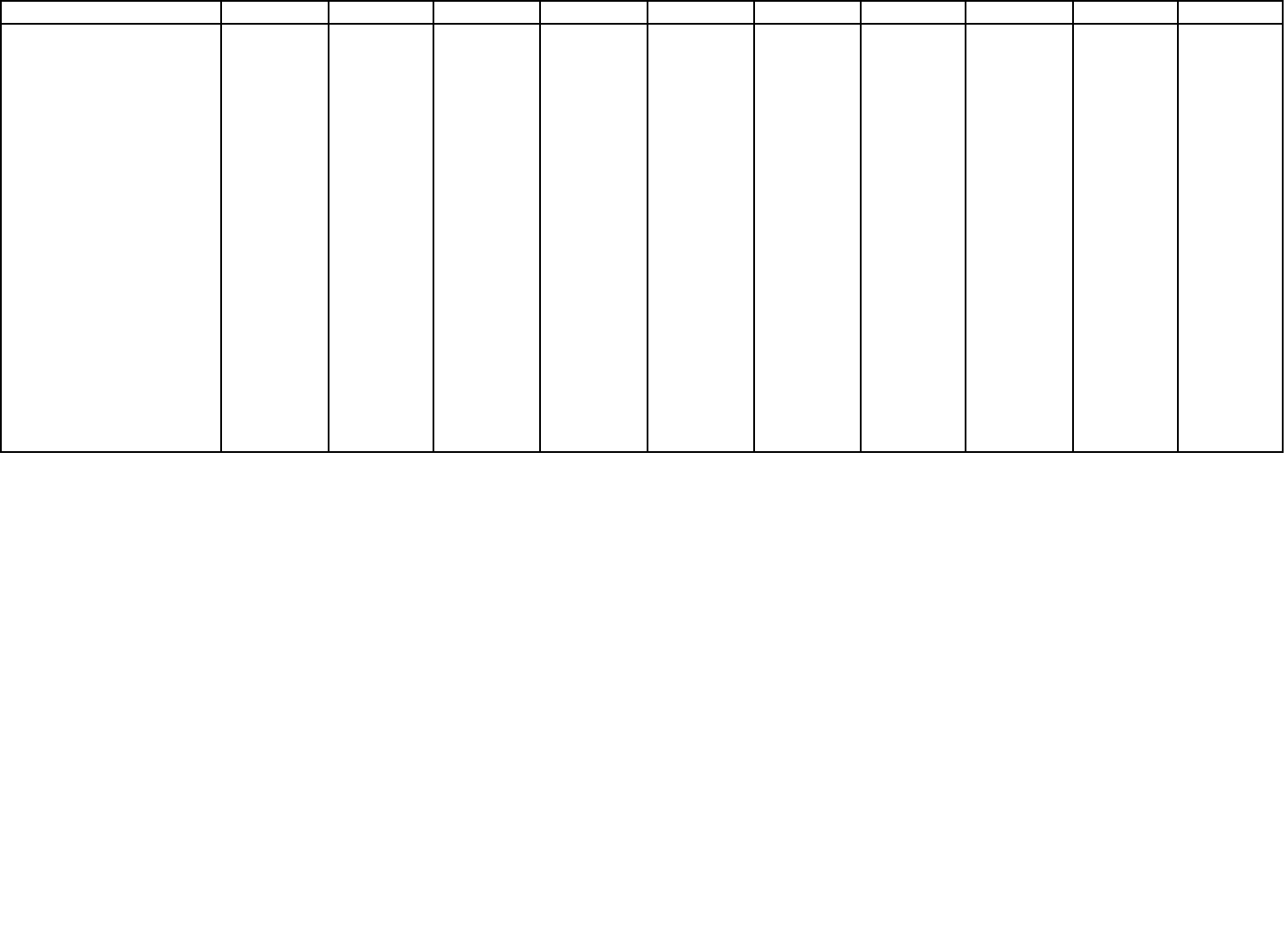
A-22
Table A.13B Types of Illicit Drug Use in the Past Year: Among Adolescents Aged 12 to 17; 2002-2020
Drug 2002 2003 2004 2005 2006 2007 2008 2009 2010 2011
ILLICIT DRUGS nc nc nc nc nc nc nc nc nc nc
Marijuana 15.8 (0.32) 15.0 (0.31) 14.5 (0.31) 13.3 (0.30) 13.2 (0.31) 12.5 (0.30) 13.1 (0.29) 13.7 (0.32) 14.0 (0.34) 14.2 (0.33)
Cocaine
2.1 (0.13) 1.8 (0.11) 1.6 (0.11) 1.7 (0.11) 1.6 (0.11) 1.5 (0.11) 1.2 (0.10) 1.0 (0.09) 1.0 (0.09) 0.9 (0.08)
Crack 0.4 (0.06) 0.4 (0.05) 0.3 (0.04) 0.2 (0.04) 0.3 (0.05) 0.3 (0.04) 0.1 (0.03) 0.1 (0.03) 0.1 (0.02) 0.1 (0.03)
Heroin 0.2 (0.04) 0.1 (0.03) 0.2 (0.04) 0.1 (0.03) 0.1 (0.03) 0.1 (0.02) 0.2 (0.04) 0.1 (0.03) 0.1 (0.03) 0.2 (0.05)
Hallucinogens nc nc nc nc nc nc nc nc nc nc
LSD 1.3 (0.10) 0.6 (0.06) 0.6 (0.07) 0.6 (0.07) 0.4 (0.05) 0.5 (0.06) 0.7 (0.07) 0.6 (0.06) 0.6 (0.07) 0.6 (0.07)
PCP 0.4 (0.05) 0.4 (0.05) 0.3 (0.05) 0.3 (0.06) 0.2 (0.04) 0.2 (0.04) 0.2 (0.04) 0.2 (0.04) 0.1 (0.03) 0.2 (0.03)
Ecstasy nc nc nc nc nc nc nc nc nc nc
Inhalants nc nc nc nc nc nc nc nc nc nc
Methamphetamine nc nc nc nc nc nc nc nc nc nc
Misuse of Psychotherapeutics nc nc nc nc nc nc nc nc nc nc
Pain Relievers nc nc nc nc nc nc nc nc nc nc
Stimulants nc nc nc nc nc nc nc nc nc nc
Tranquilizers or Sedatives nc nc nc nc nc nc nc nc nc nc
Tranquilizers nc nc nc nc nc nc nc nc nc nc
Sedatives nc nc nc nc nc nc nc nc nc nc
Benzodiazepines nc nc nc nc nc nc nc nc nc nc
Opioids nc nc nc nc nc nc nc nc nc nc
Central Nervous System Stimulants nc nc nc nc nc nc nc nc nc nc
NOTE: Footnotes and source information are shown at the end of the second half of this table.
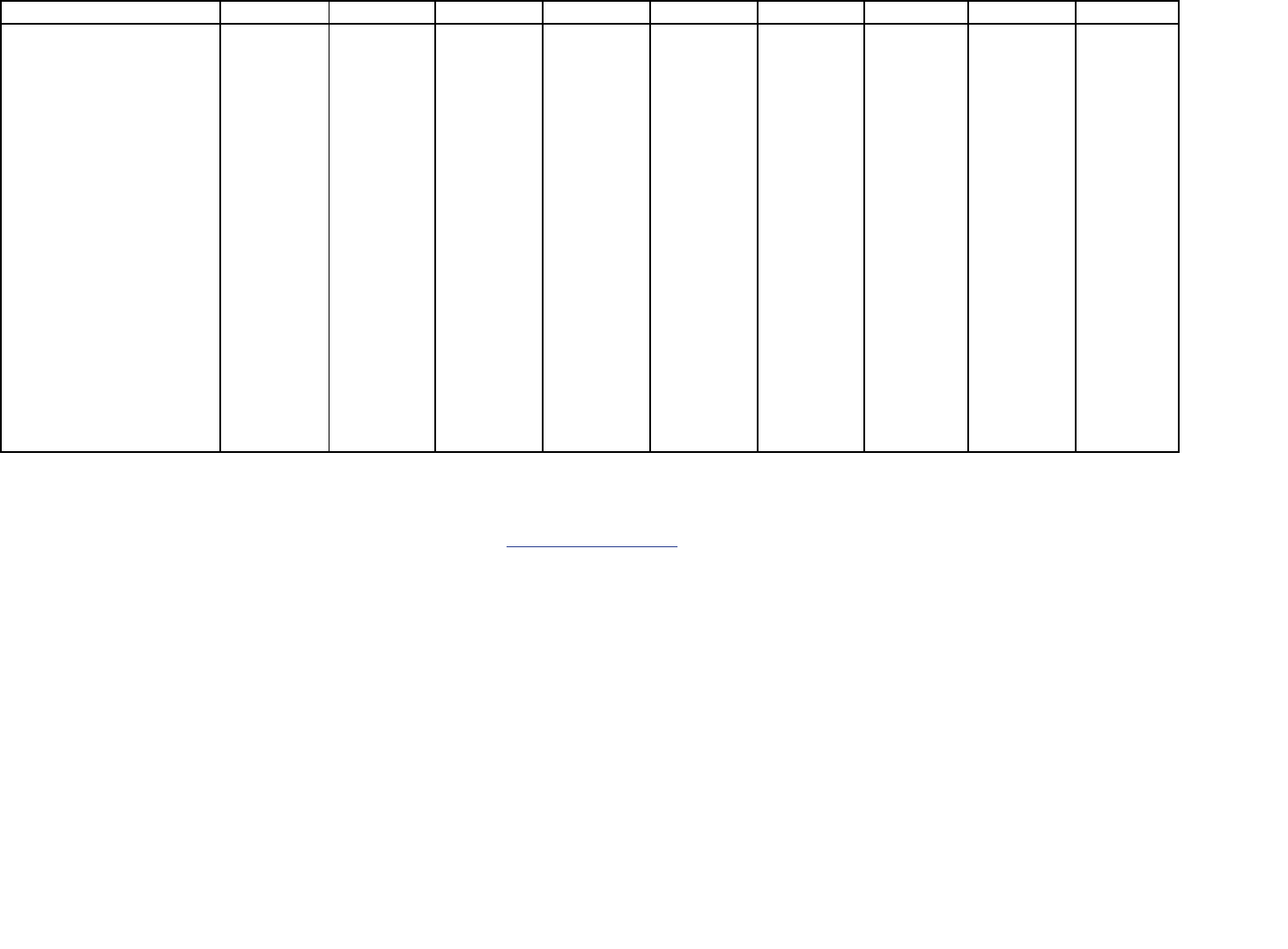
A-23
Table A.13B Types of Illicit Drug Use in the Past Year: Among Adolescents Aged 12 to 17; 2002-2020 (continued)
Drug 2012 2013 2014 2015 2016 2017 2018 2019 2020
ILLICIT DRUGS nc nc nc 17.5 (0.37) 15.8 (0.35) 16.3 (0.37) 16.7 (0.37) 17.2 (0.36) 13.8 (0.67)
Marijuana 13.5 (0.30) 13.4 (0.31) 13.1 (0.33) 12.6 (0.32) 12.0 (0.31) 12.4 (0.33) 12.5 (0.33) 13.2 (0.34) 10.1 (0.57)
Cocaine
0.7 (0.08) 0.5 (0.06) 0.7 (0.09) 0.6 (0.08) 0.5 (0.07) 0.5 (0.06) 0.4 (0.07) 0.4 (0.07) 0.3 (0.10)
Crack 0.1 (0.03) 0.0 (0.02) 0.1 (0.03) 0.0 (0.01) 0.0 (0.02) 0.1 (0.03) 0.0 (0.01) 0.0 (0.03) 0.0 (0.01)
Heroin 0.1 (0.04) 0.1 (0.03) 0.1 (0.03) 0.1 (0.03) 0.1 (0.02) 0.1 (0.02) 0.0 (0.02) * (*) * (*)
Hallucinogens nc nc nc 2.1 (0.15) 1.8 (0.13) 2.1 (0.14) 1.5 (0.13) 1.8 (0.13) 1.5 (0.21)
LSD 0.6 (0.07) 0.6 (0.06) 0.9 (0.10) 1.0 (0.10) 0.8 (0.08) 1.0 (0.09) 0.8 (0.09) 1.1 (0.11) 0.9 (0.16)
PCP 0.2 (0.04) 0.1 (0.03) 0.1 (0.03) 0.1 (0.04) 0.1 (0.02) 0.1 (0.03) 0.1 (0.02) 0.1 (0.03) * (*)
Ecstasy nc nc nc 0.8 (0.09) 0.7 (0.08) 0.7 (0.08) 0.5 (0.08) 0.6 (0.08) 0.3 (0.08)
Inhalants nc nc nc 2.7 (0.16) 2.2 (0.14) 2.3 (0.14) 2.7 (0.16) 3.0 (0.16) 2.7 (0.32)
Methamphetamine nc nc nc 0.2 (0.04) 0.1 (0.03) 0.2 (0.04) 0.2 (0.04) 0.2 (0.04) 0.1 (0.05)
Misuse of Psychotherapeutics nc nc nc 5.9 (0.23) 5.3 (0.21) 4.9 (0.21) 4.8 (0.22) 4.3 (0.21) 2.8 (0.32)
Pain Relievers nc nc nc 3.9 (0.19) 3.5 (0.17) 3.1 (0.16) 2.8 (0.17) 2.3 (0.16) 1.6 (0.24)
Stimulants nc nc nc 2.0 (0.14) 1.7 (0.14) 1.8 (0.14) 1.5 (0.11) 1.7 (0.15) 1.2 (0.20)
Tranquilizers or Sedatives nc nc nc 1.8 (0.14) 1.9 (0.13) 2.0 (0.13) 1.8 (0.14) 1.8 (0.14) 0.9 (0.16)
Tranquilizers nc nc nc 1.6 (0.13) 1.7 (0.13) 1.8 (0.13) 1.7 (0.13) 1.6 (0.14) 0.8 (0.15)
Sedatives nc nc nc 0.4 (0.06) 0.4 (0.06) 0.3 (0.05) 0.3 (0.05) 0.3 (0.07) 0.1 (0.06)
Benzodiazepines nc nc nc 1.5 (0.12) 1.7 (0.12) 1.8 (0.13) 1.6 (0.13) 1.5 (0.14) 0.6 (0.15)
Opioids nc nc nc 3.9 (0.19) 3.6 (0.17) 3.1 (0.16) 2.8 (0.17) 2.3 (0.16) 1.6 (0.24)
Central Nervous System Stimulants nc nc nc 2.4 (0.16) 2.1 (0.14) 2.2 (0.15) 1.9 (0.13) 2.0 (0.16) 1.4 (0.22)
* = low precision; LSD = lysergic acid diethylamide; nc = not comparable due to methodological changes; PCP = phencyclidine.
NOTE:
Estimates shown are percentages with standard errors included in parentheses.
NOTE:
Estimates in the 2020 column are italicized to indicate caution should be used when comparing estimates between 2020 and prior years because of methodological changes for 2020. Due to these changes, significance
testing between 2020 and prior years was not performed. See the 2020 National Survey on Drug Use and Health: Methodological Summary and Definitions for details.
NOTE:
Additional estimates may be found in the detailed tables for the 2020 NSDUH at https://www.samhsa.gov/data/. Measures and terms are defined in Appendix A of the 2020 detailed tables.
NOTE: Estimates of 0.0 percent round to less than 0.1 percent when shown to the nearest tenth of a percent.
Source: SAMHSA, Center for Behavioral Health Statistics and Quality, National Survey on Drug Use and Health, 2002-2019 and Quarters 1 and 4, 2020.
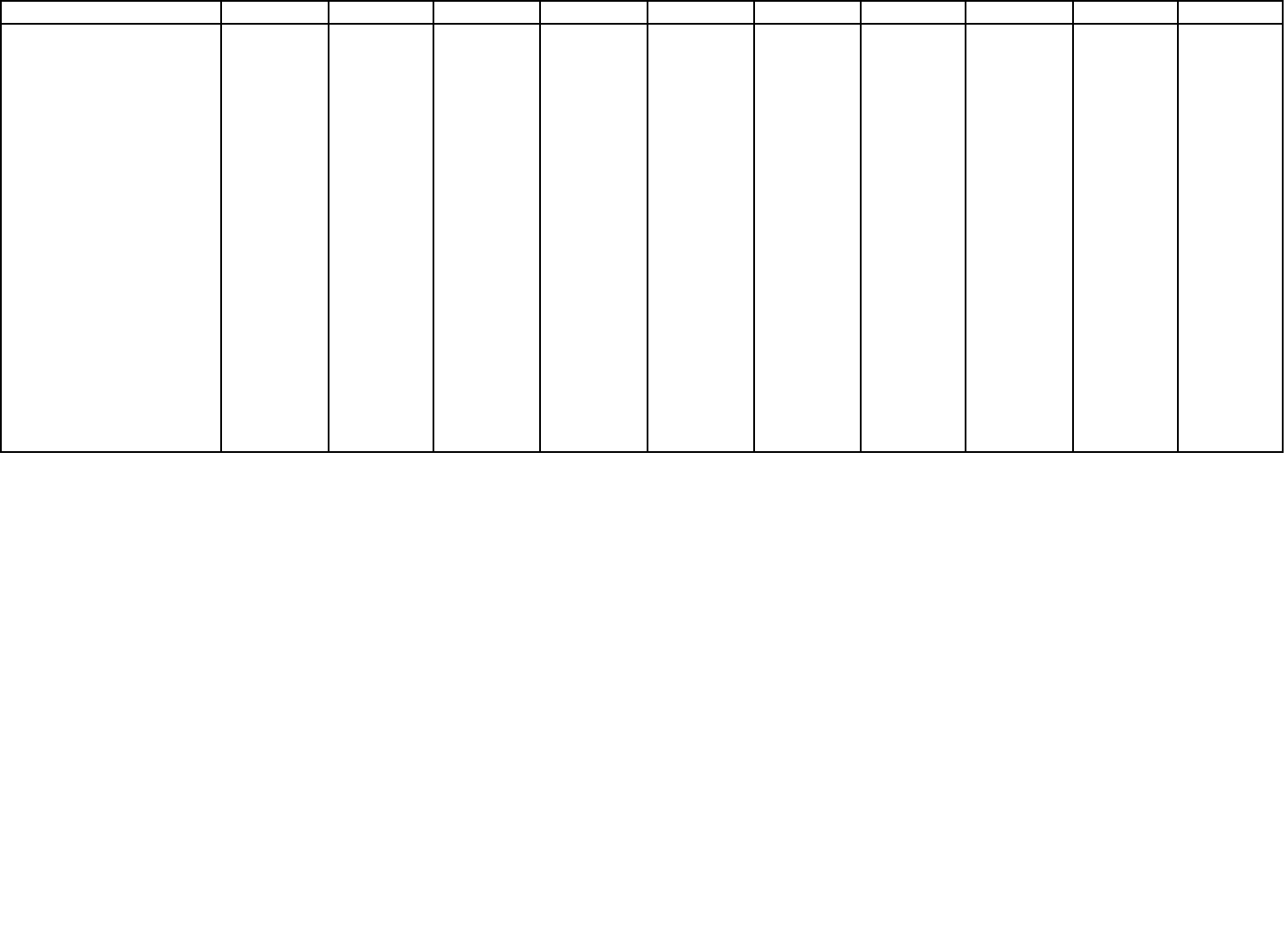
A-24
Table A.14B Types of Illicit Drug Use in the Past Year: Among Young Adults Aged 18 to 25; 2002-2020
Drug 2002 2003 2004 2005 2006 2007 2008 2009 2010 2011
ILLICIT DRUGS nc nc nc nc nc nc nc nc nc nc
Marijuana 29.8 (0.43) 28.5 (0.46) 27.8 (0.47) 28.0 (0.45) 28.1 (0.46) 27.5 (0.46) 27.8 (0.46) 30.8 (0.46) 30.0 (0.49) 30.8 (0.49)
Cocaine
6.7 (0.24) 6.6 (0.23) 6.6 (0.25) 6.9 (0.23) 6.9 (0.24) 6.4 (0.24) 5.6 (0.21) 5.3 (0.20) 4.7 (0.20) 4.6 (0.21)
Crack 0.9 (0.08) 0.9 (0.07) 0.8 (0.07) 1.0 (0.09) 0.9 (0.08) 0.8 (0.07) 0.7 (0.07) 0.5 (0.06) 0.5 (0.06) 0.3 (0.05)
Heroin 0.4 (0.05) 0.3 (0.04) 0.4 (0.05) 0.5 (0.06) 0.4 (0.06) 0.4 (0.06) 0.5 (0.06) 0.5 (0.06) 0.6 (0.07) 0.7 (0.07)
Hallucinogens nc nc nc nc nc nc nc nc nc nc
LSD 1.8 (0.14) 1.1 (0.09) 1.0 (0.08) 1.0 (0.09) 1.2 (0.10) 1.1 (0.09) 1.5 (0.11) 1.6 (0.12) 1.6 (0.13) 1.7 (0.13)
PCP 0.3 (0.04) 0.4 (0.06) 0.3 (0.05) 0.2 (0.03) 0.2 (0.04) 0.2 (0.03) 0.1 (0.02) 0.1 (0.02) 0.1 (0.03) 0.2 (0.05)
Ecstasy nc nc nc nc nc nc nc nc nc nc
Inhalants nc nc nc nc nc nc nc nc nc nc
Methamphetamine nc nc nc nc nc nc nc nc nc nc
Misuse of Psychotherapeutics nc nc nc nc nc nc nc nc nc nc
Pain Relievers nc nc nc nc nc nc nc nc nc nc
Stimulants nc nc nc nc nc nc nc nc nc nc
Tranquilizers or Sedatives nc nc nc nc nc nc nc nc nc nc
Tranquilizers nc nc nc nc nc nc nc nc nc nc
Sedatives nc nc nc nc nc nc nc nc nc nc
Benzodiazepines nc nc nc nc nc nc nc nc nc nc
Opioids nc nc nc nc nc nc nc nc nc nc
Central Nervous System Stimulants nc nc nc nc nc nc nc nc nc nc
NOTE: Footnotes and source information are shown at the end of the second half of this table.
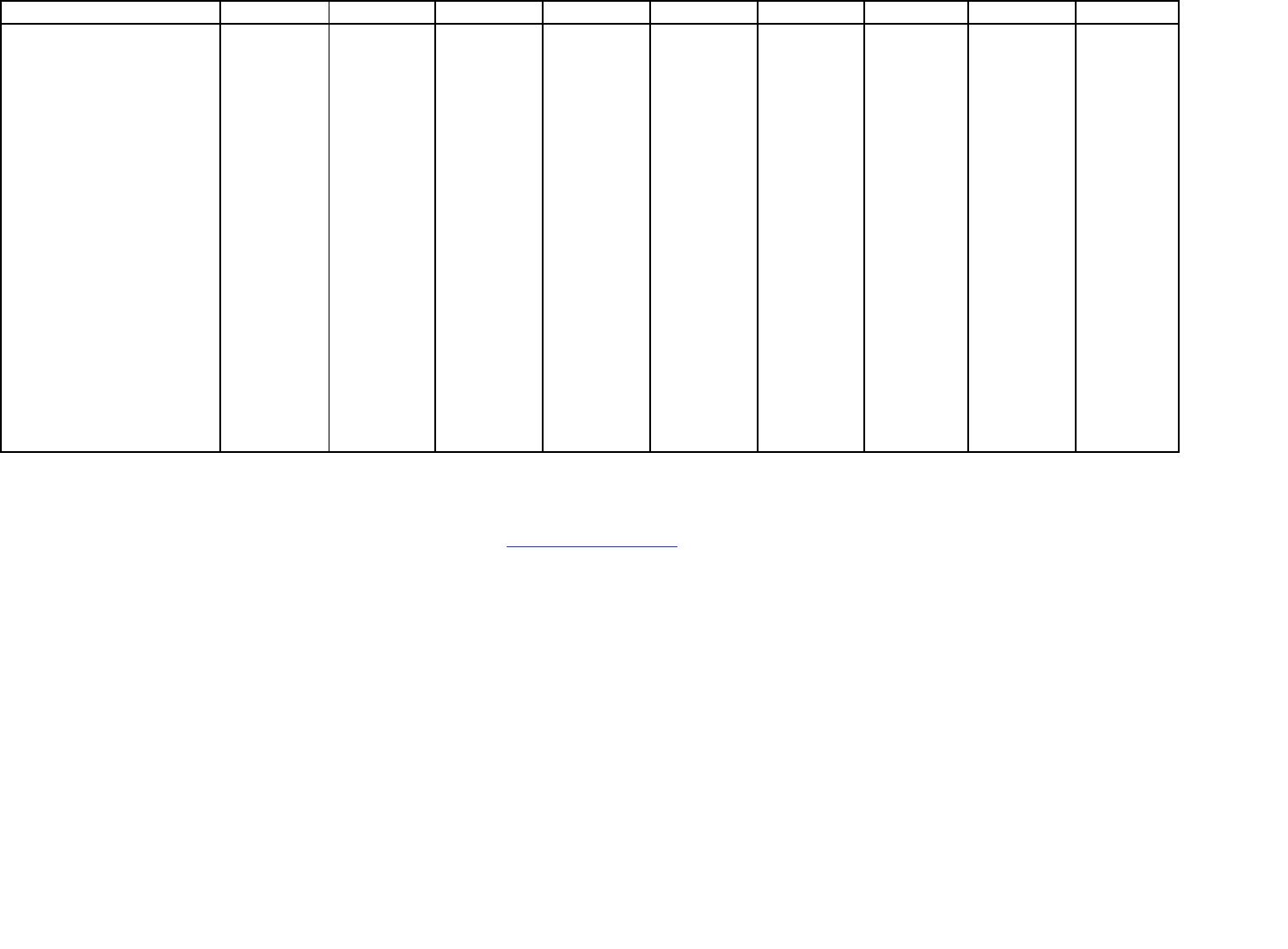
A-25
Table A.14B Types of Illicit Drug Use in the Past Year: Among Young Adults Aged 18 to 25; 2002-2020 (continued)
Drug 2012 2013 2014 2015 2016 2017 2018 2019 2020
ILLICIT DRUGS nc nc nc 37.5 (0.49) 37.7 (0.53) 39.4 (0.54) 38.7 (0.54) 39.1 (0.54) 37.0 (0.97)
Marijuana 31.5 (0.49) 31.6 (0.47) 31.9 (0.53) 32.2 (0.47) 33.0 (0.51) 34.9 (0.53) 34.8 (0.53) 35.4 (0.52) 34.5 (0.97)
Cocaine
4.6 (0.21) 4.4 (0.21) 4.6 (0.23) 5.4 (0.26) 5.6 (0.26) 6.2 (0.26) 5.8 (0.26) 5.3 (0.24) 4.3 (0.37)
Crack 0.4 (0.05) 0.3 (0.05) 0.4 (0.06) 0.3 (0.05) 0.3 (0.05) 0.3 (0.06) 0.3 (0.05) 0.2 (0.04) 0.1 (0.06)
Heroin 0.8 (0.08) 0.7 (0.08) 0.8 (0.09) 0.6 (0.08) 0.7 (0.08) 0.6 (0.08) 0.5 (0.07) 0.3 (0.05) 0.2 (0.06)
Hallucinogens nc nc nc 7.0 (0.28) 6.9 (0.28) 7.0 (0.28) 6.9 (0.30) 7.2 (0.26) 7.3 (0.50)
LSD 1.8 (0.14) 2.0 (0.14) 2.3 (0.16) 2.8 (0.18) 3.4 (0.20) 3.8 (0.20) 3.5 (0.19) 3.6 (0.20) 3.7 (0.35)
PCP 0.2 (0.03) 0.1 (0.02) 0.1 (0.02) 0.1 (0.04) 0.0 (0.02) 0.1 (0.03) 0.0 (0.01) 0.1 (0.03) 0.2 (0.09)
Ecstasy nc nc nc 4.1 (0.20) 3.5 (0.20) 3.5 (0.20) 3.1 (0.21) 3.2 (0.19) 2.5 (0.28)
Inhalants nc nc nc 1.4 (0.12) 1.4 (0.14) 1.6 (0.13) 1.5 (0.13) 1.7 (0.15) 1.5 (0.18)
Methamphetamine nc nc nc 0.9 (0.10) 0.8 (0.08) 1.1 (0.11) 0.8 (0.09) 0.8 (0.09) 0.5 (0.09)
Misuse of Psychotherapeutics nc nc nc 15.3 (0.36) 14.5 (0.38) 14.4 (0.35) 12.3 (0.34) 11.5 (0.36) 9.5 (0.53)
Pain Relievers nc nc nc 8.5 (0.26) 7.1 (0.27) 7.2 (0.26) 5.5 (0.21) 5.2 (0.22) 4.1 (0.34)
Stimulants nc nc nc 7.3 (0.27) 7.5 (0.30) 7.4 (0.29) 6.5 (0.27) 5.8 (0.27) 4.8 (0.36)
Tranquilizers or Sedatives nc nc nc 5.7 (0.23) 5.7 (0.24) 5.7 (0.24) 4.9 (0.21) 4.2 (0.20) 3.7 (0.34)
Tranquilizers nc nc nc 5.4 (0.22) 5.3 (0.23) 5.5 (0.23) 4.6 (0.21) 3.9 (0.19) 3.3 (0.31)
Sedatives nc nc nc 0.8 (0.08) 0.7 (0.09) 0.6 (0.07) 0.6 (0.07) 0.5 (0.07) 0.7 (0.17)
Benzodiazepines nc nc nc 5.2 (0.22) 5.2 (0.23) 5.3 (0.23) 4.5 (0.21) 3.8 (0.19) 3.3 (0.31)
Opioids nc nc nc 8.7 (0.27) 7.3 (0.27) 7.3 (0.26) 5.6 (0.21) 5.3 (0.22) 4.1 (0.34)
Central Nervous System Stimulants nc nc nc 10.9 (0.36) 11.1 (0.36) 11.3 (0.33) 10.2 (0.34) 9.5 (0.34) 7.7 (0.48)
LSD = lysergic acid diethylamide; nc = not comparable due to methodological changes; PCP = phencyclidine.
NOTE:
Estimates shown are percentages with standard errors included in parentheses.
NOTE:
Estimates in the 2020 column are italicized to indicate caution should be used when comparing estimates between 2020 and prior years because of methodological changes for 2020. Due to these changes, significance
testing between 2020 and prior years was not performed. See the 2020 National Survey on Drug Use and Health: Methodological Summary and Definitions for details.
NOTE:
Additional estimates may be found in the detailed tables for the 2020 NSDUH at https://www.samhsa.gov/data/. Measures and terms are defined in Appendix A of the 2020 detailed tables.
NOTE: Estimates of 0.0 percent round to less than 0.1 percent when shown to the nearest tenth of a percent.
Source: SAMHSA, Center for Behavioral Health Statistics and Quality, National Survey on Drug Use and Health, 2002-2019 and Quarters 1 and 4, 2020.
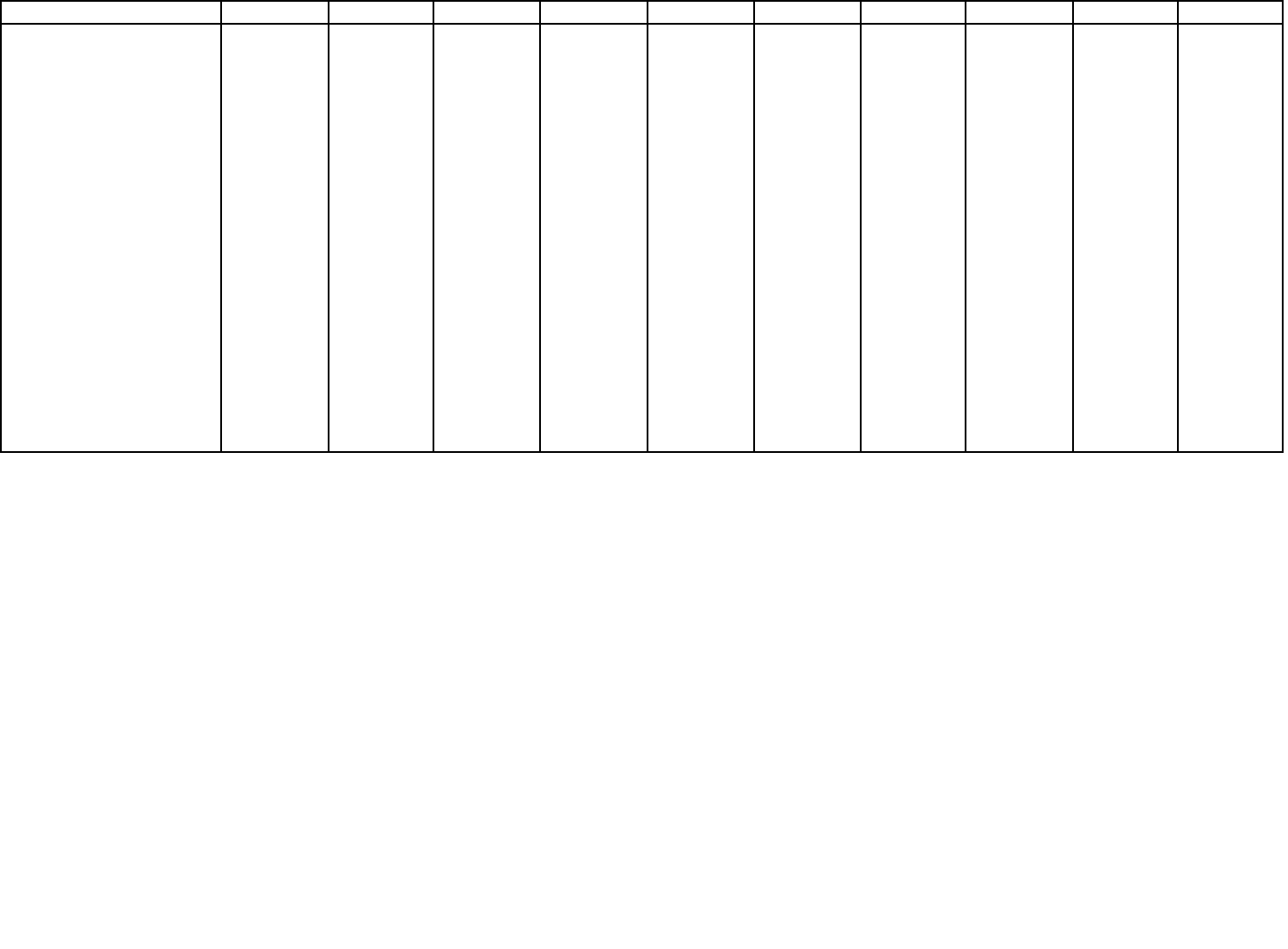
A-26
Table A.15B Types of Illicit Drug Use in the Past Year: Among Adults Aged 26 or Older; 2002-2020
Drug 2002 2003 2004 2005 2006 2007 2008 2009 2010 2011
ILLICIT DRUGS nc nc nc nc nc nc nc nc nc nc
Marijuana 7.0 (0.23) 6.9 (0.21) 7.0 (0.22) 6.9 (0.23) 6.9 (0.22) 6.8 (0.22) 7.0 (0.22) 7.7 (0.24) 8.0 (0.25) 7.9 (0.23)
Cocaine
1.8 (0.11) 1.9 (0.11) 1.7 (0.10) 1.5 (0.10) 1.8 (0.11) 1.7 (0.12) 1.6 (0.10) 1.4 (0.10) 1.4 (0.09) 1.0 (0.08)
Crack 0.7 (0.07) 0.6 (0.07) 0.5 (0.06) 0.5 (0.06) 0.6 (0.07) 0.6 (0.06) 0.4 (0.05) 0.4 (0.05) 0.4 (0.05) 0.2 (0.03)
Heroin 0.1 (0.03) 0.1 (0.02) 0.1 (0.03) 0.1 (0.02) 0.2 (0.04) 0.1 (0.03) 0.1 (0.03) 0.2 (0.04) 0.2 (0.04) 0.2 (0.03)
Hallucinogens nc nc nc nc nc nc nc nc nc nc
LSD 0.1 (0.02) 0.0 (0.02) 0.1 (0.02) 0.0 (0.02) 0.1 (0.02) 0.1 (0.02) 0.1 (0.01) 0.1 (0.02) 0.1 (0.02) 0.1 (0.02)
PCP 0.0 (0.01) 0.0 (0.00) 0.0 (0.01) 0.0 (0.01) 0.0 (0.02) 0.0 (0.01) * (*) 0.0 (0.01) 0.0 (0.01) 0.0 (0.00)
Ecstasy nc nc nc nc nc nc nc nc nc nc
Inhalants nc nc nc nc nc nc nc nc nc nc
Methamphetamine nc nc nc nc nc nc nc nc nc nc
Misuse of Psychotherapeutics nc nc nc nc nc nc nc nc nc nc
Pain Relievers nc nc nc nc nc nc nc nc nc nc
Stimulants nc nc nc nc nc nc nc nc nc nc
Tranquilizers or Sedatives nc nc nc nc nc nc nc nc nc nc
Tranquilizers nc nc nc nc nc nc nc nc nc nc
Sedatives nc nc nc nc nc nc nc nc nc nc
Benzodiazepines nc nc nc nc nc nc nc nc nc nc
Opioids nc nc nc nc nc nc nc nc nc nc
Central Nervous System Stimulants nc nc nc nc nc nc nc nc nc nc
NOTE: Footnotes and source information are shown at the end of the second half of this table.
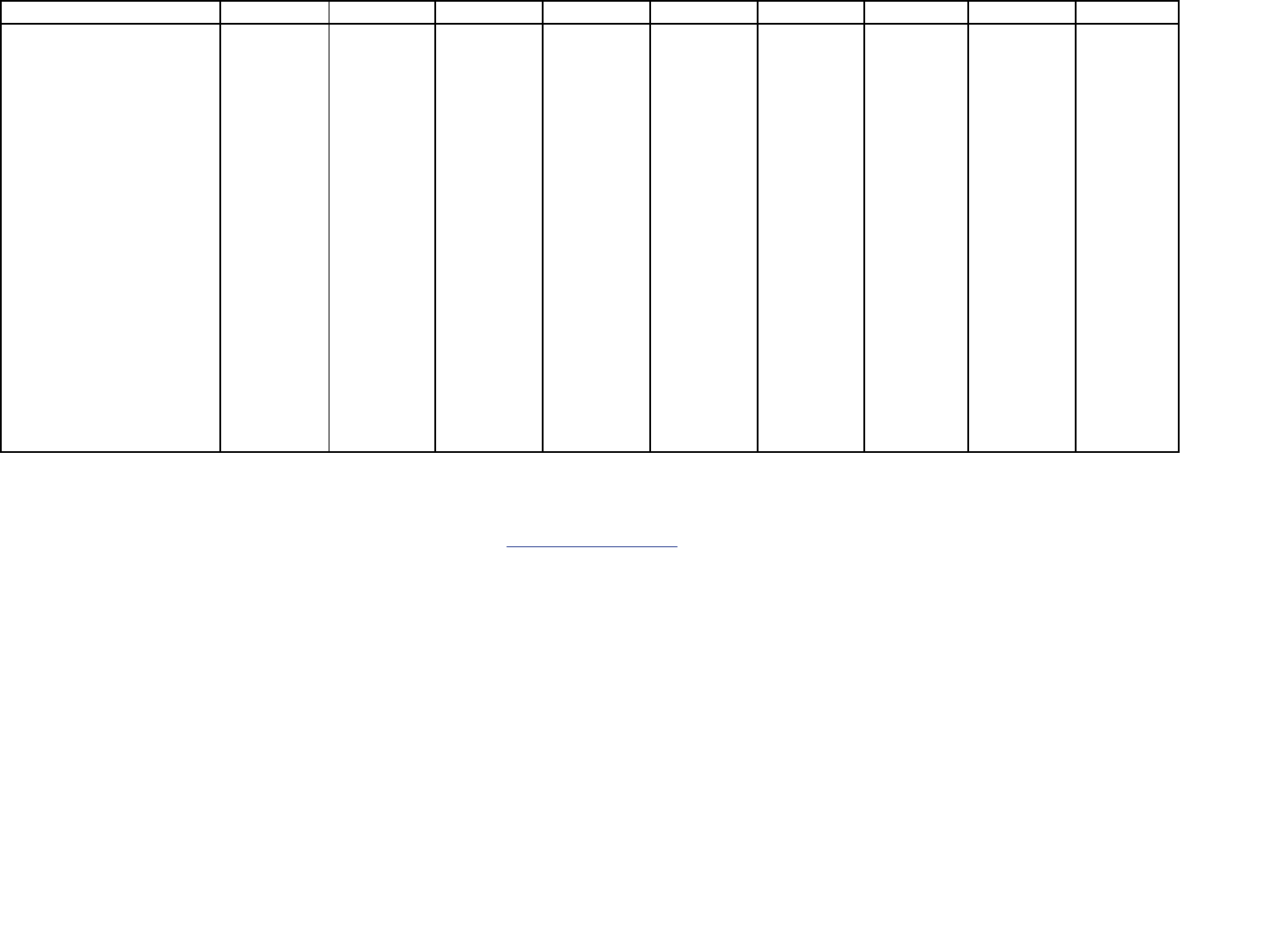
A-27
Table A.15B Types of Illicit Drug Use in the Past Year: Among Adults Aged 26 or Older; 2002-2020 (continued)
Drug 2012 2013 2014 2015 2016 2017 2018 2019 2020
ILLICIT DRUGS nc nc nc 14.6 (0.26) 15.0 (0.26) 16.1 (0.27) 16.7 (0.30) 18.3 (0.31) 19.9 (0.45)
Marijuana 8.6 (0.24) 9.2 (0.26) 10.1 (0.22) 10.4 (0.22) 11.0 (0.23) 12.2 (0.24) 13.3 (0.28) 15.2 (0.28) 16.3 (0.42)
Cocaine
1.4 (0.10) 1.2 (0.08) 1.4 (0.08) 1.3 (0.08) 1.4 (0.07) 1.7 (0.09) 1.6 (0.08) 1.7 (0.09) 1.7 (0.12)
Crack 0.4 (0.05) 0.3 (0.04) 0.3 (0.04) 0.3 (0.04) 0.4 (0.04) 0.4 (0.05) 0.3 (0.04) 0.3 (0.05) 0.3 (0.05)
Heroin 0.2 (0.04) 0.2 (0.03) 0.3 (0.03) 0.3 (0.04) 0.3 (0.04) 0.3 (0.03) 0.3 (0.04) 0.3 (0.04) 0.4 (0.07)
Hallucinogens nc nc nc 0.8 (0.06) 1.0 (0.07) 1.0 (0.06) 1.3 (0.08) 1.5 (0.08) 2.0 (0.15)
LSD 0.1 (0.03) 0.1 (0.03) 0.1 (0.02) 0.1 (0.02) 0.3 (0.03) 0.3 (0.04) 0.4 (0.04) 0.5 (0.04) 0.5 (0.07)
PCP 0.0 (0.01) 0.0 (0.01) 0.0 (0.01) 0.0 (0.01) 0.0 (0.01) 0.0 (0.01) 0.0 (0.01) 0.0 (0.01) 0.0 (0.01)
Ecstasy nc nc nc 0.5 (0.04) 0.5 (0.05) 0.5 (0.04) 0.6 (0.05) 0.6 (0.05) 0.8 (0.08)
Inhalants nc nc nc 0.3 (0.04) 0.3 (0.03) 0.3 (0.04) 0.4 (0.04) 0.4 (0.04) 0.5 (0.08)
Methamphetamine nc nc nc 0.6 (0.06) 0.5 (0.05) 0.6 (0.05) 0.7 (0.05) 0.8 (0.06) 1.1 (0.12)
Misuse of Psychotherapeutics nc nc nc 5.8 (0.17) 5.9 (0.16) 5.6 (0.14) 5.3 (0.16) 5.3 (0.15) 5.6 (0.25)
Pain Relievers nc nc nc 4.1 (0.14) 3.9 (0.13) 3.7 (0.12) 3.4 (0.13) 3.4 (0.13) 3.4 (0.20)
Stimulants nc nc nc 1.1 (0.06) 1.3 (0.07) 1.3 (0.07) 1.2 (0.06) 1.2 (0.06) 1.5 (0.12)
Tranquilizers or Sedatives nc nc nc 2.2 (0.10) 2.2 (0.10) 2.0 (0.09) 2.0 (0.10) 1.9 (0.10) 2.2 (0.15)
Tranquilizers nc nc nc 1.8 (0.09) 1.8 (0.09) 1.7 (0.09) 1.7 (0.10) 1.6 (0.09) 1.9 (0.13)
Sedatives nc nc nc 0.5 (0.05) 0.6 (0.05) 0.5 (0.05) 0.4 (0.04) 0.4 (0.05) 0.4 (0.07)
Benzodiazepines nc nc nc 1.6 (0.08) 1.7 (0.08) 1.6 (0.08) 1.6 (0.09) 1.5 (0.09) 1.6 (0.12)
Opioids nc nc nc 4.2 (0.14) 4.0 (0.13) 3.8 (0.12) 3.6 (0.13) 3.6 (0.14) 3.5 (0.21)
Central Nervous System Stimulants nc nc nc 2.6 (0.11) 2.7 (0.10) 3.0 (0.12) 2.8 (0.10) 3.0 (0.11) 3.4 (0.19)
* = low precision; LSD = lysergic acid diethylamide; nc = not comparable due to methodological changes; PCP = phencyclidine.
NOTE:
Estimates shown are percentages with standard errors included in parentheses.
NOTE:
Estimates in the 2020 column are italicized to indicate caution should be used when comparing estimates between 2020 and prior years because of methodological changes for 2020. Due to these changes, significance
testing between 2020 and prior years was not performed. See the 2020 National Survey on Drug Use and Health: Methodological Summary and Definitions for details.
NOTE:
Additional estimates may be found in the detailed tables for the 2020 NSDUH at https://www.samhsa.gov/data/. Measures and terms are defined in Appendix A of the 2020 detailed tables.
NOTE: Estimates of 0.0 percent round to less than 0.1 percent when shown to the nearest tenth of a percent.
Source: SAMHSA, Center for Behavioral Health Statistics and Quality, National Survey on Drug Use and Health, 2002-2019 and Quarters 1 and 4, 2020.
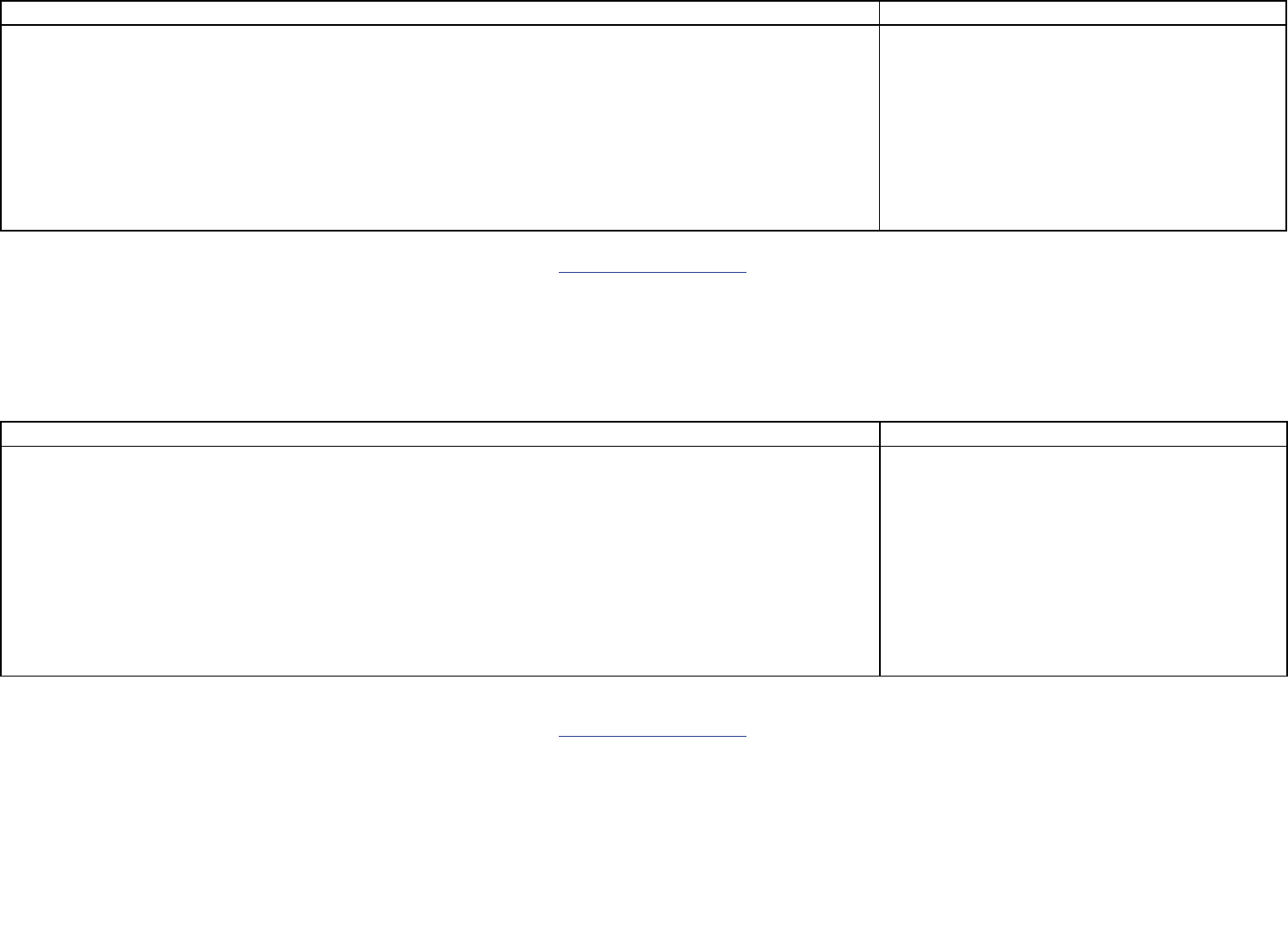
A-28
Table A.16B Main Reasons for the Last Episode of Misuse: Among People Aged 12 or Older Who Misused Prescription Pain Relievers in the Past Year; 2020
Main Reason for Misuse Past Year Misusers of Prescription Pain Relievers
Relieve Physical Pain 64.6 (2.42)
Relax or Relieve Tension 8.1 (1.45)
Help with Sleep 4.5 (0.89)
Help with Feelings or Emotions 5.6 (1.35)
Experiment or See What It’s Like 1.4 (0.32)
Feel Good or Get High 11.3 (1.52)
Increase or Decrease Effect of Other Drug 0.9 (0.37)
Because I Am Hooked or Have to Have It 2.3 (0.55)
Some Other Reason
1
1.4 (0.52)
NOTE: Estimates shown are percentages with standard errors included in parentheses. Percentages may not add to 100 percent due to rounding.
NOTE:
Additional estimates may be found in the detailed tables for the 2020 NSDUH at https://www.samhsa.gov/data/. Measures and terms are defined in Appendix A of the 2020 detailed tables.
NOTE: Respondents with unknown information for their main reason for misuse were excluded from the analysis, including respondents who reported some other reason but had unknown data in their
write-in responses.
1
Responses to the Some Other Reason category for one drug type may fall into a response category that is asked only for another drug type (e.g., “to relieve physical pain” for tranquilizer misuse).
Source:
SAMHSA, Center for Behavioral Health Statistics and Quality, National Survey on Drug Use and Health, Quarters 1 and 4, 2020.
Table A.17B Source Where Prescription Pain Relievers Were Obtained for Most Recent Misuse: Among People Aged 12 or Older Who Misused Prescription Pain Relievers
in the Past Year; 2020
Source for Most Recent Misuse Past Year Misusers of Prescription Pain Relievers
GOT THROUGH PRESCRIPTION(S) OR STOLE FROM A HEALTH CARE PROVIDER 43.6 (2.68)
Prescription from One Doctor 42.0 (2.67)
Prescriptions from More Than One Doctor 1.0 (0.38)
Stole from Doctor’s Office, Clinic, Hospital, or Pharmacy 0.6 (0.37)
GIVEN BY, BOUGHT FROM, OR TOOK FROM A FRIEND OR RELATIVE 47.2 (2.66)
From Friend or Relative for Free 34.4 (2.51)
Bought from Friend or Relative 9.2 (1.61)
Took from Friend or Relative without Asking 3.7 (0.85)
BOUGHT FROM DRUG DEALER OR OTHER STRANGER 6.2 (0.93)
SOME OTHER WAY
1
3.1 (0.82)
NOTE: Estimates shown are percentages with standard errors included in parentheses. Estimates for specific sources may not add to the aggregate estimates for general sources shown in all capital letters due
to rounding.
NOTE: Additional estimates may be found in the detailed tables for the 2020 NSDUH at https://www.samhsa.gov/data/. Measures and terms are defined in Appendix A of the 2020 detailed tables.
NOTE: Respondents were asked to choose one of eight sources as their best answer. Respondents with unknown data on Source for Most Recent Misuse and respondents with unknown or invalid responses
to the corresponding other-specify questions were excluded from the analysis.
1
Some Other Way includes write-in responses not already listed in this table or responses with insufficient information that could allow them to be placed in another category.
Source:
SAMHSA, Center for Behavioral Health Statistics and Quality, National Survey on Drug Use and Health, Quarters 1 and 4, 2020.
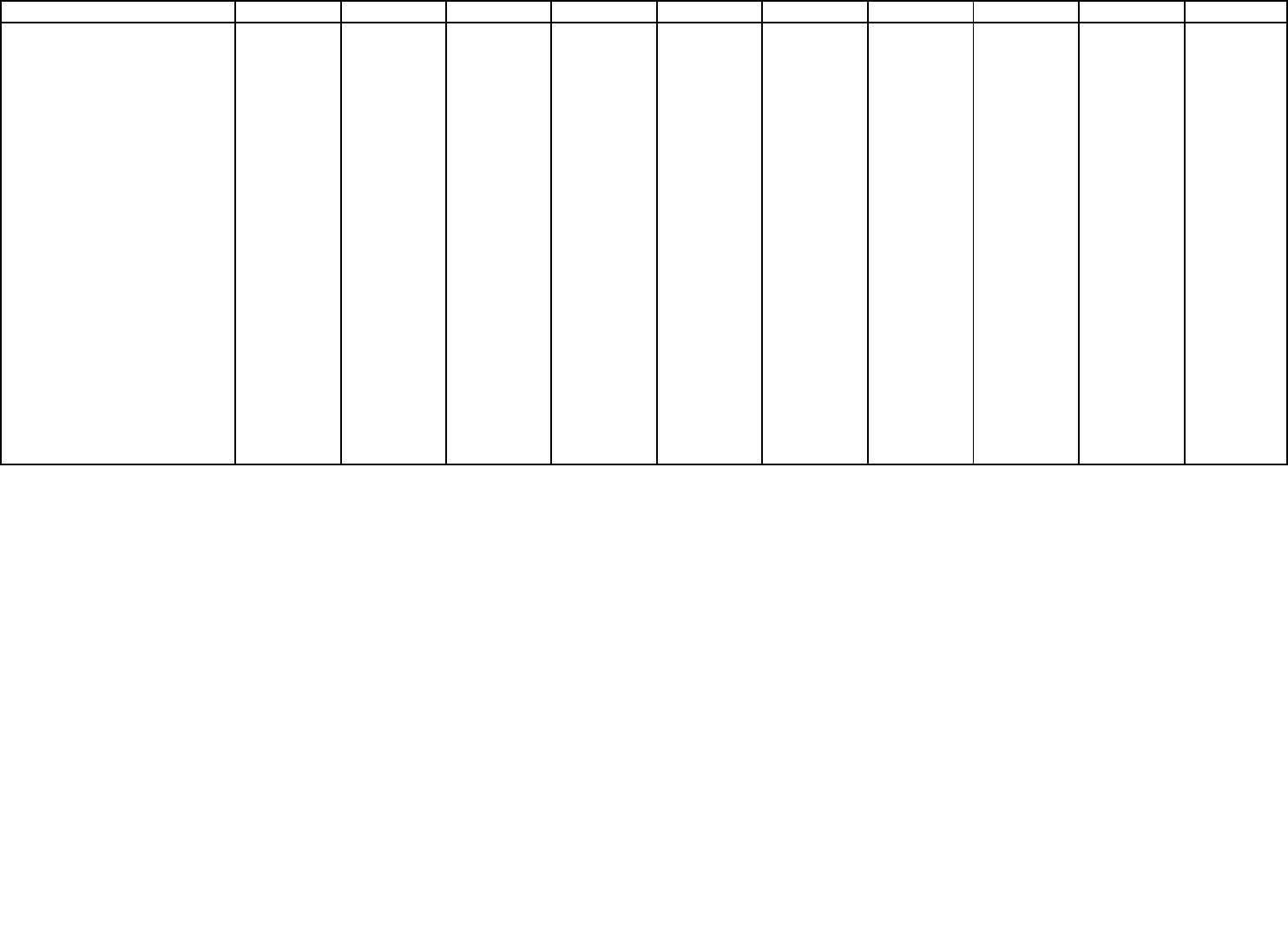
A-29
Table A.18A Past Year Initiation of Specific Substance Use: Among People Aged 12 or Older; 2002-2020
Substance 2002 2003 2004 2005 2006 2007 2008 2009 2010 2011
ILLICIT DRUGS
nc nc nc nc nc nc nc nc nc nc
Marijuana
2,196 (70) 1,973 (70) 2,142 (81) 2,114 (121) 2,061 (79) 2,089 (77) 2,224 (89) 2,379 (79) 2,439 (93) 2,617 (97)
Cocaine
1,032 (61) 986 (56) 998 (65) 872 (50) 977 (60) 906 (57) 724 (52) 623 (47) 642 (57) 670 (48)
Crack
337 (44) 269 (36) 215 (29) 230 (30) 243 (31) 353 (72) 209 (34) 95 (15) 83 (20) 76 (14)
Heroin
117 (20) 92 (20) 118 (28) 108 (20) 90 (15) 106 (21) 116 (23) 187 (30) 142 (24) 178 (26)
Hallucinogens
nc nc nc nc nc nc nc nc nc nc
LSD
338 (30) 200 (20) 235 (25) 243 (29) 265 (32) 271 (23) 400 (31) 341 (28) 381 (39) 358 (30)
PCP
123 (15) 105 (14) 106 (20) 77 (13) 70 (13) 58 (11) 53 (10) 45 (9) 46 (11) 48 (10)
Ecstasy
nc nc nc nc nc nc nc nc nc nc
Inhalants
nc nc nc nc nc nc nc nc nc nc
Methamphetamine
nc nc nc nc nc nc nc nc nc nc
Misuse of Psychotherapeutics
nc nc nc nc nc nc nc nc nc nc
Pain Relievers
nc nc nc nc nc nc nc nc nc nc
Stimulants
nc nc nc nc nc nc nc nc nc nc
Tranquilizers or Sedatives
nc nc nc nc nc nc nc nc nc nc
Tranquilizers
nc nc nc nc nc nc nc nc nc nc
Sedatives
nc nc nc nc nc nc nc nc nc nc
CIGARETTES
1,940 (75) 1,983 (72) 2,122 (72) 2,282 (86) 2,456 (79) 2,231 (71) 2,453 (90) 2,545 (89) 2,403 (81) 2,394 (86)
Daily Cigarette Use
1,016 (64) 1,064 (58) 1,101 (55) 965 (58) 1,049 (54) 983 (52) 945 (57) 1,136 (66) 962 (57) 878 (55)
SMOKELESS TOBACCO
nc nc nc nc nc nc nc nc nc nc
CIGARS
2,858 (103) 2,736 (99) 3,058 (112) 3,349 (113) 3,061 (104) 3,078 (107) 2,918 (105) 3,146 (121) 2,950 (120) 2,800 (143)
ALCOHOL
3,942 (101) 4,082 (104) 4,396 (127) 4,274 (108) 4,378 (107) 4,551 (111) 4,466 (116) 4,561 (112) 4,675 (131) 4,699 (124)
NOTE: Footnotes and source information are shown at the end of the second half of this table.

A-30
Table A.18A Past Year Initiation of Specific Substance Use: Among People Aged 12 or Older; 2002-2020 (continued)
Substance 2012 2013 2014 2015 2016 2017 2018 2019 2020
ILLICIT DRUGS
nc nc nc nr nr nr nr nr nr
Marijuana
2,398 (96) 2,427 (86) 2,568 (95) 2,600 (95) 2,582 (99) 3,033 (117) 3,061 (103) 3,478 (130) 2,839 (178)
Cocaine
639 (48) 601 (47) 766 (57) 968 (68) 1,085 (73) 1,037 (69) 874 (67) 671 (56) 489 (59)
Crack
84 (16) 58 (13) 109 (24) 37 (9) 88 (19) 83 (21) 101 (26) 92 (27) 53 (23)
Heroin
156 (23) 169 (36) 212 (35) 135 (24) 170 (29) 81 (17) 117 (24) 50 (18) 103 (58)
Hallucinogens
nc nc nc 1,160 (69) 1,178 (70) 1,194 (68) 1,116 (72) 1,221 (82) 1,413 (133)
LSD
421 (41) 482 (40) 586 (48) 664 (45) 844 (62) 794 (51) 778 (60) 883 (70) 859 (104)
PCP
90 (21) 32 (7) 41 (10) 42 (11) 43 (20) 23 (8) 14 (6) 30 (9) 52 (27)
Ecstasy
nc nc nc 839 (62) 757 (55) 787 (56) 722 (58) 744 (56) 632 (84)
Inhalants
nc nc nc 600 (44) 526 (43) 575 (42) 576 (45) 730 (54) 678 (79)
Methamphetamine
nc nc nc 225 (37) 192 (32) 195 (31) 205 (31) 184 (33) 153 (41)
Misuse of Psychotherapeutics
nc nc nc nr nr nr nr nr nr
Pain Relievers
nc nc nc 2,126 (115) 2,139 (119) 2,010 (119) 1,908 (121) 1,607 (113) 1,223 (136)
Stimulants
nc nc nc 1,260 (80) 1,374 (89) 1,192 (76) 1,001 (64) 901 (63) 734 (112)
Tranquilizers or Sedatives
nc nc nc nr nr nr nr nr nr
Tranquilizers
nc nc nc 1,437 (94) 1,374 (77) 1,446 (102) 1,210 (88) 949 (78) 950 (149)
Sedatives
nc nc nc 425 (63) 294 (42) 271 (42) 251 (38) 239 (49) 343 (108)
CIGARETTES
2,336 (89) 2,071 (81) 2,164 (90) 1,956 (77) 1,782 (77) 1,898 (80) 1,825 (89) 1,595 (79) 1,264 (110)
Daily Cigarette Use
778 (53) 813 (52) 756 (51) 622 (45) 620 (54) 608 (47) 495 (43) 488 (51) 458 (78)
SMOKELESS TOBACCO
nc nc nc 1,335 (75) 1,157 (86) 1,013 (61) 918 (66) 1,041 (68) 653 (95)
CIGARS
2,664 (108) 2,770 (144) 2,597 (104) 2,569 (110) 2,359 (103) 2,338 (107) 2,274 (101) 2,114 (100) 1,502 (132)
ALCOHOL
4,589 (130) 4,559 (113) 4,655 (127) 4,761 (126) 4,639 (126) 4,914 (136) 4,878 (129) 4,879 (136) 4,076 (202)
LSD = lysergic acid diethylamide; nc = not comparable due to methodological changes; nr = not reported due to measurement issues; PCP = phencyclidine.
NOTE: Estimates shown are numbers in thousands with standard errors included in parentheses.
NOTE: Estimates in the 2020 column are italicized to indicate caution should be used when comparing estimates between 2020 and prior years because of methodological changes for 2020. Due to these changes, significance testing between 2020 and prior years was
not performed. See the 2020 National Survey on Drug Use and Health: Methodological Summary and Definitions for details.
NOTE: Additional estimates may be found in the detailed tables for the 2020 NSDUH at https://www.samhsa.gov/data/. Measures and terms are defined in Appendix A of the 2020 detailed tables.
Source: SAMHSA, Center for Behavioral Health Statistics and Quality, National Survey on Drug Use and Health, 2002-2019 and Quarters 1 and 4, 2020.
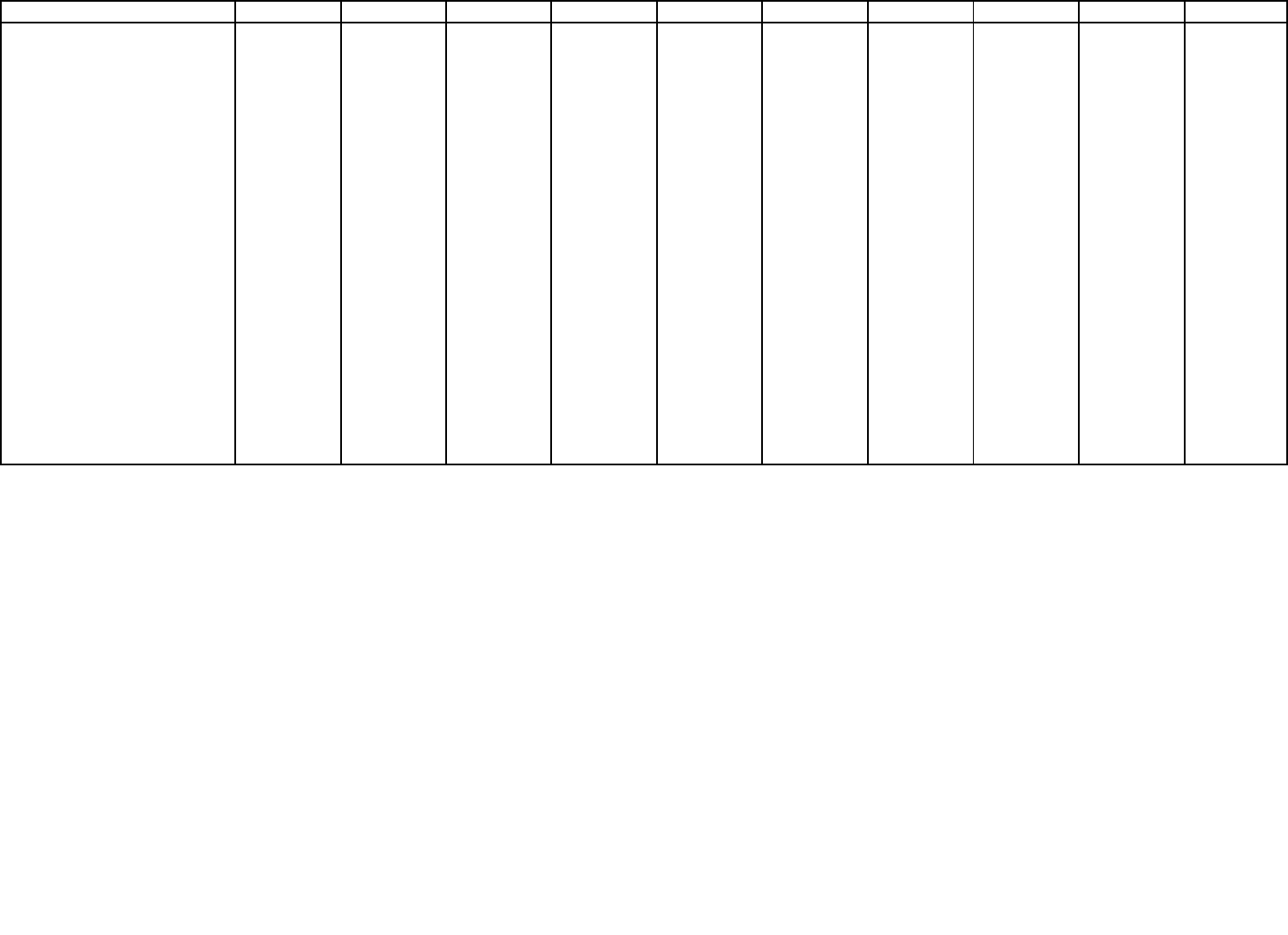
A-31
Table A.19A Past Year Initiation of Specific Substance Use: Among Adolescents Aged 12 to 17; 2002-2020
Substance 2002 2003 2004 2005 2006 2007 2008 2009 2010 2011
ILLICIT DRUGS
nc nc nc nc nc nc nc nc nc nc
Marijuana
1,373 (50) 1,219 (45) 1,252 (45) 1,139 (44) 1,194 (48) 1,168 (45) 1,248 (49) 1,343 (49) 1,274 (51) 1,375 (53)
Cocaine
310 (24) 282 (22) 274 (23) 286 (23) 260 (22) 254 (22) 196 (20) 145 (17) 156 (18) 146 (16)
Crack
86 (13) 76 (11) 42 (9) 32 (7) 41 (8) 52 (10) 17 (5) 18 (5) 14 (4) 19 (5)
Heroin
39 (10) 25 (7) 31 (8) 18 (5) 24 (7) 16 (5) 29 (10) 19 (5) 23 (7) 38 (10)
Hallucinogens
nc nc nc nc nc nc nc nc nc nc
LSD
180 (18) 96 (13) 99 (13) 105 (14) 76 (11) 97 (13) 147 (16) 106 (12) 100 (15) 123 (16)
PCP
77 (11) 59 (10) 43 (9) 55 (11) 43 (10) 38 (8) 37 (7) 26 (7) 22 (6) 29 (7)
Ecstasy
nc nc nc nc nc nc nc nc nc nc
Inhalants
nc nc nc nc nc nc nc nc nc nc
Methamphetamine
nc nc nc nc nc nc nc nc nc nc
Misuse of Psychotherapeutics
nc nc nc nc nc nc nc nc nc nc
Pain Relievers
nc nc nc nc nc nc nc nc nc nc
Stimulants
nc nc nc nc nc nc nc nc nc nc
Tranquilizers or Sedatives
nc nc nc nc nc nc nc nc nc nc
Tranquilizers
nc nc nc nc nc nc nc nc nc nc
Sedatives
nc nc nc nc nc nc nc nc nc nc
CIGARETTES
1,187 (44) 1,226 (47) 1,294 (50) 1,303 (50) 1,333 (48) 1,198 (48) 1,288 (50) 1,273 (50) 1,205 (47) 1,165 (46)
Daily Cigarette Use
403 (27) 439 (27) 417 (32) 334 (24) 386 (27) 333 (23) 277 (23) 313 (24) 286 (24) 268 (22)
SMOKELESS TOBACCO
nc nc nc nc nc nc nc nc nc nc
CIGARS
1,113 (40) 1,163 (46) 1,246 (48) 1,270 (47) 1,217 (42) 1,145 (44) 1,120 (43) 1,085 (43) 940 (40) 969 (41)
ALCOHOL
2,588 (64) 2,593 (65) 2,743 (73) 2,749 (69) 2,706 (68) 2,698 (69) 2,568 (64) 2,662 (69) 2,476 (62) 2,622 (69)
NOTE: Footnotes and source information are shown at the end of the second half of this table.

A-32
Table A.19A Past Year Initiation of Specific Substance Use: Among Adolescents Aged 12 to 17; 2002-2020 (continued)
Substance 2012 2013 2014 2015 2016 2017 2018 2019 2020
ILLICIT DRUGS
nc nc nc nr nr nr nr nr nr
Marijuana
1,255 (49) 1,200 (46) 1,203 (52) 1,169 (50) 1,197 (50) 1,204 (52) 1,339 (56) 1,351 (58) 1,029 (89)
Cocaine
120 (16) 94 (13) 117 (20) 112 (16) 107 (16) 98 (14) 74 (15) 59 (14) 82 (26)
Crack
18 (8) 10 (4) 11 (5) * (*) 6 (3) 9 (4) 4 (3) 11 (7) 2 (2)
Heroin
21 (7) 21 (6) 13 (7) 11 (4) 8 (3) 9 (4) 7 (4) * (*) * (*)
Hallucinogens
nc nc nc 340 (31) 319 (26) 344 (28) 234 (23) 281 (26) 251 (41)
LSD
125 (15) 122 (14) 165 (22) 206 (24) 160 (18) 188 (20) 142 (18) 205 (23) 167 (34)
PCP
45 (11) 19 (6) 17 (6) 34 (11) 12 (4) 13 (5) 5 (3) 16 (7) * (*)
Ecstasy
nc nc nc 168 (22) 143 (19) 146 (20) 105 (18) 116 (19) 78 (19)
Inhalants
nc nc nc 349 (27) 262 (23) 289 (25) 308 (29) 381 (28) 360 (57)
Methamphetamine
nc nc nc 24 (8) 16 (5) 27 (7) 31 (8) 25 (7) 6 (4)
Misuse of Psychotherapeutics
nc nc nc nr nr nr nr nr nr
Pain Relievers
nc nc nc 415 (32) 423 (30) 316 (29) 310 (28) 245 (26) 158 (33)
Stimulants
nc nc nc 276 (27) 244 (28) 217 (25) 181 (19) 238 (26) 116 (26)
Tranquilizers or Sedatives
nc nc nc nr nr nr nr nr nr
Tranquilizers
nc nc nc 210 (23) 228 (22) 223 (23) 215 (23) 185 (22) 103 (33)
Sedatives
nc nc nc 46 (11) 55 (11) 34 (9) 36 (10) 23 (7) 18 (8)
CIGARETTES
1,032 (43) 932 (41) 838 (44) 823 (43) 723 (42) 604 (37) 571 (38) 541 (38) 385 (54)
Daily Cigarette Use
197 (22) 209 (19) 165 (19) 119 (15) 105 (14) 86 (13) 63 (11) 74 (12) 42 (14)
SMOKELESS TOBACCO
nc nc nc 460 (29) 353 (28) 397 (29) 307 (25) 337 (29) 167 (29)
CIGARS
849 (38) 730 (36) 797 (41) 671 (37) 575 (34) 599 (35) 493 (31) 442 (34) 373 (58)
ALCOHOL
2,448 (72) 2,417 (67) 2,335 (67) 2,358 (75) 2,293 (71) 2,332 (66) 2,380 (76) 2,259 (73) 1,817 (117)
* = low precision; LSD = lysergic acid diethylamide; nc = not comparable due to methodological changes; nr = not reported due to measurement issues; PCP = phencyclidine.
NOTE: Estimates shown are numbers in thousands with standard errors included in parentheses.
NOTE: Estimates in the 2020 column are italicized to indicate caution should be used when comparing estimates between 2020 and prior years because of methodological changes for 2020. Due to these changes, significance testing between 2020 and prior years was
not performed. See the 2020 National Survey on Drug Use and Health: Methodological Summary and Definitions for details.
NOTE: Additional estimates may be found in the detailed tables for the 2020 NSDUH at https://www.samhsa.gov/data/. Measures and terms are defined in Appendix A of the 2020 detailed tables.
Source: SAMHSA, Center for Behavioral Health Statistics and Quality, National Survey on Drug Use and Health, 2002-2019 and Quarters 1 and 4, 2020.
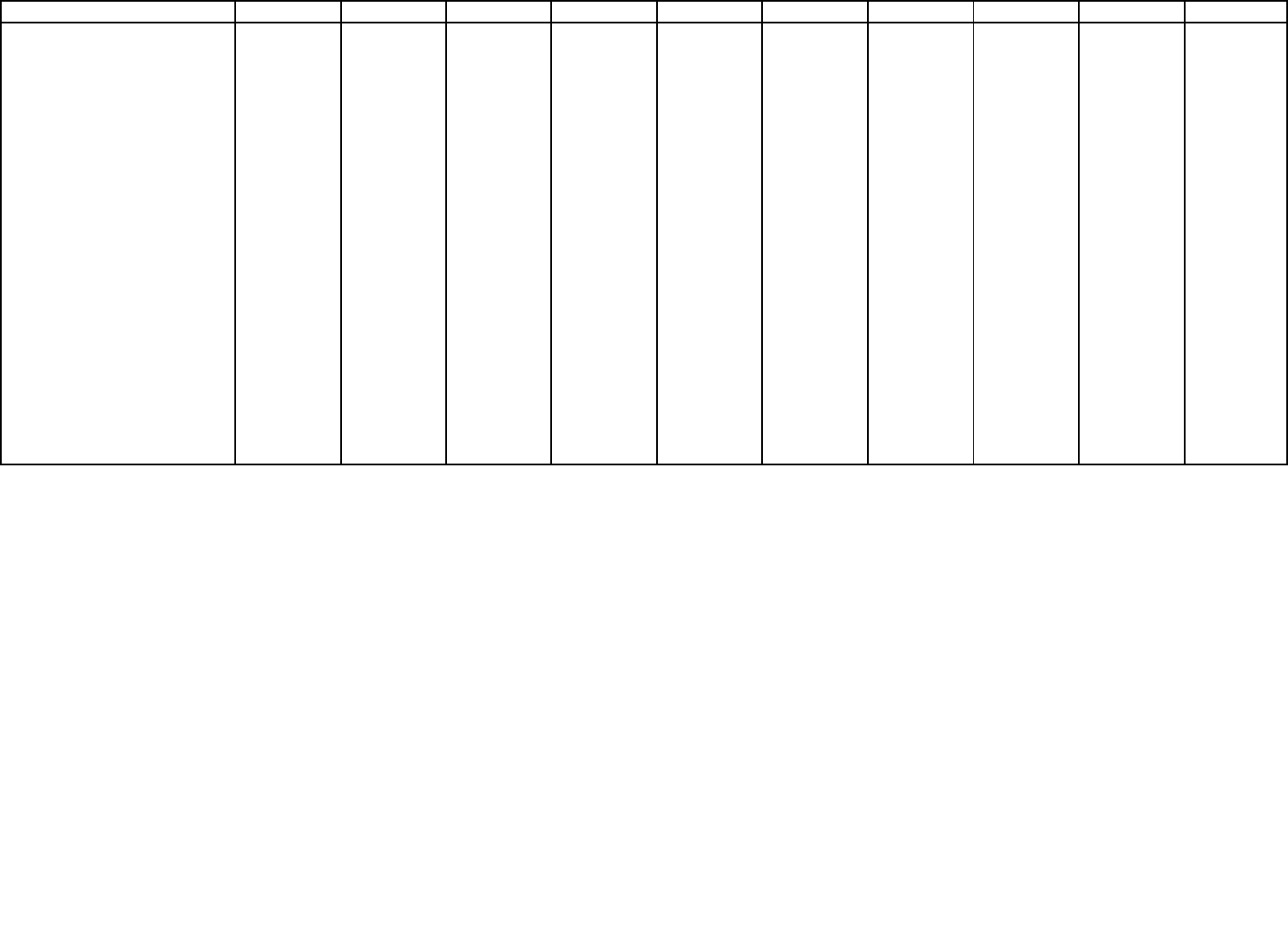
A-33
Table A.20A Past Year Initiation of Specific Substance Use: Among Young Adults Aged 18 to 25; 2002-2020
Substance 2002 2003 2004 2005 2006 2007 2008 2009 2010 2011
ILLICIT DRUGS
nc nc nc nc nc nc nc nc nc nc
Marijuana
733 (37) 666 (37) 714 (45) 723 (45) 742 (46) 787 (45) 817 (49) 988 (55) 918 (51) 1,060 (61)
Cocaine
594 (42) 576 (36) 592 (41) 498 (35) 570 (40) 541 (38) 426 (33) 397 (32) 372 (32) 467 (38)
Crack
100 (15) 109 (15) 120 (17) 142 (21) 132 (18) 88 (15) 91 (15) 62 (11) 39 (8) 40 (9)
Heroin
66 (13) 42 (9) 46 (10) 57 (13) 56 (12) 70 (14) 58 (11) 83 (13) 83 (15) 100 (17)
Hallucinogens
nc nc nc nc nc nc nc nc nc nc
LSD
142 (18) 98 (14) 112 (16) 114 (16) 162 (22) 171 (18) 235 (23) 228 (25) 261 (33) 222 (23)
PCP
46 (11) 41 (9) 49 (14) 22 (6) 27 (8) 19 (7) 16 (6) 17 (6) 24 (9) 18 (8)
Ecstasy
nc nc nc nc nc nc nc nc nc nc
Inhalants
nc nc nc nc nc nc nc nc nc nc
Methamphetamine
nc nc nc nc nc nc nc nc nc nc
Misuse of Psychotherapeutics
nc nc nc nc nc nc nc nc nc nc
Pain Relievers
nc nc nc nc nc nc nc nc nc nc
Stimulants
nc nc nc nc nc nc nc nc nc nc
Tranquilizers or Sedatives
nc nc nc nc nc nc nc nc nc nc
Tranquilizers
nc nc nc nc nc nc nc nc nc nc
Sedatives
nc nc nc nc nc nc nc nc nc nc
CIGARETTES
641 (40) 659 (45) 765 (46) 848 (46) 1,041 (52) 989 (48) 1,076 (58) 1,147 (60) 1,120 (54) 1,156 (59)
Daily Cigarette Use
447 (31) 474 (35) 566 (36) 493 (33) 554 (36) 566 (38) 549 (35) 618 (39) 599 (44) 525 (37)
SMOKELESS TOBACCO
nc nc nc nc nc nc nc nc nc nc
CIGARS
1,031 (46) 1,055 (48) 1,199 (54) 1,332 (58) 1,275 (54) 1,379 (58) 1,277 (54) 1,417 (61) 1,388 (66) 1,238 (58)
ALCOHOL
1,230 (51) 1,430 (64) 1,484 (62) 1,421 (61) 1,612 (68) 1,741 (70) 1,706 (68) 1,775 (66) 2,008 (79) 1,971 (80)
NOTE: Footnotes and source information are shown at the end of the second half of this table.

A-34
Table A.20A Past Year Initiation of Specific Substance Use: Among Young Adults Aged 18 to 25; 2002-2020 (continued)
Substance 2012 2013 2014 2015 2016 2017 2018 2019 2020
ILLICIT DRUGS
nc nc nc nr nr nr nr nr nr
Marijuana
966 (57) 1,017 (54) 1,094 (62) 1,048 (57) 1,013 (58) 1,304 (73) 1,197 (64) 1,240 (65) 1,146 (104)
Cocaine
443 (37) 432 (37) 501 (40) 663 (52) 766 (57) 729 (52) 616 (50) 476 (42) 341 (47)
Crack
49 (11) 25 (6) 54 (14) 37 (9) 48 (14) 21 (7) 36 (10) 17 (6) 29 (14)
Heroin
95 (16) 66 (13) 75 (15) 57 (12) 82 (19) 46 (13) 35 (10) 19 (8) 12 (8)
Hallucinogens
nc nc nc 670 (54) 725 (53) 683 (47) 632 (51) 681 (54) 785 (103)
LSD
264 (33) 312 (31) 371 (37) 387 (35) 567 (48) 487 (39) 468 (42) 460 (46) 521 (81)
PCP
28 (8) 13 (5) 24 (8) 8 (4) 9 (6) 9 (5) 8 (5) 15 (6) 45 (27)
Ecstasy
nc nc nc 531 (45) 460 (42) 507 (44) 460 (45) 448 (41) 309 (54)
Inhalants
nc nc nc 188 (25) 184 (26) 212 (25) 210 (27) 250 (30) 201 (38)
Methamphetamine
nc nc nc 91 (21) 79 (15) 95 (18) 68 (14) 63 (14) 51 (17)
Misuse of Psychotherapeutics
nc nc nc nr nr nr nr nr nr
Pain Relievers
nc nc nc 596 (43) 585 (50) 465 (40) 464 (36) 404 (34) 290 (50)
Stimulants
nc nc nc 600 (48) 617 (49) 581 (47) 517 (40) 364 (37) 294 (50)
Tranquilizers or Sedatives
nc nc nc nr nr nr nr nr nr
Tranquilizers
nc nc nc 489 (40) 617 (45) 473 (40) 434 (38) 329 (38) 290 (55)
Sedatives
nc nc nc 86 (16) 75 (18) 51 (12) 73 (16) 39 (11) 77 (23)
CIGARETTES
1,204 (65) 1,031 (57) 1,181 (72) 1,050 (58) 978 (61) 1,151 (61) 1,141 (65) 964 (56) 752 (84)
Daily Cigarette Use
488 (39) 505 (36) 479 (40) 403 (34) 363 (37) 393 (36) 353 (35) 235 (25) 248 (48)
SMOKELESS TOBACCO
nc nc nc 517 (43) 452 (39) 398 (34) 414 (38) 424 (37) 375 (84)
CIGARS
1,291 (61) 1,334 (61) 1,311 (67) 1,281 (67) 1,226 (68) 1,118 (64) 1,246 (64) 1,154 (64) 678 (72)
ALCOHOL
1,945 (77) 2,056 (76) 2,225 (86) 2,203 (78) 2,191 (86) 2,440 (95) 2,436 (86) 2,415 (88) 2,084 (136)
LSD = lysergic acid diethylamide; nc = not comparable due to methodological changes; nr = not reported due to measurement issues; PCP = phencyclidine.
NOTE: Estimates shown are numbers in thousands with standard errors included in parentheses.
NOTE: Estimates in the 2020 column are italicized to indicate caution should be used when comparing estimates between 2020 and prior years because of methodological changes for 2020. Due to these changes, significance testing between 2020 and prior years was
not performed. See the 2020 National Survey on Drug Use and Health: Methodological Summary and Definitions for details.
NOTE: Additional estimates may be found in the detailed tables for the 2020 NSDUH at https://www.samhsa.gov/data/. Measures and terms are defined in Appendix A of the 2020 detailed tables.
Source: SAMHSA, Center for Behavioral Health Statistics and Quality, National Survey on Drug Use and Health, 2002-2019 and Quarters 1 and 4, 2020.
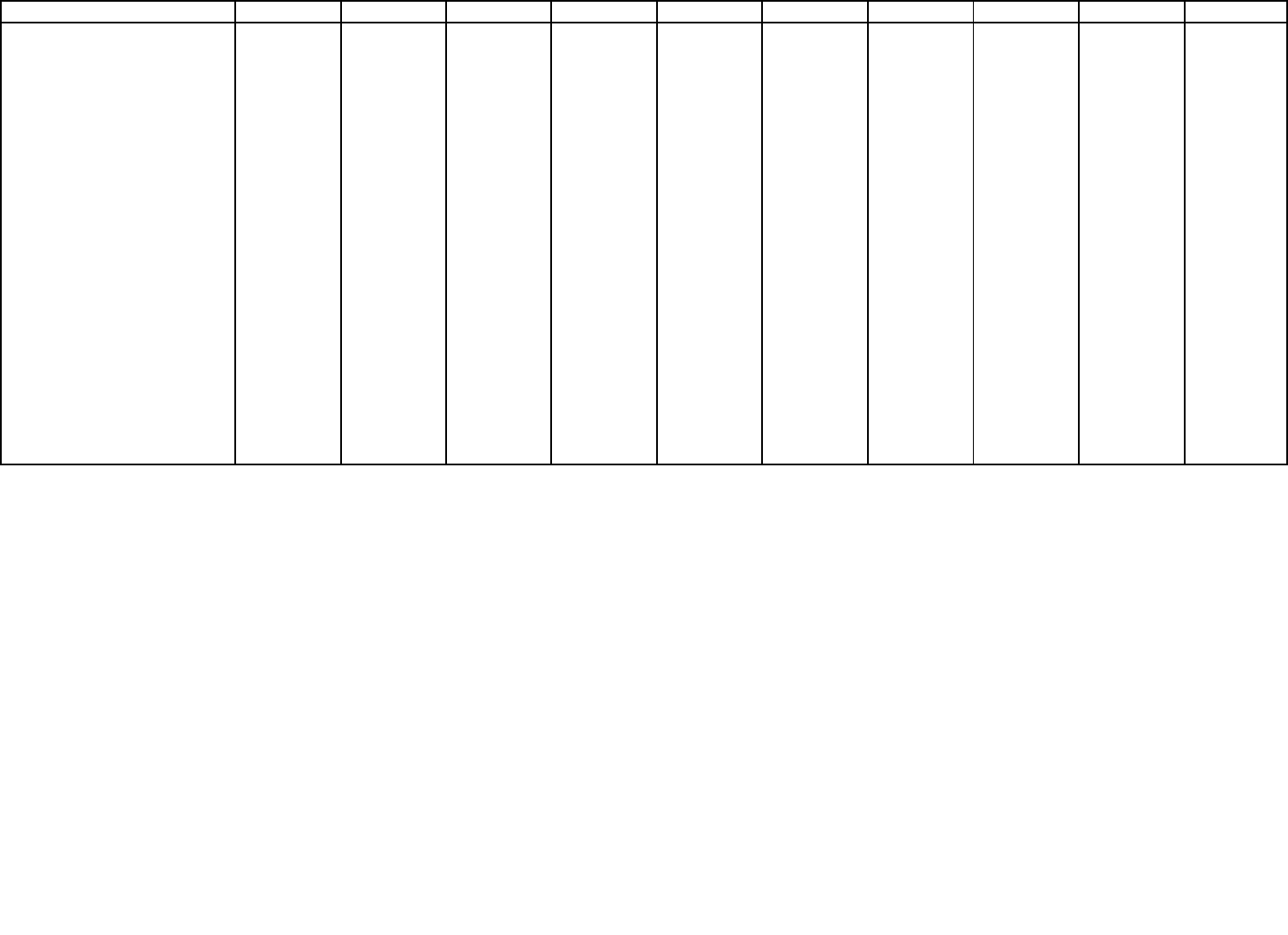
A-35
Table A.21A Past Year Initiation of Specific Substance Use: Among Adults Aged 26 or Older; 2002-2020
Substance 2002 2003 2004 2005 2006 2007 2008 2009 2010 2011
ILLICIT DRUGS
nc nc nc nc nc nc nc nc nc nc
Marijuana
90 (25) 88 (30) 176 (47) 252 (97) 126 (33) 134 (37) 159 (45) 49 (15) 247 (60) 182 (49)
Cocaine
127 (33) 128 (36) 133 (39) 87 (23) 147 (38) 112 (32) 102 (34) 81 (28) 114 (41) 56 (22)
Crack
151 (38) 83 (31) 53 (21) 55 (19) 70 (24) 212 (69) 101 (30) 15 (10) 30 (18) 17 (9)
Heroin
12 (11) 25 (16) 40 (25) 33 (15) 9 (6) 20 (14) 28 (17) 85 (27) 37 (17) 40 (17)
Hallucinogens
nc nc nc nc nc nc nc nc nc nc
LSD
16 (13) * (*) 24 (15) 24 (19) 28 (19) * (*) 18 (12) * (*) 20 (15) 13 (8)
PCP
* (*) * (*) 14 (10) * (*) * (*) * (*) * (*) * (*) * (*) * (*)
Ecstasy
nc nc nc nc nc nc nc nc nc nc
Inhalants
nc nc nc nc nc nc nc nc nc nc
Methamphetamine
nc nc nc nc nc nc nc nc nc nc
Misuse of Psychotherapeutics
nc nc nc nc nc nc nc nc nc nc
Pain Relievers
nc nc nc nc nc nc nc nc nc nc
Stimulants
nc nc nc nc nc nc nc nc nc nc
Tranquilizers or Sedatives
nc nc nc nc nc nc nc nc nc nc
Tranquilizers
nc nc nc nc nc nc nc nc nc nc
Sedatives
nc nc nc nc nc nc nc nc nc nc
CIGARETTES
111 (36) 98 (31) 63 (20) 131 (40) 83 (30) 45 (15) 89 (31) 124 (35) 78 (24) 73 (25)
Daily Cigarette Use
166 (48) 150 (39) 118 (29) 137 (42) 109 (33) 84 (23) 119 (37) 204 (49) 77 (23) 85 (32)
SMOKELESS TOBACCO
nc nc nc nc nc nc nc nc nc nc
CIGARS
714 (82) 518 (74) 614 (79) 747 (86) 570 (77) 555 (73) 521 (77) 644 (90) 622 (87) 593 (119)
ALCOHOL
124 (40) 60 (21) 169 (74) 105 (31) 60 (22) 112 (32) 193 (50) 124 (34) 191 (76) 106 (32)
NOTE: Footnotes and source information are shown at the end of the second half of this table.

A-36
Table A.21A Past Year Initiation of Specific Substance Use: Among Adults Aged 26 or Older; 2002-2020 (continued)
Substance 2012 2013 2014 2015 2016 2017 2018 2019 2020
ILLICIT DRUGS
nc nc nc nr nr nr nr nr nr
Marijuana
177 (53) 210 (44) 271 (45) 383 (55) 372 (53) 525 (68) 525 (61) 887 (94) 664 (111)
Cocaine
76 (26) 75 (29) 148 (35) 193 (39) 213 (39) 210 (37) 184 (34) 135 (32) 66 (23)
Crack
17 (8) 23 (11) 44 (18) * (*) 34 (13) 52 (19) 61 (23) 63 (26) 23 (18)
Heroin
40 (15) 82 (32) 124 (31) 68 (20) 80 (21) 26 (11) 75 (22) 31 (16) 91 (57)
Hallucinogens
nc nc nc 150 (29) 134 (30) 167 (35) 250 (43) 259 (47) 376 (74)
LSD
33 (16) 48 (25) 50 (19) 71 (20) 117 (32) 120 (28) 169 (35) 219 (44) 171 (45)
PCP
17 (16) * (*) * (*) * (*) 22 (19) * (*) * (*) * (*) * (*)
Ecstasy
nc nc nc 141 (31) 154 (27) 134 (31) 157 (33) 180 (36) 245 (60)
Inhalants
nc nc nc 62 (20) 80 (25) 75 (27) 58 (19) 99 (30) 117 (42)
Methamphetamine
nc nc nc 110 (29) 97 (28) 73 (24) 106 (25) 96 (29) 97 (37)
Misuse of Psychotherapeutics
nc nc nc nr nr nr nr nr nr
Pain Relievers
nc nc nc 1,114 (101) 1,130 (102) 1,229 (111) 1,134 (109) 958 (105) 774 (117)
Stimulants
nc nc nc 384 (57) 513 (65) 394 (54) 302 (46) 299 (45) 324 (94)
Tranquilizers or Sedatives
nc nc nc nr nr nr nr nr nr
Tranquilizers
nc nc nc 738 (82) 530 (59) 749 (89) 560 (76) 435 (64) 557 (136)
Sedatives
nc nc nc 293 (61) 164 (37) 186 (39) 143 (33) 176 (47) 249 (106)
CIGARETTES
101 (28) 108 (32) 144 (29) 84 (20) 81 (20) 142 (29) 113 (29) 90 (25) 127 (45)
Daily Cigarette Use
92 (27) 99 (31) 113 (25) 100 (24) 152 (35) 130 (26) 80 (24) 180 (43) 168 (64)
SMOKELESS TOBACCO
nc nc nc 358 (53) 352 (72) 218 (41) 197 (46) 280 (50) 110 (35)
CIGARS
524 (72) 706 (126) 489 (62) 617 (75) 558 (72) 622 (75) 535 (62) 518 (69) 450 (94)
ALCOHOL
196 (56) 85 (26) 95 (37) 200 (48) 156 (44) 143 (38) 63 (16) 205 (40) 176 (56)
* = low precision; LSD = lysergic acid diethylamide; nc = not comparable due to methodological changes; nr = not reported due to measurement issues; PCP = phencyclidine.
NOTE: Estimates shown are numbers in thousands with standard errors included in parentheses.
NOTE: Estimates in the 2020 column are italicized to indicate caution should be used when comparing estimates between 2020 and prior years because of methodological changes for 2020. Due to these changes, significance testing between 2020 and prior years was
not performed. See the 2020 National Survey on Drug Use and Health: Methodological Summary and Definitions for details.
NOTE: Additional estimates may be found in the detailed tables for the 2020 NSDUH at https://www.samhsa.gov/data/. Measures and terms are defined in Appendix A of the 2020 detailed tables.
Source: SAMHSA, Center for Behavioral Health Statistics and Quality, National Survey on Drug Use and Health, 2002-2019 and Quarters 1 and 4, 2020.
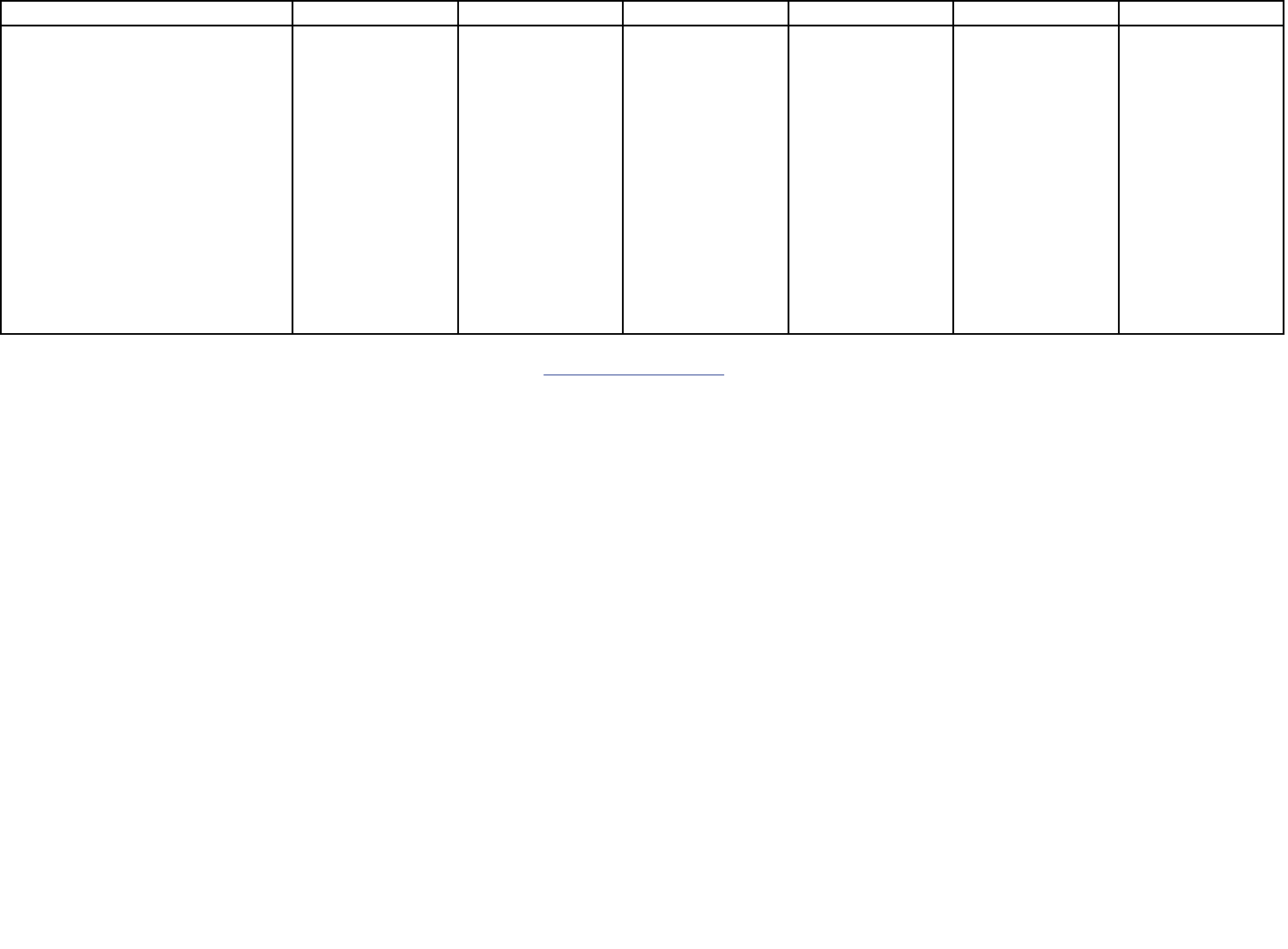
A-37
Table A.22B Perceived Great Risk of Harm Associated with Selected Substance Use: Among People Aged 12 or Older; 2015-2020
Substance/Perceptions of Great Risk
1
2015 2016 2017 2018 2019 2020
Cigarettes
Smoke One or More Packs per Day
72.8 (0.27) 72.8 (0.27) 71.6 (0.27) 71.8 (0.27) 71.2 (0.29) 70.7 (0.45)
Marijuana
Smoke Once a Month
29.1 (0.32) 27.7 (0.29) 26.1 (0.31) 25.0 (0.31) 23.8 (0.31) 21.6 (0.45)
Smoke Once or Twice a Week
36.3 (0.33) 34.0 (0.31) 31.9 (0.32) 30.6 (0.31) 29.2 (0.32) 27.4 (0.49)
Cocaine
Use Once a Month
72.0 (0.27) 71.8 (0.27) 71.3 (0.29) 71.2 (0.29) 70.0 (0.29) 67.2 (0.45)
Use Once or Twice a Week 87.4 (0.19) 87.1 (0.19) 86.8 (0.21) 86.5 (0.21) 85.7 (0.22) 84.7 (0.35)
Heroin
Try Once or Twice
85.2 (0.20) 85.6 (0.21) 86.4 (0.20) 86.2 (0.20) 85.2 (0.20) 83.1 (0.35)
Use Once or Twice a Week
94.2 (0.13) 94.1 (0.14) 94.5 (0.13) 94.3 (0.13) 93.8 (0.14) 93.2 (0.26)
Alcohol
Have Four or Five Drinks Nearly Every Day
68.7 (0.27) 68.3 (0.29) 68.9 (0.28) 68.5 (0.28) 67.9 (0.28) 68.7 (0.46)
NOTE: Estimates shown are percentages with standard errors included in parentheses.
NOTE:
Additional estimates may be found in the detailed tables for the 2020 NSDUH at https://www.samhsa.gov/data/. Measures and terms are defined in Appendix A of the 2020 detailed tables.
1
Respondents with unknown Perception of Great Risk data were excluded.
Source:
SAMHSA, Center for Behavioral Health Statistics and Quality, National Survey on Drug Use and Health, 2015-2019 and Quarters 1 and 4, 2020.
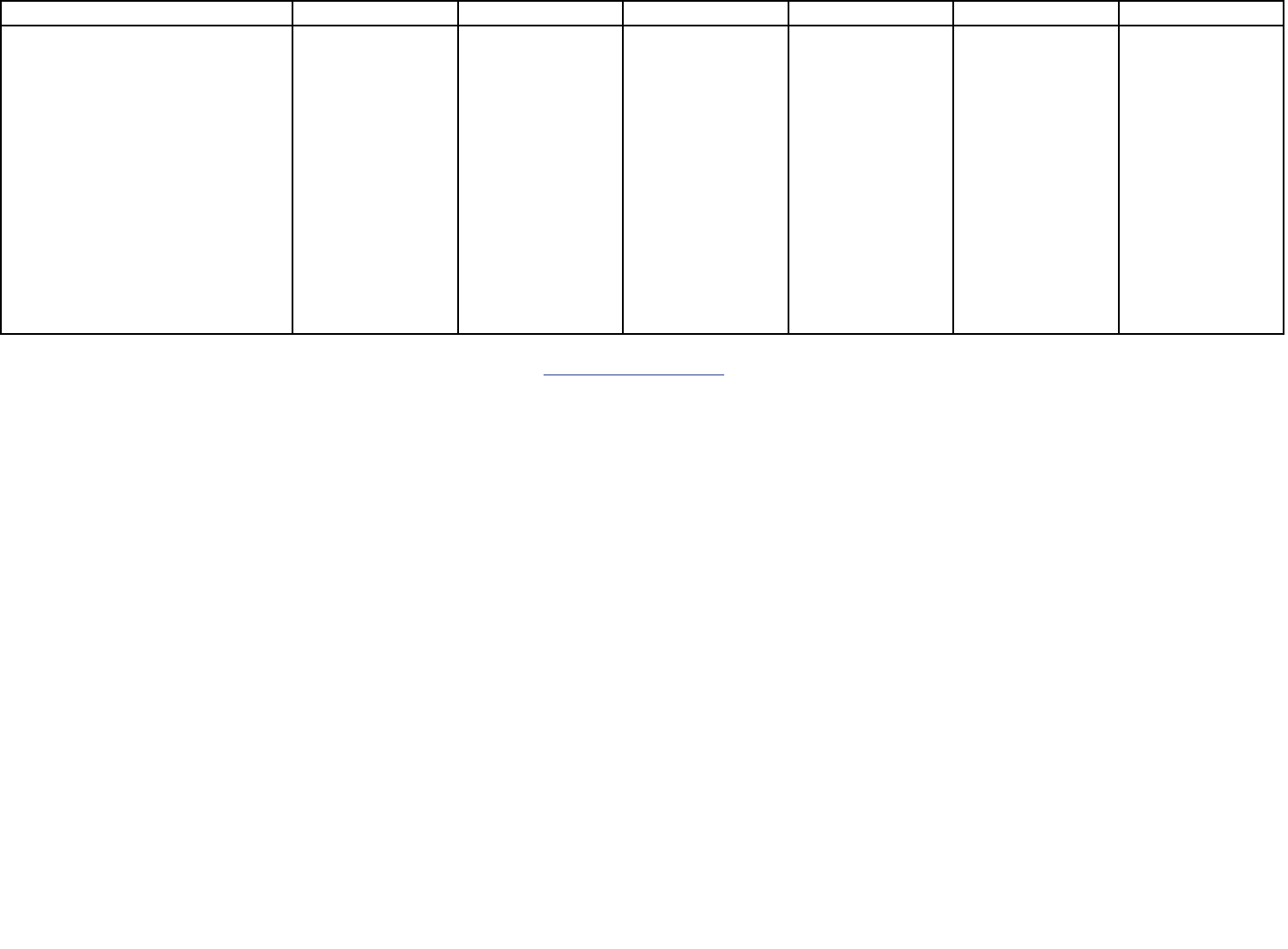
A-38
Table A.23B Perceived Great Risk of Harm Associated with Selected Substance Use: Among Adolescents Aged 12 to 17; 2015-2020
Substance/Perceptions of Great Risk
1
2015 2016 2017 2018 2019 2020
Cigarettes
Smoke One or More Packs per Day
68.2 (0.46) 69.3 (0.47) 67.2 (0.49) 65.3 (0.50) 65.0 (0.53) 67.3 (0.98)
Marijuana
Smoke Once a Month
27.3 (0.44) 27.1 (0.47) 24.4 (0.43) 22.8 (0.41) 22.6 (0.43) 23.1 (0.94)
Smoke Once or Twice a Week
40.6 (0.52) 40.0 (0.53) 37.7 (0.53) 34.9 (0.49) 34.6 (0.50) 37.4 (1.02)
Cocaine
Use Once a Month
56.7 (0.50) 56.4 (0.51) 55.6 (0.49) 54.2 (0.53) 53.9 (0.50) 52.7 (1.07)
Use Once or Twice a Week 80.2 (0.40) 80.6 (0.39) 80.1 (0.42) 79.6 (0.44) 78.7 (0.44) 81.2 (0.83)
Heroin
Try Once or Twice
65.3 (0.51) 65.6 (0.47) 66.3 (0.47) 64.5 (0.52) 62.9 (0.50) 61.2 (1.07)
Use Once or Twice a Week
82.9 (0.38) 83.4 (0.38) 84.0 (0.39) 83.0 (0.39) 82.1 (0.41) 83.1 (0.83)
Alcohol
Have Four or Five Drinks Nearly Every Day
64.1 (0.50) 65.5 (0.47) 65.2 (0.47) 64.4 (0.51) 63.5 (0.52) 66.7 (1.01)
NOTE: Estimates shown are percentages with standard errors included in parentheses.
NOTE:
Additional estimates may be found in the detailed tables for the 2020 NSDUH at https://www.samhsa.gov/data/. Measures and terms are defined in Appendix A of the 2020 detailed tables.
1
Respondents with unknown Perception of Great Risk data were excluded.
Source:
SAMHSA, Center for Behavioral Health Statistics and Quality, National Survey on Drug Use and Health, 2015-2019 and Quarters 1 and 4, 2020.
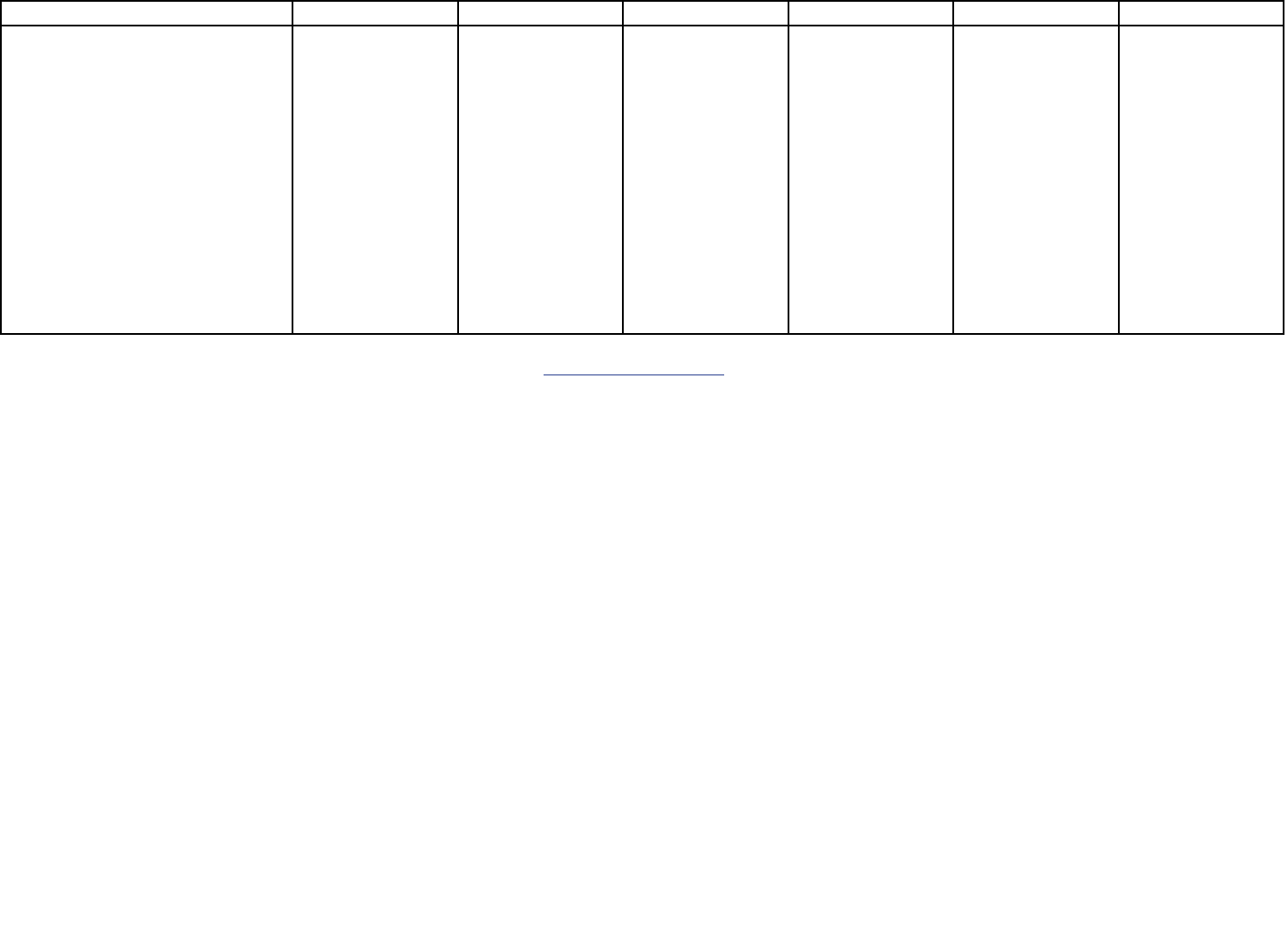
A-39
Table A.24B Perceived Great Risk of Harm Associated with Selected Substance Use: Among Young Adults Aged 18 to 25; 2015-2020
Substance/Perceptions of Great Risk
1
2015 2016 2017 2018 2019 2020
Cigarettes
Smoke One or More Packs per Day
68.0 (0.43) 68.6 (0.46) 66.6 (0.50) 67.5 (0.46) 66.2 (0.48) 66.5 (0.85)
Marijuana
Smoke Once a Month
15.2 (0.35) 13.5 (0.35) 12.3 (0.36) 12.0 (0.34) 11.8 (0.36) 11.8 (0.60)
Smoke Once or Twice a Week
19.1 (0.40) 17.2 (0.39) 15.4 (0.40) 15.4 (0.38) 15.0 (0.40) 14.8 (0.66)
Cocaine
Use Once a Month
65.3 (0.51) 64.8 (0.51) 63.0 (0.53) 62.7 (0.56) 62.6 (0.52) 59.3 (0.88)
Use Once or Twice a Week 84.3 (0.36) 83.6 (0.38) 83.3 (0.37) 82.6 (0.39) 82.6 (0.40) 82.2 (0.70)
Heroin
Try Once or Twice
82.6 (0.38) 83.0 (0.39) 82.6 (0.39) 82.5 (0.36) 82.4 (0.39) 80.1 (0.76)
Use Once or Twice a Week
94.0 (0.24) 93.5 (0.25) 93.9 (0.25) 93.3 (0.26) 93.3 (0.25) 93.3 (0.52)
Alcohol
Have Four or Five Drinks Nearly Every Day
62.1 (0.47) 62.3 (0.46) 63.2 (0.50) 63.4 (0.49) 62.4 (0.51) 64.6 (0.87)
NOTE: Estimates shown are percentages with standard errors included in parentheses.
NOTE:
Additional estimates may be found in the detailed tables for the 2020 NSDUH at https://www.samhsa.gov/data/. Measures and terms are defined in Appendix A of the 2020 detailed tables.
1
Respondents with unknown Perception of Great Risk data were excluded.
Source:
SAMHSA, Center for Behavioral Health Statistics and Quality, National Survey on Drug Use and Health, 2015-2019 and Quarters 1 and 4, 2020.
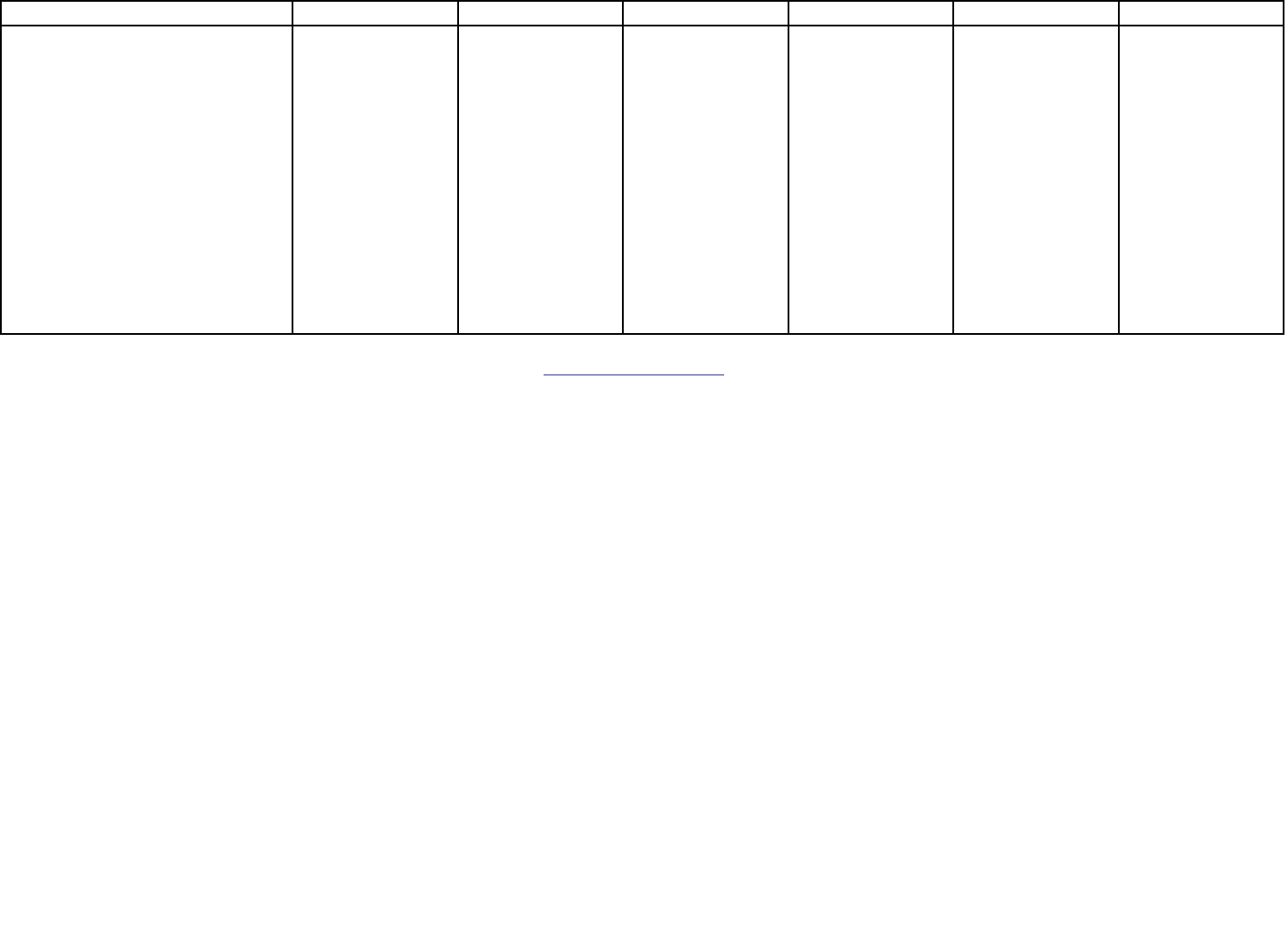
A-40
Table A.25B Perceived Great Risk of Harm Associated with Selected Substance Use: Among Adults Aged 26 or Older; 2015-2020
Substance/Perceptions of Great Risk
1
2015 2016 2017 2018 2019 2020
Cigarettes
Smoke One or More Packs per Day
74.2 (0.32) 73.9 (0.33) 73.0 (0.33) 73.2 (0.33) 72.7 (0.35) 71.8 (0.54)
Marijuana
Smoke Once a Month
31.7 (0.40) 30.2 (0.36) 28.5 (0.38) 27.3 (0.38) 25.8 (0.37) 22.9 (0.55)
Smoke Once or Twice a Week
38.7 (0.40) 36.1 (0.38) 34.0 (0.39) 32.5 (0.38) 30.8 (0.39) 28.2 (0.60)
Cocaine
Use Once a Month
75.0 (0.33) 74.7 (0.32) 74.5 (0.35) 74.5 (0.35) 73.0 (0.35) 70.0 (0.53)
Use Once or Twice a Week 88.8 (0.23) 88.4 (0.24) 88.2 (0.25) 87.9 (0.25) 86.9 (0.26) 85.5 (0.42)
Heroin
Try Once or Twice
88.0 (0.24) 88.4 (0.24) 89.3 (0.24) 89.3 (0.23) 88.2 (0.23) 86.0 (0.38)
Use Once or Twice a Week
95.5 (0.16) 95.4 (0.16) 95.8 (0.16) 95.7 (0.15) 95.2 (0.17) 94.3 (0.29)
Alcohol
Have Four or Five Drinks Nearly Every Day
70.4 (0.34) 69.6 (0.35) 70.2 (0.35) 69.7 (0.34) 69.3 (0.33) 69.5 (0.55)
NOTE: Estimates shown are percentages with standard errors included in parentheses.
NOTE:
Additional estimates may be found in the detailed tables for the 2020 NSDUH at https://www.samhsa.gov/data/. Measures and terms are defined in Appendix A of the 2020 detailed tables.
1
Respondents with unknown Perception of Great Risk data were excluded.
Source:
SAMHSA, Center for Behavioral Health Statistics and Quality, National Survey on Drug Use and Health, 2015-2019 and Quarters 1 and 4, 2020.
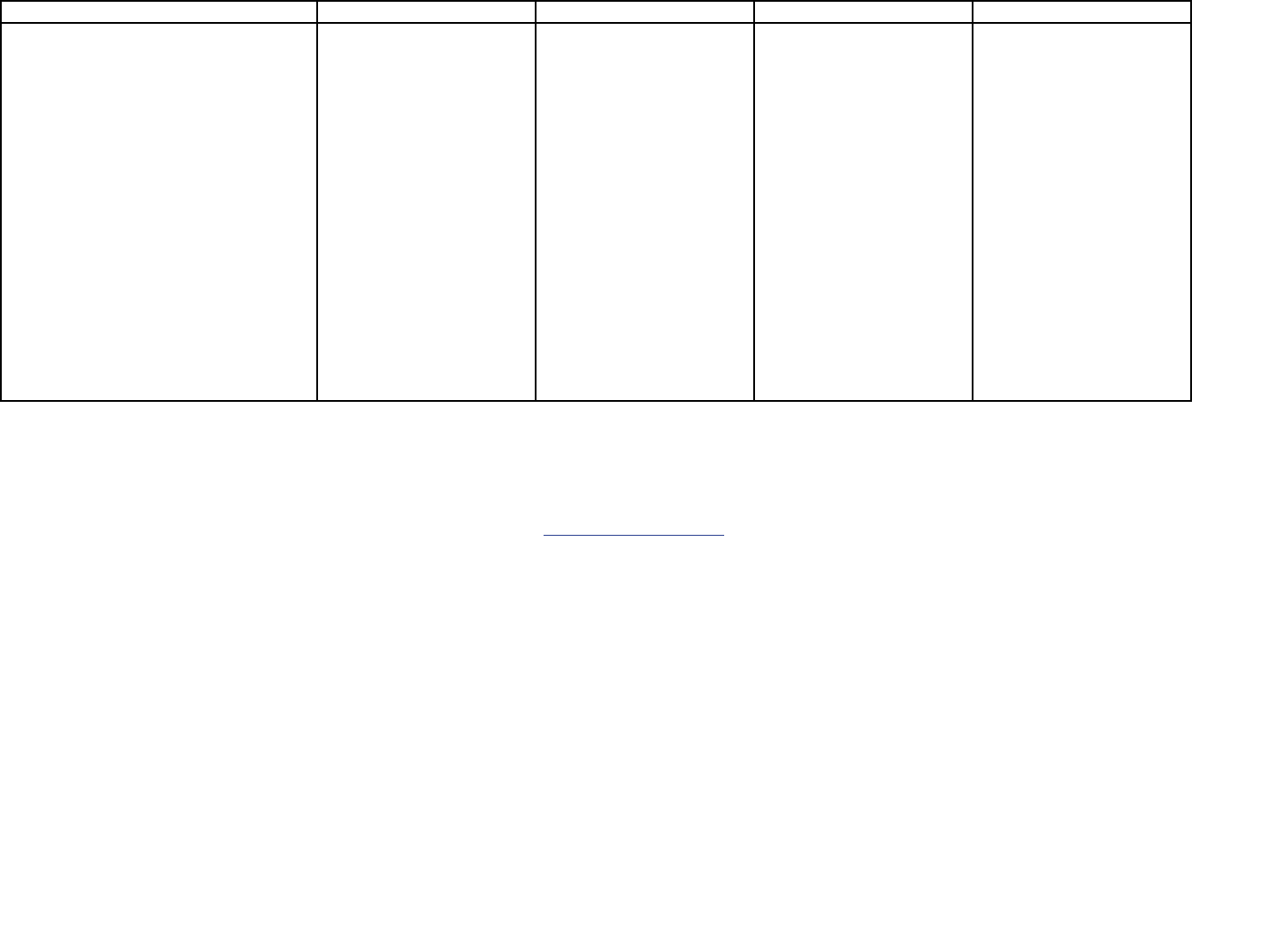
A-41
Table A.26B Substance Use Disorder for Specific Substances in the Past Year: Among People Aged 12 or Older; by Age Group, 2020
Substance Use Disorder
Aged 12 or Older Aged 12 to 17 Aged 18 to 25 Aged 26 or Older
ALCOHOL OR ILLICIT DRUGS
1
14.5 (0.33) 6.3 (0.49) 24.4 (0.83) 14.0 (0.39)
ALCOHOL 10.2 (0.29) 2.8 (0.34) 15.6 (0.72) 10.3 (0.34)
ILLICIT DRUGS 6.6 (0.21) 4.9 (0.42) 14.6 (0.63) 5.6 (0.24)
Marijuana
5.1 (0.18) 4.1 (0.38) 13.5 (0.61) 4.0 (0.19)
Cocaine 0.5 (0.06) 0.1 (0.06) 0.7 (0.13) 0.5 (0.07)
Heroin 0.2 (0.05) * (*) 0.1 (0.05) 0.3 (0.06)
Hallucinogens
0.1 (0.02) 0.3 (0.08) 0.4 (0.09) 0.1 (0.02)
Inhalants
0.1 (0.02) 0.3 (0.14) 0.1 (0.06) 0.0 (0.02)
Methamphetamine
0.6 (0.07) 0.1 (0.05) 0.3 (0.07) 0.6 (0.09)
Misuse of Psychotherapeutics 1.3 (0.11) 0.6 (0.12) 1.6 (0.21) 1.3 (0.14)
Pain Relievers
0.8 (0.09) 0.3 (0.10) 0.8 (0.14) 0.9 (0.11)
Stimulants
0.3 (0.04) 0.2 (0.05) 0.4 (0.10) 0.3 (0.05)
Tranquilizers or Sedatives
0.4 (0.06) 0.3 (0.09) 0.7 (0.13) 0.4 (0.07)
Tranquilizers 0.3 (0.05) 0.3 (0.09) 0.6 (0.12) 0.3 (0.06)
Sedatives 0.1 (0.04) 0.0 (0.02) 0.1 (0.06) 0.1 (0.05)
Opioids
1.0 (0.10) 0.3 (0.10) 0.9 (0.14) 1.1 (0.12)
Central Nervous System Stimulants
1.1 (0.10) 0.4 (0.09) 1.3 (0.18) 1.2 (0.12)
BOTH ALCOHOL AND ILLICIT DRUGS 2.3 (0.12) 1.4 (0.22) 5.7 (0.42) 1.9 (0.14)
* = low precision.
NOTE:
Estimates shown are percentages with standard errors included in parentheses.
NOTE:
Substance use disorder (SUD) estimates in 2020 are based on criteria from the Diagnostic and Statistical Manual of Mental Disorders, 5th edition. SUD and related estimates are not comparable between 2020
and prior years of NSDUH because prior years’ estimates were based on criteria from the Diagnostic and Statistical Manual of Mental Disorders, 4th edition. The 2020 estimates reflect additional
methodological changes for the 2020 NSDUH. Due to these changes, estimates are shown for 2020 only. See the 2020 National Survey on Drug Use and Health: Methodological Summary and Definitions for
details on these changes.
NOTE:
Additional estimates may be found in the detailed tables for the 2020 NSDUH at https://www.samhsa.gov/data/. Measures and terms are defined in Appendix A of the 2020 detailed tables.
NOTE: Estimates of 0.0 percent round to less than 0.1 percent when shown to the nearest tenth of a percent.
1
The term “alcohol or illicit drugs” in this table corresponds to the term “substance use disorder” in the main body of the report.
Source:
SAMHSA, Center for Behavioral Health Statistics and Quality, National Survey on Drug Use and Health, Quarters 1 and 4, 2020.
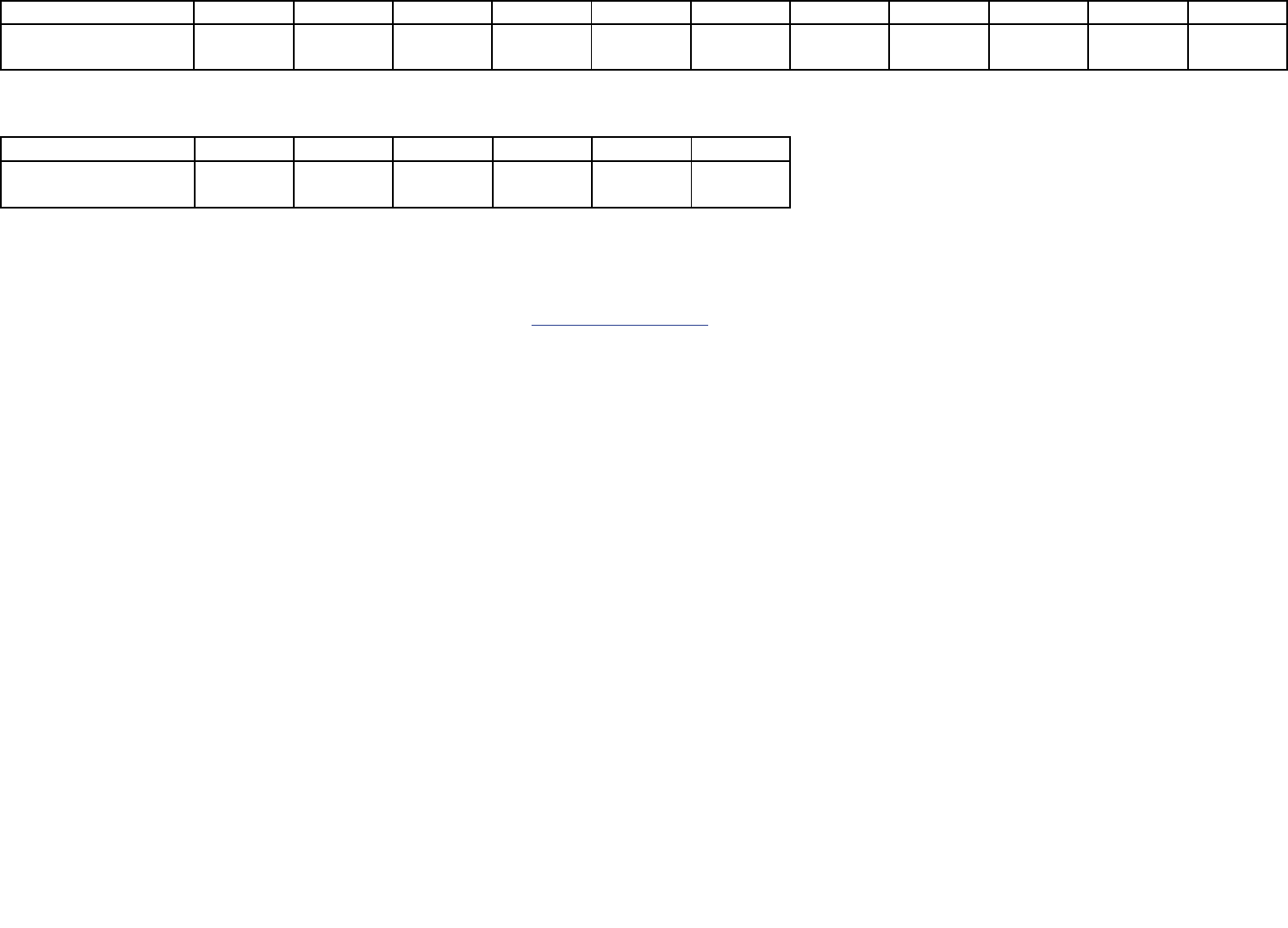
A-42
Table A.27B Major Depressive Episode (MDE) and MDE with Severe Impairment in the Past Year: Among Adolescents Aged 12 to 17; 2004-2020
MDE 2004 2005 2006 2007 2008 2009 2010 2011 2012 2013 2014
MDE 9.0 (0.25) 8.8 (0.25) 7.9 (0.24) 8.2 (0.25) 8.3 (0.25) 8.1 (0.24) 8.0 (0.24) 8.2 (0.24) 9.1 (0.26) 10.7 (0.30) 11.4 (0.32)
MDE with Severe Impairment
1
-- -- 5.5 (0.20) 5.5 (0.20) 6.0 (0.22) 5.8 (0.20) 5.7 (0.20) 5.7 (0.19) 6.3 (0.22) 7.7 (0.26) 8.2 (0.27)
NOTE: Footnotes and source information are shown at the end of the second half of this table.
Table A.27B Major Depressive Episode (MDE) and MDE with Severe Impairment in the Past Year: Among Adolescents Aged 12 to 17; 2004-2020 (continued)
MDE 2015 2016 2017 2018 2019 2020
MDE 12.5
(0.33)
12.8
(0.32)
13.3
(0.35)
14.4
(0.36)
15.7
(0.37)
17.0
(0.82)
MDE with Severe Impairment
1
8.8
(0.28)
9.0
(0.27)
9.4
(0.31)
10.0
(0.29)
11.1
(0.32)
12.0
(0.66)
-- = not available.
NOTE:
Estimates shown are percentages with standard errors included in parentheses.
NOTE:
Respondents with unknown past year MDE data were excluded.
NOTE:
Estimates in the 2020 column are italicized to indicate caution should be used when comparing estimates between 2020 and prior years because of methodological changes for 2020. Due to these changes,
significance testing between 2020 and prior years was not performed. See the 2020 National Survey on Drug Use and Health: Methodological Summary and Definitions for details.
NOTE:
Additional estimates may be found in the detailed tables for the 2020 NSDUH at https://www.samhsa.gov/data/. Measures and terms are defined in Appendix A of the 2020 detailed tables.
1
Impairment is based on the Sheehan Disability Scale role domains, which measure the impact of a disorder on an adolescent’s life. Impairment is defined as the highest severity level of role impairment across four
domains: (1) chores at home, (2) school or work, (3) close relationships with family, and (4) social life. Ratings ≥ 7 on a 0 to 10 scale were considered Severe Impairment. Respondents with unknown impairment data
were excluded.
Source:
SAMHSA, Center for Behavioral Health Statistics and Quality, National Survey on Drug Use and Health, 2004-2019 and Quarters 1 and 4, 2020.
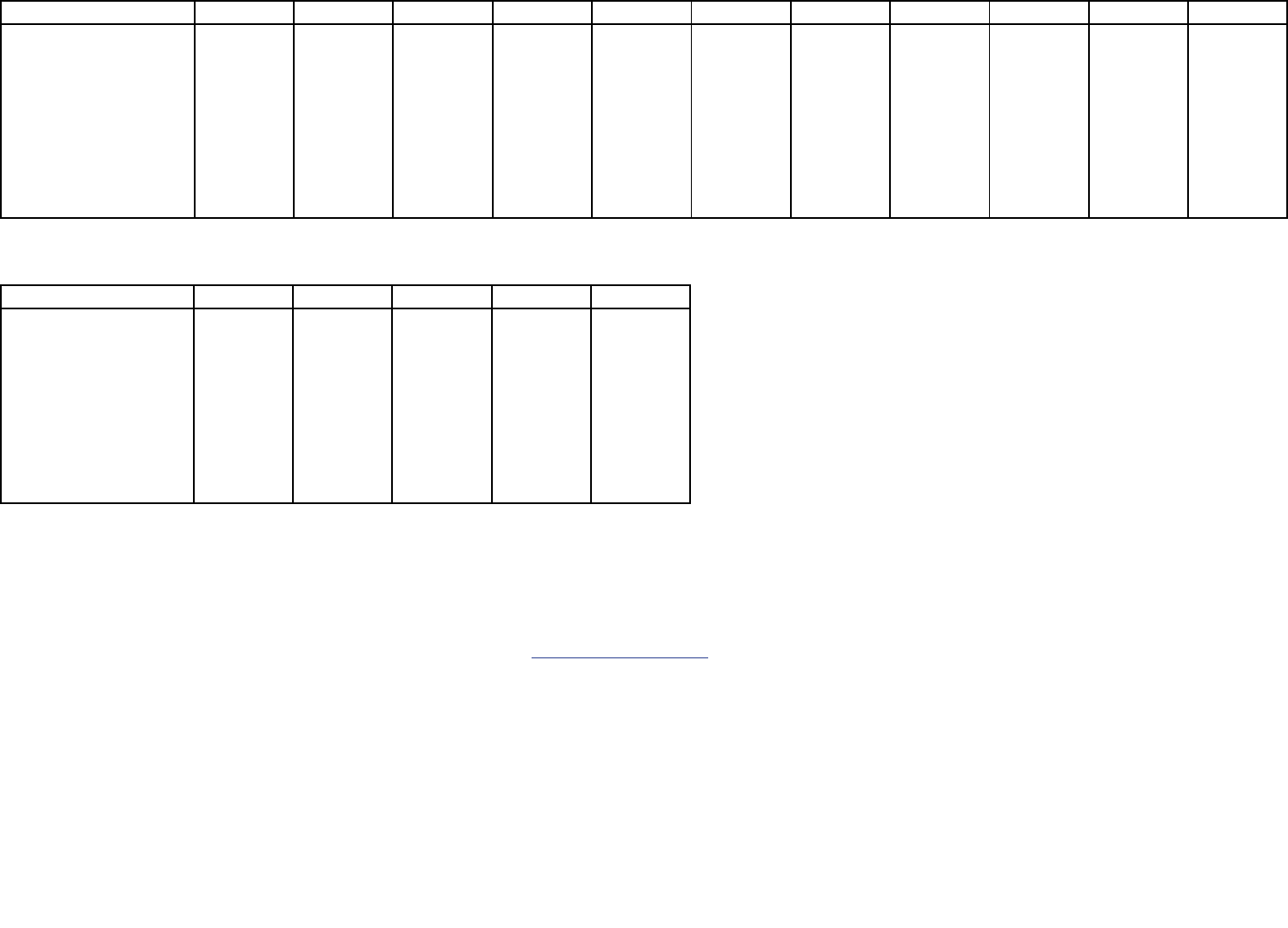
A-43
Table A.28B Major Depressive Episode (MDE) and MDE with Severe Impairment in the Past Year: Among Adults Aged 18 or Older; by Age Group, 2005-2020
MDE/Age Group 2005 2006 2007 2008 2009 2010 2011 2012 2013 2014 2015
MDE 6.6 (0.19) 6.5 (0.18) 6.7 (0.18) 6.5 (0.18) 6.6 (0.18) 6.8 (0.19) 6.6 (0.18) 6.9 (0.19) 6.7 (0.19) 6.6 (0.15) 6.7 (0.15)
18-25 8.8 (0.26) 8.1 (0.23) 8.0 (0.24) 8.4 (0.25) 8.0 (0.24) 8.3 (0.25) 8.3 (0.25) 8.9 (0.27) 8.7 (0.26) 9.3 (0.29) 10.3 (0.28)
26-49 7.6 (0.27) 7.7 (0.29) 7.6 (0.26) 7.4 (0.27) 7.6 (0.26) 7.5 (0.27) 7.7 (0.28) 7.6 (0.27) 7.6 (0.29) 7.2 (0.21) 7.5 (0.21)
50 or Older 4.5 (0.32) 4.5 (0.29) 5.2 (0.34) 4.8 (0.35) 4.9 (0.32) 5.6 (0.35) 4.8 (0.30) 5.5 (0.34) 5.1 (0.31) 5.2 (0.24) 4.8 (0.26)
MDE with Severe
Impairment
1
-- -- -- -- 4.0 (0.14) 4.2 (0.15) 4.2 (0.15) 4.5 (0.15) 4.3 (0.15) 4.3 (0.12) 4.3 (0.12)
18-25 -- -- -- -- 5.2 (0.20) 5.2 (0.21) 5.2 (0.20) 5.8 (0.21) 5.7 (0.22) 6.0 (0.24) 6.5 (0.23)
26-49 -- -- -- -- 4.8 (0.21) 4.7 (0.21) 5.2 (0.23) 5.1 (0.23) 4.9 (0.24) 4.6 (0.17) 4.9 (0.17)
50 or Older -- -- -- -- 2.6 (0.23) 3.5 (0.28) 2.9 (0.24) 3.4 (0.28) 3.2 (0.25) 3.5 (0.21) 3.0 (0.21)
NOTE: Footnotes and source information are shown at the end of the second half of this table.
Table A.28B Major Depressive Episode (MDE) and MDE with Severe Impairment in the Past Year: Among Adults Aged 18 or Older; by Age Group, 2005-2020 (continued)
MDE/Age Group 2016 2017 2018 2019 2020
MDE
6.7 (0.15) 7.1 (0.16) 7.2 (0.15) 7.8 (0.16) 8.4 (0.27)
18-25 10.9 (0.31) 13.1 (0.34) 13.8 (0.34) 15.2 (0.37) 17.0 (0.69)
26-49 7.4 (0.21) 7.7 (0.23) 8.0 (0.23) 8.9 (0.22) 9.1 (0.36)
50 or Older 4.8 (0.25) 4.7 (0.24) 4.5 (0.24) 4.7 (0.24) 5.4 (0.41)
MDE with Severe
Impairment
1
4.3 (0.12) 4.5 (0.12) 4.7 (0.13) 5.3 (0.13) 6.0 (0.23)
18-25 7.0 (0.27) 8.5 (0.29) 8.9 (0.28) 10.3 (0.30) 12.1 (0.57)
26-49 4.7 (0.16) 5.0 (0.18) 5.3 (0.19) 6.1 (0.18) 6.5 (0.32)
50 or Older 3.0 (0.22) 2.8 (0.18) 2.9 (0.20) 3.2 (0.21) 3.8 (0.35)
-- = not available.
NOTE:
Estimates shown are percentages with standard errors included in parentheses.
NOTE:
Respondents with unknown past year MDE data were excluded.
NOTE:
Estimates in the 2020 column are italicized to indicate caution should be used when comparing estimates between 2020 and prior years because of methodological changes for 2020. Due to these changes,
significance testing between 2020 and prior years was not performed. See the 2020 National Survey on Drug Use and Health: Methodological Summary and Definitions for details.
NOTE:
Estimates in this table for 2020 exclude a subset of respondents who did not complete the questionnaire. The analysis weights and estimates were adjusted for the reduced sample size. See the 2020 National
Survey on Drug Use and Health: Methodological Summary and Definitions for details.
NOTE:
Additional estimates may be found in the detailed tables for the 2020 NSDUH at https://www.samhsa.gov/data/. Measures and terms are defined in Appendix A of the 2020 detailed tables.
1
Impairment is based on the Sheehan Disability Scale role domains, which measure the impact of a disorder on an adult’s life. Impairment is defined as the highest severity level of role impairment across four domains:
(1) home management, (2) work, (3) close relationships with others, and (4) social life. Ratings ≥ 7 on a 0 to 10 scale were considered Severe Impairment. Respondents with unknown impairment data were excluded.
Source:
SAMHSA, Center for Behavioral Health Statistics and Quality, National Survey on Drug Use and Health, 2005-2019 and Quarters 1 and 4, 2020.
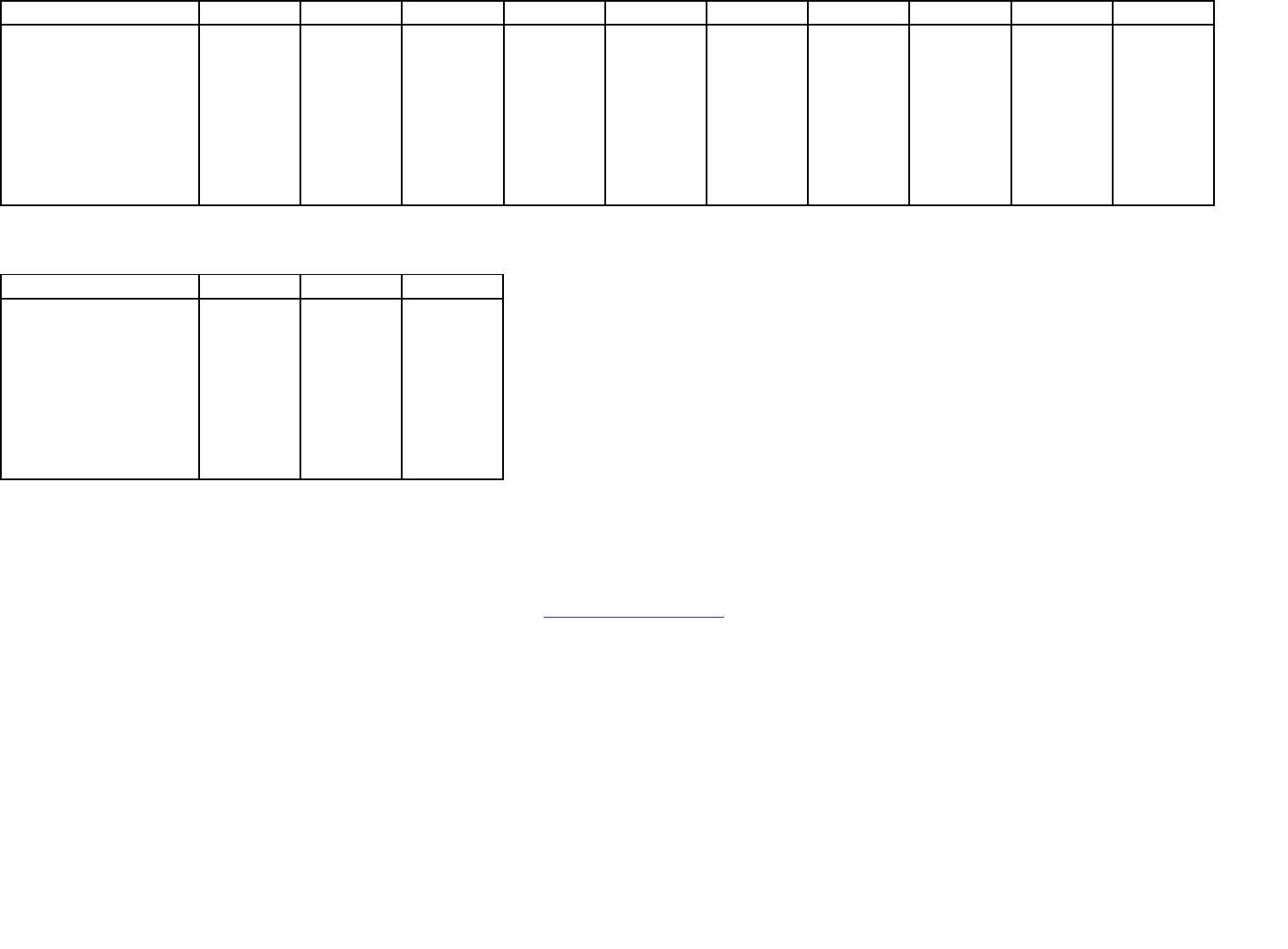
A-44
Table A.29B Level of Mental Illness in the Past Year: Among Adults Aged 18 or Older; by Age Group, 2008-2020
Mental Illness/Age Group 2008 2009 2010 2011 2012 2013 2014 2015 2016 2017
AMI 17.7 (0.30) 18.1 (0.31) 18.1 (0.30) 17.8 (0.30) 18.6 (0.31) 18.5 (0.31) 18.1 (0.23) 17.9 (0.25) 18.3 (0.24) 18.9 (0.27)
18-25 18.5 (0.34) 18.0 (0.32) 18.1 (0.35) 18.5 (0.37) 19.6 (0.35) 19.4 (0.36) 20.1 (0.39) 21.7 (0.38) 22.1 (0.43) 25.8 (0.49)
26-49 20.7 (0.42) 21.6 (0.43) 20.9 (0.42) 20.3 (0.43) 21.2 (0.44) 21.5 (0.45) 20.4 (0.34) 20.9 (0.34) 21.1 (0.33) 22.2 (0.36)
50 or Older 14.1 (0.59) 14.5 (0.54) 15.1 (0.55) 15.0 (0.53) 15.8 (0.55) 15.3 (0.52) 15.4 (0.40) 14.0 (0.42) 14.5 (0.40) 13.8 (0.42)
SMI 3.7 (0.14) 3.7 (0.14) 4.1 (0.16) 3.9 (0.14) 4.1 (0.14) 4.2 (0.16) 4.1 (0.12) 4.0 (0.12) 4.2 (0.12) 4.5 (0.12)
18-25 3.8 (0.16) 3.3 (0.15) 3.9 (0.17) 3.8 (0.17) 4.1 (0.17) 4.2 (0.18) 4.8 (0.21) 5.0 (0.21) 5.9 (0.24) 7.5 (0.26)
26-49 4.8 (0.21) 4.9 (0.22) 5.2 (0.23) 5.0 (0.22) 5.2 (0.23) 5.3 (0.25) 4.9 (0.18) 5.0 (0.18) 5.3 (0.18) 5.6 (0.19)
50 or Older 2.5 (0.24) 2.5 (0.23) 3.0 (0.27) 2.8 (0.22) 3.0 (0.25) 3.2 (0.26) 3.1 (0.19) 2.8 (0.20) 2.7 (0.20) 2.7 (0.19)
NOTE: Footnotes and source information are shown at the end of the second half of this table.
Table A.29B Level of Mental Illness in the Past Year: Among Adults Aged 18 or Older; by Age Group, 2008-2020 (continued)
Mental Illness/Age Group 2018 2019 2020
AMI 19.1 (0.26) 20.6 (0.25) 21.0 (0.39)
18-25 26.3 (0.44) 29.4 (0.48) 30.6 (0.84)
26-49 22.5 (0.35) 25.0 (0.36) 25.3 (0.54)
50 or Older 14.0 (0.42) 14.1 (0.40) 14.5 (0.63)
SMI 4.6 (0.12) 5.2 (0.13) 5.6 (0.23)
18-25 7.7 (0.25) 8.6 (0.27) 9.7 (0.53)
26-49 5.9 (0.18) 6.8 (0.19) 6.9 (0.31)
50 or Older 2.5 (0.19) 2.9 (0.20) 3.4 (0.35)
AMI = any mental illness; SMI = serious mental illness.
NOTE:
Estimates shown are percentages with standard errors included in parentheses.
NOTE:
Estimates in the 2020 column are italicized to indicate caution should be used when comparing estimates between 2020 and prior years because of methodological changes for 2020. Due to these changes,
significance testing between 2020 and prior years was not performed. See the 2020 National Survey on Drug Use and Health: Methodological Summary and Definitions for details.
NOTE:
Estimates in this table for 2020 exclude a subset of respondents who did not complete the questionnaire. The analysis weights and estimates were adjusted for the reduced sample size. See the 2020 National
Survey on Drug Use and Health: Methodological Summary and Definitions for details.
NOTE:
Additional estimates may be found in the detailed tables for the 2020 NSDUH at https://www.samhsa.gov/data/. Measures and terms are defined in Appendix A of the 2020 detailed tables.
Source: SAMHSA, Center for Behavioral Health Statistics and Quality, National Survey on Drug Use and Health, 2008-2019 and Quarters 1 and 4, 2020.
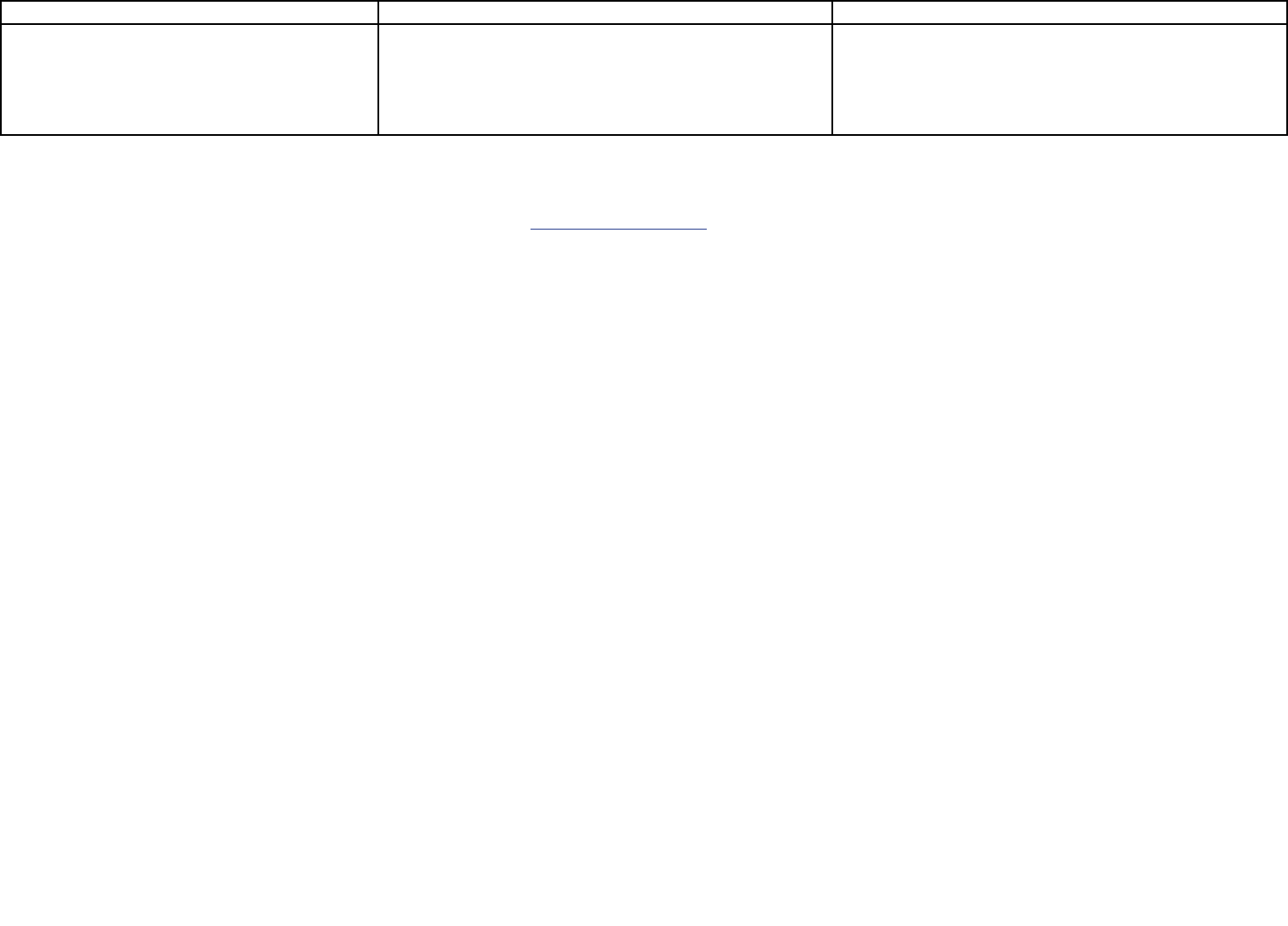
A-45
Table A.30AB Substance Use Disorder (SUD) and Major Depressive Episode (MDE) in the Past Year: Among Adolescents Aged 12 to 17; 2020
SUD or MDE Status Number in Thousands
1
Percentage
2
SUD or MDE 5,072 (218) 20.9 (0.89)
SUD but no MDE 900 (96) 3.7 (0.40)
MDE but no SUD 3,488 (186) 14.4 (0.77)
Co-Occurring SUD and MDE 644 (79) 2.7 (0.33)
Co-Occurring SUD and MDE with Severe Impairment
3
447 (60) 1.8 (0.25)
NOTE: Respondents with unknown past year MDE data were excluded.
NOTE:
SUD estimates in 2020 are based on criteria from the Diagnostic and Statistical Manual of Mental Disorders, 5th edition. SUD and related estimates are not comparable between 2020 and prior years of
NSDUH because prior years’ estimates were based on criteria from the Diagnostic and Statistical Manual of Mental Disorders, 4th edition. The 2020 estimates reflect additional methodological changes for the
2020 NSDUH. Due to these changes, estimates are shown for 2020 only. See the 2020 National Survey on Drug Use and Health: Methodological Summary and Definitions for details on these changes.
NOTE:
Additional estimates may be found in the detailed tables for the 2020 NSDUH at https://www.samhsa.gov/data/. Measures and terms are defined in Appendix A of the 2020 detailed tables.
1
Estimates shown are numbers in thousands with standard errors included in parentheses.
2
Estimates shown are percentages with standard errors included in parentheses.
3
Impairment is based on the Sheehan Disability Scale role domains, which measure the impact of a disorder on an adolescent’s life. Impairment is defined as the highest severity level of role impairment across four
domains: (1) chores at home, (2) school or work, (3) close relationships with family, and (4) social life. Ratings ≥ 7 on a 0 to 10 scale were considered Severe Impairment. Respondents with unknown impairment data
were excluded.
Source:
SAMHSA, Center for Behavioral Health Statistics and Quality, National Survey on Drug Use and Health, Quarters 1 and 4, 2020.
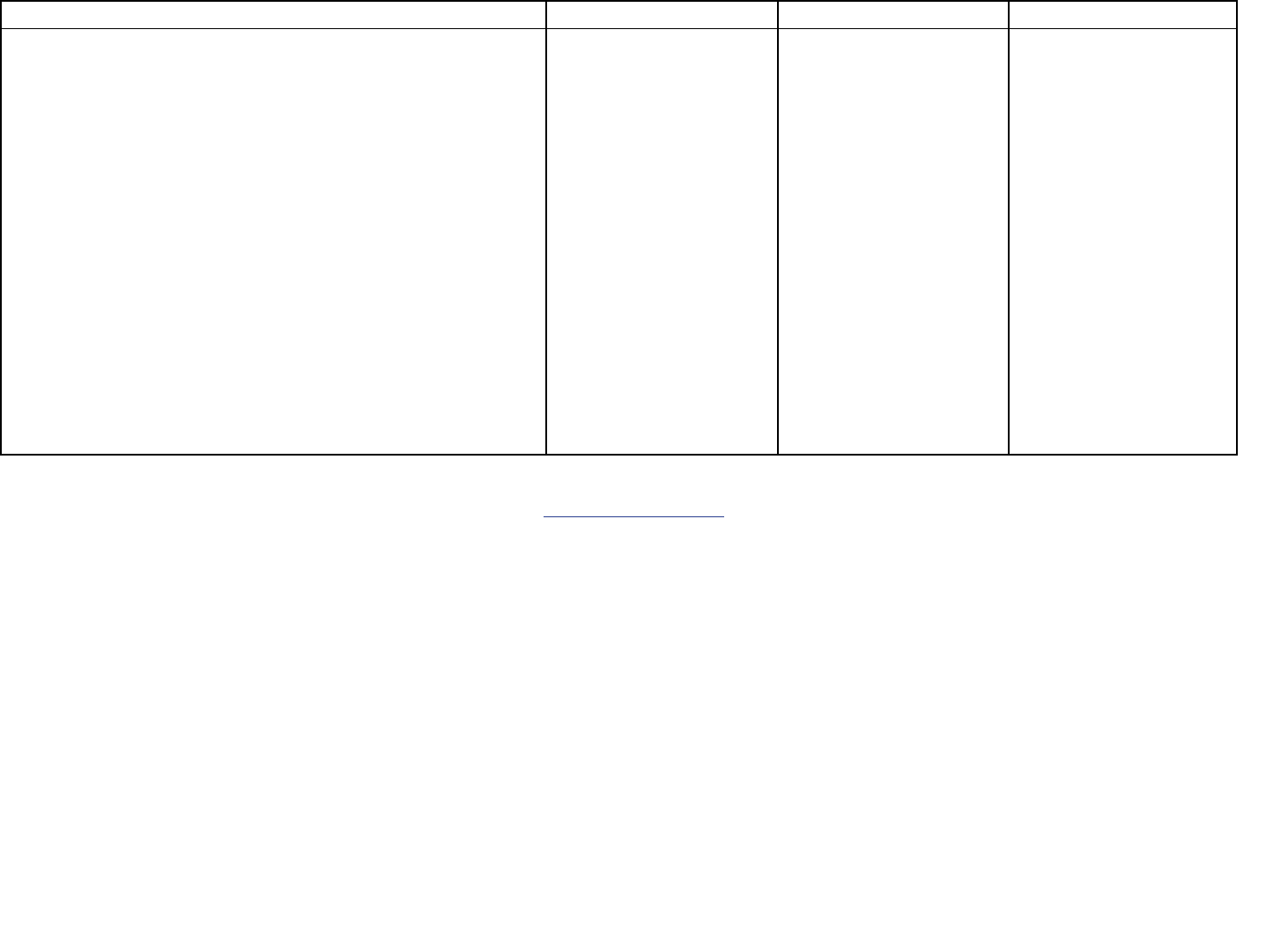
A-46
Table A.31B Substance Use in the Past Year and Past Month: Among Adolescents Aged 12 to 17; by Past Year Major Depressive Episode (MDE), 2020
Period/Substance Total
1
MDE No MDE
PAST YEAR USE
Illicit Drugs 13.8 (0.67) 28.6 (2.27) 10.7 (0.64)
Marijuana 10.1 (0.57) 22.0 (2.11) 7.9 (0.57)
Cocaine 0.3 (0.10) 0.9 (0.42) 0.2 (0.10)
Heroin * (*) * (*) * (*)
Hallucinogens 1.5 (0.21) 3.7 (0.87) 1.1 (0.18)
Inhalants 2.7 (0.32) 7.0 (1.29) 1.8 (0.27)
Methamphetamine 0.1 (0.05) * (*) 0.1 (0.03)
Misuse of Psychotherapeutics 2.8 (0.32) 5.5 (0.92) 2.1 (0.33)
Pain Relievers 1.6 (0.24) 2.3 (0.49) 1.4 (0.28)
Stimulants 1.2 (0.20) 2.8 (0.73) 0.8 (0.19)
Tranquilizers or Sedatives 0.9 (0.16) 2.6 (0.70) 0.5 (0.14)
Opioids 1.6 (0.24) 2.3 (0.49) 1.4 (0.28)
Central Nervous System Stimulants 1.4 (0.22) 3.4 (0.80) 0.9 (0.21)
PAST MONTH USE
Cigarettes 1.4 (0.22) 2.7 (1.00) 1.1 (0.20)
Nicotine Vaping 5.1 (0.43) 11.2 (1.43) 3.9 (0.45)
Binge Alcohol Use 4.1 (0.42) 6.2 (0.96) 3.8 (0.48)
Heavy Alcohol Use 0.6 (0.15) 1.2 (0.59) 0.4 (0.15)
* = low precision.
NOTE:
Estimates shown are percentages with standard errors included in parentheses.
NOTE:
Additional estimates may be found in the detailed tables for the 2020 NSDUH at https://www.samhsa.gov/data/. Measures and terms are defined in Appendix A of the 2020 detailed tables.
1
Estimates in the Total column represent all adolescents aged 12 to 17, including those with unknown past year MDE data.
Source:
SAMHSA, Center for Behavioral Health Statistics and Quality, National Survey on Drug Use and Health, Quarters 1 and 4, 2020.

A-47
Table A.32A Level of Mental Illness in the Past Year: Among Adults Aged 18 or Older; by Past Year Substance Use Disorder Status and Age Group, 2020
Level of Mental Illness/SUD Status 18 or Older 18 to 25 26 to 49 50 or Older
SUD or AMI 73,797 (1,120) 14,205 (320) 35,848 (627) 23,744 (854)
SUD but no AMI 20,938 (679) 3,967 (204) 10,172 (396) 6,799 (513)
AMI but no SUD 35,874 (836) 6,167 (237) 16,378 (479) 13,329 (653)
SUD and AMI 16,985 (597) 4,071 (200) 9,298 (381) 3,616 (398)
SUD or SMI 46,462 (977) 9,756 (295) 23,250 (566) 13,456 (709)
SUD but no SMI 32,262 (852) 6,498 (261) 16,269 (502) 9,495 (612)
SMI but no SUD 8,540 (455) 1,719 (132) 3,780 (228) 3,041 (361)
SUD and SMI 5,661 (317) 1,539 (113) 3,201 (225) 920 (185)
AMI = any mental illness; SMI = serious mental illness; SUD = substance use disorder.
NOTE:
Estimates shown are numbers in thousands with standard errors included in parentheses.
NOTE:
SUD estimates in 2020 are based on criteria from the Diagnostic and Statistical Manual of Mental Disorders, 5th edition. SUD and related estimates are not comparable between 2020 and prior years of NSDUH
because prior years’ estimates were based on criteria from the Diagnostic and Statistical Manual of Mental Disorders, 4th edition. The 2020 estimates reflect additional methodological changes for the 2020
NSDUH. Due to these changes, estimates are shown for 2020 only. See the 2020 National Survey on Drug Use and Health: Methodological Summary and Definitions for details on these changes.
NOTE:
Estimates in this table exclude a subset of respondents who did not complete the questionnaire. The analysis weights and estimates were adjusted for the reduced sample size. See the 2020 National Survey on
Drug Use and Health: Methodological Summary and Definitions for details.
NOTE:
Additional estimates may be found in the detailed tables for the 2020 NSDUH at https://www.samhsa.gov/data/. Measures and terms are defined in Appendix A of the 2020 detailed tables.
Source: SAMHSA, Center for Behavioral Health Statistics and Quality, National Survey on Drug Use and Health, Quarters 1 and 4, 2020.
Table A.32B Level of Mental Illness in the Past Year: Among Adults Aged 18 or Older; by Past Year Substance Use Disorder Status and Age Group, 2020
Level of Mental Illness/SUD Status 18 or Older 18 to 25 26 to 49 50 or Older
SUD or AMI 29.3 (0.44) 42.4 (0.96) 35.3 (0.62) 20.3 (0.73)
SUD but no AMI 8.3 (0.27) 11.8 (0.61) 10.0 (0.39) 5.8 (0.44)
AMI but no SUD 14.2 (0.33) 18.4 (0.71) 16.1 (0.47) 11.4 (0.56)
SUD and AMI 6.7 (0.24) 12.2 (0.60) 9.2 (0.38) 3.1 (0.34)
SUD or SMI 18.4 (0.39) 29.1 (0.88) 22.9 (0.56) 11.5 (0.61)
SUD but no SMI 12.8 (0.34) 19.4 (0.78) 16.0 (0.49) 8.1 (0.52)
SMI but no SUD 3.4 (0.18) 5.1 (0.39) 3.7 (0.22) 2.6 (0.31)
SUD and SMI 2.2 (0.13) 4.6 (0.34) 3.2 (0.22) 0.8 (0.16)
AMI = any mental illness; SMI = serious mental illness; SUD = substance use disorder.
NOTE:
Estimates shown are percentages with standard errors included in parentheses.
NOTE:
SUD estimates in 2020 are based on criteria from the Diagnostic and Statistical Manual of Mental Disorders, 5th edition. SUD and related estimates are not comparable between 2020 and prior years of NSDUH
because prior years’ estimates were based on criteria from the Diagnostic and Statistical Manual of Mental Disorders, 4th edition. The 2020 estimates reflect additional methodological changes for the 2020
NSDUH. Due to these changes, estimates are shown for 2020 only. See the 2020 National Survey on Drug Use and Health: Methodological Summary and Definitions for details on these changes.
NOTE:
Estimates in this table exclude a subset of respondents who did not complete the questionnaire. The analysis weights and estimates were adjusted for the reduced sample size. See the 2020 National Survey on
Drug Use and Health: Methodological Summary and Definitions for details.
NOTE:
Additional estimates may be found in the detailed tables for the 2020 NSDUH at https://www.samhsa.gov/data/. Measures and terms are defined in Appendix A of the 2020 detailed tables.
Source: SAMHSA, Center for Behavioral Health Statistics and Quality, National Survey on Drug Use and Health, Quarters 1 and 4, 2020.
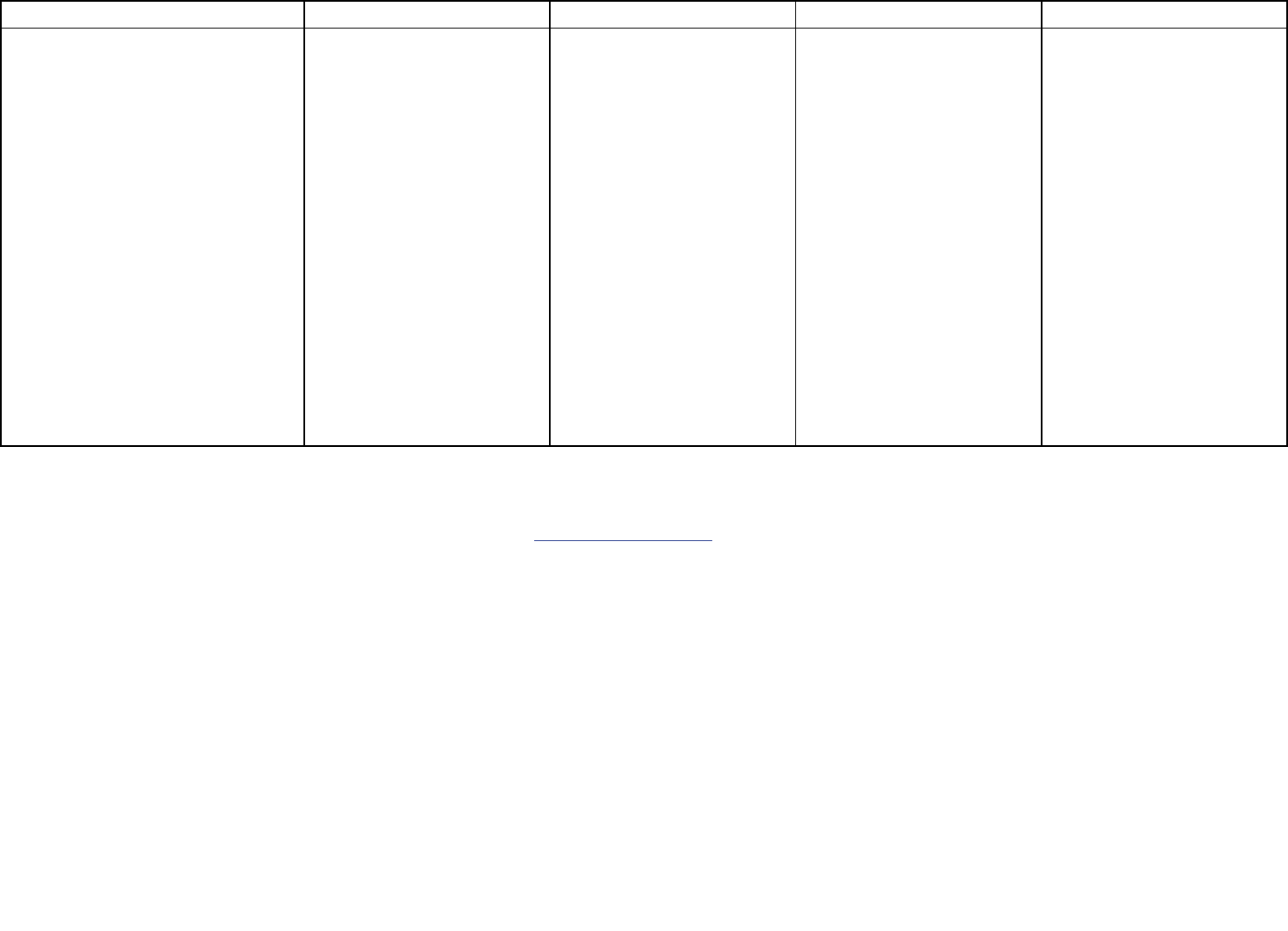
A-48
Table A.33B Substance Use in the Past Year and Past Month: Among Adults Aged 18 or Older; by Past Year Mental Illness Status, 2020
Period/Substance Total Any Mental Illness Serious Mental Illness No Mental Illness
PAST YEAR USE
Illicit Drugs 21.8 (0.43) 39.8 (0.99) 47.8 (2.07) 17.0 (0.45)
Marijuana 18.4 (0.41) 32.8 (0.96) 39.2 (2.01) 14.6 (0.43)
Cocaine 2.0 (0.13) 4.4 (0.39) 7.2 (0.92) 1.3 (0.11)
Heroin 0.3 (0.06) 1.1 (0.26) 1.8 (0.47) 0.1 (0.02)
Hallucinogens 2.6 (0.15) 6.2 (0.42) 9.7 (0.95) 1.7 (0.14)
Inhalants 0.7 (0.07) 1.6 (0.21) 3.2 (0.58) 0.4 (0.07)
Methamphetamine 0.9 (0.11) 3.0 (0.42) 5.2 (1.09) 0.4 (0.07)
Misuse of Psychotherapeutics 6.0 (0.23) 13.9 (0.69) 18.6 (1.45) 3.9 (0.21)
Pain Relievers 3.4 (0.19) 7.8 (0.56) 11.1 (1.17) 2.2 (0.18)
Stimulants 1.9 (0.12) 4.2 (0.35) 6.1 (0.82) 1.3 (0.11)
Tranquilizers or Sedatives 2.4 (0.13) 7.1 (0.53) 10.6 (1.13) 1.1 (0.09)
Opioids 3.5 (0.19) 8.1 (0.56) 11.6 (1.19) 2.3 (0.18)
Central Nervous System Stimulants 3.9 (0.19) 8.8 (0.58) 13.9 (1.39) 2.6 (0.17)
PAST MONTH USE
Cigarettes 16.3 (0.42) 23.1 (0.89) 27.5 (1.66) 14.5 (0.47)
Nicotine Vaping 3.7 (0.16) 7.7 (0.46) 12.7 (1.10) 2.7 (0.15)
Binge Alcohol Use 24.0 (0.45) 28.5 (0.96) 30.9 (1.82) 22.8 (0.50)
Heavy Alcohol Use 6.9 (0.25) 8.8 (0.59) 10.2 (1.05) 6.4 (0.28)
NOTE: Estimates shown are percentages with standard errors included in parentheses.
NOTE:
Estimates in this table exclude a subset of respondents who did not complete the questionnaire. The analysis weights and estimates were adjusted for the reduced sample size. Therefore, some estimates in this
table could differ from corresponding estimates in other tables that did not undergo sample size adjustments. See the 2020 National Survey on Drug Use and Health: Methodological Summary and Definitions
for details.
NOTE:
Additional estimates may be found in the detailed tables for the 2020 NSDUH at https://www.samhsa.gov/data/. Measures and terms are defined in Appendix A of the 2020 detailed tables.
Source: SAMHSA, Center for Behavioral Health Statistics and Quality, National Survey on Drug Use and Health, Quarters 1 and 4, 2020.
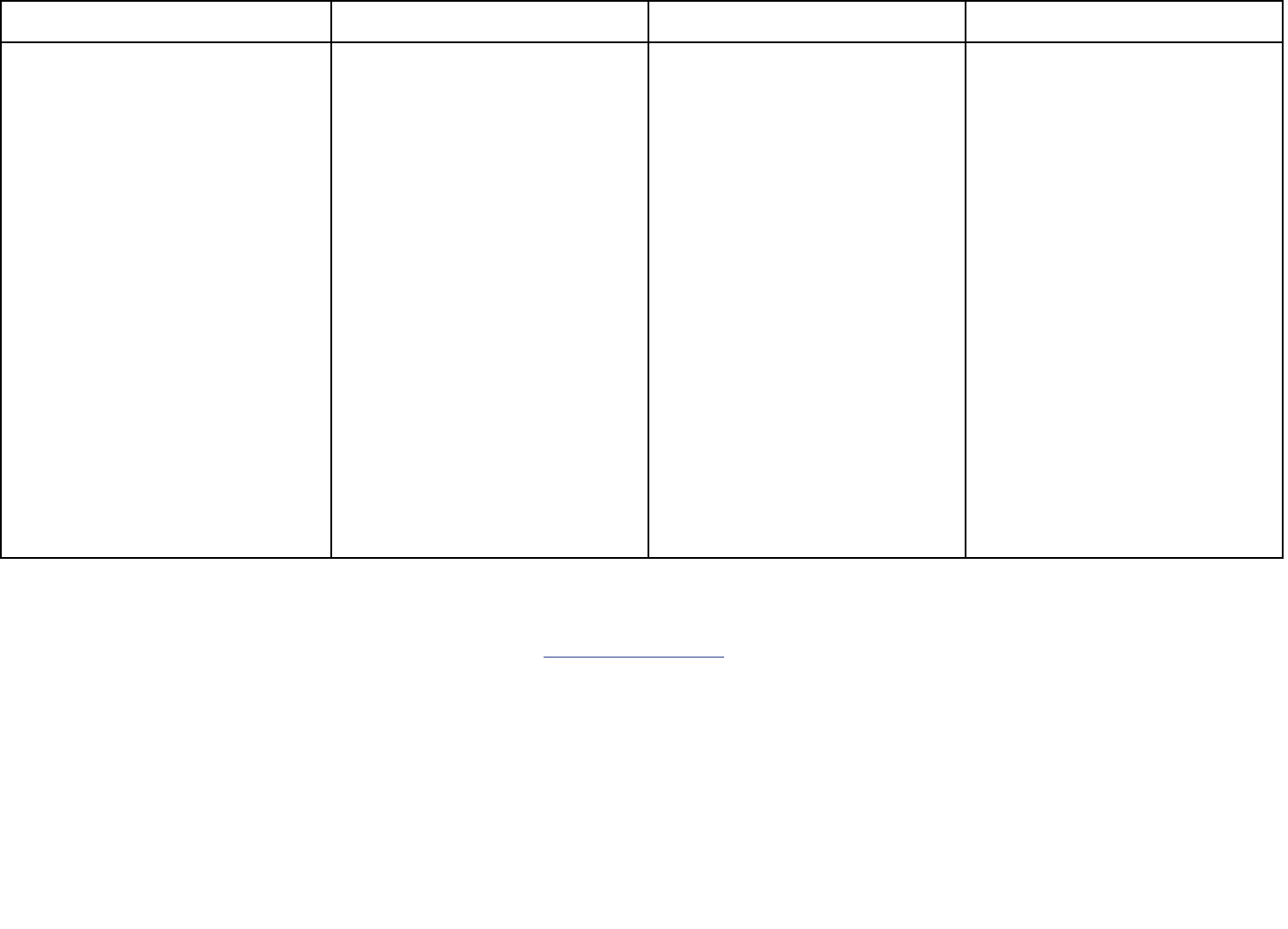
A-49
Table A.34B Had Serious Thoughts of Suicide, Made Any Suicide Plans, and Attempted Suicide in the Past Year: Among Adults Aged 18 or Older; by Demographic
Characteristics, 2020
Demographic Characteristic
Had Serious Thoughts of Suicide
in the Past Year
Made Any Suicide Plans
in the Past Year
Attempted Suicide
in the Past Year
TOTAL 4.9 (0.20) 1.3 (0.09) 0.5 (0.05)
AGE GROUP
18-25 11.3 (0.56) 4.0 (0.32) 1.9 (0.23)
26 or Older 3.9 (0.21) 0.9 (0.09) 0.3 (0.05)
26-49 5.3 (0.28) 1.3 (0.16) 0.4 (0.09)
50 or Older 2.7 (0.28) 0.4 (0.10) 0.1 (0.04)
GENDER
Male 4.5 (0.26) 1.2 (0.13) 0.4 (0.06)
Female 5.2 (0.27) 1.4 (0.13) 0.6 (0.08)
HISPANIC ORIGIN AND RACE
Not Hispanic or Latino 5.0 (0.22) 1.3 (0.10) 0.5 (0.05)
White 5.3 (0.27) 1.4 (0.12) 0.5 (0.06)
Black or African American 3.4 (0.49) 1.1 (0.27) 0.3 (0.10)
American Indian or Alaska Native 5.6 (2.47) 1.8 (0.86) * (*)
Native Hawaiian or Other Pacific Islander 2.3 (1.15) 0.7 (0.54) 0.9 (0.62)
Asian 2.8 (0.49) 0.3 (0.12) 0.1 (0.08)
Two or More Races 11.0 (1.89) 3.3 (1.01) 1.2 (0.57)
Hispanic or Latino 4.2 (0.47) 1.2 (0.23) 0.6 (0.16)
EMPLOYMENT STATUS
Full-Time 4.1 (0.24) 0.9 (0.10) 0.3 (0.06)
Part-Time 6.8 (0.59) 1.9 (0.28) 0.7 (0.16)
Unemployed 9.2 (1.13) 3.5 (0.73) 1.9 (0.44)
Other
1
4.6 (0.37) 1.3 (0.16) 0.5 (0.08)
* = low precision.
NOTE:
Estimates shown are percentages with standard errors included in parentheses.
NOTE:
Estimates in this table exclude a subset of respondents who did not complete the questionnaire. The analysis weights and estimates were adjusted for the reduced sample size. See the 2020 National Survey on
Drug Use and Health: Methodological Summary and Definitions for details.
NOTE:
Additional estimates may be found in the detailed tables for the 2020 NSDUH at https://www.samhsa.gov/data/. Measures and terms are defined in Appendix A of the 2020 detailed tables.
1
Other Employment includes students, adults keeping house or caring for children full time, retired or disabled adults, or other adults not in the labor force.
Source:
SAMHSA, Center for Behavioral Health Statistics and Quality, National Survey on Drug Use and Health, Quarters 1 and 4, 2020.
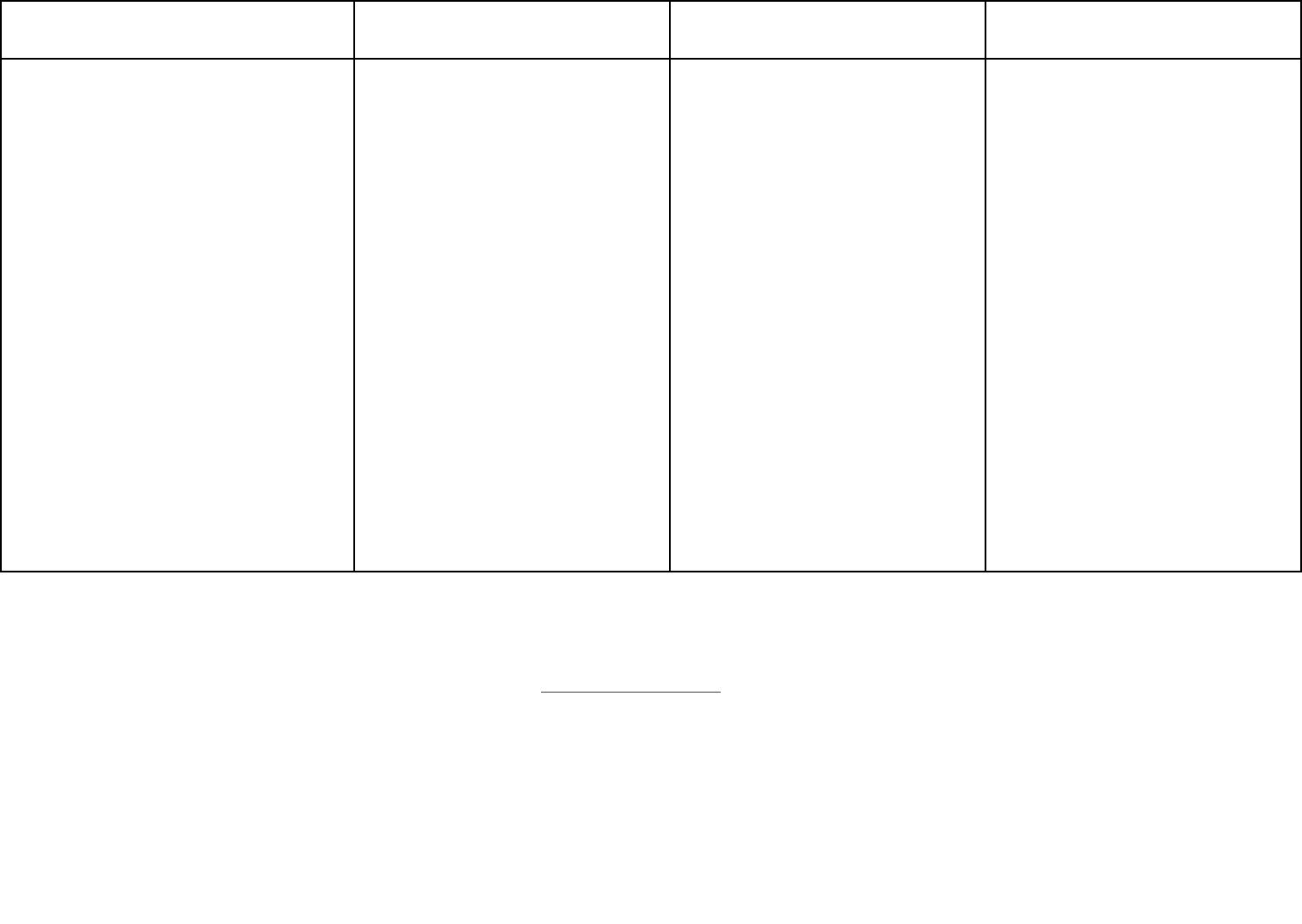
A-50
Table A.35B Had Serious Thoughts of Suicide, Made Any Suicide Plans, and Attempted Suicide Because of the COVID-19 Pandemic: Among Adults Aged 18 or Older with
Respective Suicidal Thoughts and Behaviors in the Past Year; by Demographic Characteristics, Quarter 4, 2020
Demographic Characteristic
Had Serious Thoughts of Suicide
Because of the COVID-19 Pandemic among All
Adults Who Had Serious Thoughts of Suicide
Made Suicide Plans
Because of the COVID-19 Pandemic
among All
Adults Who Made Any Suicide Plans
Attempted Suicide
Because of the COVID-19 Pandemic among All
Adults Who Attempted Suicide
TOTAL 21.1 (2.31) 8.5 (2.98) * (*)
AGE GROUP
18-25 22.6 (3.05) 8.2 (2.95) * (*)
26 or Older 20.5 (3.04) * (*) * (*)
26-49 19.1 (3.03) * (*) * (*)
50 or Older * (*) * (*) * (*)
GENDER
Male 20.0 (3.22) * (*) * (*)
Female 21.9 (3.35) * (*) * (*)
HISPANIC ORIGIN AND RACE
Not Hispanic or Latino 21.1 (2.49) 8.9 (3.34) * (*)
White 20.1 (2.78) * (*) * (*)
Black or African American * (*) * (*) * (*)
American Indian or Alaska Native * (*) * (*) * (*)
Native Hawaiian or Other Pacific Islander * (*) * (*) * (*)
Asian * (*) * (*) * (*)
Two or More Races * (*) * (*) * (*)
Hispanic or Latino * (*) * (*) * (*)
EMPLOYMENT STATUS
Full-Time 17.6 (2.90) * (*) * (*)
Part-Time * (*) * (*) * (*)
Unemployed * (*) * (*) * (*)
Other
1
18.4 (4.47) * (*) * (*)
* = low precision; COVID-19 = coronavirus disease 2019.
NOTE:
Estimates shown are percentages with standard errors included in parentheses.
NOTE:
Respondents with unknown information on their suicide behaviors because of the COVID-19 pandemic were excluded.
NOTE:
Estimates in this table exclude a subset of respondents who did not complete the questionnaire. The analysis weights and estimates were adjusted for the reduced sample size. See the 2020 National Survey on
Drug Use and Health: Methodological Summary and Definitions for details.
NOTE:
Additional estimates may be found in the detailed tables for the 2020 NSDUH at https://www.samhsa.gov/data/. Measures and terms are defined in Appendix A of the 2020 detailed tables.
1
Other Employment includes students, adults keeping house or caring for children full time, retired or disabled adults, or other adults not in the labor force.
Source:
SAMHSA, Center for Behavioral Health Statistics and Quality, National Survey on Drug Use and Health, Quarter 4, 2020.

A-51
Table A.36B Had Serious Thoughts of Suicide, Made Any Suicide Plans, and Attempted Suicide in the Past Year: Among Adolescents Aged 12 to 17; Quarter 4, 2020
Suicidal Thoughts/Behavior
Total
HAD SERIOUS THOUGHTS OF SUICIDE
Yes
12.0 (1.20)
No
74.8 (1.59)
Not Sure/Don’t Know
7.1 (0.92)
Don’t Want to Answer/Refuse
6.1 (0.94)
MADE SUICIDE PLANS
Yes
5.3 (0.89)
No
87.9 (1.18)
Not Sure/Don’t Know
2.9 (0.65)
Don’t Want to Answer/Refuse
4.0 (0.66)
ATTEMPTED SUICIDE
Yes
2.5 (0.63)
No
92.6 (1.03)
Not Sure/Don’t Know
1.1 (0.48)
Don’t Want to Answer/Refuse
3.8 (0.70)
NOTE: Estimates shown are percentages with standard errors included in parentheses.
NOTE:
Respondents with unknown suicide data other than the categories shown in this table were excluded.
NOTE:
Additional estimates may be found in the detailed tables for the 2020 NSDUH at https://www.samhsa.gov/data/. Measures and terms are defined in Appendix A of the 2020 detailed
tables.
Source:
SAMHSA, Center for Behavioral Health Statistics and Quality, National Survey on Drug Use and Health, Quarter 4, 2020.
Table A.37B Had Serious Thoughts of Suicide Because of the COVID-19 Pandemic: Among Adolescents Aged 12 to 17 Who Had Serious Thoughts of Suicide in the Past
Year; Quarter 4, 2020
Characteristic Total
Had Serious Thoughts of Suicide Because of the COVID-19 Pandemic among Adolescents Who Had Serious Thoughts of Suicide
* (*)
* = low precision; COVID-19 = coronavirus disease 2019.
NOTE:
Estimates shown are percentages with standard errors included in parentheses.
NOTE:
Respondents with unknown suicide data other than the categories shown in this table were excluded.
NOTE:
Additional estimates may be found in the detailed tables for the 2020 NSDUH at https://www.samhsa.gov/data/. Measures and terms are defined in Appendix A of the 2020 detailed
tables.
Source:
SAMHSA, Center for Behavioral Health Statistics and Quality, National Survey on Drug Use and Health, Quarter 4, 2020.
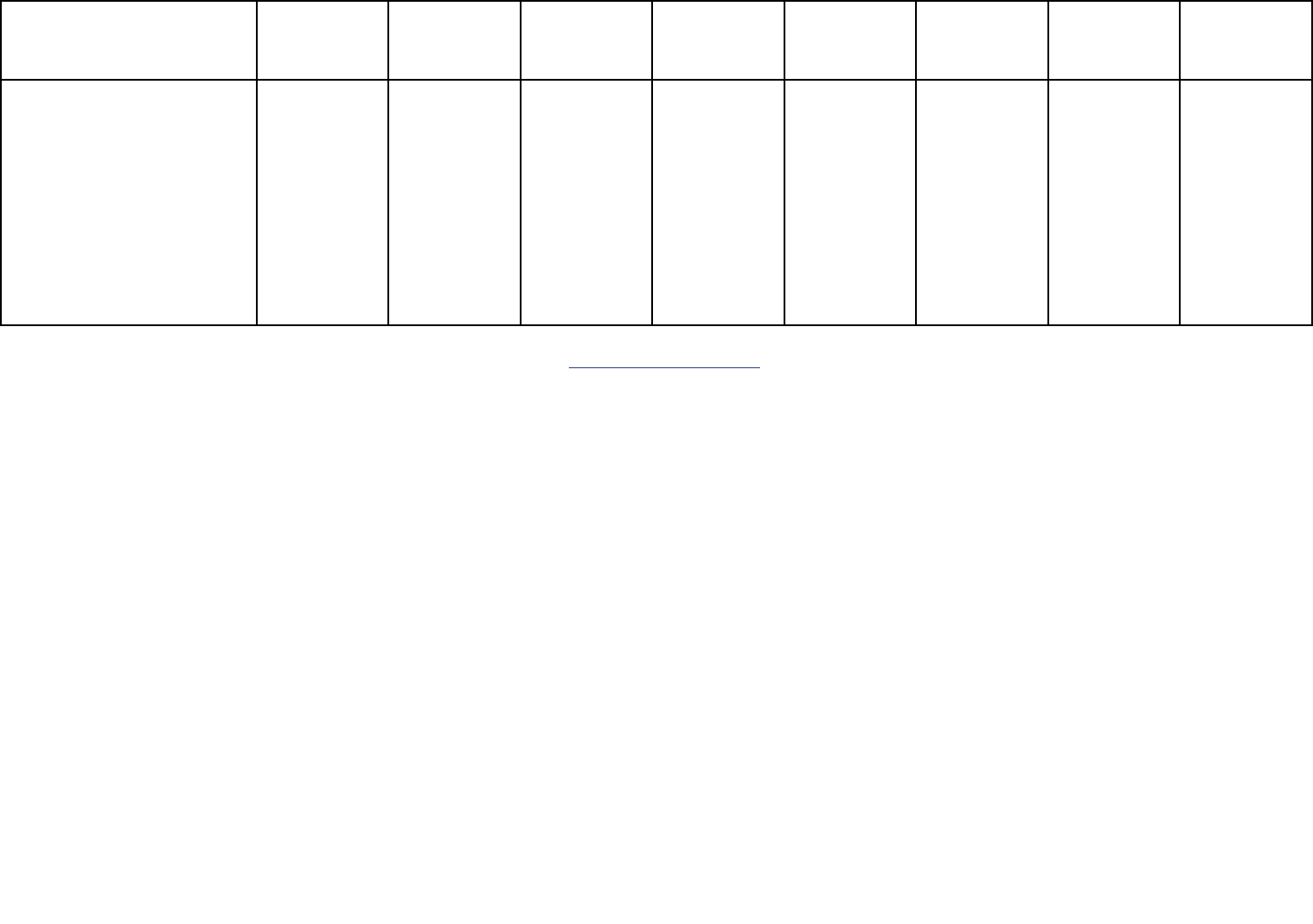
A-52
Table A.38AB Need for Substance Use Treatment, Receipt of Substance Use Treatment, and Receipt of Substance Use Treatment at a Specialty Facility in the Past Year:
Among People Aged 12 or Older; by Age Group, Quarters 1 and 4, 2020
Needed/Received Substance Use
Treatment
Aged 12 or
Older,
Number
1
Percentage
among People
Aged 12 or
Older
2
Aged 12-17,
Number
1
Percentage
among
Adolescents
Aged 12-17
2
Aged 18-25,
Number
1
Percentage
among Young
Adults
Aged 18-25
2
Aged 26 or
Older,
Number
1
Percentage
among Adults
Aged 26 or
Older
2
Needed Substance Use Treatment
3
41,135 (926) 14.9 (0.33) 1,600 (123) 6.4 (0.49) 8,227 (280) 24.6 (0.83) 31,308 (859) 14.3 (0.39)
Received Any Substance Use
Treatment
4,5
4,009 (313) 1.4 (0.11) 169 (36) 0.7 (0.14) 445 (76) 1.3 (0.23) 3,395 (300) 1.6 (0.14)
Received Any Substance Use
Treatment among People with a
Past Year SUD
5,6
2,630 (250) 6.5 (0.59) 120 (33) 7.6 (2.02) 363 (71) 4.4 (0.85) 2,147 (232) 7.0 (0.72)
Received Substance Use Treatment at
a Specialty Facility
5
2,685 (259) 1.0 (0.09) 55 (21) 0.2 (0.08) 301 (67) 0.9 (0.20) 2,329 (245) 1.1 (0.11)
Received Substance Use Treatment
at a Specialty Facility among
People Who Needed Substance
Use Treatment
3,4,5
2,685 (259) 6.5 (0.60) 55 (21) 3.5 (1.28) 301 (68) 3.7 (0.81) 2,329 (245) 7.4 (0.74)
SUD = substance use disorder.
NOTE: Additional estimates may be found in the detailed tables for the 2020 NSDUH at https://www.samhsa.gov/data/. Measures and terms are defined in Appendix A of the 2020 detailed tables.
1
Estimates shown are numbers in thousands with standard errors included in parentheses.
2
Estimates shown are percentages with standard errors included in parentheses.
3
Respondents were classified as needing substance use treatment if they met the criteria for an SUD as defined in the 5th edition of the Diagnostic and Statistical Manual of Mental Disorders or received
treatment for illicit drug or alcohol use at a specialty facility (i.e., drug and alcohol rehabilitation facility [inpatient or outpatient], hospital [inpatient only], or mental health center).
4
Received Substance Use Treatment includes treatment received at any location, such as a hospital (inpatient), rehabilitation facility (inpatient or outpatient), mental health center, emergency room, private
doctor’s office, self-help group, or prison/jail.
5
Estimates include people who received treatment specifically for illicit drugs or alcohol, as well as people who received treatment for unspecified substance(s).
6
Substance use disorder is defined in the 5th edition of the Diagnostic and Statistical Manual of Mental Disorders.
Source:
SAMHSA, Center for Behavioral Health Statistics and Quality, National Survey on Drug Use and Health, Quarters 1 and 4, 2020.
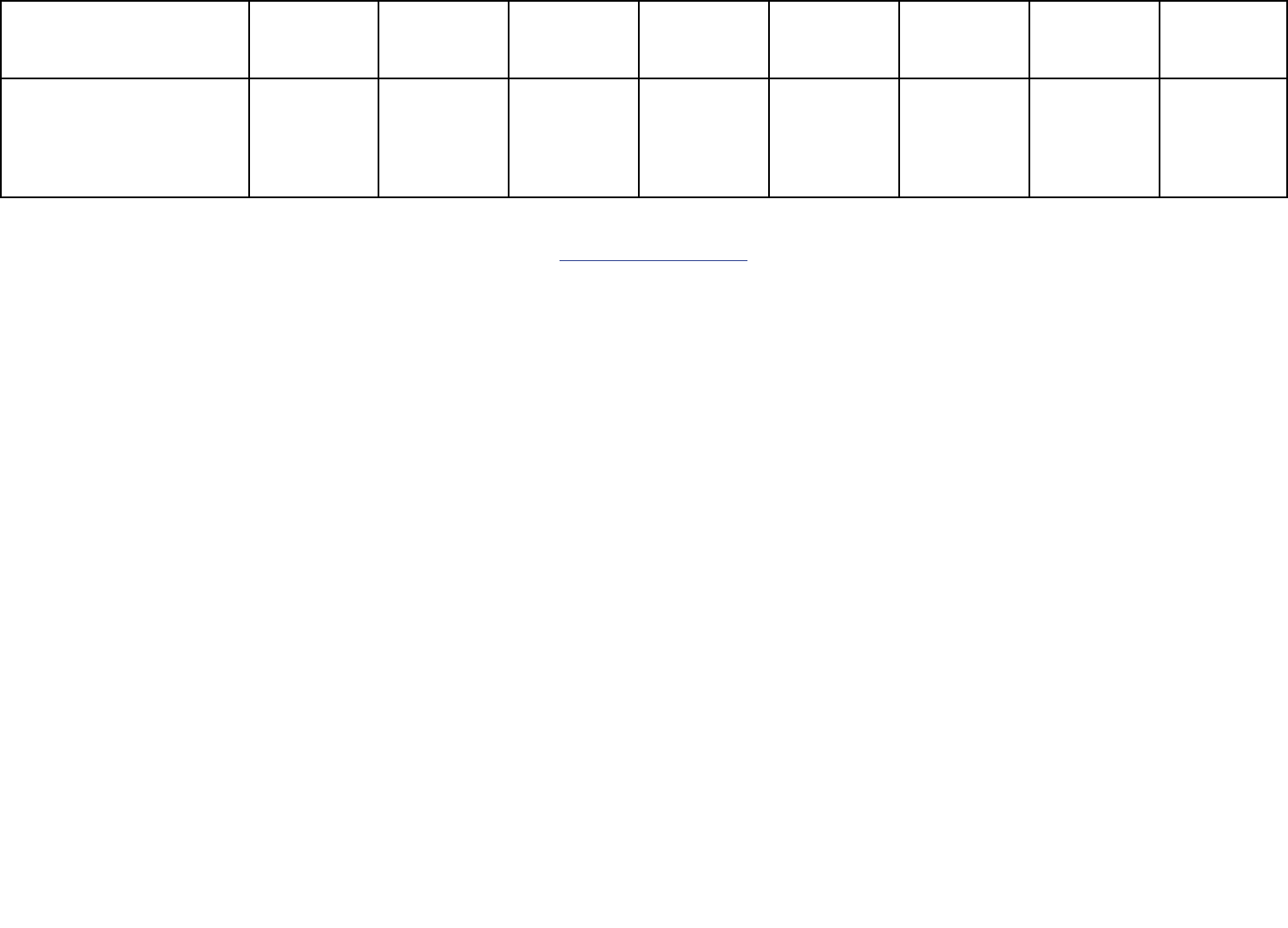
A-53
Table A.39AB Receipt of Virtual Treatment for Substance Use: Among People Who Received Any Substance Use Treatment in the Past Year; by Age Group, Quarter 4, 2020
Received Virtual Treatment for
Substance Use
Aged 12 or
Older,
Number
1
Percentage
among People
Aged 12 or
Older
2
Aged 12-17,
Number
1
Percentage
among
Adolescents
Aged 12-17
2
Aged 18-25,
Number
1
Percentage
among Young
Adults
Aged 18-25
2
Aged 26 or
Older,
Number
1
Percentage
among Adults
Aged 26 or
Older
2
Received Virtual Treatment for
Substance Use 2,190 (276) 0.8 (0.10) 74 (43) 0.3 (0.17) 207 (65) 0.6 (0.19) 1,909 (267) 0.9 (0.12)
Received Virtual Treatment for
Substance Use among People
Who Received Any Substance
Use Treatment 2,190 (279) 58.0 (4.58) * (*) * (*) * (*) * (*) 1,909 (268) 58.4 (5.07)
* = low precision.
NOTE:
Estimates include people who received treatment specifically for illicit drugs or alcohol, as well as people who received treatment for unspecified substance(s).
NOTE: Additional estimates may be found in the detailed tables for the 2020 NSDUH at https://www.samhsa.gov/data/. Measures and terms are defined in Appendix A of the 2020 detailed tables.
1
Estimates shown are numbers in thousands with standard errors included in parentheses.
2
Estimates shown are percentages with standard errors included in parentheses.
Source: SAMHSA, Center for Behavioral Health Statistics and Quality, National Survey on Drug Use and Health, Quarter 4, 2020.
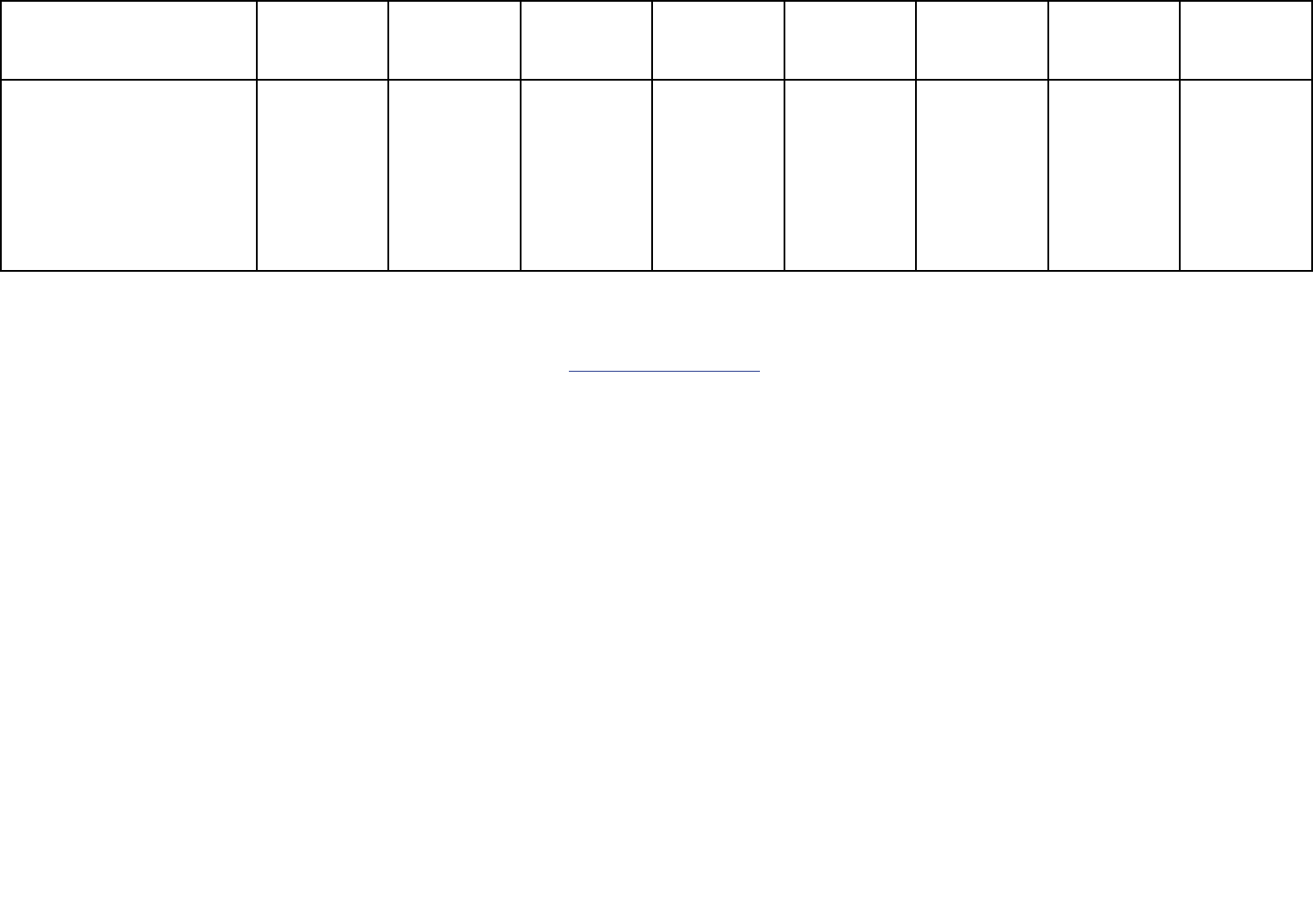
A-54
Table A.40AB Perceived Need for Substance Use Treatment and Whether Made an Effort to Get Treatment in the Past Year: Among People Aged 12 or Older with a
Past Year Substance Use Disorder Who Did Not Receive Substance Use Treatment at a Specialty Facility; by Age Group, Quarters 1 and 4, 2020
Perceived Need/Effort
Aged 12 or
Older,
Number
1
Percentage
among People
Aged 12 or
Older
2
Aged 12-17,
Number
1
Percentage
among
Adolescents
Aged 12-17
2
Aged 18-25,
Number
1
Percentage
among Young
Adults
Aged 18-25
2
Aged 26 or
Older,
Number
1
Percentage
among Adults
Aged 26 or
Older
2
Past Year Substance Use Disorder and
Did Not Receive Substance Use
Treatment at a Specialty Facility 38,449 (953) 100.0 (0.00) 1,544 (127) 100.0 (0.00) 7,926 (340) 100.0 (0.00) 28,979 (883) 100.0 (0.00)
Felt Need for Treatment 948 (139) 2.5 (0.36) 24 (13) 1.6 (0.85) 151 (32) 1.9 (0.40) 773 (132) 2.7 (0.45)
Felt Need and Made Effort to Get
Treatment 211 (55) 0.5 (0.14) 4 (2) 0.2 (0.15) 46 (19) 0.6 (0.24) 161 (51) 0.6 (0.18)
Felt Need and Made No Effort to Get
Treatment 737 (128) 1.9 (0.33) 21 (13) 1.3 (0.84) 105 (26) 1.3 (0.32) 611 (124) 2.1 (0.43)
Did Not Feel Need for Treatment 37,501 (944) 97.5 (0.36) 1,520 (127) 98.4 (0.85) 7,775 (338) 98.1 (0.40) 28,207 (879) 97.3 (0.45)
NOTE: Respondents were classified as needing substance use treatment if they met the criteria for a substance use disorder as defined in the 5th edition of the Diagnostic and Statistical Manual of Mental
Disorders or received treatment for illicit drug or alcohol use at a specialty facility (i.e., drug and alcohol rehabilitation facility [inpatient or outpatient], hospital [inpatient only], or mental health
center).
NOTE:
Substance use disorder is defined in the 5th edition of the Diagnostic and Statistical Manual of Mental Disorders.
NOTE: Additional estimates may be found in the detailed tables for the 2020 NSDUH at https://www.samhsa.gov/data/. Measures and terms are defined in Appendix A of the 2020 detailed tables.
1
Estimates shown are numbers in thousands with standard errors included in parentheses.
2
Estimates shown are percentages with standard errors included in parentheses.
Source: SAMHSA, Center for Behavioral Health Statistics and Quality, National Survey on Drug Use and Health, Quarters 1 and 4, 2020.
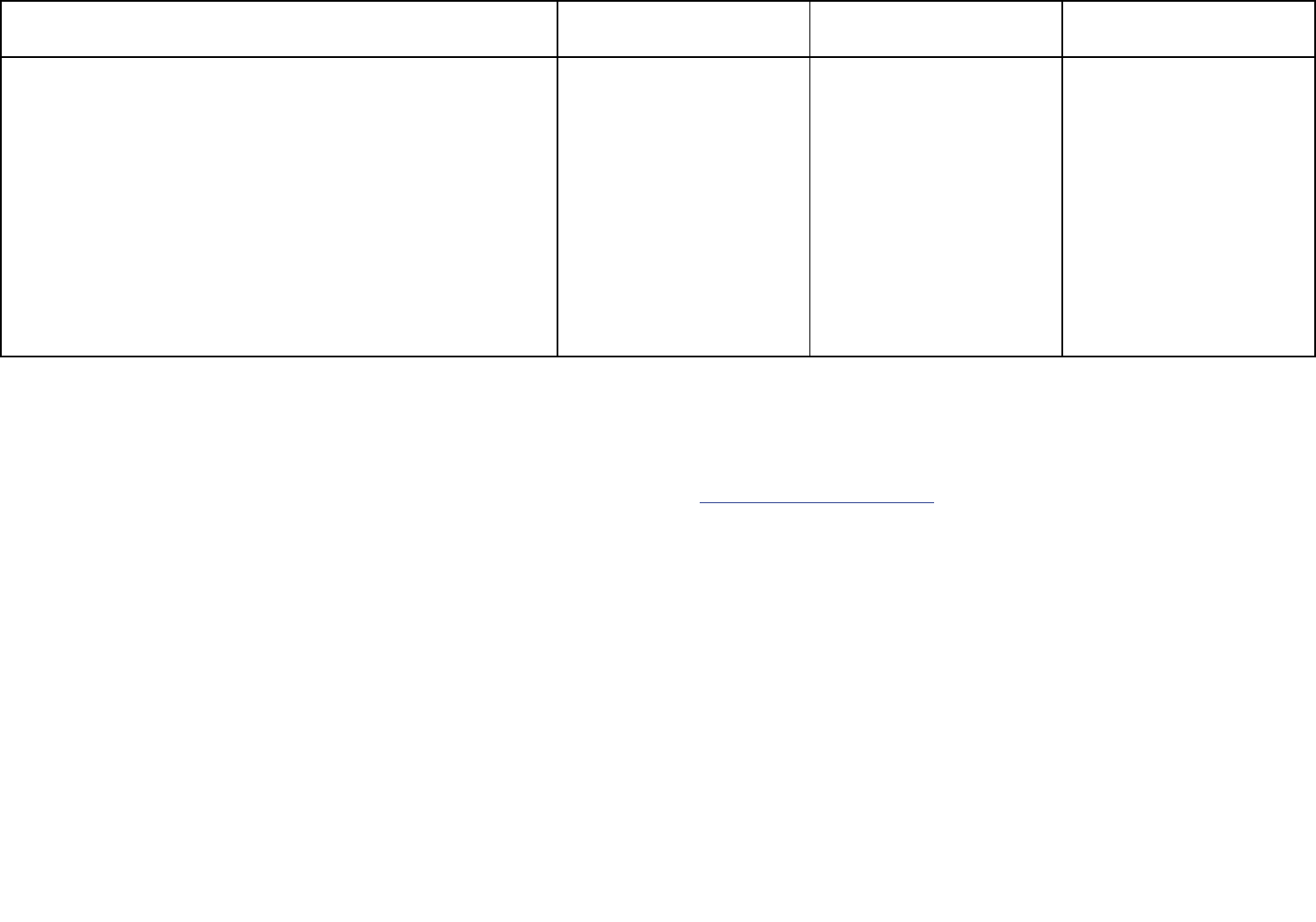
A-55
Table A.41B Locations of Illicit Drug Use Treatment in the Past Year: Among People Aged 12 or Older Who Received Illicit Drug Use Treatment in the Past
Year; by Quarter, 2020
Location of Treatment
1
Quarter 1 Quarter 4 Quarters 1 and 4
RECEIVED ILLICIT DRUG USE TREATMENT 0.9 (0.14) 0.9 (0.11) 0.9 (0.09)
Hospital - Inpatient * (*) 13.2 (3.87) 16.8 (4.03)
Rehabilitation Facility - Inpatient * (*) 22.8 (4.95) 28.7 (4.79)
Rehabilitation Facility - Outpatient * (*) 60.2 (5.77) 52.1 (4.98)
Mental Health Center - Outpatient * (*) 45.0 (5.94) 40.2 (4.81)
Emergency Room * (*) 11.8 (3.84) * (*)
Private Doctor’s Office 22.9 (4.87) * (*) 24.7 (3.82)
Self-Help Group * (*) 45.4 (5.94) 43.0 (4.65)
Prison/Jail 1.8 (0.80) * (*) 4.7 (1.92)
Virtual na 56.2 (5.83) na
* = low precision; na = not applicable.
NOTE:
Estimates shown are percentages with standard errors included in parentheses.
NOTE:
Received Illicit Drug Use Treatment includes treatment received at any location, such as a hospital (inpatient), rehabilitation facility (inpatient or outpatient),
mental health center, emergency room, private doctor’s office, self-help group, prison/jail, or virtual. Questions on virtual substance use treatment were added
in Quarter 4 of 2020.
NOTE: Additional estimates may be found in the detailed tables for the 2020 NSDUH at https://www.samhsa.gov/data/. Measures and terms are defined in Appendix A
of the 2020 detailed tables.
1
Respondents could indicate multiple locations for receiving illicit drug use treatment; thus, these response categories are not mutually exclusive.
Source:
SAMHSA, Center for Behavioral Health Statistics and Quality, National Survey on Drug Use and Health, Quarters 1 and 4, 2020.
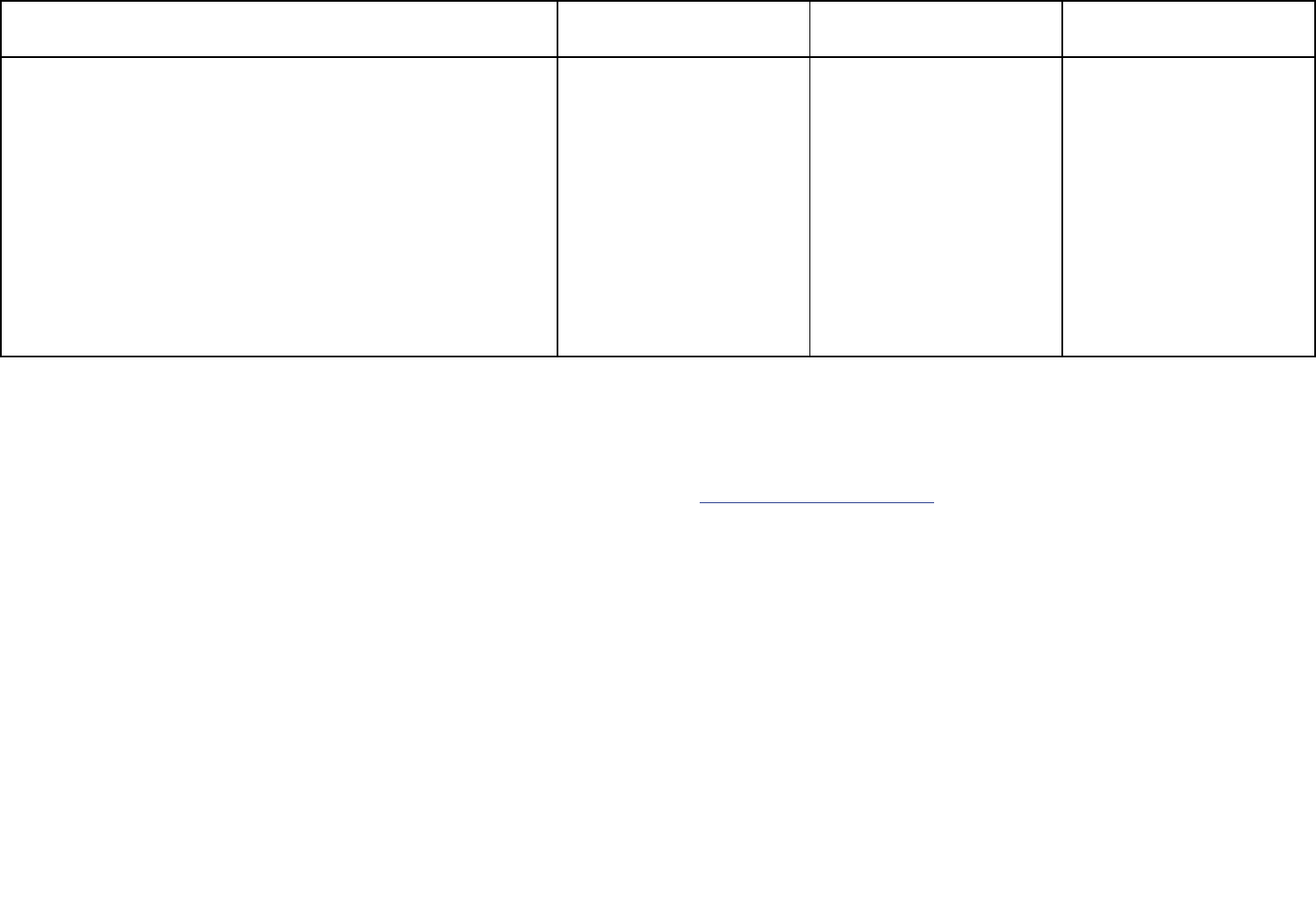
A-56
Table A.42B Locations of Alcohol Use Treatment in the Past Year: Among People Aged 12 or Older Who Received Alcohol Use Treatment in the Past Year;
by Quarter, 2020
Location of Treatment
1
Quarter 1 Quarter 4 Quarters 1 and 4
RECEIVED ALCOHOL USE TREATMENT 0.7 (0.09) 0.8 (0.09) 0.7 (0.07)
Hospital - Inpatient * (*) * (*) 23.1 (4.09)
Rehabilitation Facility - Inpatient * (*) * (*) 29.9 (4.67)
Rehabilitation Facility - Outpatient * (*) * (*) 35.3 (4.68)
Mental Health Center - Outpatient * (*) 29.6 (5.27) 29.2 (3.99)
Emergency Room * (*) * (*) 17.4 (4.38)
Private Doctor’s Office * (*) * (*) 22.8 (4.43)
Self-Help Group * (*) * (*) 55.7 (4.83)
Prison/Jail * (*) 3.0 (1.80) 3.7 (1.67)
Virtual na * (*) na
* = low precision; na = not applicable.
NOTE:
Estimates shown are percentages with standard errors included in parentheses.
NOTE:
Received Alcohol Use Treatment includes treatment received at any location, such as a hospital (inpatient), rehabilitation facility (inpatient or outpatient),
mental health center, emergency room, private doctor’s office, self-help group, prison/jail, or virtual. Questions on virtual substance use treatment were added
in Quarter 4 of 2020.
NOTE: Additional estimates may be found in the detailed tables for the 2020 NSDUH at https://www.samhsa.gov/data/. Measures and terms are defined in Appendix A
of the 2020 detailed tables.
1
Respondents could indicate multiple locations for receiving alcohol use treatment; thus, these response categories are not mutually exclusive.
Source:
SAMHSA, Center for Behavioral Health Statistics and Quality, National Survey on Drug Use and Health, Quarters 1 and 4, 2020.
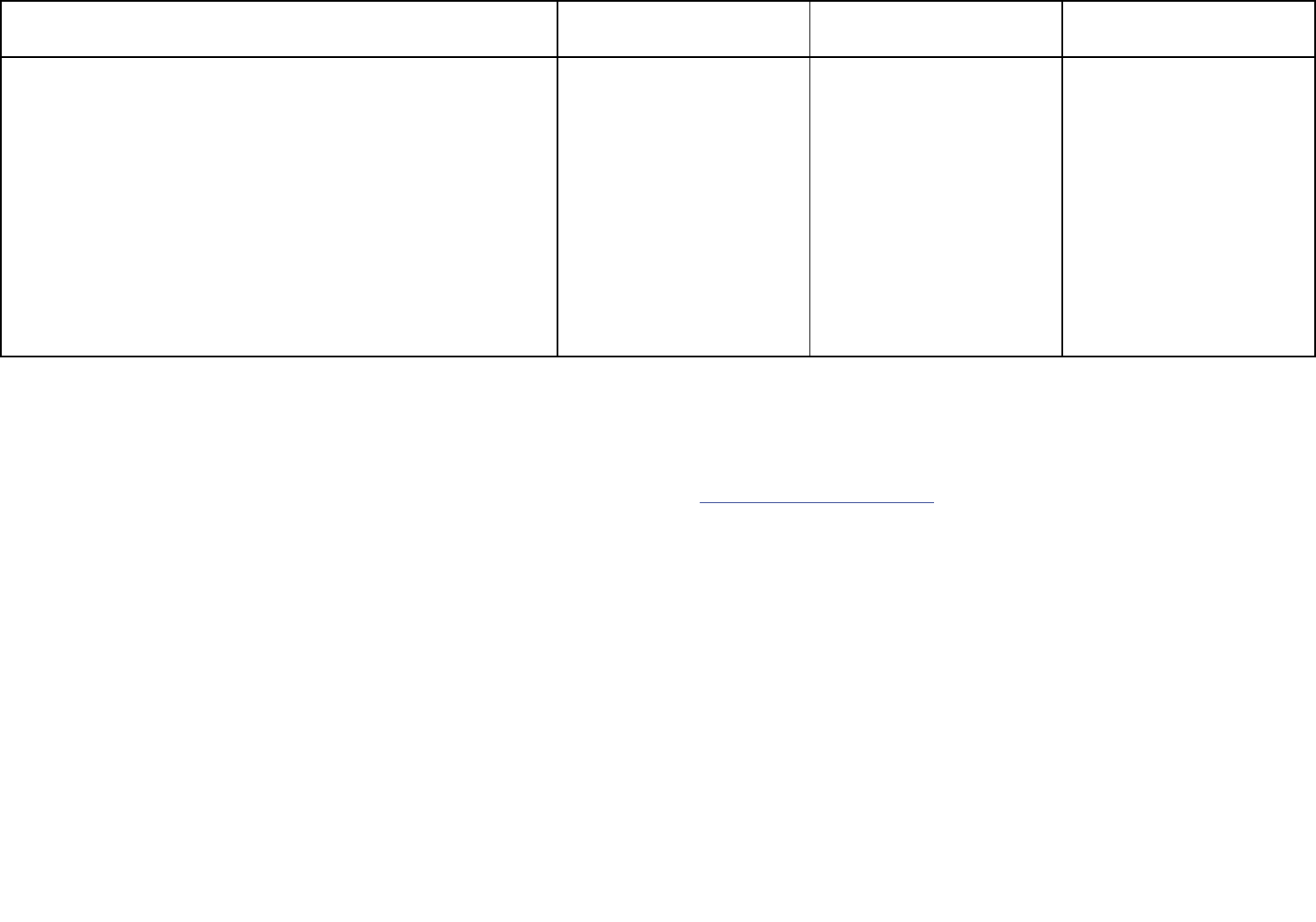
A-57
Table A.43B Locations of Substance Use Treatment in the Past Year: Among People Aged 12 or Older Who Received Substance Use Treatment in the Past
Year; by Quarter, 2020
Location of Treatment
1
Quarter 1 Quarter 4 Quarters 1 and 4
RECEIVED SUBSTANCE USE TREATMENT 1.5 (0.19) 1.4 (0.13) 1.4 (0.11)
Hospital - Inpatient * (*) 19.2 (3.77) 20.0 (3.19)
Rehabilitation Facility - Inpatient * (*) 27.6 (4.27) 27.5 (3.55)
Rehabilitation Facility - Outpatient 35.1 (5.43) 55.3 (4.88) 44.6 (3.84)
Mental Health Center - Outpatient 30.3 (5.37) 41.3 (4.54) 35.5 (3.52)
Emergency Room * (*) 16.7 (4.11) 18.3 (3.45)
Private Doctor’s Office 20.6 (3.73) 32.6 (5.10) 26.3 (3.28)
Self-Help Group 40.4 (5.57) 52.2 (5.05) 46.0 (3.77)
Prison/Jail 3.6 (1.57) 5.5 (2.44) 4.5 (1.44)
Virtual na 58.0 (4.58) na
* = low precision; na = not applicable.
NOTE:
Estimates shown are percentages with standard errors included in parentheses.
NOTE:
Received Substance Use Treatment includes treatment received at any location, such as a hospital (inpatient), rehabilitation facility (inpatient or outpatient),
mental health center, emergency room, private doctor’s office, self-help group, prison/jail, or virtual. Questions on virtual substance use treatment were added
in Quarter 4 of 2020.
NOTE: Additional estimates may be found in the detailed tables for the 2020 NSDUH at https://www.samhsa.gov/data/. Measures and terms are defined in Appendix A
of the 2020 detailed tables.
1
Respondents could indicate multiple locations for receiving substance use treatment; thus, these response categories are not mutually exclusive.
Source:
SAMHSA, Center for Behavioral Health Statistics and Quality, National Survey on Drug Use and Health, Quarters 1 and 4, 2020.
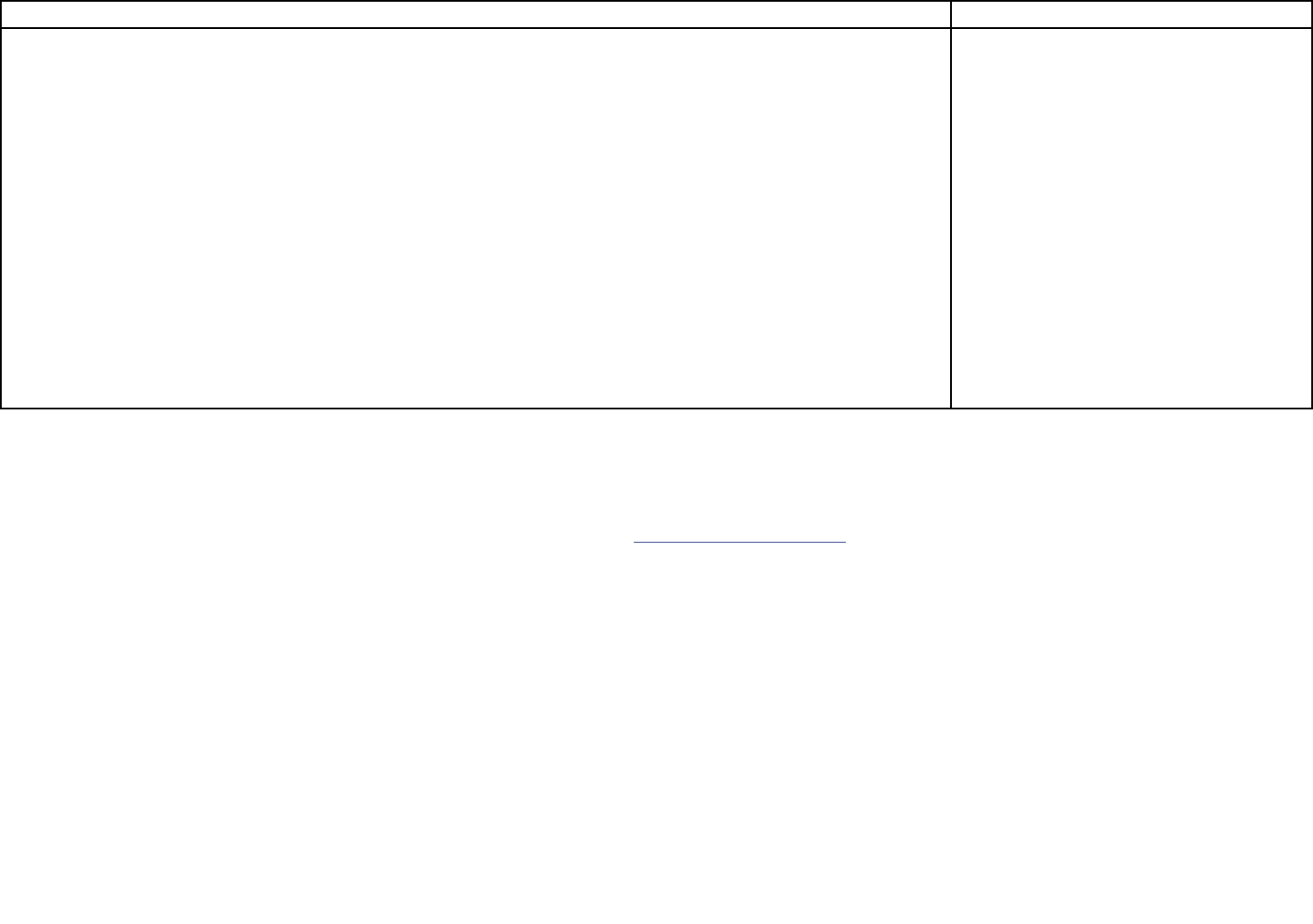
A-58
Table A.44B Detailed Reasons for Not Receiving Substance Use Treatment in the Past Year: Among People Aged 12 or Older Classified as Needing but Not Receiving
Substance Use Treatment at a Specialty Facility and Who Felt a Need for Treatment in the Past Year; Quarters 1 and 4, 2020
Reason for Not Receiving Substance Use Treatment
1
Aged 12 or Older
No Health Care Coverage and Could Not Afford Cost 19.1 (4.60)
Had Health Care Coverage but Did Not Cover Treatment or Did Not Cover Full Cost * (*)
No Transportation/Programs Too Far Away/Hours Inconvenient * (*)
Did Not Find a Program That Offered the Type of Treatment Wanted 14.4 (3.82)
Not Ready to Stop Using * (*)
No Openings in a Program 1.7 (0.93)
Did Not Know where to Go for Treatment * (*)
Might Cause Neighbors/Community to Have Negative Opinion 11.9 (3.46)
Might Have Negative Effect on Job * (*)
Did Not Feel Need for Treatment at the Time 5.6 (1.83)
Could Handle the Problem without Treatment 9.0 (2.75)
Treatment Would Not Help 4.3 (1.96)
Did Not Have Time 5.2 (2.36)
Did Not Want Others to Find Out 6.5 (2.59)
Some Other Reason * (*)
* = low precision.
NOTE:
Estimates shown are percentages with standard errors included in parentheses.
NOTE:
Respondents were classified as needing substance use treatment if they met the criteria for a substance use disorder as defined in the 5th edition of the Diagnostic and Statistical
Manual of Mental Disorders or received treatment for illicit drug or alcohol use at a specialty facility (i.e., drug and alcohol rehabilitation facility [inpatient or outpatient],
hospital [inpatient only], or mental health center).
NOTE: Additional estimates may be found in the detailed tables for the 2020 NSDUH at https://www.samhsa.gov/data/. Measures and terms are defined in Appendix A of the 2020
detailed tables.
1
Respondents could indicate multiple reasons for not receiving treatment; thus, these response categories are not mutually exclusive.
Source:
SAMHSA, Center for Behavioral Health Statistics and Quality, National Survey on Drug Use and Health, Quarters 1 and 4, 2020.
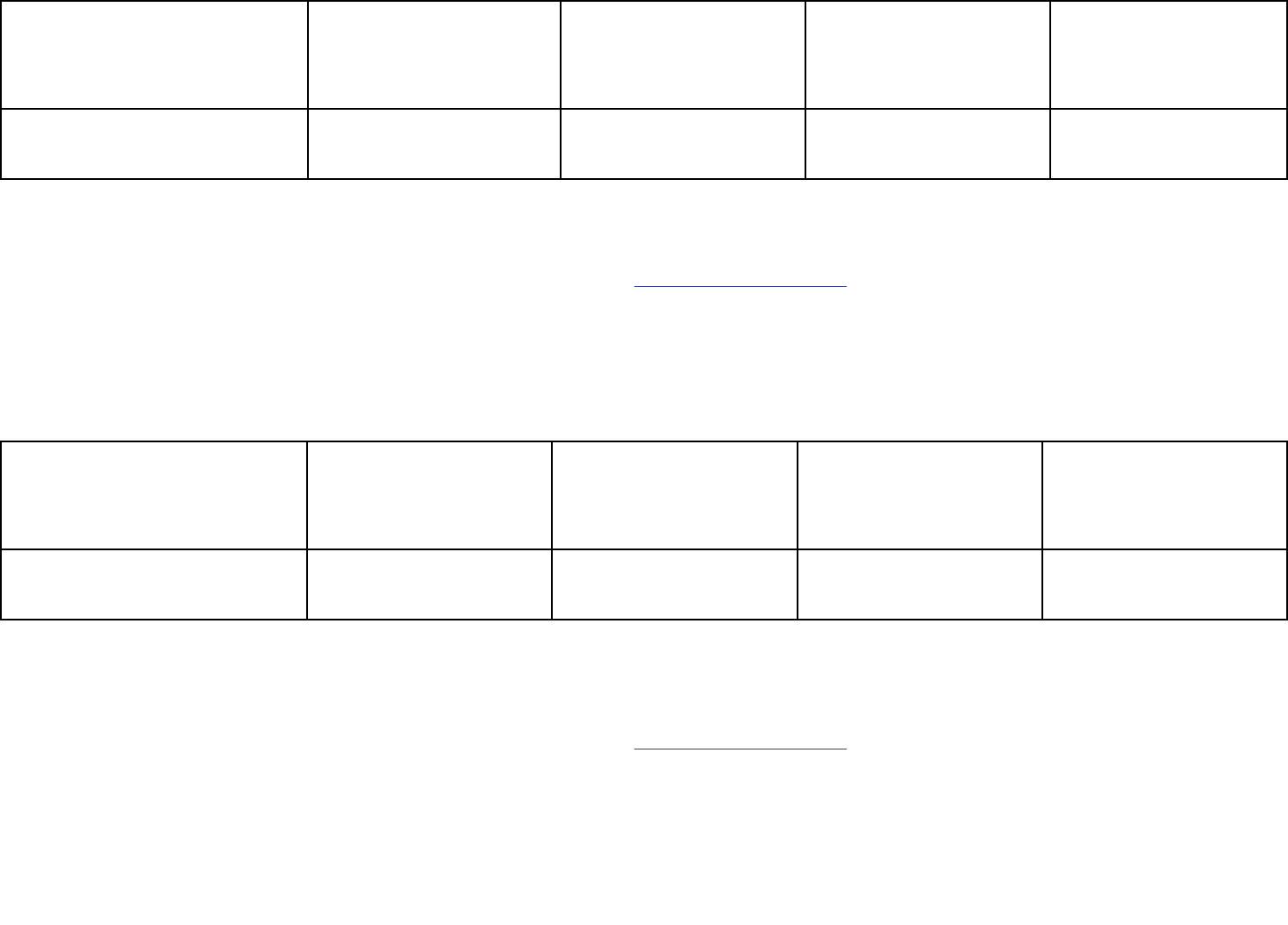
A-59
Table A.45AB Received Medication-Assisted Treatment for Alcohol Use in the Past Year: Among People Aged 12 or Older and among People with an Alcohol Use Disorder;
by Receipt of Alcohol Use Treatment, Quarters 1 and 4, 2020
* = low precision.
NOTE:
Medication-assisted treatment for alcohol use refers to medication prescribed by a doctor or other health professional to help reduce or stop the use of alcohol.
NOTE:
Estimates in this table exclude a subset of respondents who did not complete the questionnaire. The analysis weights and estimates were adjusted for the reduced sample size. See
the 2020 National Survey on Drug Use and Health: Methodological Summary and Definitions for details.
NOTE: Additional estimates may be found in the detailed tables for the 2020 NSDUH at https://www.samhsa.gov/data/
. Measures and terms are defined in Appendix A of the 2020
detailed tables.
1
Estimates shown are numbers in thousands with standard errors included in parentheses.
2
Estimates shown are percentages with standard errors included in parentheses.
Source:
SAMHSA, Center for Behavioral Health Statistics and Quality, National Survey on Drug Use and Health, Quarters 1 and 4, 2020.
Table A.46AB Received Medication-Assisted Treatment for Opioid Misuse in the Past Year: Among People Aged 12 or Older and among People with an Opioid Use Disorder;
by Receipt of Opioid Use Treatment, Quarters 1 and 4, 2020
* = low precision.
NOTE:
Medication-assisted treatment for opioid misuse refers to medication prescribed by a doctor or other health professional to help reduce or stop the use of opioids.
NOTE:
People who received illicit drug use treatment in the past year may not necessarily have received treatment for opioid misuse.
NOTE:
Estimates in this table exclude a subset of respondents who did not complete the questionnaire. The analysis weights and estimates were adjusted for the reduced sample size. See
the 2020 National Survey on Drug Use and Health: Methodological Summary and Definitions for details.
NOTE: Additional estimates may be found in the detailed tables for the 2020 NSDUH at https://www.samhsa.gov/data/
. Measures and terms are defined in Appendix A of the 2020
detailed tables.
1
Estimates shown are numbers in thousands with standard errors included in parentheses.
2
Estimates shown are percentages with standard errors included in parentheses.
Source:
SAMHSA, Center for Behavioral Health Statistics and Quality, National Survey on Drug Use and Health, Quarters 1 and 4, 2020.
Characteristic
Number Who Received
Medication-Assisted
Treatment for Alcohol Use
1
Percentage Who Received
Medication-Assisted
Treatment for Alcohol Use
2
Number Who Received
Medication-Assisted
Treatment for Alcohol Use
among People with an
Alcohol Use Disorder
1
Percentage Who Received
Medication-Assisted
Treatment for Alcohol Use
among People with an
Alcohol Use Disorder
2
TOTAL
362 (105) 0.1 (0.04) 292 (98) 1.0 (0.35)
Received Alcohol Use Treatment
in the Past Year at Any Location
362 (105) 17.2 (4.49) * (*) * (*)
Characteristic
Number Who Received
Medication-Assisted
Treatment for Opioid
Misuse
1
Percentage Who Received
Medication-Assisted
Treatment for Opioid
Misuse
2
Number Who Received
Medication-Assisted
Treatment for Opioid Misuse
among People with an
Opioid Use Disorder
1
Percentage Who Received
Medication-Assisted
Treatment for Opioid Misuse
among People with an
Opioid Use Disorder
2
TOTAL
798 (130) 0.3 (0.05) 278 (54) 11.2 (2.14)
Received Illicit Drug Use Treatment
in the Past Year at Any Location
798 (130) 30.5 (4.27) * (*) * (*)
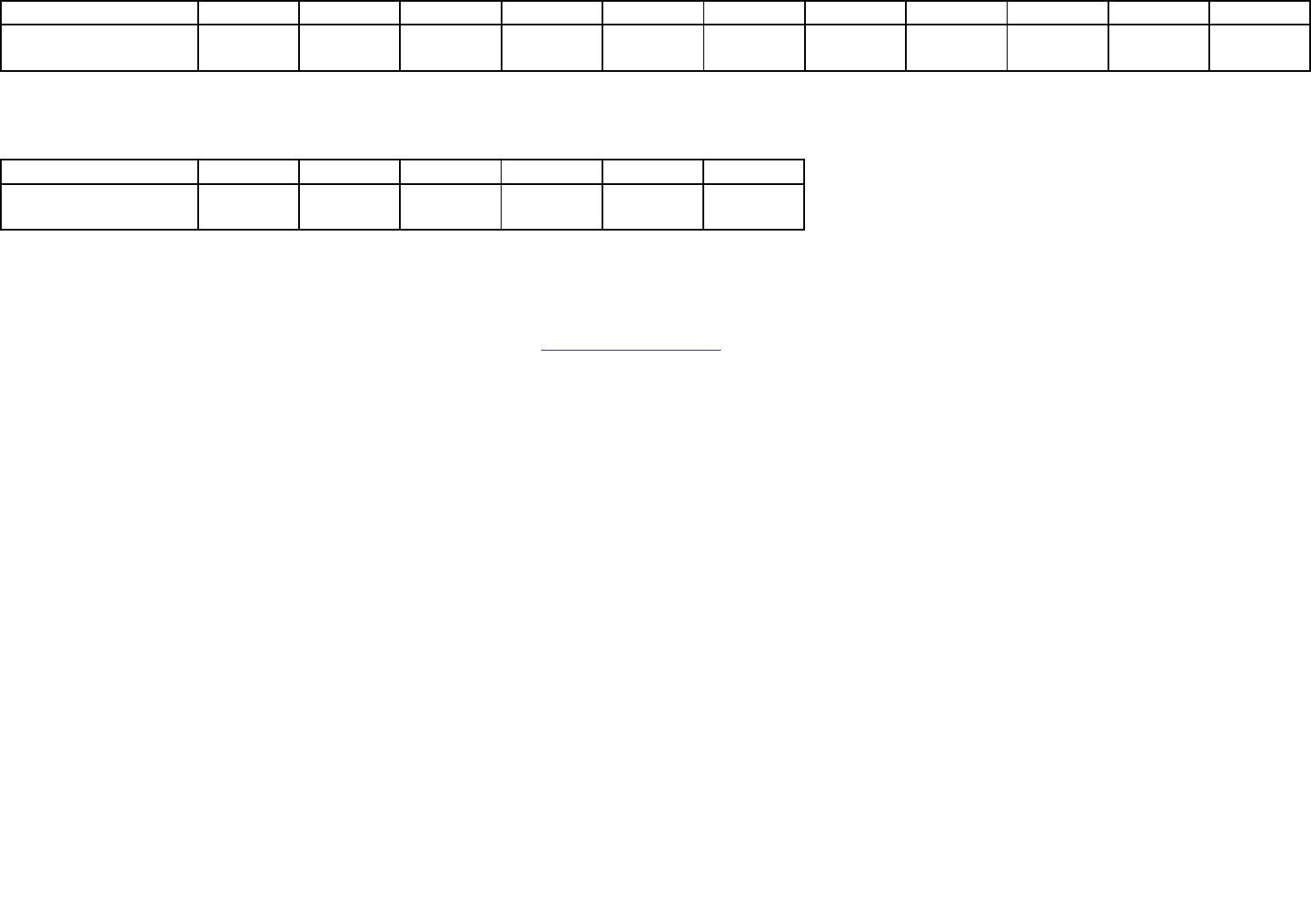
A-60
Table A.47B Receipt of Treatment for Depression in the Past Year: Among Adolescents Aged 12 to 17 with Major Depressive Episode (MDE) or MDE with Severe
Impairment in the Past Year; 2004-2020
MDE 2004 2005 2006 2007 2008 2009 2010 2011 2012 2013 2014
MDE 40.3 (1.38) 37.8 (1.42) 38.8 (1.60) 39.0 (1.52) 37.7 (1.48) 34.6 (1.52) 37.8 (1.51) 38.4 (1.47) 37.0 (1.34) 38.1 (1.35) 41.2 (1.42)
MDE with Severe Impairment
1
-- -- 46.5 (1.95) 43.9 (1.90) 42.6 (1.73) 38.8 (1.83) 41.1 (1.80) 43.5 (1.79) 41.0 (1.66) 45.0 (1.61) 44.7 (1.67)
NOTE: Footnotes and source information are shown at the end of the second half of this table.
Table A.47B Receipt of Treatment for Depression in the Past Year: Among Adolescents Aged 12 to 17 with Major Depressive Episode (MDE) or MDE with Severe
Impairment in the Past Year; 2004-2020 (continued)
MDE 2015 2016 2017 2018 2019 2020
MDE 39.3 (1.40) 40.9 (1.30) 41.5 (1.29) 41.4 (1.36) 43.3 (1.34) 41.6 (2.45)
MDE with Severe Impairment
1
44.6 (1.63) 46.7 (1.58) 47.5 (1.57) 46.9 (1.65) 49.7 (1.63) 46.9 (2.69)
-- = not available.
NOTE:
Estimates shown are percentages with standard errors included in parentheses.
NOTE:
Respondents with unknown past year depression treatment data and/or unknown past year MDE data were excluded.
NOTE: Estimates in the 2020 column are italicized to indicate caution should be used when comparing estimates between 2020 and prior years because of methodological changes for 2020. Due to these changes,
significance testing between 2020 and prior years was not performed. See the 2020 National Survey on Drug Use and Health: Methodological Summary and Definitions for details.
NOTE: Additional estimates may be found in the detailed tables for the 2020 NSDUH at https://www.samhsa.gov/data/. Measures and terms are defined in Appendix A of the 2020 detailed tables.
1
Impairment is based on the Sheehan Disability Scale role domains, which measure the impact of a disorder on an adolescent’s life. Impairment is defined as the highest severity level of role impairment across four
domains: (1) chores at home, (2) school or work, (3) close relationships with family, and (4) social life. Ratings ≥ 7 on a 0 to 10 scale were considered Severe Impairment. Respondents with unknown impairment data
were excluded.
Source:
SAMHSA, Center for Behavioral Health Statistics and Quality, National Survey on Drug Use and Health, 2004-2019 and Quarters 1 and 4, 2020.
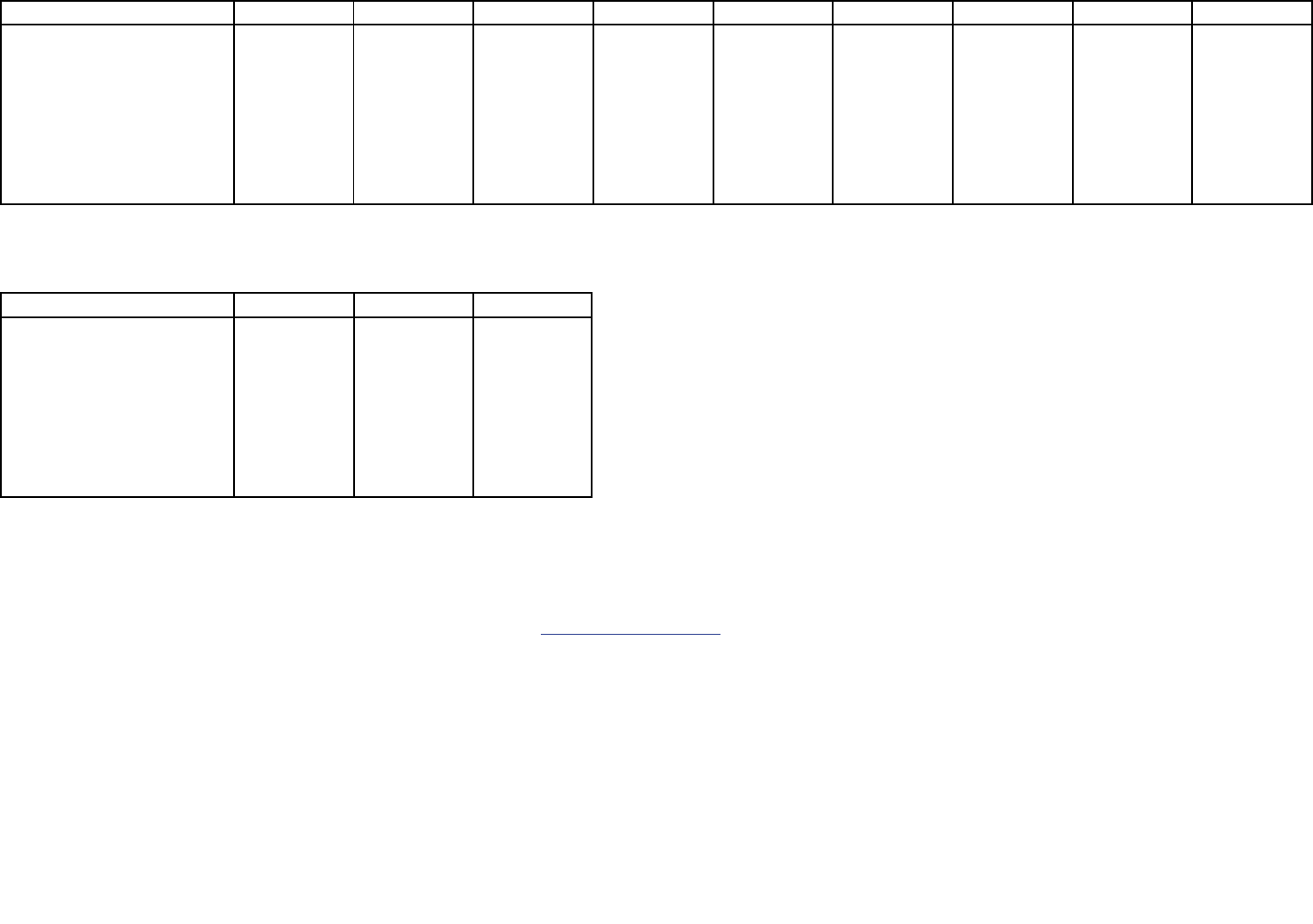
A-61
Table A.48B Receipt of Treatment for Depression in the Past Year: Among Adults Aged 18 or Older with Major Depressive Episode (MDE) or MDE with Severe Impairment
in the Past Year; 2009-2020
MDE/Age Group 2009 2010 2011 2012 2013 2014 2015 2016 2017
MDE 64.3 (1.31) 68.2 (1.25) 68.1 (1.24) 68.0 (1.24) 68.6 (1.22) 68.6 (1.03) 67.2 (1.08) 65.3 (1.09) 66.8 (1.01)
18-25 47.0 (1.57) 48.7 (1.57) 47.8 (1.64) 49.8 (1.52) 50.8 (1.50) 49.5 (1.64) 46.8 (1.58) 44.1 (1.45) 50.7 (1.40)
26-49 64.8 (1.72) 68.1 (1.69) 68.1 (1.74) 68.8 (1.75) 66.7 (1.80) 67.9 (1.36) 67.4 (1.36) 67.4 (1.35) 67.3 (1.36)
50 or Older 73.8 (2.83) 78.4 (2.55) 80.0 (2.50) 76.8 (2.52) 81.3 (2.64) 80.8 (2.04) 80.9 (2.32) 77.3 (2.23) 79.7 (2.15)
MDE with Severe Impairment
1
71.5 (1.49) 72.9 (1.47) 73.7 (1.44) 73.1 (1.47) 76.4 (1.36) 73.7 (1.19) 72.7 (1.22) 72.2 (1.23) 72.1 (1.13)
18-25 51.2 (1.95) 53.9 (1.94) 54.2 (2.08) 55.5 (1.89) 56.8 (1.80) 55.3 (2.02) 52.0 (1.98) 51.3 (1.75) 57.1 (1.82)
26-49 72.4 (1.97) 74.2 (1.89) 74.1 (1.96) 73.7 (2.14) 74.4 (2.12) 72.3 (1.68) 72.0 (1.63) 74.3 (1.52) 71.8 (1.62)
50 or Older 84.4 (3.20) 81.4 (3.01) 85.0 (3.00) 82.4 (2.91) 90.8 (2.48) 85.9 (2.17) 87.9 (2.26) 84.1 (2.57) 86.4 (2.18)
NOTE: Footnotes and source information are shown at the end of the second half of this table.
Table A.48B Receipt of Treatment for Depression in the Past Year: Among Adults Aged 18 or Older with Major Depressive Episode (MDE) or MDE with Severe Impairment
in the Past Year; 2009-2020 (continued)
MDE/Age Group 2018 2019 2020
MDE 64.8 (0.96) 66.3 (0.94) 66.0 (1.58)
18-25 49.6 (1.36) 50.9 (1.35) 57.6 (2.05)
26-49 64.4 (1.37) 68.9 (1.25) 64.8 (2.25)
50 or Older 78.9 (2.18) 76.5 (2.34) 75.3 (3.64)
MDE with Severe Impairment
1
68.6 (1.18) 72.2 (1.07) 71.0 (1.75)
18-25 53.7 (1.65) 56.4 (1.61) 63.8 (2.38)
26-49 68.0 (1.67) 74.4 (1.43) 68.7 (2.58)
50 or Older 83.1 (2.43) 83.6 (2.55) 80.9 (3.95)
NOTE: Estimates shown are percentages with standard errors included in parentheses.
NOTE:
Respondents with unknown past year depression treatment data and/or unknown past year MDE data were excluded.
NOTE: Estimates in the 2020 column are italicized to indicate caution should be used when comparing estimates between 2020 and prior years because of methodological changes for 2020. Due to these changes,
significance testing between 2020 and prior years was not performed. See the 2020 National Survey on Drug Use and Health: Methodological Summary and Definitions for details.
NOTE:
Estimates in this table for 2020 exclude a subset of respondents who did not complete the questionnaire. The analysis weights and estimates were adjusted for the reduced sample size. See the 2020 National
Survey on Drug Use and Health: Methodological Summary and Definitions for details.
NOTE: Additional estimates may be found in the detailed tables for the 2020 NSDUH at https://www.samhsa.gov/data/. Measures and terms are defined in Appendix A of the 2020 detailed tables.
1
Impairment is based on the Sheehan Disability Scale role domains, which measure the impact of a disorder on an adult’s life. Impairment is defined as the highest severity level of role impairment across four domains:
(1) home management, (2) work, (3) close relationships with others, and (4) social life. Ratings ≥ 7 on a 0 to 10 scale were considered Severe Impairment. Respondents with unknown impairment data were excluded.
Source:
SAMHSA, Center for Behavioral Health Statistics and Quality, National Survey on Drug Use and Health, 2009-2019 and Quarters 1 and 4, 2020.
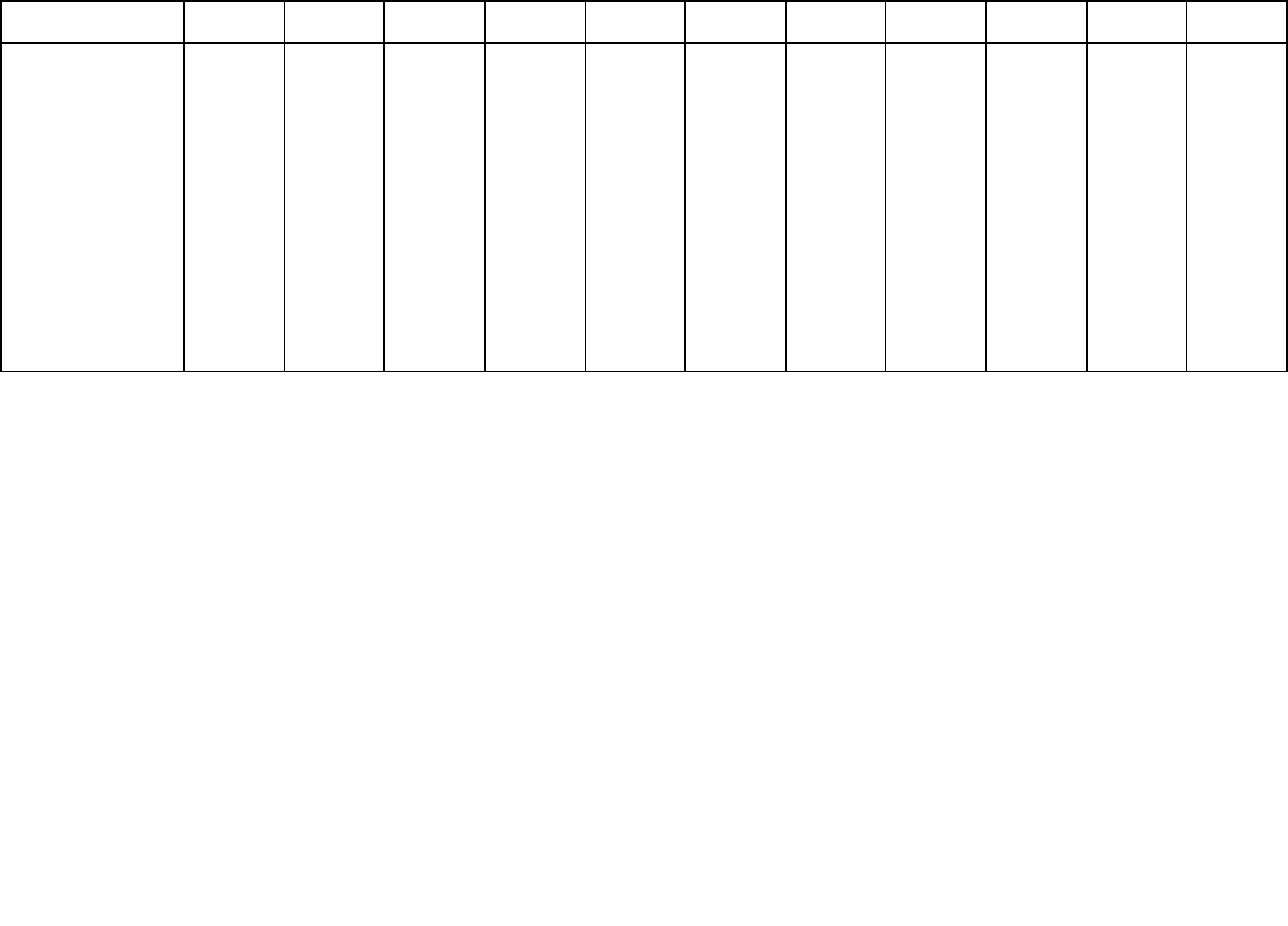
A-62
Table A.49B Sources of Mental Health Services in the Past Year: Among Adolescents Aged 12 to 17; 2002-2020
Source of Mental Health
Service 2002 2003 2004 2005 2006 2007 2008 2009 2010 2011 2012
Specialty Mental Health
Service 11.8 (0.28) 12.4 (0.28) 13.4 (0.31) 13.4 (0.30) 13.0 (0.29) 12.4 (0.31) 12.7 (0.29) 12.0 (0.30) 12.1 (0.30) 12.6 (0.31) 12.7 (0.28)
Outpatient
10.8 (0.27) 11.3 (0.27) 12.1 (0.30) 12.1 (0.29) 11.7 (0.29) 11.2 (0.29) 11.5 (0.29) 10.9 (0.29) 10.9 (0.28) 11.5 (0.30) 11.5 (0.27)
Inpatient or Residential
(Overnight or Longer
Stay)
2.1 (0.12) 2.2 (0.13) 2.5 (0.14) 2.5 (0.14) 2.4 (0.14) 2.3 (0.13) 2.2 (0.13) 2.1 (0.13) 2.2 (0.13) 2.1 (0.13) 2.2 (0.13)
Education
1
nc nc nc nc nc nc nc 12.1 (0.30) 12.4 (0.29) 11.9 (0.28) 12.9 (0.29)
General Medicine
Pediatrician or Other
Family Doctor
2.7 (0.13) 2.9 (0.15) 3.4 (0.15) 3.2 (0.17) 2.8 (0.14) 2.8 (0.14) 2.9 (0.14) 2.5 (0.14) 2.5 (0.14) 2.5 (0.14) 2.5 (0.13)
Juvenile Justice
Juvenile Detention
Center, Prison, or Jail
-- -- -- -- -- -- -- 0.4 (0.06) 0.3 (0.05) 0.4 (0.06) 0.3 (0.05)
Child Welfare
Foster Care or
Therapeutic Foster Care
0.6 (0.06) 0.7 (0.08) 0.6 (0.07) 0.6 (0.07) 0.5 (0.07) 0.5 (0.05) 0.5 (0.06) 0.4 (0.05) 0.4 (0.06) 0.6 (0.07) 0.4 (0.05)
NOTE: Footnotes and source information are shown at the end of the second half of this table.
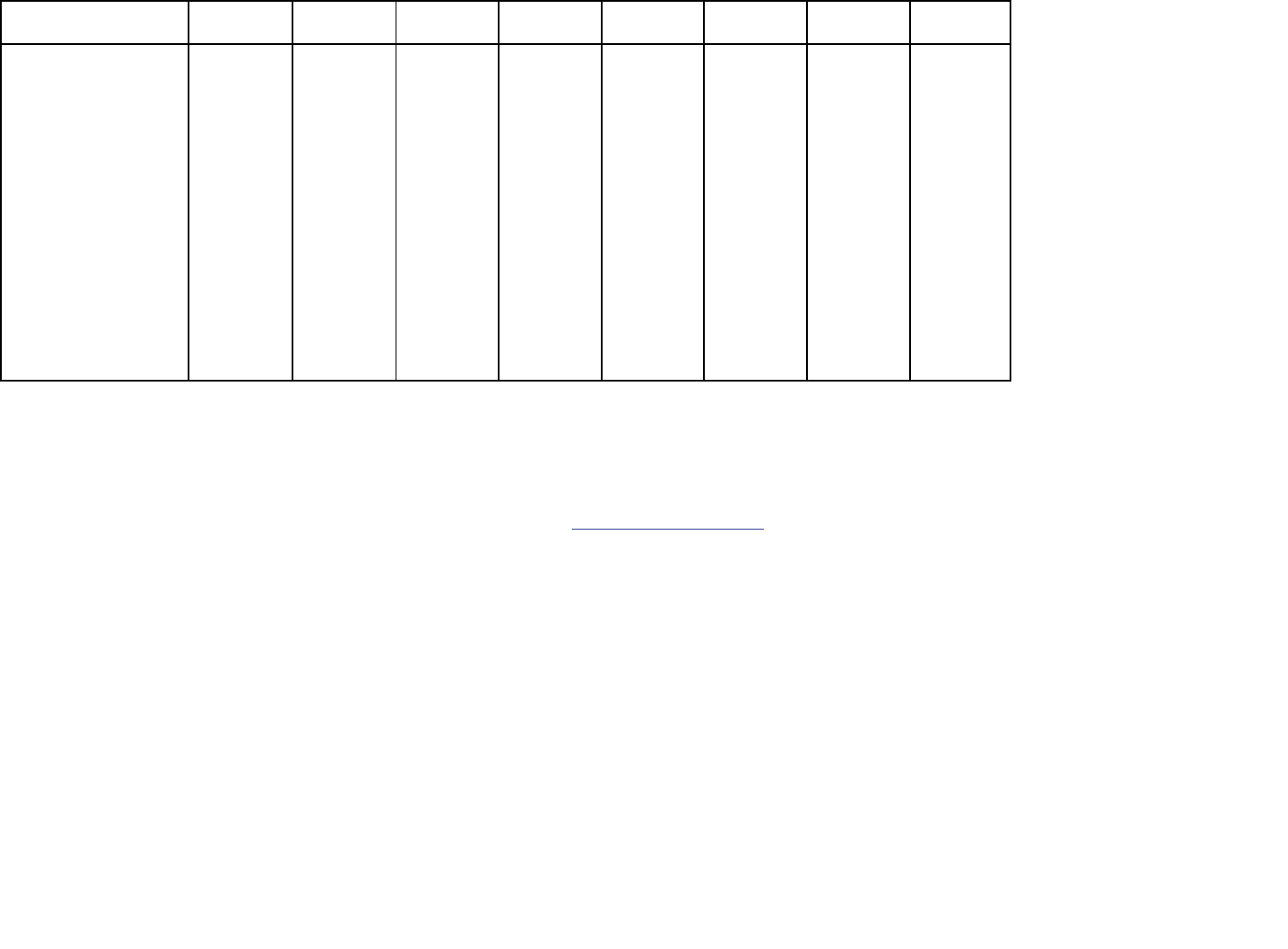
A-63
Table A.49B Sources of Mental Health Services in the Past Year: Among Adolescents Aged 12 to 17; 2002-2020 (continued)
Source of Mental Health
Service 2013 2014 2015 2016 2017 2018 2019 2020
Specialty Mental Health
Service 13.6 (0.32) 13.7 (0.34) 13.3 (0.32) 14.7 (0.33) 14.8 (0.36) 16.0 (0.38) 16.7 (0.38) 17.3 (0.76)
Outpatient
12.5 (0.31) 12.7 (0.33) 12.0 (0.31) 13.2 (0.32) 13.6 (0.35) 14.5 (0.36) 15.3 (0.38) 16.6 (0.76)
Inpatient or Residential
(Overnight or Longer
Stay)
2.3 (0.14) 2.5 (0.15) 2.6 (0.15) 3.0 (0.16) 2.9 (0.16) 2.8 (0.16) 2.9 (0.15) 2.1 (0.28)
Education
1
13.0 (0.32) 13.2 (0.33) 13.2 (0.34) 13.1 (0.33) 13.3 (0.34) 14.2 (0.35) 15.4 (0.37) 12.8 (0.61)
General Medicine
Pediatrician or Other
Family Doctor
2.8 (0.15) 2.9 (0.15) 2.7 (0.16) 2.9 (0.15) 3.3 (0.17) 3.1 (0.17) 3.7 (0.18) 3.1 (0.29)
Juvenile Justice
Juvenile Detention
Center, Prison, or Jail
0.2 (0.04) 0.3 (0.05) 0.2 (0.04) 0.2 (0.05) 0.2 (0.04) 0.2 (0.04) 0.2 (0.04) 0.1 (0.04)
Child Welfare
Foster Care or
Therapeutic Foster Care
0.4 (0.05) 0.4 (0.06) 0.3 (0.05) 0.4 (0.07) 0.4 (0.06) 0.4 (0.06) 0.4 (0.07) 0.3 (0.09)
-- = not available; nc = not comparable due to methodological changes.
NOTE: Estimates shown are percentages with standard errors included in parentheses.
NOTE: Respondents with unknown receipt of mental health service information were excluded.
NOTE: Respondents could indicate multiple service sources; thus, these response categories are not mutually exclusive.
NOTE: Estimates in the 2020 column are italicized to indicate caution should be used when comparing estimates between 2020 and prior years because of methodological changes for 2020. Due to these
changes, significance testing between 2020 and prior years was not performed. See the 2020 National Survey on Drug Use and Health: Methodological Summary and Definitions for details.
NOTE: Additional estimates may be found in the detailed tables for the 2020 NSDUH at https://www.samhsa.gov/data/
. Measures and terms are defined in Appendix A of the 2020 detailed tables.
1
Respondents who did not report their school enrollment status, who reported not being enrolled in school in the past 12 months, or who reported being home-schooled were not asked about receipt of mental
health services from this source; however, respondents who reported not being enrolled in school in the past 12 months were classified as not having received mental health services from this source.
Source: SAMHSA, Center for Behavioral Health Statistics and Quality, National Survey on Drug Use and Health, 2002-2019 and Quarters 1 and 4, 2020.
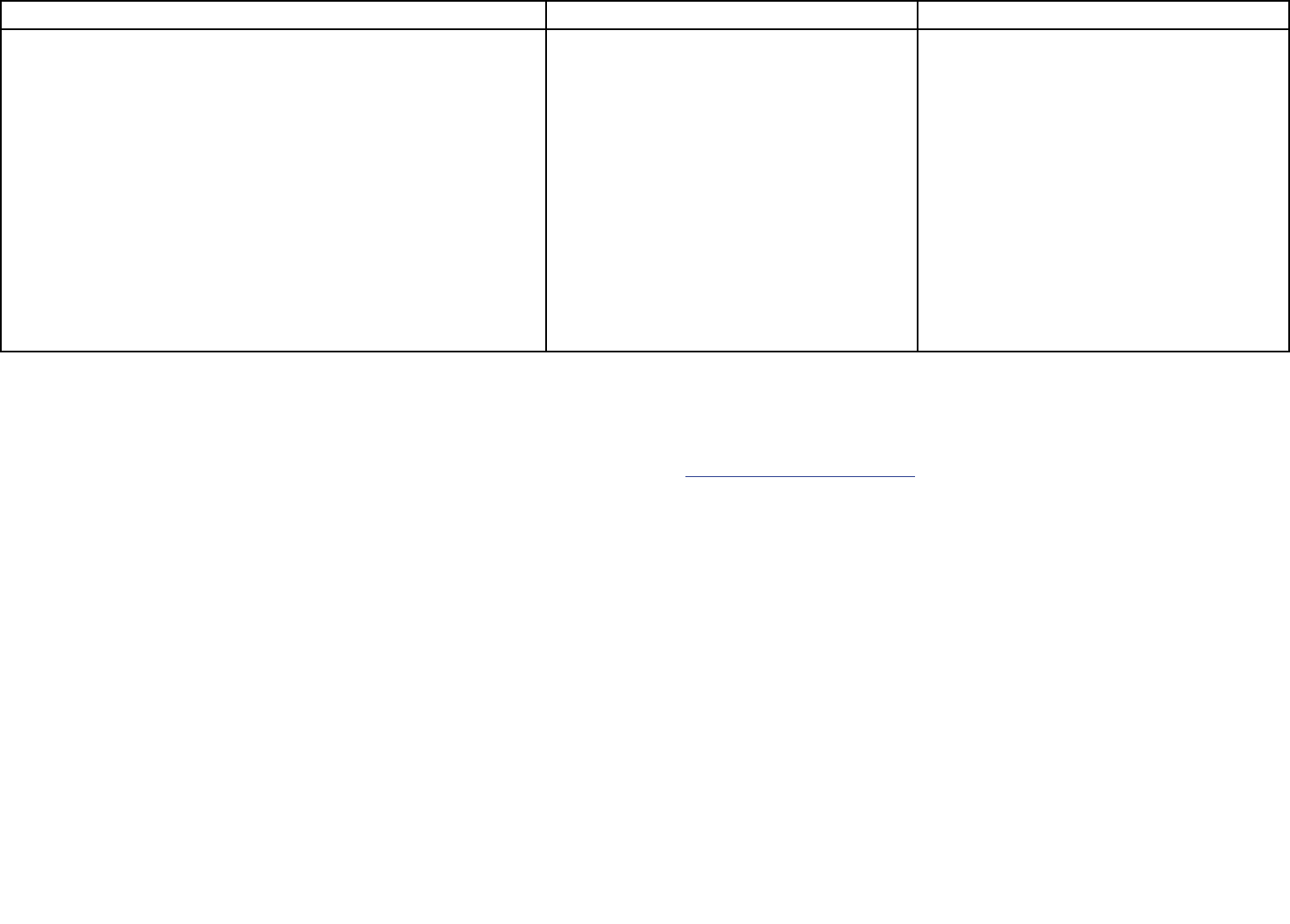
A-64
Table A.50B Sources of Mental Health Services in the Past Year: Among Adolescents Aged 12 to 17; by Quarter, 2020
Source of Mental Health Service Quarter 1 Quarter 4
Specialty Mental Health Service 16.9 (0.79) 17.6 (1.33)
Outpatient 15.9 (0.79) 17.3 (1.31)
Inpatient or Residential (Overnight or Longer Stay) 2.9 (0.43) 1.3 (0.34)
Education
1
15.7 (0.84) 9.9 (0.88)
General Medicine
Pediatrician or Other Family Doctor 3.4 (0.37) 2.8 (0.45)
Juvenile Justice
Juvenile Detention Center, Prison, or Jail 0.2 (0.08) * (*)
Child Welfare
Foster Care or Therapeutic Foster Care 0.4 (0.16) 0.1 (0.07)
Virtual
2
na 10.1 (1.11)
* = low precision; na = not applicable.
NOTE:
Estimates shown are percentages with standard errors included in parentheses.
NOTE:
Respondents with unknown receipt of mental health service information were excluded.
NOTE:
Respondents could indicate multiple service sources; thus, these response categories are not mutually exclusive.
NOTE:
Additional estimates may be found in the detailed tables for the 2020 NSDUH at https://www.samhsa.gov/data/. Measures and terms are defined in Appendix A
of the 2020 detailed tables.
1
Respondents who did not report their school enrollment status, who reported not being enrolled in school in the past 12 months, or who reported being home-schooled
were not asked about receipt of mental health services from this source; however, respondents who reported not being enrolled in school in the past 12 months were
classified as not having received mental health services from this source.
2
Virtual mental health services for adolescents aged 12 to 17 include treatment/counseling for emotional or behavioral problems not caused by drug or alcohol use.
Respondents with unknown virtual mental health service information were excluded.
Source:
SAMHSA, Center for Behavioral Health Statistics and Quality, National Survey on Drug Use and Health, Quarters 1 and 4, 2020.
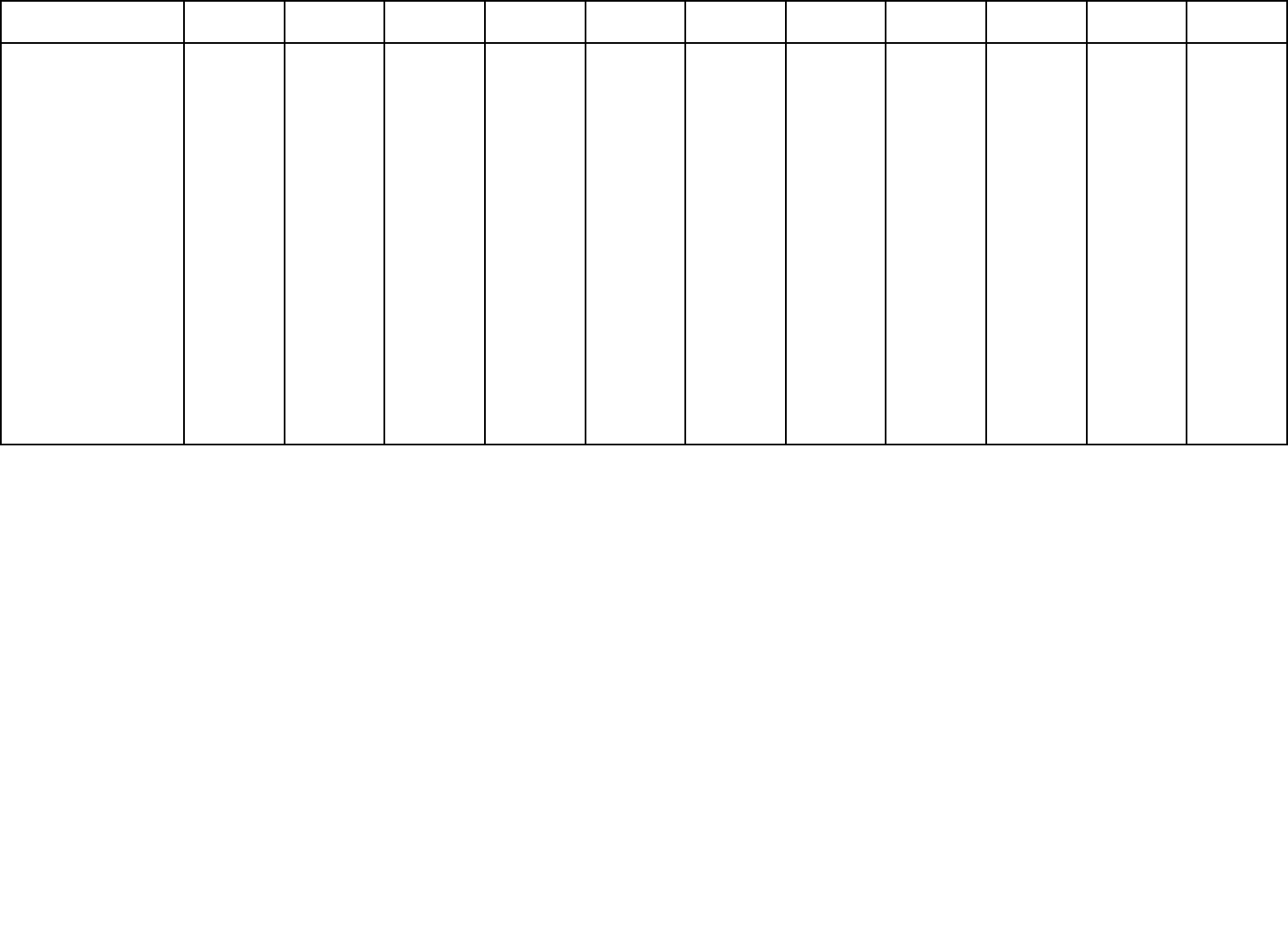
A-65
Table A.51B Type of Mental Health Services Received in the Past Year: Among Adults Aged 18 or Older; by Age Group, 2002-2020
Mental Health
Services
1
/Age Group 2002 2003 2004 2005 2006 2007 2008 2009 2010 2011 2012
MENTAL HEALTH
SERVICES 13.0 (0.27) 13.2 (0.26) 12.8 (0.26) 13.0 (0.26) 12.9 (0.26) 13.3 (0.27) 13.5 (0.29) 13.4 (0.27) 13.8 (0.27) 13.6 (0.26) 14.5 (0.28)
18-25
10.5 (0.25) 11.1 (0.28) 10.8 (0.26) 11.2 (0.27) 10.8 (0.28) 10.4 (0.28) 11.0 (0.28) 11.2 (0.27) 11.0 (0.27) 11.4 (0.30) 12.0 (0.29)
26-49 14.5 (0.36) 14.5 (0.35) 14.4 (0.34) 13.9 (0.34) 14.0 (0.37) 14.3 (0.35) 14.1 (0.34) 14.6 (0.36) 14.9 (0.37) 14.9 (0.36) 15.2 (0.38)
50 or Older 12.0 (0.54) 12.3 (0.53) 11.7 (0.51) 12.5 (0.53) 12.4 (0.48) 13.2 (0.53) 13.7 (0.57) 12.9 (0.52) 13.6 (0.52) 13.2 (0.47) 14.8 (0.51)
INPATIENT 0.7 (0.06) 0.8 (0.07) 0.9 (0.07) 1.0 (0.08) 0.7 (0.06) 1.0 (0.08) 0.9 (0.10) 0.8 (0.07) 0.8 (0.07) 0.8 (0.06) 0.8 (0.06)
18-25 0.9 (0.08) 1.0 (0.09) 1.2 (0.10) 1.1 (0.09) 1.1 (0.08) 1.1 (0.09) 1.1 (0.10) 1.1 (0.10) 1.0 (0.09) 1.1 (0.09) 1.1 (0.10)
26-49 0.8 (0.09) 0.9 (0.10) 0.8 (0.09) 0.9 (0.10) 0.8 (0.09) 1.1 (0.11) 0.8 (0.09) 1.0 (0.11) 0.8 (0.09) 0.8 (0.09) 0.7 (0.08)
50 or Older 0.5 (0.10) 0.7 (0.14) 0.9 (0.14) 1.0 (0.17) 0.5 (0.10) 0.7 (0.15) 0.9 (0.22) 0.6 (0.11) 0.7 (0.13) 0.7 (0.11) 0.8 (0.12)
OUTPATIENT
2,3
7.4 (0.21) 7.1 (0.19) 7.1 (0.19) 6.8 (0.20) 6.7 (0.20) 7.0 (0.19) 6.8 (0.20) 6.4 (0.19) 6.6 (0.20) 6.7 (0.19) 6.6 (0.19)
18-25 6.7 (0.21) 6.6 (0.21) 6.2 (0.21) 6.4 (0.22) 5.9 (0.23) 5.6 (0.21) 5.9 (0.21) 6.1 (0.20) 5.7 (0.21) 6.2 (0.22) 6.5 (0.22)
26-49 8.9 (0.29) 8.7 (0.28) 8.6 (0.27) 7.8 (0.27) 7.6 (0.27) 8.0 (0.28) 7.9 (0.26) 7.5 (0.27) 7.8 (0.28) 7.8 (0.28) 7.6 (0.26)
50 or Older 5.7 (0.39) 5.3 (0.35) 5.6 (0.36) 5.9 (0.39) 6.0 (0.37) 6.3 (0.37) 6.0 (0.39) 5.3 (0.34) 5.7 (0.35) 5.7 (0.34) 5.7 (0.33)
PRESCRIPTION
MEDICATION 10.5 (0.25) 10.9 (0.25) 10.5 (0.23) 10.7 (0.24) 10.9 (0.24) 11.2 (0.25) 11.4 (0.27) 11.3 (0.25) 11.7 (0.24) 11.5 (0.25) 12.4 (0.26)
18-25 7.5 (0.22) 8.3 (0.25) 8.1 (0.23) 8.3 (0.23) 8.0 (0.24) 8.0 (0.24) 8.1 (0.24) 8.5 (0.23) 8.4 (0.24) 8.8 (0.25) 9.0 (0.25)
26-49 11.4 (0.32) 11.9 (0.32) 11.7 (0.31) 11.4 (0.31) 11.7 (0.34) 11.8 (0.32) 11.7 (0.32) 12.3 (0.33) 12.5 (0.33) 12.3 (0.33) 13.0 (0.36)
50 or Older 10.5 (0.51) 10.9 (0.51) 10.1 (0.48) 10.8 (0.49) 11.0 (0.45) 11.7 (0.50) 12.2 (0.53) 11.3 (0.49) 12.0 (0.49) 11.8 (0.45) 12.9 (0.49)
NOTE: Footnotes and source information are shown at the end of the second half of this table.
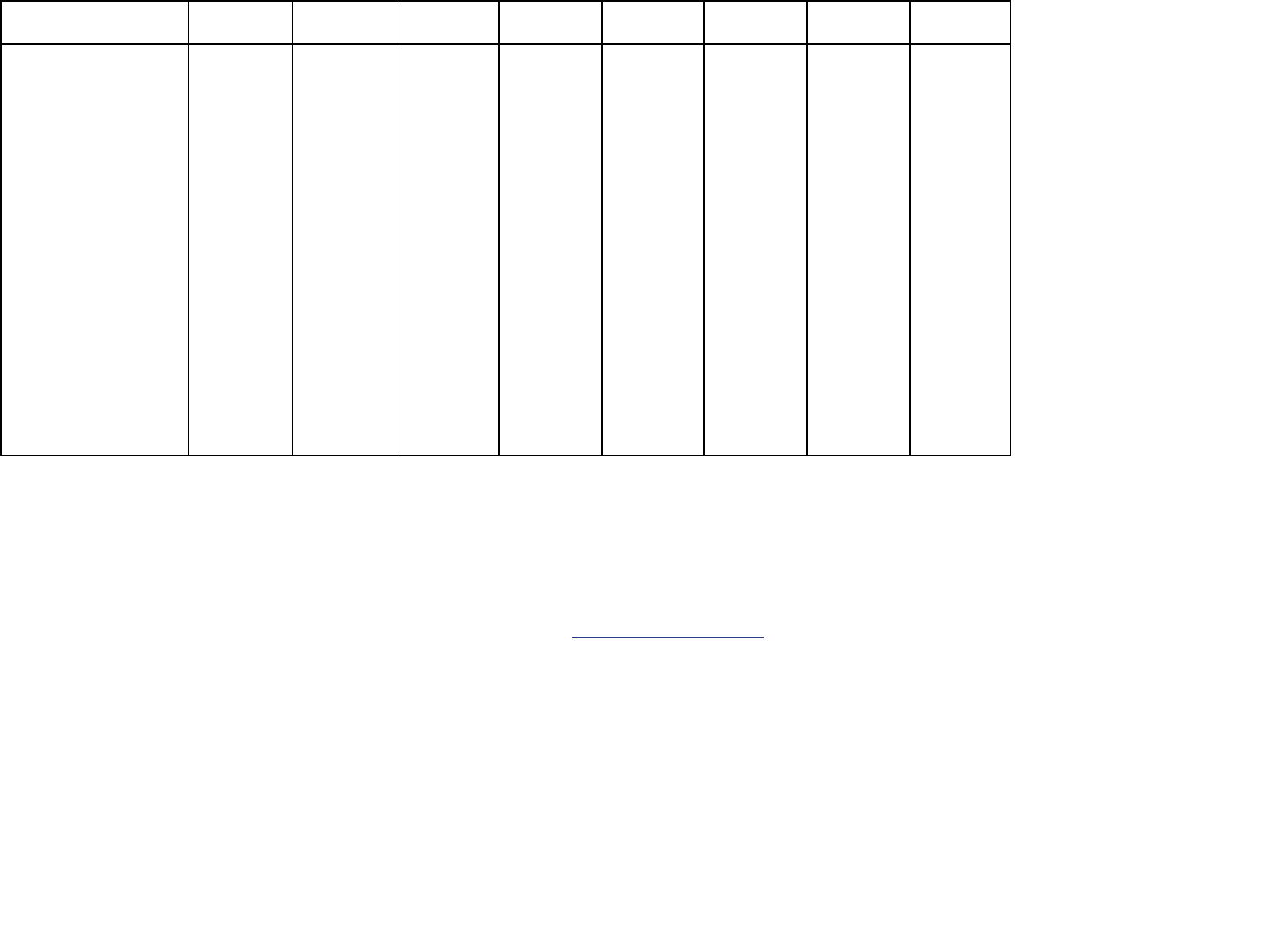
A-66
Table A.51B Type of Mental Health Services Received in the Past Year: Among Adults Aged 18 or Older; by Age Group, 2002-2020 (continued)
Mental Health
Services
1
/Age Group 2013 2014 2015 2016 2017 2018 2019 2020
MENTAL HEALTH
SERVICES 14.6 (0.28) 14.8 (0.23) 14.2 (0.23) 14.4 (0.23) 14.8 (0.25) 15.0 (0.24) 16.1 (0.24) 16.9 (0.36)
18-25
12.2 (0.32) 11.9 (0.34) 11.7 (0.31) 12.9 (0.34) 14.9 (0.39) 15.2 (0.36) 17.2 (0.39) 19.5 (0.68)
26-49 15.5 (0.40) 15.3 (0.28) 15.3 (0.29) 15.4 (0.29) 15.7 (0.30) 16.1 (0.29) 17.8 (0.32) 18.3 (0.49)
50 or Older 14.6 (0.52) 15.4 (0.42) 13.9 (0.40) 14.0 (0.42) 14.0 (0.42) 14.0 (0.42) 14.4 (0.41) 15.0 (0.62)
INPATIENT 0.9 (0.07) 1.0 (0.06) 0.9 (0.06) 0.9 (0.06) 1.0 (0.06) 1.0 (0.06) 1.0 (0.07) 0.9 (0.10)
18-25 1.3 (0.11) 1.2 (0.11) 1.4 (0.12) 1.5 (0.11) 1.5 (0.12) 1.6 (0.12) 1.7 (0.13) 1.4 (0.19)
26-49 1.0 (0.10) 1.0 (0.08) 0.9 (0.07) 1.0 (0.08) 0.9 (0.07) 1.0 (0.08) 0.9 (0.08) 1.0 (0.14)
50 or Older 0.7 (0.11) 1.0 (0.12) 0.8 (0.11) 0.7 (0.10) 0.8 (0.10) 0.7 (0.10) 0.7 (0.11) 0.7 (0.16)
OUTPATIENT
2,3
6.6 (0.21) 6.7 (0.16) 7.1 (0.17) 6.9 (0.16) 7.5 (0.18) 7.9 (0.18) 8.3 (0.19) 8.8 (0.27)
18-25 6.3 (0.22) 6.4 (0.25) 6.6 (0.24) 7.3 (0.26) 9.0 (0.29) 9.3 (0.30) 10.3 (0.33) 11.9 (0.54)
26-49 7.4 (0.29) 7.5 (0.20) 7.9 (0.22) 8.1 (0.22) 8.5 (0.22) 8.8 (0.23) 9.8 (0.25) 10.6 (0.40)
50 or Older 6.0 (0.37) 6.1 (0.29) 6.4 (0.29) 5.8 (0.27) 6.3 (0.30) 6.6 (0.30) 6.3 (0.30) 6.4 (0.43)
PRESCRIPTION
MEDICATION 12.5 (0.27) 12.6 (0.21) 11.8 (0.21) 12.0 (0.21) 12.1 (0.22) 12.2 (0.22) 13.1 (0.22) 13.8 (0.33)
18-25 9.4 (0.27) 8.8 (0.30) 8.6 (0.27) 9.7 (0.30) 11.1 (0.33) 11.1 (0.30) 12.4 (0.34) 14.5 (0.62)
26-49 13.1 (0.37) 12.8 (0.26) 12.6 (0.26) 12.6 (0.26) 12.7 (0.27) 12.9 (0.27) 14.3 (0.27) 14.4 (0.45)
50 or Older 12.9 (0.49) 13.5 (0.39) 12.0 (0.38) 12.3 (0.39) 11.8 (0.39) 11.8 (0.39) 12.3 (0.38) 13.1 (0.57)
NOTE: Estimates shown are percentages with standard errors included in parentheses.
NOTE: Estimates in the 2020 column are italicized to indicate caution should be used when comparing estimates between 2020 and prior years because of methodological changes for 2020. Due to these
changes, significance testing between 2020 and prior years was not performed. See the 2020 National Survey on Drug Use and Health: Methodological Summary and Definitions for details.
NOTE: Some 2006 to 2010 estimates may differ from previously published estimates due to updates (see Chapter 3 of the 2020 National Survey on Drug Use and Health: Methodological Summary and
Definitions).
NOTE: Mental Health Services for adults includes inpatient treatment/counseling, outpatient treatment/counseling, or use of prescription medication for problems with emotions, nerves, or mental health.
Respondents with unknown mental health service information were excluded. Questions on virtual services were added in Quarter 4 of 2020. Estimates in this table do not include data from these
questions. See the 2020 National Survey on Drug Use and Health: Methodological Summary and Definitions for details.
NOTE: Additional estimates may be found in the detailed tables for the 2020 NSDUH at https://www.samhsa.gov/data/
. Measures and terms are defined in Appendix A of the 2020 detailed tables.
1
Respondents could indicate multiple service sources; thus, these response categories are not mutually exclusive.
2
Because of revisions in 2004 to the logical editing of the outpatient mental health services data, these 2002 and 2003 estimates may differ from estimates published prior to the 2004 NSDUH.
3
Because of revisions in 2017 to the outpatient mental health service estimates, these 2010 to 2016 estimates may differ from estimates published prior to the 2017 NSDUH.
Source: SAMHSA, Center for Behavioral Health Statistics and Quality, National Survey on Drug Use and Health, 2002-2019 and Quarters 1 and 4, 2020.
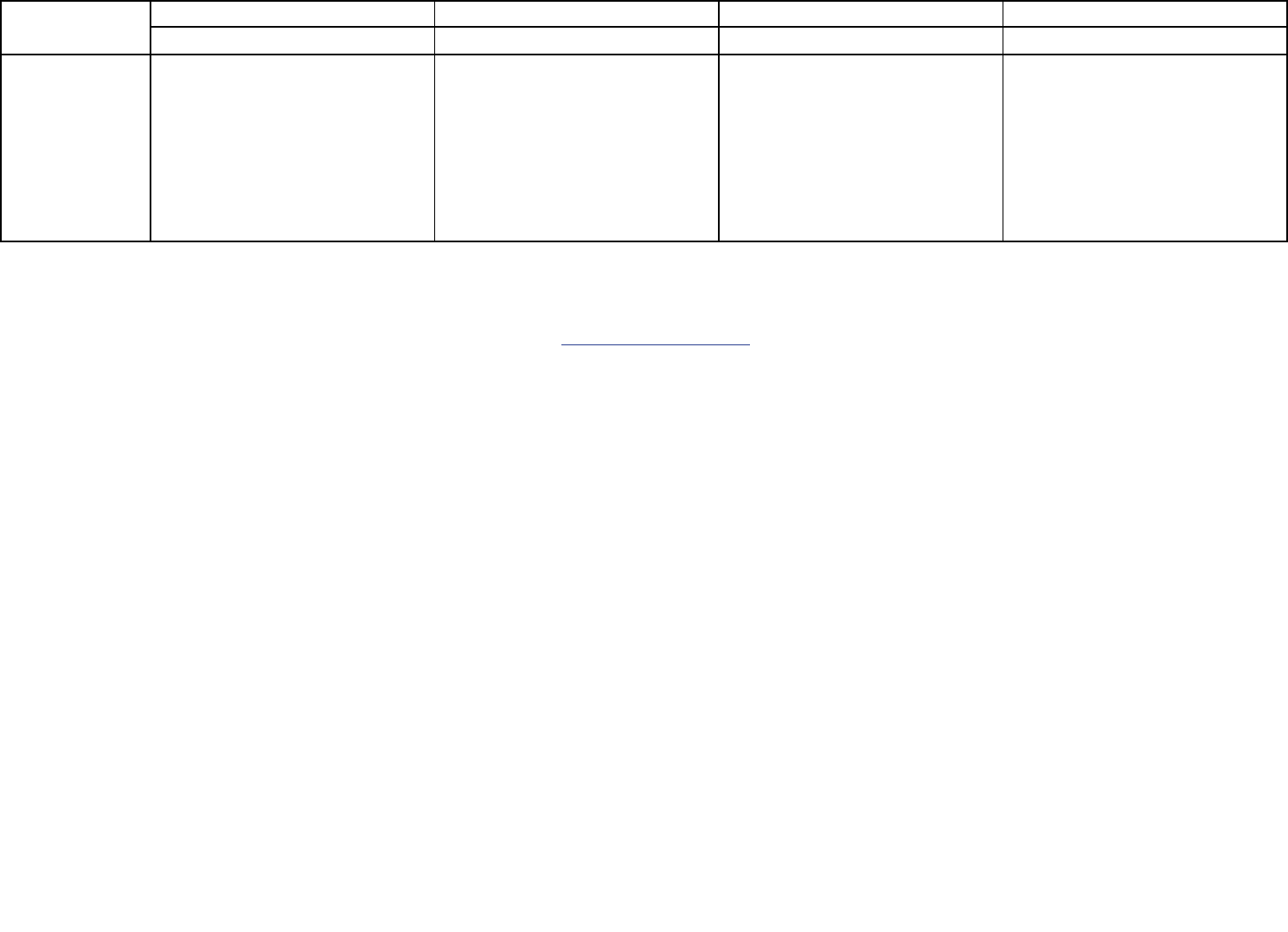
A-67
Table A.52B Received Mental Health Services Including Virtual Services in the Past Year: Among Adults Aged 18 or Older; by Age Group and Quarter, 2020
Type of Mental
Health Service
18 or Older 18-25 26-49 50 or Older
Quarter 1 Quarter 4 Quarter 1 Quarter 4 Quarter 1 Quarter 4 Quarter 1 Quarter 4
Mental Health
Service or Virtual
Service
1
16.6 (0.53) 18.7 (0.52) 18.5 (0.96) 22.5 (0.97) 17.6 (0.68) 21.1 (0.73) 15.1 (0.93) 15.6 (0.90)
Inpatient 1.1 (0.17) 0.7 (0.10) 1.4 (0.28) 1.4 (0.27) 1.1 (0.20) 1.0 (0.19) 1.0 (0.30) 0.3 (0.11)
Outpatient 8.3 (0.40) 9.4 (0.38) 11.0 (0.80) 12.8 (0.77) 9.8 (0.56) 11.4 (0.56) 6.1 (0.63) 6.7 (0.62)
Prescription
Medication 13.3 (0.47) 14.3 (0.47) 12.9 (0.86) 16.1 (0.85) 13.8 (0.61) 15.1 (0.63) 13.0 (0.83) 13.1 (0.84)
Virtual
na
11.0 (0.40)
na
14.9 (0.83)
na
13.4 (0.59)
na
7.8 (0.69)
na = not applicable.
NOTE: Estimates shown are percentages with standard errors included in parentheses.
NOTE:
Mental Health Services including Virtual Services for adults includes treatment/counseling for problems with emotions, nerves, or mental health. Respondents with unknown mental health service
including virtual service information were excluded.
NOTE: Additional estimates may be found in the detailed tables for the 2020 NSDUH at https://www.samhsa.gov/data/. Measures and terms are defined in Appendix A of the 2020 detailed tables.
1
Questions on virtual services were added in Quarter 4 of 2020; therefore, the estimates for Quarter 1 do not include data from these questions.
Source:
SAMHSA, Center for Behavioral Health Statistics and Quality, National Survey on Drug Use and Health, Quarters 1 and 4, 2020.
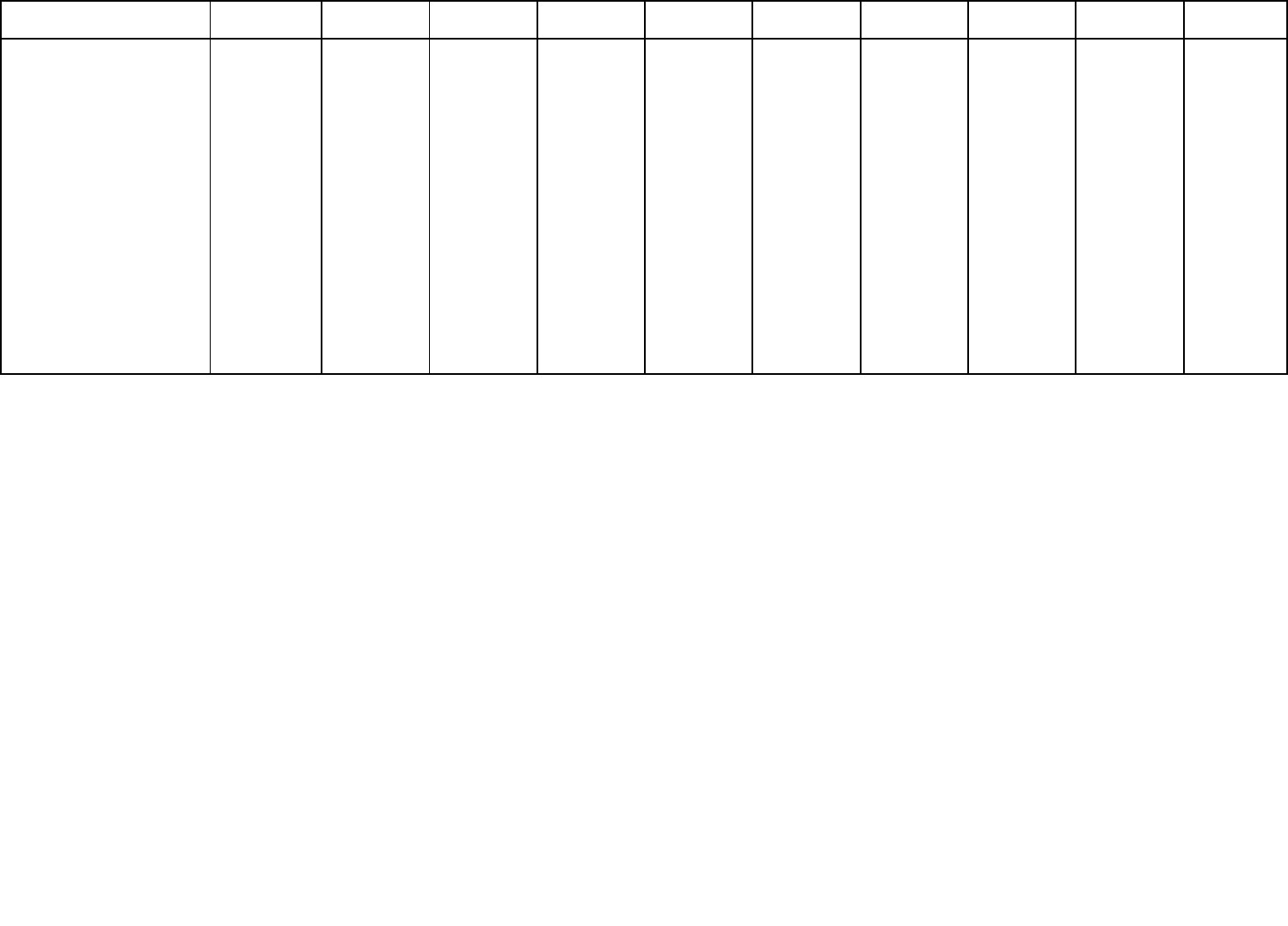
A-68
Table A.53B Type of Mental Health Services Received in the Past Year: Among Adults Aged 18 or Older with Any Mental Illness in the Past Year; by Age Group, 2008-2020
Mental Health Services
1
/
Age Group 2008 2009 2010 2011 2012 2013 2014 2015 2016 2017
MENTAL HEALTH SERVICES 40.9 (0.93) 40.2 (0.86) 42.4 (0.89) 40.8 (0.82) 41.0 (0.82) 44.7 (0.91) 44.7 (0.72) 43.1 (0.72) 43.1 (0.75) 42.6 (0.71)
18-25 30.3 (0.94) 32.0 (0.97) 32.6 (0.93) 32.9 (0.98) 34.5 (0.96) 34.7 (0.98) 33.6 (1.05) 32.0 (0.91) 35.1 (0.94) 38.4 (0.98)
26-49 41.4 (1.09) 40.8 (1.10) 43.3 (1.07) 41.1 (1.09) 42.0 (1.10) 43.5 (1.15) 44.2 (0.83) 43.3 (0.89) 43.1 (0.87) 43.3 (0.88)
50 or Older 45.2 (2.26) 42.8 (1.92) 45.1 (1.93) 43.6 (1.75) 42.4 (1.67) 50.5 (1.95) 49.9 (1.48) 48.3 (1.54) 46.8 (1.57) 44.2 (1.63)
INPATIENT 3.7 (0.51) 3.2 (0.29) 2.7 (0.25) 3.3 (0.31) 3.0 (0.28) 3.3 (0.29) 3.8 (0.26) 3.4 (0.26) 3.3 (0.24) 3.3 (0.24)
18-25 3.5 (0.39) 4.1 (0.45) 3.3 (0.35) 3.9 (0.40) 3.8 (0.39) 4.2 (0.40) 3.7 (0.37) 4.3 (0.42) 4.6 (0.41) 4.2 (0.42)
26-49 2.9 (0.38) 3.7 (0.43) 2.8 (0.38) 2.9 (0.38) 2.3 (0.30) 3.3 (0.37) 3.7 (0.34) 3.1 (0.31) 3.4 (0.32) 3.3 (0.28)
50 or Older 5.2 (1.42) 2.1 (0.50) 2.1 (0.44) 3.5 (0.63) 3.6 (0.65) 2.9 (0.60) 3.9 (0.56) 3.5 (0.59) 2.7 (0.48) 3.0 (0.53)
OUTPATIENT
2
24.1 (0.78) 22.5 (0.74) 23.4 (0.78) 24.0 (0.74) 22.4 (0.68) 24.4 (0.84) 24.3 (0.61) 25.4 (0.63) 24.5 (0.60) 25.7 (0.59)
18-25 18.9 (0.80) 20.3 (0.80) 19.9 (0.82) 20.9 (0.84) 21.9 (0.84) 21.0 (0.82) 21.3 (0.92) 20.6 (0.82) 22.8 (0.84) 24.9 (0.86)
26-49 26.0 (0.89) 23.6 (0.90) 24.9 (0.92) 25.1 (0.98) 23.6 (0.89) 24.3 (0.99) 25.8 (0.71) 26.1 (0.77) 26.0 (0.74) 26.9 (0.75)
50 or Older 23.5 (1.85) 21.9 (1.63) 22.8 (1.63) 23.8 (1.60) 21.0 (1.40) 26.1 (1.83) 23.9 (1.26) 27.0 (1.41) 23.4 (1.28) 24.4 (1.37)
PRESCRIPTION MEDICATION 35.5 (0.91) 34.8 (0.82) 36.9 (0.90) 35.6 (0.82) 35.3 (0.79) 38.9 (0.91) 38.7 (0.71) 36.7 (0.71) 37.1 (0.72) 35.7 (0.69)
18-25 23.3 (0.84) 25.3 (0.88) 25.5 (0.89) 25.3 (0.92) 26.8 (0.88) 27.2 (0.90) 25.5 (1.00) 24.3 (0.85) 27.2 (0.87) 29.1 (0.90)
26-49 35.9 (1.07) 35.3 (1.08) 37.7 (1.07) 35.6 (1.05) 37.1 (1.10) 37.7 (1.11) 38.0 (0.81) 36.4 (0.86) 36.7 (0.83) 36.1 (0.82)
50 or Older 40.8 (2.25) 38.1 (1.84) 40.7 (1.94) 39.8 (1.77) 36.7 (1.65) 45.5 (1.92) 45.3 (1.46) 43.2 (1.49) 42.2 (1.54) 38.8 (1.61)
NOTE: Footnotes and source information are shown at the end of the second half of this table.
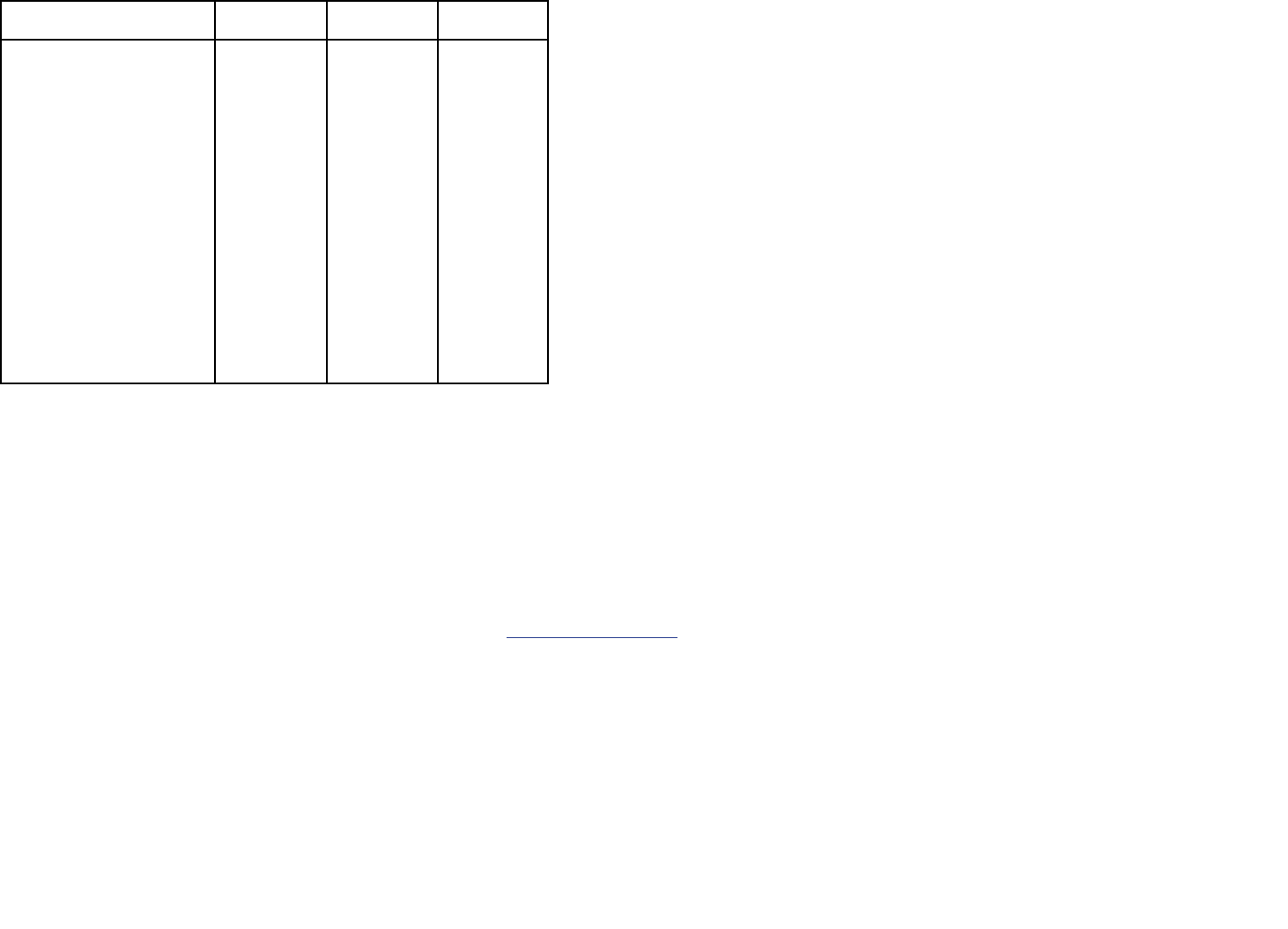
A-69
Table A.53B Type of Mental Health Services Received in the Past Year: Among Adults Aged 18 or Older with Any Mental Illness in the Past Year; by Age Group, 2008-2020
(continued)
Mental Health Services
1
/
Age Group 2018 2019 2020
MENTAL HEALTH SERVICES 43.3 (0.68) 44.8 (0.65) 46.2 (1.04)
18-25 37.3 (0.87) 38.9 (0.90) 42.1 (1.51)
26-49 43.9 (0.82) 45.4 (0.78) 46.6 (1.34)
50 or Older 45.8 (1.61) 47.2 (1.58) 48.0 (2.38)
INPATIENT 3.3 (0.23) 3.3 (0.25) 2.9 (0.33)
18-25 4.6 (0.36) 4.4 (0.38) 3.3 (0.55)
26-49 3.3 (0.30) 2.9 (0.28) 3.4 (0.52)
50 or Older 2.6 (0.48) 3.1 (0.59) 2.1 (0.55)
OUTPATIENT
2
26.1 (0.59) 27.1 (0.59) 28.5 (0.91)
18-25 24.5 (0.80) 26.0 (0.82) 28.4 (1.33)
26-49 26.7 (0.73) 28.2 (0.70) 29.6 (1.12)
50 or Older 26.2 (1.33) 25.9 (1.42) 27.0 (2.12)
PRESCRIPTION MEDICATION 36.2 (0.65) 36.7 (0.62) 38.8 (1.01)
18-25 28.6 (0.84) 28.8 (0.84) 32.4 (1.44)
26-49 36.6 (0.79) 37.3 (0.74) 38.2 (1.27)
50 or Older 40.0 (1.55) 40.4 (1.52) 43.4 (2.36)
NOTE: Estimates shown are percentages with standard errors included in parentheses.
NOTE: Respondents with unknown mental health service information were excluded.
NOTE: Estimates in the 2020 column are italicized to indicate caution should be used when comparing estimates between 2020 and prior years because of methodological changes for 2020. Due to these changes, significance
testing between 2020 and prior years was not performed. See the 2020 National Survey on Drug Use and Health: Methodological Summary and Definitions for details.
NOTE: Estimates in this table for 2020 exclude a subset of respondents who did not complete the questionnaire. The analysis weights and estimates were adjusted for the reduced sample size. See the 2020 National Survey on Drug
Use and Health: Methodological Summary and Definitions for details.
NOTE: Some 2008 to 2010 estimates may differ from previously published estimates due to updates (see Chapter 3 of the 2020 National Survey on Drug Use and Health: Methodological Summary and Definitions).
NOTE: Mental Health Services for adults includes inpatient treatment/counseling, outpatient treatment/counseling, or use of prescription medication for problems with emotions, nerves, or mental health. Respondents with unknown
mental health service information were excluded. Questions on virtual services were added in Quarter 4 of 2020. Estimates in this table do not include data from these questions. See the 2020 National Survey on Drug Use and
Health: Methodological Summary and Definitions for details.
NOTE: Any Mental Illness (AMI) aligns with criteria from the 4th edition of the Diagnostic and Statistical Manual of Mental Disorders and is defined as having a diagnosable mental, behavioral, or emotional disorder, other than a
developmental or substance use disorder. AMI estimates from 2008 to 2011 may differ from previously published estimates due to revised estimation procedures. These mental illness estimates are based on a predictive model
and are not direct measures of diagnostic status.
NOTE: Additional estimates may be found in the detailed tables for the 2020 NSDUH at https://www.samhsa.gov/data/
. Measures and terms are defined in Appendix A of the 2020 detailed tables.
1
Respondents could indicate multiple service sources; thus, these response categories are not mutually exclusive.
2
Because of revisions in 2017 to the outpatient mental health service estimates, these 2010 to 2016 estimates may differ from estimates published prior to the 2017 NSDUH.
Source: SAMHSA, Center for Behavioral Health Statistics and Quality, National Survey on Drug Use and Health, 2008-2019 and Quarters 1 and 4, 2020.
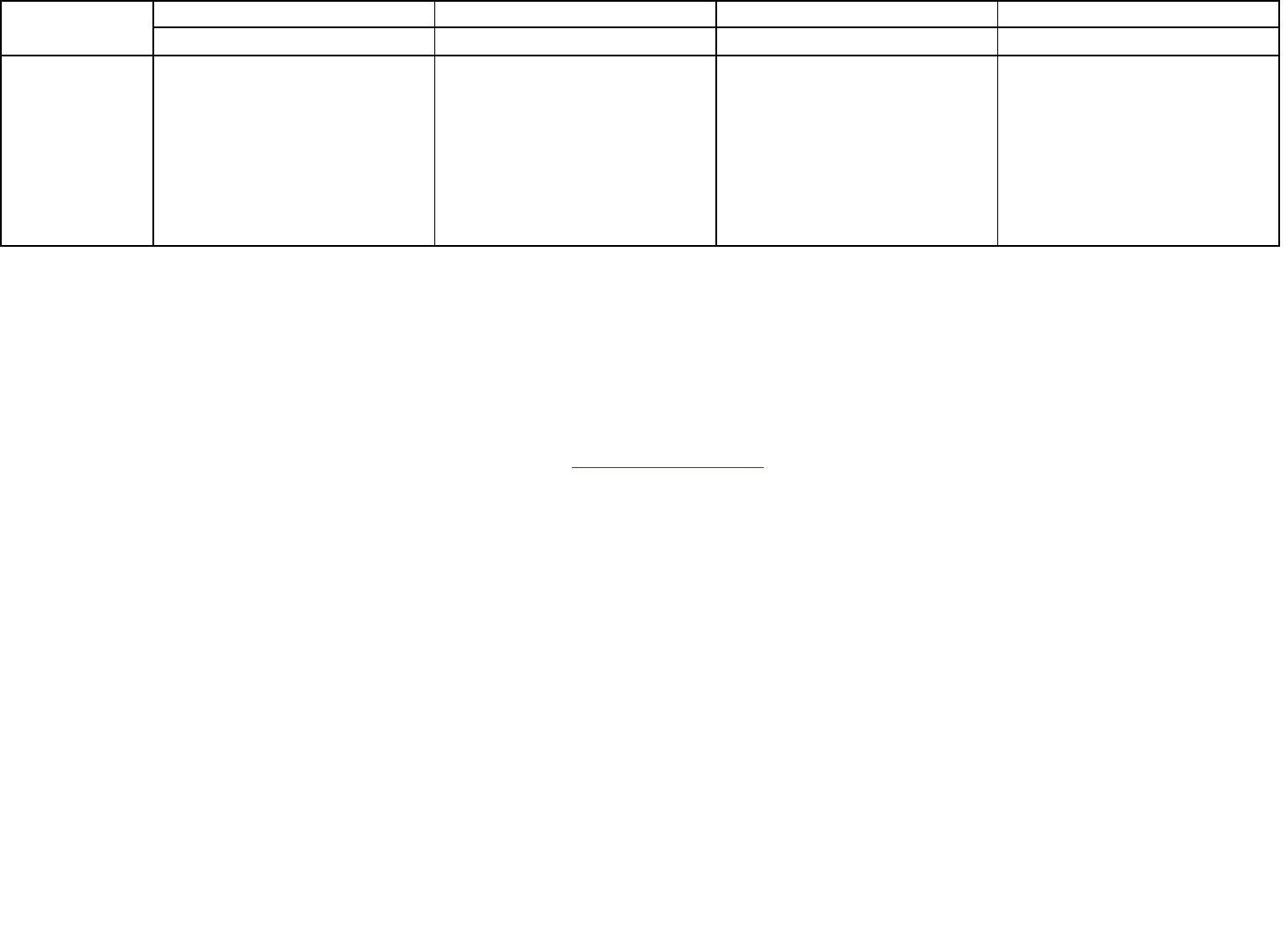
A-70
Table A.54B Received Mental Health Services Including Virtual Services in the Past Year: Among Adults Aged 18 or Older with Any Mental Illness in the Past Year;
by Age Group and Quarter, 2020
Type of Mental
Health Service
18 or Older 18-25 26-49 50 or Older
Quarter 1 Quarter 4 Quarter 1 Quarter 4 Quarter 1 Quarter 4 Quarter 1 Quarter 4
Mental Health
Service or Virtual
Service
1
44.9 (1.53) 49.8 (1.43) 38.0 (2.06) 50.5 (2.35) 46.1 (2.04) 49.8 (1.76) 48.1 (3.37) 49.4 (3.42)
Inpatient 3.0 (0.47) 2.9 (0.46) 2.7 (0.67) 3.9 (0.92) 3.5 (0.76) 3.2 (0.70) 2.4 (0.84) 1.8 (0.72)
Outpatient 27.0 (1.31) 30.0 (1.34) 24.9 (1.90) 32.6 (2.08) 28.4 (1.62) 30.7 (1.57) 26.3 (3.11) 27.6 (3.06)
Prescription
Medication 37.4 (1.42) 40.0 (1.40) 28.4 (1.96) 37.1 (2.15) 37.6 (1.89) 38.8 (1.69) 43.5 (3.26) 43.2 (3.33)
Virtual
na
33.7 (1.37)
na
35.9 (2.10)
na
34.9 (1.65)
na
30.9 (3.10)
na = not applicable.
NOTE:
Estimates shown are percentages with standard errors included in parentheses.
NOTE:
Estimates in this table exclude a subset of respondents who did not complete the questionnaire. The analysis weights and estimates were adjusted for the reduced sample size. Therefore, some
estimates in this table could differ from corresponding estimates in other tables that did not undergo sample size adjustments. See the 2020 National Survey on Drug Use and Health: Methodological
Summary and Definitions for details.
NOTE:
Mental Health Services including Virtual Services for adults includes treatment/counseling for problems with emotions, nerves, or mental health. Respondents with unknown mental health service
including virtual service information were excluded.
NOTE:
Mental Illness aligns with criteria from the 4th edition of the Diagnostic and Statistical Manual of Mental Disorders and is defined as having a diagnosable mental, behavioral, or emotional disorder,
other than a developmental or substance use disorder. Estimates of serious mental illness (SMI) are a subset of estimates of any mental illness (AMI) because SMI is limited to people with AMI that
resulted in serious functional impairment. These mental illness estimates are based on a predictive model and are not direct measures of diagnostic status.
NOTE:
Additional estimates may be found in the detailed tables for the 2020 NSDUH at https://www.samhsa.gov/data/. Measures and terms are defined in Appendix A of the 2020 detailed tables.
1
Questions on virtual services were added in Quarter 4 of 2020; therefore, the estimates for Quarter 1 do not include data from these questions.
Source:
SAMHSA, Center for Behavioral Health Statistics and Quality, National Survey on Drug Use and Health, Quarters 1 and 4, 2020.
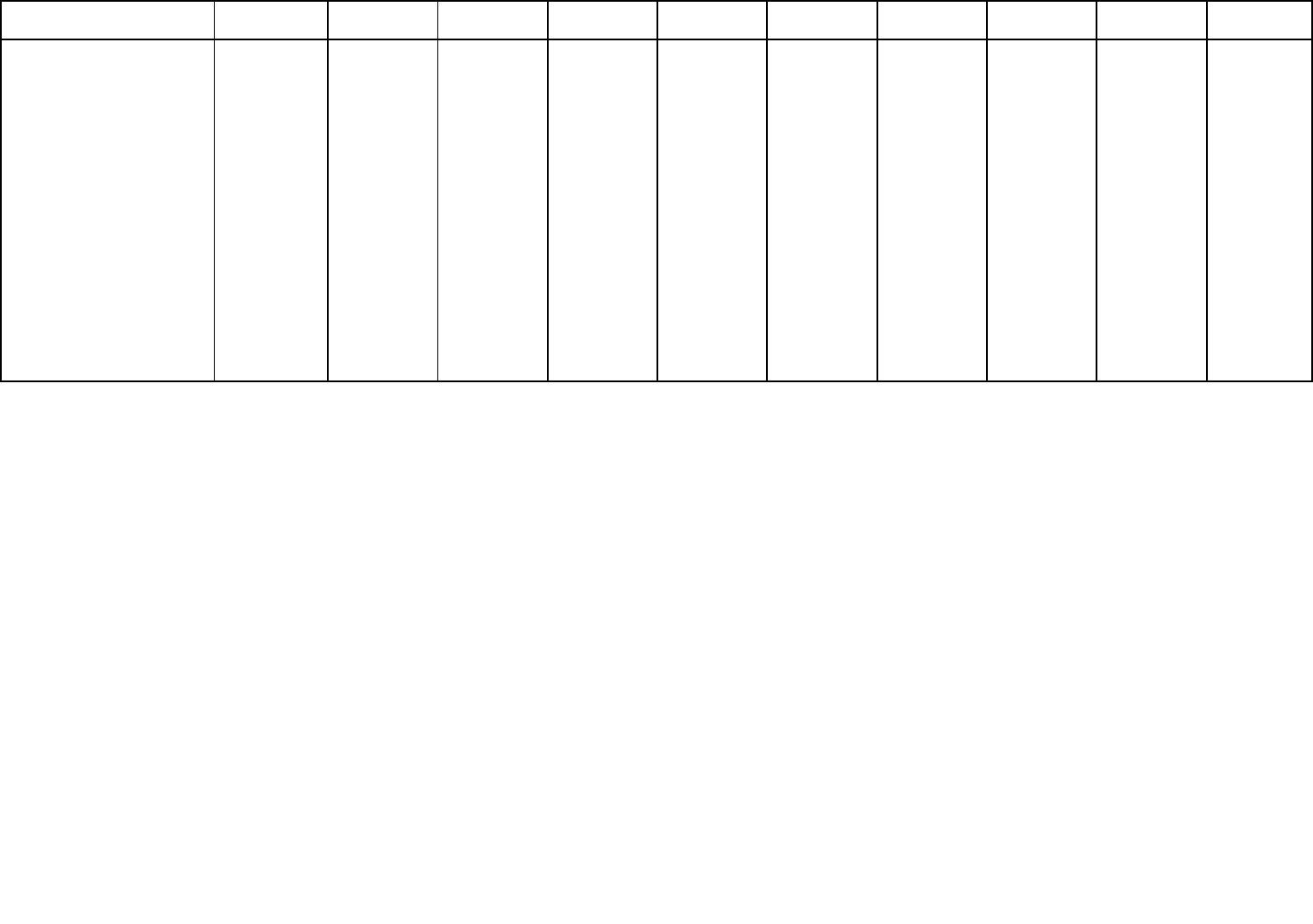
A-71
Table A.55B Type of Mental Health Services Received in the Past Year: Among Adults Aged 18 or Older with Serious Mental Illness in the Past Year; by Age Group,
2008-2020
Mental Health Services
1
/
Age Group 2008 2009 2010 2011 2012 2013 2014 2015 2016 2017
MENTAL HEALTH SERVICES 65.7 (1.76) 66.5 (1.68) 67.5 (1.67) 64.9 (1.70) 62.9 (1.65) 68.5 (1.78) 68.5 (1.33) 65.3 (1.33) 64.8 (1.34) 66.7 (1.27)
18-25 45.9 (2.28) 55.0 (2.20) 53.7 (2.32) 52.1 (2.27) 53.1 (2.14) 54.0 (2.30) 53.9 (2.13) 50.7 (2.14) 51.5 (2.05) 57.4 (1.94)
26-49 67.2 (2.08) 64.5 (2.06) 67.4 (2.05) 63.6 (2.20) 63.5 (2.27) 68.4 (2.29) 66.2 (1.72) 66.1 (1.68) 66.1 (1.57) 66.2 (1.60)
50 or Older 73.2 (4.33) 76.1 (3.74) 74.0 (3.74) 73.2 (3.60) 66.3 (3.62) 74.9 (3.51) 79.2 (2.59) 72.2 (3.09) 71.5 (3.16) 75.6 (3.08)
INPATIENT 8.6 (1.29) 8.6 (0.98) 6.7 (0.77) 8.8 (1.11) 6.2 (0.77) 8.3 (0.93) 8.8 (0.85) 7.0 (0.71) 7.6 (0.73) 7.6 (0.65)
18-25 7.9 (1.18) 11.4 (1.81) 8.1 (1.06) 8.0 (1.19) 8.5 (1.18) 10.3 (1.27) 8.2 (1.05) 8.9 (1.17) 8.8 (1.06) 8.6 (1.10)
26-49 6.9 (1.19) 9.7 (1.44) 7.0 (1.04) 8.0 (1.17) 4.8 (0.82) 8.4 (1.22) 8.0 (0.93) 7.3 (0.95) 8.1 (0.93) 8.3 (0.89)
50 or Older 12.4 (3.65) 4.9 (1.47) 5.5 (1.50) 10.8 (2.61) 7.3 (1.90) 7.3 (1.93) 10.2 (2.07) 5.5 (1.51) 6.0 (1.67) 5.6 (1.50)
OUTPATIENT
2
46.2 (1.86) 44.6 (1.97) 42.5 (1.89) 44.1 (1.78) 39.0 (1.68) 46.9 (1.97) 44.2 (1.39) 43.6 (1.44) 42.6 (1.40) 45.3 (1.27)
18-25 33.0 (2.05) 38.6 (2.27) 36.2 (2.30) 37.2 (2.20) 35.8 (2.08) 37.3 (2.13) 39.2 (2.12) 36.0 (2.10) 36.8 (1.88) 39.3 (1.82)
26-49 48.2 (2.23) 43.8 (2.21) 42.9 (2.13) 42.8 (2.17) 40.3 (2.23) 47.1 (2.33) 43.8 (1.74) 44.8 (1.78) 44.8 (1.70) 46.7 (1.64)
50 or Older 49.0 (4.66) 49.0 (4.74) 44.6 (4.48) 49.6 (4.14) 38.2 (3.62) 50.7 (4.21) 47.3 (3.15) 46.0 (3.25) 42.6 (3.56) 47.8 (3.33)
PRESCRIPTION MEDICATION 59.7 (1.81) 61.1 (1.77) 61.0 (1.80) 58.2 (1.80) 57.8 (1.65) 62.1 (1.91) 61.4 (1.42) 57.3 (1.43) 58.0 (1.42) 58.9 (1.34)
18-25 35.9 (2.12) 43.4 (2.22) 44.0 (2.31) 41.0 (2.22) 45.5 (2.09) 46.2 (2.21) 42.4 (2.02) 40.0 (2.03) 41.1 (2.00) 45.7 (1.91)
26-49 60.1 (2.22) 59.5 (2.17) 61.2 (2.15) 57.2 (2.26) 58.7 (2.25) 60.7 (2.42) 60.1 (1.79) 58.2 (1.78) 59.1 (1.68) 58.5 (1.68)
50 or Older 71.5 (4.32) 72.6 (4.00) 68.4 (4.10) 68.1 (3.76) 61.9 (3.66) 71.3 (3.74) 72.9 (2.89) 65.6 (3.27) 67.4 (3.29) 70.7 (3.26)
NOTE: Footnotes and source information are shown at the end of the second half of this table.
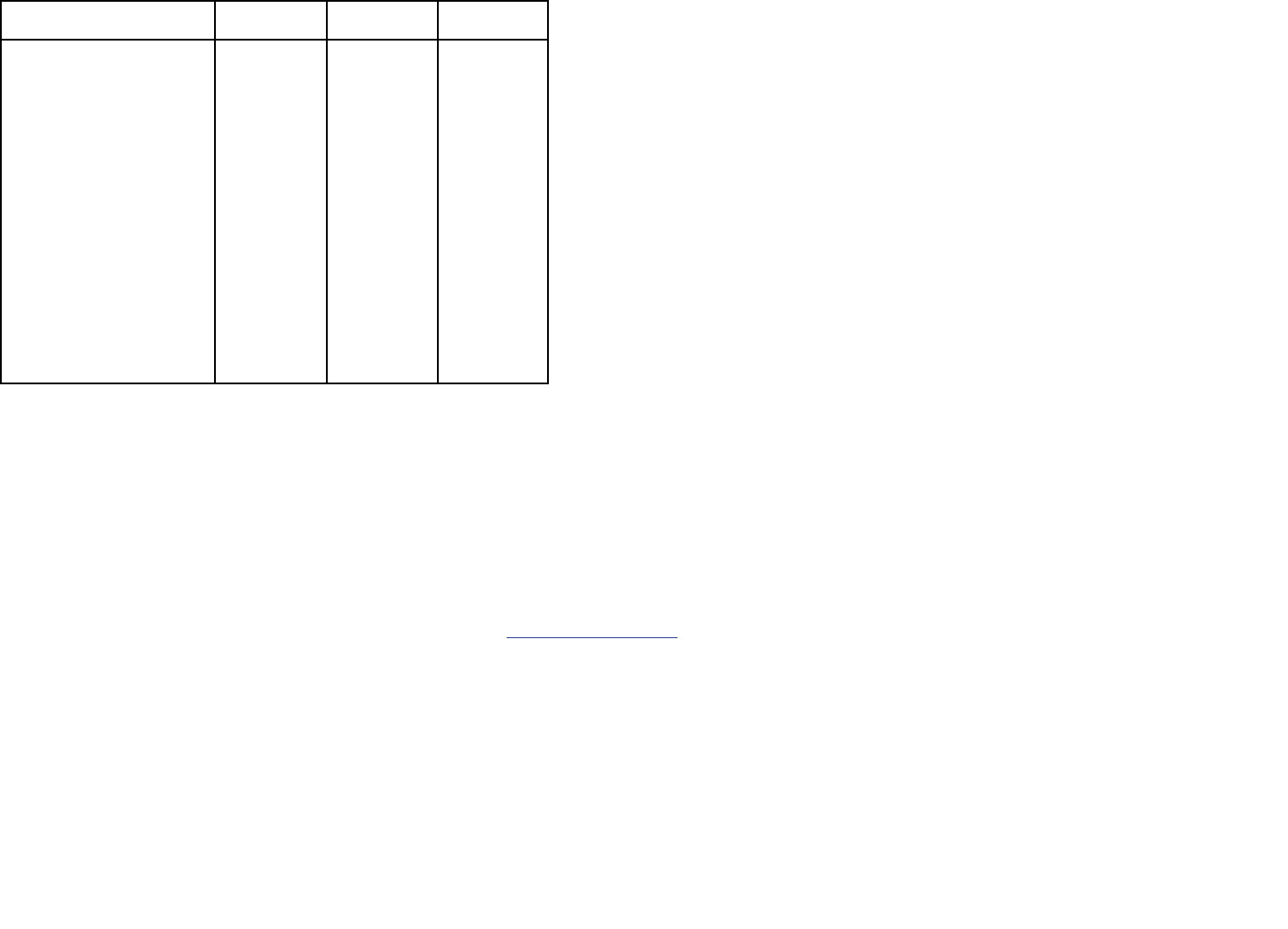
A-72
Table A.55B Type of Mental Health Services Received in the Past Year: Among Adults Aged 18 or Older with Serious Mental Illness in the Past Year; by Age Group,
2008-2020 (continued)
Mental Health Services
1
/
Age Group 2018 2019 2020
MENTAL HEALTH SERVICES 64.1 (1.24) 65.5 (1.18) 64.5 (1.96)
18-25 53.8 (1.72) 56.4 (1.76) 57.6 (2.63)
26-49 63.7 (1.55) 65.1 (1.42) 63.0 (2.39)
50 or Older 74.4 (3.30) 74.3 (3.17) 72.9 (5.17)
INPATIENT 7.3 (0.66) 7.4 (0.70) 6.5 (0.93)
18-25 9.4 (0.90) 9.0 (1.01) 6.8 (1.37)
26-49 6.3 (0.79) 7.2 (0.83) 6.5 (1.30)
50 or Older 7.1 (1.97) 6.5 (1.95) 6.4 (2.08)
OUTPATIENT
2
43.9 (1.29) 44.2 (1.24) 45.1 (1.97)
18-25 37.5 (1.70) 39.6 (1.64) 39.2 (2.46)
26-49 42.5 (1.53) 45.1 (1.45) 44.0 (2.22)
50 or Older 52.7 (3.69) 46.4 (3.48) 52.0 (5.49)
PRESCRIPTION MEDICATION 56.5 (1.31) 56.5 (1.23) 55.9 (2.05)
18-25 42.1 (1.71) 44.8 (1.76) 48.8 (2.70)
26-49 57.6 (1.64) 56.4 (1.46) 53.0 (2.42)
50 or Older 67.5 (3.54) 66.7 (3.31) 66.8 (5.30)
NOTE: Estimates shown are percentages with standard errors included in parentheses.
NOTE: Respondents with unknown mental health service information were excluded.
NOTE: Estimates in the 2020 column are italicized to indicate caution should be used when comparing estimates between 2020 and prior years because of methodological changes for 2020. Due to these changes, significance
testing between 2020 and prior years was not performed. See the 2020 National Survey on Drug Use and Health: Methodological Summary and Definitions for details.
NOTE: Estimates in this table for 2020 exclude a subset of respondents who did not complete the questionnaire. The analysis weights and estimates were adjusted for the reduced sample size. See the 2020 National Survey on Drug
Use and Health: Methodological Summary and Definitions for details.
NOTE: Some 2008 to 2010 estimates may differ from previously published estimates due to updates (see Chapter 3 of the 2020 National Survey on Drug Use and Health: Methodological Summary and Definitions).
NOTE: Mental Health Services for adults includes inpatient treatment/counseling, outpatient treatment/counseling, or use of prescription medication for problems with emotions, nerves, or mental health. Respondents with unknown
mental health service information were excluded. Questions on virtual services were added in Quarter 4 of 2020. Estimates in this table do not include data from these questions. See the 2020 National Survey on Drug Use and
Health: Methodological Summary and Definitions for details.
NOTE: Serious Mental Illness (SMI) aligns with criteria from the 4th edition of the Diagnostic and Statistical Manual of Mental Disorders and is defined as having a diagnosable mental, behavioral, or emotional disorder, other than a
developmental or substance use disorder. Estimates of SMI are a subset of estimates of any mental illness (AMI) because SMI is limited to people with AMI that resulted in serious functional impairment. SMI estimates from
2008 to 2011 may differ from previously published estimates due to revised estimation procedures. These mental illness estimates are based on a predictive model and are not direct measures of diagnostic status.
NOTE: Additional estimates may be found in the detailed tables for the 2020 NSDUH at https://www.samhsa.gov/data/
. Measures and terms are defined in Appendix A of the 2020 detailed tables.
1
Respondents could indicate multiple service sources; thus, these response categories are not mutually exclusive.
2
Because of revisions in 2017 to the outpatient mental health service estimates, these 2010 to 2016 estimates may differ from estimates published prior to the 2017 NSDUH.
Source: SAMHSA, Center for Behavioral Health Statistics and Quality, National Survey on Drug Use and Health, 2008-2019 and Quarters 1 and 4, 2020.
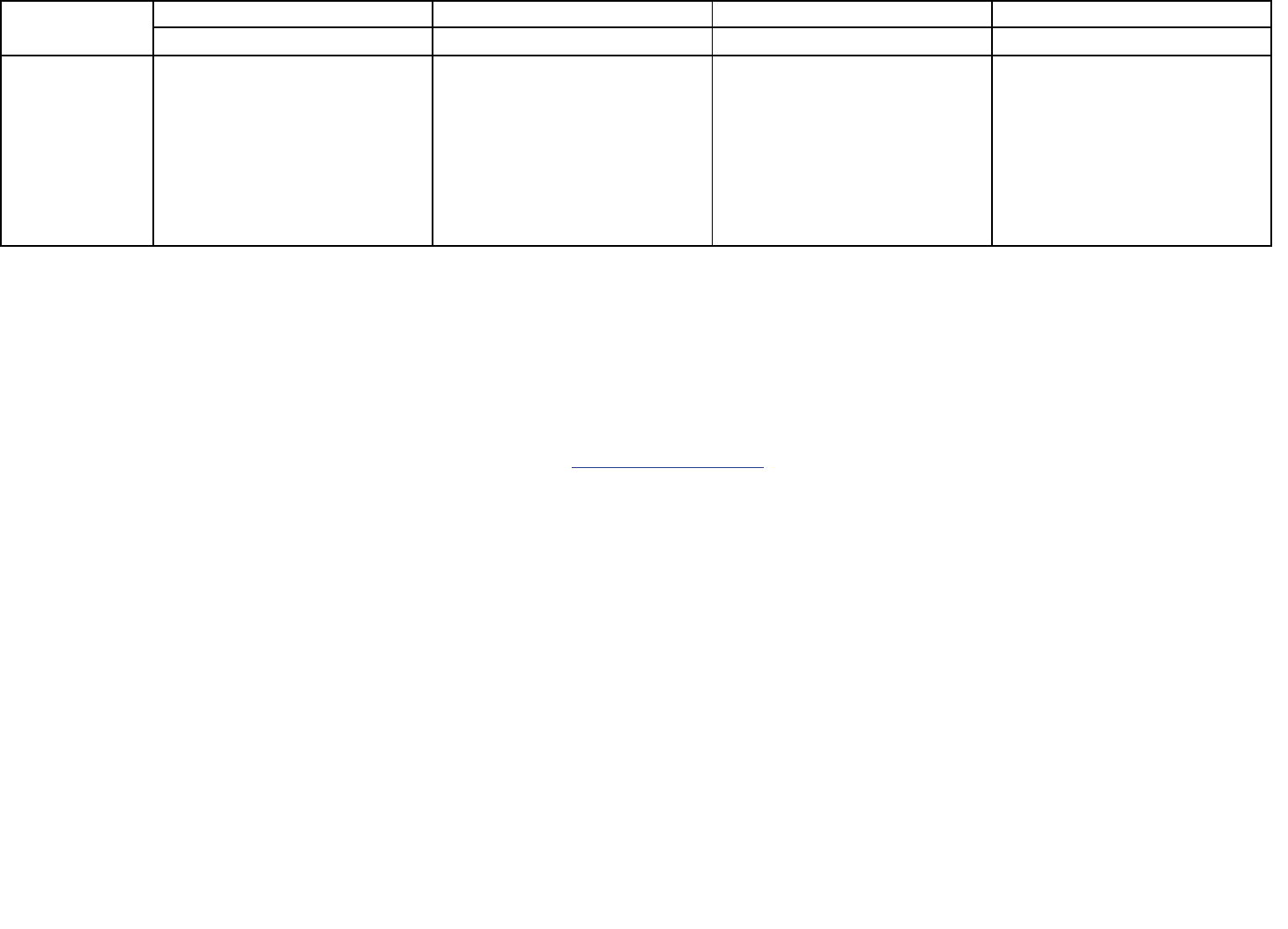
A-73
Table A.56B Received Mental Health Services Including Virtual Services in the Past Year: Among Adults Aged 18 or Older with Serious Mental Illness in the Past Year;
by Age Group and Quarter, 2020
Types of Mental
Health Services
18 or Older 18-25 26-49 50 or Older
Quarter 1 Quarter 4 Quarter 1 Quarter 4 Quarter 1 Quarter 4 Quarter 1 Quarter 4
Mental Health
Service or Virtual
Service
1
65.0 (2.56) 66.7 (2.89) 53.6 (3.72) 64.3 (3.78) 62.2 (3.48) 67.0 (3.06)
*
(*)
*
(*)
Inpatient 6.5 (1.28) 6.6 (1.36) 5.9 (1.82) 7.9 (2.15) 7.0 (1.87) 6.0 (1.86)
*
(*) 6.6 (2.89)
Outpatient 44.0 (2.78) 46.1 (2.94) 34.9 (3.56) 44.1 (3.86) 41.3 (3.11) 46.6 (3.15)
*
(*)
*
(*)
Prescription
Medication 56.0 (2.76) 55.8 (2.89) 43.7 (3.80) 54.5 (3.82) 52.9 (3.49) 53.1 (3.16)
*
(*)
*
(*)
Virtual
na
49.8 (2.77)
na
49.3 (3.70)
na
50.3 (3.05)
na *
(*)
* = low precision; na = not applicable.
NOTE:
Estimates shown are percentages with standard errors included in parentheses.
NOTE:
Estimates in this table exclude a subset of respondents who did not complete the questionnaire. The analysis weights and estimates were adjusted for the reduced sample size. Therefore, some
estimates in this table could differ from corresponding estimates in other tables that did not undergo sample size adjustments. See the 2020 National Survey on Drug Use and Health: Methodological
Summary and Definitions for details.
NOTE:
Mental Health Services including Virtual Services for adults includes treatment/counseling for problems with emotions, nerves, or mental health. Respondents with unknown mental health service
including virtual service information were excluded.
NOTE:
Mental Illness aligns with criteria from the 4th edition of the Diagnostic and Statistical Manual of Mental Disorders and is defined as having a diagnosable mental, behavioral, or emotional disorder,
other than a developmental or substance use disorder. Estimates of serious mental illness (SMI) are a subset of estimates of any mental illness (AMI) because SMI is limited to people with AMI that
resulted in serious functional impairment. These mental illness estimates are based on a predictive model and are not direct measures of diagnostic status.
NOTE:
Additional estimates may be found in the detailed tables for the 2020 NSDUH at https://www.samhsa.gov/data/. Measures and terms are defined in Appendix A of the 2020 detailed tables.
1
Questions on virtual services were added in Quarter 4 of 2020; therefore, the estimates for Quarter 1 do not include data from these questions.
Source:
SAMHSA, Center for Behavioral Health Statistics and Quality, National Survey on Drug Use and Health, Quarters 1 and 4, 2020.

A-74
Table A.57A Perceived Unmet Need for Mental Health Services in the Past Year: Among Adults Aged 18 or Older; by Level of Mental Illness and Age Group, 2008-2020
Level of Mental
Illness/Age Group 2008 2009 2010 2011 2012 2013 2014 2015 2016 2017 2018 2019 2020
AMI 8,173 (296) 9,092 (328) 8,680 (322) 8,541 (298) 9,092 (318) 8,422 (320) 9,037 (252) 8,798 (245) 9,239 (259) 11,052 (303) 11,208 (296) 13,321 (320) 16,083 (604)
18-25 1,839 (75) 1,773 (69) 1,826 (74) 1,829 (77) 1,898 (81) 1,870 (77) 2,021 (84) 2,184 (87) 2,464 (97) 3,114 (110) 3,370 (111) 4,021 (129) 4,822 (255)
26-49 4,805 (222) 5,300 (230) 4,633 (211) 4,910 (224) 5,064 (232) 4,551 (220) 4,654 (172) 4,631 (173) 4,797 (171) 5,446 (189) 5,732 (197) 7,047 (210) 7,825 (365)
50 or Older 1,529 (181) 2,019 (209) 2,222 (227) 1,802 (179) 2,130 (205) 2,001 (207) 2,362 (172) 1,983 (164) 1,978 (170) 2,492 (190) 2,107 (176) 2,253 (180) 3,436 (402)
SMI 3,642 (199) 3,874 (205) 3,910 (226) 3,883 (204) 3,973 (200) 3,858 (207) 4,205 (174) 3,713 (150) 4,104 (178) 4,939 (192) 5,116 (181) 6,233 (218) 7,048 (405)
18-25 617 (40) 587 (37) 706 (45) 712 (50) 709 (42) 756 (45) 900 (53) 878 (52) 1,091 (64) 1,431 (71) 1,549 (71) 1,803 (80) 2,066 (155)
26-49 2,133 (138) 2,386 (148) 2,271 (152) 2,235 (148) 2,335 (153) 2,201 (157) 2,179 (121) 2,118 (113) 2,088 (116) 2,520 (127) 2,660 (129) 3,251 (134) 3,344 (223)
50 or Older 891 (144) 901 (131) 933 (158) 936 (124) 928 (132) 902 (124) 1,127 (117) 717 (94) 926 (118) 989 (119) 907 (104) 1,178 (142) 1,638 (282)
AMI = any mental illness; SMI = serious mental illness.
NOTE: Estimates shown are numbers in thousands with standard errors included in parentheses.
NOTE: Estimates in the 2020 column are italicized to indicate caution should be used when comparing estimates between 2020 and prior years because of methodological changes for 2020. Due to these changes, significance
testing between 2020 and prior years was not performed. See the 2020 National Survey on Drug Use and Health: Methodological Summary and Definitions for details.
NOTE: Estimates in this table for 2020 exclude a subset of respondents who did not complete the questionnaire. The analysis weights and estimates were adjusted for the reduced sample size. See the 2020 National Survey on Drug
Use and Health: Methodological Summary and Definitions for details.
NOTE: Some 2008 to 2010 estimates may differ from previously published estimates due to updates (see Chapter 3 of the 2020 National Survey on Drug Use and Health: Methodological Summary and Definitions).
NOTE: Perceived unmet need for mental health services is defined as a perceived need for treatment/counseling that was not received. Perception of unmet need questions were asked of all respondents regardless of their mental
health status. Respondents with unknown perception of unmet need information were excluded.
NOTE: Mental Illness aligns with criteria from the 4th edition of the Diagnostic and Statistical Manual of Mental Disorders and is defined as having a diagnosable mental, behavioral, or emotional disorder, other than a
developmental or substance use disorder. Estimates of SMI are a subset of estimates of AMI because SMI is limited to people with AMI that resulted in serious functional impairment. Mental illness estimates from 2008 to
2011 may differ from previously published estimates due to revised estimation procedures. These mental illness estimates are based on a predictive model and are not direct measures of diagnostic status.
NOTE: Additional estimates may be found in the detailed tables for the 2020 NSDUH at https://www.samhsa.gov/data/
. Measures and terms are defined in Appendix A of the 2020 detailed tables.
Source: SAMHSA, Center for Behavioral Health Statistics and Quality, National Survey on Drug Use and Health, 2008-2019 and Quarters 1 and 4, 2020.
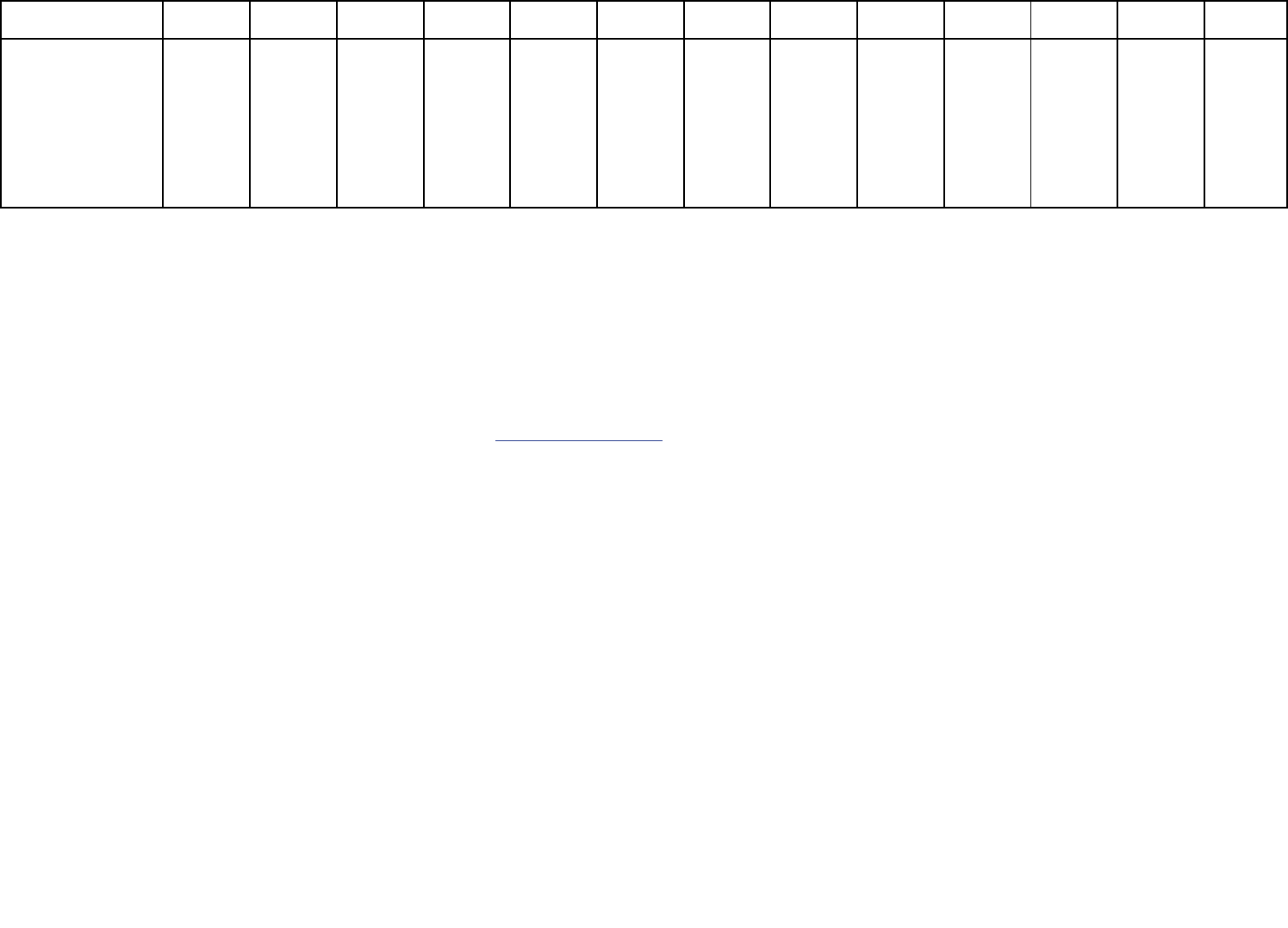
A-75
Table A.57B Perceived Unmet Need for Mental Health Services in the Past Year: Among Adults Aged 18 or Older; by Level of Mental Illness and Age Group, 2008-2020
Level of Mental
Illness/Age Group 2008 2009 2010 2011 2012 2013 2014 2015 2016 2017 2018 2019 2020
AMI 20.6 (0.66) 22.1 (0.70) 21.0 (0.70) 20.7 (0.66) 20.8 (0.63) 19.3 (0.65) 20.8 (0.52) 20.3 (0.52) 20.7 (0.52) 23.7 (0.58) 23.6 (0.54) 26.0 (0.57) 30.5 (0.95)
18-25 30.2 (0.97) 29.4 (0.94) 29.8 (0.93) 28.8 (0.93) 28.1 (0.91) 27.8 (0.93) 28.9 (0.99) 29.0 (0.95) 32.4 (0.95) 35.3 (0.96) 37.9 (0.90) 40.7 (0.99) 47.1 (1.63)
26-49 23.3 (0.92) 24.8 (0.93) 22.5 (0.90) 24.6 (0.95) 24.4 (0.94) 21.7 (0.93) 23.3 (0.73) 22.5 (0.74) 23.0 (0.71) 24.5 (0.74) 25.3 (0.71) 28.0 (0.70) 30.5 (1.16)
50 or Older 11.8 (1.32) 14.8 (1.40) 15.2 (1.44) 12.0 (1.13) 13.2 (1.15) 12.6 (1.21) 14.3 (0.96) 13.0 (1.01) 12.3 (0.99) 16.1 (1.15) 13.2 (1.06) 13.9 (1.07) 20.3 (2.08)
SMI 43.7 (1.84) 46.3 (1.81) 42.0 (1.81) 43.1 (1.72) 41.6 (1.69) 38.6 (1.80) 42.9 (1.45) 38.2 (1.31) 39.7 (1.44) 44.2 (1.33) 45.1 (1.31) 47.7 (1.26) 49.7 (2.10)
18-25 50.0 (2.31) 52.2 (2.32) 53.1 (2.27) 55.0 (2.35) 49.8 (2.13) 51.5 (2.08) 53.6 (2.12) 50.3 (2.00) 53.7 (2.06) 55.9 (1.79) 59.5 (1.71) 62.5 (1.62) 63.4 (2.52)
26-49 44.8 (2.26) 49.2 (2.20) 44.3 (2.20) 45.2 (2.13) 46.2 (2.28) 42.4 (2.35) 45.4 (1.82) 43.3 (1.79) 39.7 (1.67) 45.2 (1.60) 45.2 (1.66) 47.6 (1.46) 48.0 (2.53)
50 or Older 38.2 (4.63) 37.5 (4.42) 32.7 (4.29) 33.9 (3.75) 30.1 (3.41) 27.1 (3.49) 33.9 (2.93) 23.2 (2.64) 30.4 (3.33) 32.5 (3.27) 31.9 (3.33) 35.1 (3.47) 41.4 (5.39)
AMI = any mental illness; SMI = serious mental illness.
NOTE: Estimates shown are percentages with standard errors included in parentheses.
NOTE: Estimates in the 2020 column are italicized to indicate caution should be used when comparing estimates between 2020 and prior years because of methodological changes for 2020. Due to these changes, significance
testing between 2020 and prior years was not performed. See the 2020 National Survey on Drug Use and Health: Methodological Summary and Definitions for details.
NOTE: Estimates in this table for 2020 exclude a subset of respondents who did not complete the questionnaire. The analysis weights and estimates were adjusted for the reduced sample size. See the 2020 National Survey on Drug
Use and Health: Methodological Summary and Definitions for details.
NOTE: Some 2008 to 2010 estimates may differ from previously published estimates due to updates (see Chapter 3 of the 2020 National Survey on Drug Use and Health: Methodological Summary and Definitions).
NOTE: Perceived unmet need for mental health services is defined as a perceived need for treatment/counseling that was not received. Perception of unmet need questions were asked of all respondents regardless of their mental
health status. Respondents with unknown perception of unmet need information were excluded.
NOTE: Mental Illness aligns with criteria from the 4th edition of the Diagnostic and Statistical Manual of Mental Disorders and is defined as having a diagnosable mental, behavioral, or emotional disorder, other than a
developmental or substance use disorder. Estimates of SMI are a subset of estimates of AMI because SMI is limited to people with AMI that resulted in serious functional impairment. Mental illness estimates from 2008 to
2011 may differ from previously published estimates due to revised estimation procedures. These mental illness estimates are based on a predictive model and are not direct measures of diagnostic status.
NOTE: Additional estimates may be found in the detailed tables for the 2020 NSDUH at https://www.samhsa.gov/data/
. Measures and terms are defined in Appendix A of the 2020 detailed tables.
Source: SAMHSA, Center for Behavioral Health Statistics and Quality, National Survey on Drug Use and Health, 2008-2019 and Quarters 1 and 4, 2020.
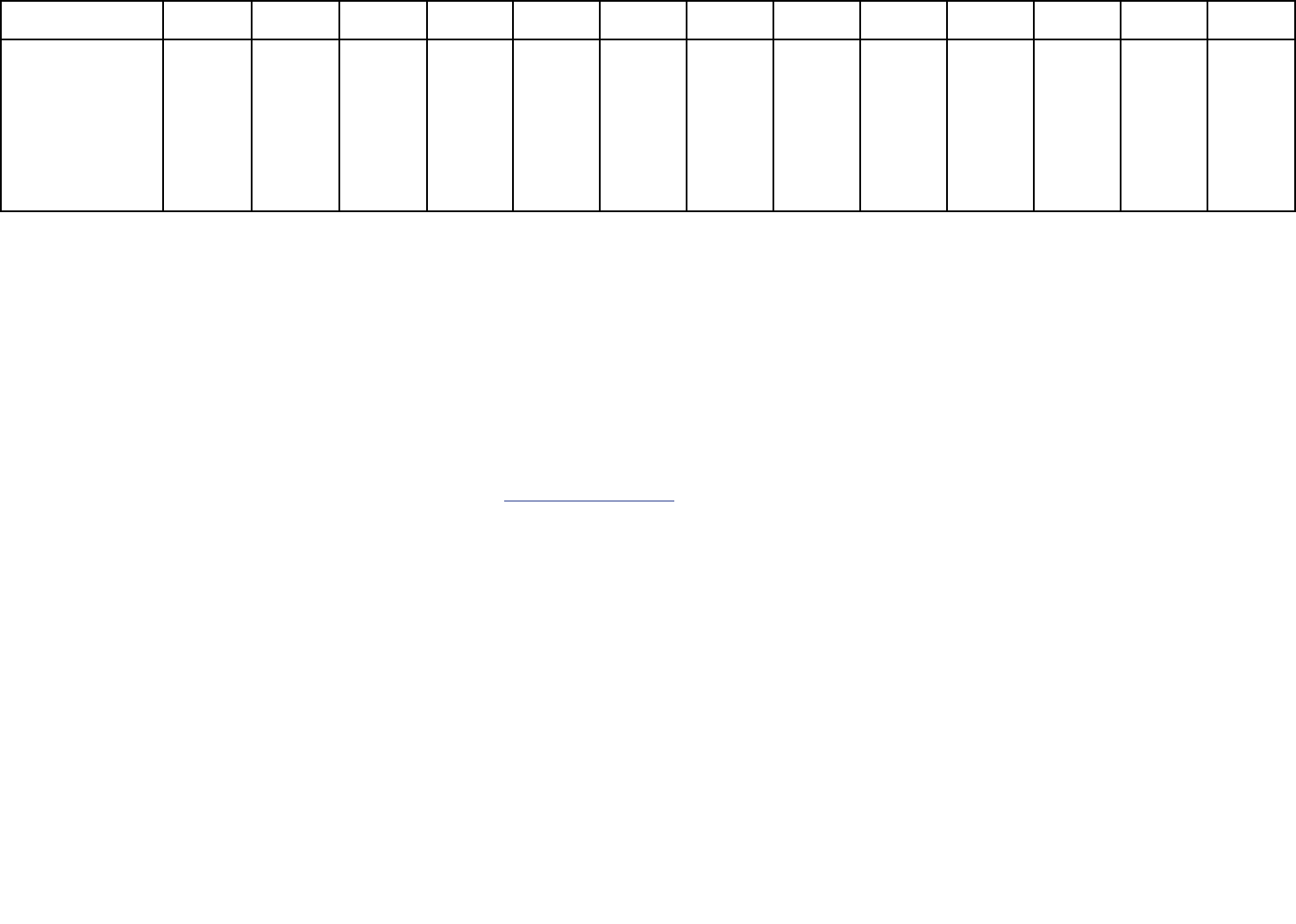
A-76
Table A.58B Did Not Receive Mental Health Services in the Past Year: Among Adults Aged 18 or Older with a Perceived Unmet Need for Mental Health Services in the
Past Year; by Past Year Level of Mental Illness and Age Group, 2008-2020
Level of Mental
Illness/Age Group 2008 2009 2010 2011 2012 2013 2014 2015 2016 2017 2018 2019 2020
AMI 42.1 (1.65) 44.9 (1.66) 40.1 (1.82) 42.1 (1.65) 42.1 (1.72) 39.9 (1.77) 40.3 (1.43) 40.8 (1.38) 42.5 (1.29) 44.8 (1.28) 44.4 (1.22) 43.8 (1.14) 48.0 (1.84)
18-25 55.3 (1.92) 56.7 (1.98) 52.4 (1.85) 53.7 (1.86) 52.0 (1.96) 53.0 (1.92) 50.1 (2.01) 52.7 (1.94) 51.2 (1.78) 50.5 (1.66) 54.3 (1.53) 53.1 (1.42) 52.7 (2.38)
26-49 41.4 (2.17) 43.3 (2.05) 37.0 (2.16) 43.2 (2.23) 44.0 (2.28) 38.5 (2.25) 43.7 (1.87) 40.3 (1.71) 43.1 (1.69) 44.1 (1.70) 44.2 (1.68) 42.5 (1.52) 48.0 (2.33)
50 or Older 28.1 (5.05) 38.8 (5.05) 36.4 (4.88) 27.4 (4.49) 28.9 (4.38) 30.8 (4.70) 25.4 (3.19) 28.7 (4.00) 30.2 (3.71) 39.2 (3.80) 29.2 (3.76) 31.1 (3.88) 41.5 (5.85)
SMI 30.1 (2.39) 29.7 (2.21) 27.9 (2.32) 31.8 (2.31) 34.2 (2.57) 32.7 (2.49) 31.5 (2.01) 30.7 (1.81) 33.5 (1.78) 32.6 (1.67) 36.1 (1.74) 32.8 (1.50) 37.6 (2.68)
18-25 49.1 (3.21) 47.5 (3.28) 42.3 (3.12) 43.5 (3.01) 41.8 (3.11) 43.6 (3.11) 40.6 (2.95) 43.3 (3.05) 44.2 (2.65) 40.8 (2.41) 47.0 (2.26) 43.2 (2.18) 43.8 (3.56)
26-49 27.4 (2.93) 32.8 (2.88) 26.8 (2.86) 33.8 (3.00) 36.3 (3.44) 29.6 (3.41) 34.1 (2.52) 30.7 (2.33) 32.0 (2.34) 32.4 (2.24) 34.0 (2.33) 31.9 (2.02) 39.1 (3.25)
50 or Older * (*) * (*) * (*) * (*) * (*) * (*) 19.3 (4.32) * (*) * (*) 21.2 (4.76) * (*) 19.5 (4.83) * (*)
* = low precision; AMI = any mental illness; SMI = serious mental illness.
NOTE: Estimates shown are percentages with standard errors included in parentheses.
NOTE: Estimates in the 2020 column are italicized to indicate caution should be used when comparing estimates between 2020 and prior years because of methodological changes for 2020. Due to these changes, significance
testing between 2020 and prior years was not performed. See the 2020 National Survey on Drug Use and Health: Methodological Summary and Definitions for details.
NOTE: Estimates in this table for 2020 exclude a subset of respondents who did not complete the questionnaire. The analysis weights and estimates were adjusted for the reduced sample size. See the 2020 National Survey on Drug
Use and Health: Methodological Summary and Definitions for details.
NOTE: Some 2008 to 2010 estimates may differ from previously published estimates due to updates (see Chapter 3 of the 2020 National Survey on Drug Use and Health: Methodological Summary and Definitions).
NOTE: Mental Health Services for adults includes inpatient treatment/counseling, outpatient treatment/counseling, or use of prescription medication for problems with emotions, nerves, or mental health. Respondents with unknown
mental health service information were excluded. Questions on virtual services were added in Quarter 4 of 2020. Estimates in this table do not include data from these questions. See the 2020 National Survey on Drug Use and
Health: Methodological Summary and Definitions for details.
NOTE: Perceived unmet need for mental health services is defined as a perceived need for treatment/counseling that was not received. Perception of unmet need questions were asked of all respondents regardless of their mental
health status. Respondents with unknown perception of unmet need information were excluded.
NOTE: Mental Illness aligns with criteria from the 4th edition of the Diagnostic and Statistical Manual of Mental Disorders and is defined as having a diagnosable mental, behavioral, or emotional disorder, other than a
developmental or substance use disorder. Estimates of SMI are a subset of estimates of AMI because SMI is limited to people with AMI that resulted in serious functional impairment. Mental illness estimates from 2008 to
2011 may differ from previously published estimates due to revised estimation procedures. These mental illness estimates are based on a predictive model and are not direct measures of diagnostic status.
NOTE: Additional estimates may be found in the detailed tables for the 2020 NSDUH at https://www.samhsa.gov/data/
. Measures and terms are defined in Appendix A of the 2020 detailed tables.
Source: SAMHSA, Center for Behavioral Health Statistics and Quality, National Survey on Drug Use and Health, 2008-2019 and Quarters 1 and 4, 2020.

A-77
Table A.59B Detailed Reasons for Not Receiving Mental Health Services in the Past Year: Among Adults Aged 18 or Older with a Perceived Unmet Need for Mental Health
Services Who Did Not Receive Mental Health Services in the Past Year; by Past Year Level of Mental Illness, 2020
Reason for Not Receiving Services
1
Any Mental Illness
2
Serious Mental Illness
2
Could Not Afford Cost 44.9 (2.57) 49.5 (4.38)
Might Cause Neighbors/Community to Have Negative Opinion 13.7 (1.69) 18.4 (3.83)
Might Have Negative Effect on Job 10.3 (1.24) 12.8 (2.24)
Health Insurance Does Not Cover Any Mental Health Services 11.0 (1.59) 12.0 (2.62)
Health Insurance Does Not Pay Enough for Mental Health Services 19.4 (2.12) 18.1 (3.66)
Did Not Know Where to Go for Services 32.7 (2.47) 33.5 (4.04)
Concerned about Confidentiality 10.1 (1.33) 11.6 (2.15)
Concerned about Being Committed/Having to Take Medicine 16.2 (1.80) 25.9 (3.97)
Did Not Feel Need for Treatment at the Time 11.5 (2.37) 7.9 (3.27)
Thought Could Handle the Problem Without Treatment 29.7 (2.73) 25.0 (4.13)
Treatment Would Not Help 16.2 (2.49) 16.9 (3.75)
Did Not Have Time 17.5 (1.88) 15.0 (2.74)
Did Not Want Others to Find Out 10.0 (2.16) 10.0 (2.28)
No Transportation/Inconvenient 4.1 (0.95) 4.0 (1.64)
Related to COVID-19
3
2.1 (1.14) * (*)
Some Other Reason
4
9.5 (1.52) 8.5 (2.08)
* = low precision; COVID-19 = coronavirus disease 2019.
NOTE:
Estimates shown are percentages with standard errors included in parentheses.
NOTE: Estimates in this table exclude a subset of respondents who did not complete the questionnaire. The analysis weights and estimates were adjusted for the reduced sample size. See the 2020 National
Survey on Drug Use and Health: Methodological Summary and Definitions for details.
NOTE:
Respondents with unknown reason for not receiving mental health service were excluded.
NOTE:
Mental Health Services for adults includes inpatient treatment/counseling, outpatient treatment/counseling, or use of prescription medication for problems with emotions, nerves, or mental health.
Respondents with unknown mental health service information were excluded. Questions on virtual services were added in Quarter 4 of 2020. Estimates in this table do not include data from these
questions. See the 2020 National Survey on Drug Use and Health: Methodological Summary and Definitions for details.
NOTE:
Perceived unmet need for mental health services is defined as a perceived need for treatment/counseling that was not received. Perception of unmet need questions were asked of all respondents
regardless of their mental health status. Respondents with unknown perception of unmet need information were excluded.
NOTE: Additional estimates may be found in the detailed tables for the 2020 NSDUH at https://www.samhsa.gov/data/. Measures and terms are defined in Appendix A of the 2020 detailed tables.
1
Respondents could indicate multiple reasons for not receiving mental health services; thus, these response categories are not mutually exclusive.
2
Mental Illness aligns with criteria from the 4th edition of the Diagnostic and Statistical Manual of Mental Disorders and is defined as having a diagnosable mental, behavioral, or emotional disorder, other
than a developmental or substance use disorder. Estimates of serious mental illness (SMI) are a subset of estimates of any mental illness (AMI) because SMI is limited to people with AMI that resulted in
serious functional impairment. These mental illness estimates are based on a predictive model and are not direct measures of diagnostic status.
3
Respondents were permitted to specify other reasons for not receiving mental health services. Reasons related to COVID-19 were collectively the most common write-in response.
4
Respondents with unknown or invalid responses to the other-specify question on Some Other Reason for Not Receiving Mental Health Services were classified as having provided a “no” response for some
other reason.
Source: SAMHSA, Center for Behavioral Health Statistics and Quality, National Survey on Drug Use and Health, Quarters 1 and 4, 2020.

A-78
Table A.60B Received Substance Use Treatment at a Specialty Facility and/or Mental Health Services (Specialty or Nonspecialty) in the Past Year: Among Adolescents Aged
12 to 17; by Past Year Substance Use Disorder (SUD) Status and Major Depressive Episode (MDE) Status, 2020
Past Year SUD Status/MDE Status
Received Substance Use
Treatment at a Specialty
Facility OR
Mental Health Services
Received Substance Use
Treatment at a Specialty
Facility BUT NOT
Mental Health Services
Received Mental Health
Services BUT NOT
Substance Use Treatment
at a Specialty Facility
Received Substance Use
Treatment at a Specialty
Facility AND
Mental Health Services
Received Neither
Substance Use Treatment
at a Specialty Facility NOR
Mental Health Services
SUD and MDE 69.0 (5.41) * (*) 66.8 (5.41) 0.9 (0.70) 31.0 (5.41)
SUD and No MDE 39.9 (5.35) * (*) 37.1 (5.28) 1.1 (0.68) 60.1 (5.35)
MDE and No SUD 48.7 (2.43) * (*) 48.6 (2.43) 0.1 (0.11) 51.3 (2.43)
No SUD and No MDE 19.1 (0.90) * (*) 19.1 (0.90) 0.0 (0.04) 80.9 (0.90)
* = low precision.
NOTE:
Estimates shown are percentages with standard errors included in parentheses.
NOTE: SUD estimates in 2020 are based on criteria from the Diagnostic and Statistical Manual of Mental Disorders, 5th edition. SUD and related estimates are not comparable between 2020 and prior years
of NSDUH because prior years’ estimates were based on criteria from the Diagnostic and Statistical Manual of Mental Disorders, 4th edition. Due to these changes, significance testing between
2020 and prior years was not performed. The 2020 estimates reflect additional methodological changes for the 2020 NSDUH. See the 2020 National Survey on Drug Use and Health: Methodological
Summary and Definitions for details.
NOTE: Specialty facilities for substance use treatment include hospitals (inpatient only), rehabilitation facilities (inpatient or outpatient), or mental health centers.
NOTE:
Mental Health Services for adolescents aged 12 to 17 includes treatment/counseling for emotional or behavioral problems not caused by drug or alcohol use. Respondents with unknown mental
health service information were excluded. Questions on virtual services were added in Quarter 4 of 2020. Estimates in this table do not include data from these questions. See the 2020 National
Survey on Drug Use and Health: Methodological Summary and Definitions for details.
NOTE:
Respondents with unknown past year MDE data were excluded.
NOTE:
Estimates of 0.0 percent round to less than 0.1 percent when shown to the nearest tenth of a percent.
NOTE: Additional estimates may be found in the detailed tables for the 2020 NSDUH at https://www.samhsa.gov/data/. Measures and terms are defined in Appendix A of the 2020 detailed tables.
Source: SAMHSA, Center for Behavioral Health Statistics and Quality, National Survey on Drug Use and Health, Quarters 1 and 4, 2020.
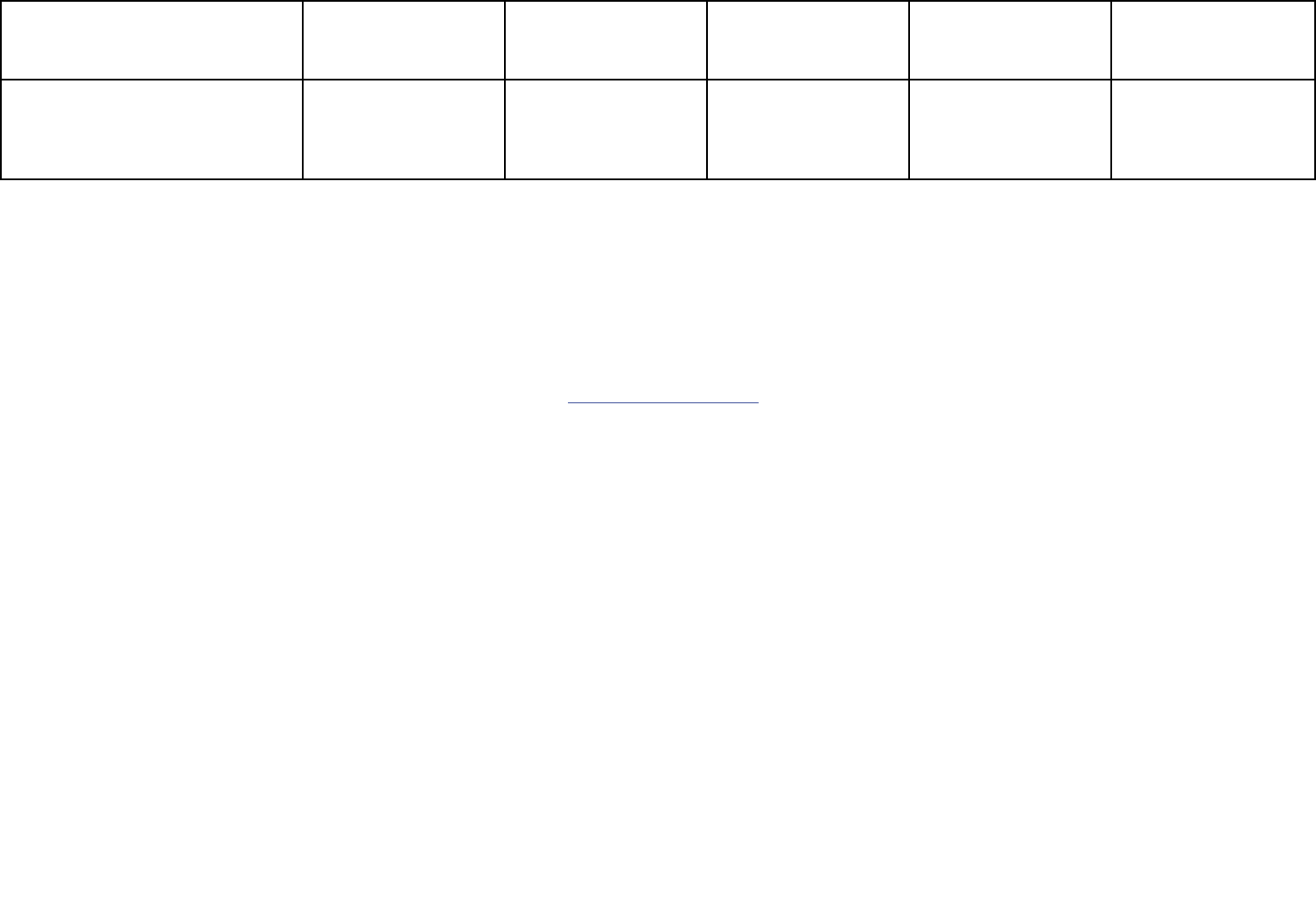
A-79
Table A.61B Received Substance Use Treatment at a Specialty Facility and/or Mental Health Services (Specialty, Nonspecialty, or Virtual) in the Past Year: Among
Adolescents Aged 12 to 17; by Past Year Substance Use Disorder (SUD) Status and Major Depressive Episode (MDE) Status, Quarter 4, 2020
Past Year SUD Status/MDE Status
Received Substance Use
Treatment at a Specialty
Facility OR
Mental Health Services
Received Substance Use
Treatment at a Specialty
Facility BUT NOT
Mental Health Services
Received Mental Health
Services BUT NOT
Substance Use Treatment
at a Specialty Facility
Received Substance Use
Treatment at a Specialty
Facility AND
Mental Health Services
Received Neither
Substance Use Treatment
at a Specialty Facility NOR
Mental Health Services
SUD and MDE
* (*) * (*) * (*) * (*) * (*)
SUD and No MDE
* (*) * (*) * (*) * (*) * (*)
MDE and No SUD 53.0
(4.72) * (*)
52.7
(4.72)
0.3
(0.24)
47.0
(4.72)
No SUD and No MDE 18.3
(1.48) * (*)
18.2
(1.47)
0.1
(0.08)
81.7
(1.48)
* = low precision.
NOTE:
Estimates shown are percentages with standard errors included in parentheses.
NOTE:
SUD estimates in 2020 are based on criteria from the Diagnostic and Statistical Manual of Mental Disorders, 5th edition. SUD and related estimates are not comparable between 2020 and prior years
of NSDUH because prior years’ estimates were based on criteria from the Diagnostic and Statistical Manual of Mental Disorders, 4th edition. Because of these changes, significance testing between
2020 and prior years was not performed. The 2020 estimates reflect additional methodological changes for the 2020 NSDUH. See the 2020 National Survey on Drug Use and Health: Methodological
Summary and Definitions for details.
NOTE:
Specialty facilities for substance use treatment include hospitals (inpatient only), rehabilitation facilities (inpatient or outpatient), or mental health centers.
NOTE:
Mental Health Services for adolescents aged 12 to 17 includes treatment/counseling for emotional or behavioral problems not caused by drug or alcohol use. Respondents with unknown mental
health service information were excluded. See the 2020 National Survey on Drug Use and Health: Methodological Summary and Definitions for details.
NOTE:
Respondents with unknown past year MDE data were excluded.
NOTE: Additional estimates may be found in the detailed tables for the 2020 NSDUH at https://www.samhsa.gov/data/. Measures and terms are defined in Appendix A of the 2020 detailed tables.
Source: SAMHSA, Center for Behavioral Health Statistics and Quality, National Survey on Drug Use and Health, Quarter 4, 2020.
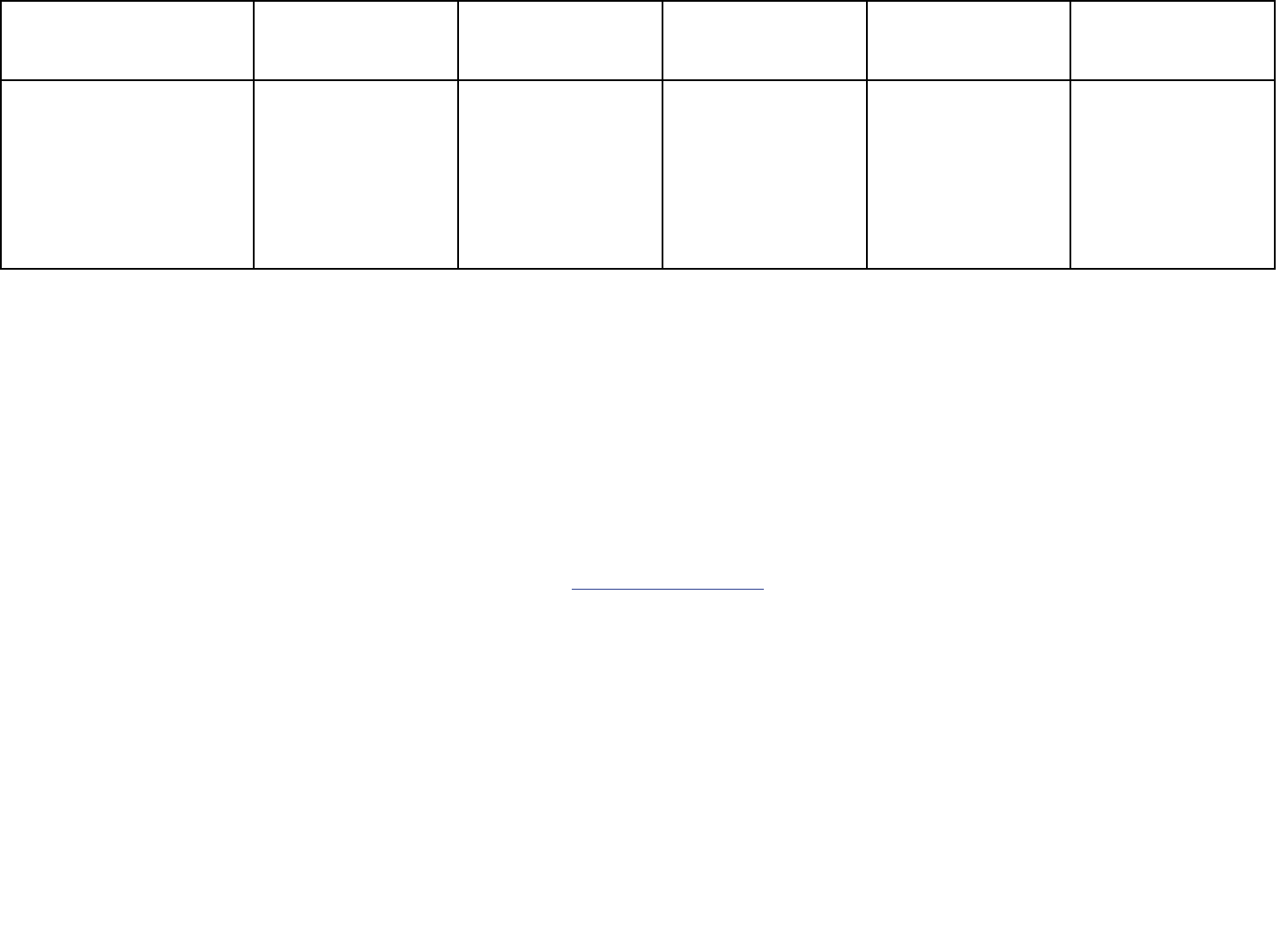
A-80
Table A.62B Received Substance Use Treatment at a Specialty Facility and/or Mental Health Services (Inpatient, Outpatient, or Prescription Medication) in the Past Year:
Among Adults Aged 18 or Older; by Past Year Co-Occurring Substance Use Disorder and Level of Mental Illness and Age Group, 2020
Co-Occurring Substance Use
Disorder (SUD) and Level of
Mental Illness/Age Group
Received Substance Use
Treatment at a Specialty
Facility OR
Mental Health Services
Received Substance Use
Treatment at a Specialty
Facility BUT NOT
Mental Health Services
Received Mental Health
Services BUT NOT
Substance Use Treatment
at a Specialty Facility
Received Substance Use
Treatment at a Specialty
Facility AND
Mental Health Services
Received Neither
Substance Use Treatment
at a Specialty Facility NOR
Mental Health Services
SUD and Any Mental Illness 50.5 (1.91) 2.5 (0.70) 42.3 (1.85) 5.7 (0.84) 49.5 (1.91)
18-25 44.9 (2.47) 1.8 (1.10) 40.5 (2.34) 2.6 (0.83) 55.1 (2.47)
26-49 48.1 (2.17) 2.4 (0.65) 39.6 (2.09) 6.0 (1.10) 51.9 (2.17)
50 or Older 63.0 (5.75) * (*) 51.3 (5.88) 8.2 (2.66) 37.0 (5.75)
SUD and Serious Mental Illness 66.4 (2.60) 1.6 (0.64) 55.4 (2.86) 9.3 (1.92) 33.6 (2.60)
18-25 59.6 (3.81) 0.3 (0.18) 54.9 (3.88) 4.4 (1.75) 40.4 (3.81)
26-49 64.0 (3.54) 2.6 (1.12) 51.1 (3.62) 10.2 (2.33) 36.0 (3.54)
50 or Older * (*) * (*) * (*) * (*) * (*)
* = low precision.
NOTE:
Estimates shown are percentages with standard errors included in parentheses.
NOTE:
Estimates in this table exclude a subset of respondents who did not complete the questionnaire. The analysis weights and estimates were adjusted for the reduced sample size. See the 2020 National
Survey on Drug Use and Health: Methodological Summary and Definitions for details.
NOTE: SUD estimates in 2020 are based on criteria from the Diagnostic and Statistical Manual of Mental Disorders, 5th edition. SUD and related estimates are not comparable between 2020 and prior years
of NSDUH because prior years’ estimates were based on criteria from the Diagnostic and Statistical Manual of Mental Disorders, 4th edition (DSM-IV). The 2020 estimates reflect additional
methodological changes for the 2020 NSDUH. Due to these changes, significance testing between 2020 and prior years was not performed. See the 2020 National Survey on Drug Use and Health:
Methodological Summary and Definitions for details.
NOTE: Specialty facilities for substance use treatment include hospitals (inpatient only), rehabilitation facilities (inpatient or outpatient), or mental health centers.
NOTE:
Mental Health Services for adults includes inpatient treatment/counseling, outpatient treatment/counseling, or use of prescription medication for problems with emotions, nerves, or mental health.
Respondents with unknown mental health service information were excluded. Questions on virtual services were added in Quarter 4 of 2020. Estimates in this table do not include data from these
questions. See the 2020 National Survey on Drug Use and Health: Methodological Summary and Definitions for details.
NOTE:
Mental Illness aligns with DSM-IV criteria and is defined as having a diagnosable mental, behavioral, or emotional disorder, other than a developmental or substance use disorder. Estimates of
serious mental illness (SMI) are a subset of estimates of any mental illness (AMI) because SMI is limited to people with AMI that resulted in serious functional impairment. These mental illness
estimates are based on a predictive model and are not direct measures of diagnostic status.
NOTE: Additional estimates may be found in the detailed tables for the 2020 NSDUH at https://www.samhsa.gov/data/
. Measures and terms are defined in Appendix A of the 2020 detailed tables.
Source: SAMHSA, Center for Behavioral Health Statistics and Quality, National Survey on Drug Use and Health, Quarters 1 and 4, 2020.
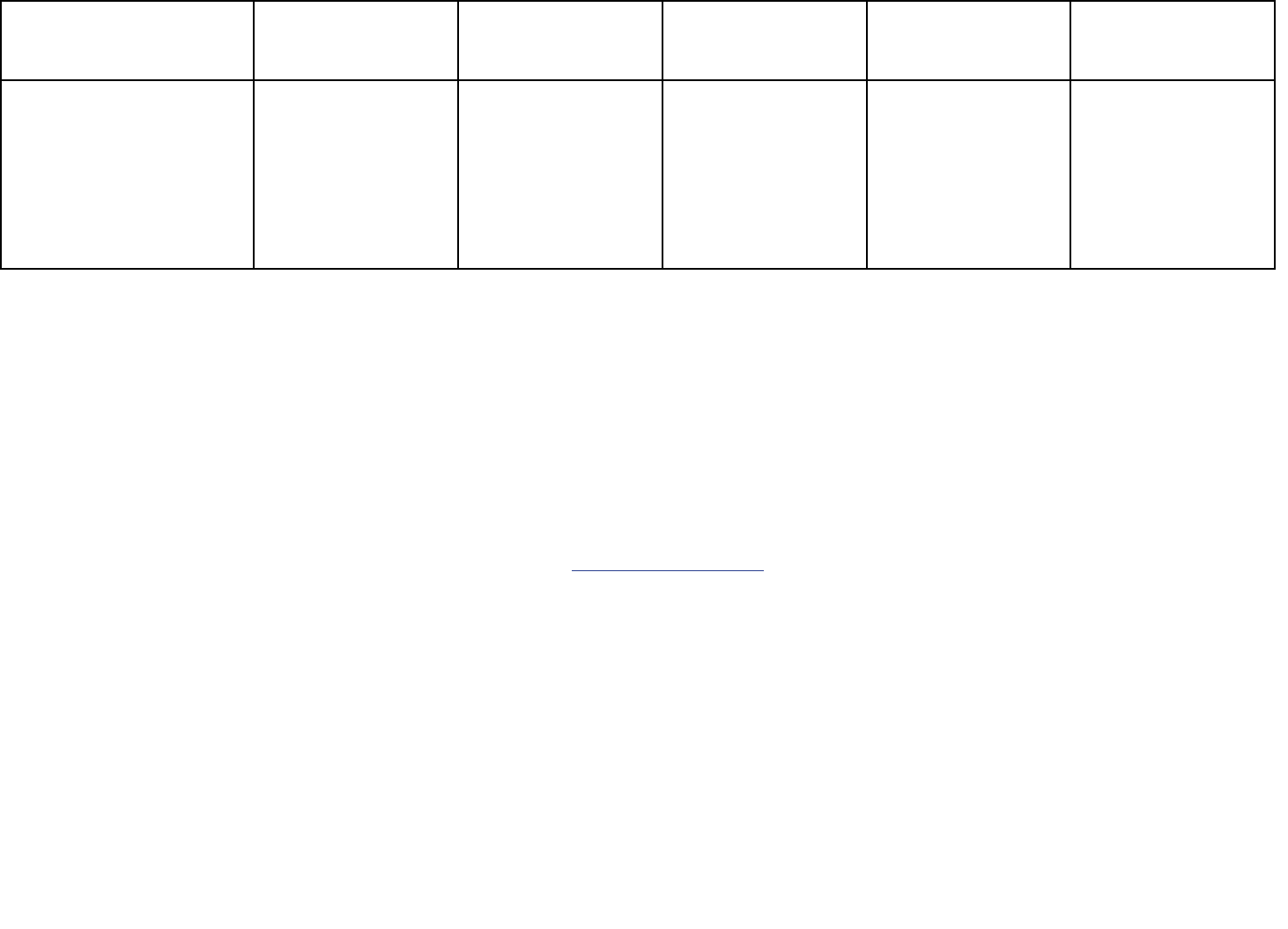
A-81
Table A.63B Received Substance Use Treatment at a Specialty Facility and/or Mental Health Services (Inpatient, Outpatient, Prescription Medication, or Virtual) in the
Past Year: Among Adults Aged 18 or Older; by Past Year Co-Occurring Substance Use Disorder and Level of Mental Illness and Age Group, Quarter 4, 2020
Co-Occurring Substance Use
Disorder (SUD) and Level of
Mental Illness and Age Group
Received Substance Use
Treatment at a Specialty
Facility OR
Mental Health Services
Received Substance Use
Treatment at a Specialty
Facility BUT NOT
Mental Health Services
Received Mental Health
Services BUT NOT
Substance Use Treatment
at a Specialty Facility
Received Substance Use
Treatment at a Specialty
Facility AND
Mental Health Services
Received Neither
Substance Use Treatment
at a Specialty Facility NOR
Mental Health Services
SUD and Any Mental Illness 55.0 (2.58) 1.2 (0.49) 45.9 (2.55) 7.9 (1.43) 45.0 (2.58)
18-25 57.5 (3.82) 1.0 (0.77) 51.6 (3.82) 4.8 (1.77) 42.5 (3.82)
26-49 50.8 (2.87) 1.5 (0.80) 40.9 (2.71) 8.4 (1.85) 49.2 (2.87)
50 or Older * (*) 0.3 (0.24) * (*) * (*) * (*)
SUD and Serious Mental Illness 67.7 (3.61) 1.3 (0.79) 52.6 (3.79) 13.8 (3.25) 32.3 (3.61)
18-25 68.0 (5.23) 0.6 (0.38) 60.7 (5.55) * (*) 32.0 (5.23)
26-49 64.3 (4.71) * (*) 47.2 (4.72) 15.4 (3.87) 35.7 (4.71)
50 or Older * (*) * (*) * (*) * (*) * (*)
* = low precision.
NOTE:
Estimates shown are percentages with standard errors included in parentheses.
NOTE:
Estimates in this table exclude a subset of respondents who did not complete the questionnaire. The analysis weights and estimates were adjusted for the reduced sample size. See the 2020 National
Survey on Drug Use and Health: Methodological Summary and Definitions for details.
NOTE: SUD estimates in 2020 are based on criteria from the Diagnostic and Statistical Manual of Mental Disorders, 5th edition. SUD and related estimates are not comparable between 2020 and prior years
of NSDUH because prior years’ estimates were based on criteria from the Diagnostic and Statistical Manual of Mental Disorders, 4th edition (DSM-IV). Due to these changes, significance testing
between 2020 and prior years was not performed. The 2020 estimates reflect additional methodological changes for the 2020 NSDUH. See the 2020 National Survey on Drug Use and Health:
Methodological Summary and Definitions for details.
NOTE: Specialty facilities for substance use treatment include hospitals (inpatient only), rehabilitation facilities (inpatient or outpatient), or mental health centers.
NOTE:
Mental Health Services for adults includes inpatient treatment/counseling, outpatient treatment/counseling, or use of prescription medication for problems with emotions, nerves, or mental health.
Respondents with unknown mental health service information were excluded. See the 2020 National Survey on Drug Use and Health: Methodological Summary and Definitions for details.
NOTE: Mental Illness aligns with DSM-IV criteria and is defined as having a diagnosable mental, behavioral, or emotional disorder, other than a developmental or substance use disorder. Estimates of
serious mental illness (SMI) are a subset of estimates of any mental illness (AMI) because SMI is limited to people with AMI that resulted in serious functional impairment. These mental illness
estimates are based on a predictive model and are not direct measures of diagnostic status.
NOTE: Additional estimates may be found in the detailed tables for the 2020 NSDUH at https://www.samhsa.gov/data/. Measures and terms are defined in Appendix A of the 2020 detailed tables.
Source: SAMHSA, Center for Behavioral Health Statistics and Quality, National Survey on Drug Use and Health, Quarter 4, 2020.

A-82
Table A.64B Perceived Ever Having Had a Substance Use Problem or Mental Health Issue: Among Adults Aged 18 or Older; by Age Group, 2020
Characteristic Ever Had a Substance Use Problem
1
(2020) Ever Had a Mental Health Issue
2
(2020)
TOTAL
11.6 (0.34) 22.0 (0.40)
AGE
18-25
7.5 (0.47) 34.7 (0.88)
26 or Older
12.3 (0.38) 20.0 (0.44)
NOTE: Estimates shown are percentages with standard errors included in parentheses.
NOTE: Estimates in this table exclude a subset of respondents who did not complete the questionnaire. The analysis weights and estimates were adjusted for the reduced sample size. See
the 2020 National Survey on Drug Use and Health: Methodological Summary and Definitions for details.
NOTE: Additional estimates may be found in the detailed tables for the 2020 NSDUH at https://www.samhsa.gov/data/. Measures and terms are defined in Appendix A of the 2020
detailed tables.
1
Excluded were respondents with unknown information for ever having a problem with their drug or alcohol use.
2
Excluded were respondents with unknown information for ever having a problem with their mental health.
Source: SAMHSA, Center for Behavioral Health Statistics and Quality, National Survey on Drug Use and Health, Quarters 1 and 4, 2020.
Table A.65B Perceived Recovery from a Substance Use Problem: Among Adults Aged 18 or Older Who Perceived Ever Having a Substance Use Problem and Perceived
Recovery from a Mental Health Issue among Adults Aged 18 or Older Who Perceived Ever Having a Mental Health Issue; by Age Group, 2020
Characteristic In Recovery from a Substance Use Problem
1
(2020) In Recovery from a Mental Health Issue
2
(2020)
TOTAL
72.5 (1.25) 65.9 (0.95)
AGE
18-25
63.4 (3.16) 61.8 (1.41)
26 or Older
73.4 (1.35) 66.9 (1.13)
NOTE: Estimates shown are percentages with standard errors included in parentheses.
NOTE: Estimates in this table exclude a subset of respondents who did not complete the questionnaire. The analysis weights and estimates were adjusted for the reduced sample size. See
the 2020 National Survey on Drug Use and Health: Methodological Summary and Definitions for details.
NOTE: Additional estimates may be found in the detailed tables for the 2020 NSDUH at https://www.samhsa.gov/data/. Measures and terms are defined in Appendix A of the 2020
detailed tables.
1
Respondents were asked if they perceived themselves to be in recovery or to have recovered from a substance use problem only if they reported ever having a drug or alcohol use
problem. Excluded were respondents with unknown information for ever having a substance use problem or for perceived recovery from their substance use problem.
2
Respondents were asked if they perceived themselves to be in recovery or to have recovered from a mental health issue only if they reported ever having a mental health issue. Excluded
were respondents with unknown information for ever having a mental health issue or for perceived recovery from their mental health issue.
Source: SAMHSA, Center for Behavioral Health Statistics and Quality, National Survey on Drug Use and Health, Quarters 1 and 4, 2020.
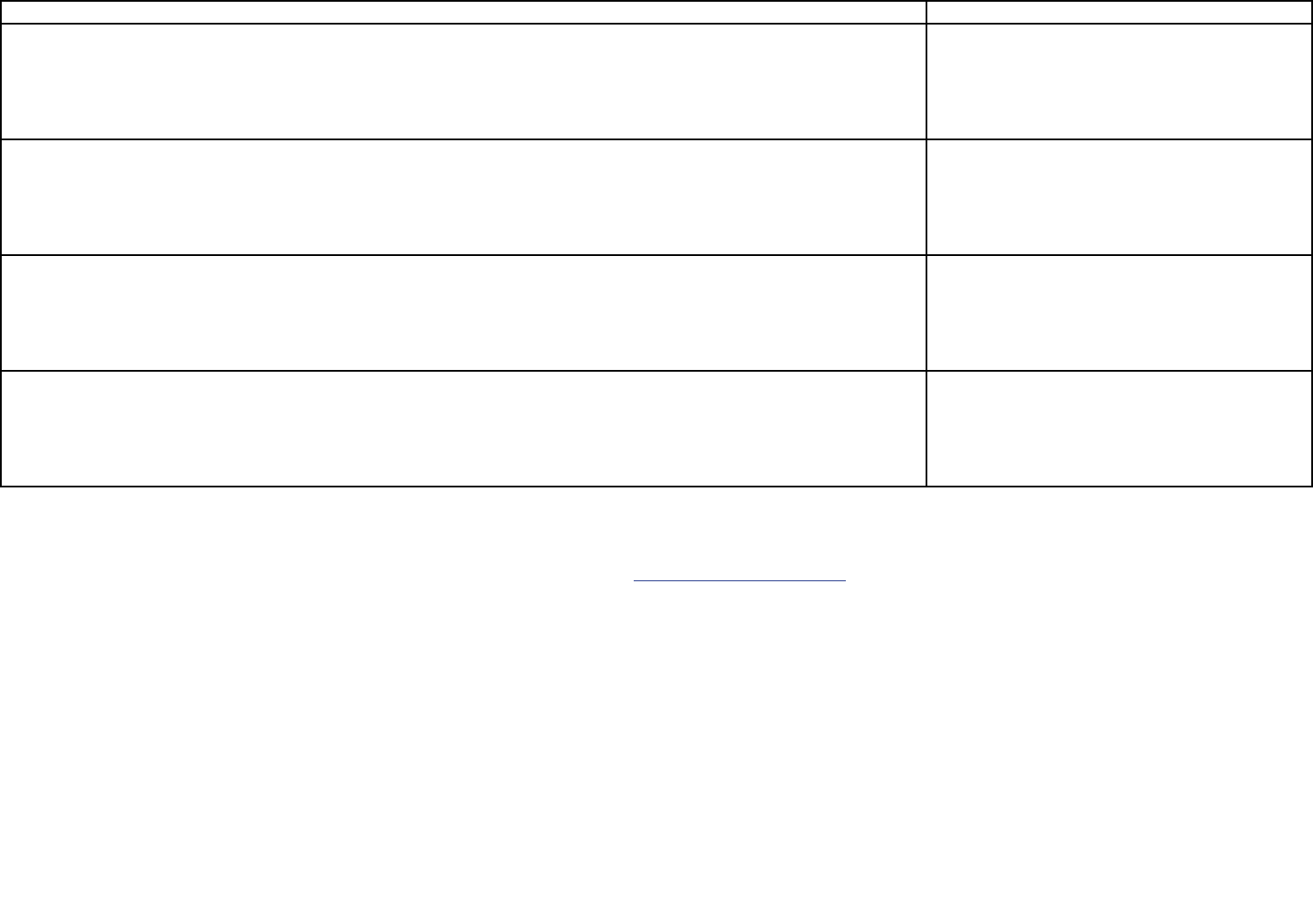
A-83
Table A.66B Perceived COVID-19 Pandemic Negative Effect on Emotional or Mental Health: Among Adolescents Aged 12 to 17; by Past Year Major Depressive Episode
(MDE) and MDE with Severe Impairment Status, Quarter 4, 2020
Perceived Negative Effect on Emotional or Mental Health
Aged 12-17
PERCEPTION OF THE COVID-19 PANDEMIC’S NEGATIVE EFFECT ON EMOTIONAL OR MENTAL HEALTH
AMONG TOTAL POPULATION
Not at all
30.8
(1.64)
A little or some
50.8
(1.66)
Quite a bit or a lot
18.3
(1.23)
PERCEPTION OF THE COVID-19 PANDEMIC’S NEGATIVE EFFECT ON EMOTIONAL OR MENTAL HEALTH
AMONG PEOPLE WITH PAST YEAR MDE
1
Not at all
10.5
(2.20)
A little or some
40.8
(3.84)
Quite a bit or a lot
48.7
(4.11)
PERCEPTION OF THE COVID-19 PANDEMIC’S NEGATIVE EFFECT ON EMOTIONAL OR MENTAL HEALTH
AMONG PEOPLE WITH PAST YEAR MDE WITH SEVERE IMPAIRMENT
1,2
Not at all
9.6
(2.39)
A little or some
35.1
(4.51)
Quite a bit or a lot
55.3
(4.95)
PERCEPTION OF THE COVID-19 PANDEMIC’S NEGATIVE EFFECT ON EMOTIONAL OR MENTAL HEALTH
AMONG PEOPLE WITH NO PAST YEAR MDE
1
Not at all
35.1
(1.93)
A little or some
52.2
(1.92)
Quite a bit or a lot
12.7
(1.17)
COVID-19 = coronavirus disease 2019.
NOTE:
Estimates shown are percentages with standard errors included in parentheses.
NOTE:
Respondents with unknown information on their perception of the COVID-19 pandemic’s negative effect on their emotional or mental health were excluded.
NOTE: Additional estimates may be found in the detailed tables for the 2020 NSDUH at https://www.samhsa.gov/data/. Measures and terms are defined in Appendix A of the 2020
detailed tables.
1
Respondents with unknown past year MDE data were excluded.
2
Respondents with unknown impairment data were excluded.
Source:
SAMHSA, Center for Behavioral Health Statistics and Quality, National Survey on Drug Use and Health, Quarter 4, 2020.
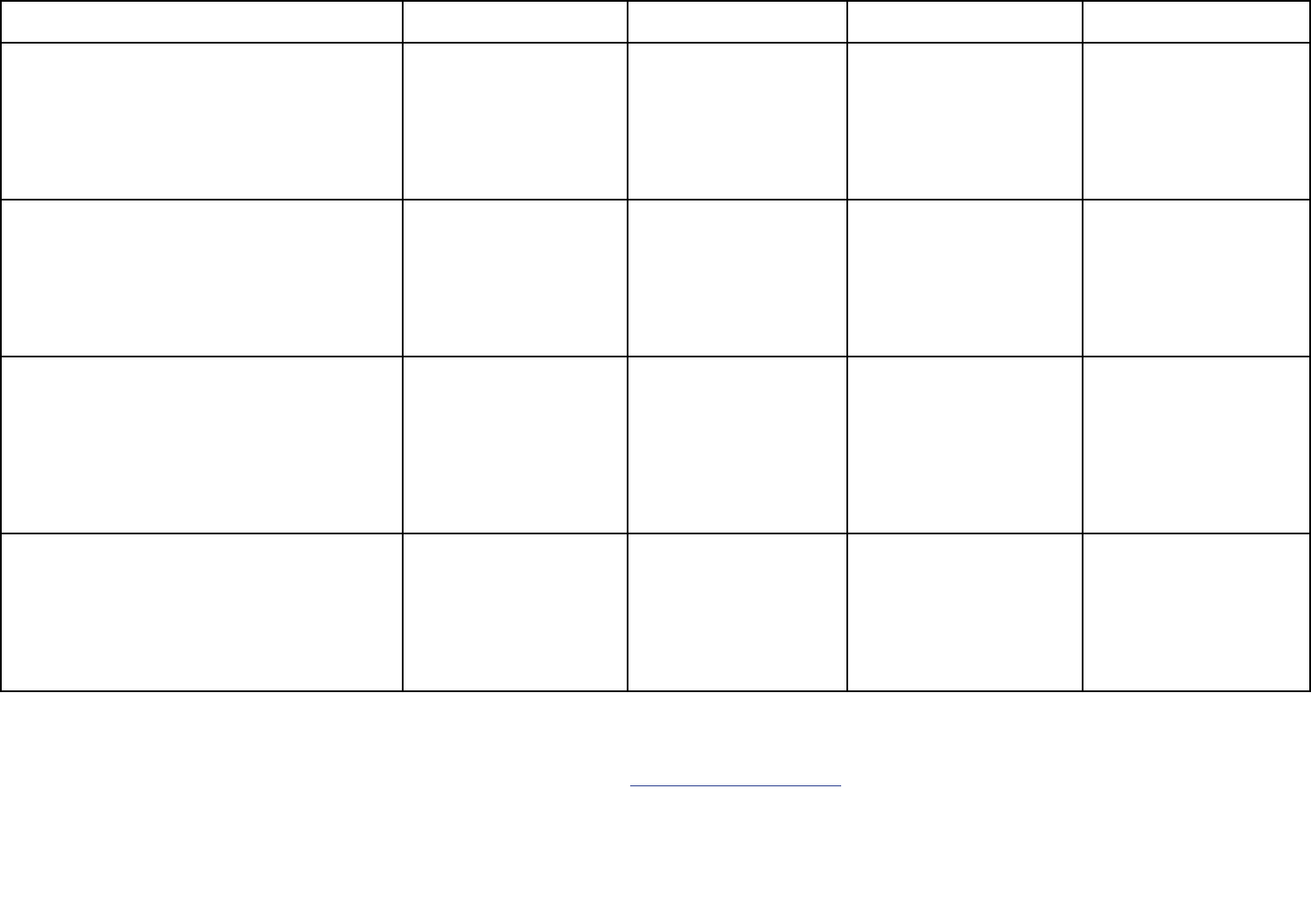
A-84
Table A.67B Perceived COVID-19 Pandemic Negative Effect on Emotional or Mental Health: Among Adults Aged 18 or Older; by Age Group and Past Year Level of Mental
Illness, Quarter 4, 2020
Perceived Negative Effect on Emotional or Mental
Health
1
Aged 18 or Older Aged 18-25 Aged 26-49 Aged 50 or Older
PERCEPTION OF THE COVID-19 PANDEMIC’S
NEGATIVE EFFECT ON EMOTIONAL OR
MENTAL HEALTH AMONG TOTAL
POPULATION
Not at all 27.0 (0.67) 28.4 (1.26) 25.7 (0.90) 27.7 (1.18)
A little or some 54.7 (0.71) 48.5 (1.28) 52.9 (0.95) 58.0 (1.26)
Quite a bit or a lot 18.3 (0.57) 23.2 (0.96) 21.4 (0.79) 14.2 (0.96)
PERCEPTION OF THE COVID-19 PANDEMIC’S
NEGATIVE EFFECT ON EMOTIONAL OR
MENTAL HEALTH AMONG PEOPLE WITH
ANY MENTAL ILLNESS IN THE PAST YEAR
Not at all 10.4 (0.94) 9.3 (1.24) 10.0 (1.14) 11.4 (2.21)
A little or some 44.5 (1.45) 42.3 (2.18) 44.5 (1.67) 45.5 (3.42)
Quite a bit or a lot 45.2 (1.49) 48.5 (2.14) 45.5 (1.70) 43.0 (3.49)
PERCEPTION OF THE COVID-19 PANDEMIC’S
NEGATIVE EFFECT ON EMOTIONAL OR
MENTAL HEALTH AMONG PEOPLE WITH
SERIOUS MENTAL ILLNESS IN THE PAST
YEAR
Not at all 9.3 (1.55) 8.3 (1.74) 10.6 (2.31) 7.9 (2.99)
A little or some 35.8 (2.91) 38.9 (3.68) 34.8 (3.05) * (*)
Quite a bit or a lot 54.9 (2.93) 52.7 (3.82) 54.6 (3.18) * (*)
PERCEPTION OF THE COVID-19 PANDEMIC’S
NEGATIVE EFFECT ON EMOTIONAL OR
MENTAL HEALTH AMONG PEOPLE WITH NO
MENTAL ILLNESS IN THE PAST YEAR
Not at all 31.7 (0.80) 35.9 (1.58) 31.5 (1.14) 30.7 (1.30)
A little or some 57.6 (0.81) 50.9 (1.53) 56.0 (1.16) 60.3 (1.35)
Quite a bit or a lot 10.8 (0.54) 13.2 (0.96) 12.5 (0.76) 8.9 (0.87)
* = low precision; COVID-19 = coronavirus disease 2019.
NOTE:
Estimates shown are percentages with standard errors included in parentheses.
NOTE:
Estimates in this table exclude a subset of respondents who did not complete the questionnaire. The analysis weights and estimates were adjusted for the reduced sample size. See
the 2020 National Survey on Drug Use and Health: Methodological Summary and Definitions for details.
NOTE: Additional estimates may be found in the detailed tables for the 2020 NSDUH at https://www.samhsa.gov/data/. Measures and terms are defined in Appendix A of the 2020
detailed tables.
1
Respondents with unknown information on their perception of the COVID-19 pandemic’s negative effect on their emotional or mental health were excluded.
Source:
SAMHSA, Center for Behavioral Health Statistics and Quality, National Survey on Drug Use and Health, Quarter 4, 2020.
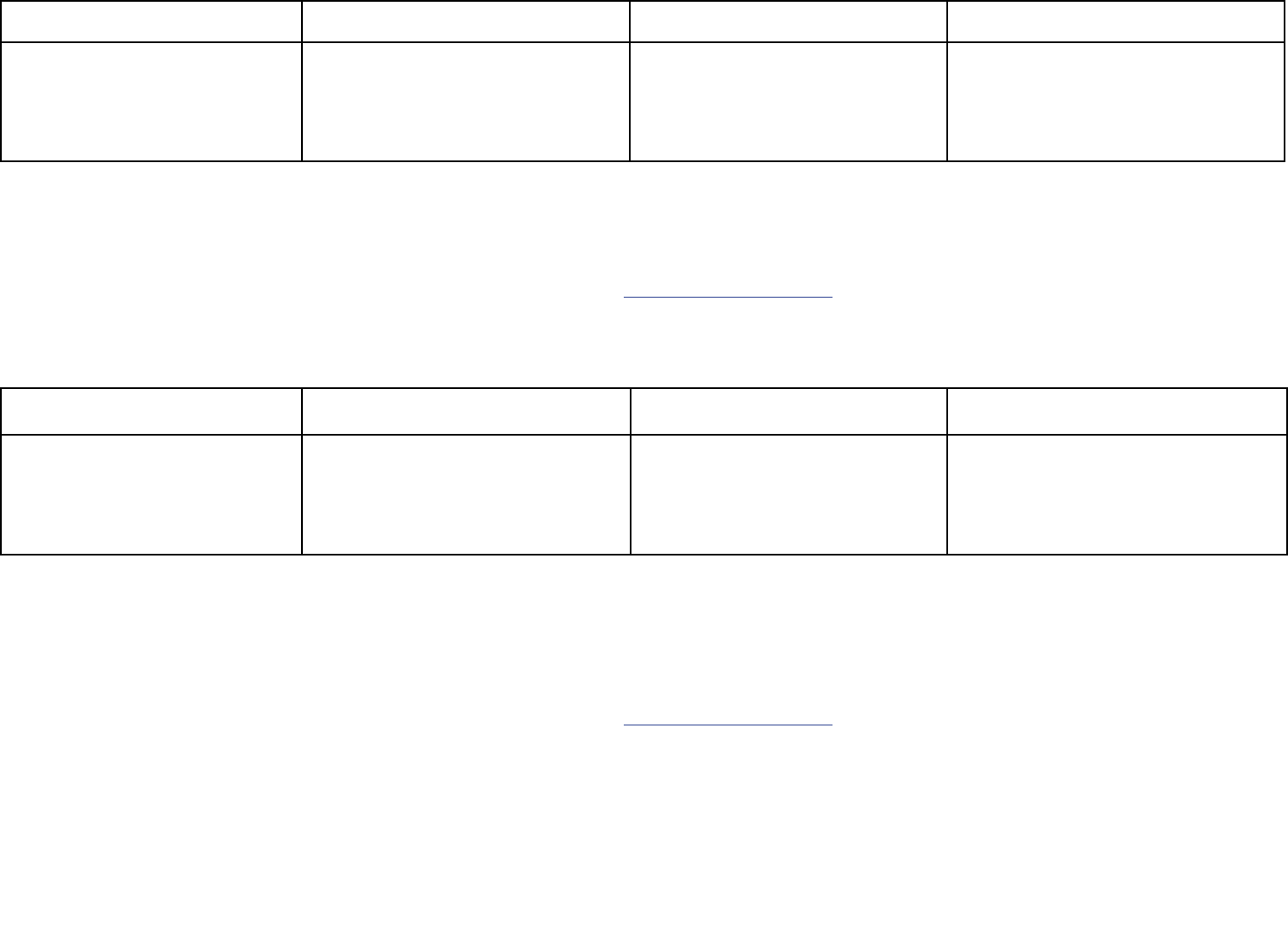
A-85
Table A.68B Perceived COVID-19 Pandemic Effect on Alcohol Use: Among Past Year Alcohol Users Aged 12 or Older; by Age Group, Quarter 4, 2020
Demographic Characteristic
Used Alcohol a Little Less or Much Less
than before the COVID-19 Pandemic
Used Alcohol about the Same
as before the COVID-19 Pandemic
Used Alcohol a Little More or Much More
than before the COVID-19 Pandemic
TOTAL 25.2 (0.77) 59.4 (0.84) 15.4 (0.57)
AGE GROUP
12-17 38.7 (4.87) 46.8 (4.67) 14.5 (2.70)
18-25 29.3 (1.43) 52.4 (1.54) 18.2 (1.15)
26 or Older 24.3 (0.88) 60.6 (0.95) 15.0 (0.63)
COVID-19 = coronavirus disease 2019.
NOTE:
Estimates shown are percentages with standard errors included in parentheses.
NOTE:
Estimates in this table exclude a subset of respondents who did not complete the questionnaire. The analysis weights and estimates were adjusted for the reduced sample size. See
the 2020 National Survey on Drug Use and Health: Methodological Summary and Definitions for details.
NOTE:
Respondents with unknown information on their perception of the COVID-19 pandemic’s effect on their alcohol use were excluded.
NOTE: Additional estimates may be found in the detailed tables for the 2020 NSDUH at https://www.samhsa.gov/data/. Measures and terms are defined in Appendix A of the 2020
detailed tables.
Source:
SAMHSA, Center for Behavioral Health Statistics and Quality, National Survey on Drug Use and Health, Quarter 4, 2020.
Table A.69B Perceived COVID-19 Pandemic Effect on Drug Use: Among Past Year Users of Drugs Other than Alcohol Aged 12 or Older; by Age Group, Quarter 4, 2020
Demographic Characteristic
Used Drugs a Little Less or Much Less
than before the COVID-19 Pandemic
Used Drugs about the Same
as before the COVID-19 Pandemic
Used Drugs a Little More or Much More
than before the COVID-19 Pandemic
TOTAL
32.2 (1.13) 57.5 (1.14) 10.3 (0.61)
AGE GROUP
12-17
46.4 (4.84) 38.4 (4.19) 15.2 (2.95)
18-25
31.8 (1.88) 49.5 (1.81) 18.7 (1.59)
26 or Older
31.5 (1.28) 59.7 (1.32) 8.8 (0.64)
COVID-19 = coronavirus disease 2019.
NOTE:
Estimates shown are percentages with standard errors included in parentheses.
NOTE:
Estimates in this table exclude a subset of respondents who did not complete the questionnaire. The analysis weights and estimates were adjusted for the reduced sample size. See
the 2020 National Survey on Drug Use and Health: Methodological Summary and Definitions for details.
NOTE:
Respondents with unknown information on their perception of the COVID-19 pandemic’s effect on their drug use were excluded.
NOTE:
Drugs other than alcohol for these data include the use of marijuana, cocaine (including crack), heroin, hallucinogens, inhalants, or methamphetamine in the past year or any use
(i.e., not necessarily misuse) of prescription pain relievers, tranquilizers, stimulants, or sedatives in the past year.
NOTE: Additional estimates may be found in the detailed tables for the 2020 NSDUH at https://www.samhsa.gov/data/. Measures and terms are defined in Appendix A of the 2020
detailed tables.
Source:
SAMHSA, Center for Behavioral Health Statistics and Quality, National Survey on Drug Use and Health, Quarter 4, 2020.
.
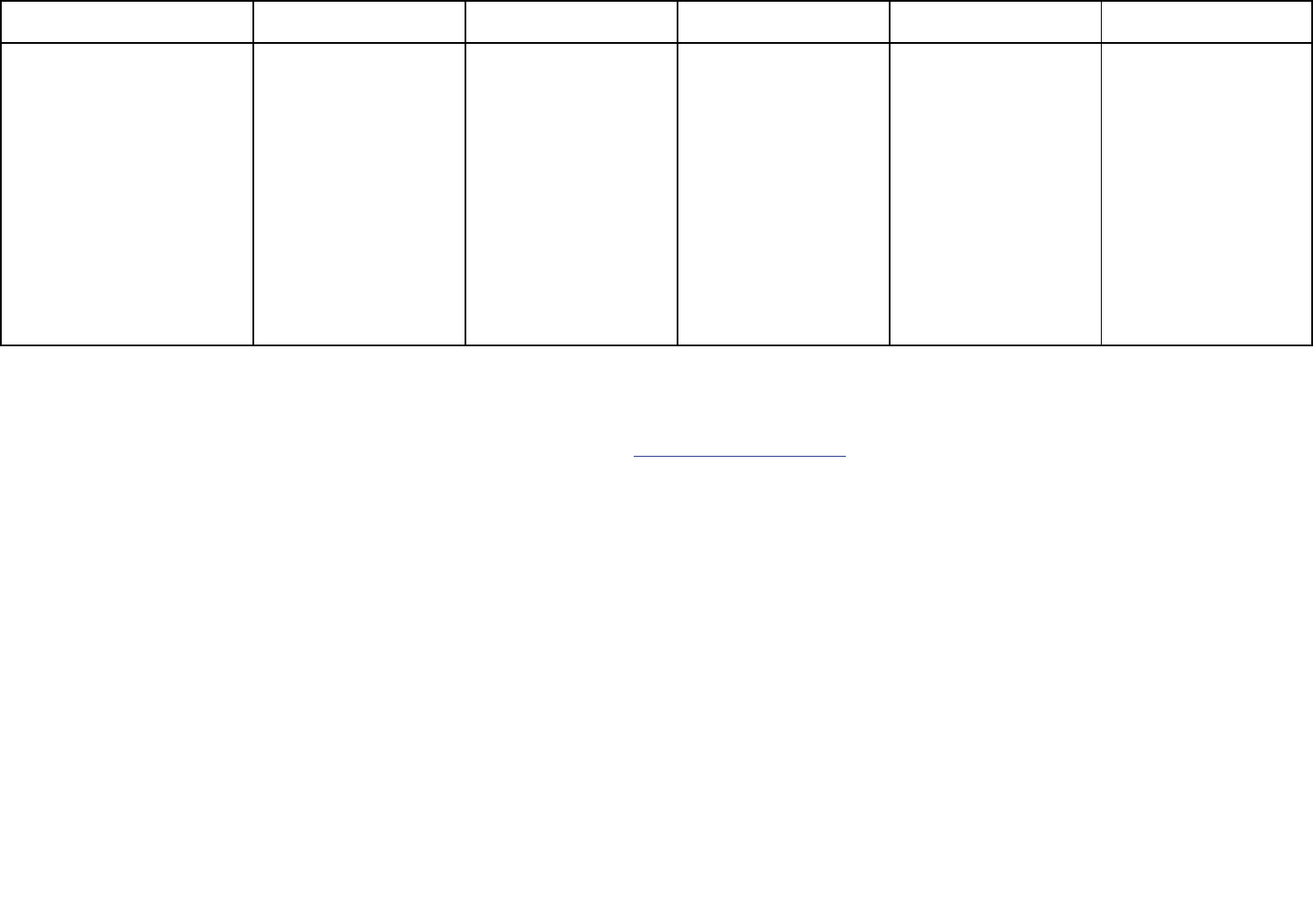
A-86
Table A.70B Perceived COVID-19 Pandemic Effect on Access to Mental Health Services: Among Adults Aged 18 or Older Who Received Mental Health Services in the Past
Year (Including Virtual Services); by Age Group, Quarter 4, 2020
Perceived Effect on Access to
Mental Health Services
1,2
Aged 18 or Older Aged 18-25 Aged 26 or Older Aged 26-49 Aged 50 or Older
PERCEIVED EFFECT
AMONG PEOPLE WHO
RECEIVED MENTAL
HEALTH SERVICES IN THE
PAST YEAR (INCLUDING
VIRTUAL SERVICES)
3
Appointments moved from
in person to telehealth 58.3 (1.48) 62.7 (2.37) 57.4 (1.69) 63.7 (1.69) 49.8 (3.18)
Delays or cancellations in
appointments 38.7 (1.44) 38.6 (2.40) 38.7 (1.69) 38.7 (1.82) 38.7 (3.07)
Delays in getting prescriptions 16.0 (1.19) 14.8 (1.60) 16.2 (1.39) 18.0 (1.43) 14.0 (2.35)
Unable to access needed care
resulting in moderate to
severe impact on health 10.7 (0.90) 9.7 (1.36) 10.9 (1.02) 13.7 (1.46) 7.5 (1.56)
COVID-19 = coronavirus disease 2019.
NOTE:
Estimates shown are percentages with standard errors included in parentheses.
NOTE:
Estimates in this table exclude a subset of respondents who did not complete the questionnaire. The analysis weights and estimates were adjusted for the reduced sample size. See
the 2020 National Survey on Drug Use and Health: Methodological Summary and Definitions for details.
NOTE: Additional estimates may be found in the detailed tables for the 2020 NSDUH at https://www.samhsa.gov/data/. Measures and terms are defined in Appendix A of the 2020
detailed tables.
1
Respondents could report that the questions about access to mental health services did not apply to them. Respondents who reported that the respective question did not apply to them
were classified as not having experienced that effect.
2
Respondents with unknown information on their perception of the COVID-19 pandemic’s effect on mental health services were excluded.
3
Mental Health Services (Including Virtual Services) for adults includes inpatient treatment/counseling, outpatient treatment/counseling, virtual mental health services, or use of
prescription medication for problems with emotions, nerves, or mental health. Respondents with unknown mental health service information were excluded.
Source:
SAMHSA, Center for Behavioral Health Statistics and Quality, National Survey on Drug Use and Health, Quarter 4, 2020.
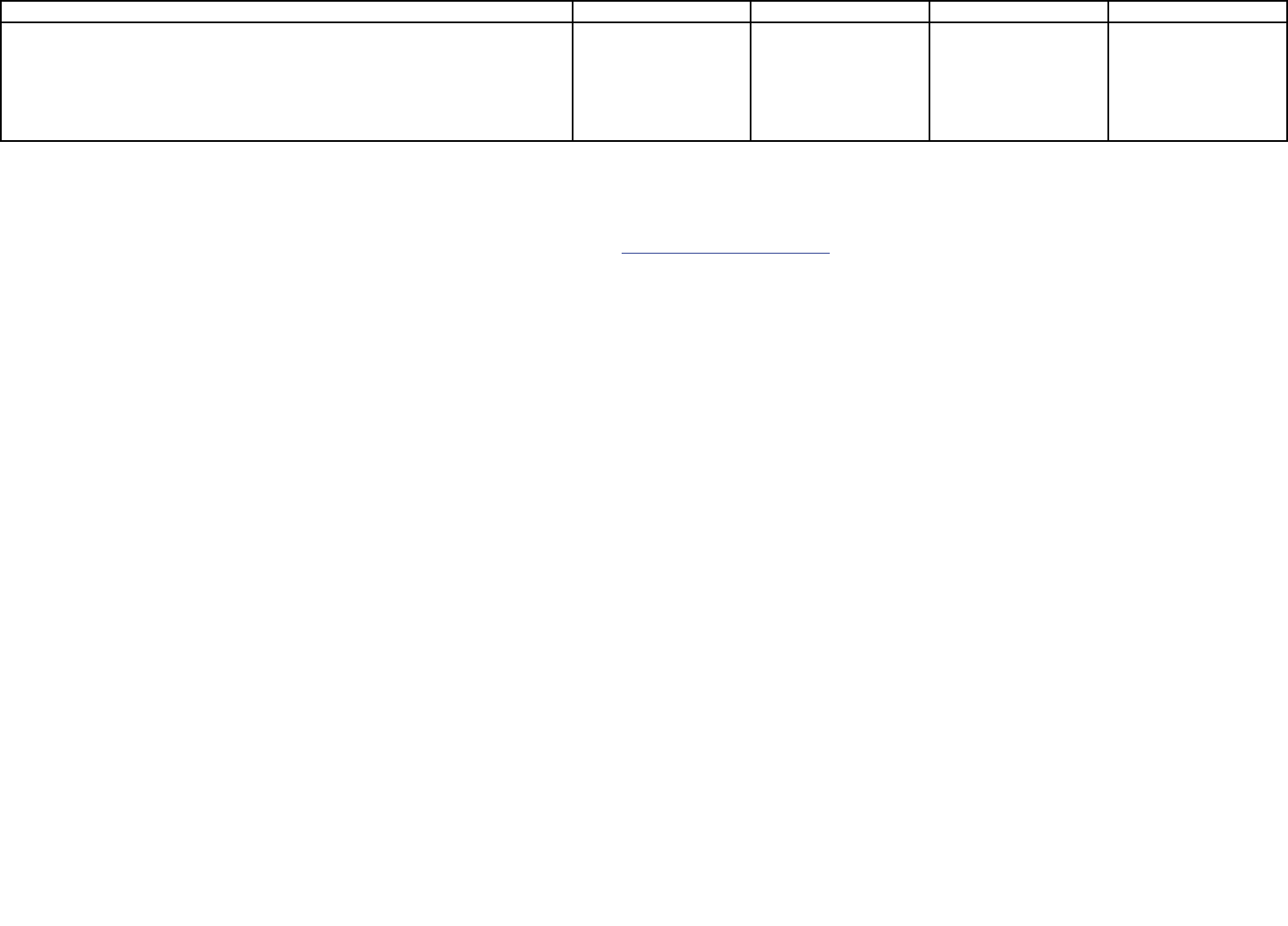
A-87
Table A.71B Perceived COVID-19 Pandemic Effect on Access to Medical Care: Among People Aged 12 or Older; by Age Group, Quarter 4, 2020
Perceived Effect on Access to Medical Care Aged 12 or Older Aged 12-17 Aged 18-25 Aged 26 or Older
PERCEIVED EFFECT AMONG TOTAL POPULATION
1,2
Appointments moved from in person to telehealth 31.3 (0.66) 15.1 (1.28) 24.4 (1.10) 34.2 (0.80)
Delays or cancellations in appointments or preventive services 29.4 (0.62) 19.3 (1.31) 20.2 (0.98) 32.0 (0.75)
Delays in getting prescriptions 8.9 (0.42) 5.4 (0.84) 7.8 (0.77) 9.4 (0.51)
Unable to access needed care resulting in moderate to severe impact on health 5.6 (0.33) 1.4 (0.34) 5.3 (0.59) 6.1 (0.39)
COVID-19 = coronavirus disease 2019.
NOTE:
Estimates shown are percentages with standard errors included in parentheses.
NOTE:
Estimates in this table exclude a subset of respondents who did not complete the questionnaire. The analysis weights and estimates were adjusted for the reduced sample size. See
the 2020 National Survey on Drug Use and Health: Methodological Summary and Definitions for details.
NOTE: Additional estimates may be found in the detailed tables for the 2020 NSDUH at https://www.samhsa.gov/data/. Measures and terms are defined in Appendix A of the 2020
detailed tables.
1
Respondents could report that the questions about access to medical care did not apply to them. Respondents who reported that the respective question did not apply to them were
classified as not having experienced that effect.
2
Respondents with unknown information on their perception of the COVID-19 pandemic’s effect on their medical care were excluded.
Source:
SAMHSA, Center for Behavioral Health Statistics and Quality, National Survey on Drug Use and Health, Quarter 4, 2020.
is page intentionally left blank
is page intentionally left blank
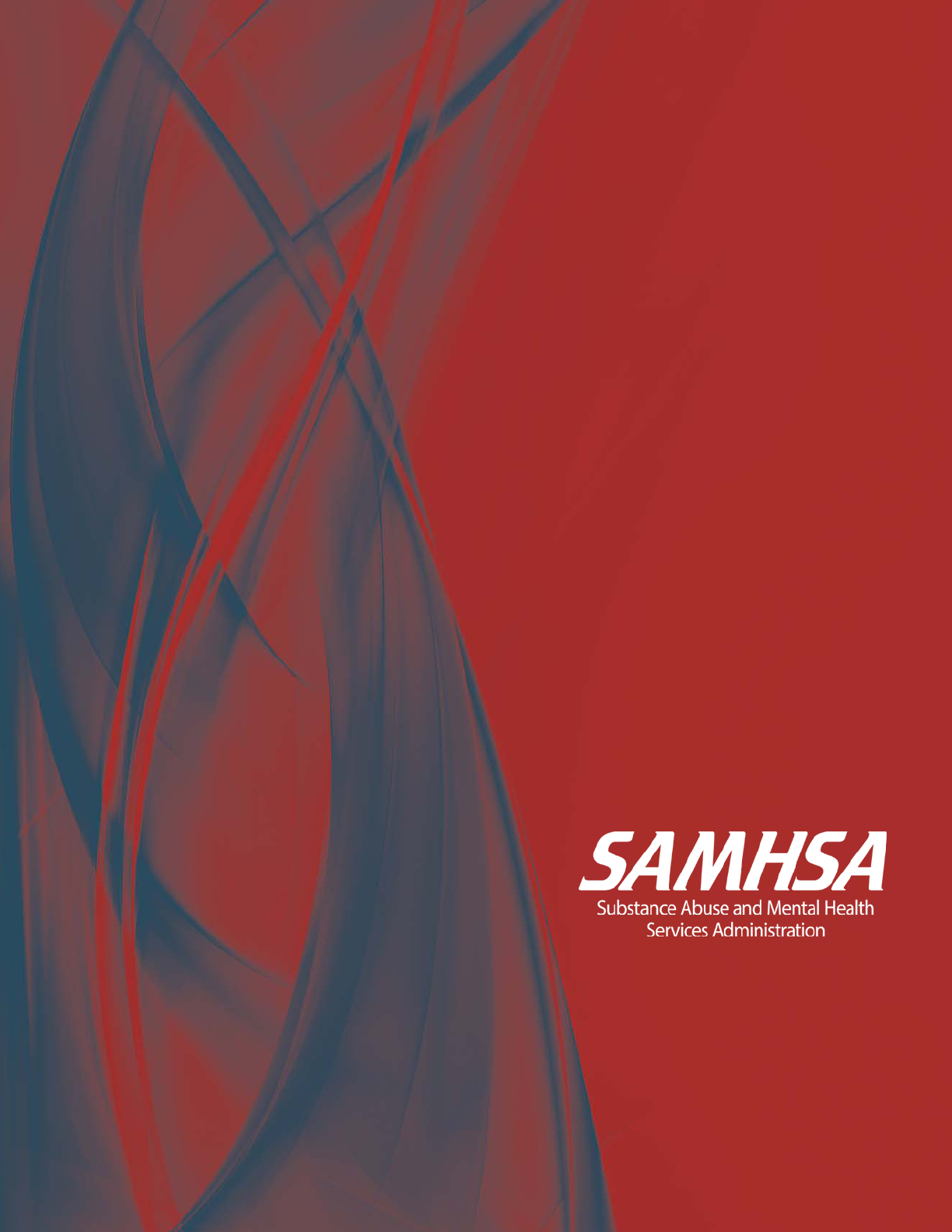
[back cover]
SAMHSA’s mission is to reduce the
impact of substance abuse and mental
illness on America’s communities.
1-877-SAMHSA-7 (1-877-726-4727)
1-800-487-4889 (TDD)
www.samhsa.gov
HHS Publication No. PEP21-07-01-003
2021
U.S. Department of Health and
Human Services
Substance Abuse and Mental Health
Services Administration
Center for Behavioral Health
Statistics and Quality
